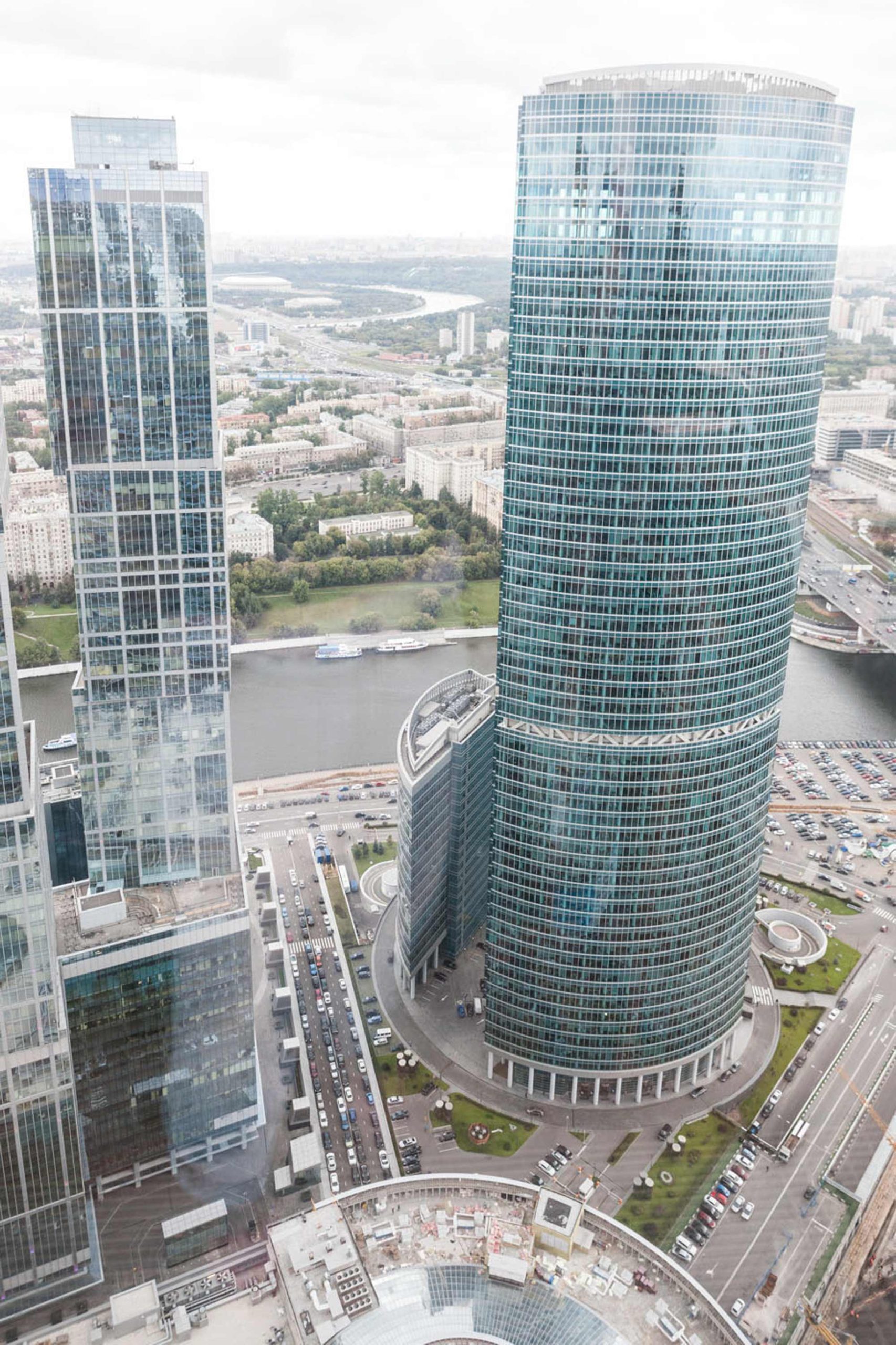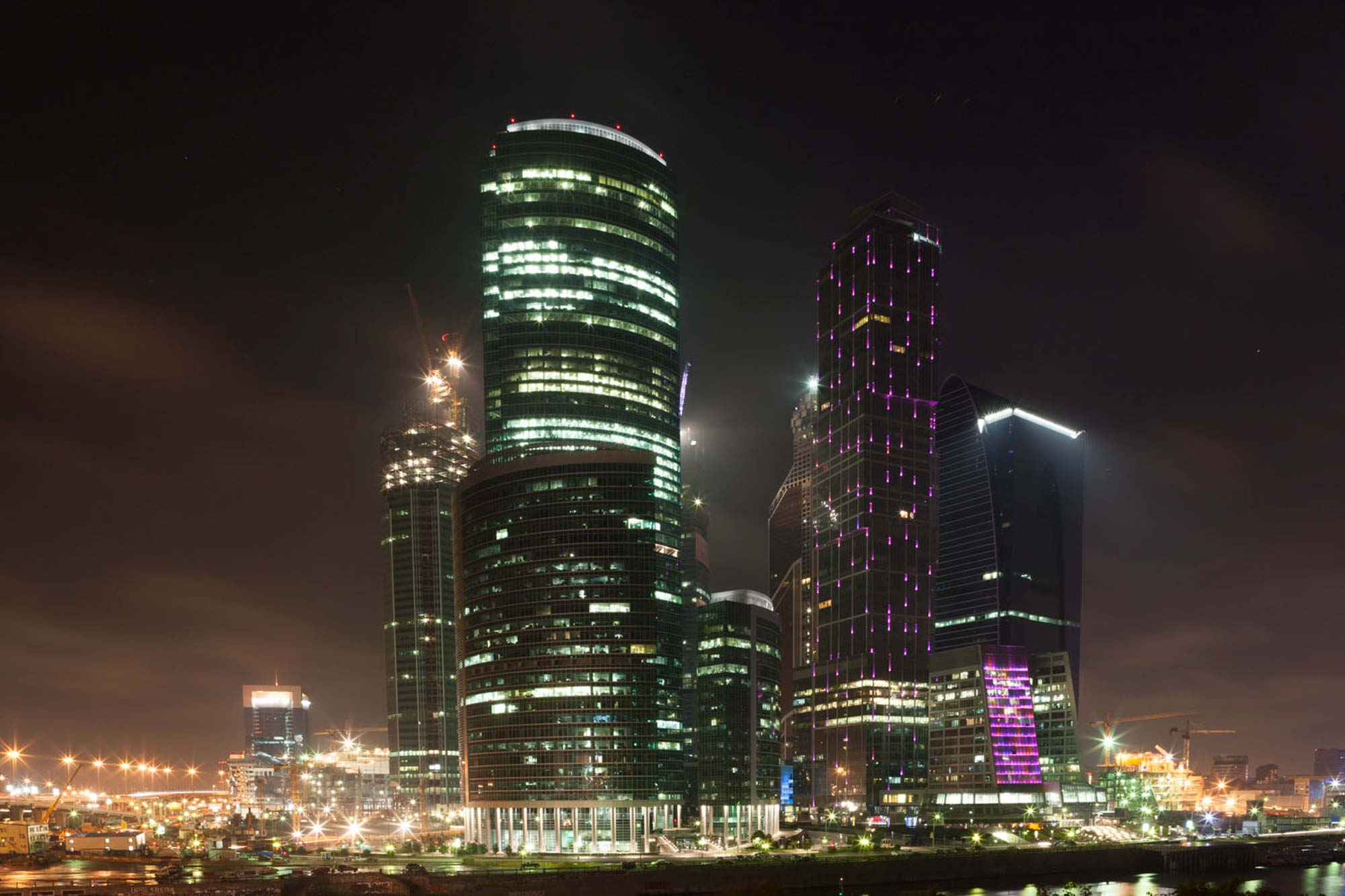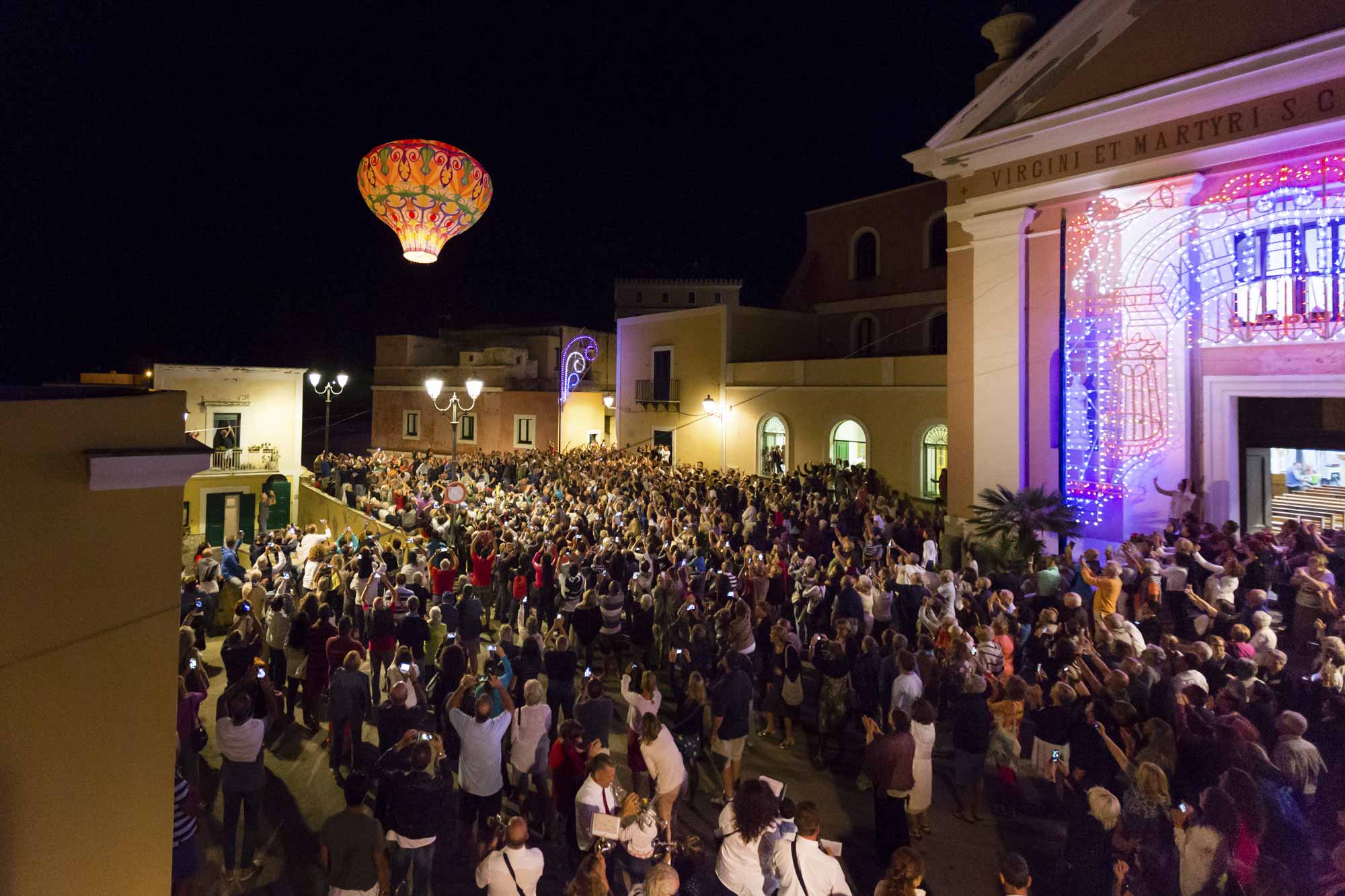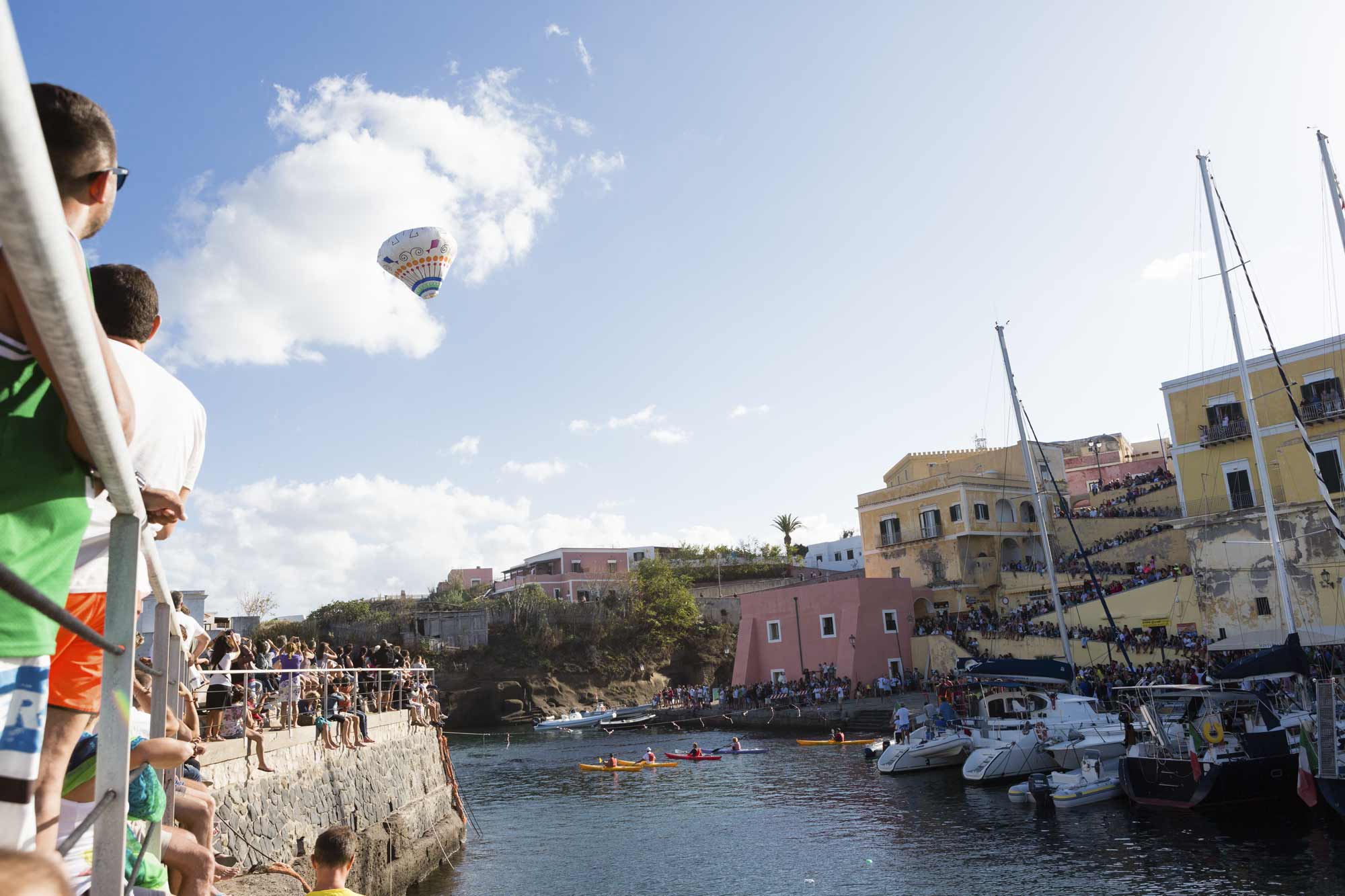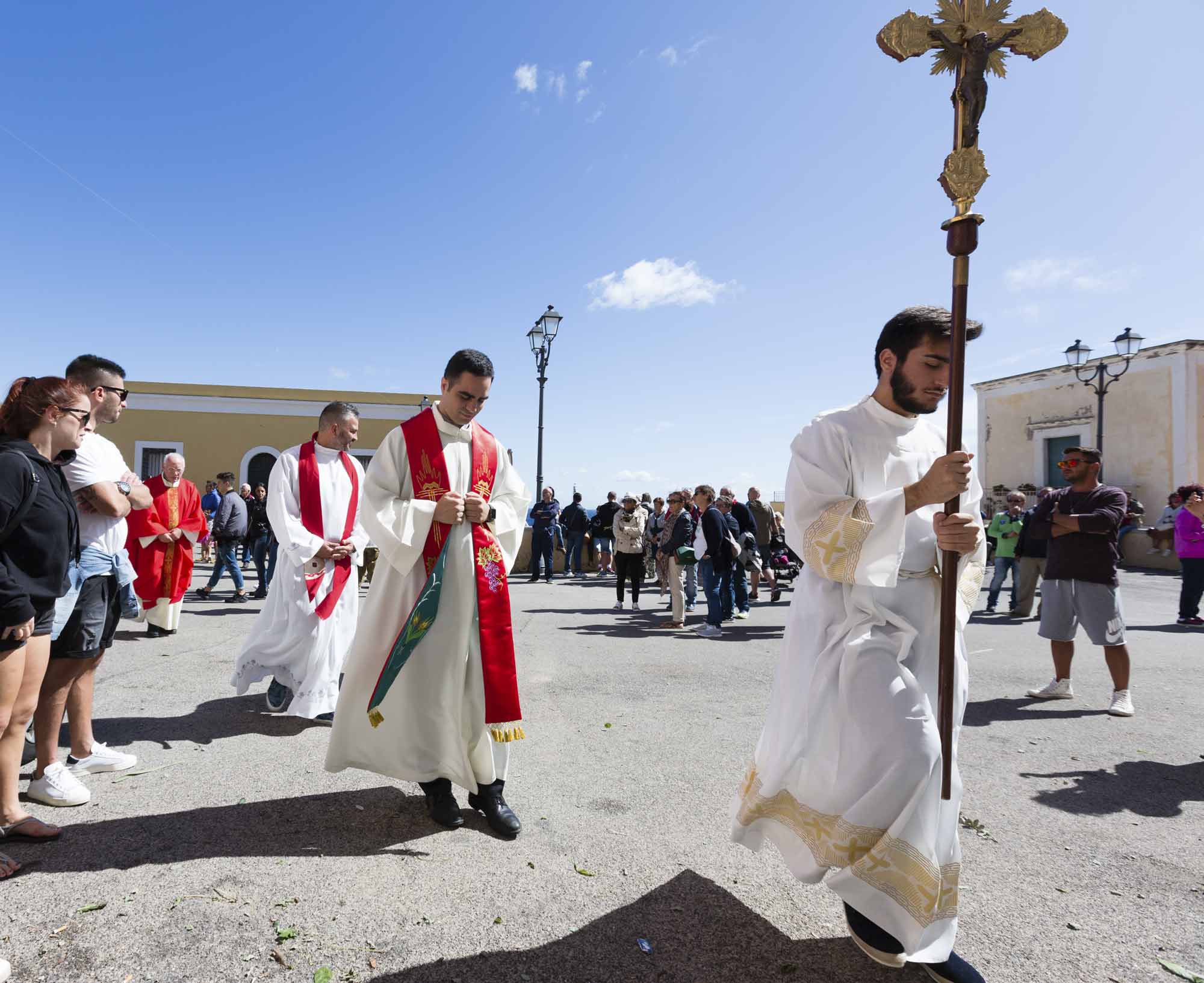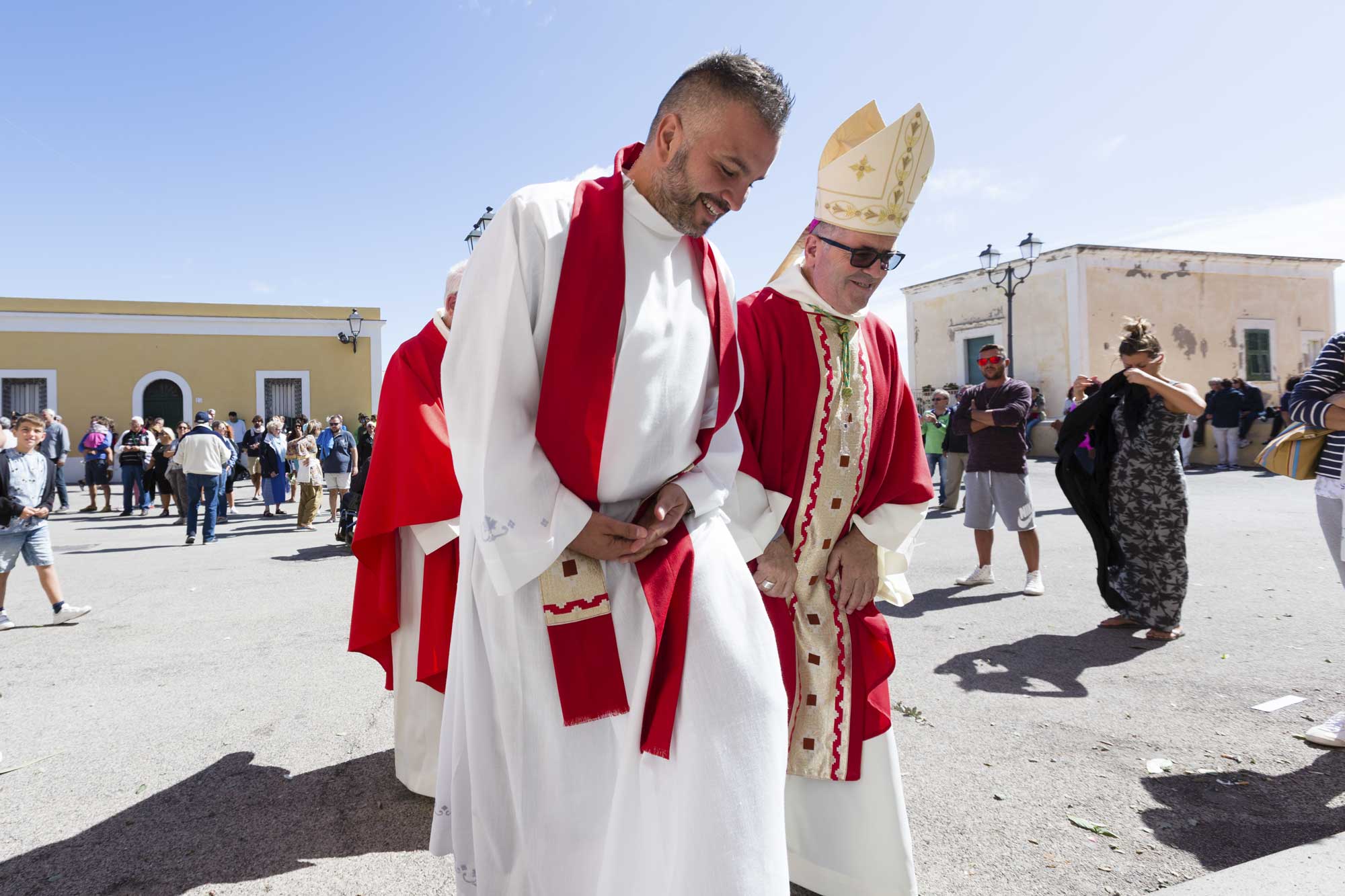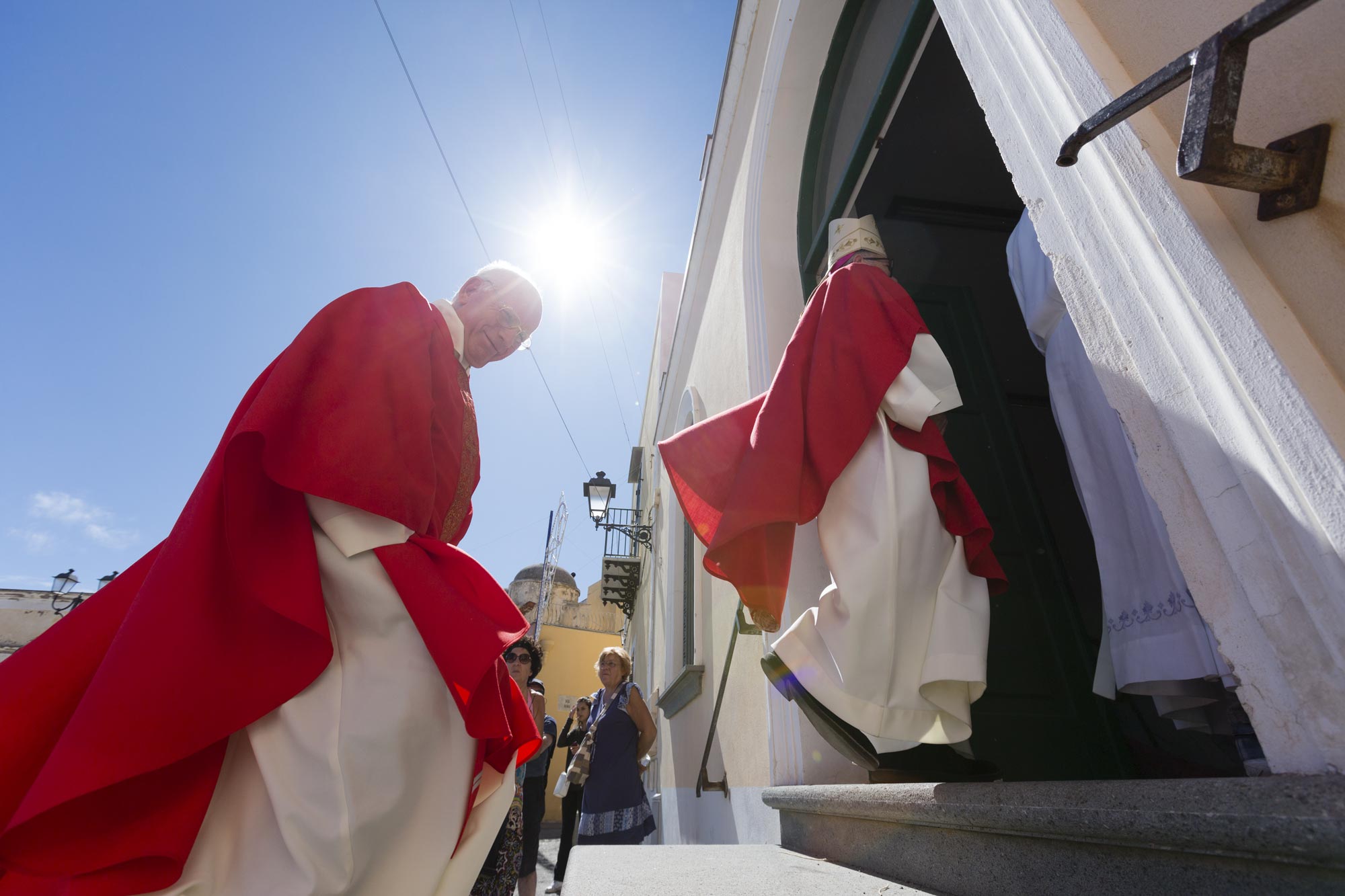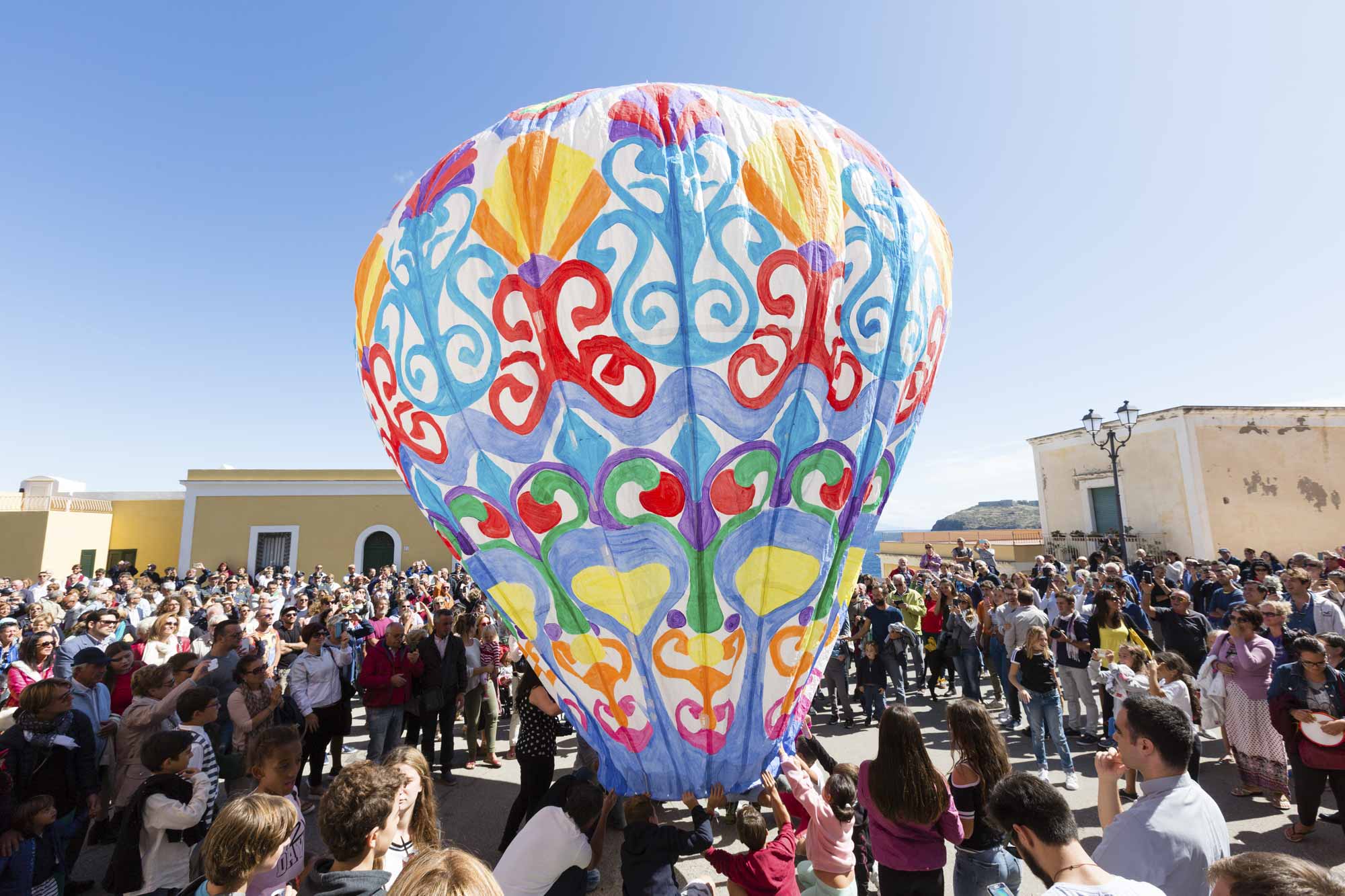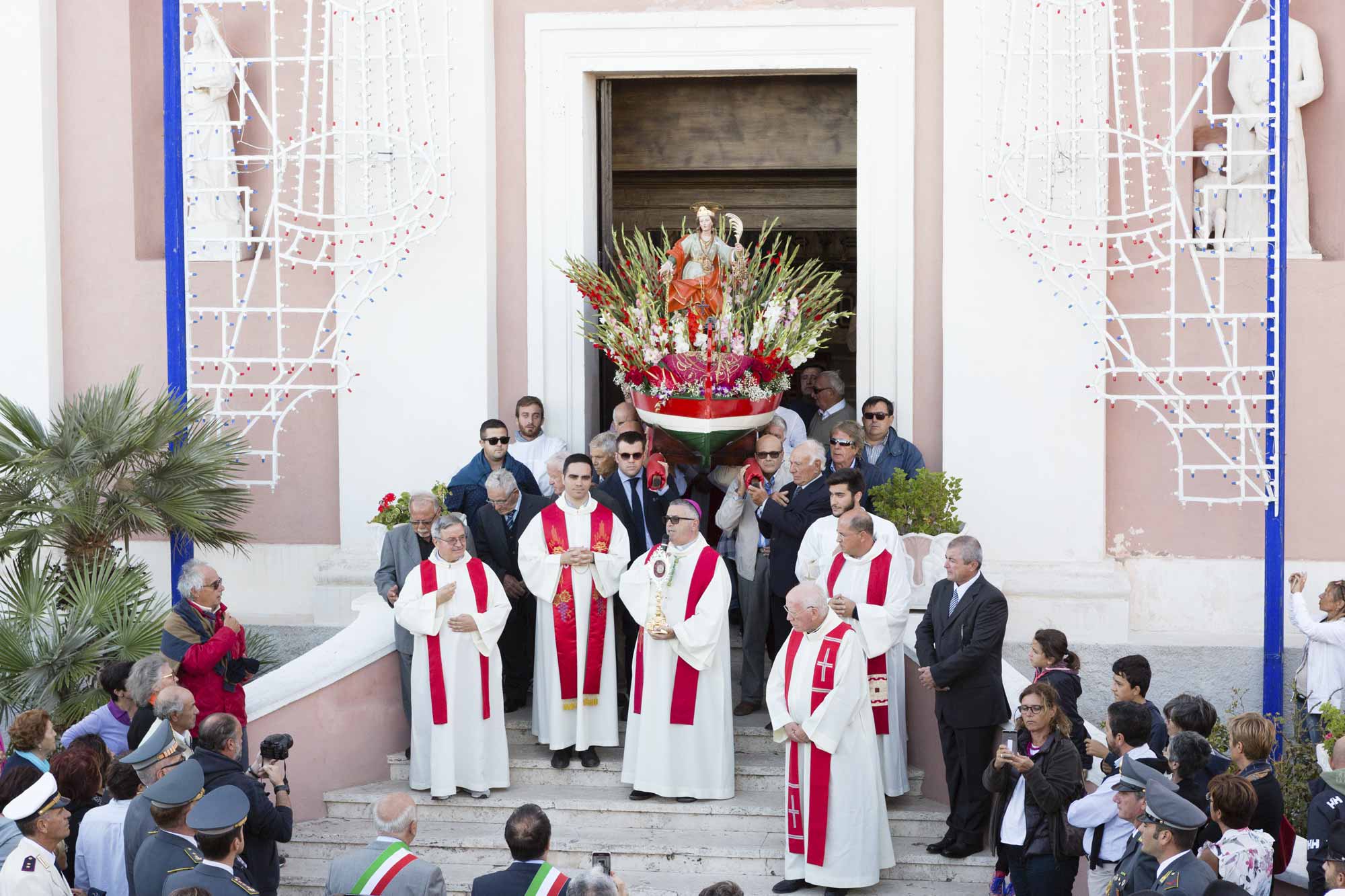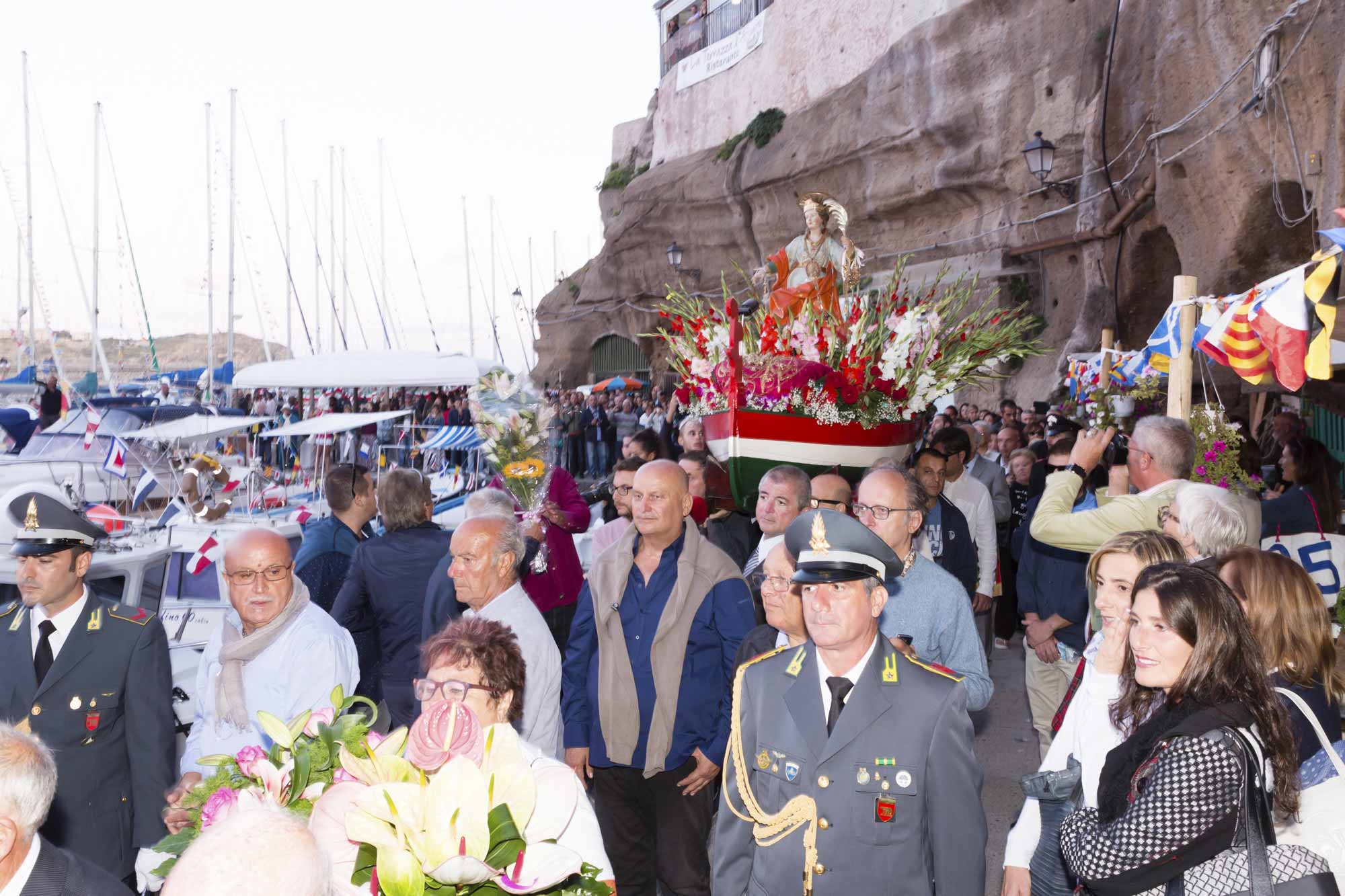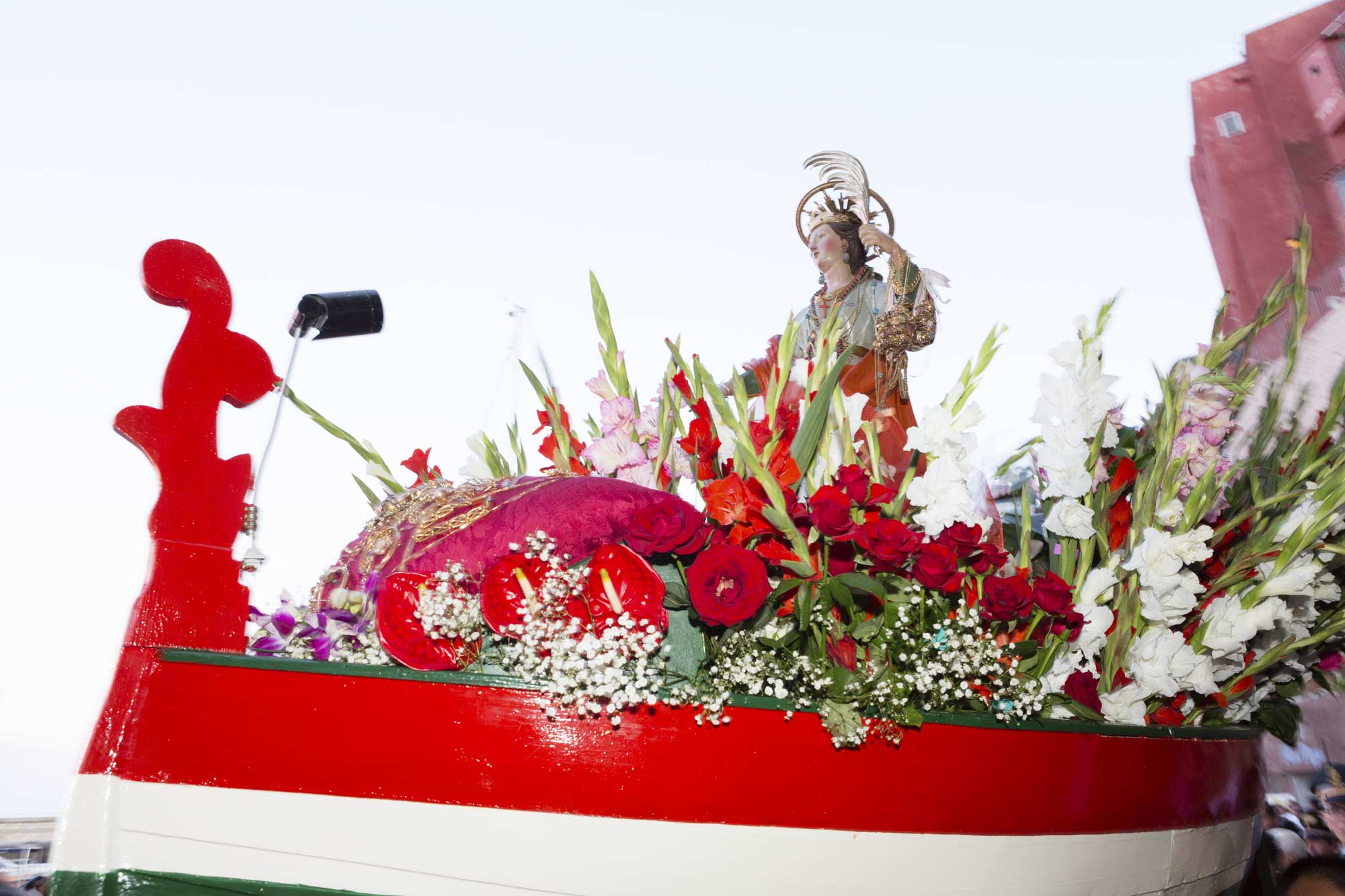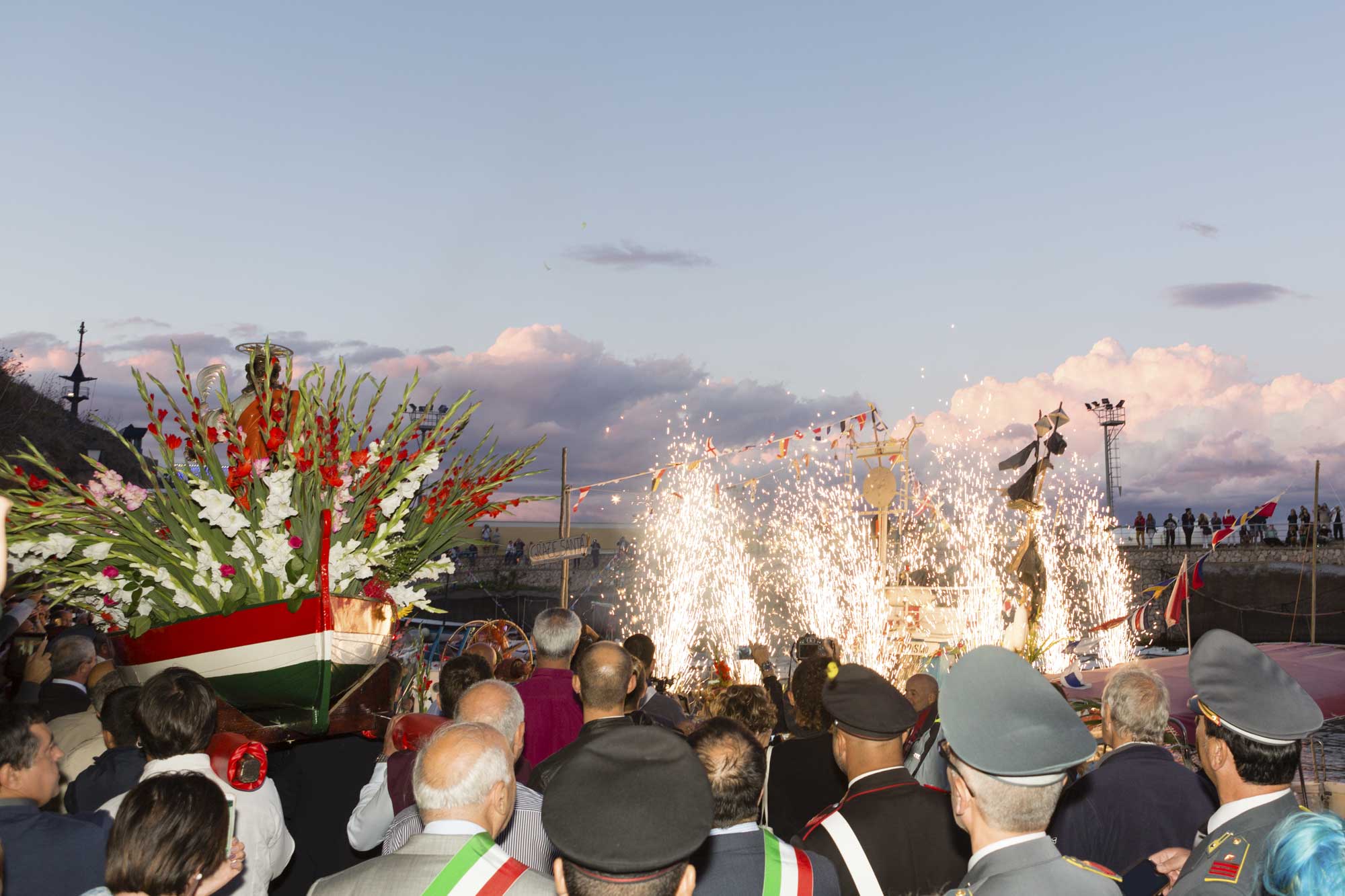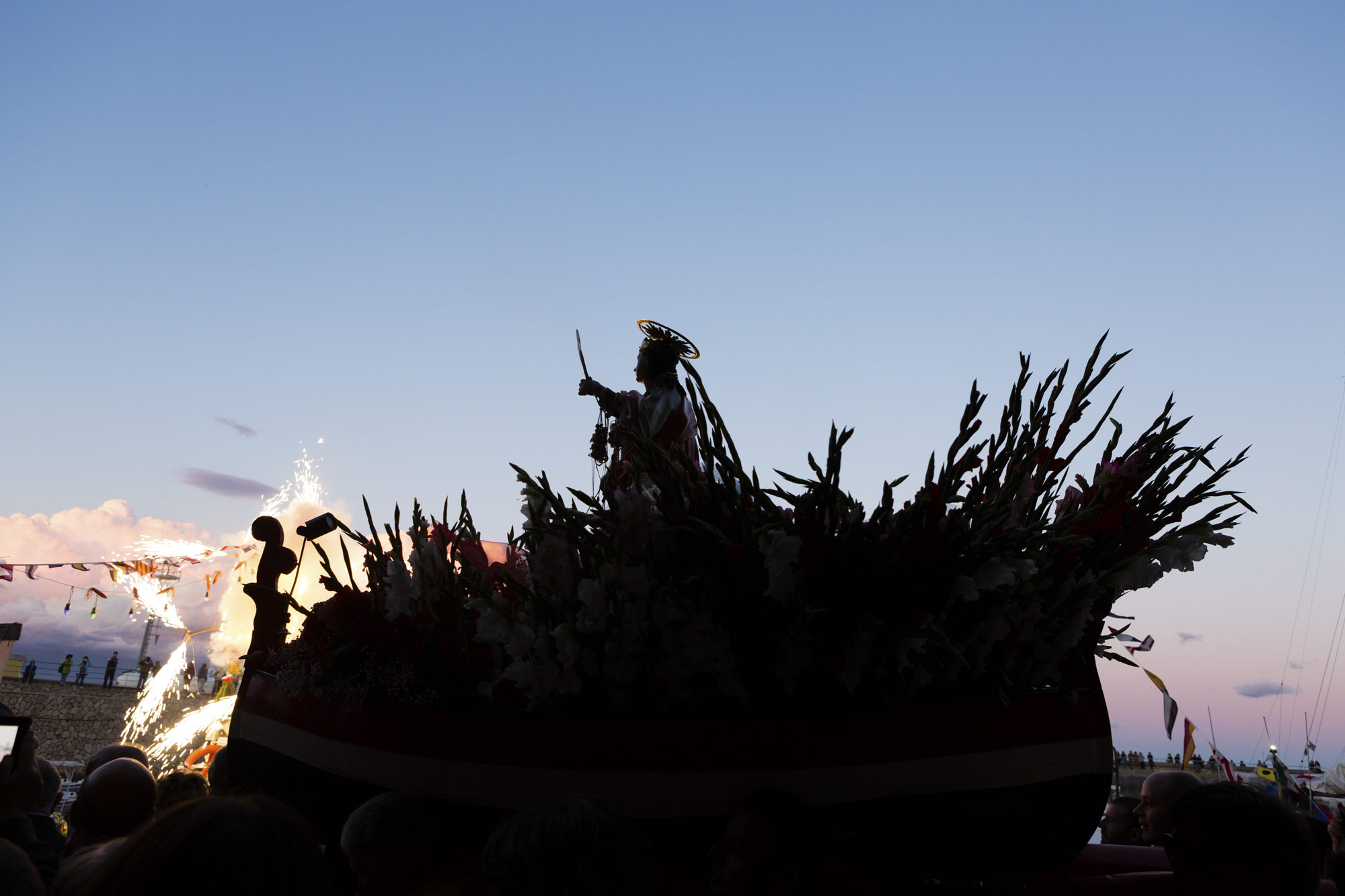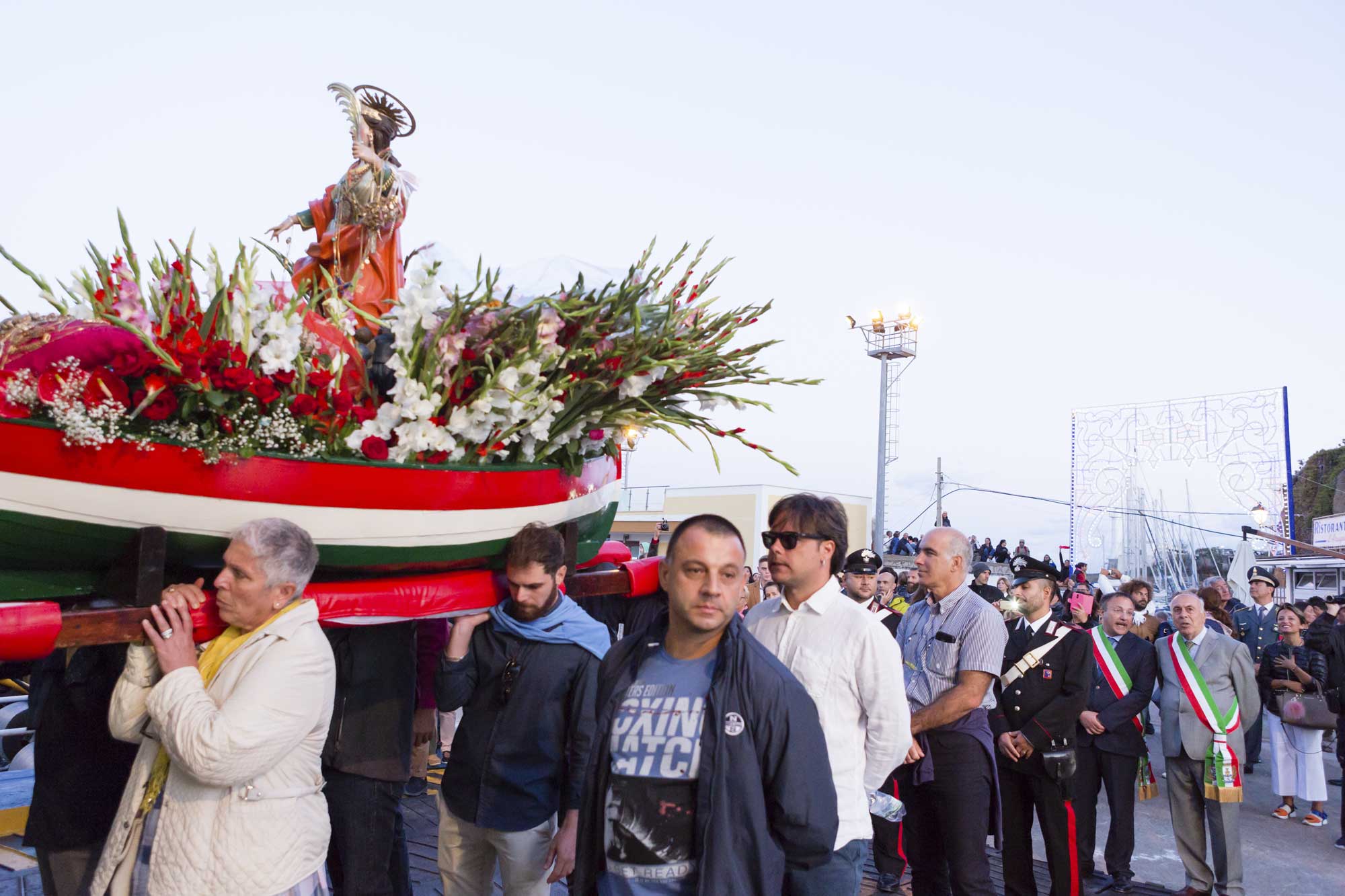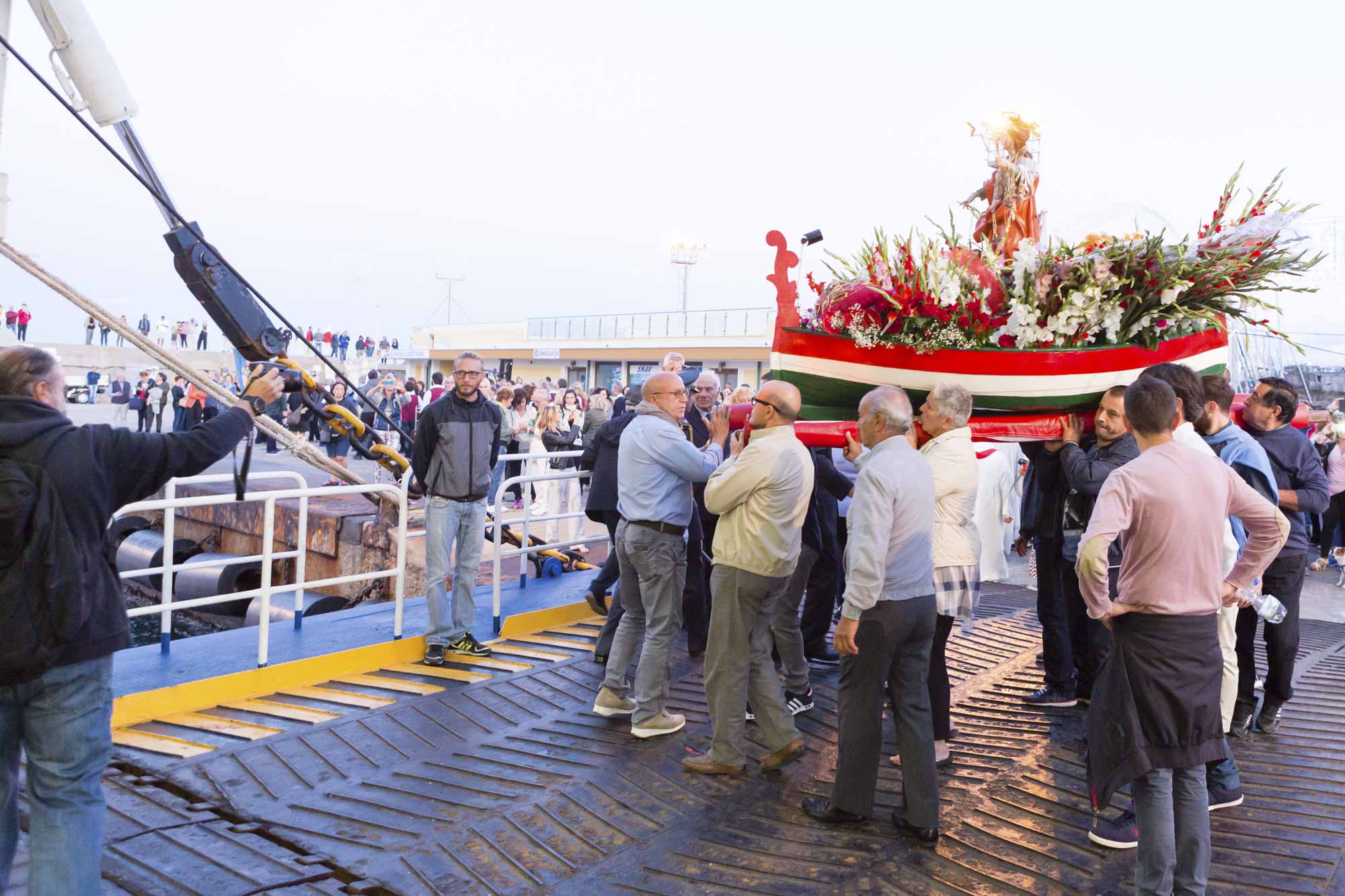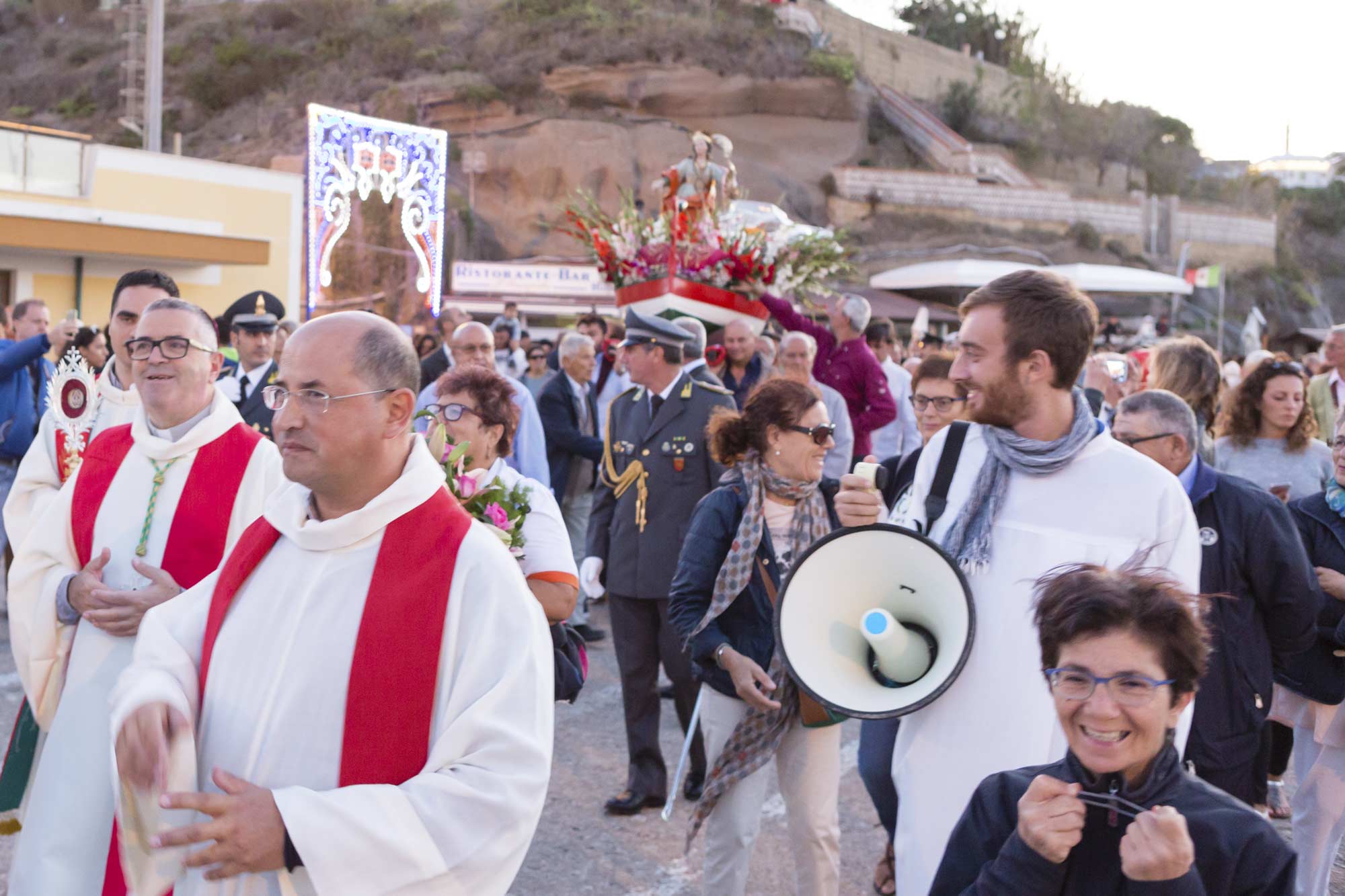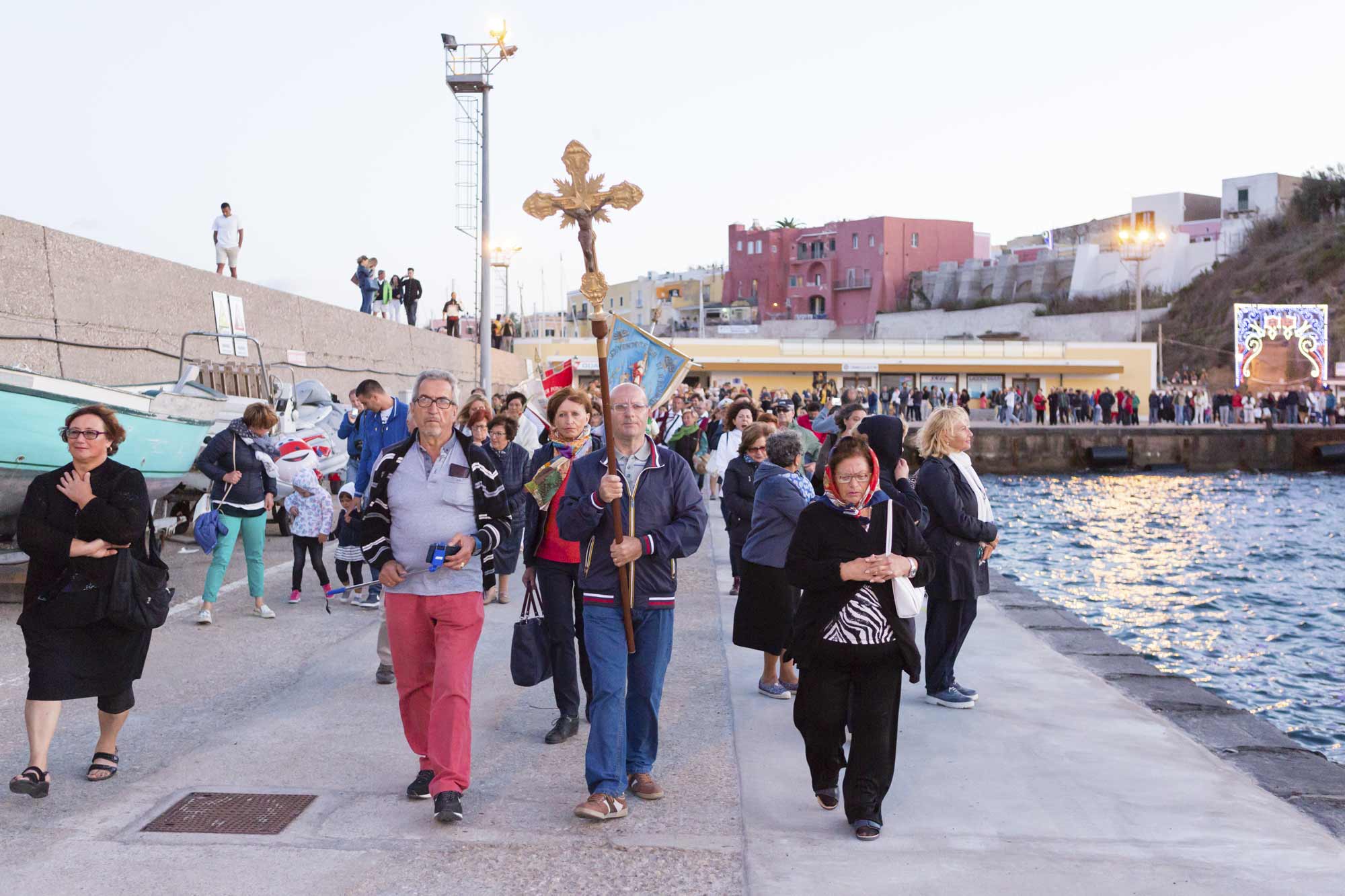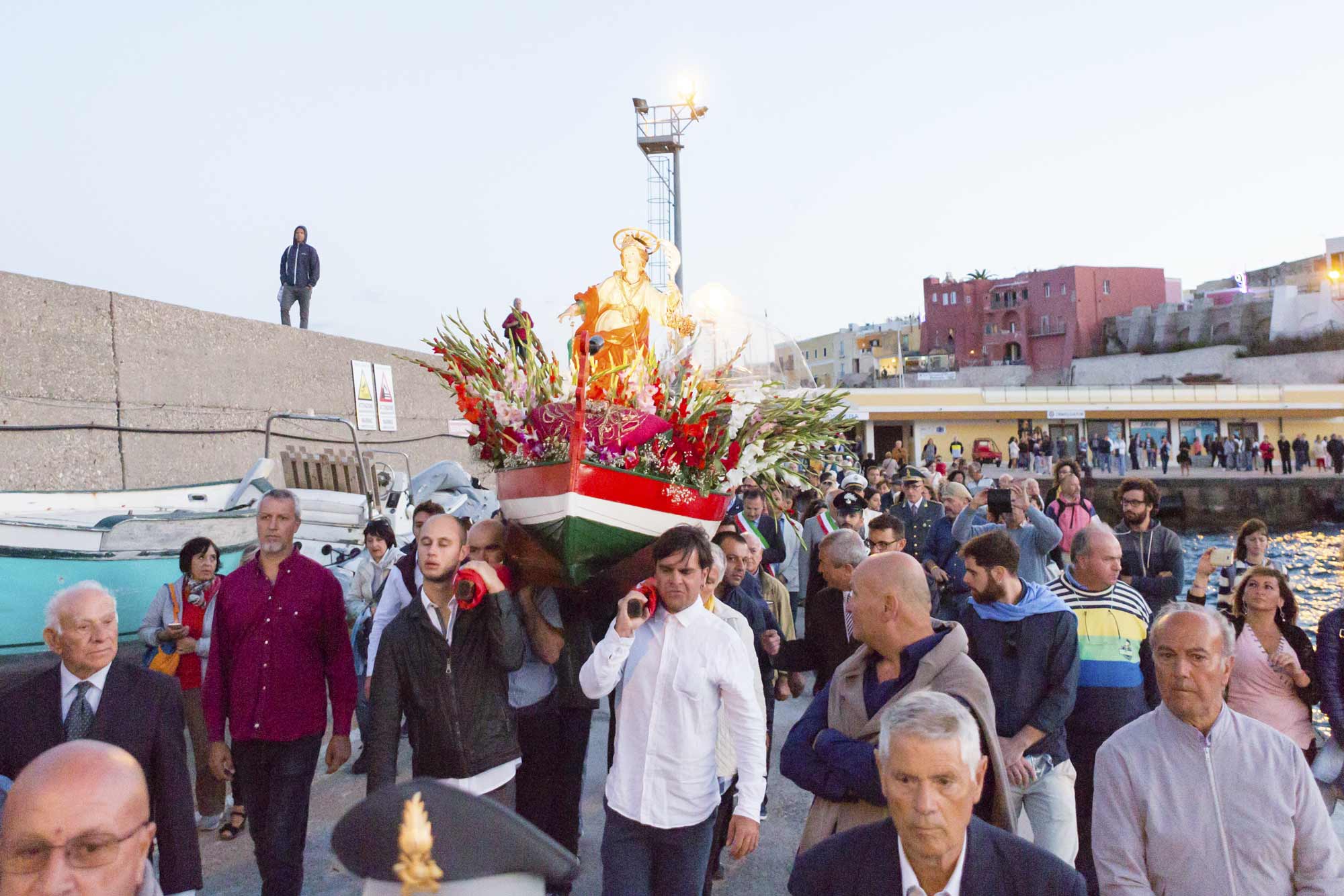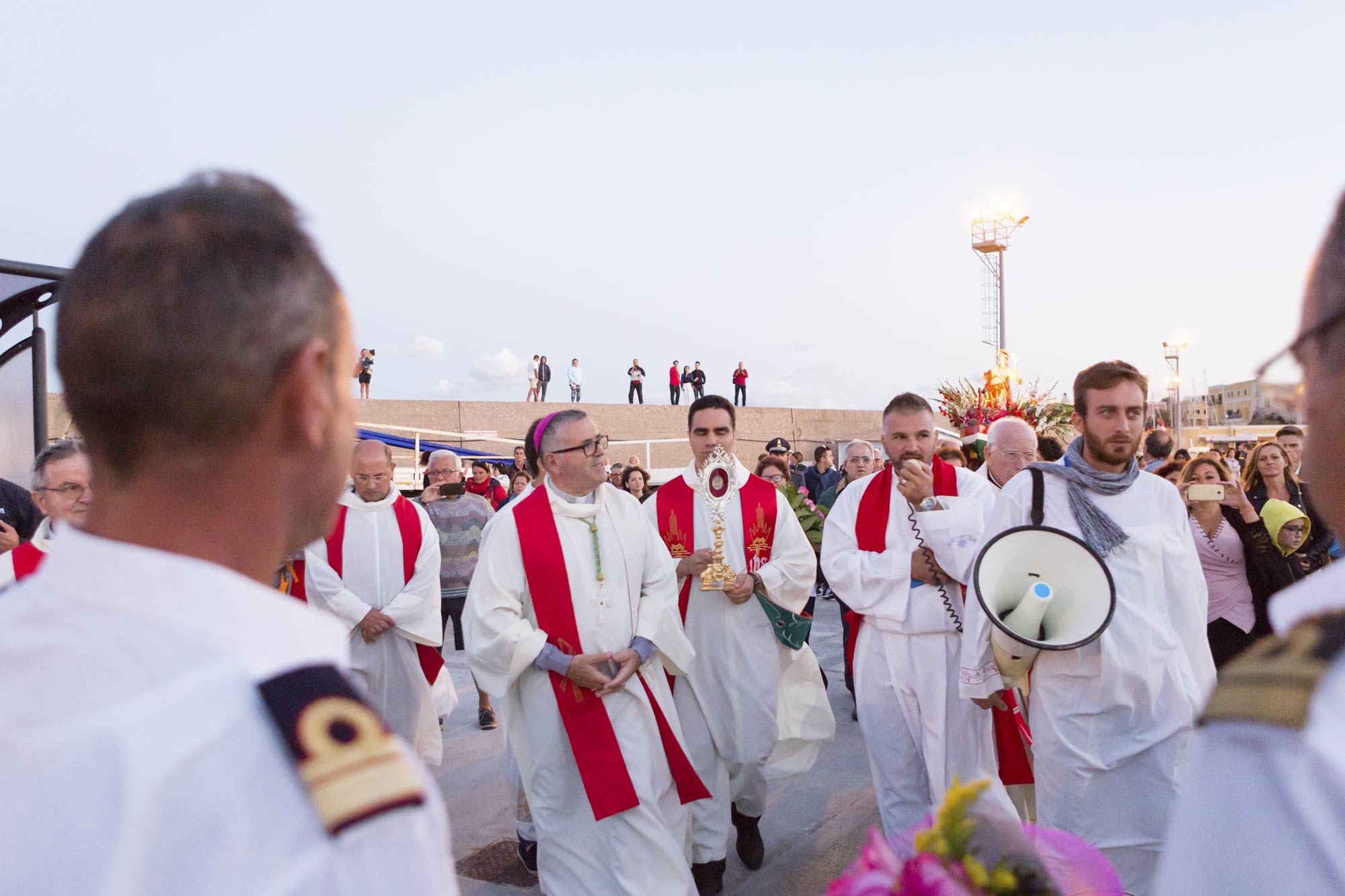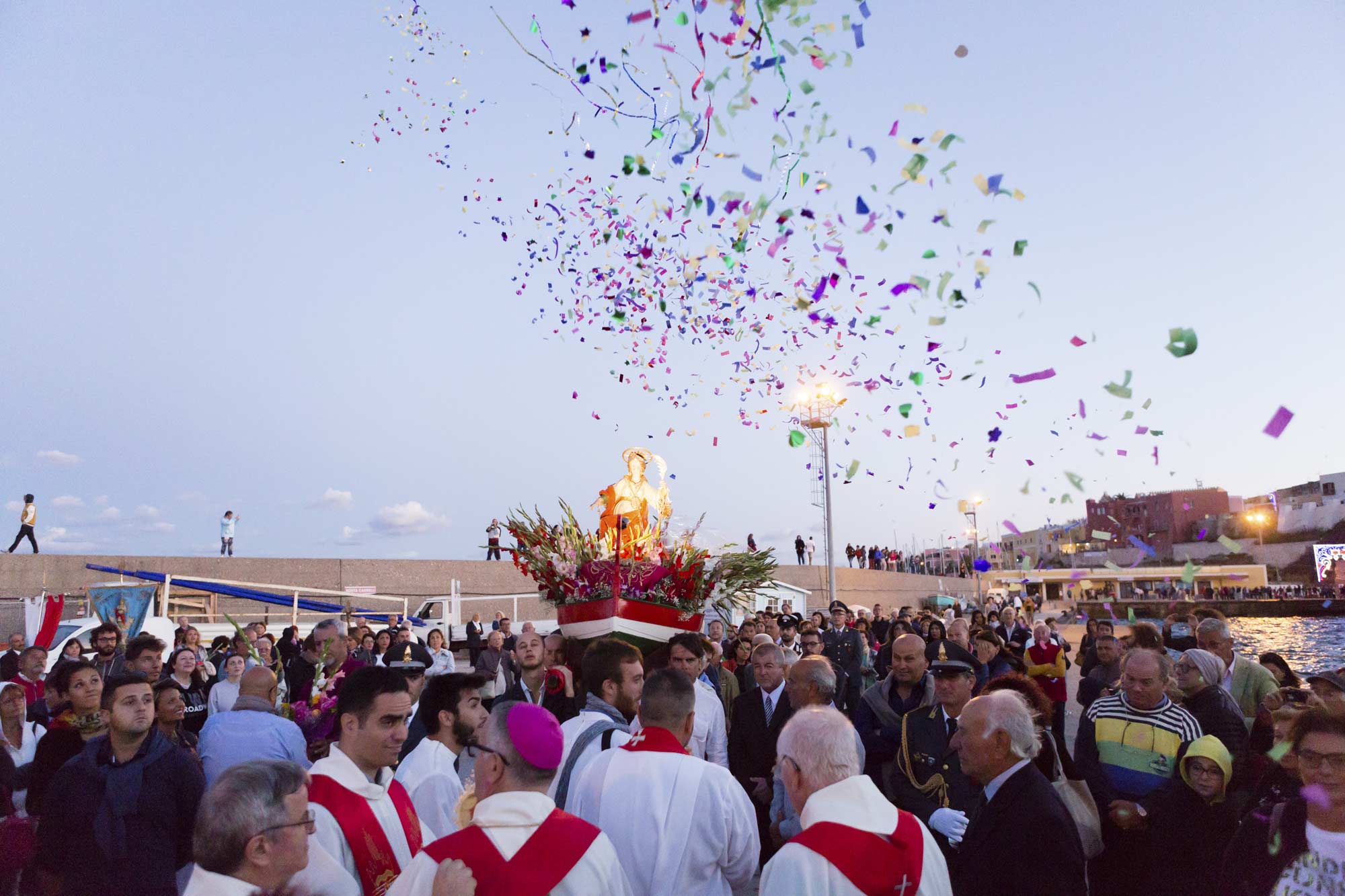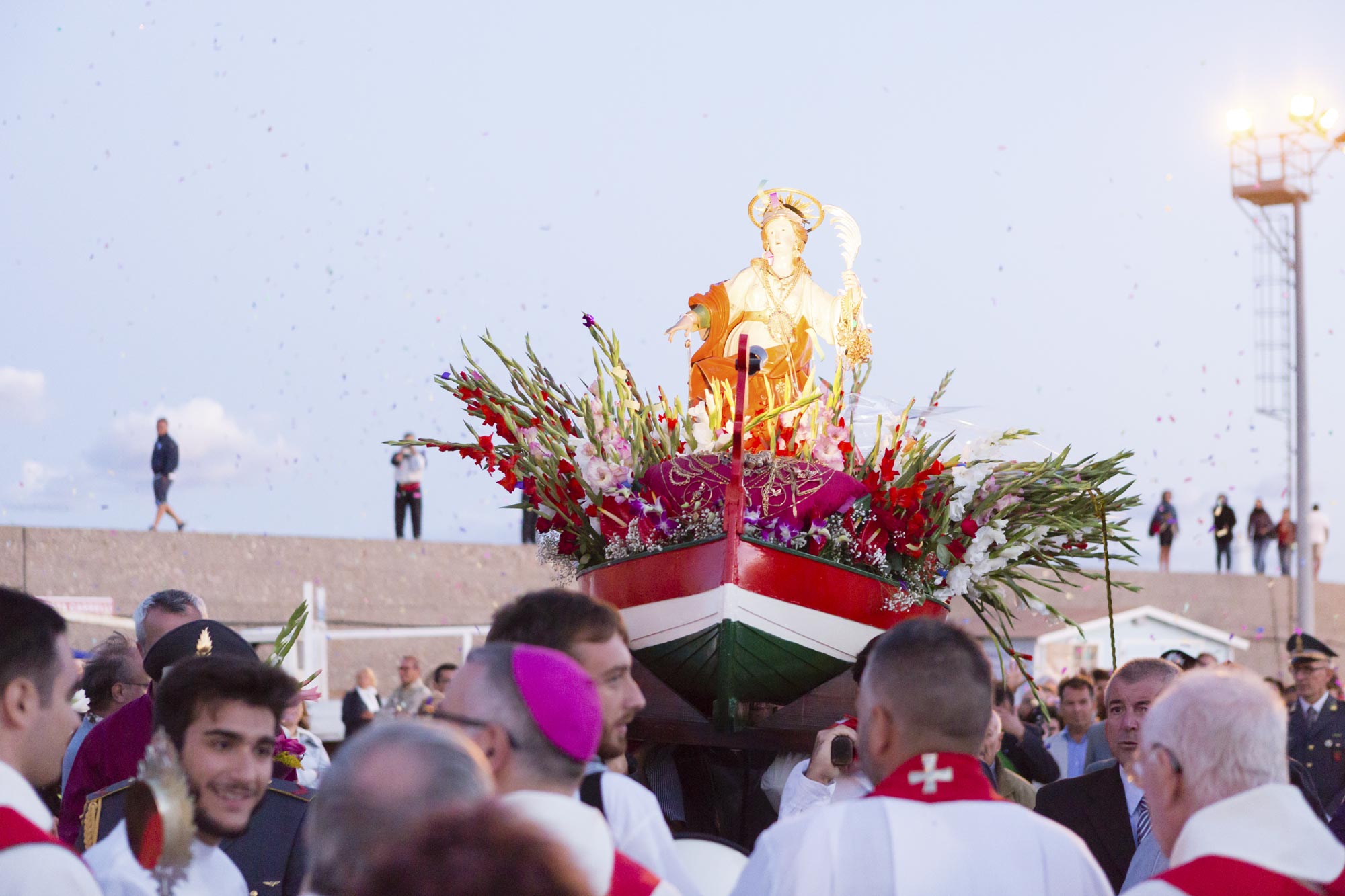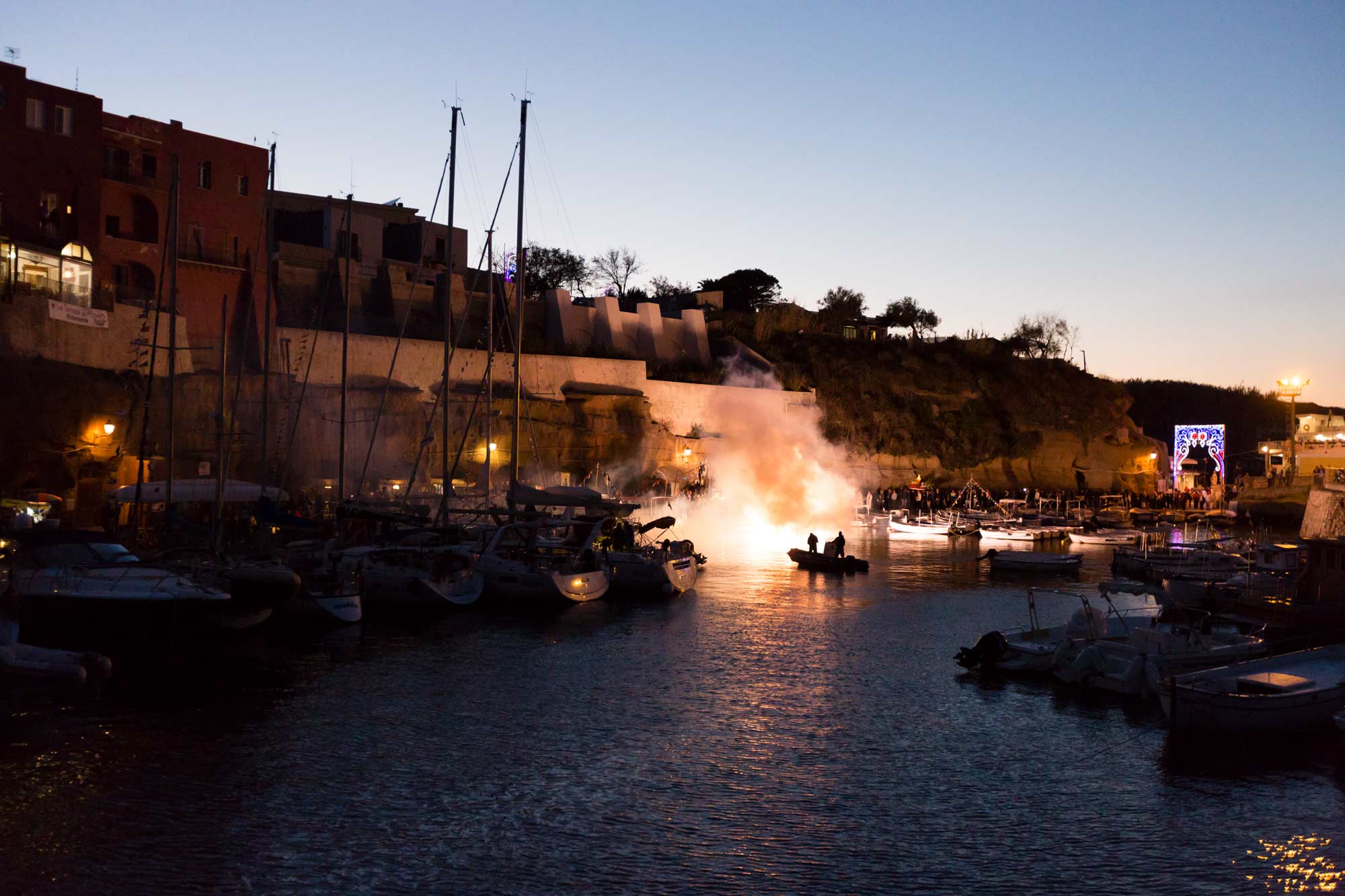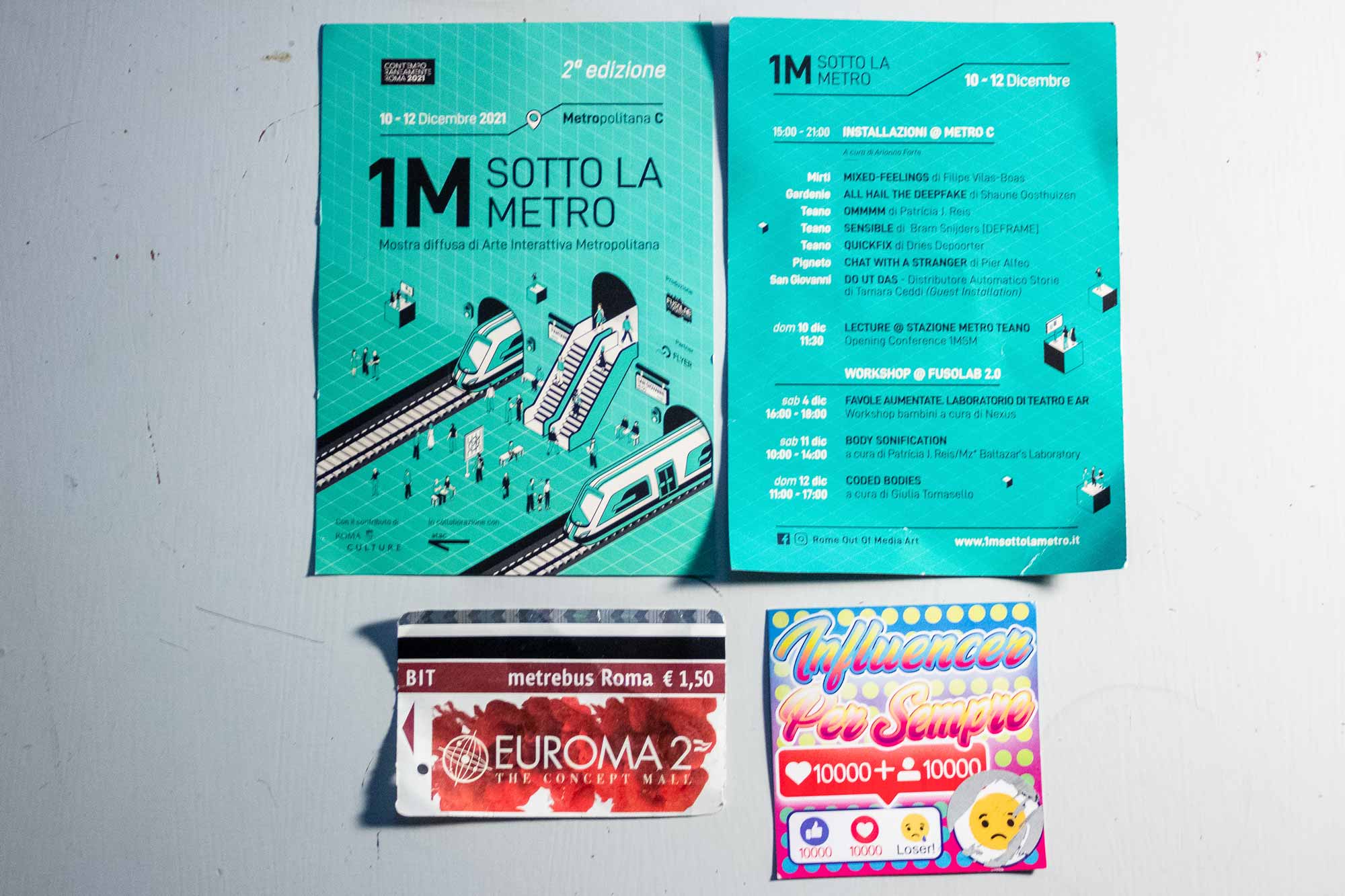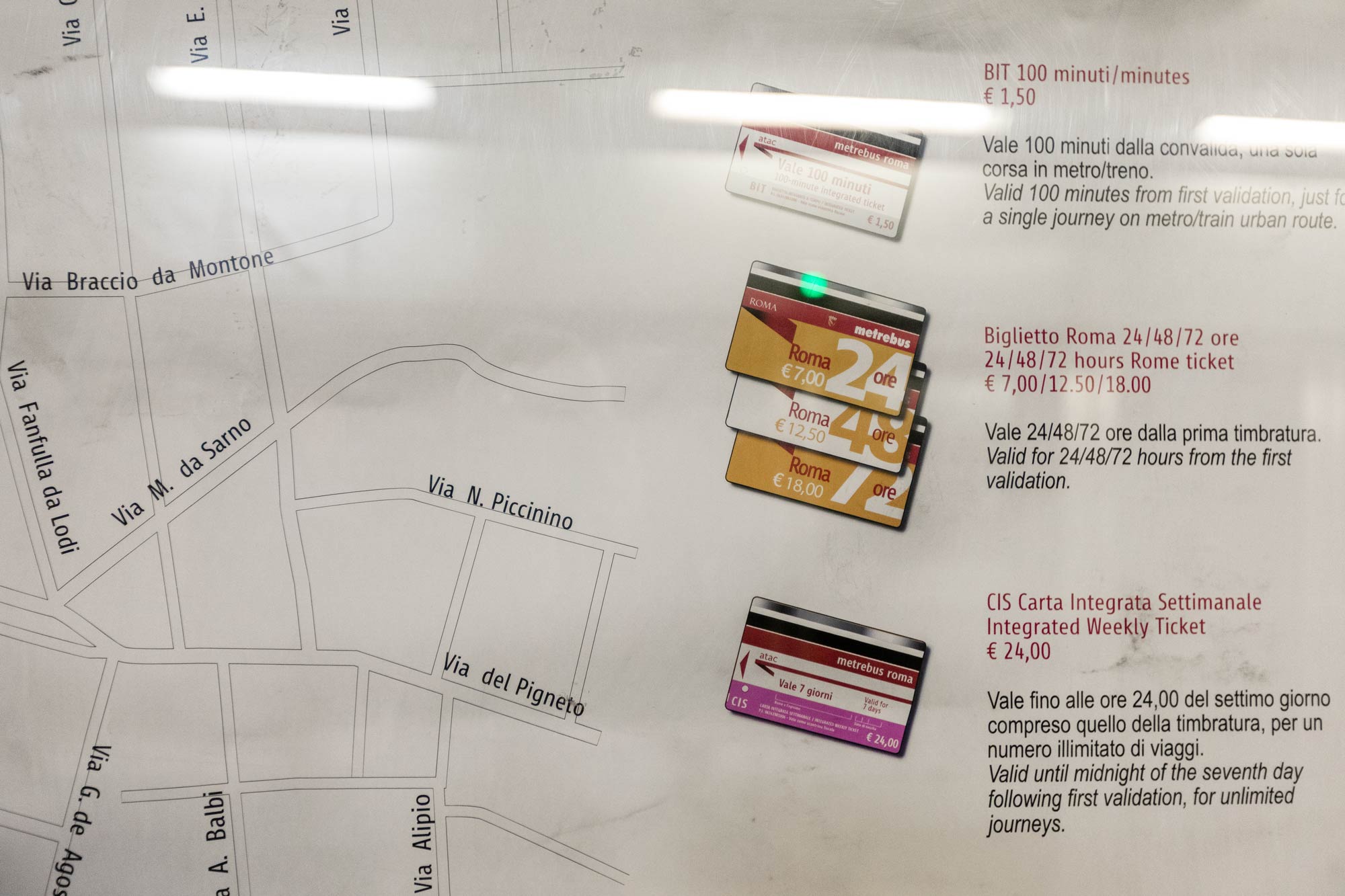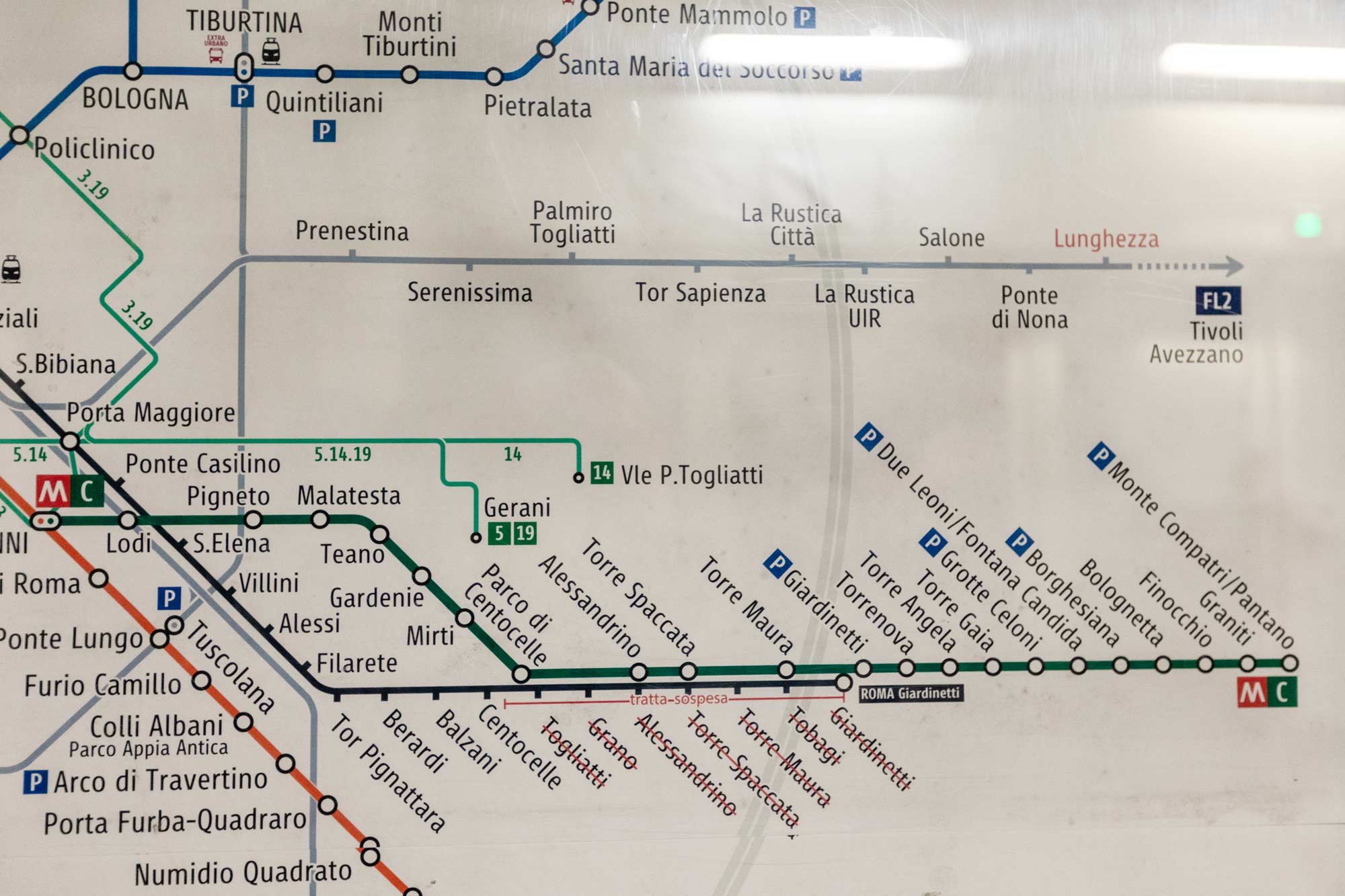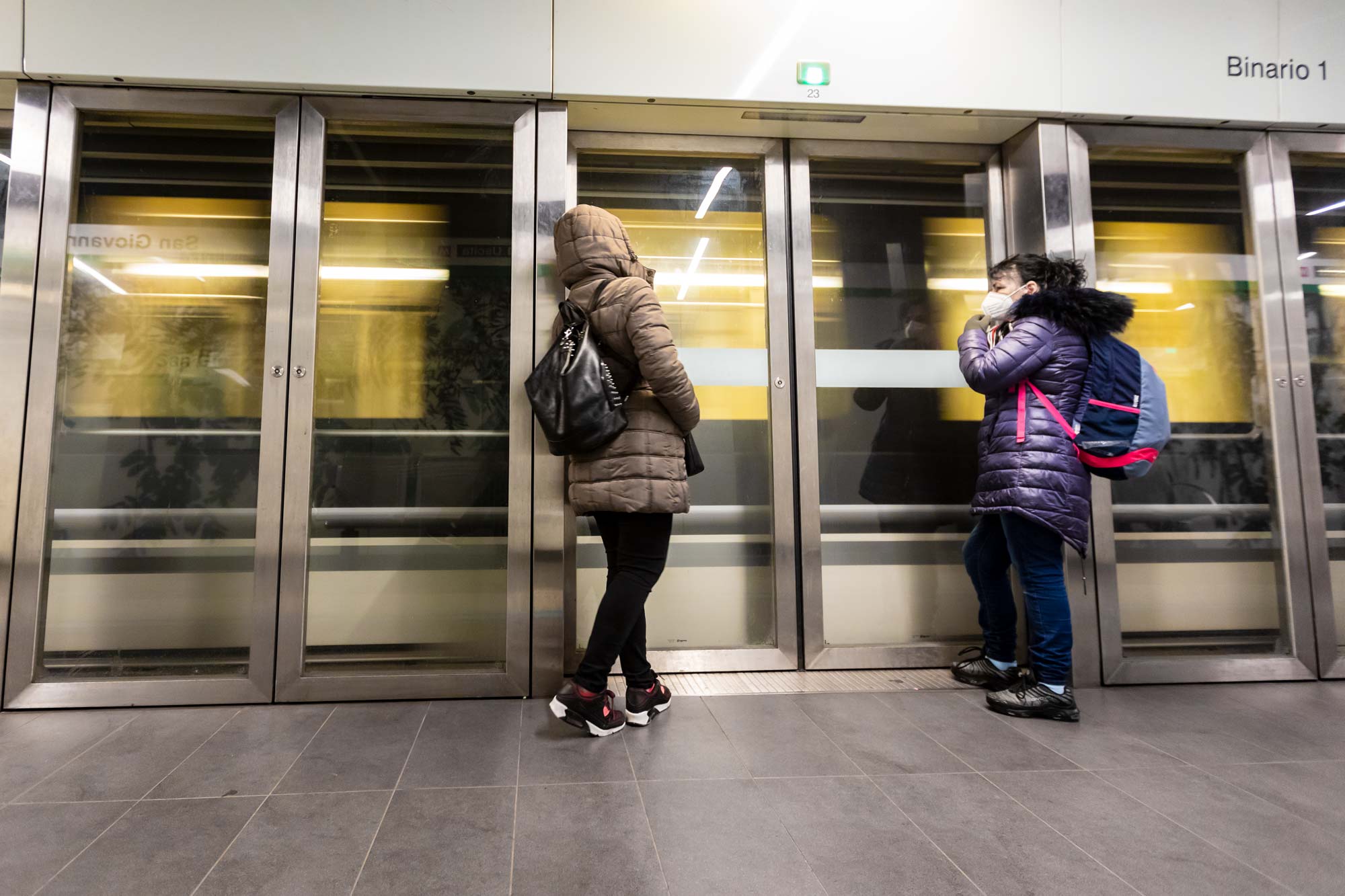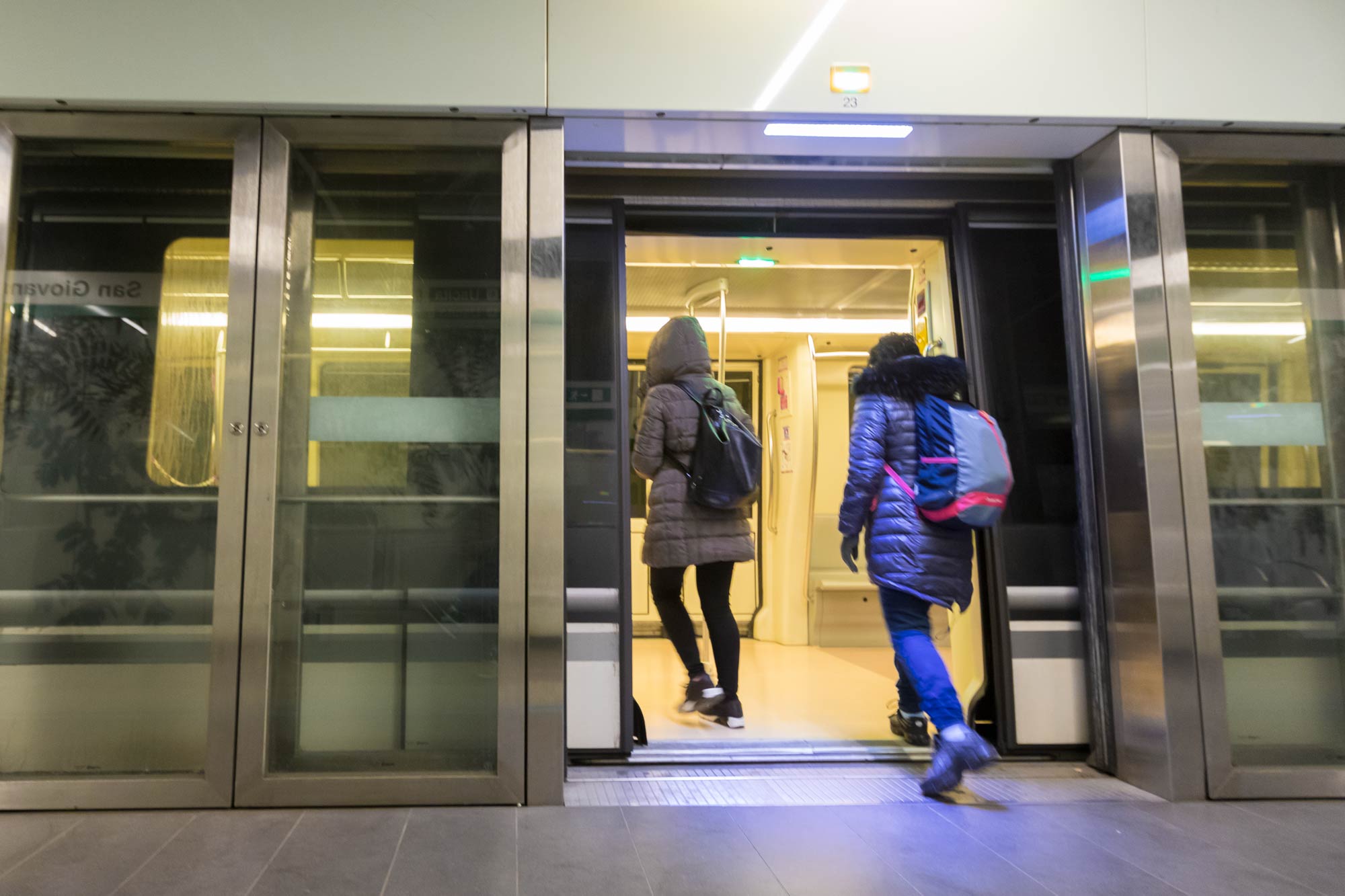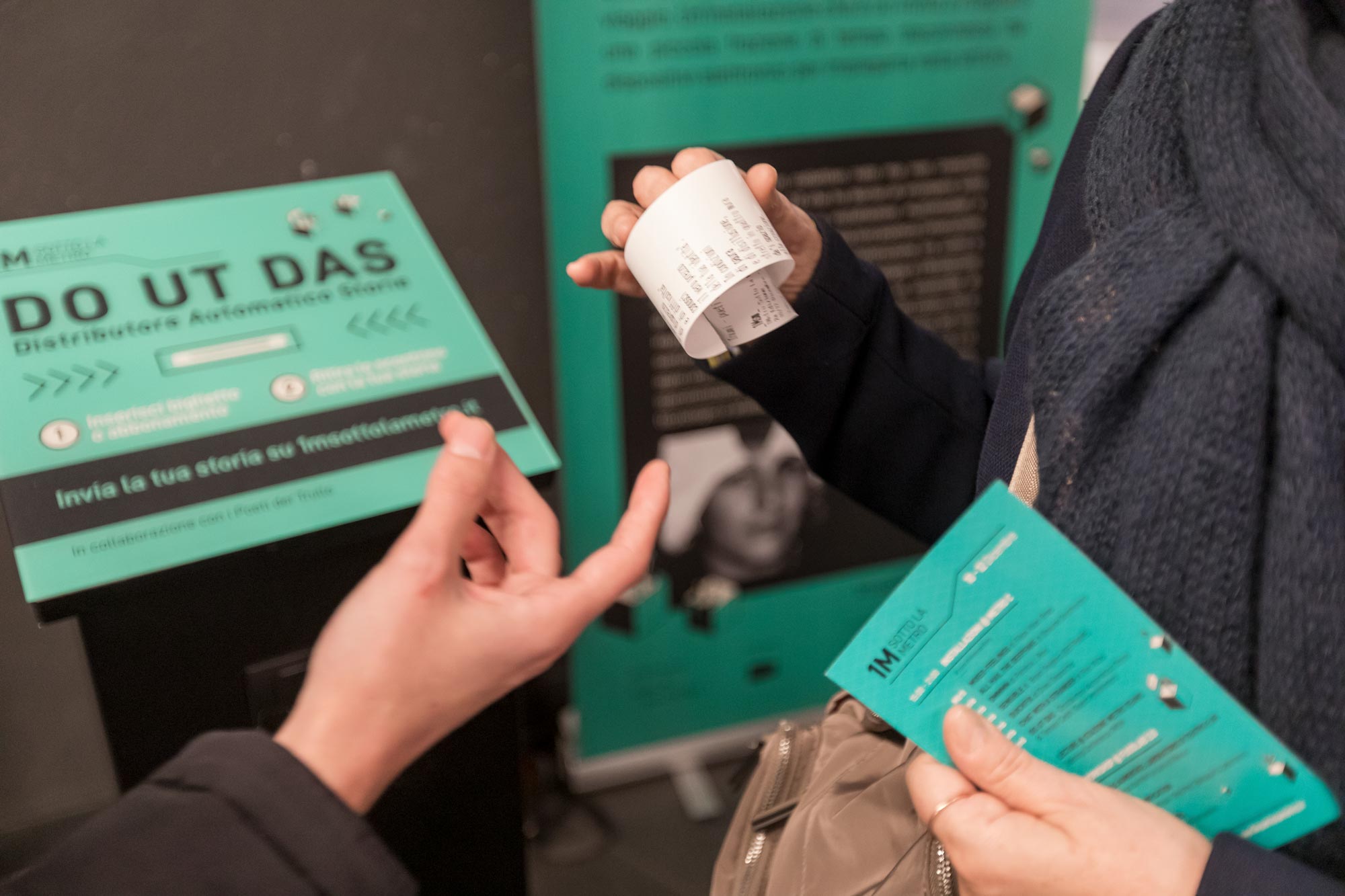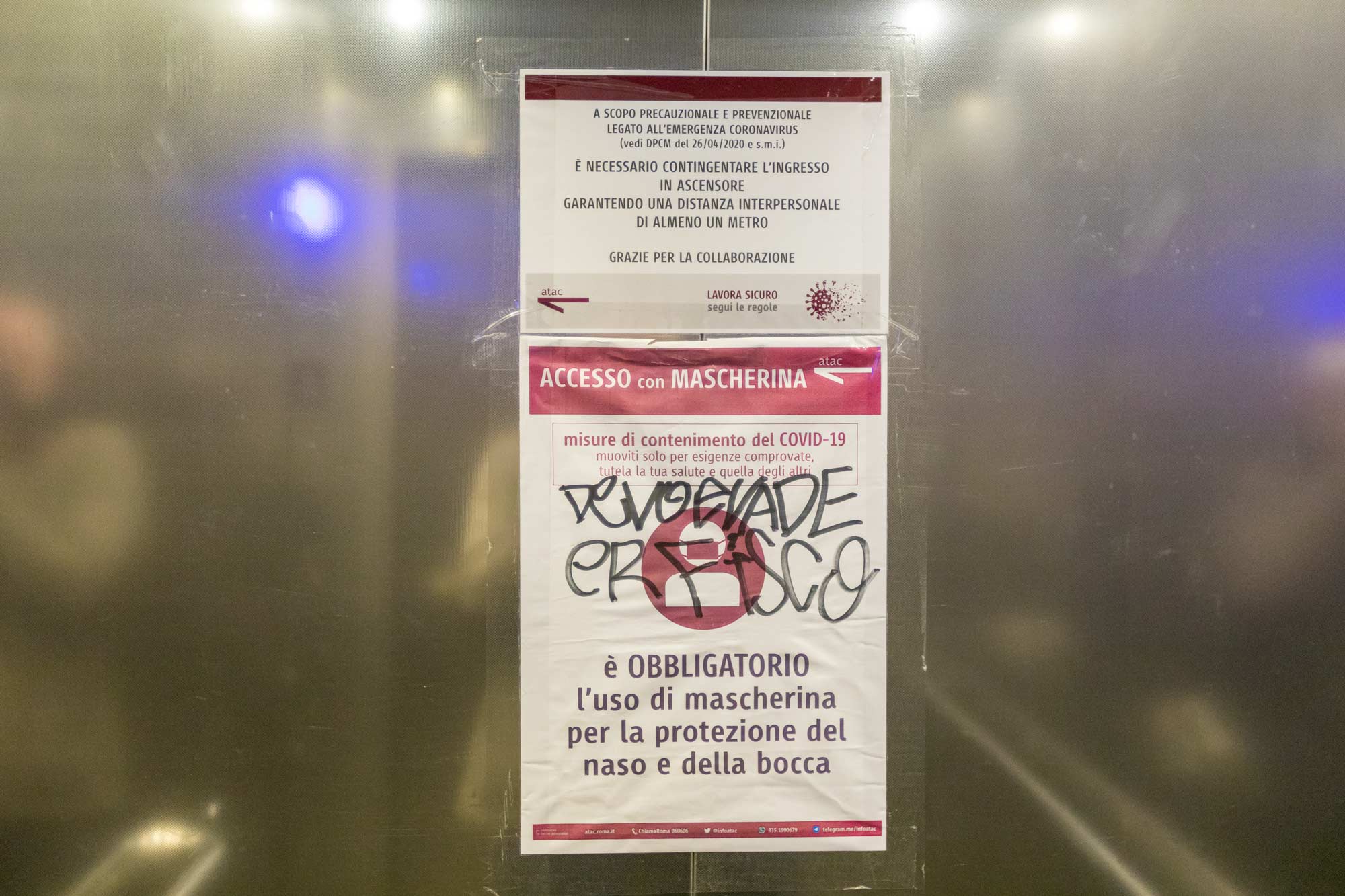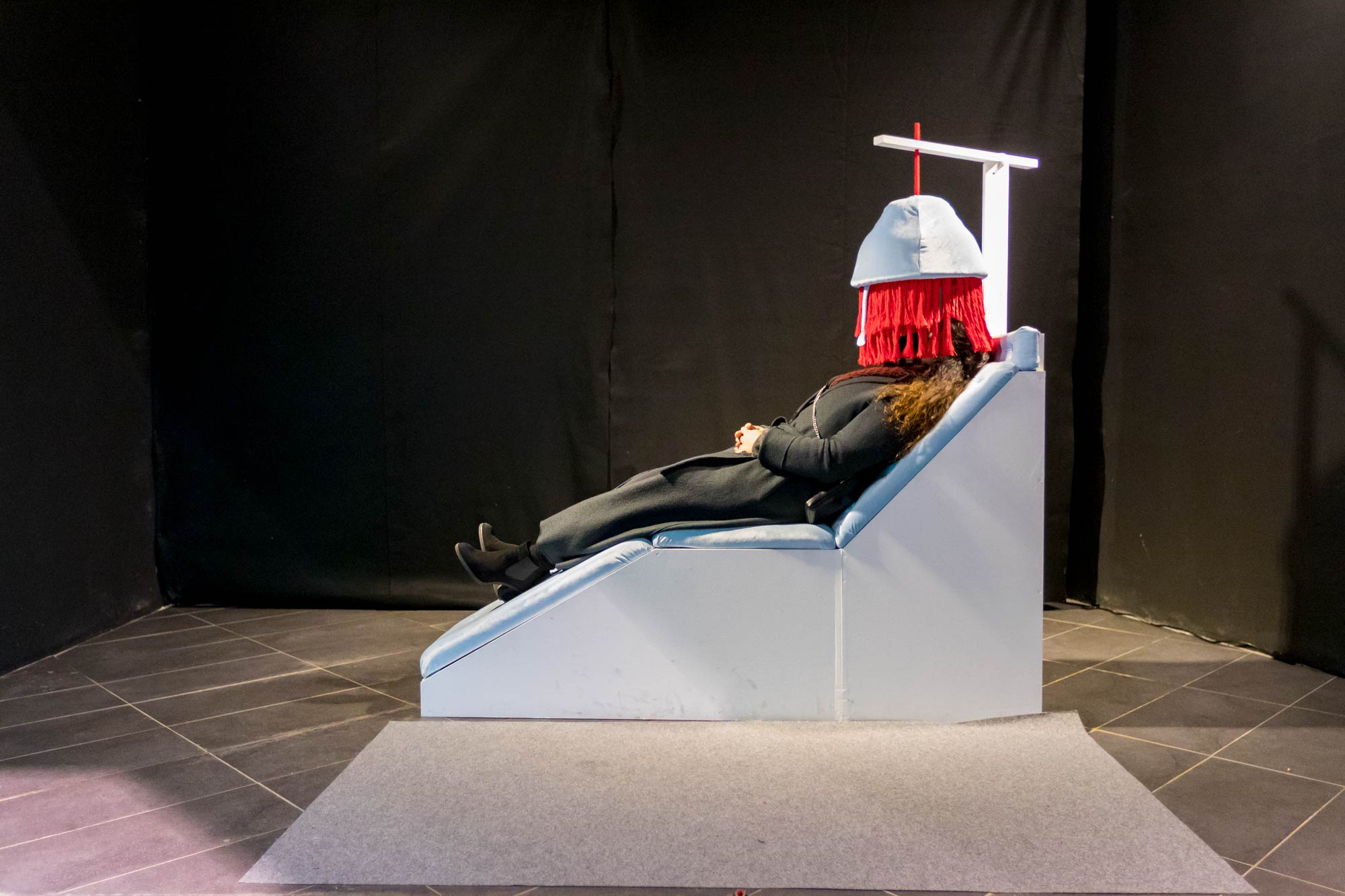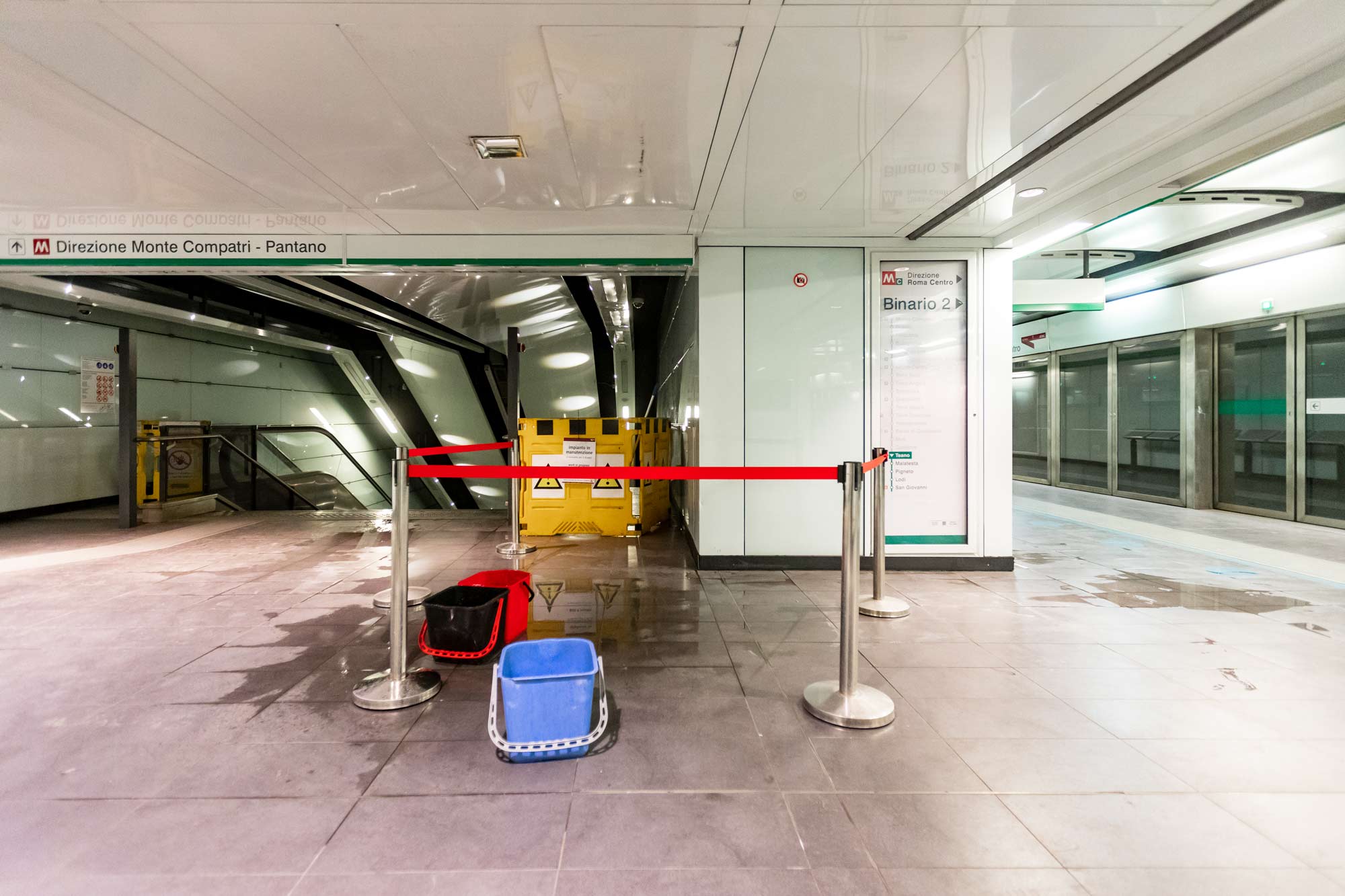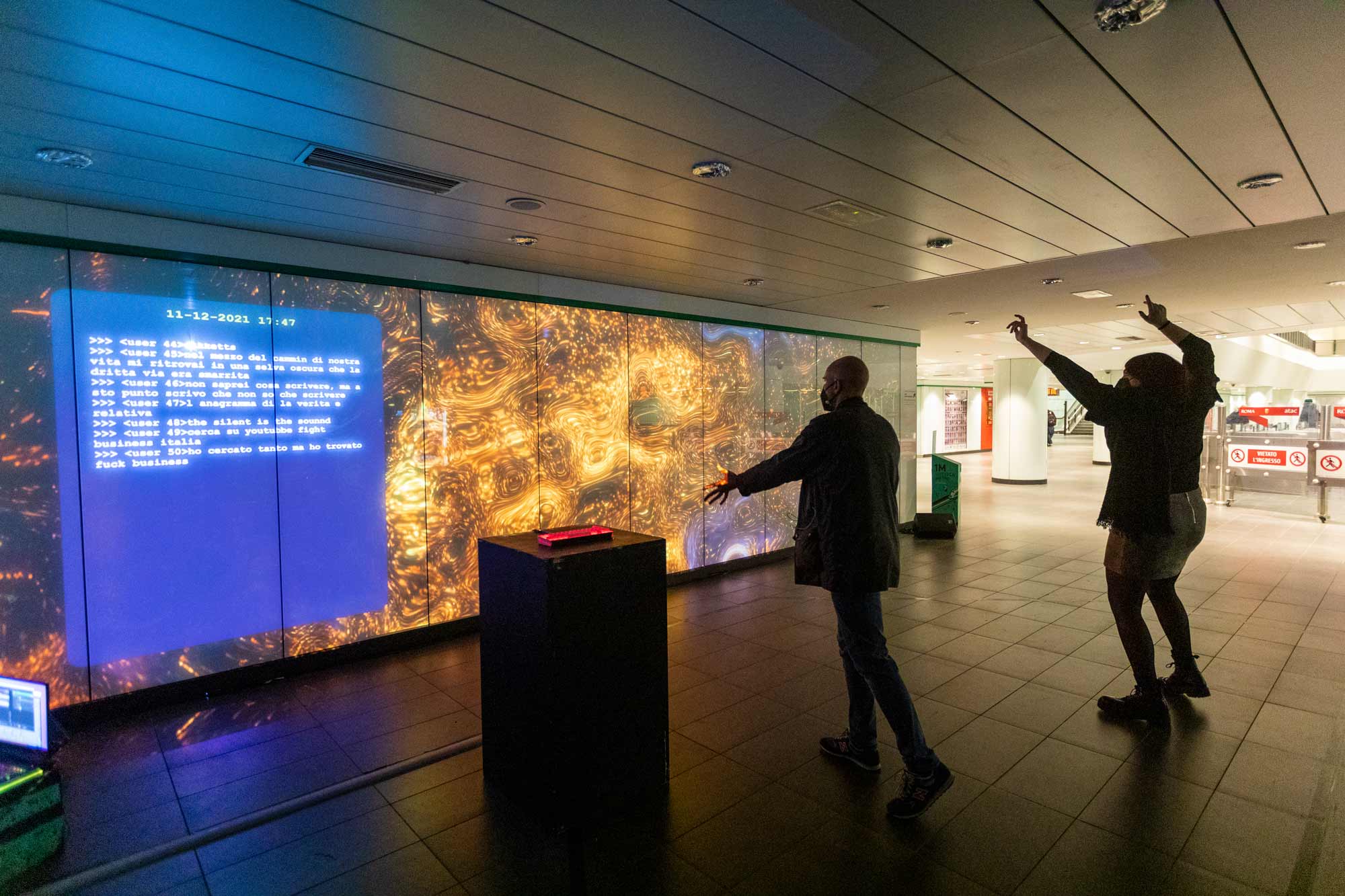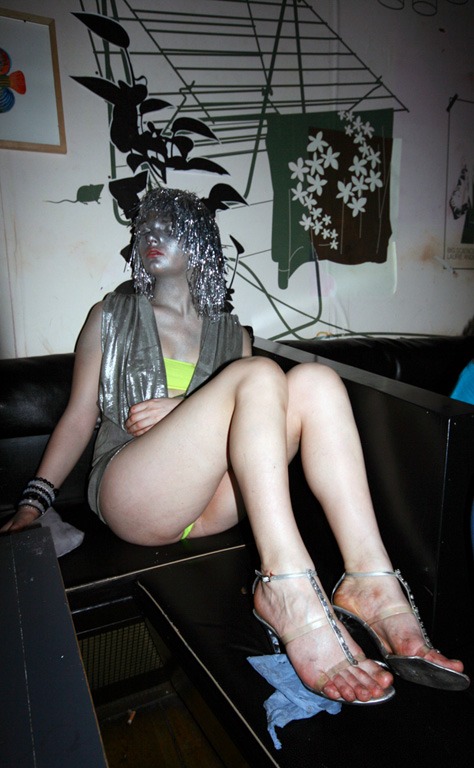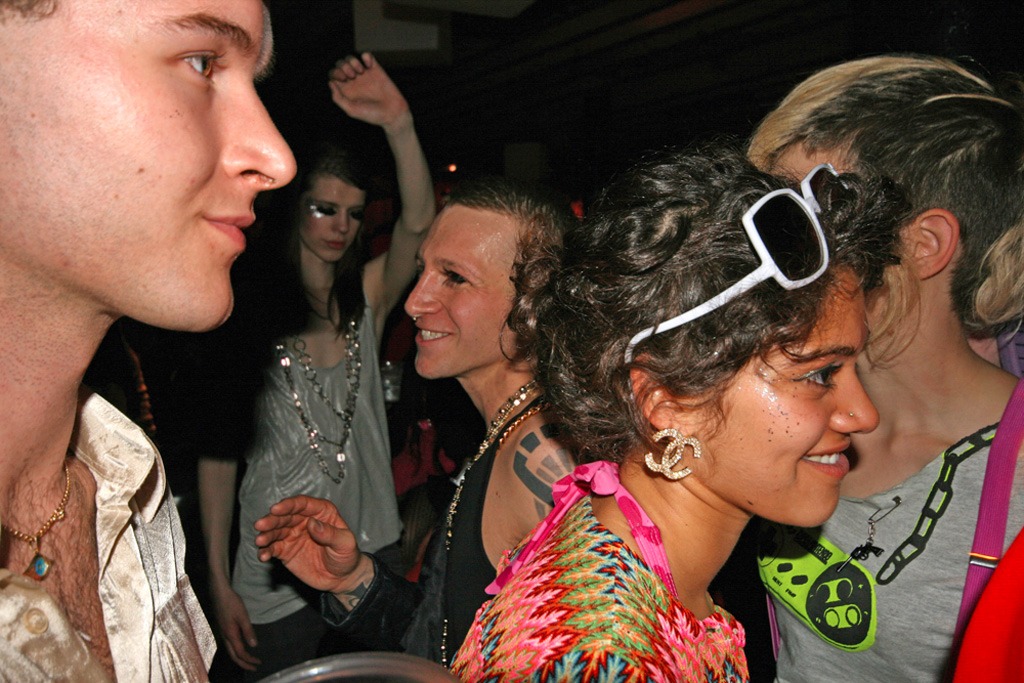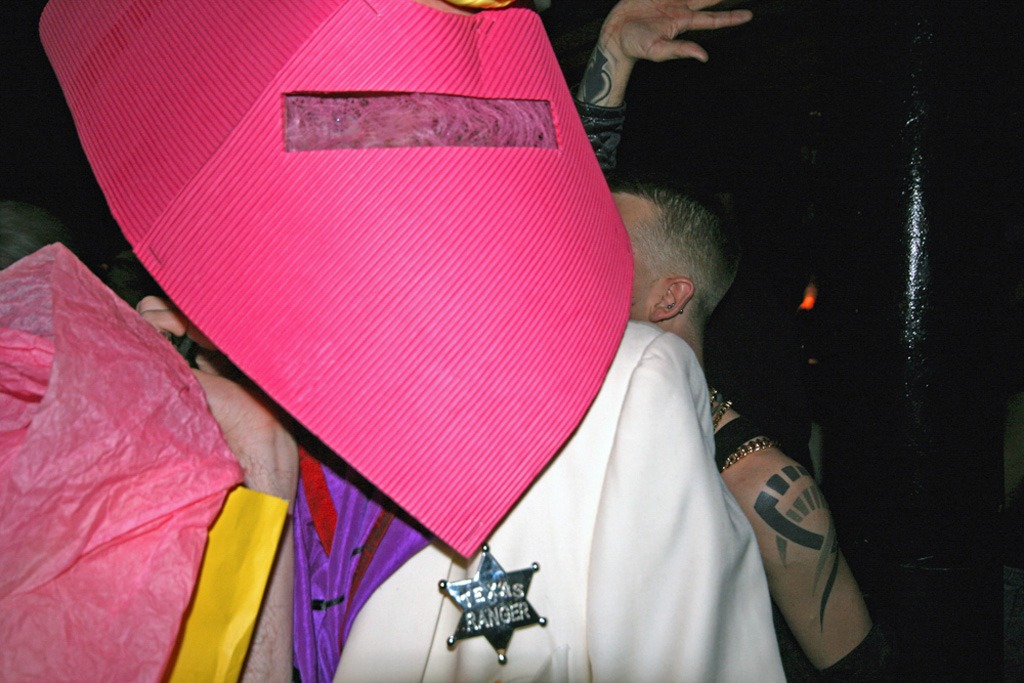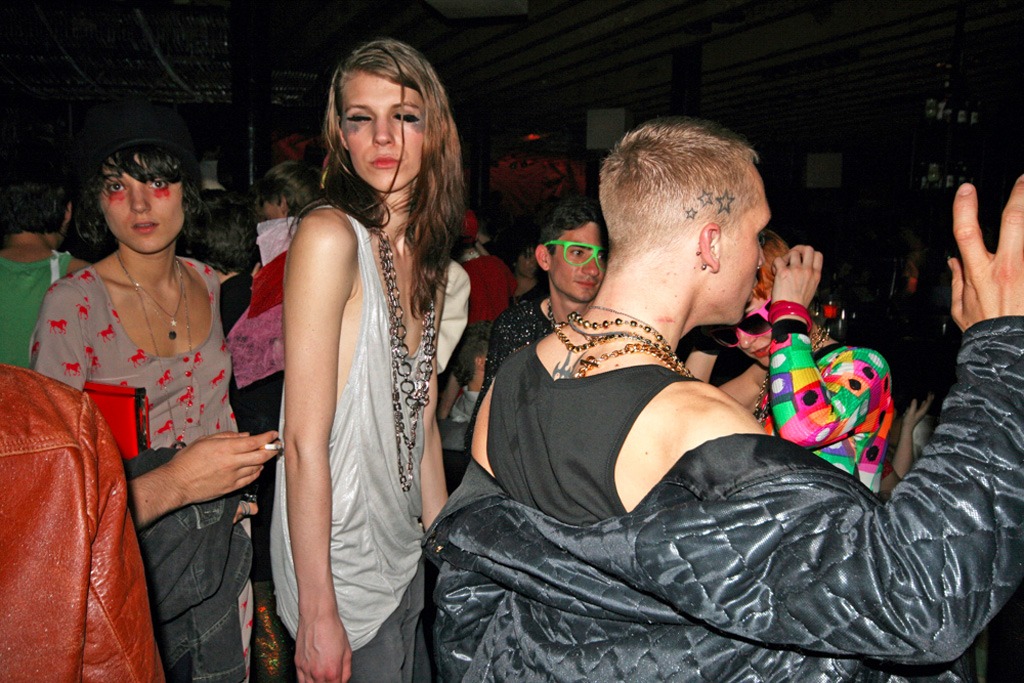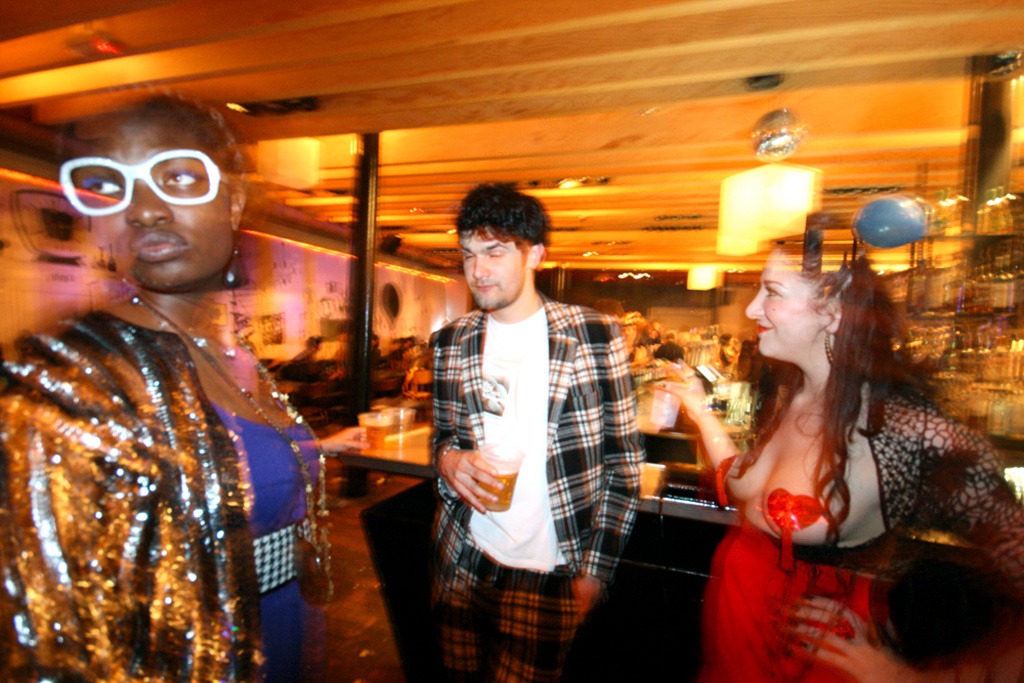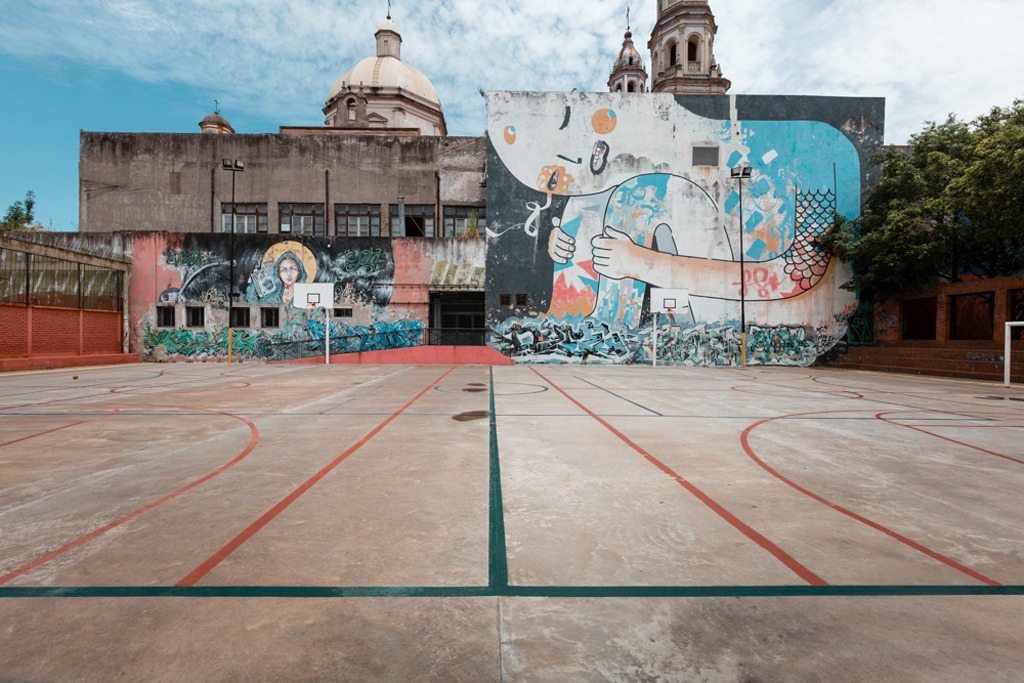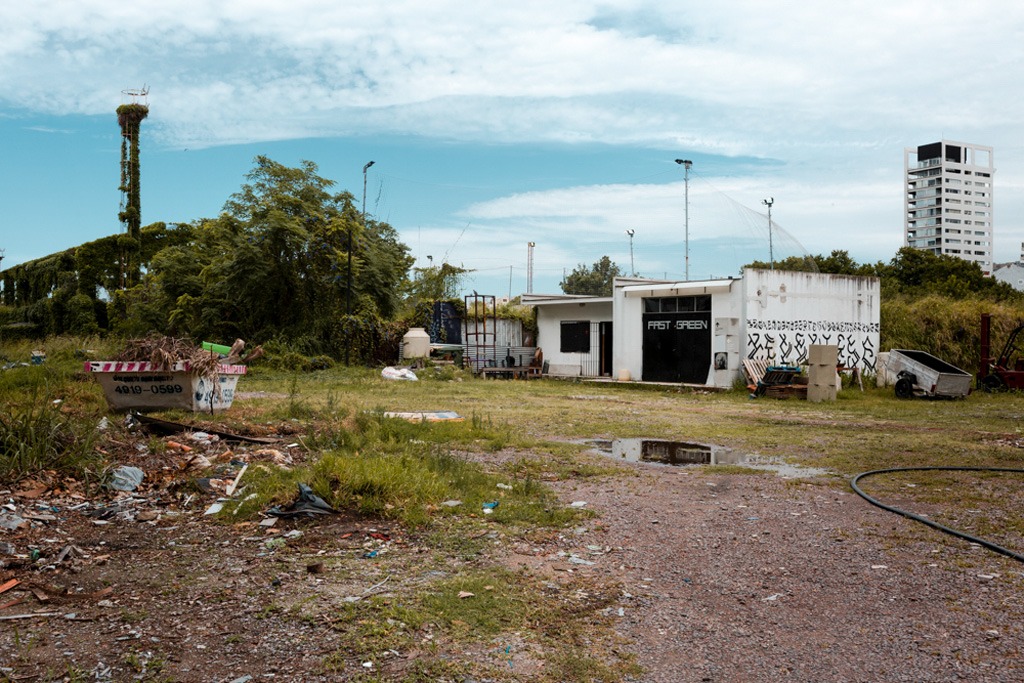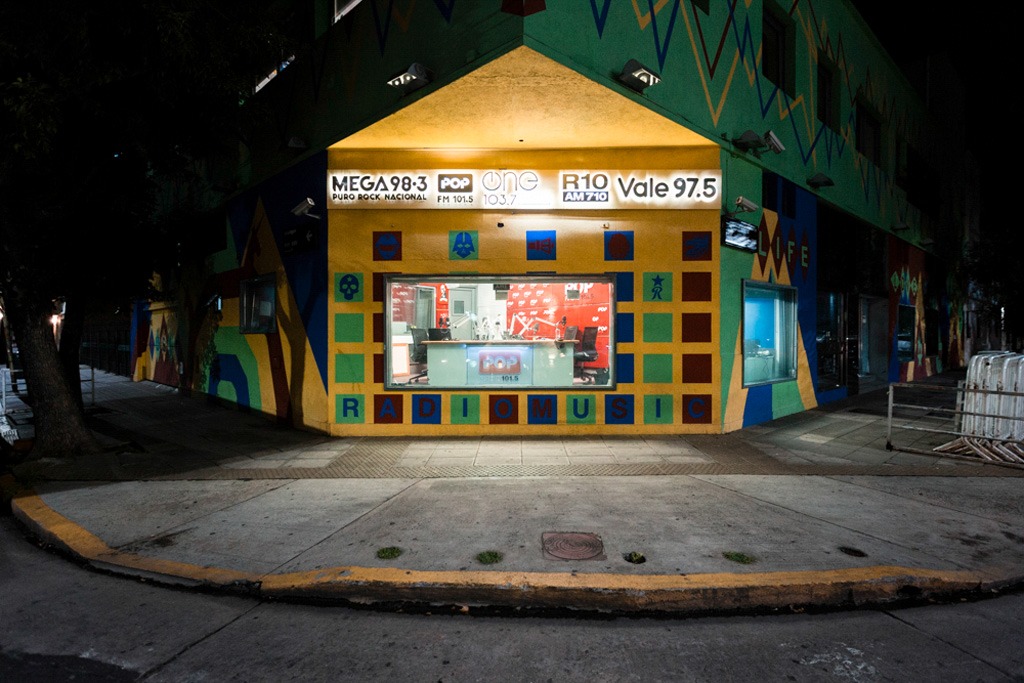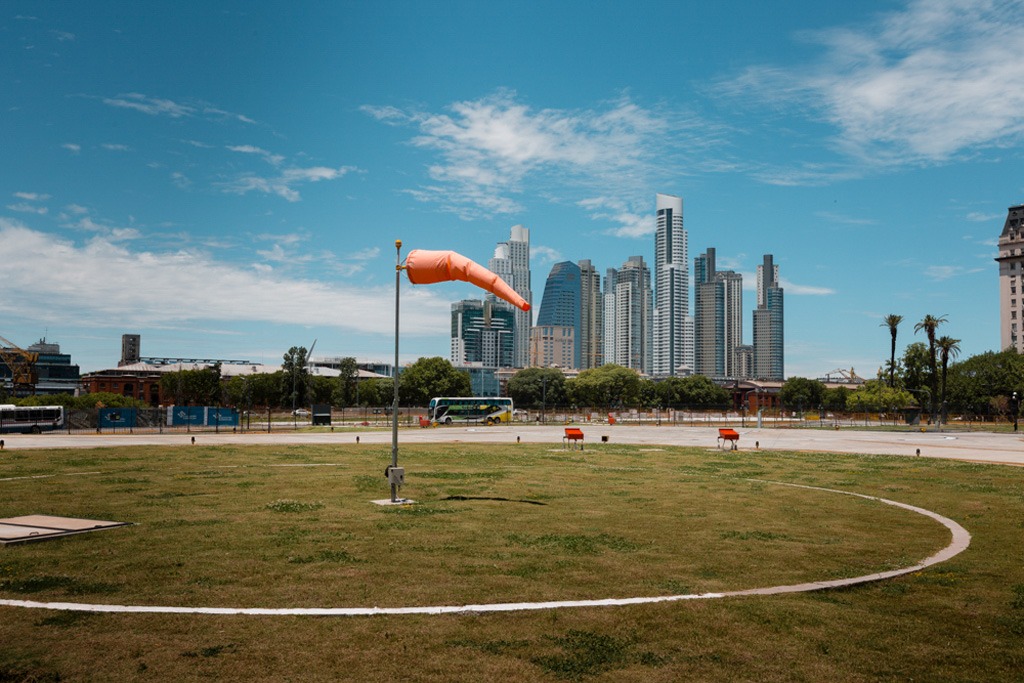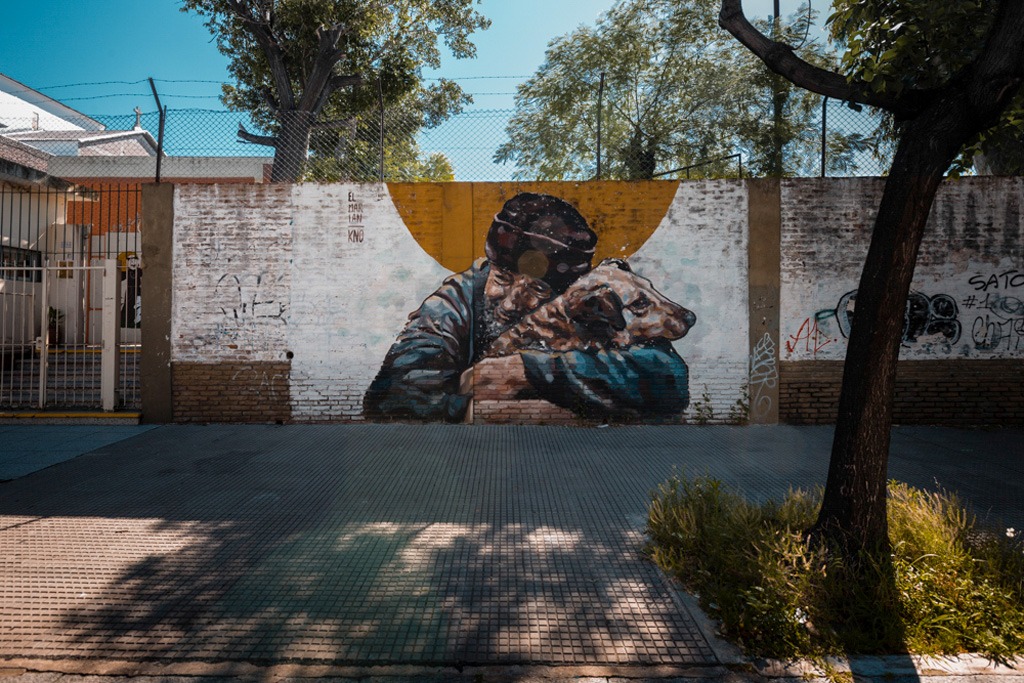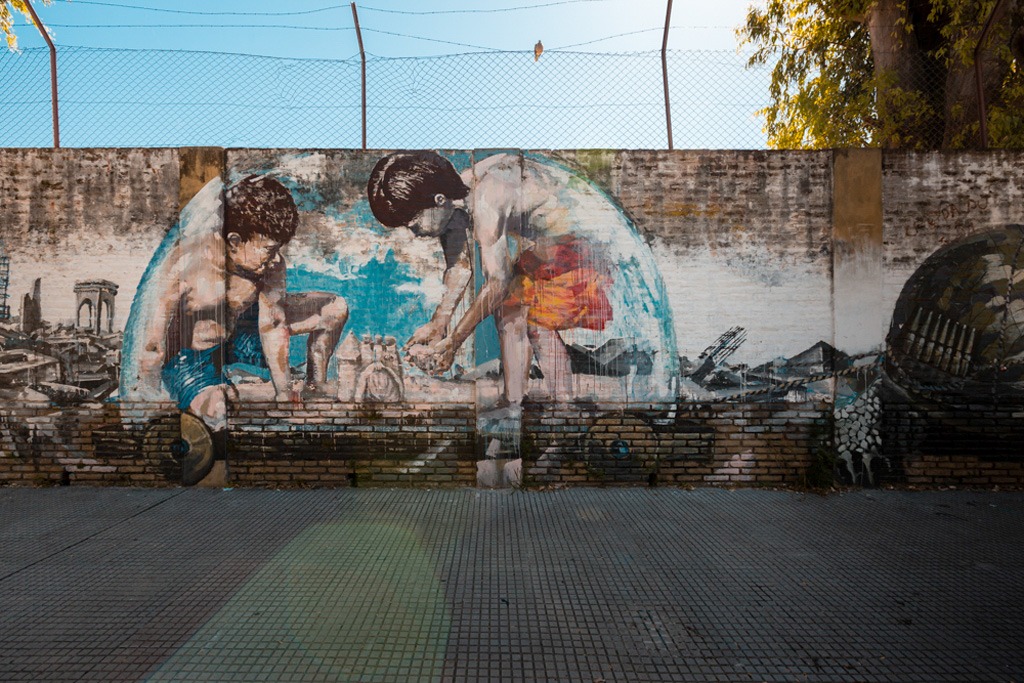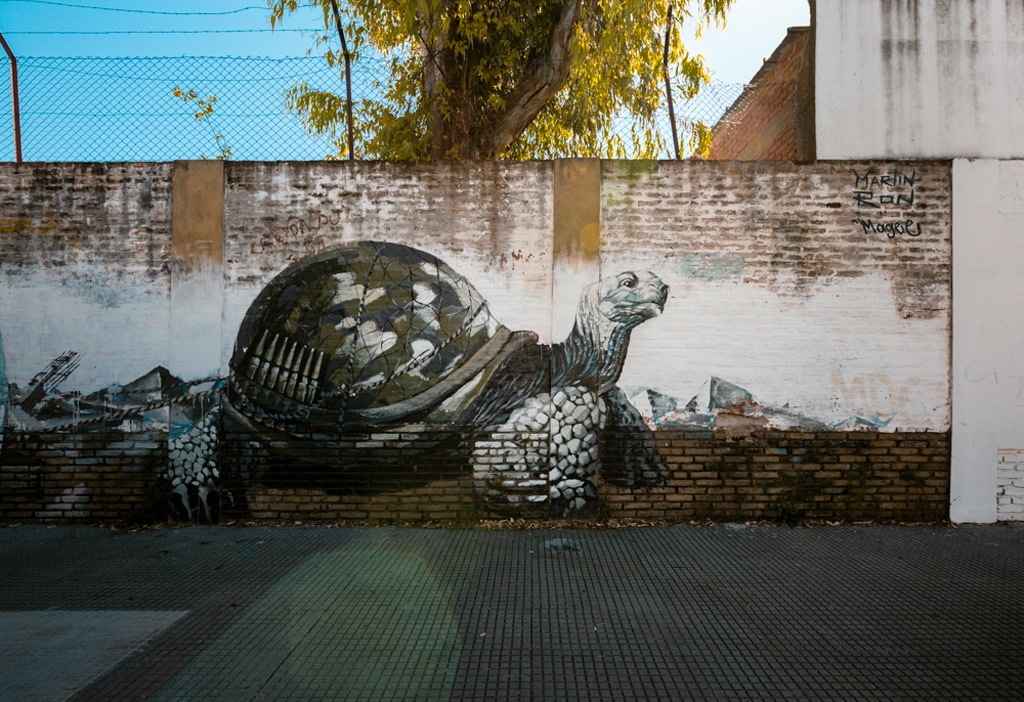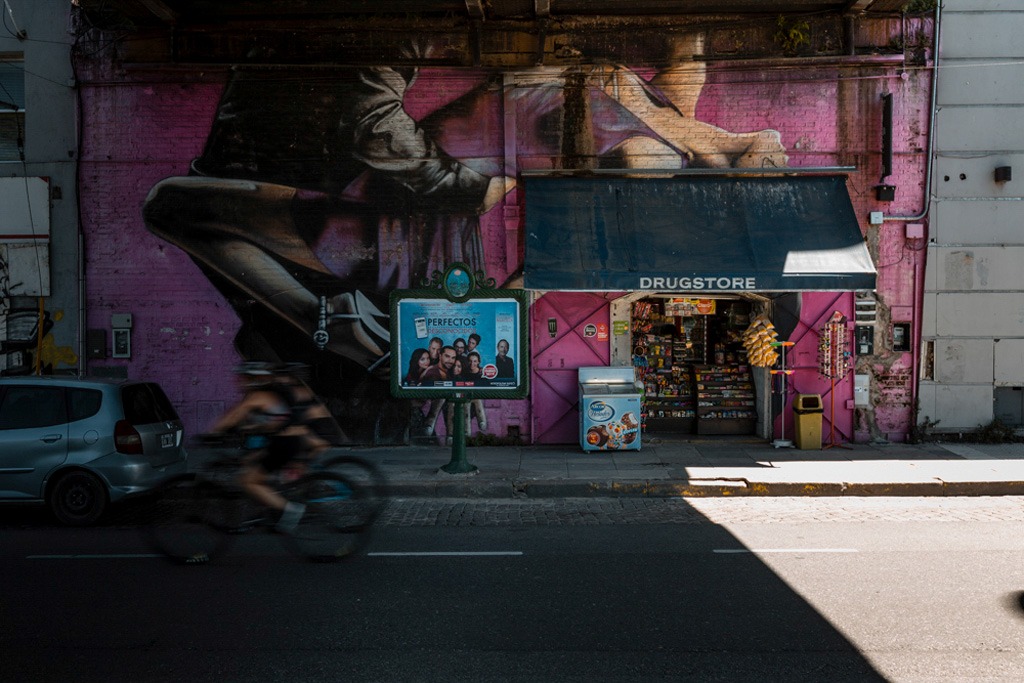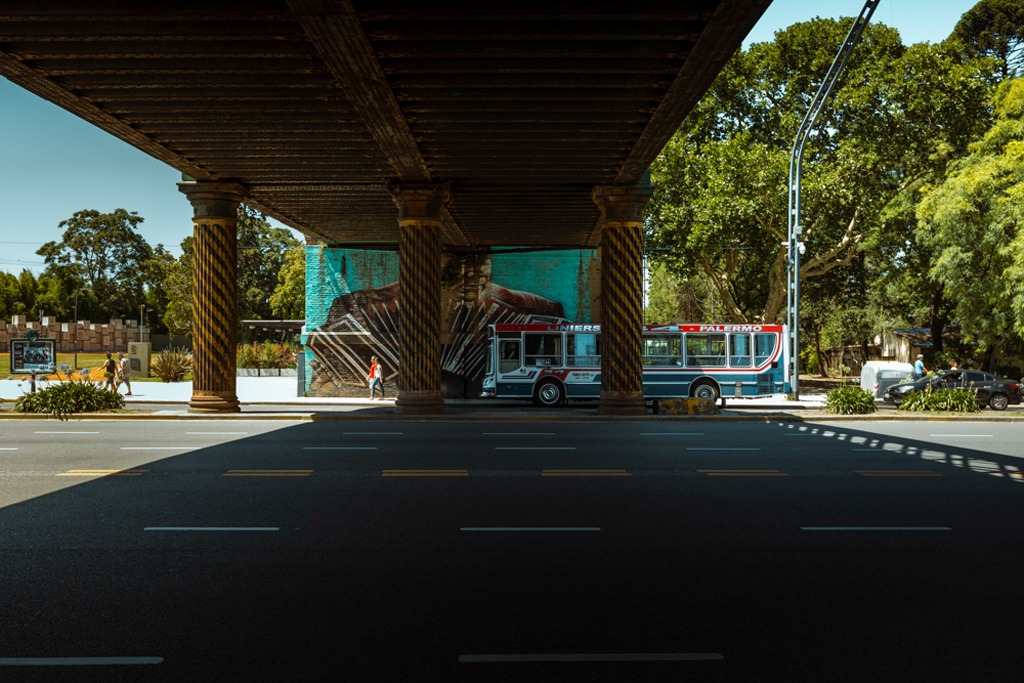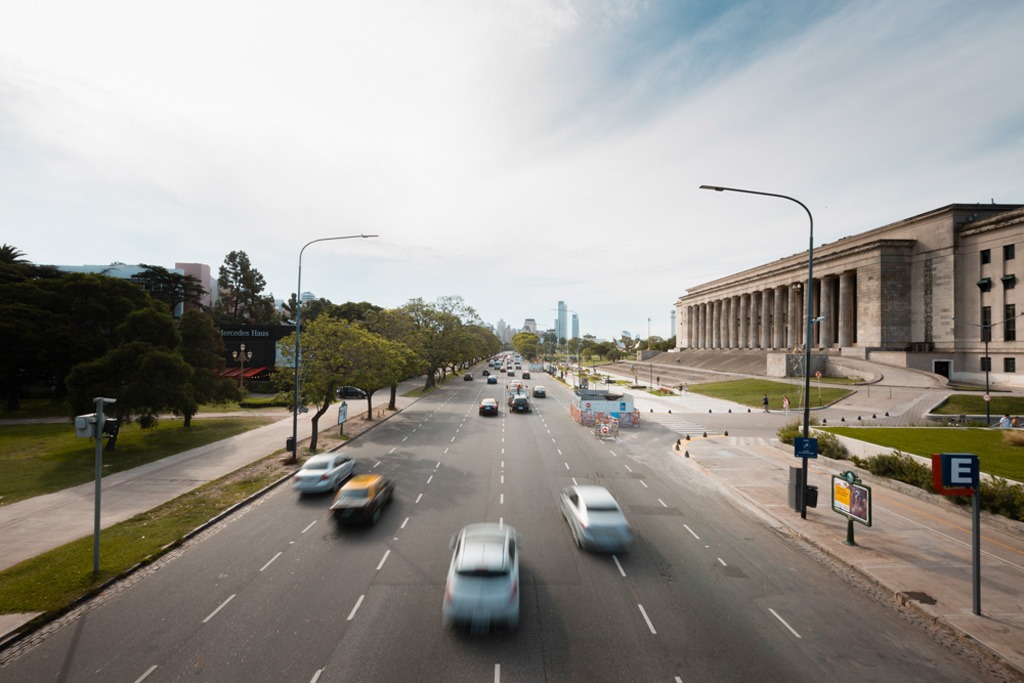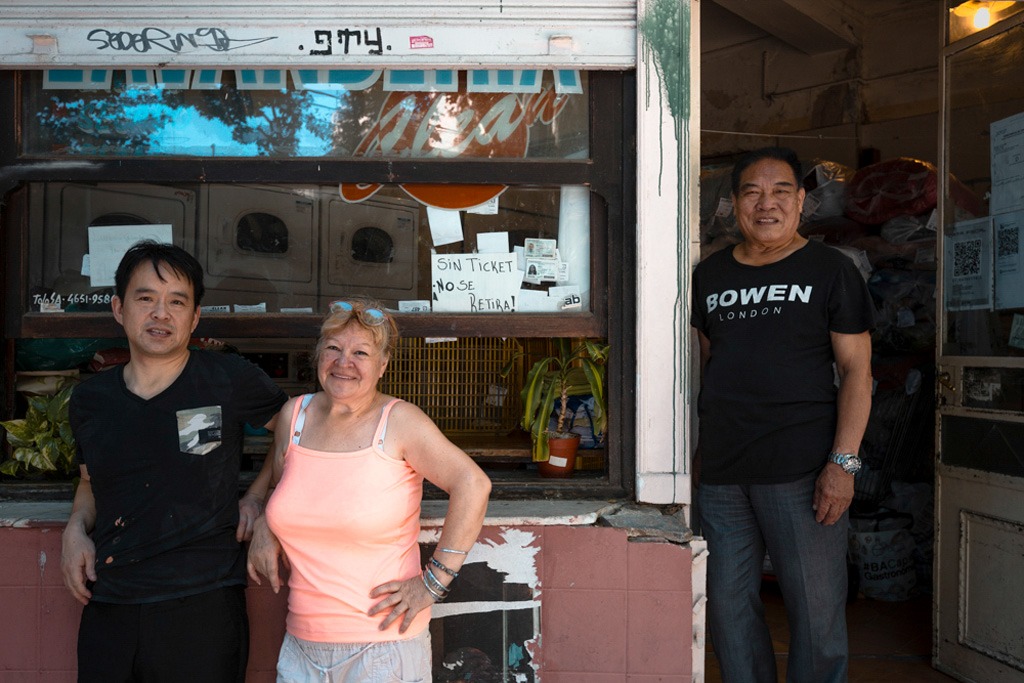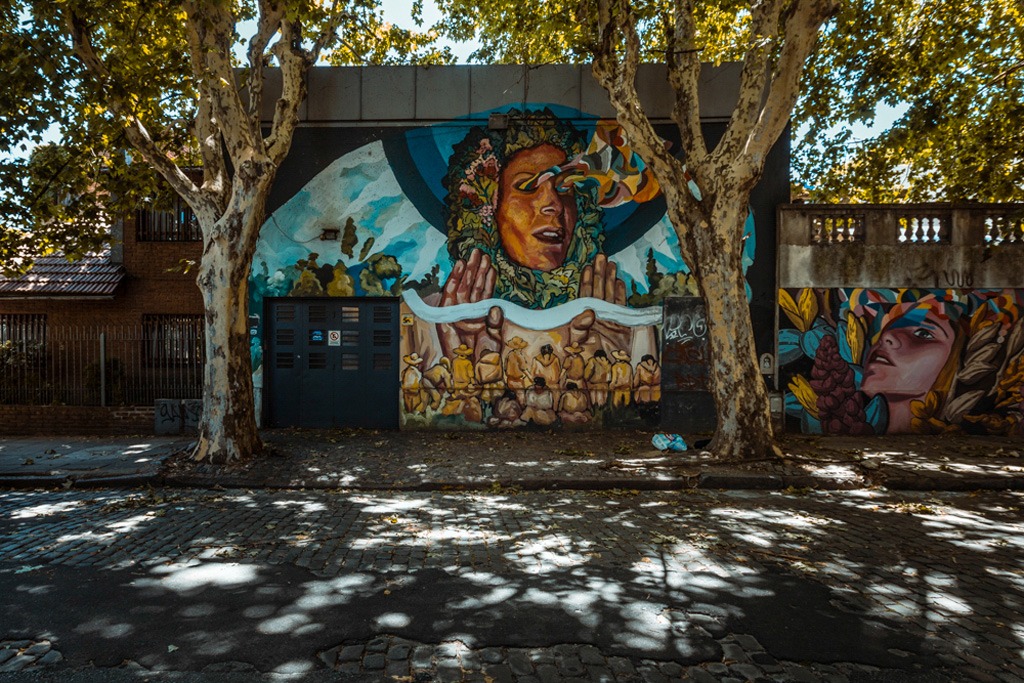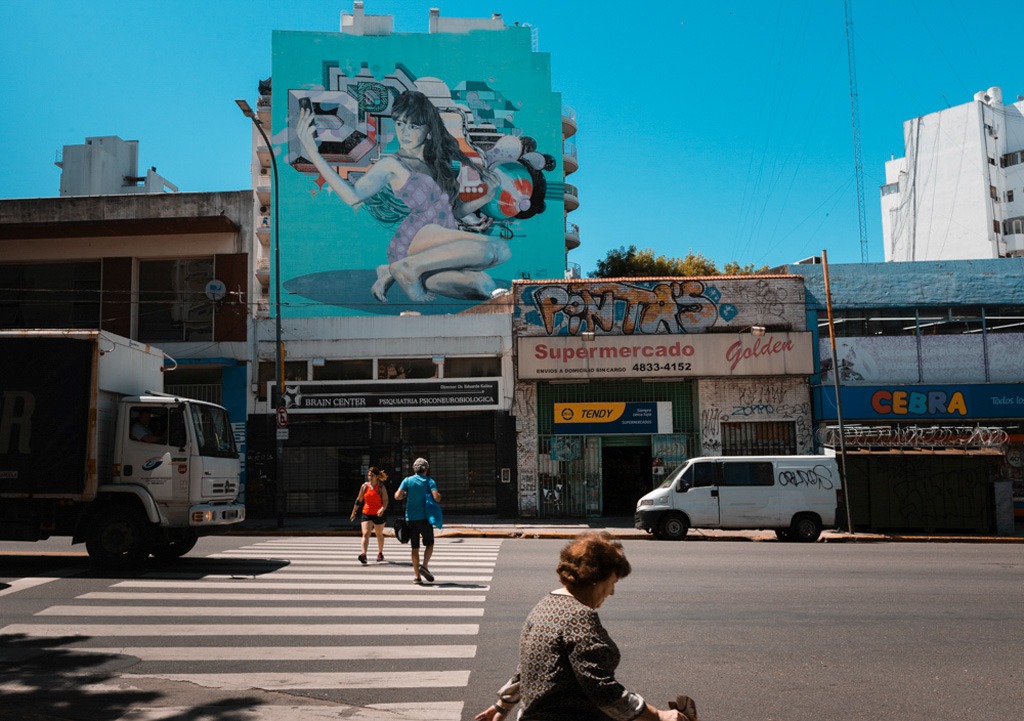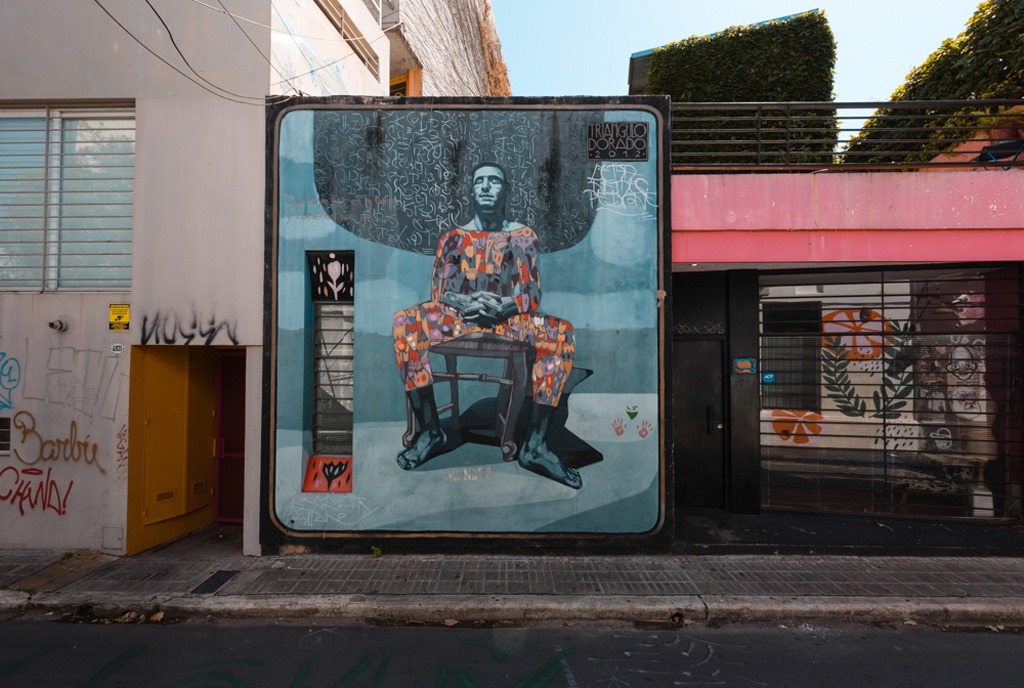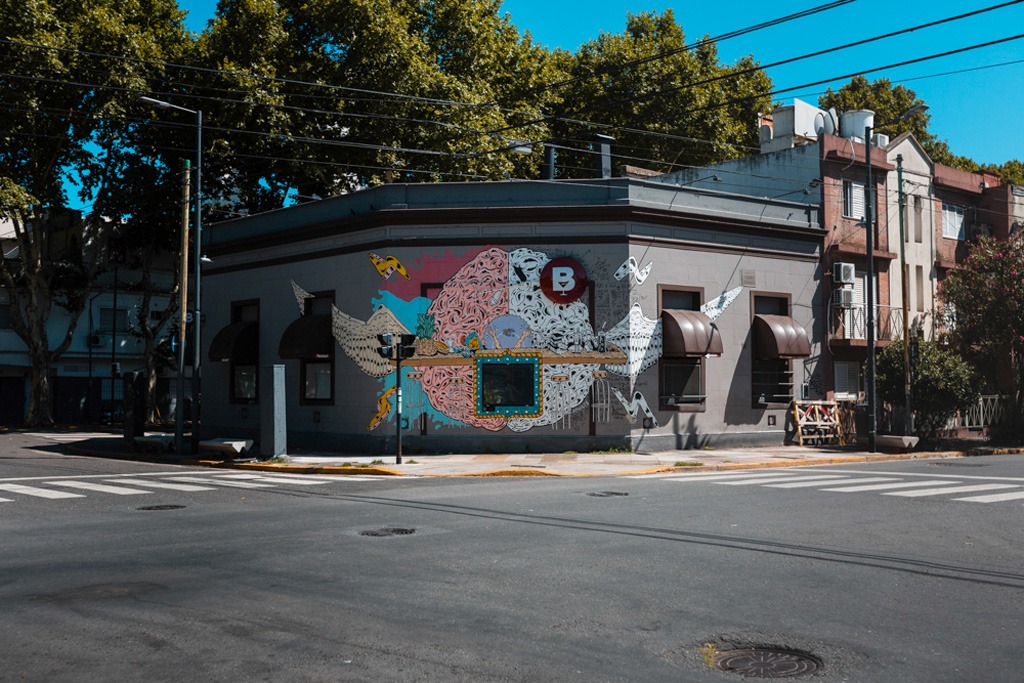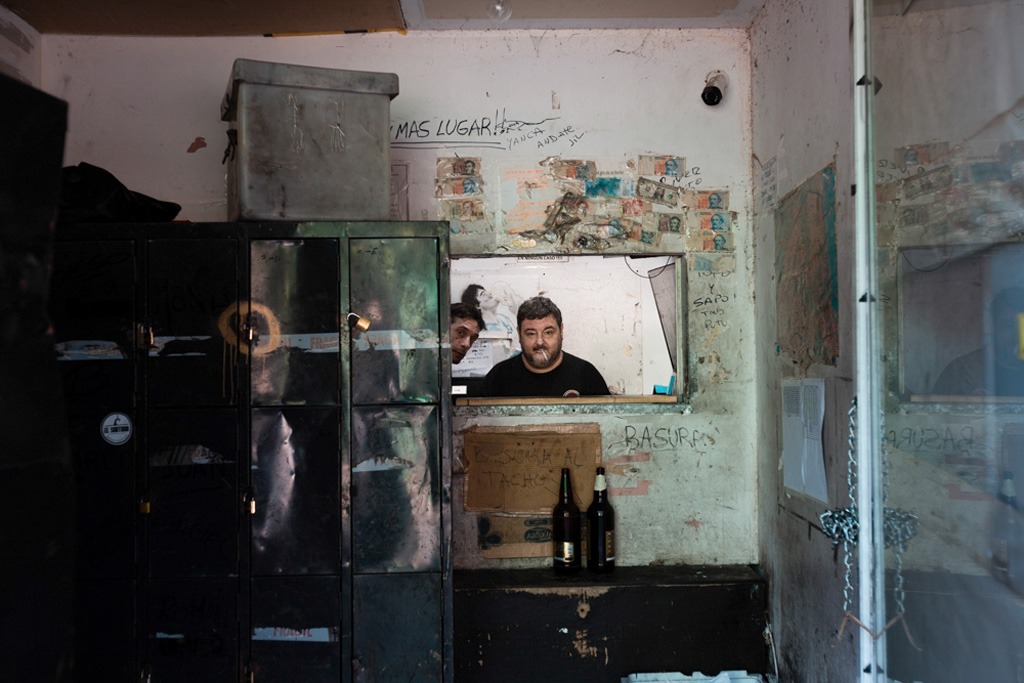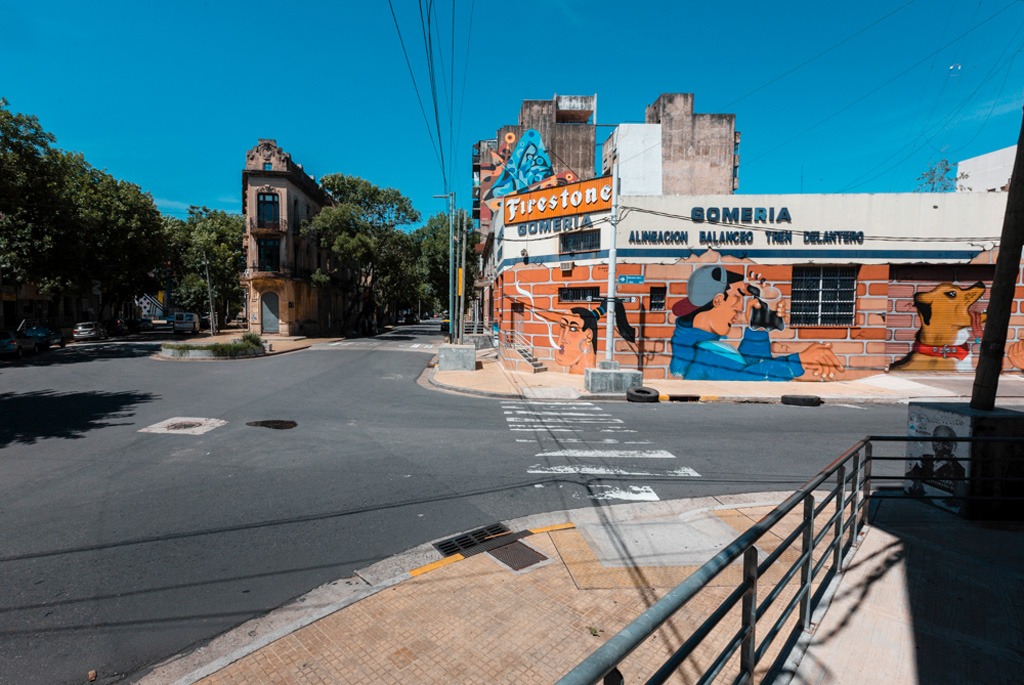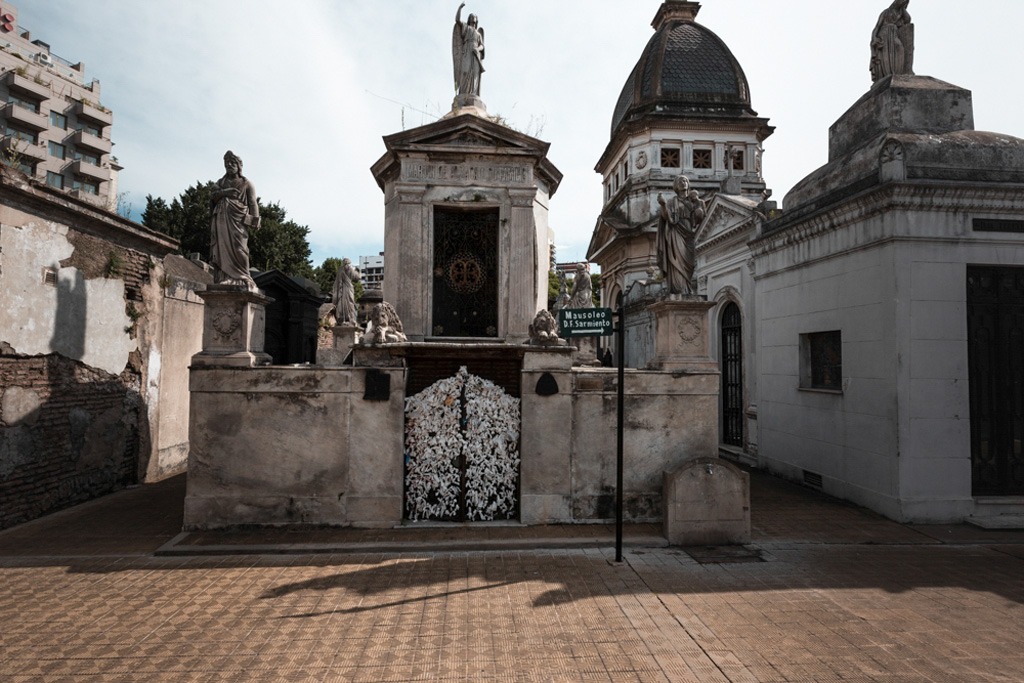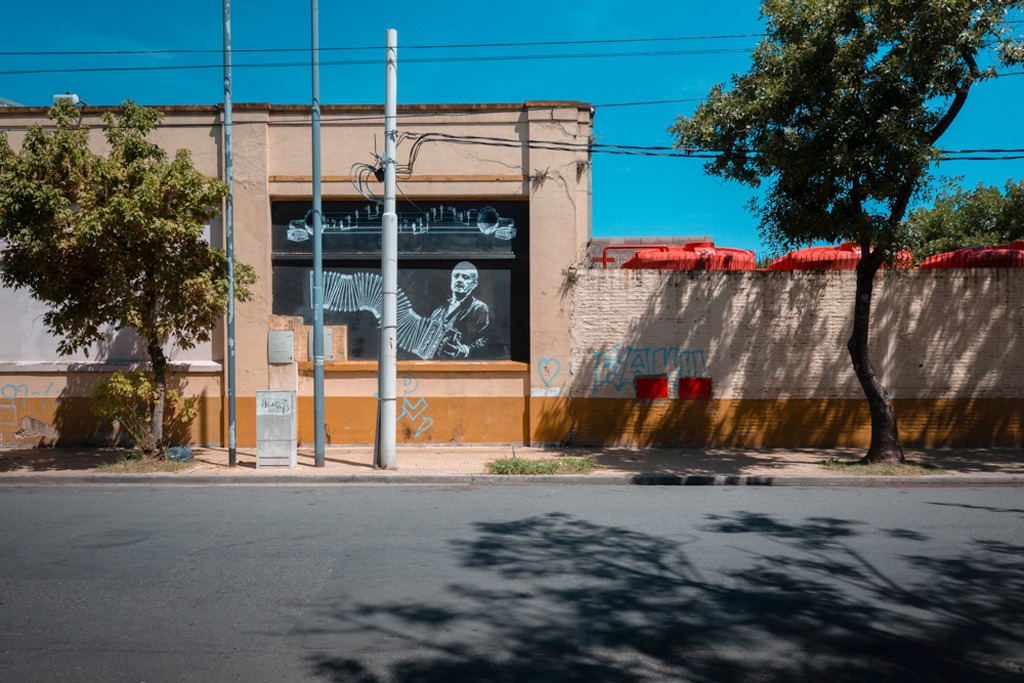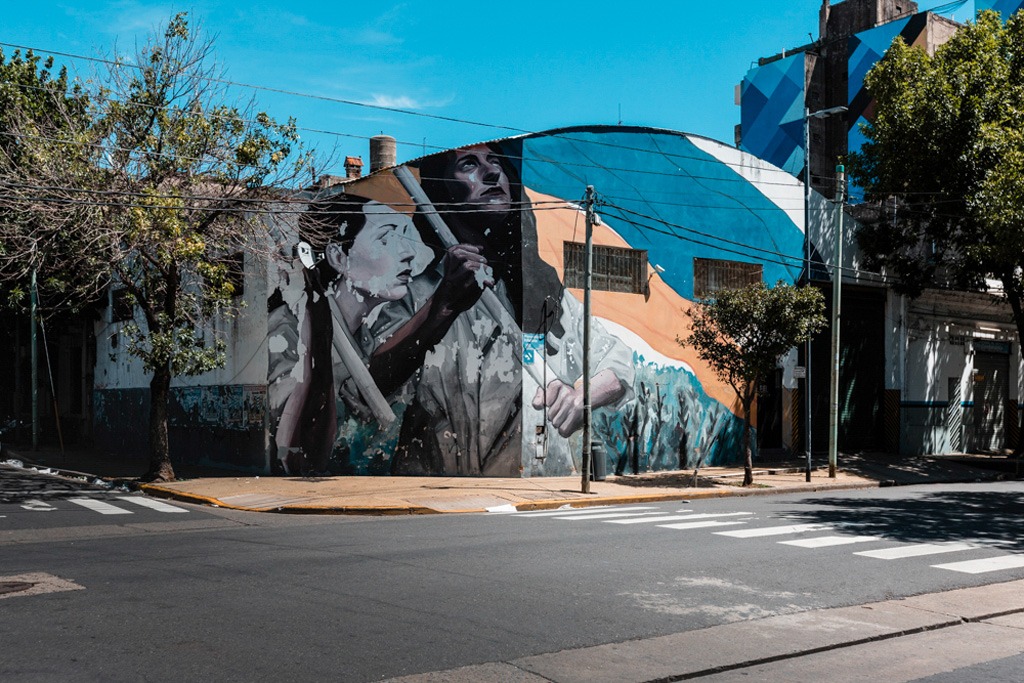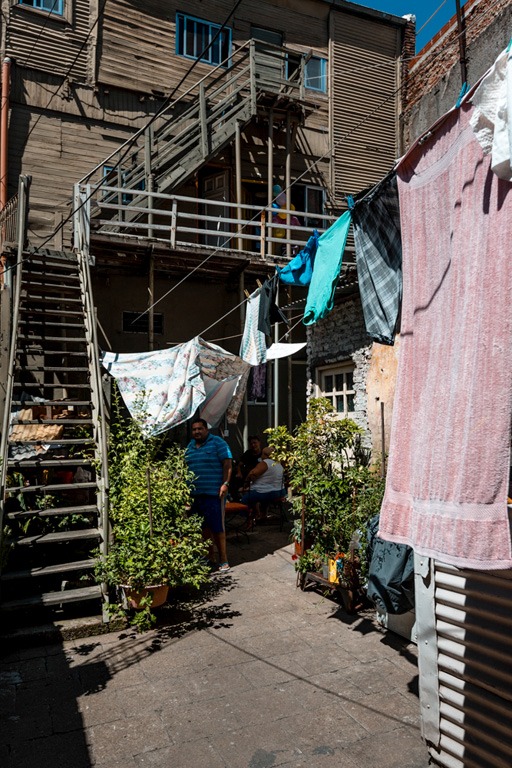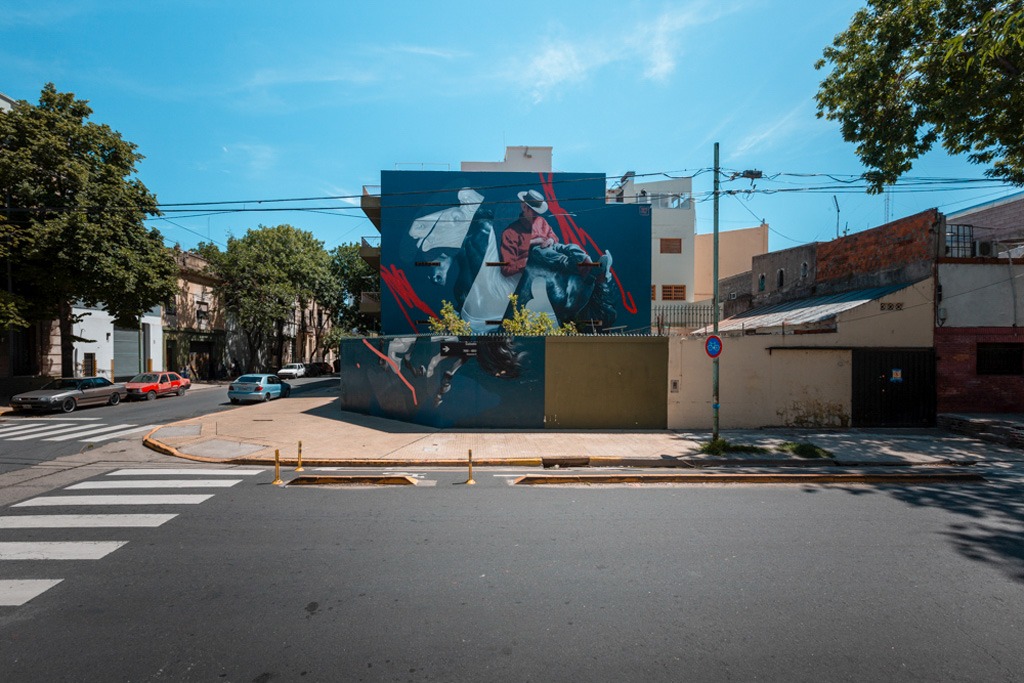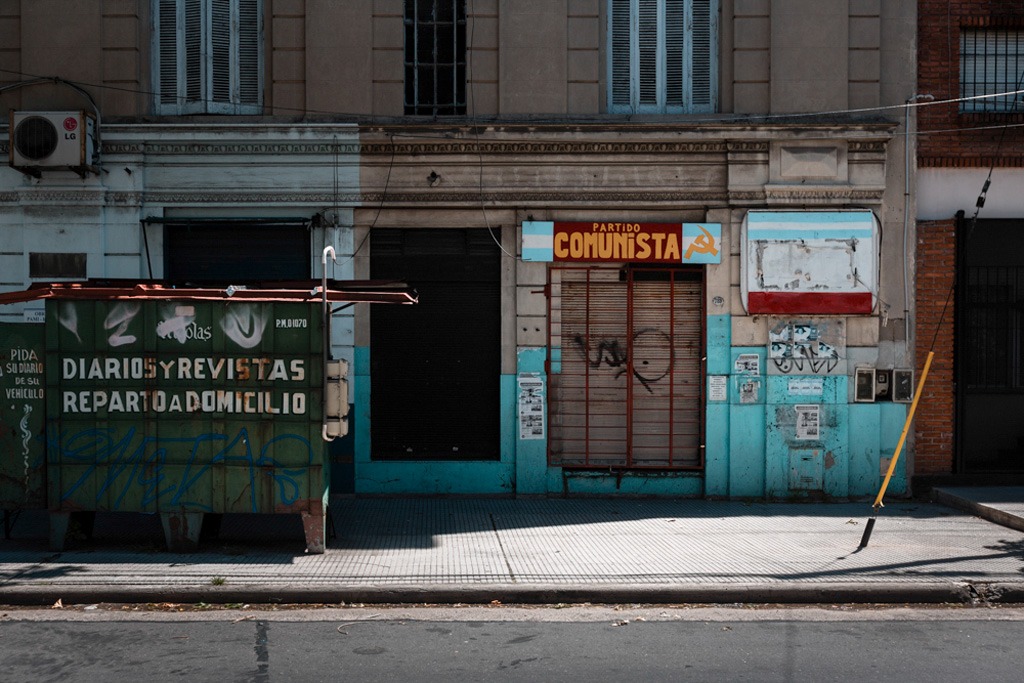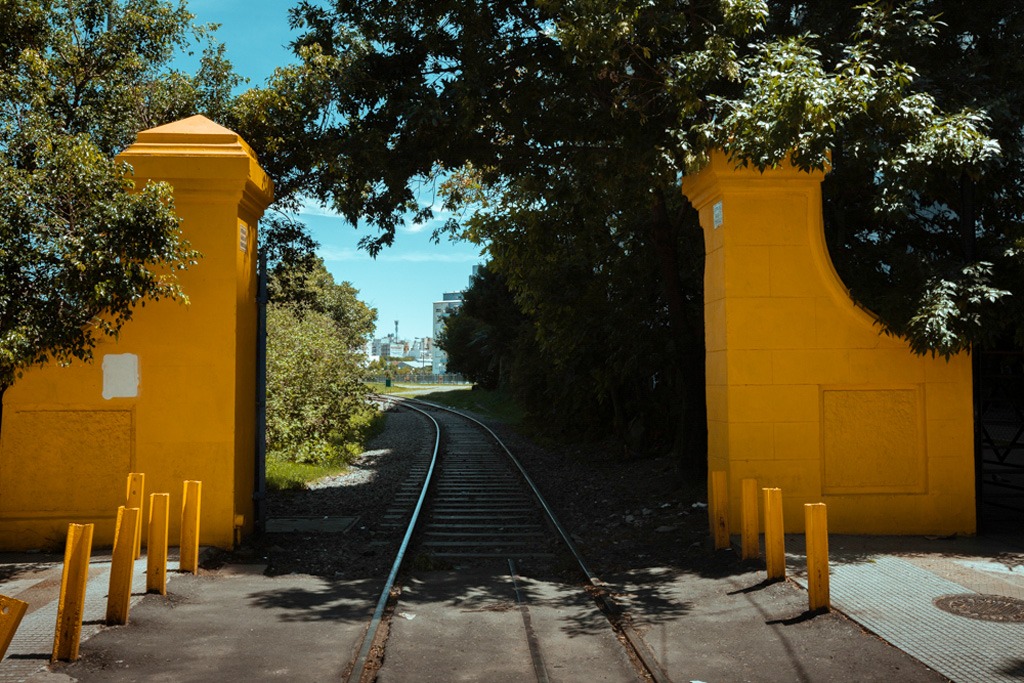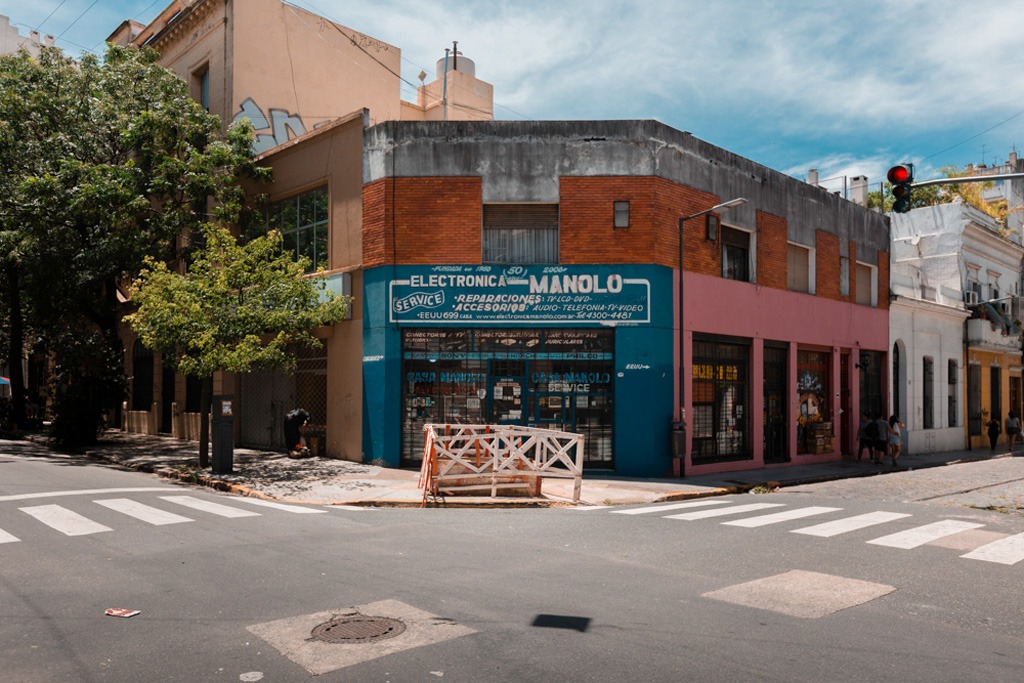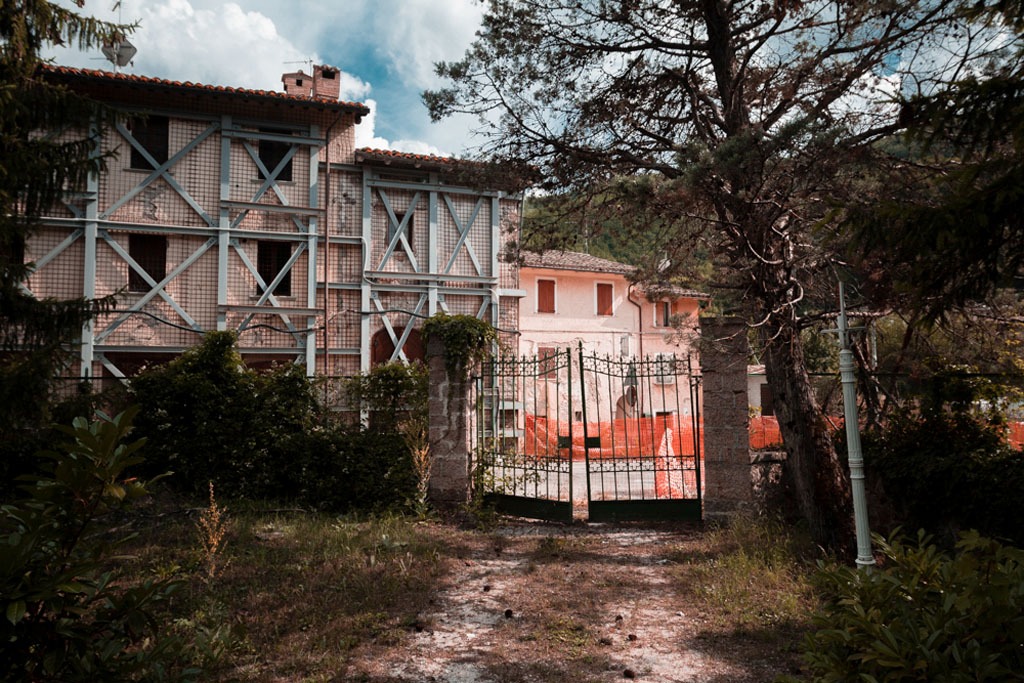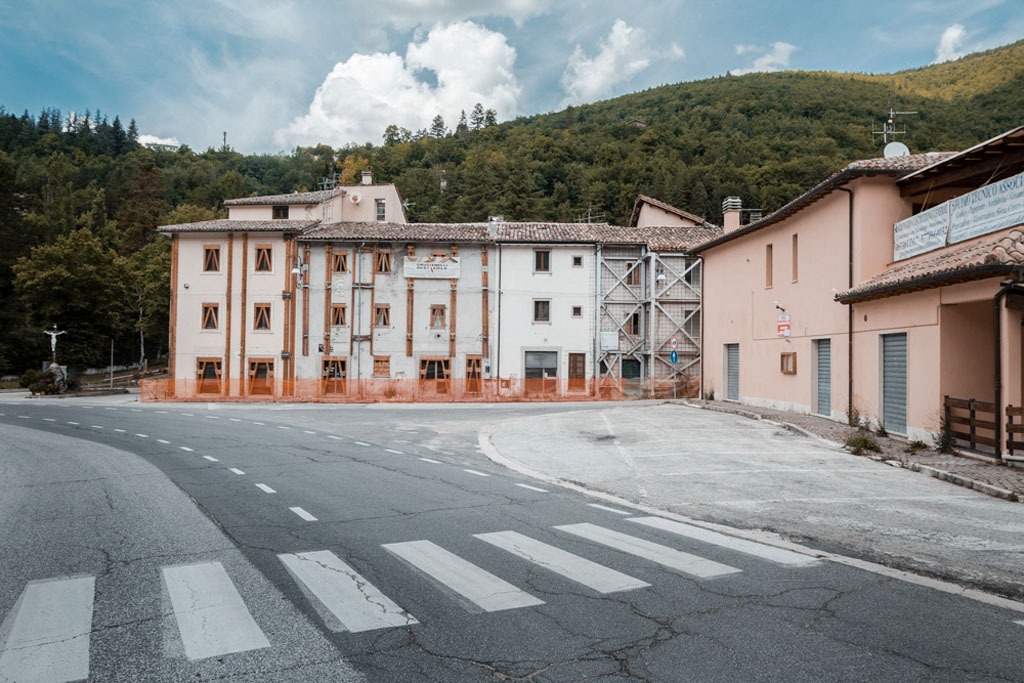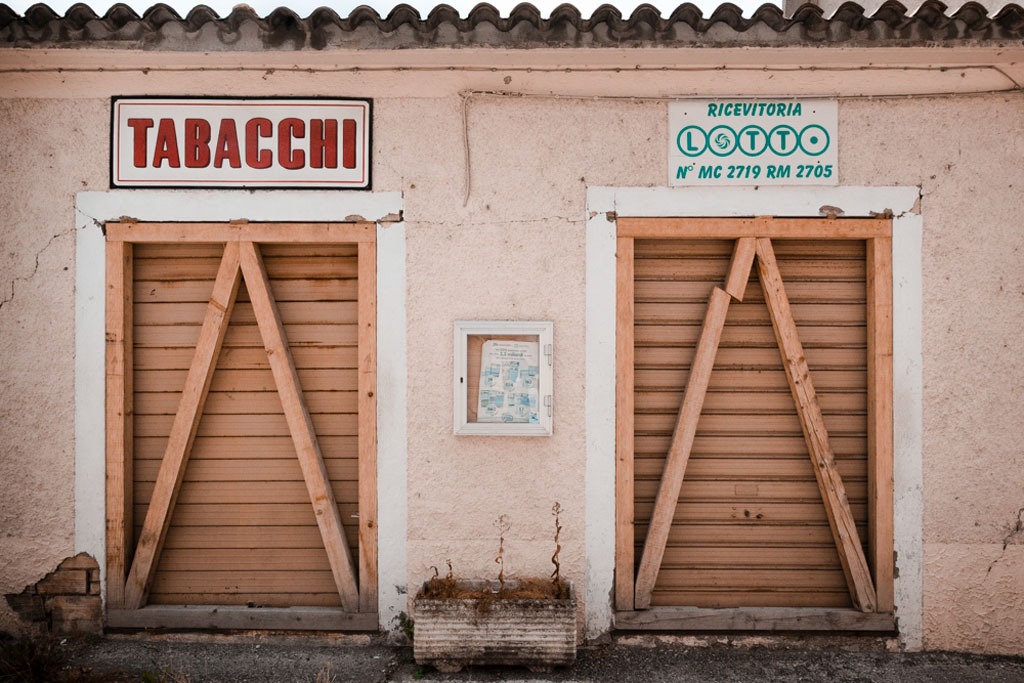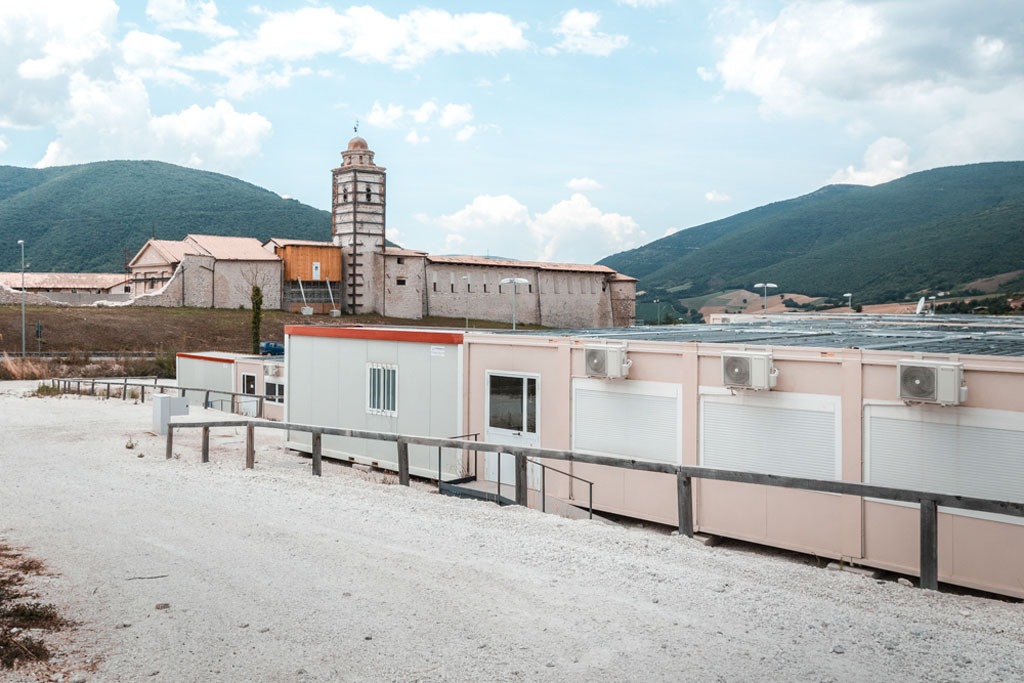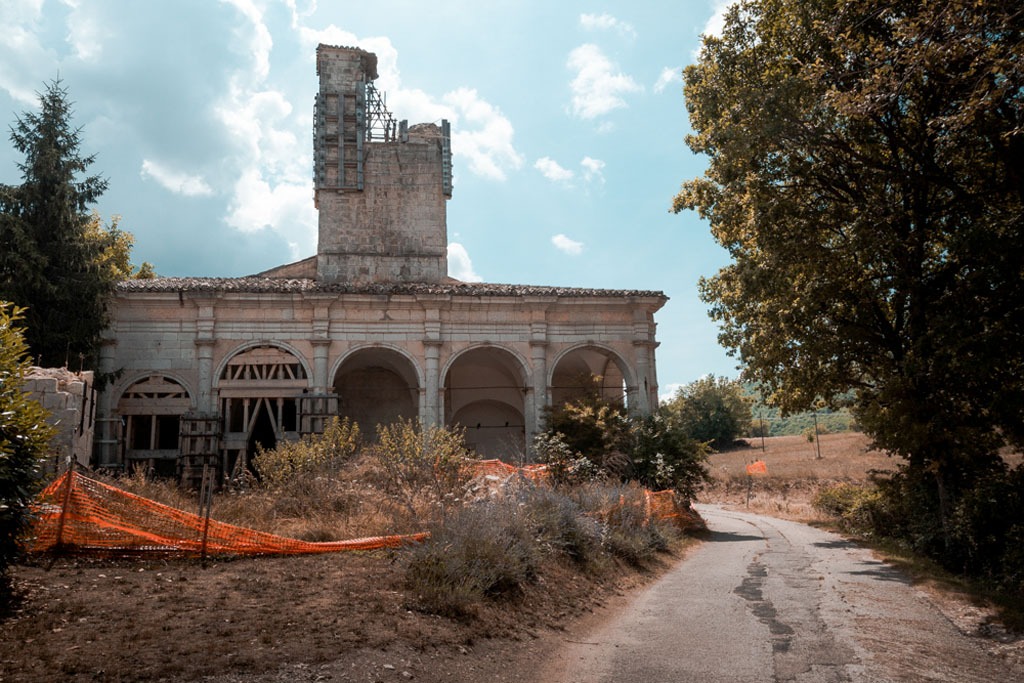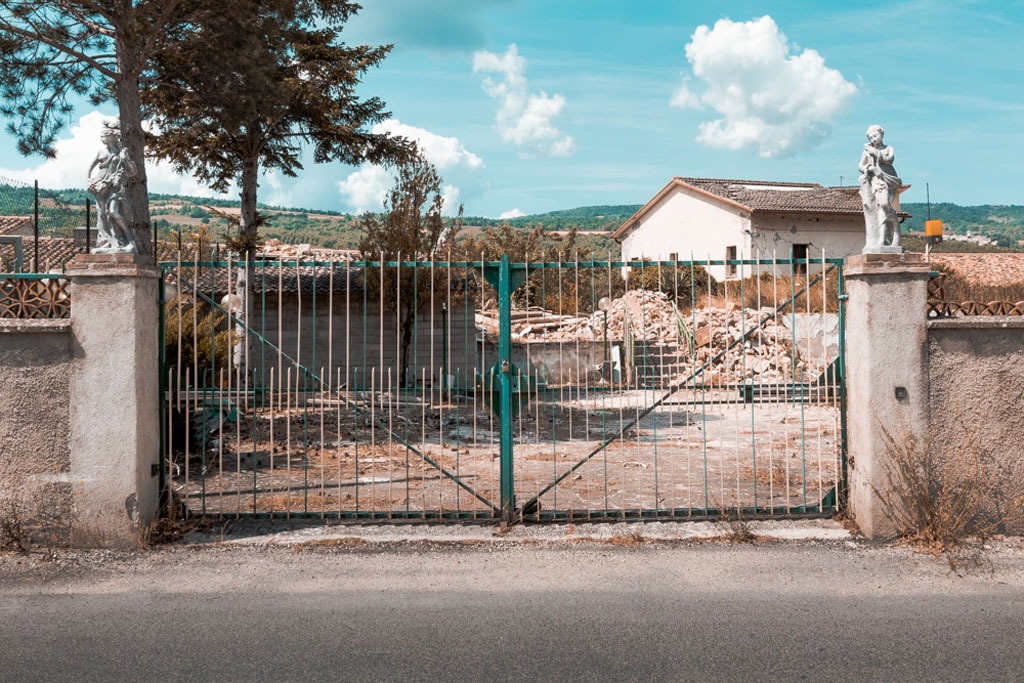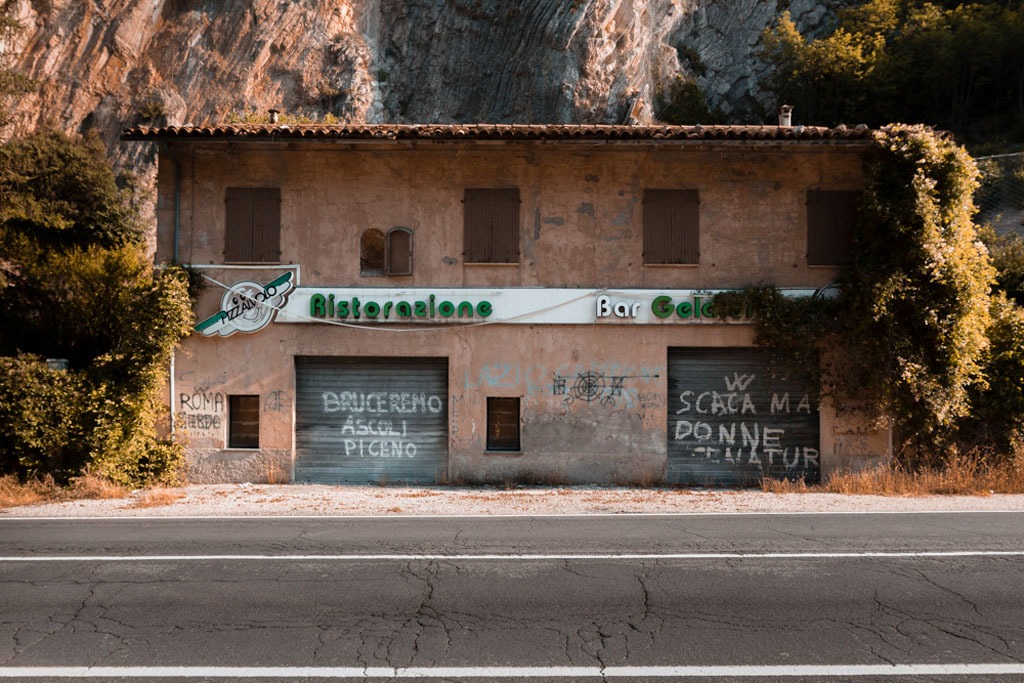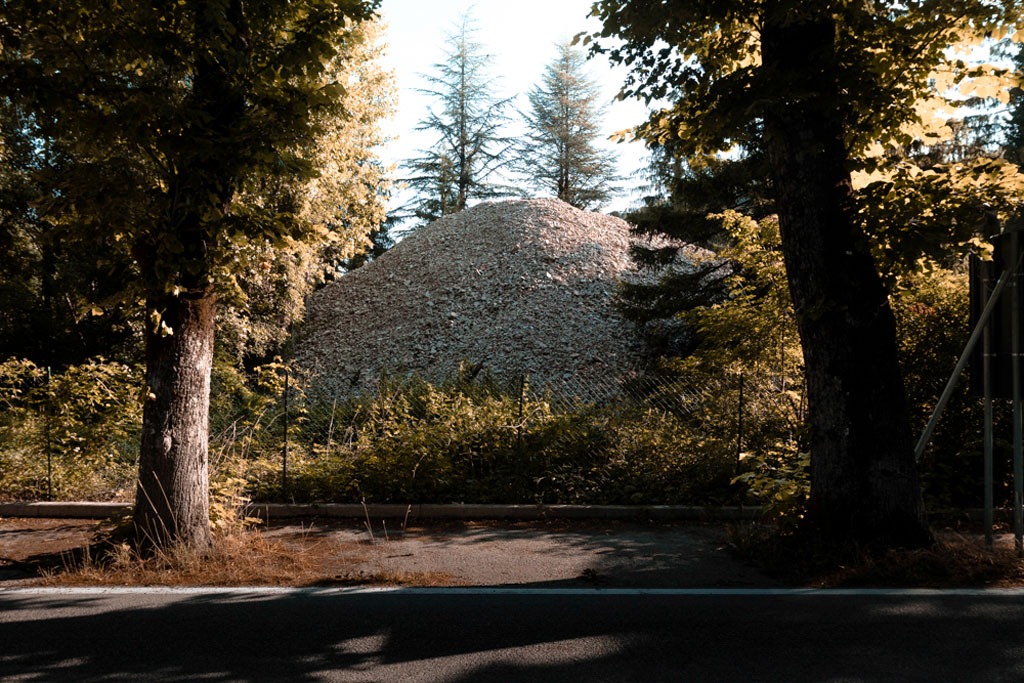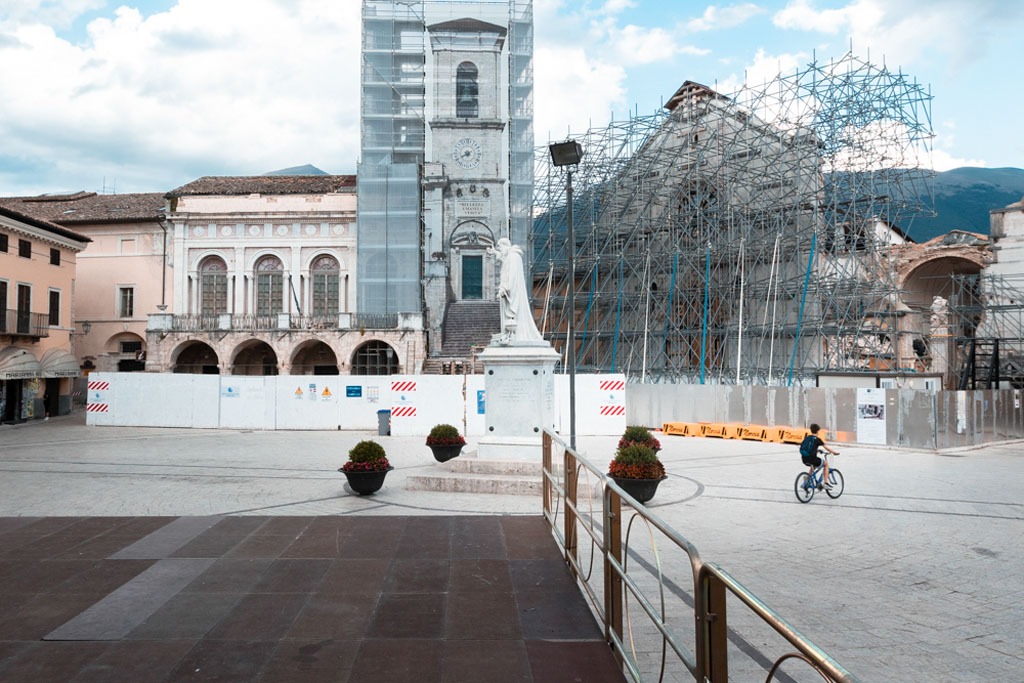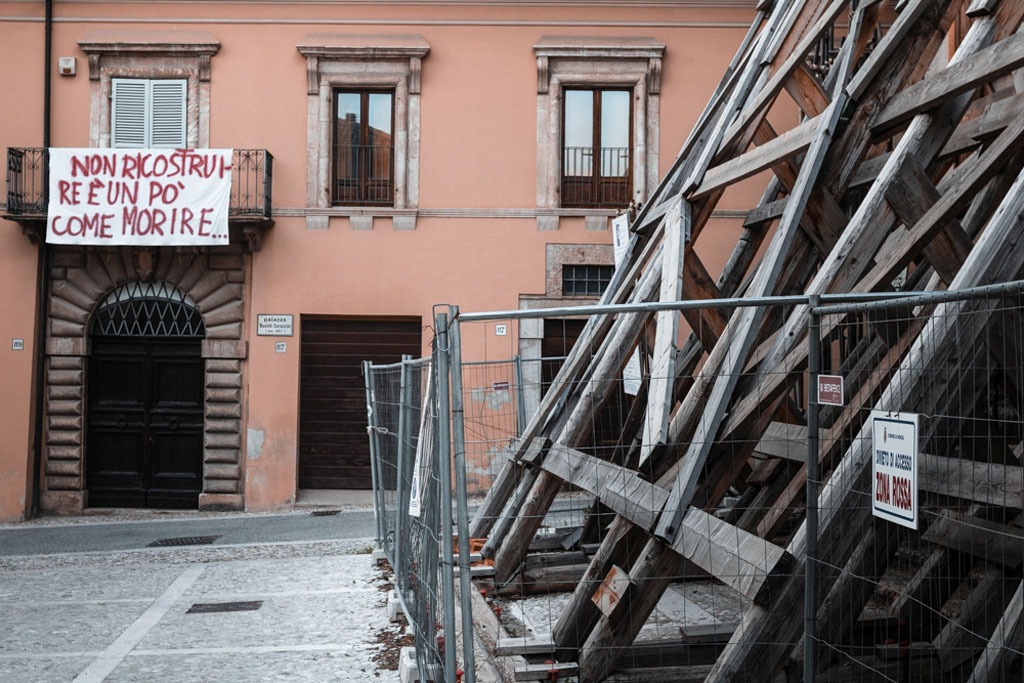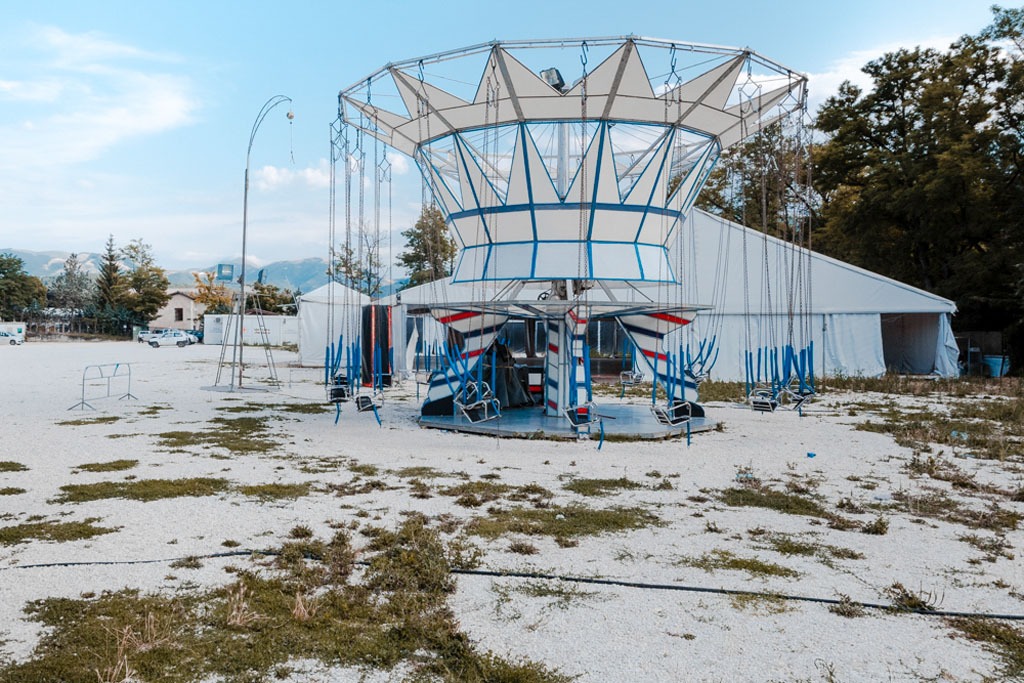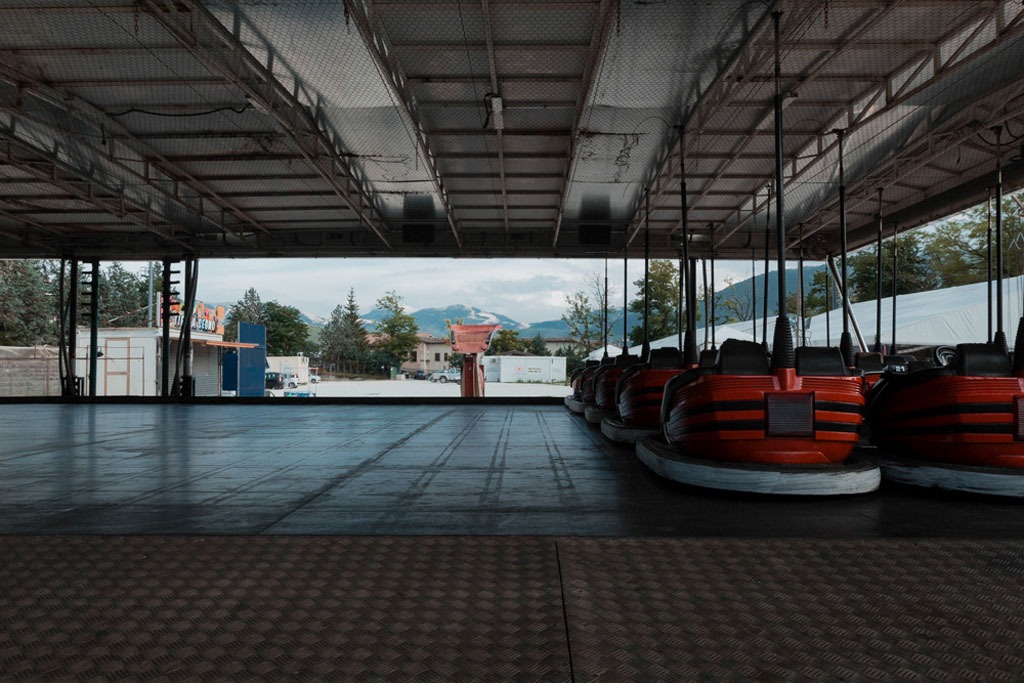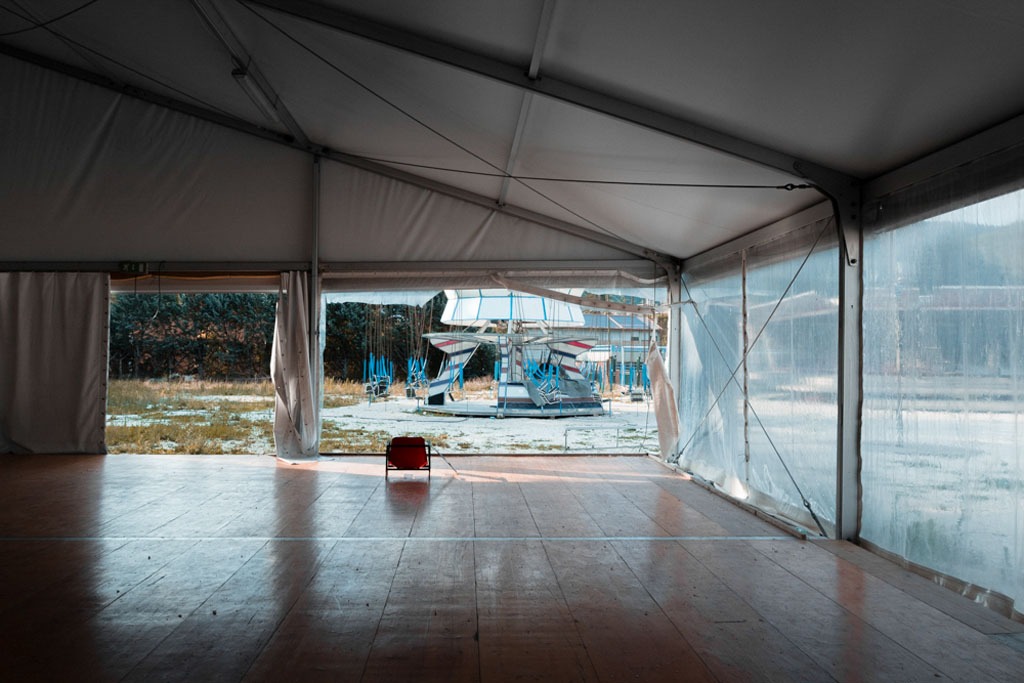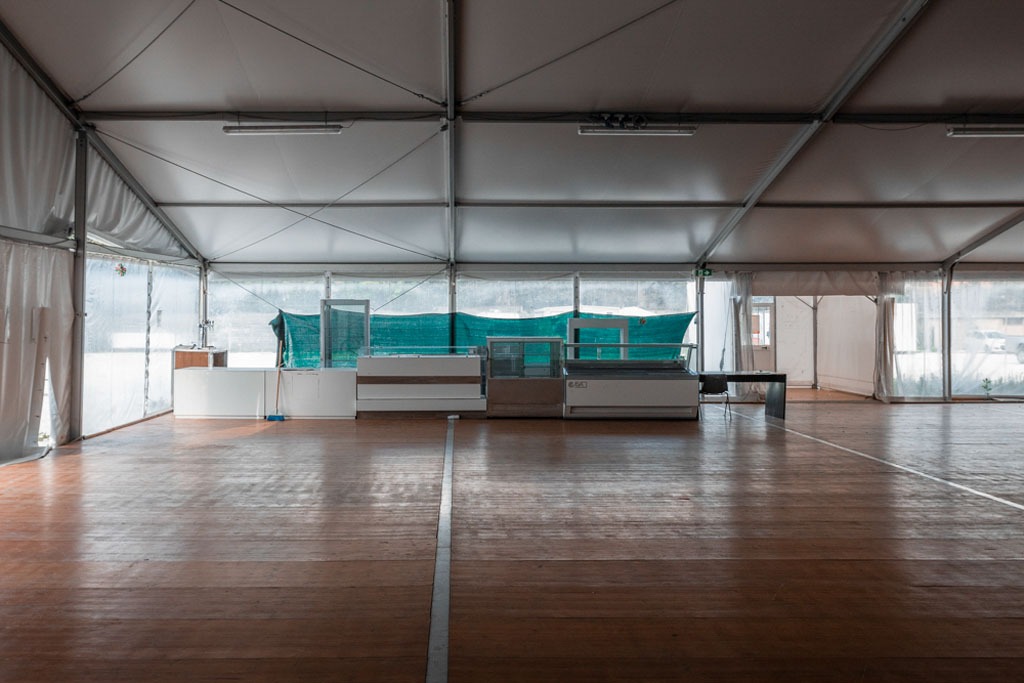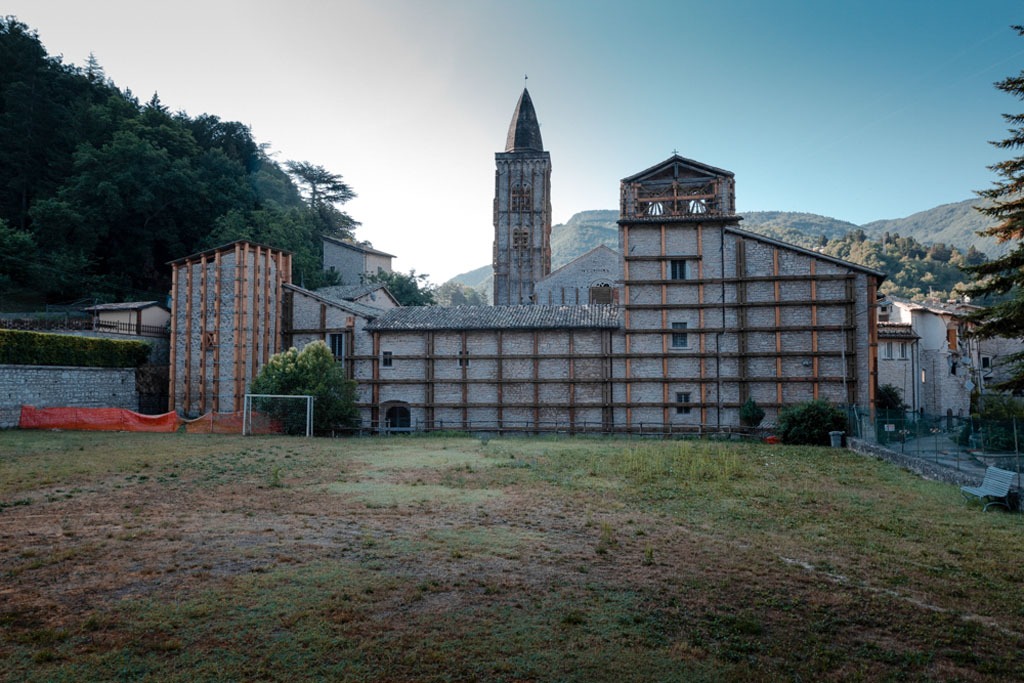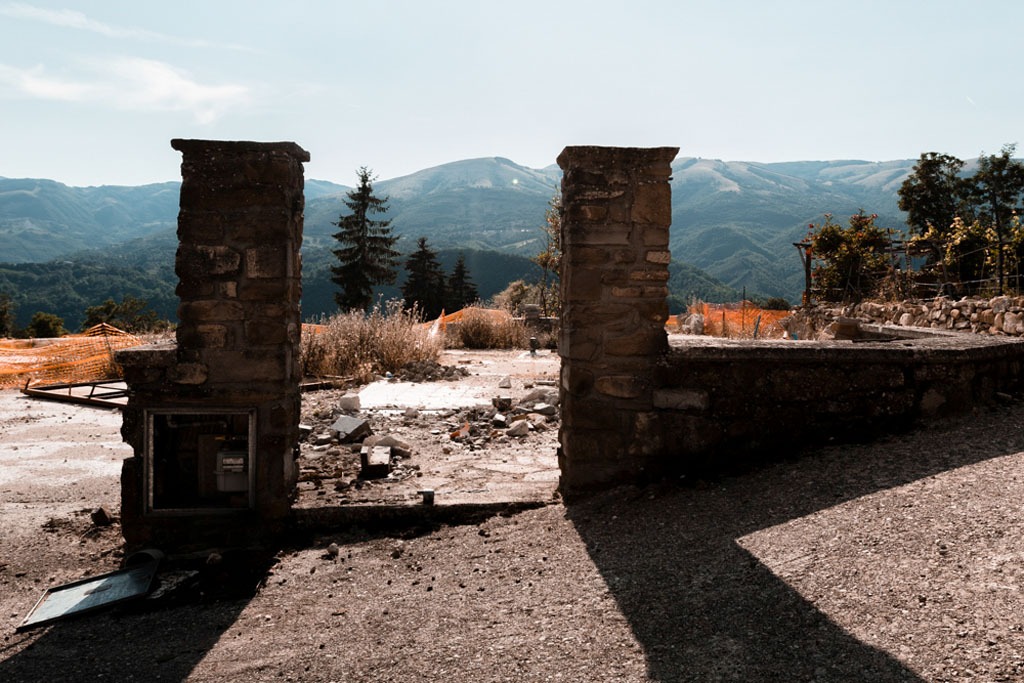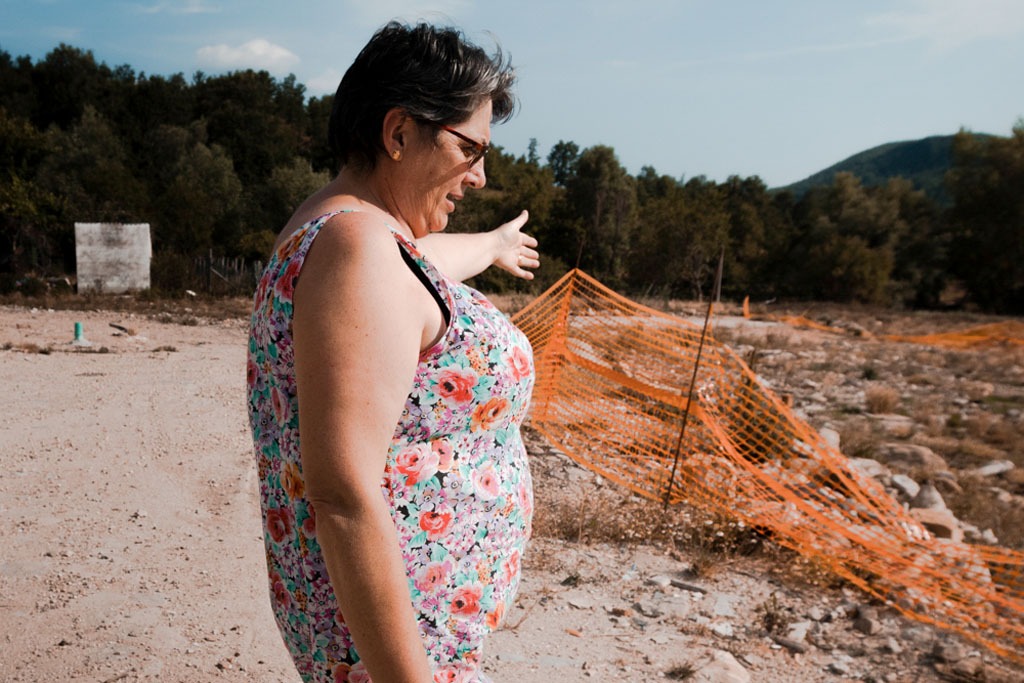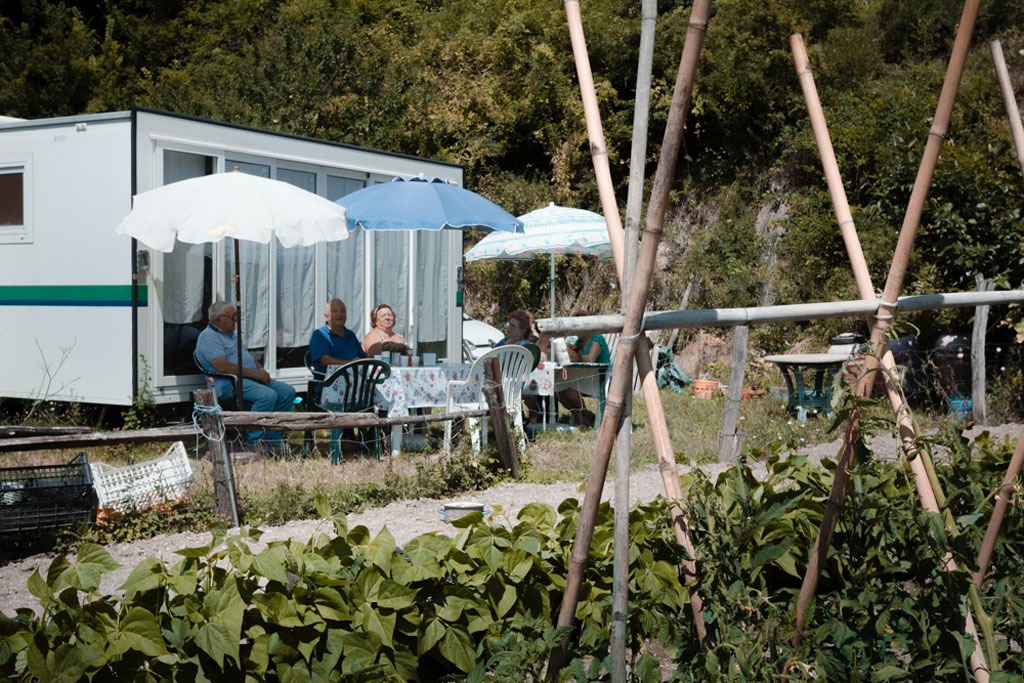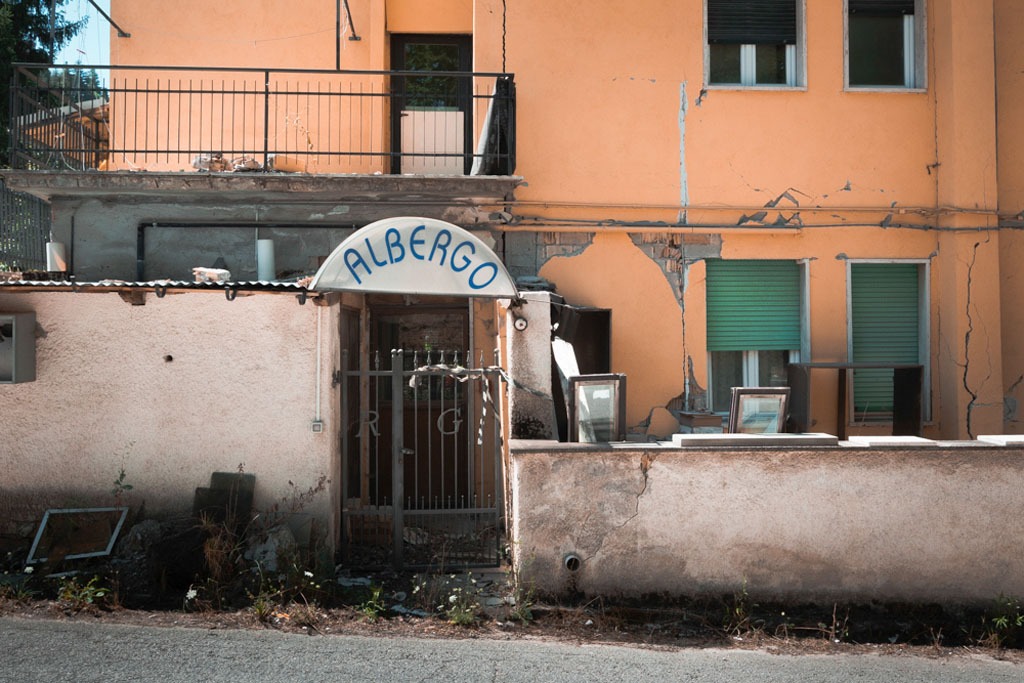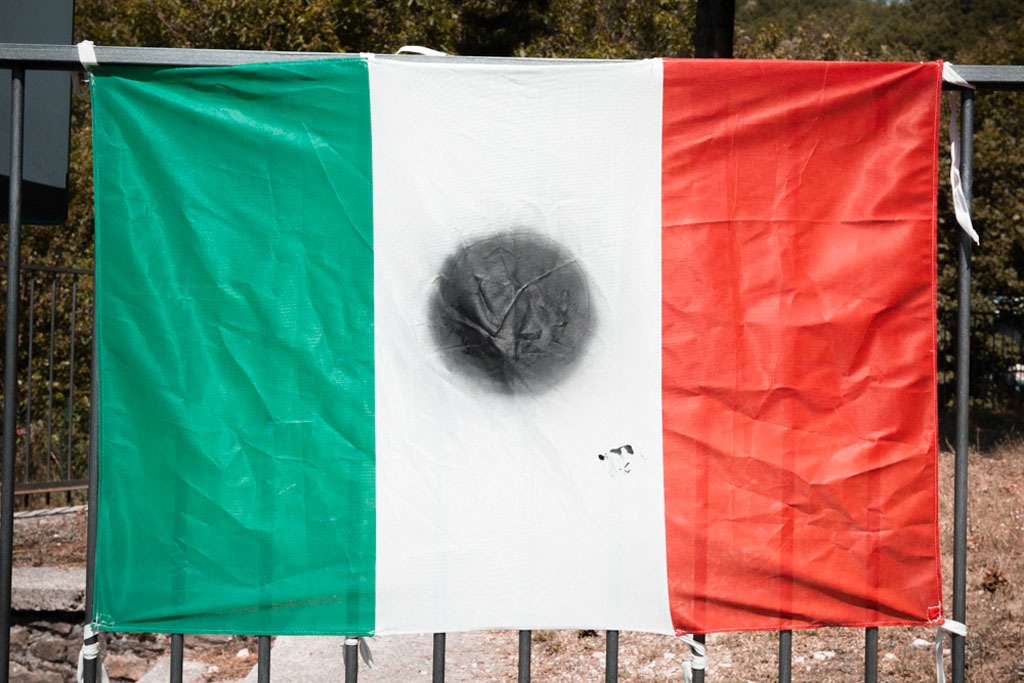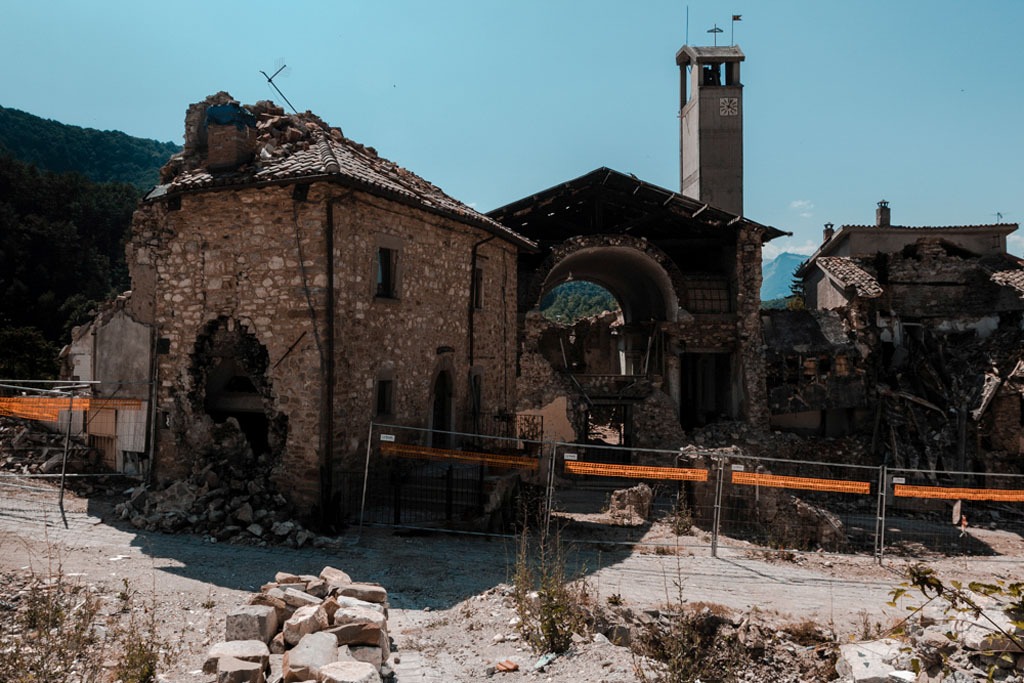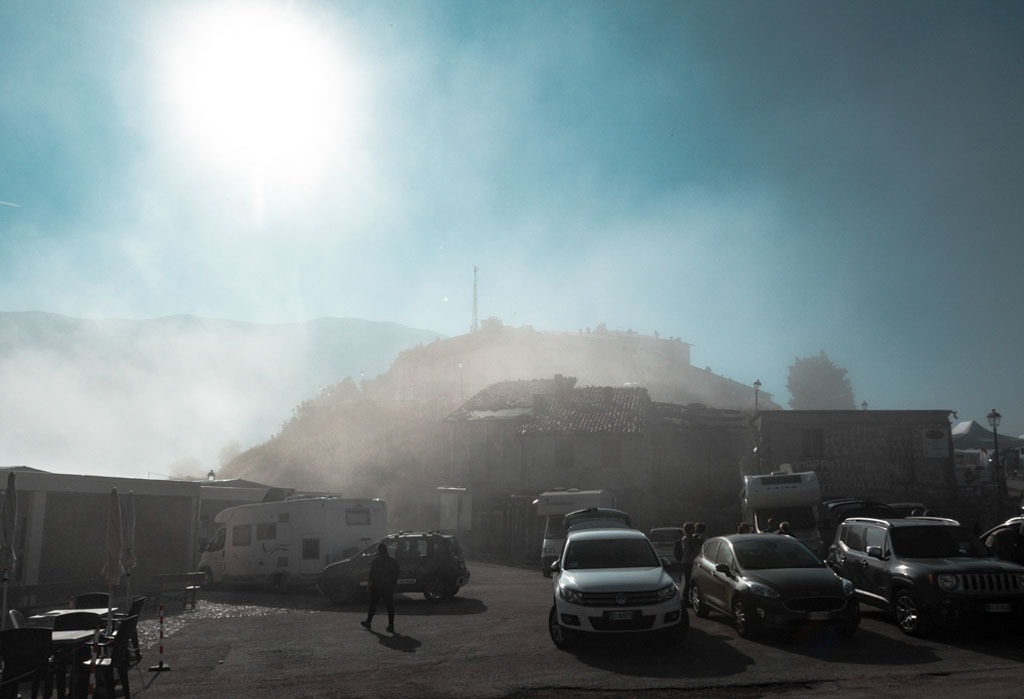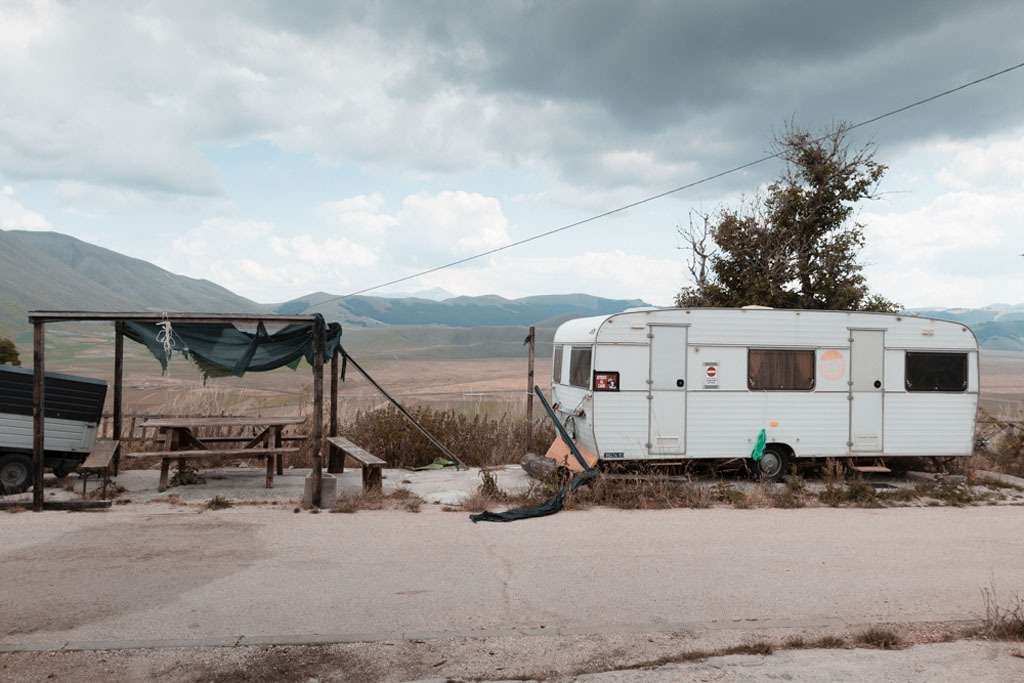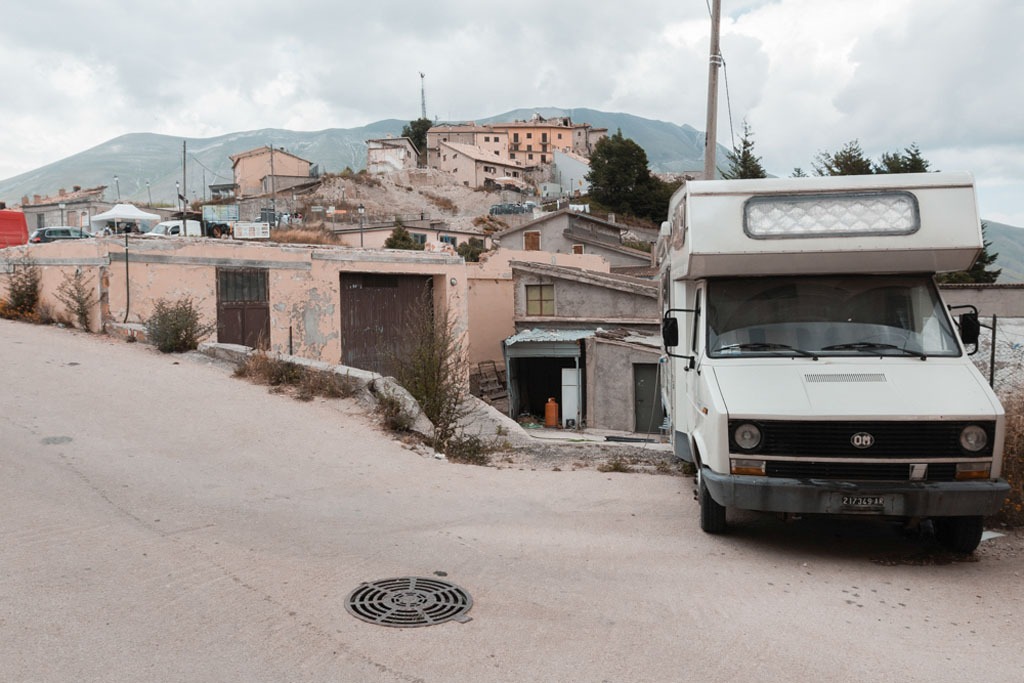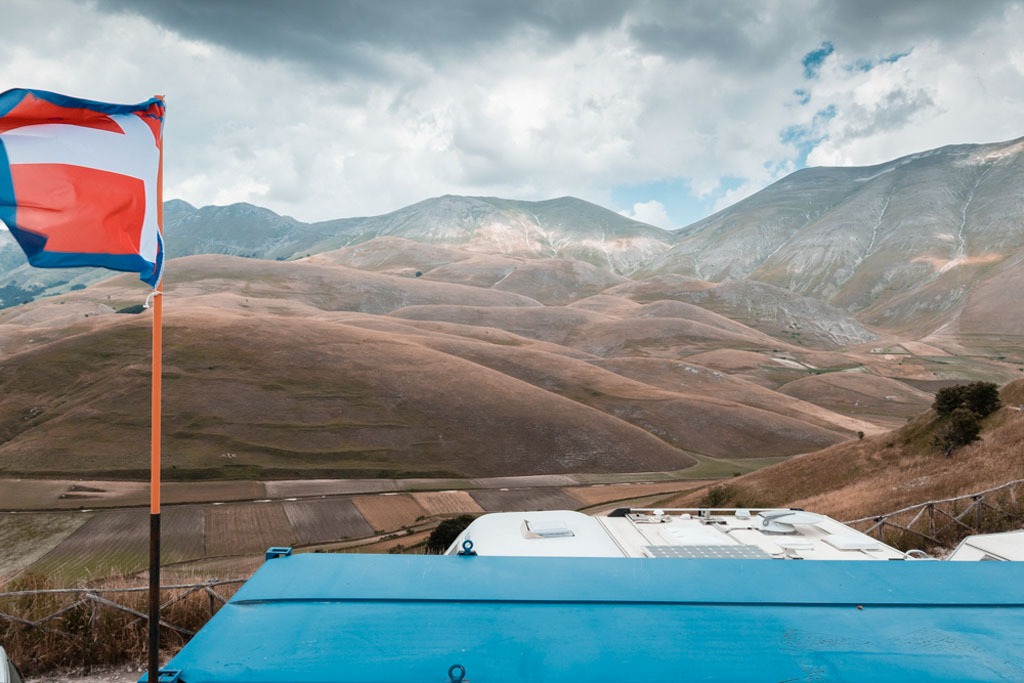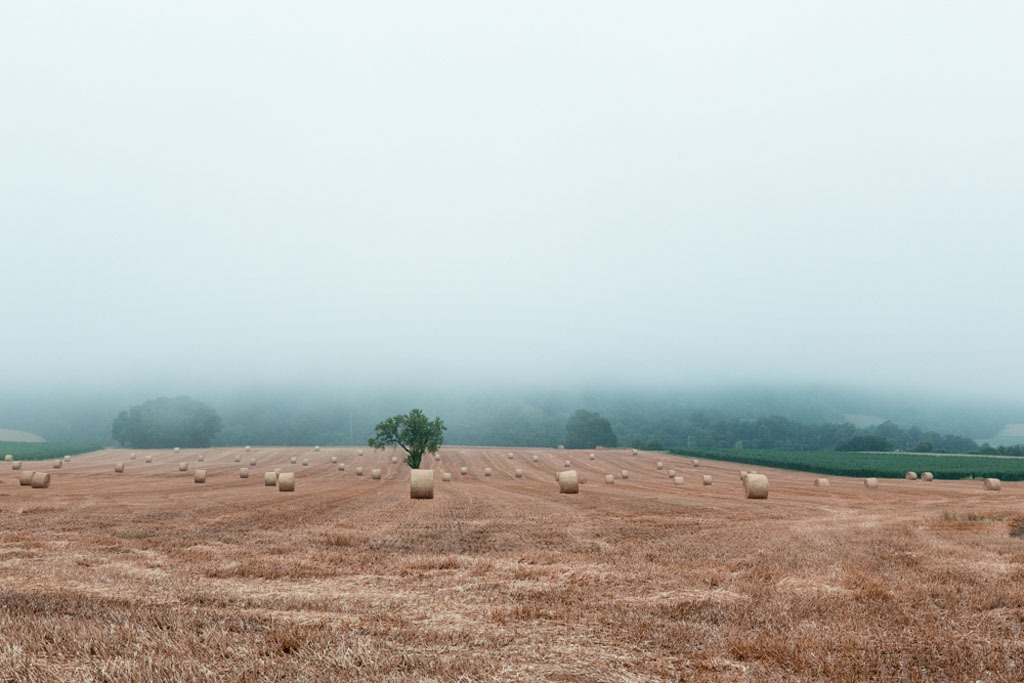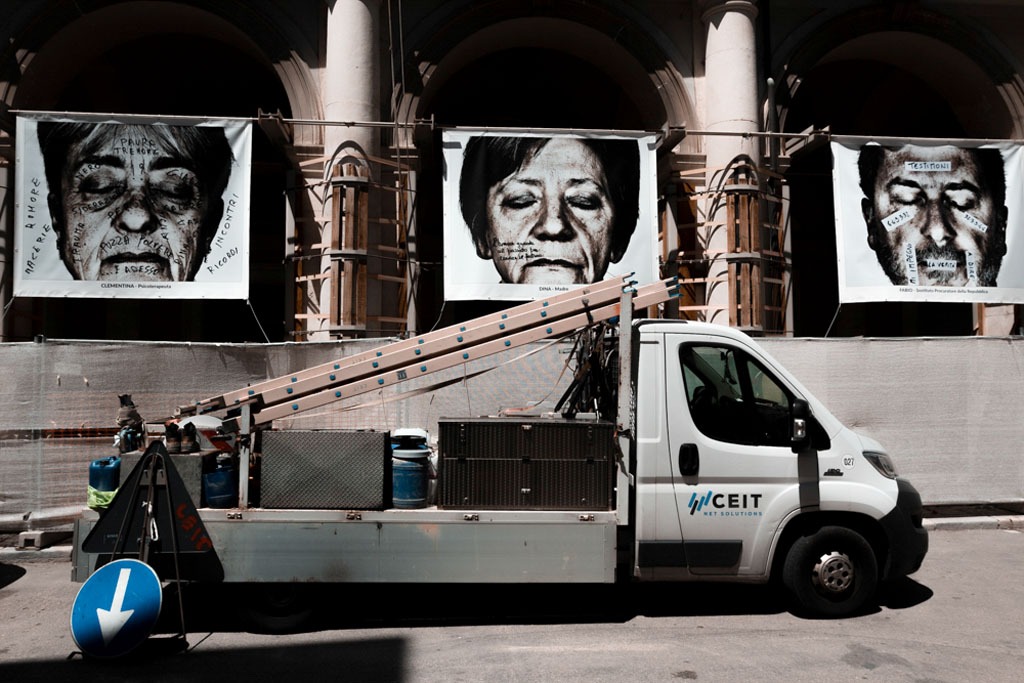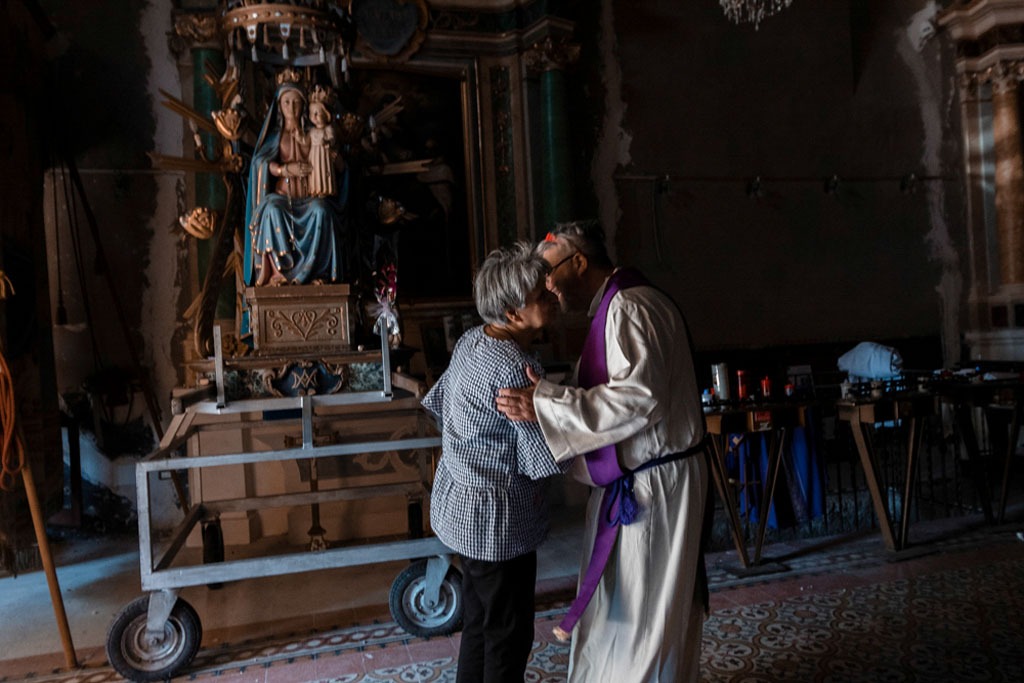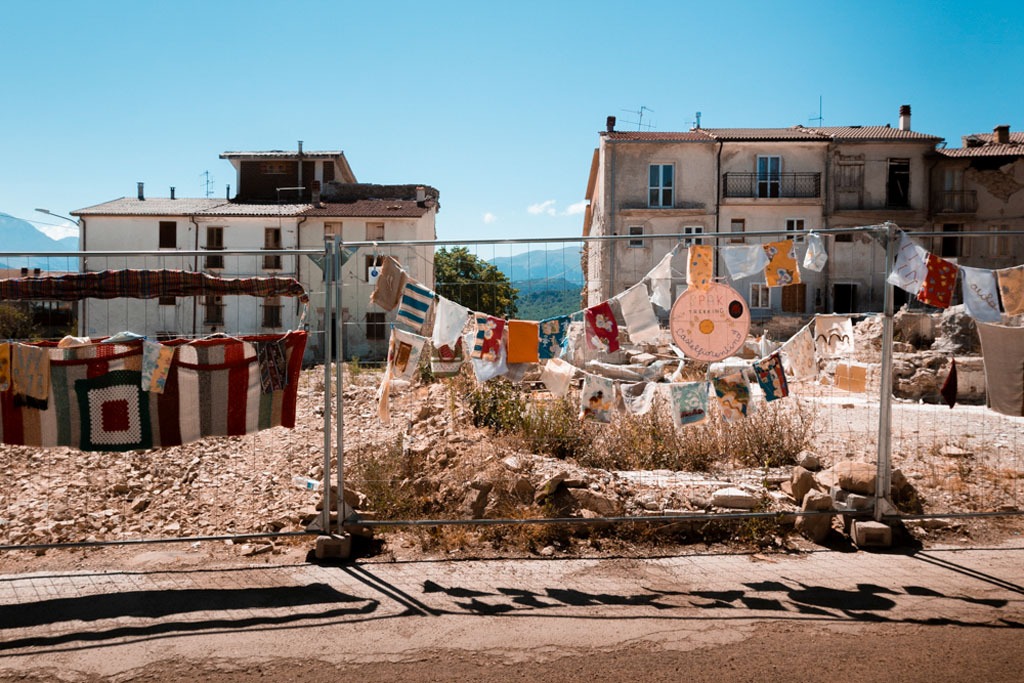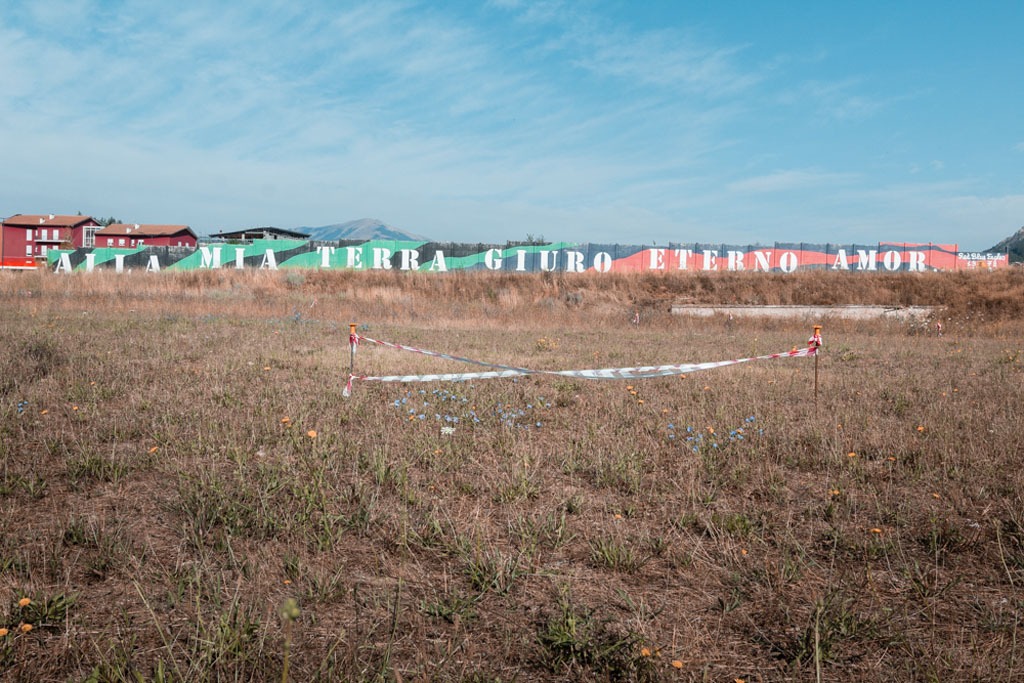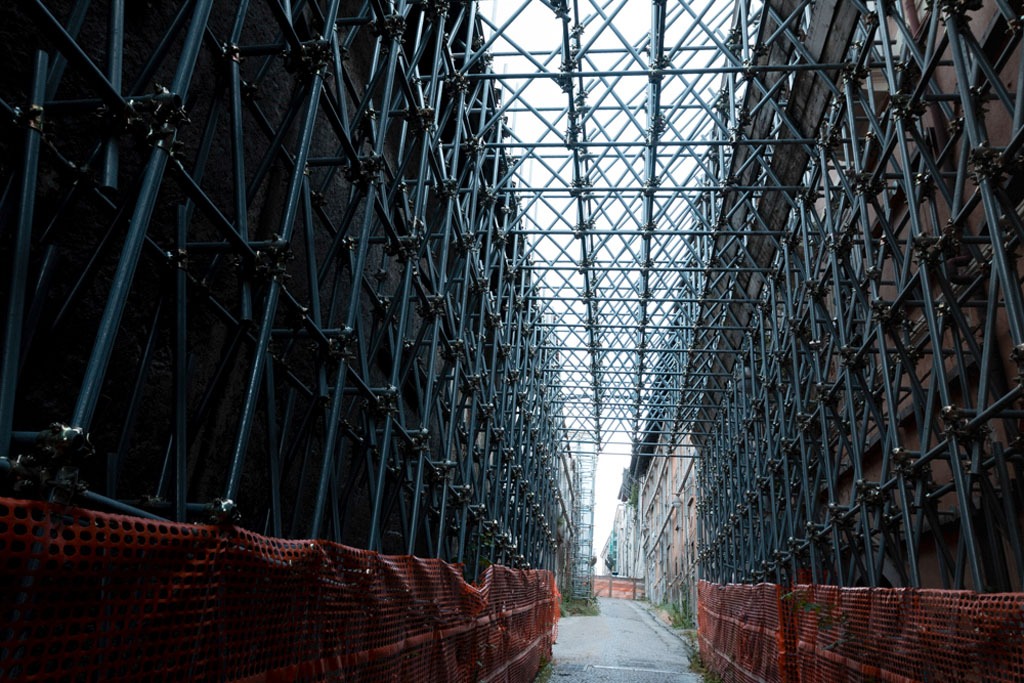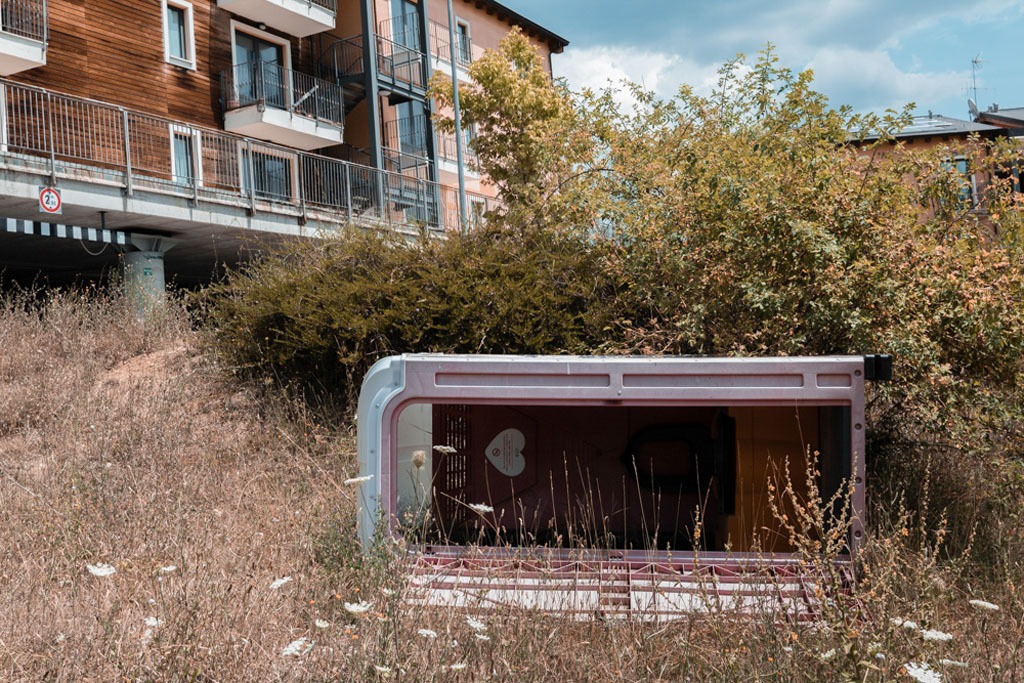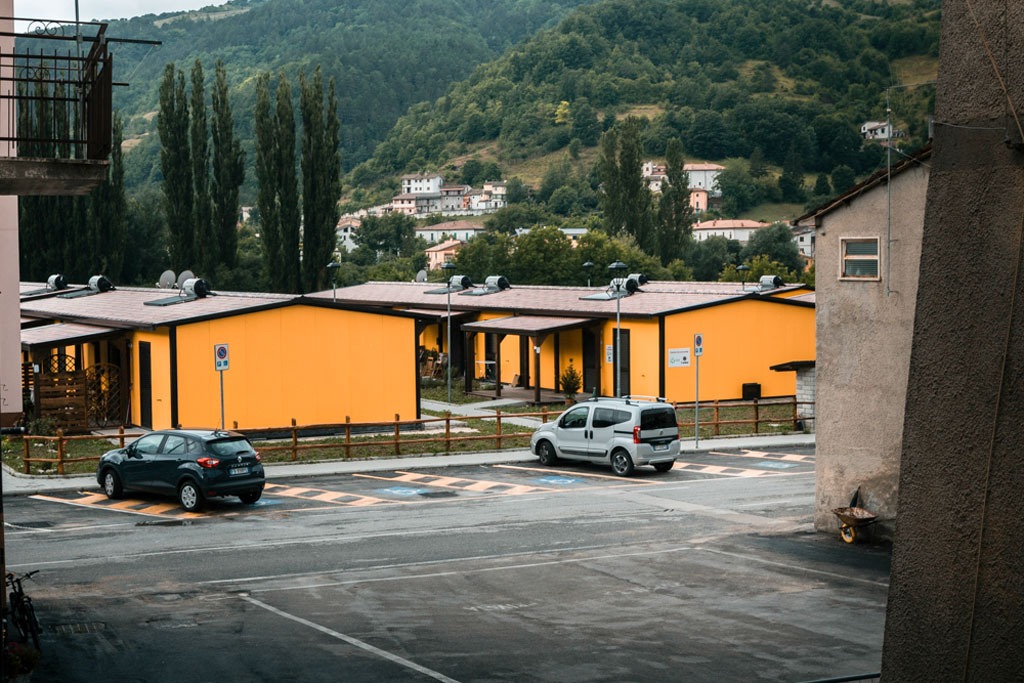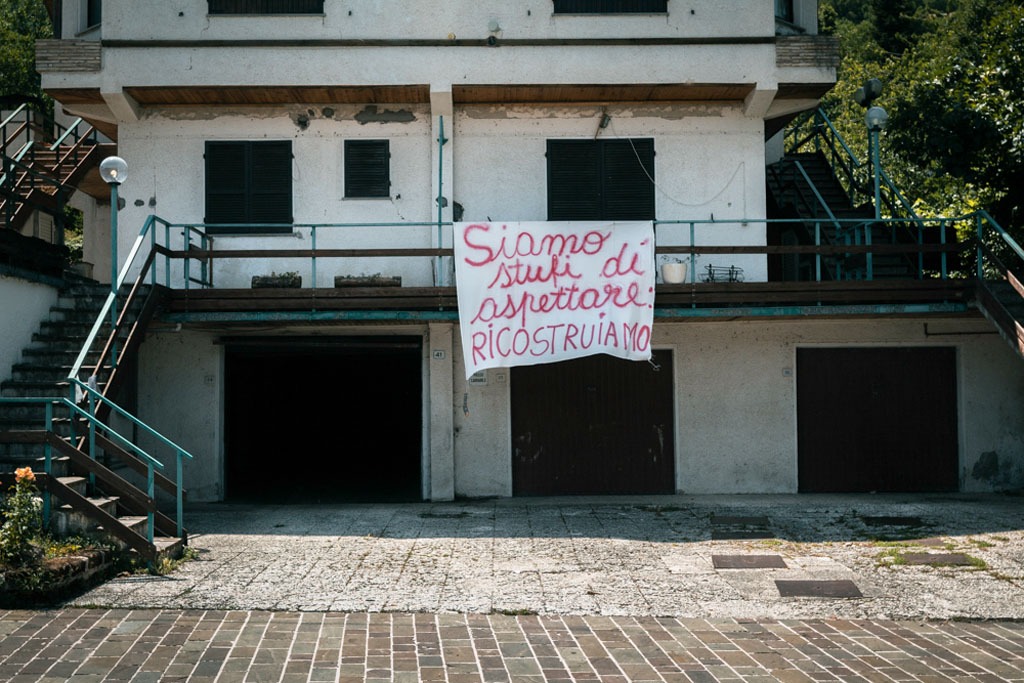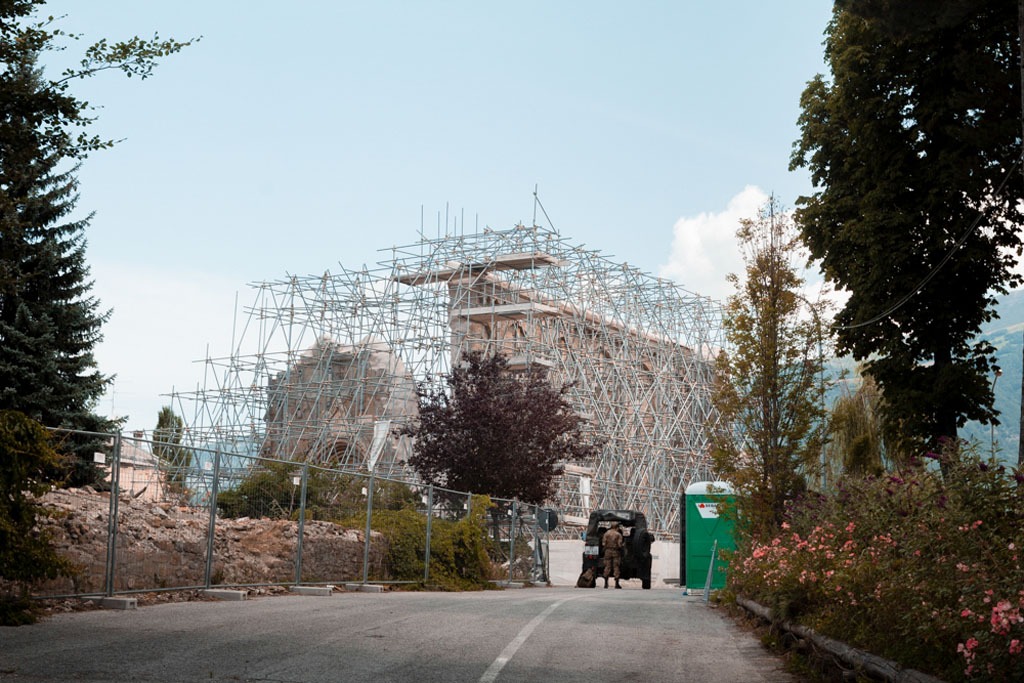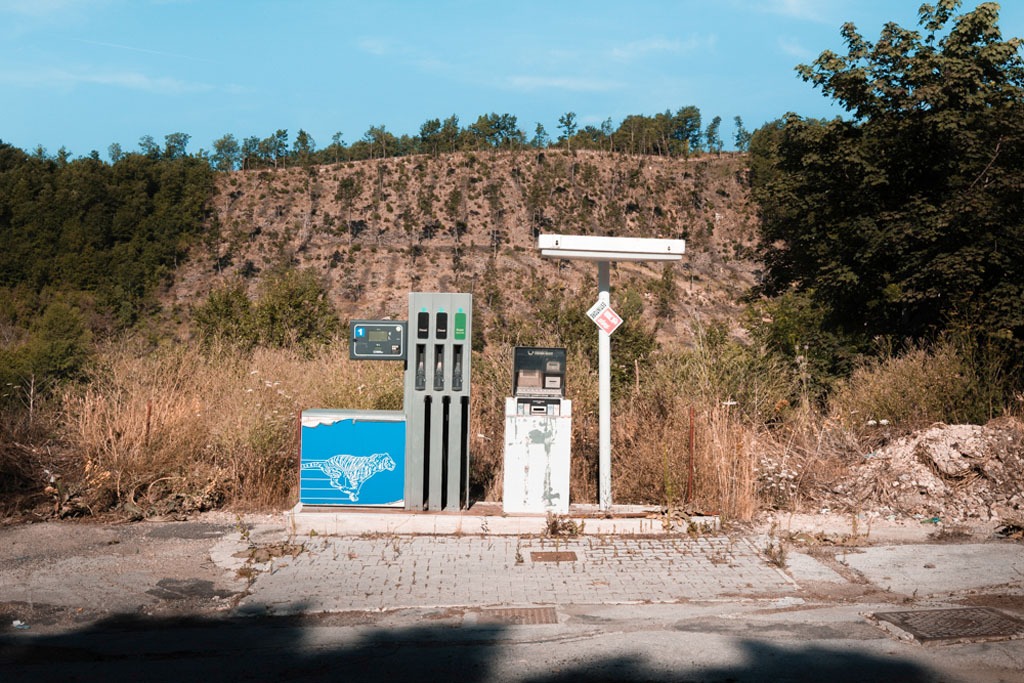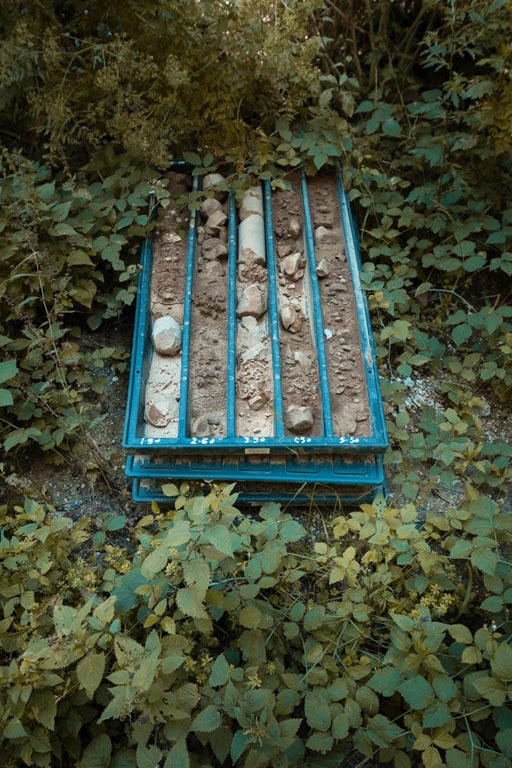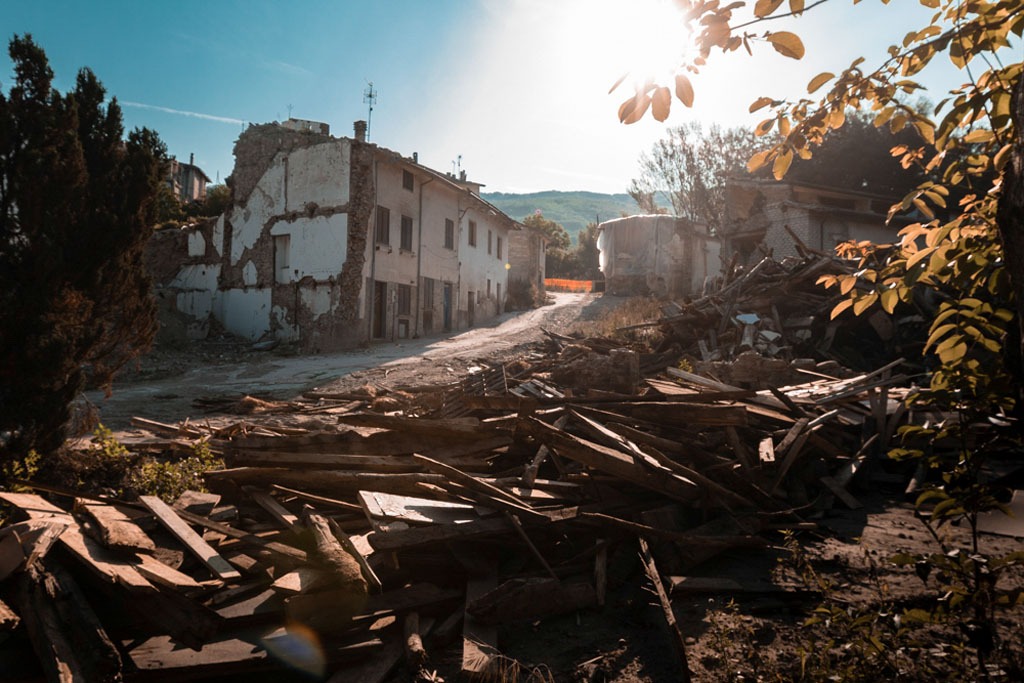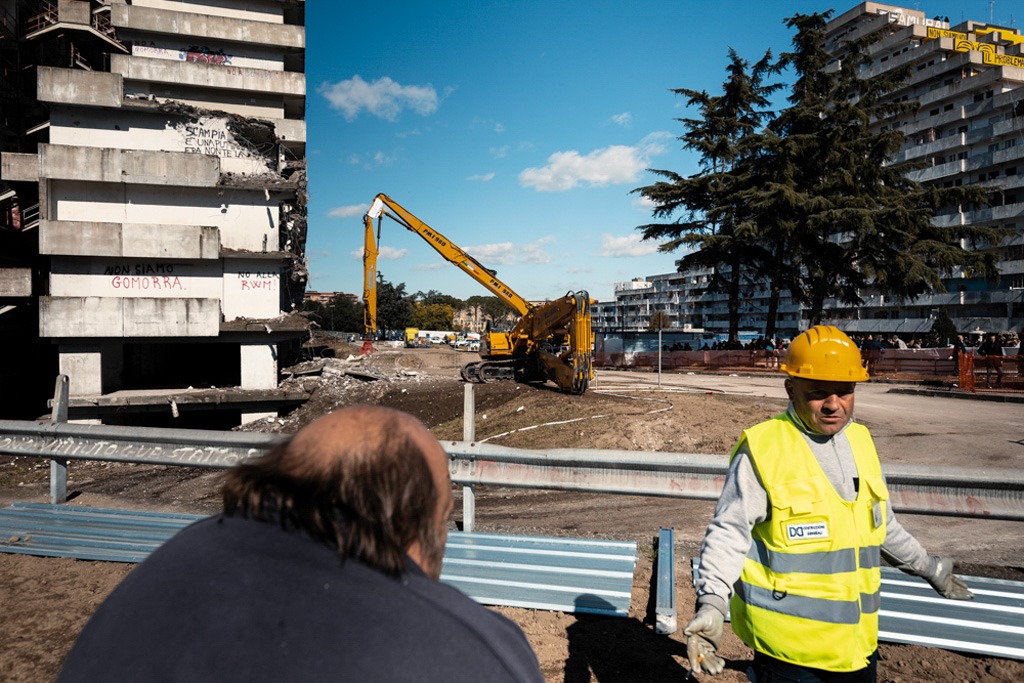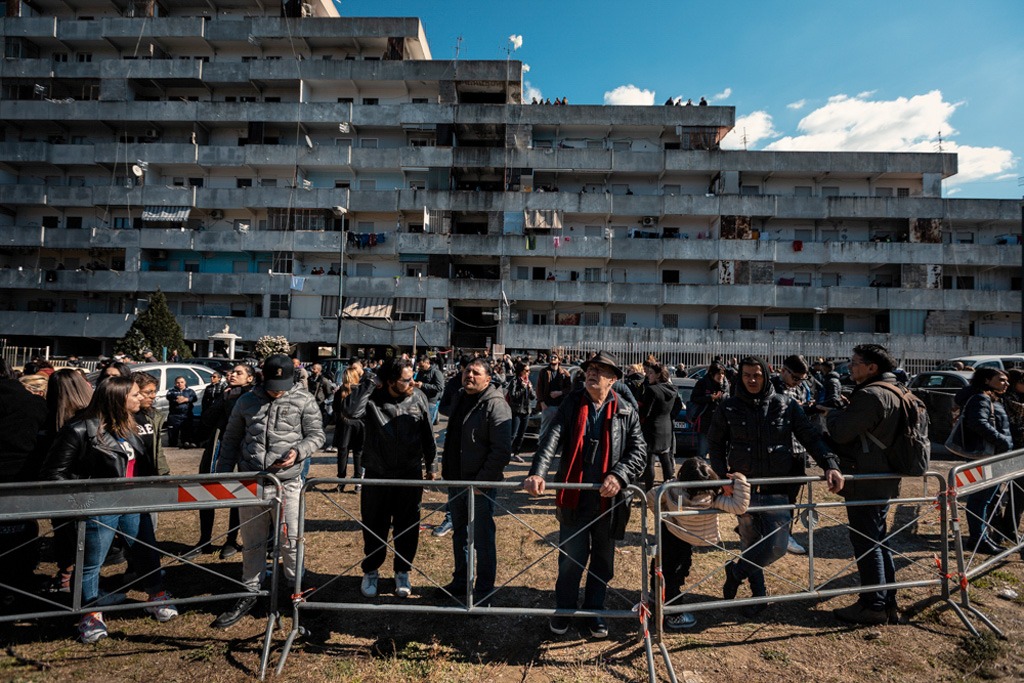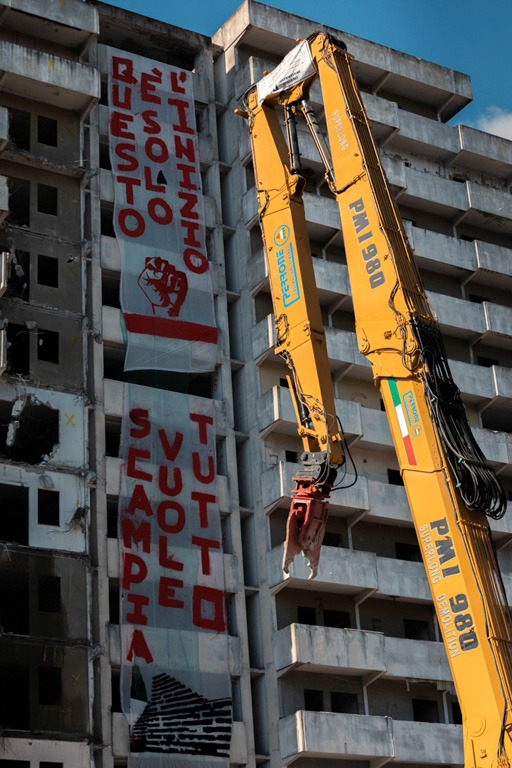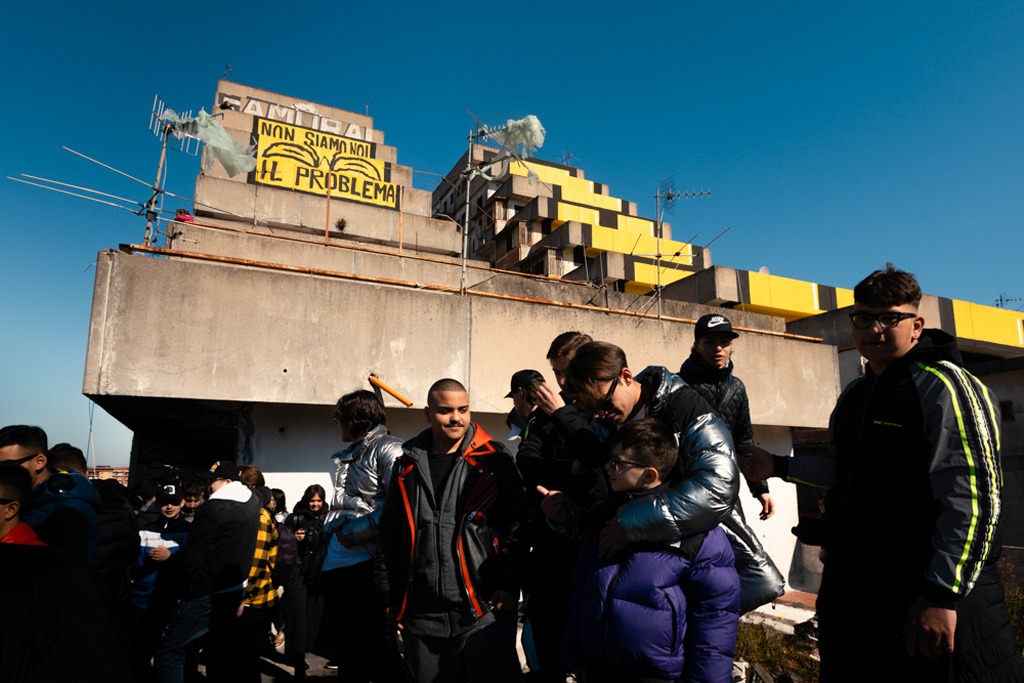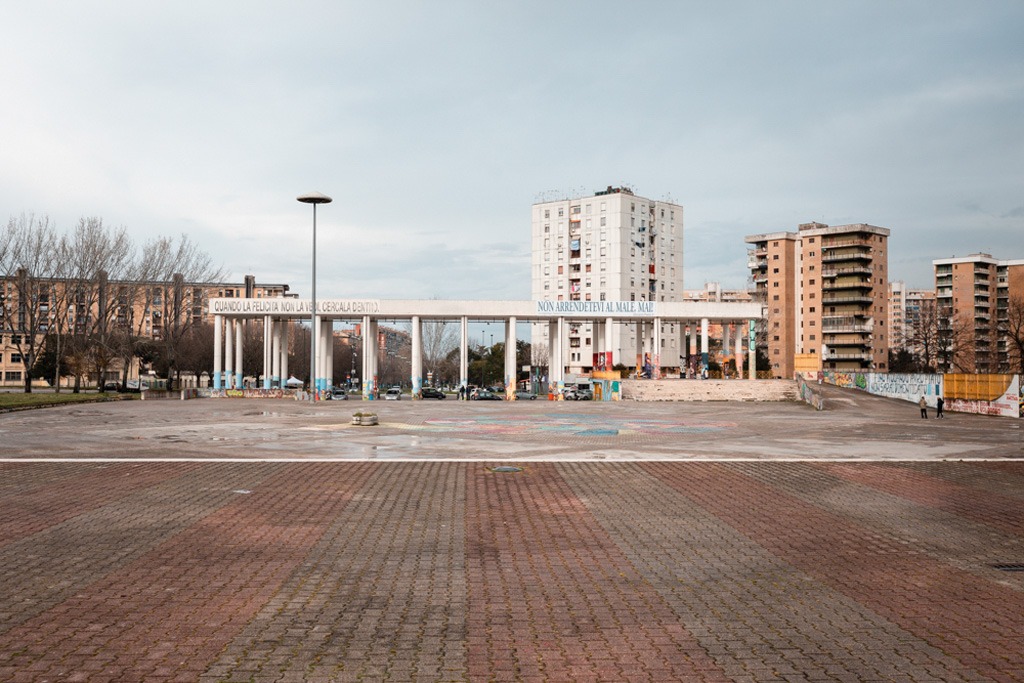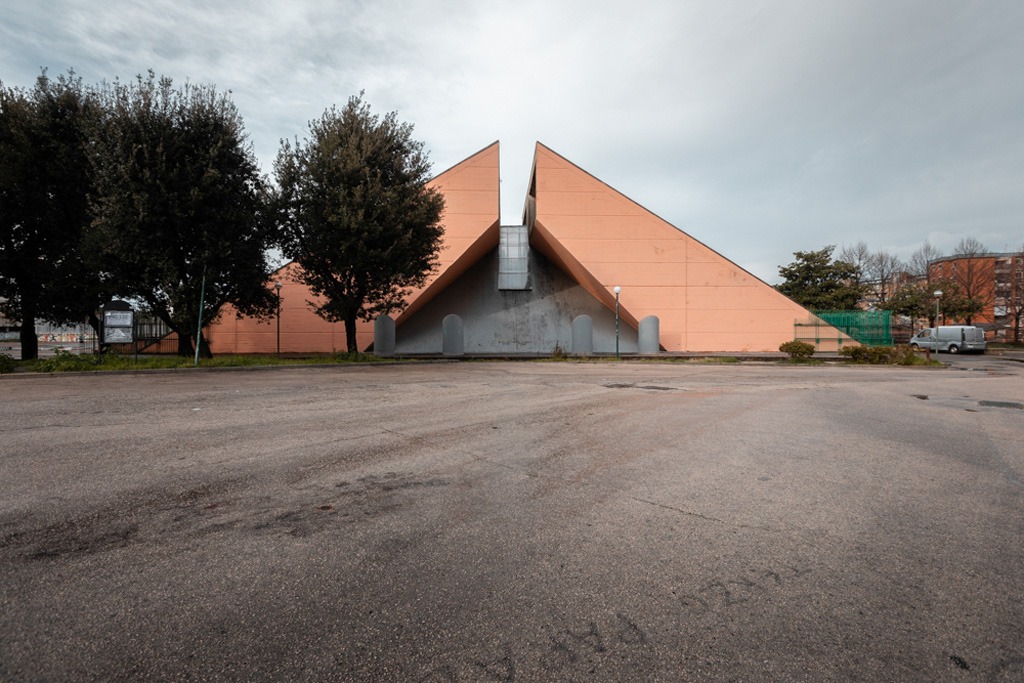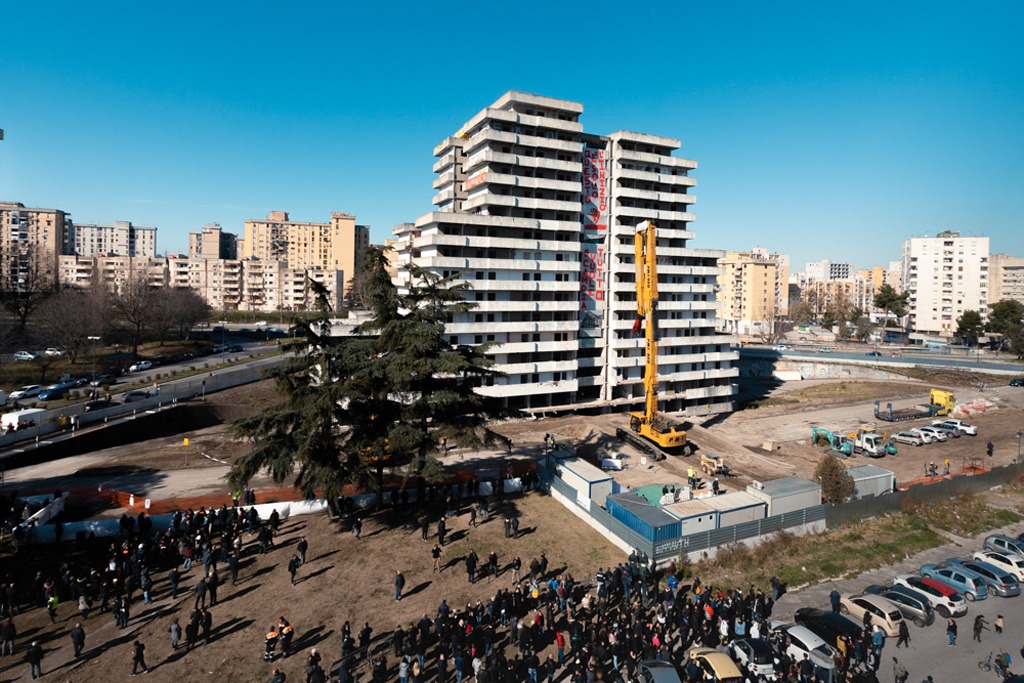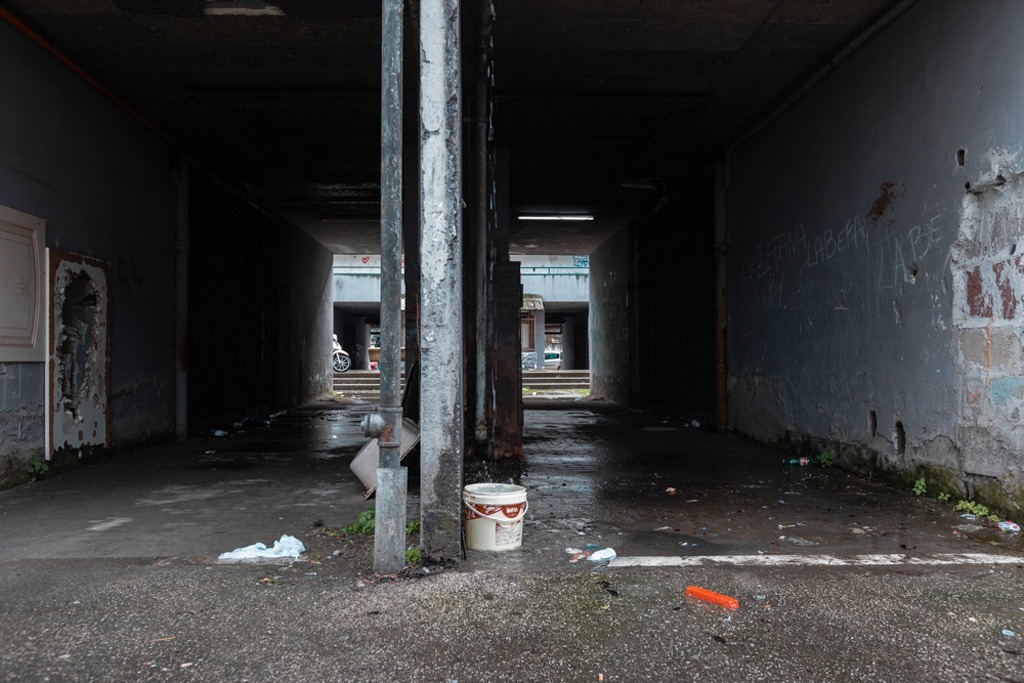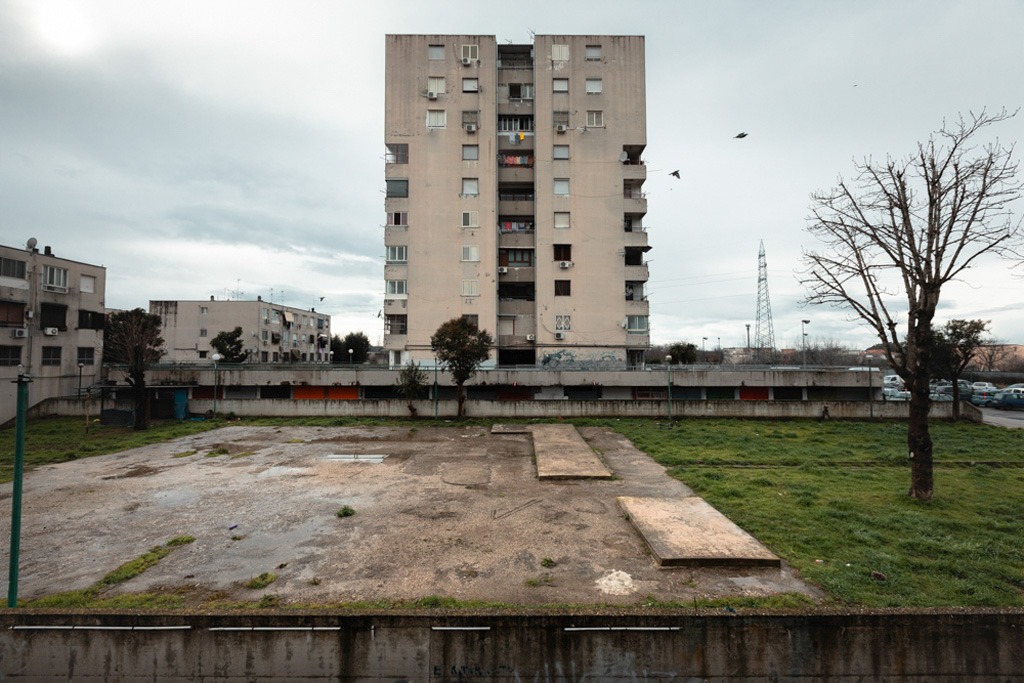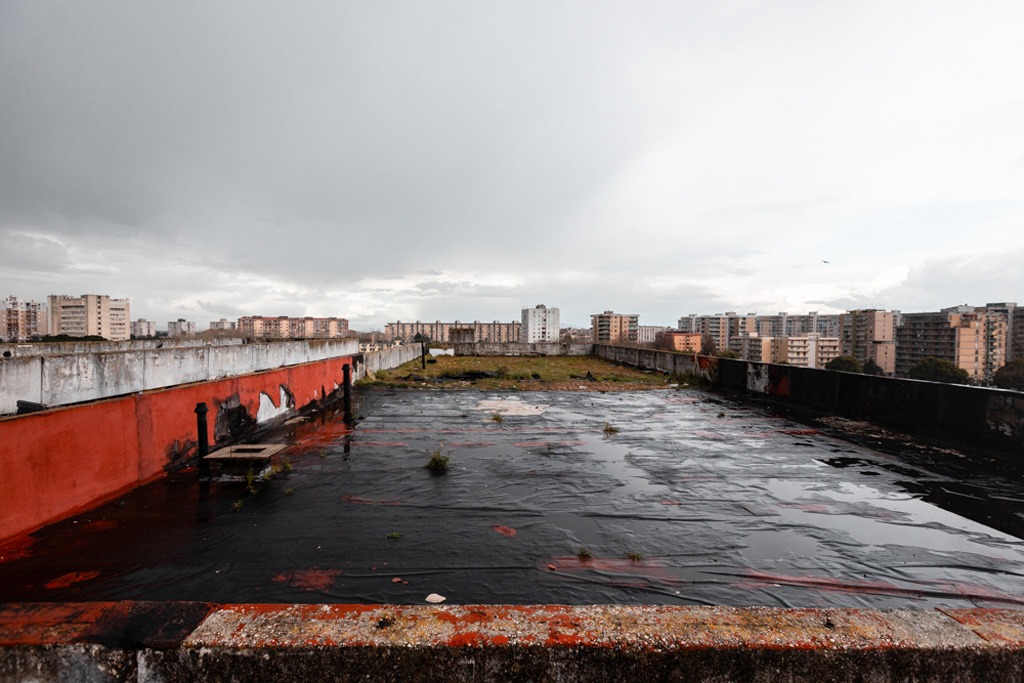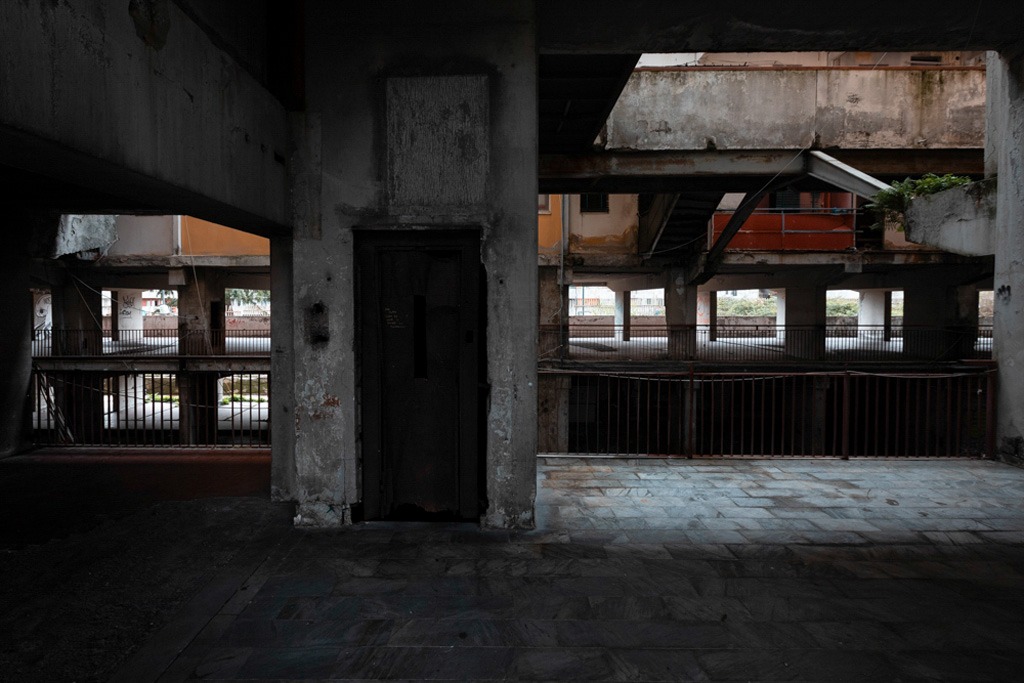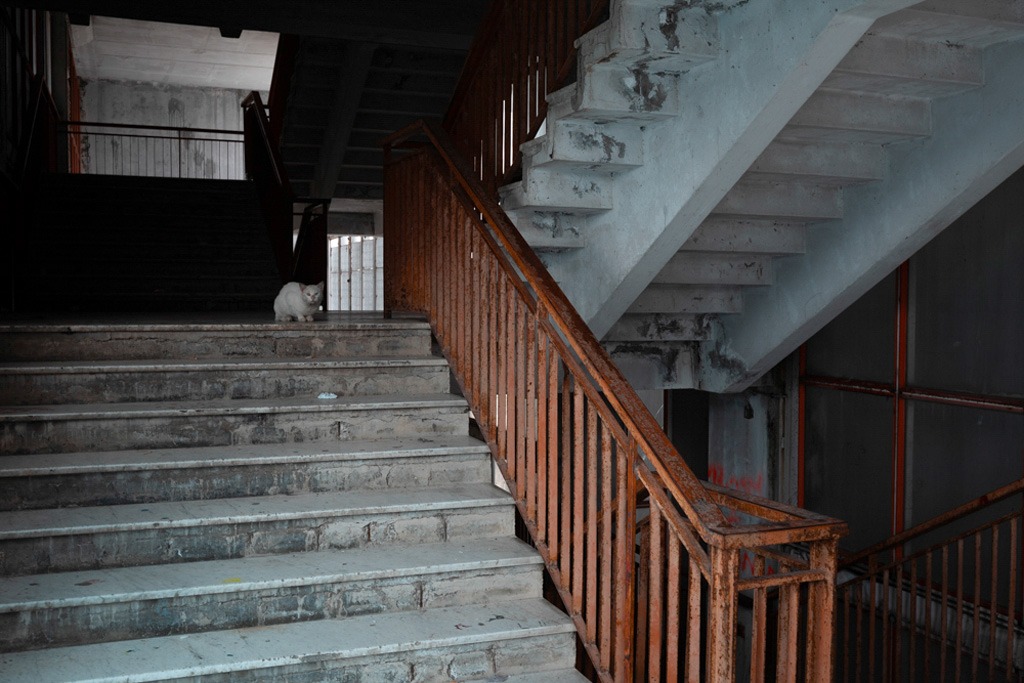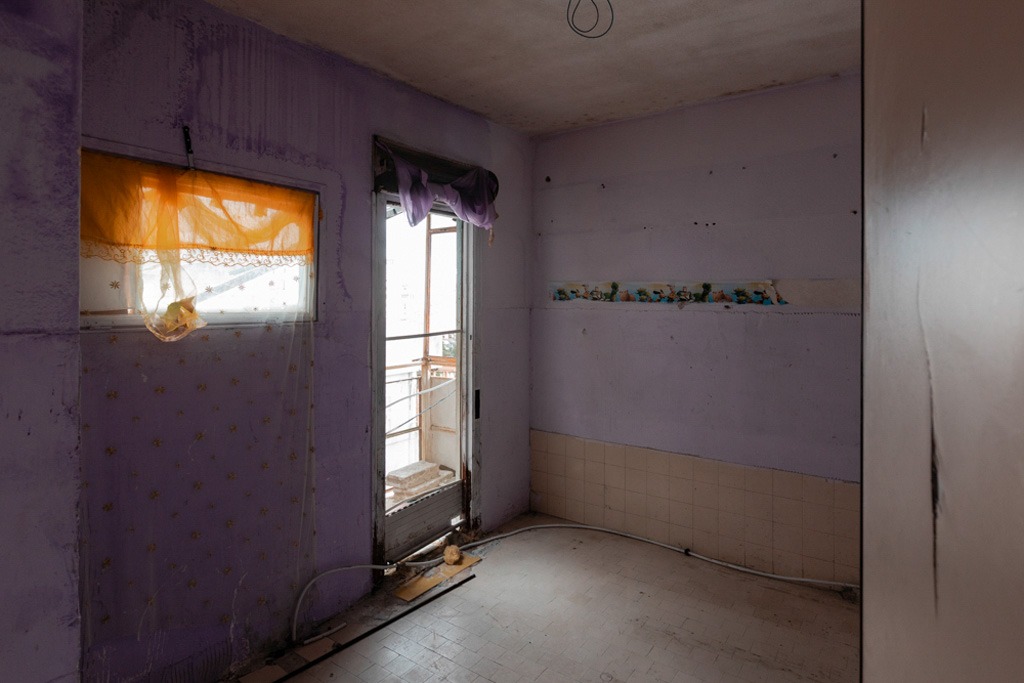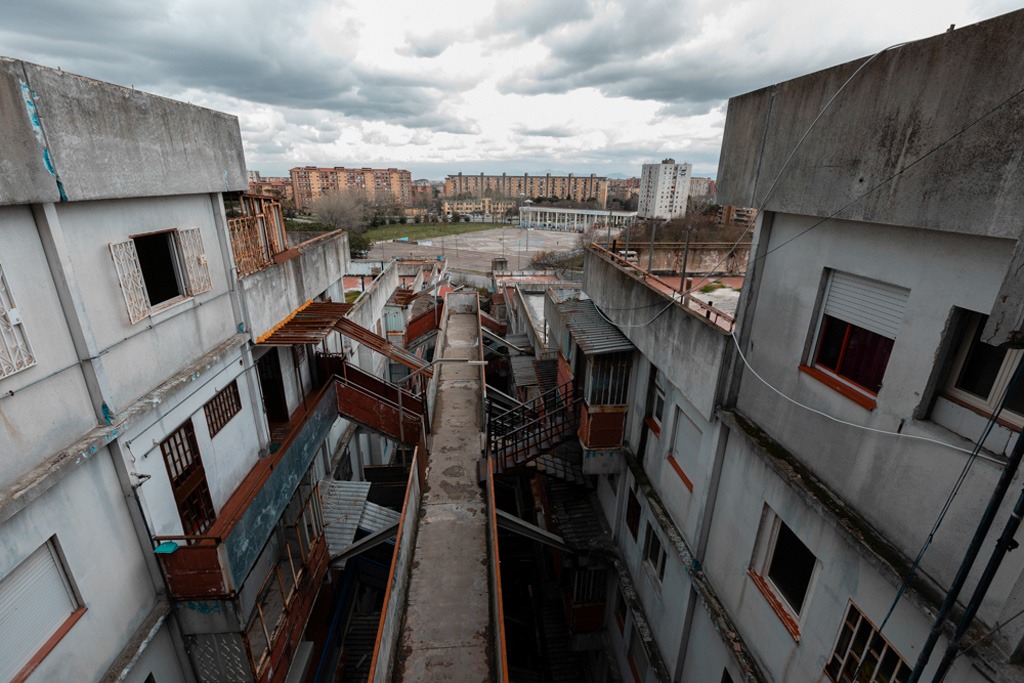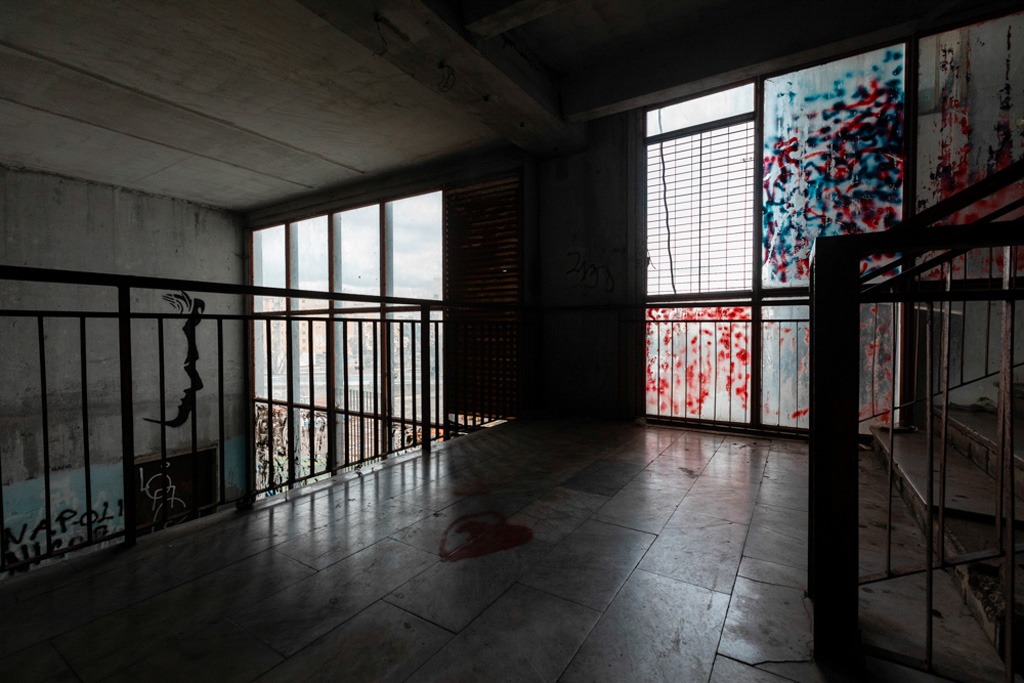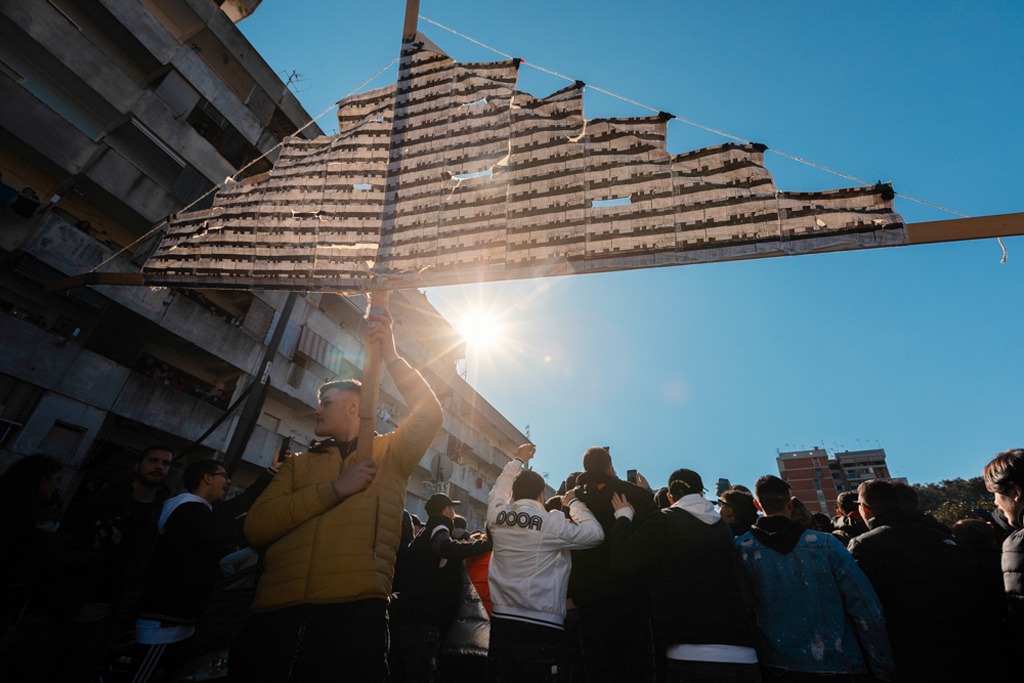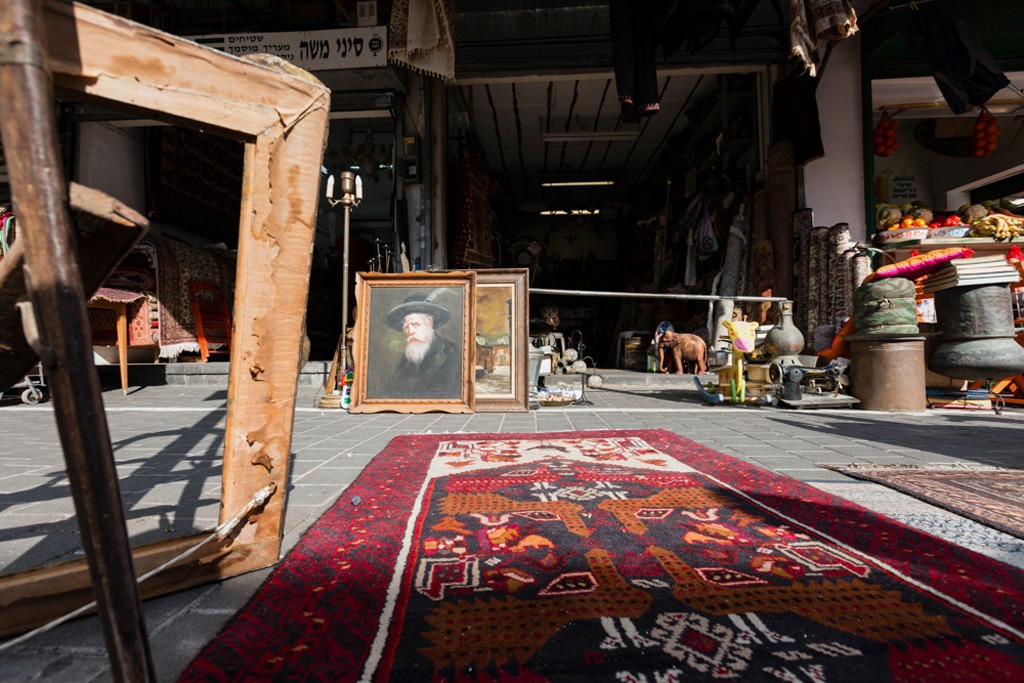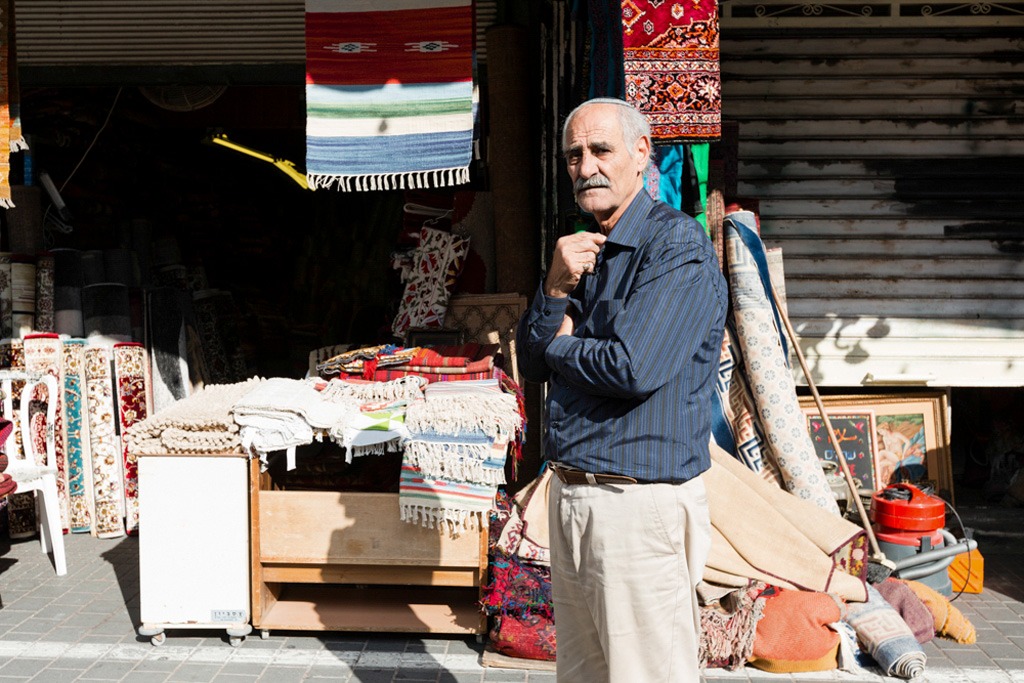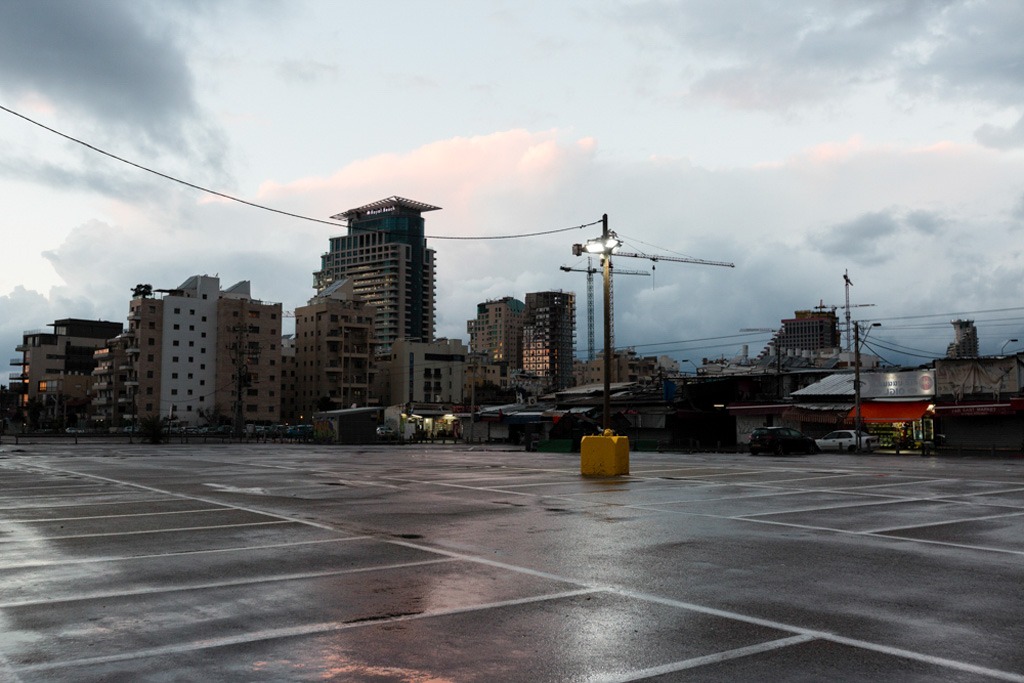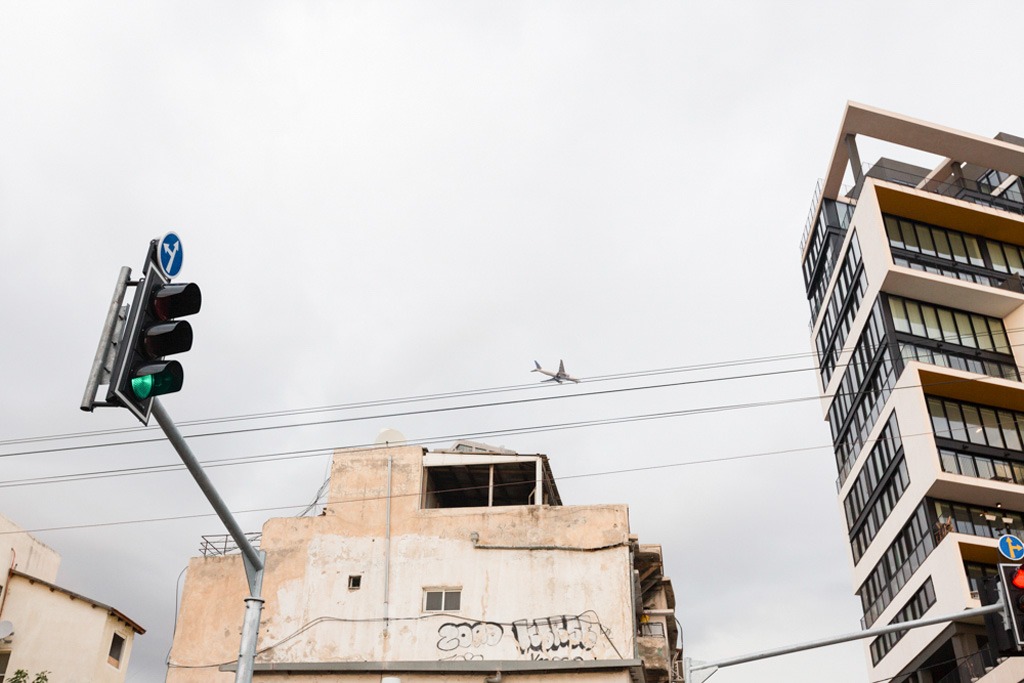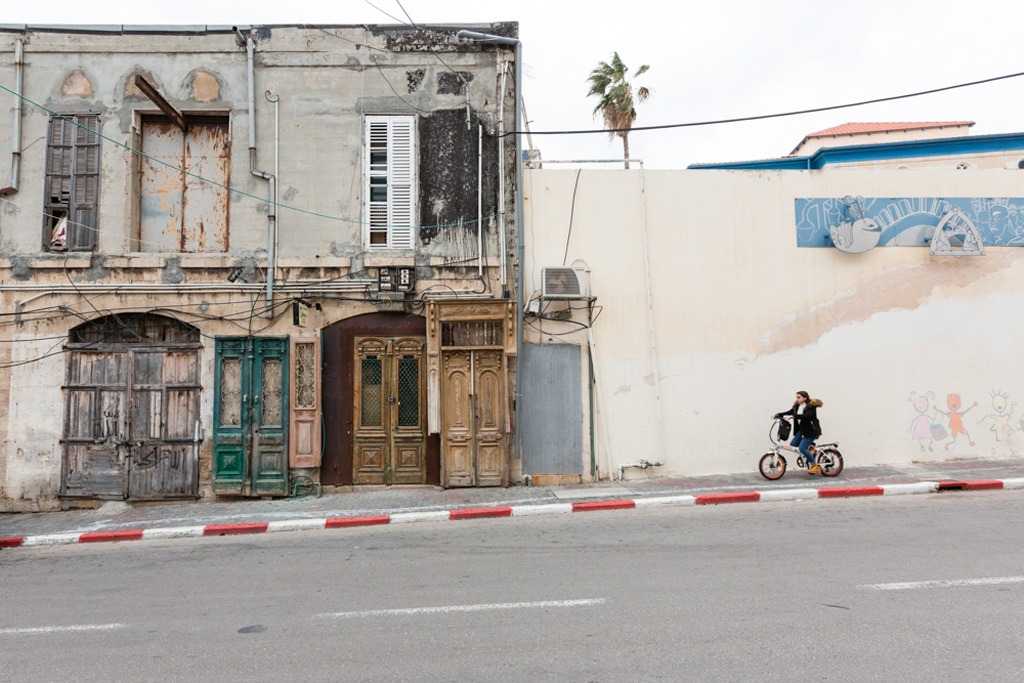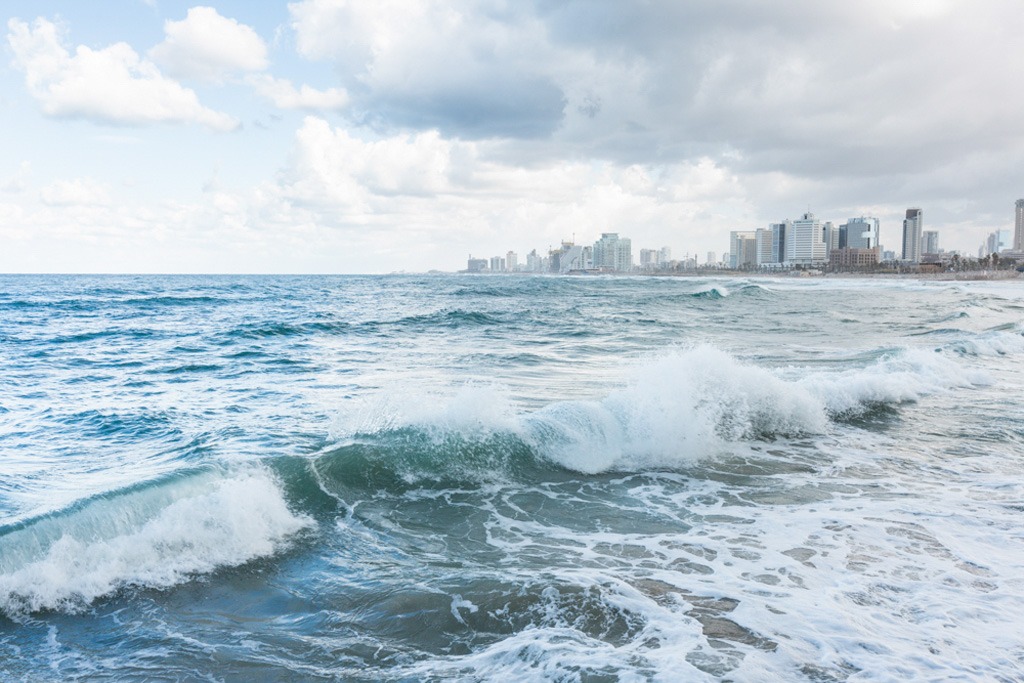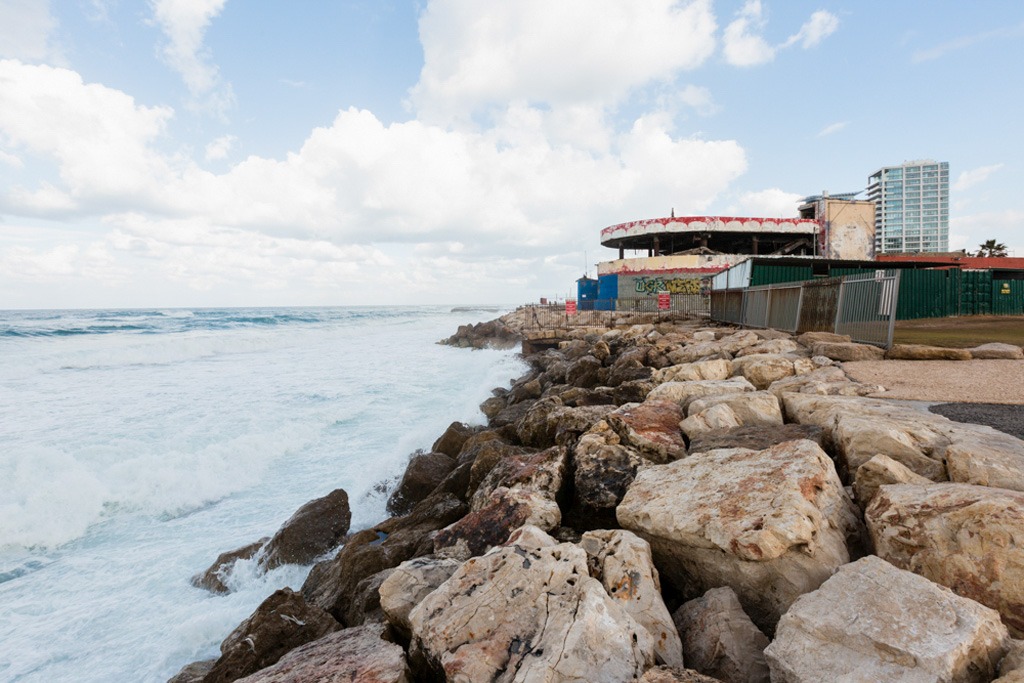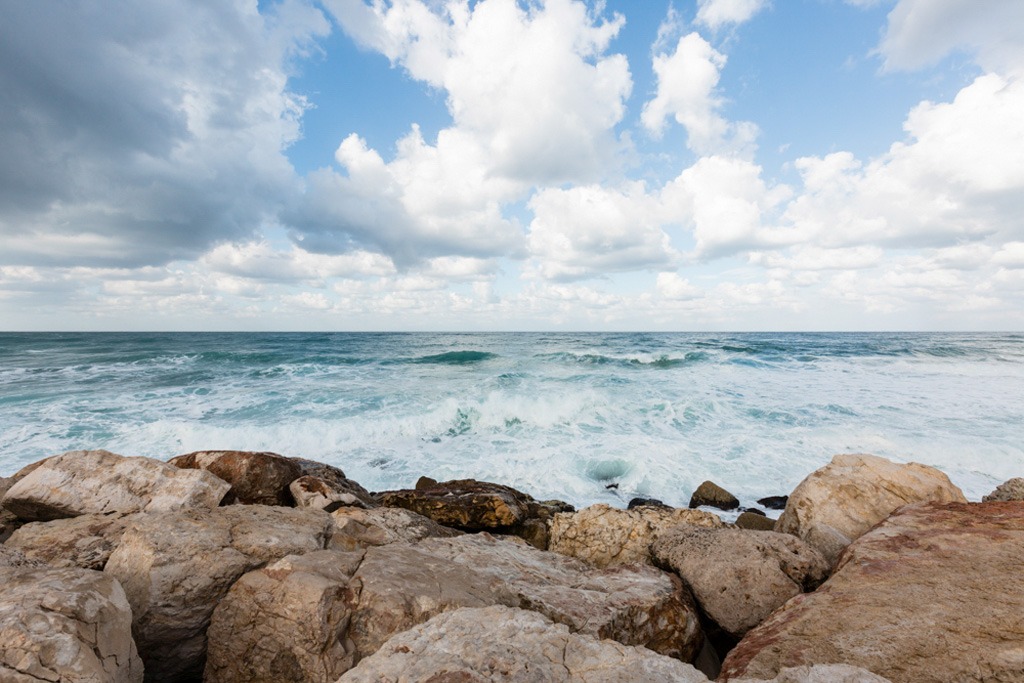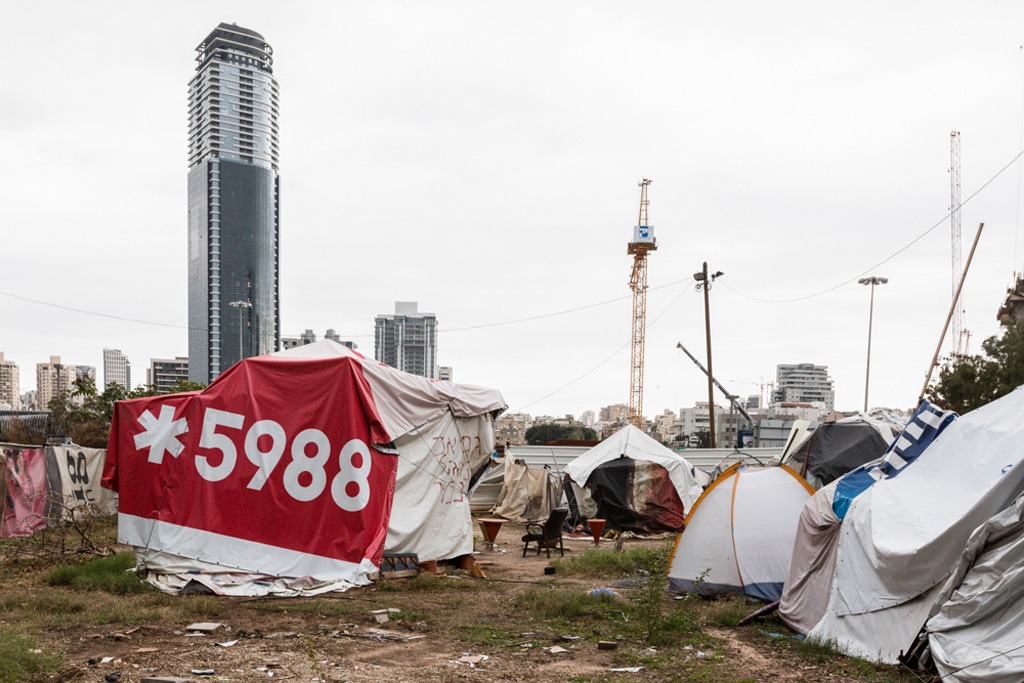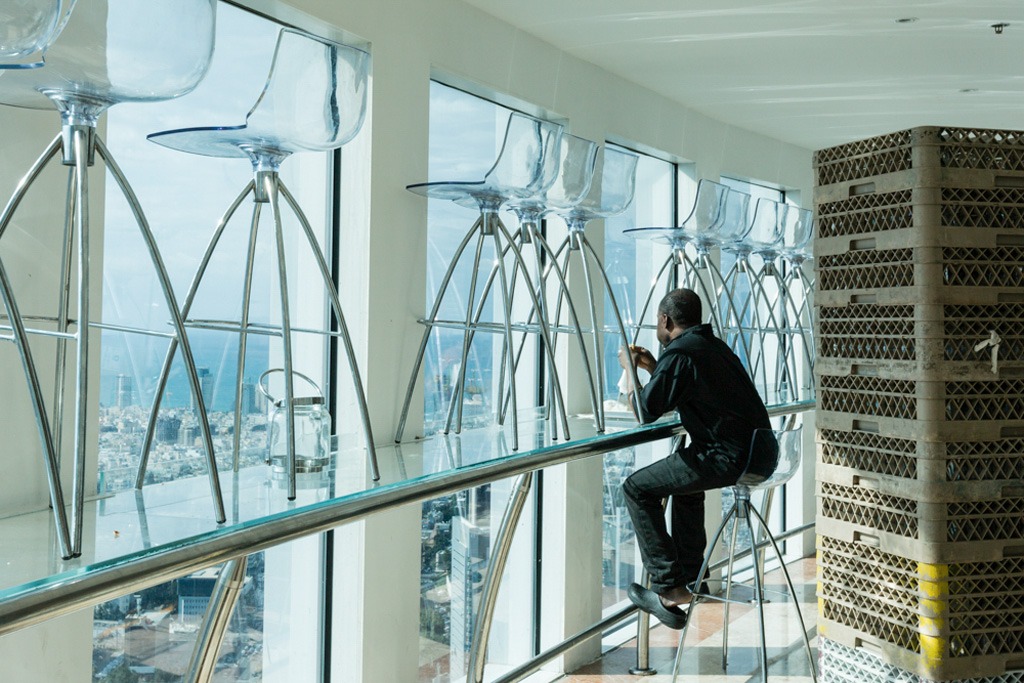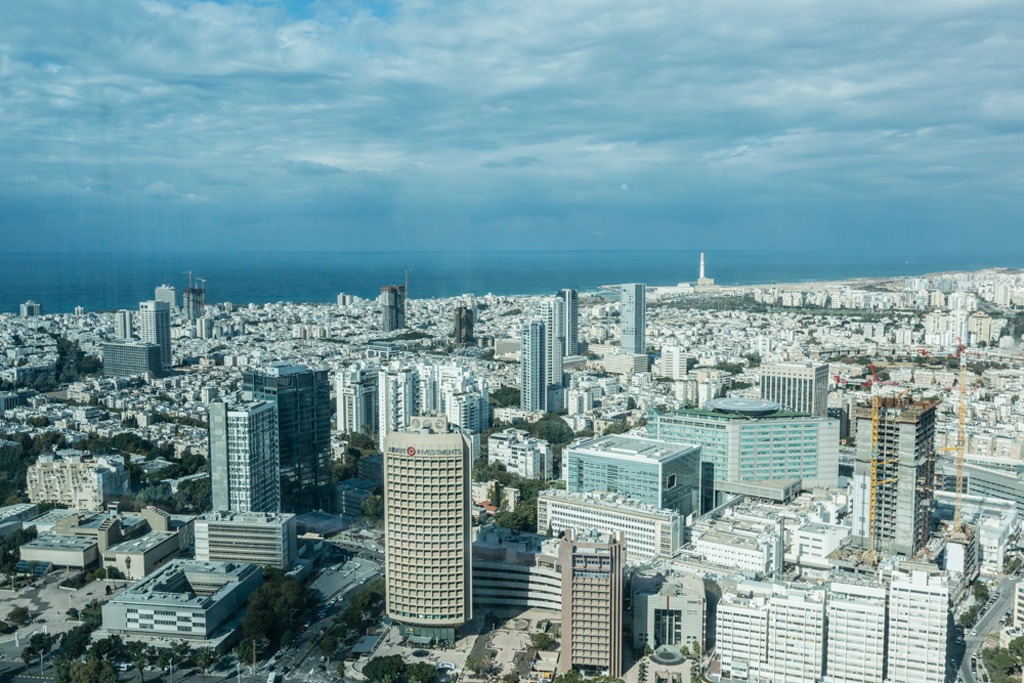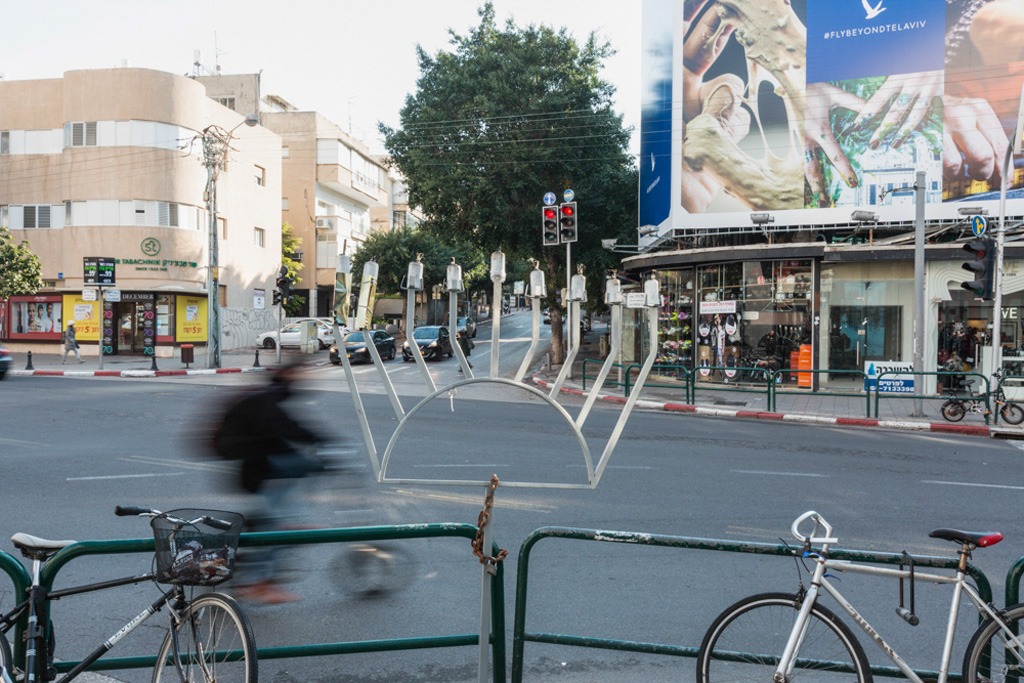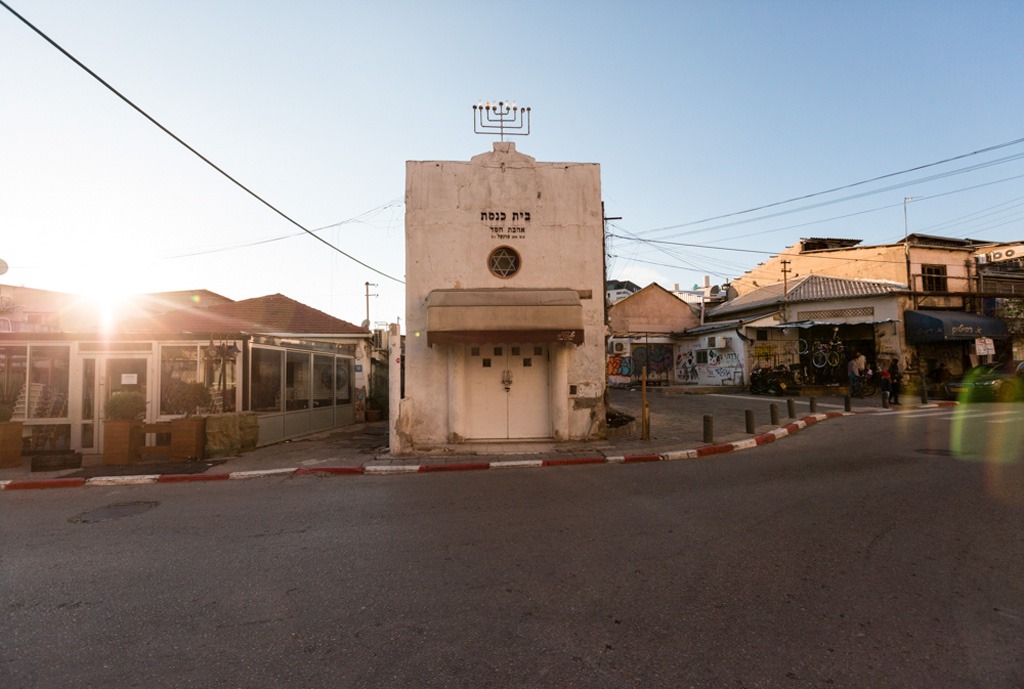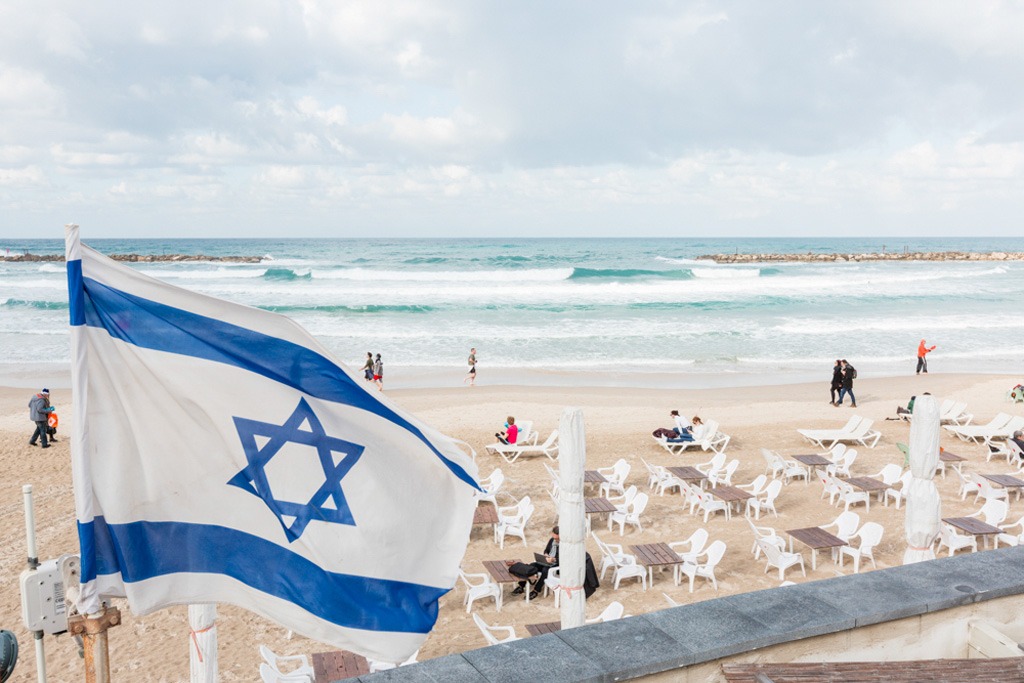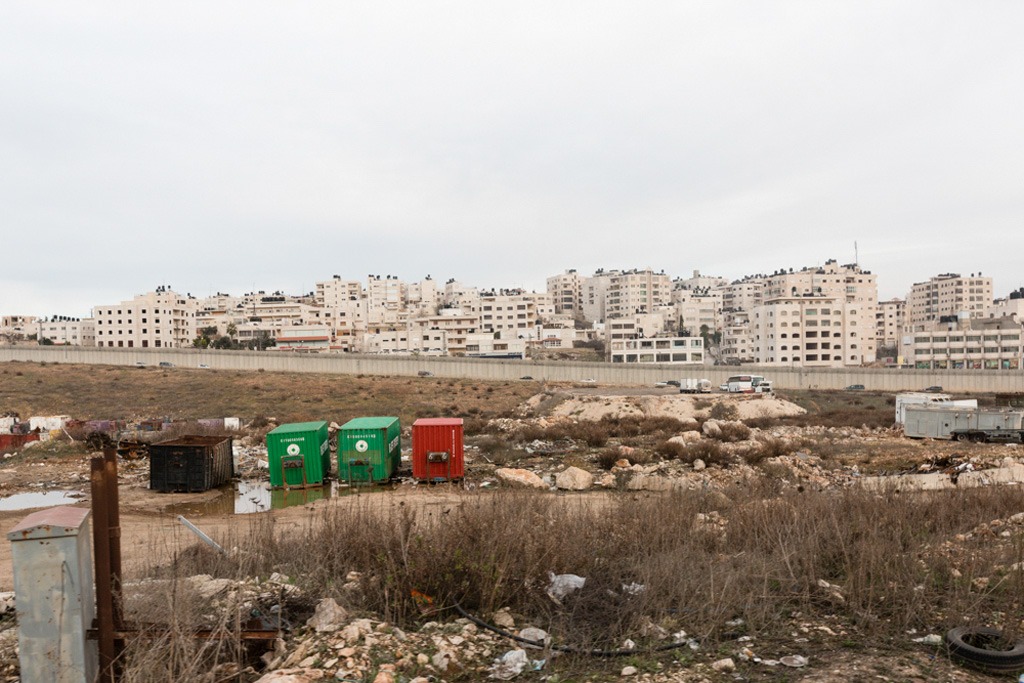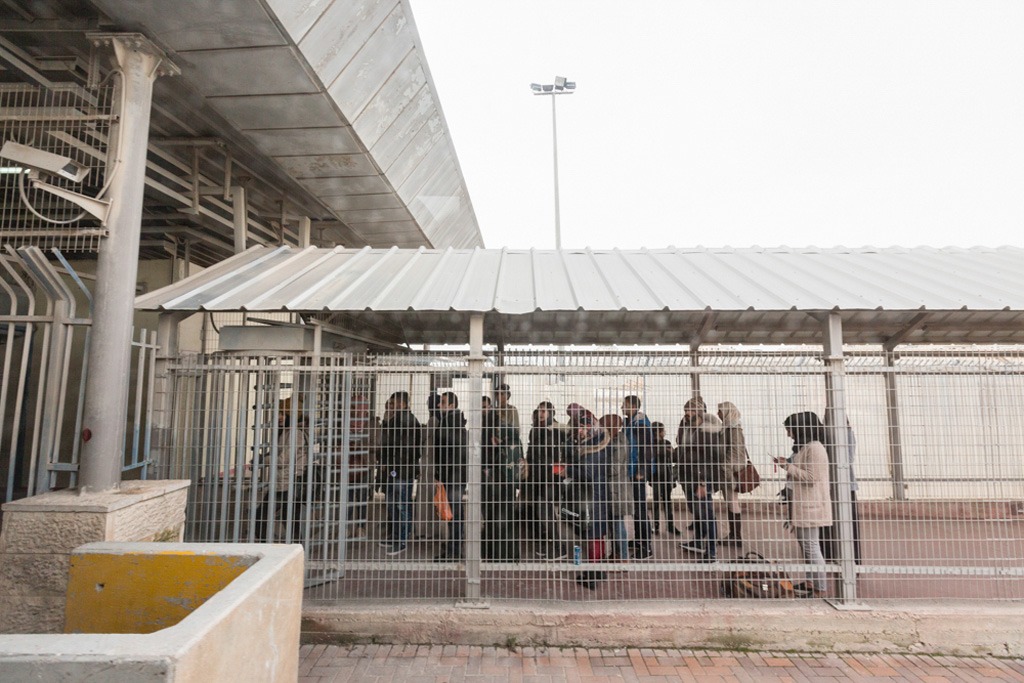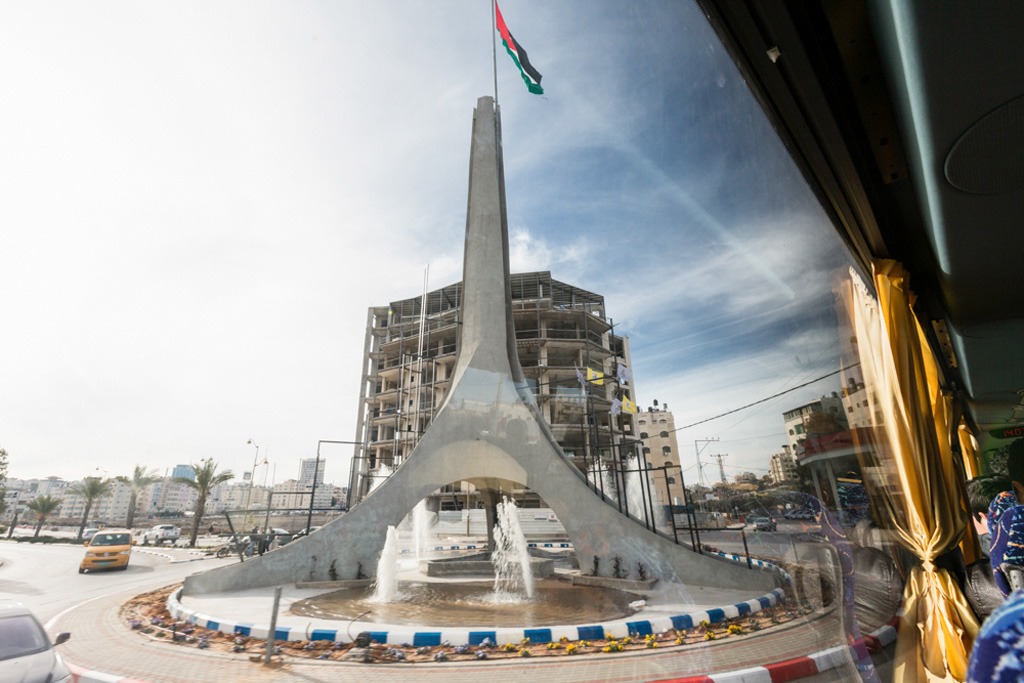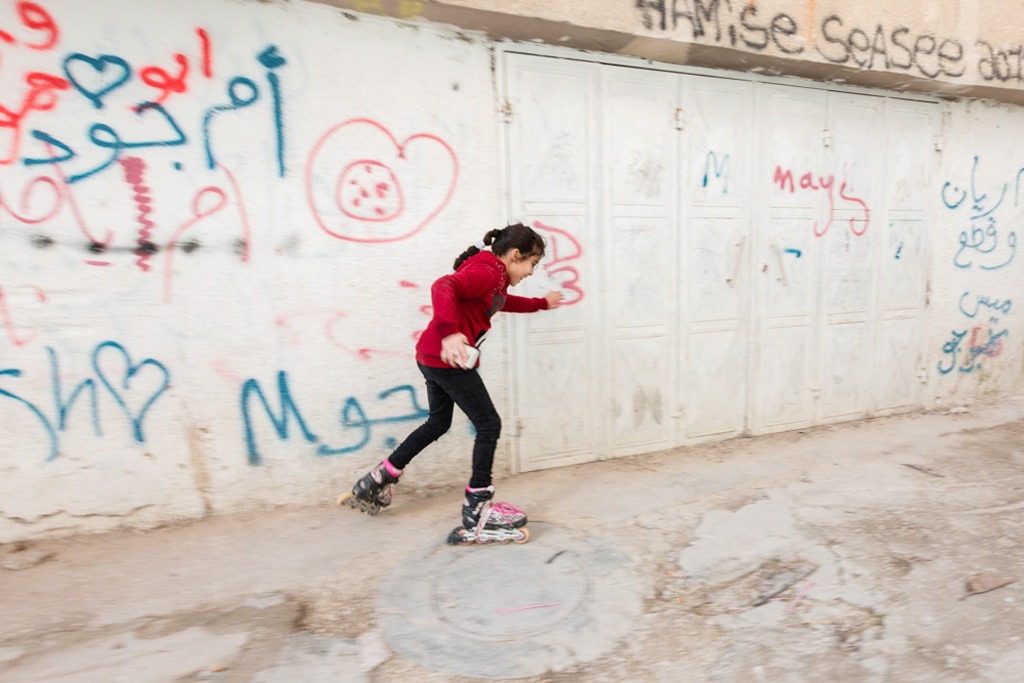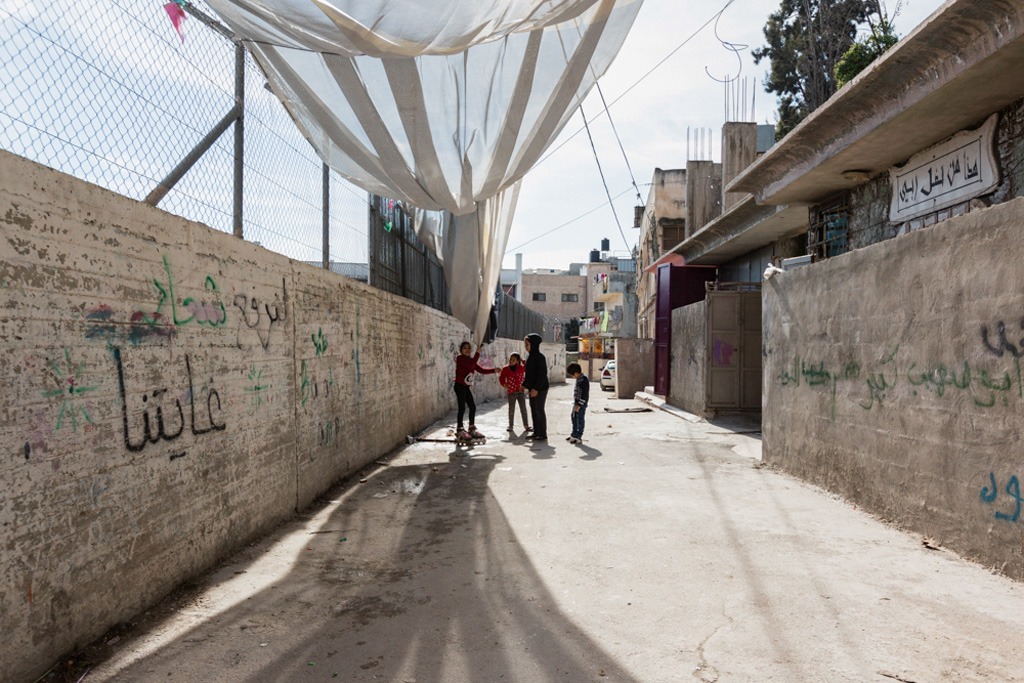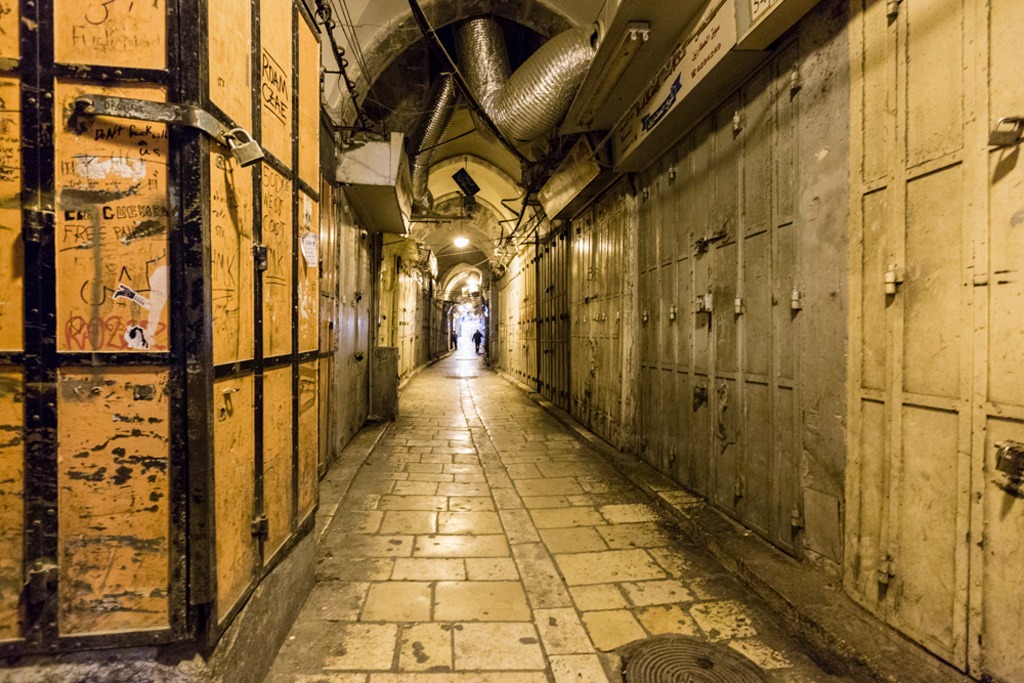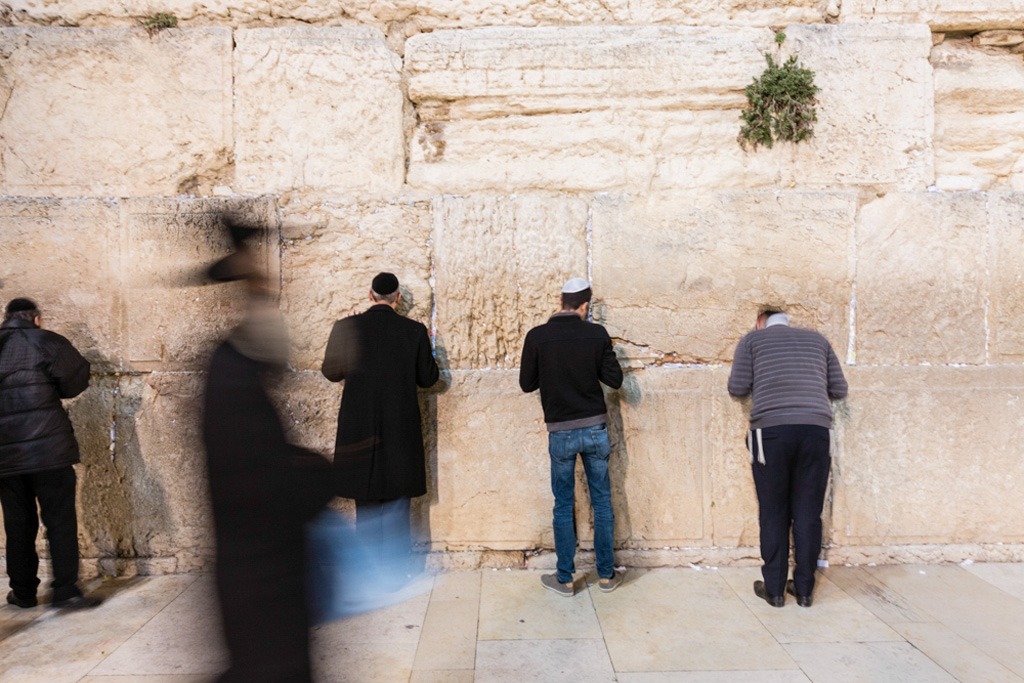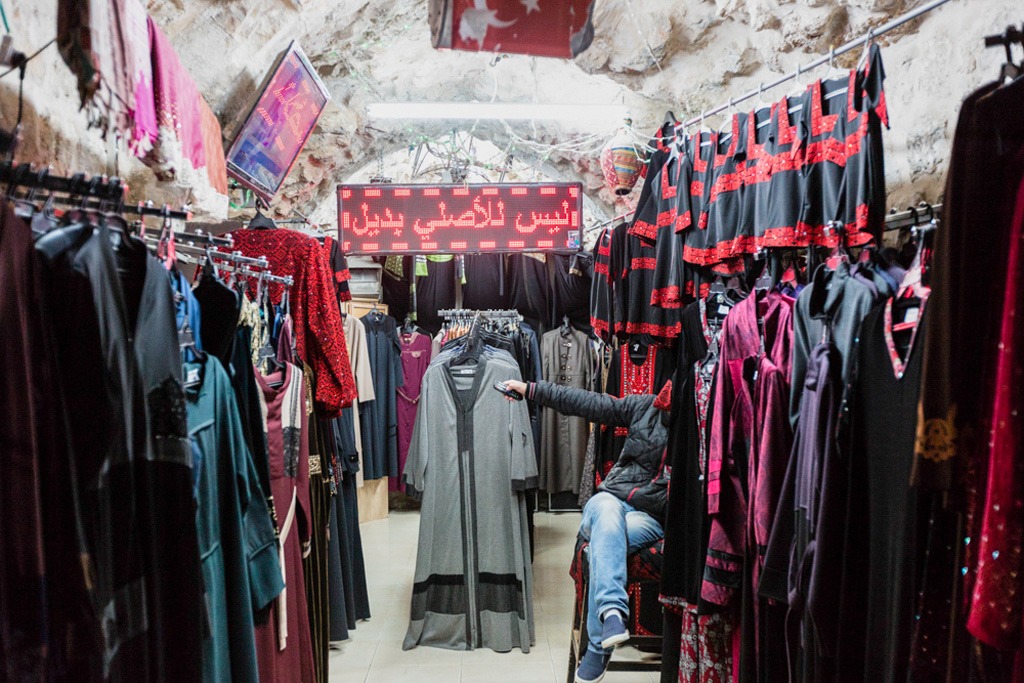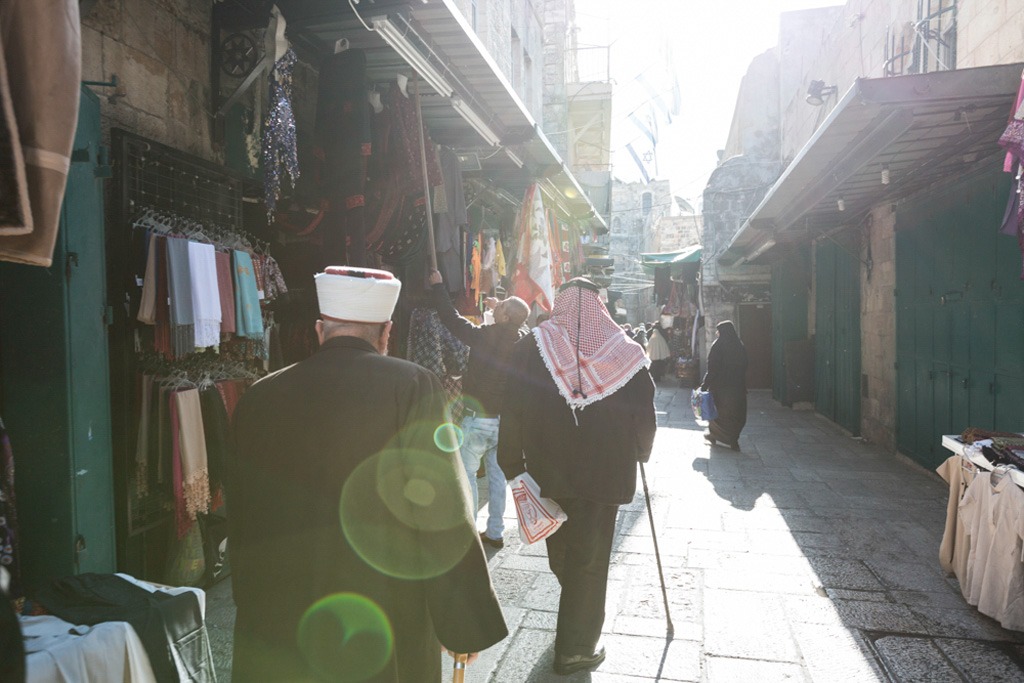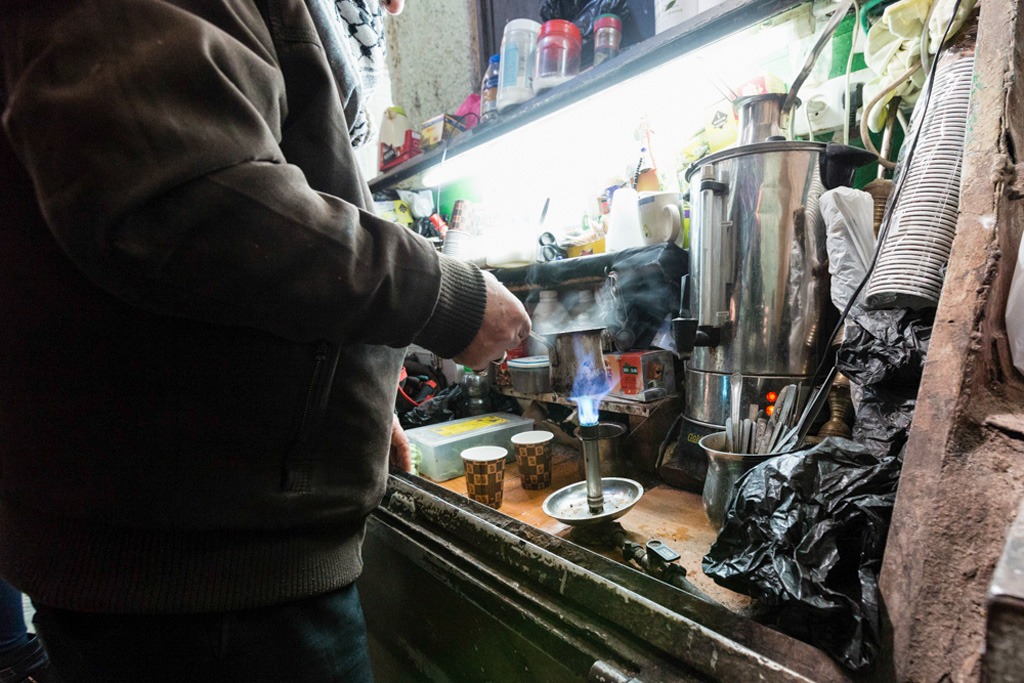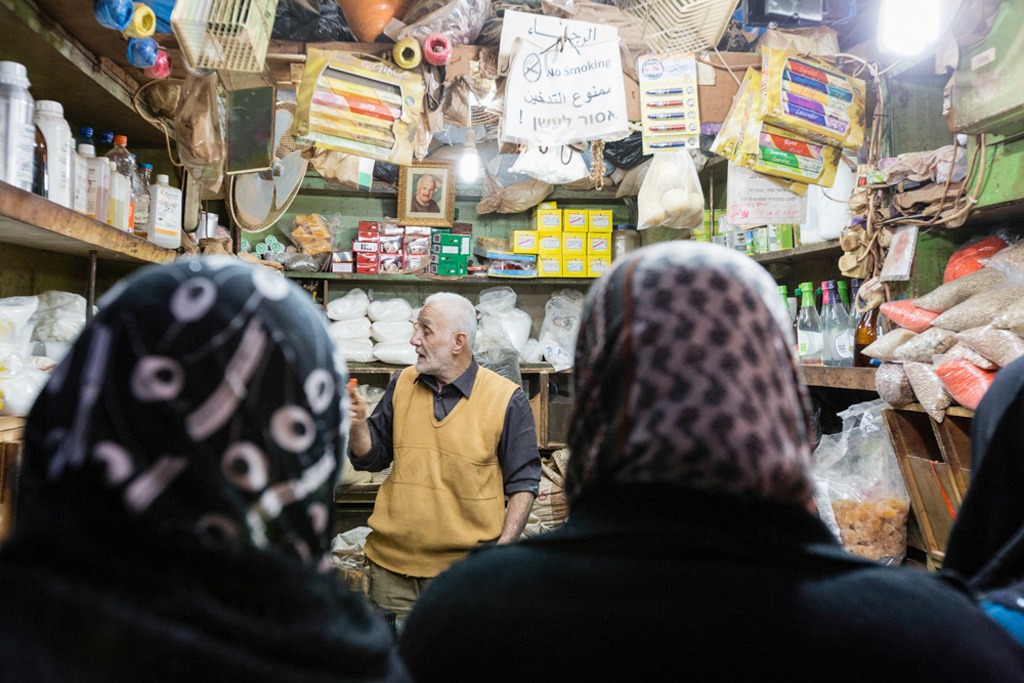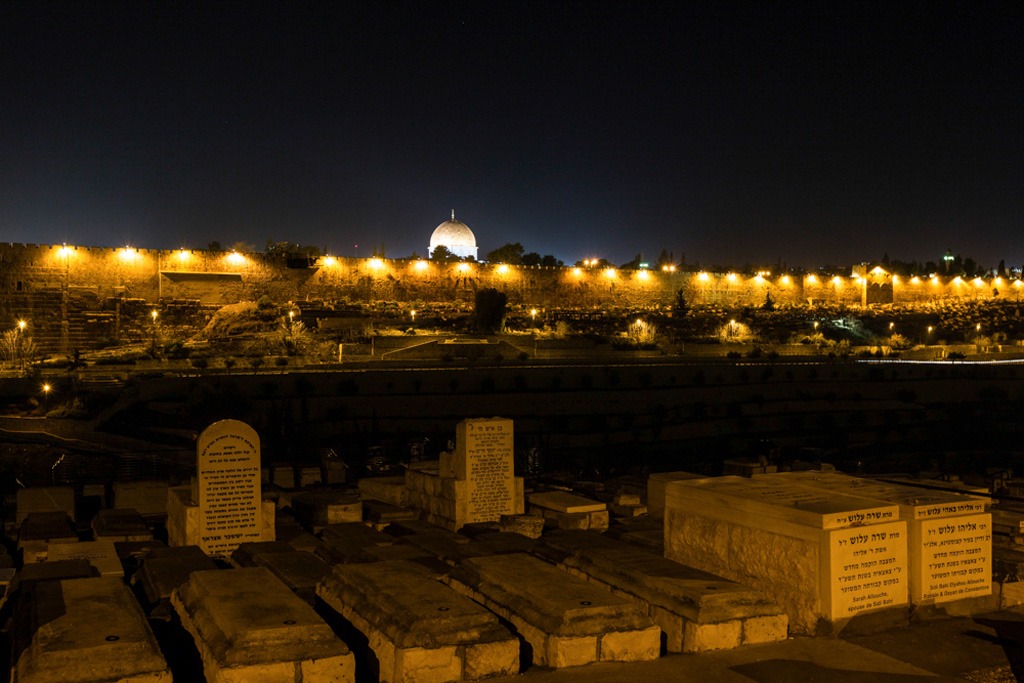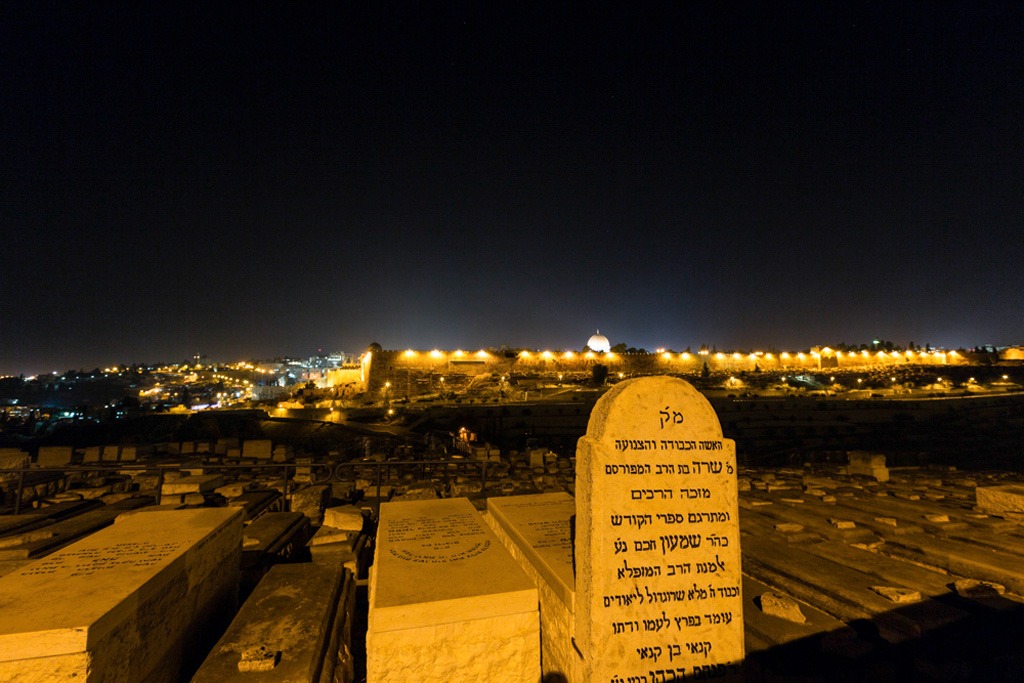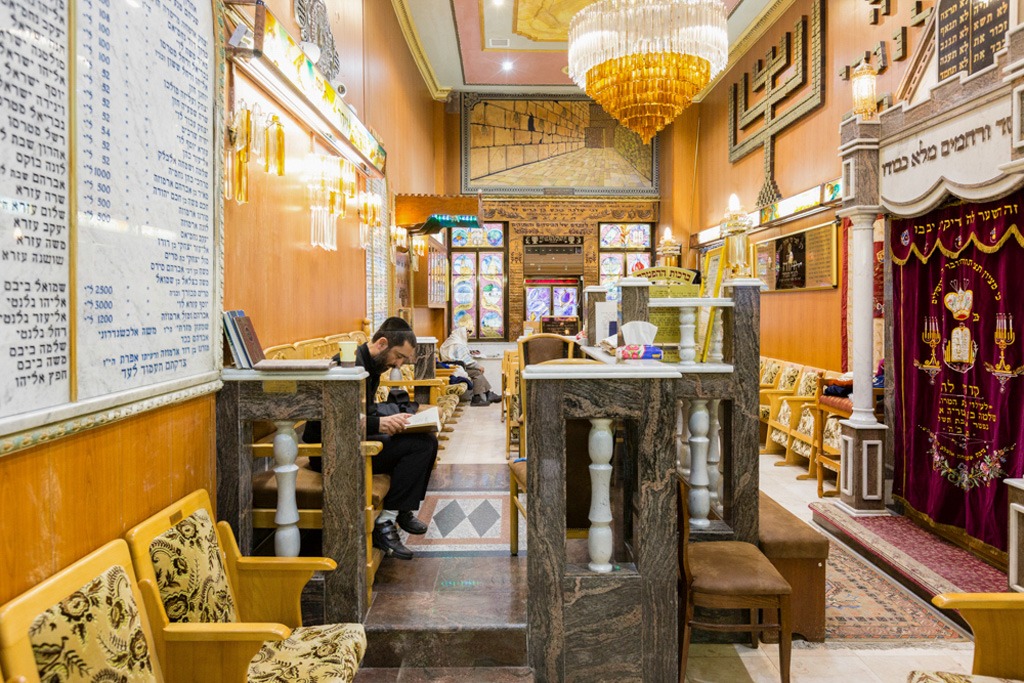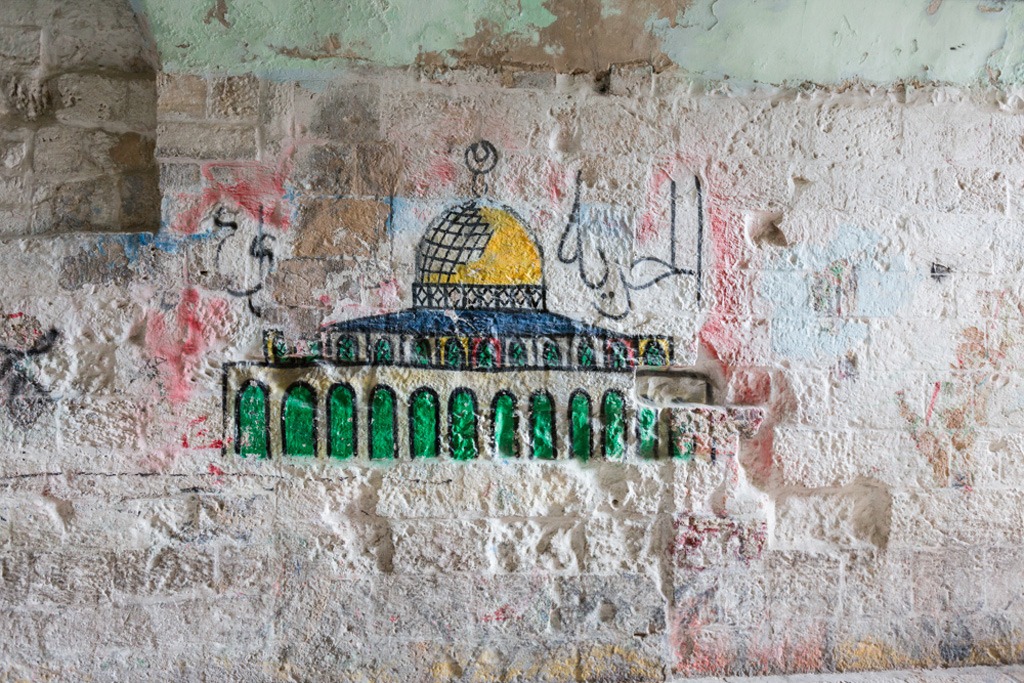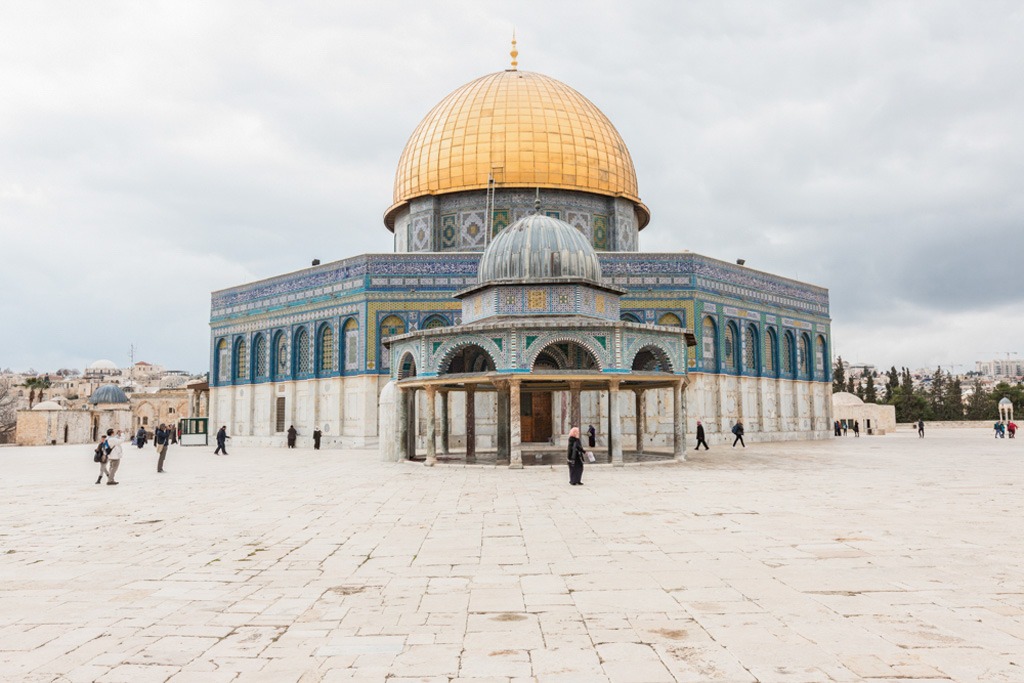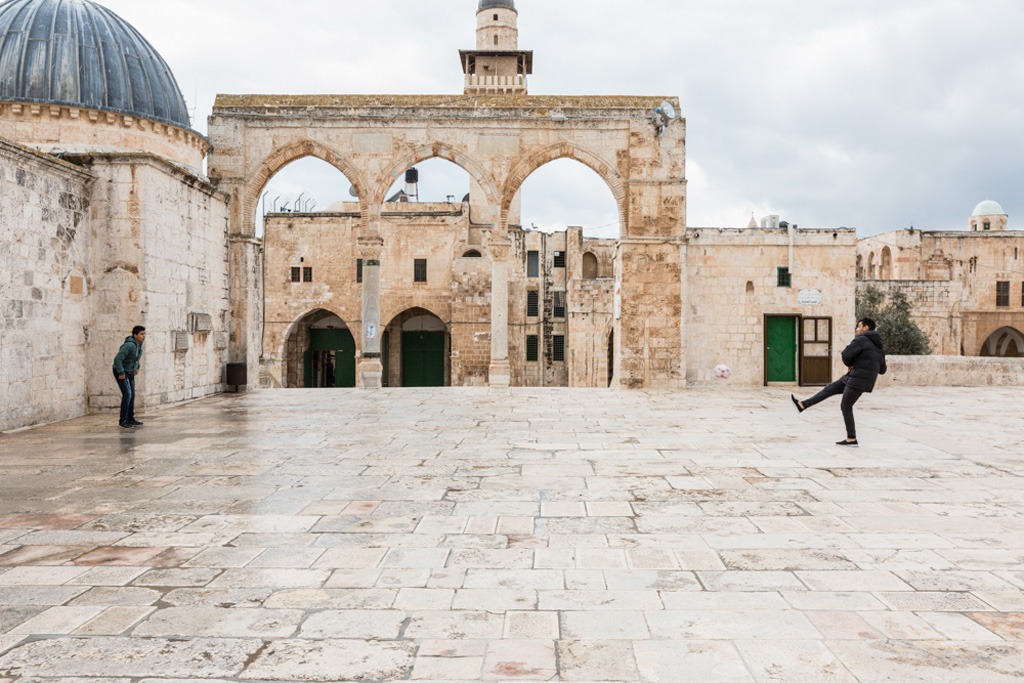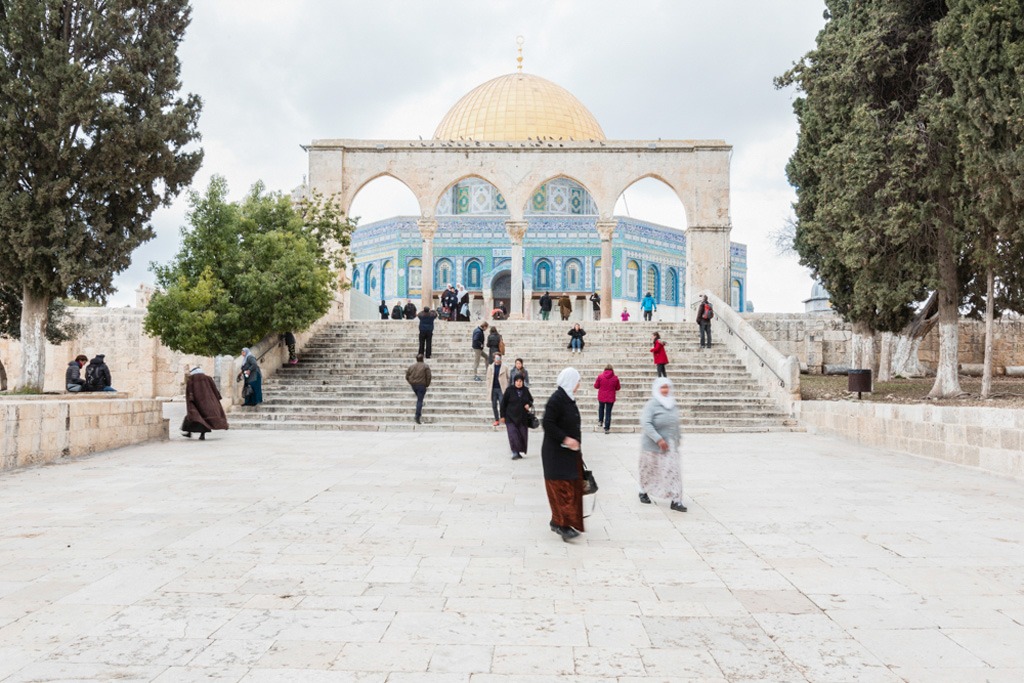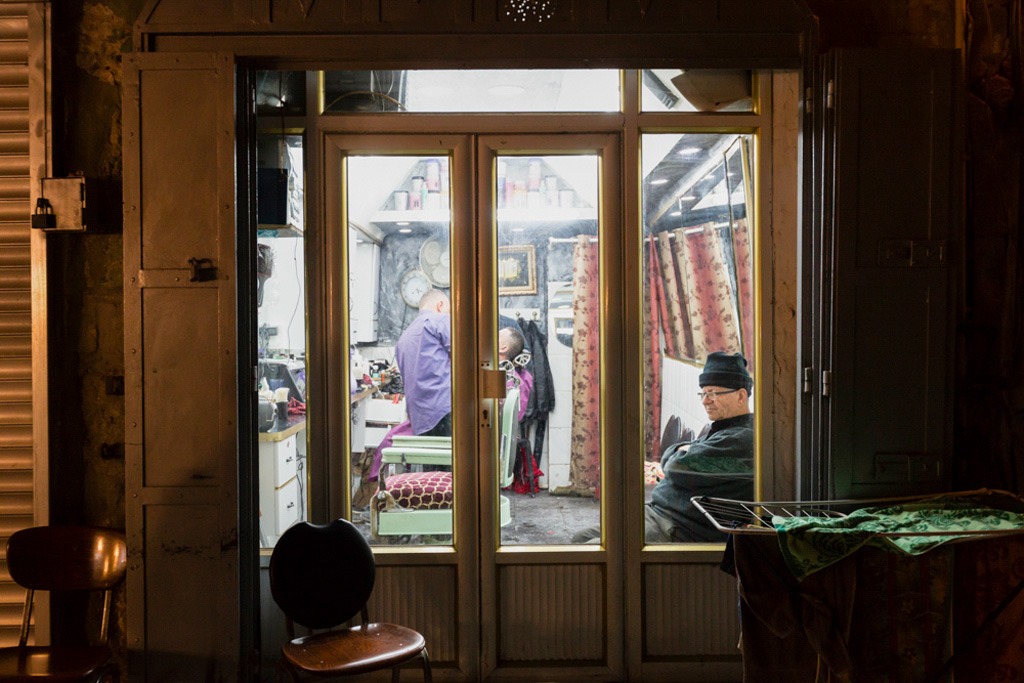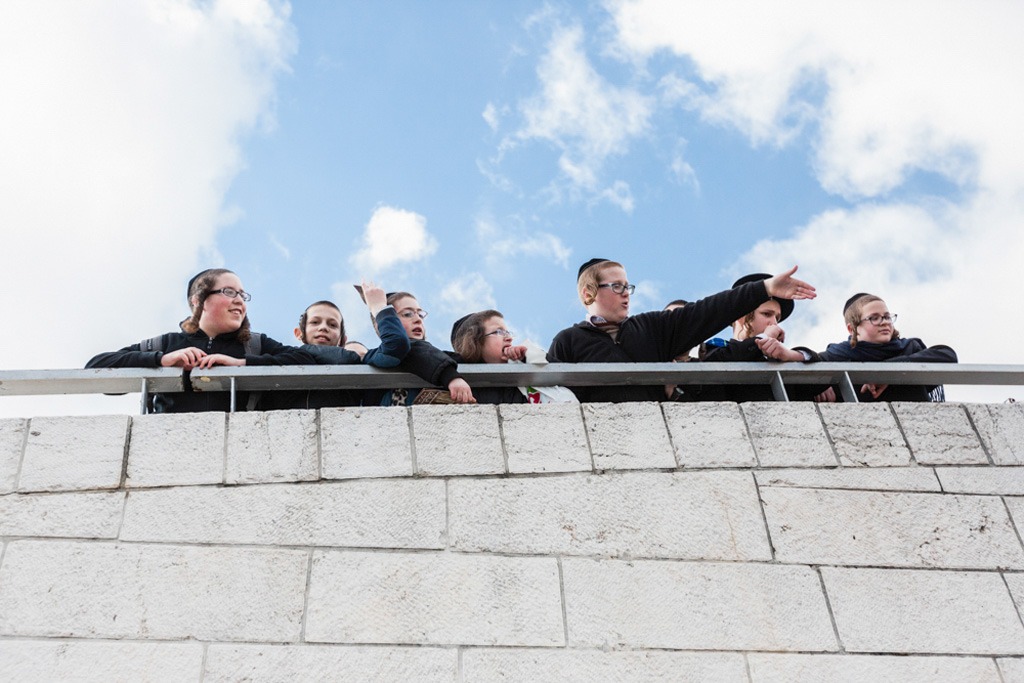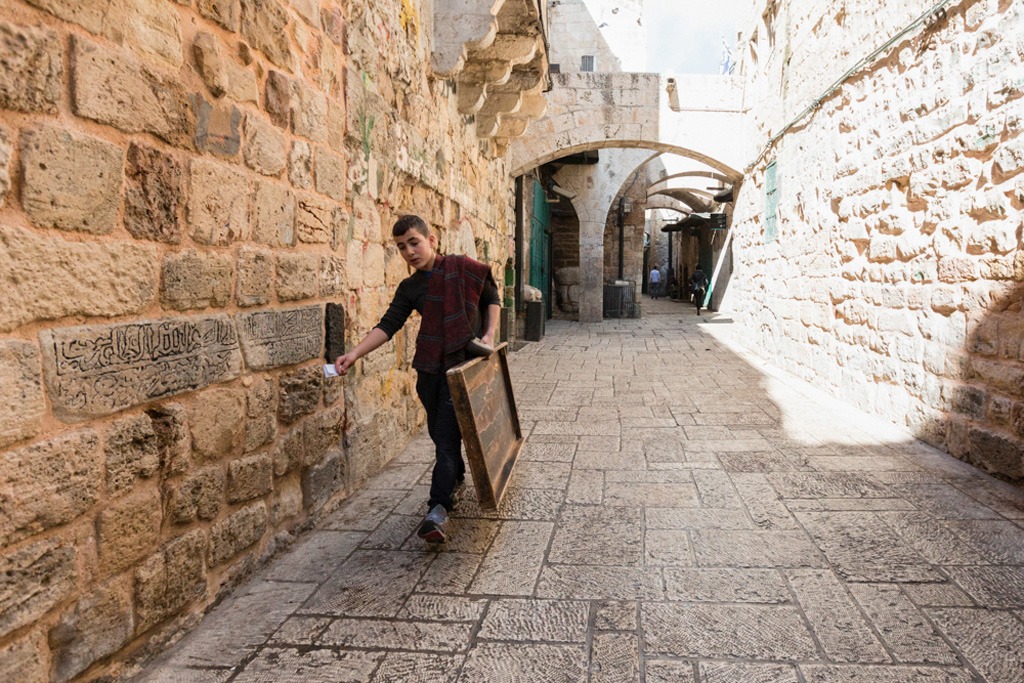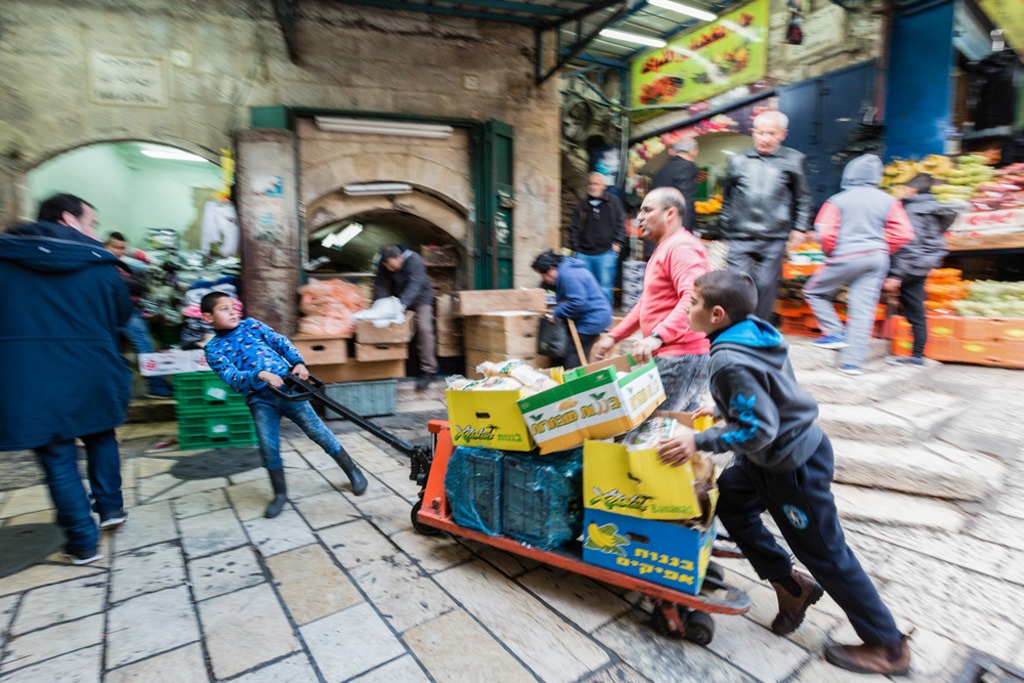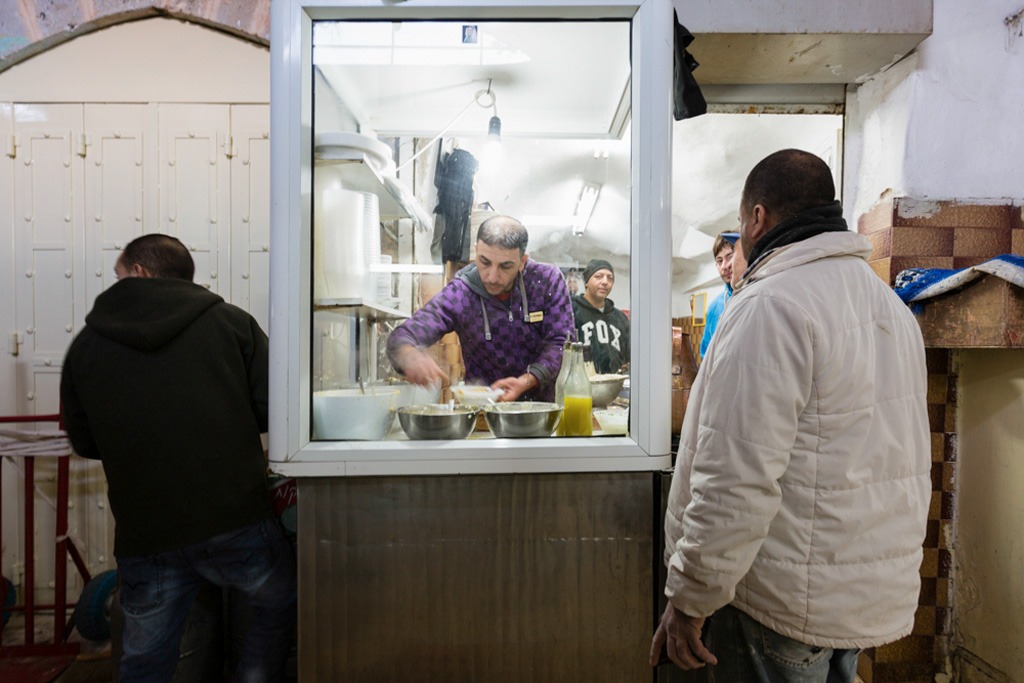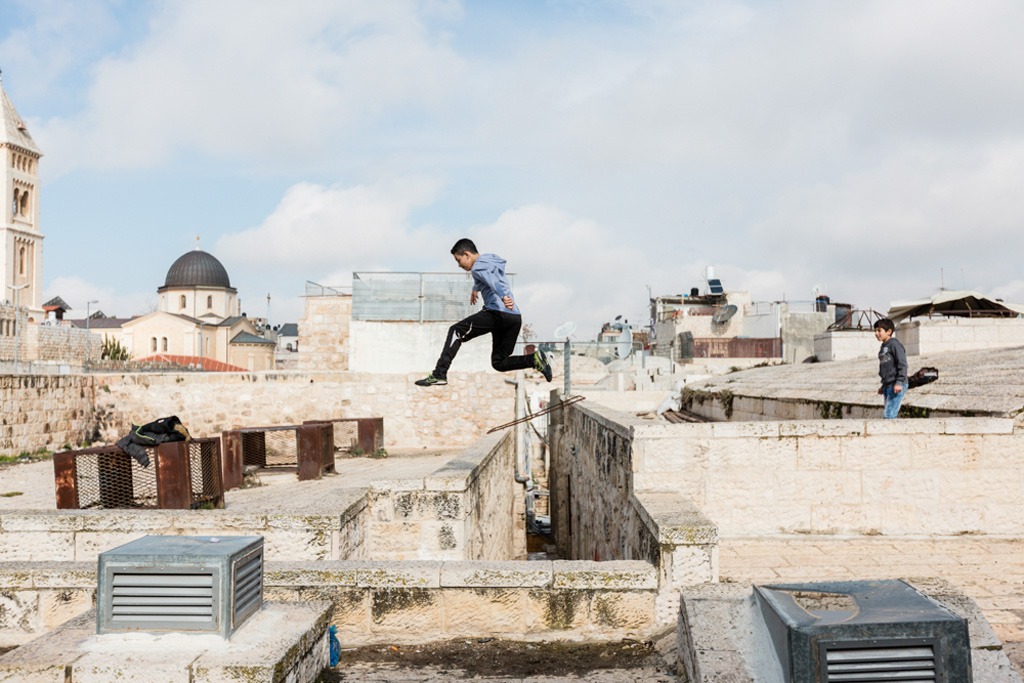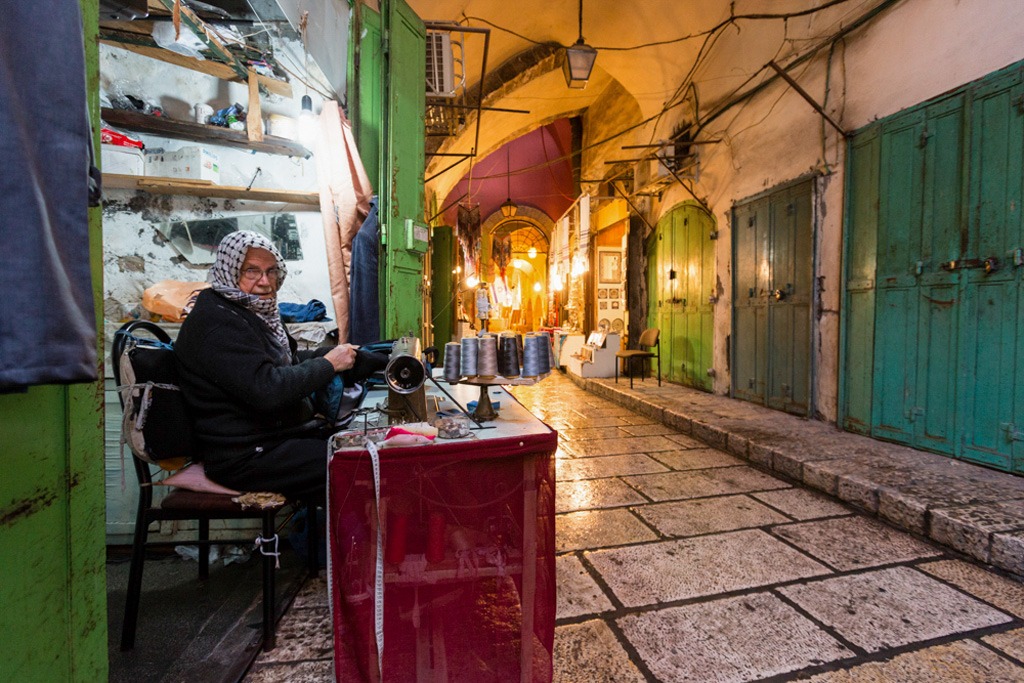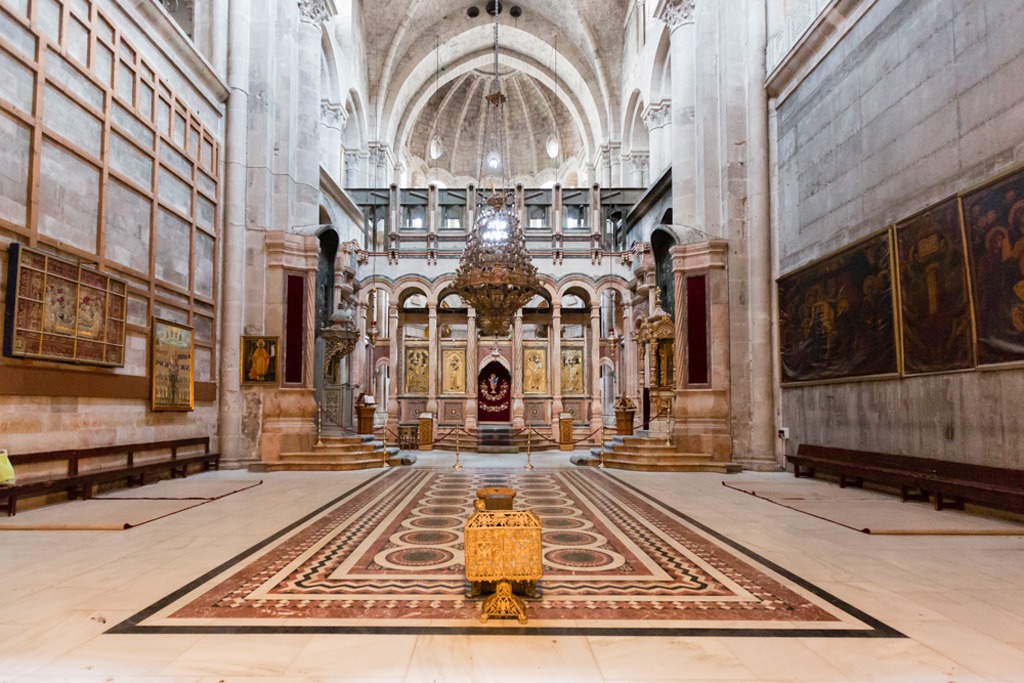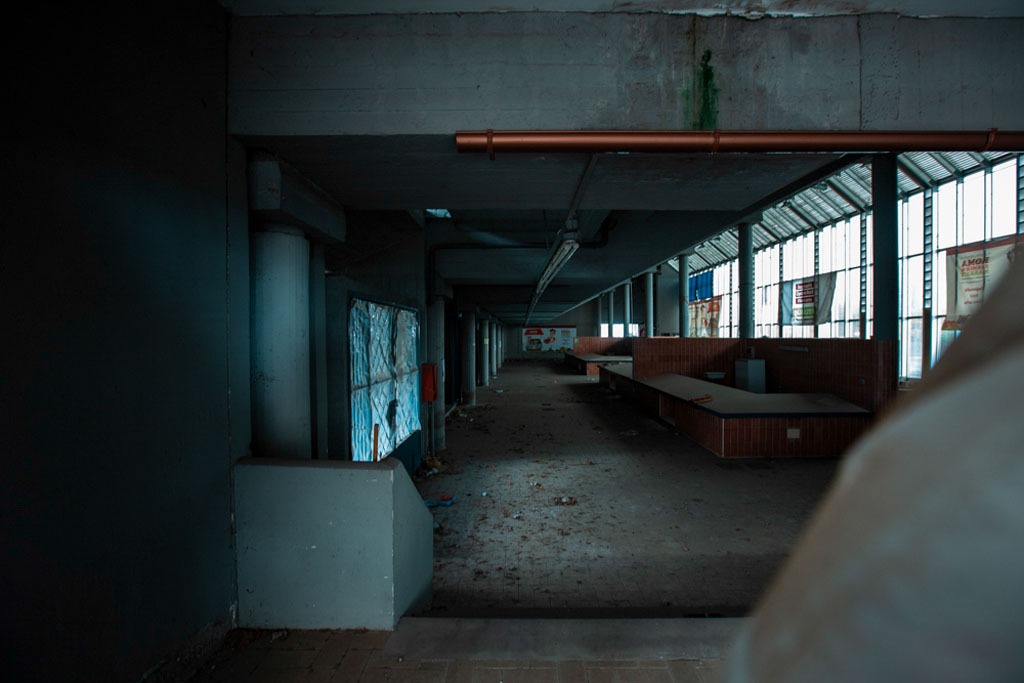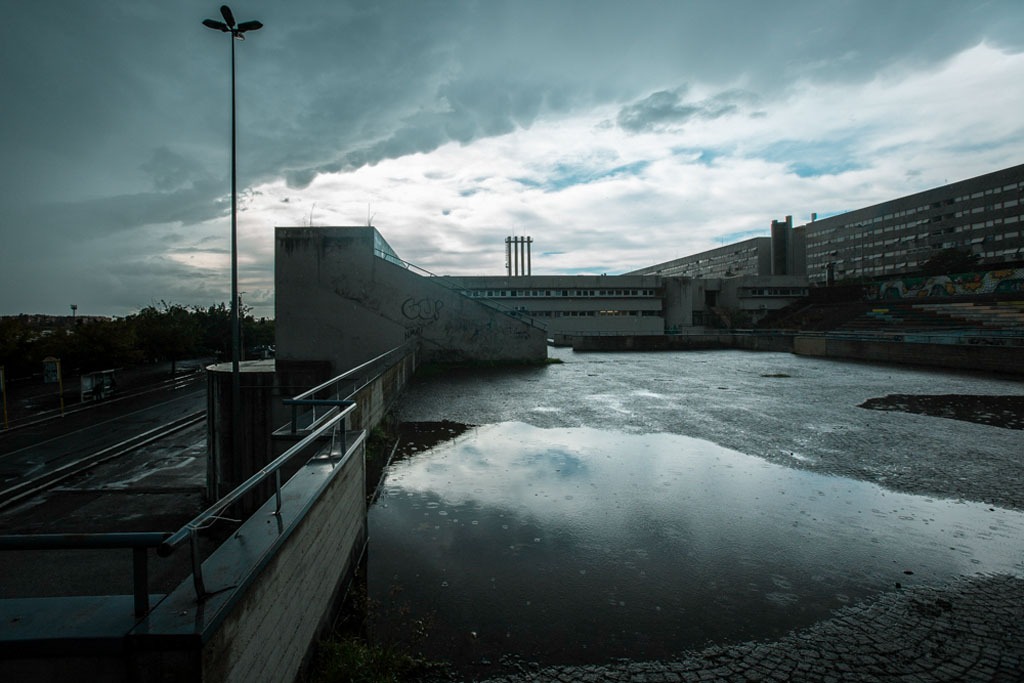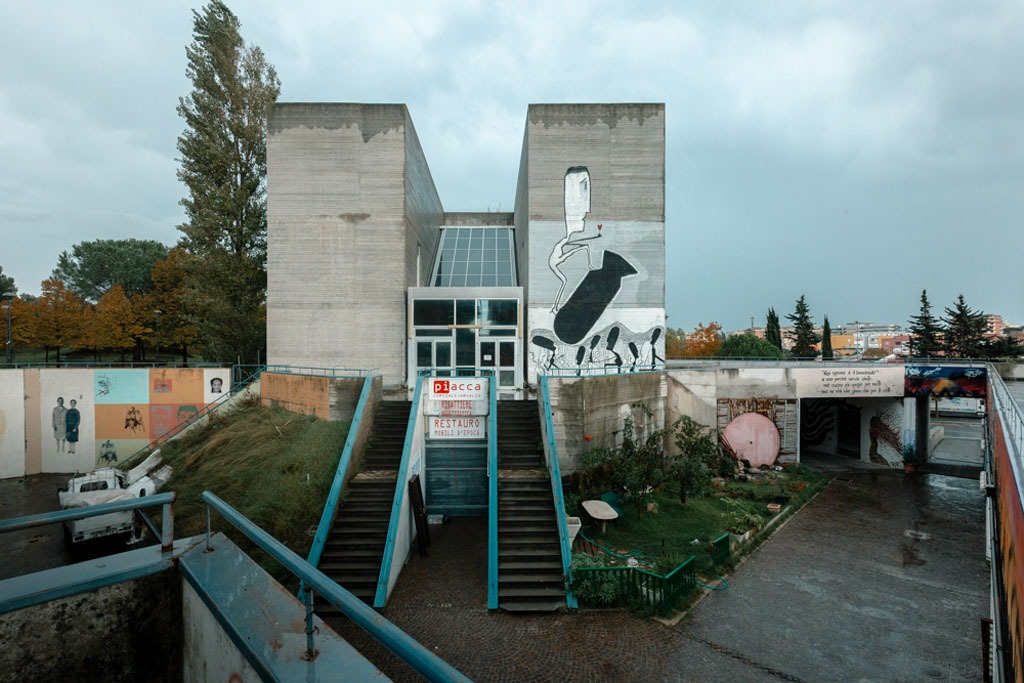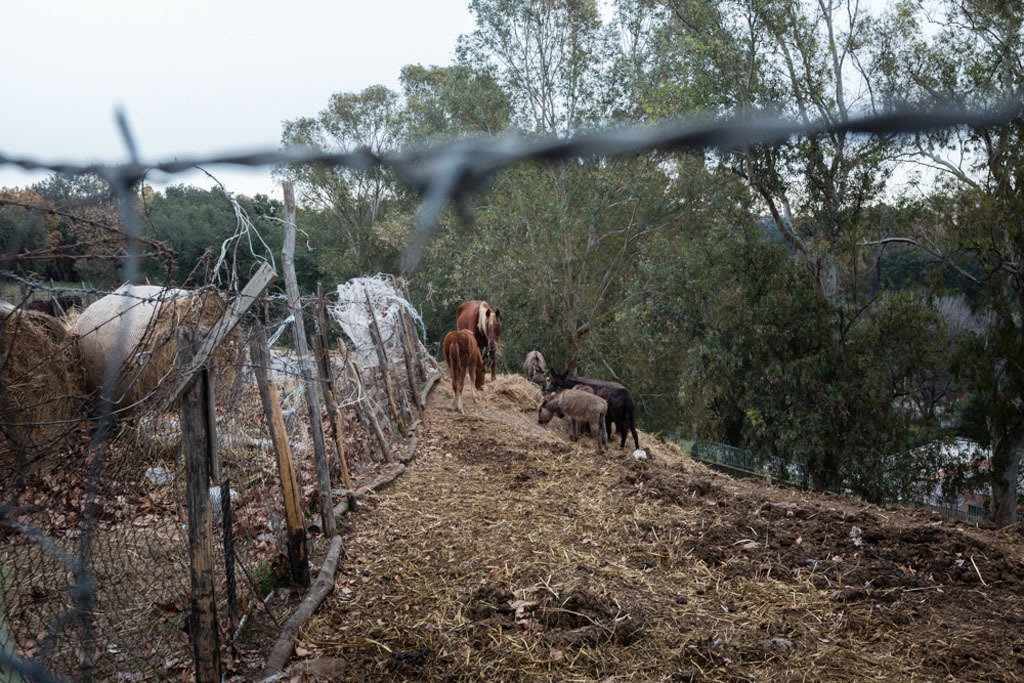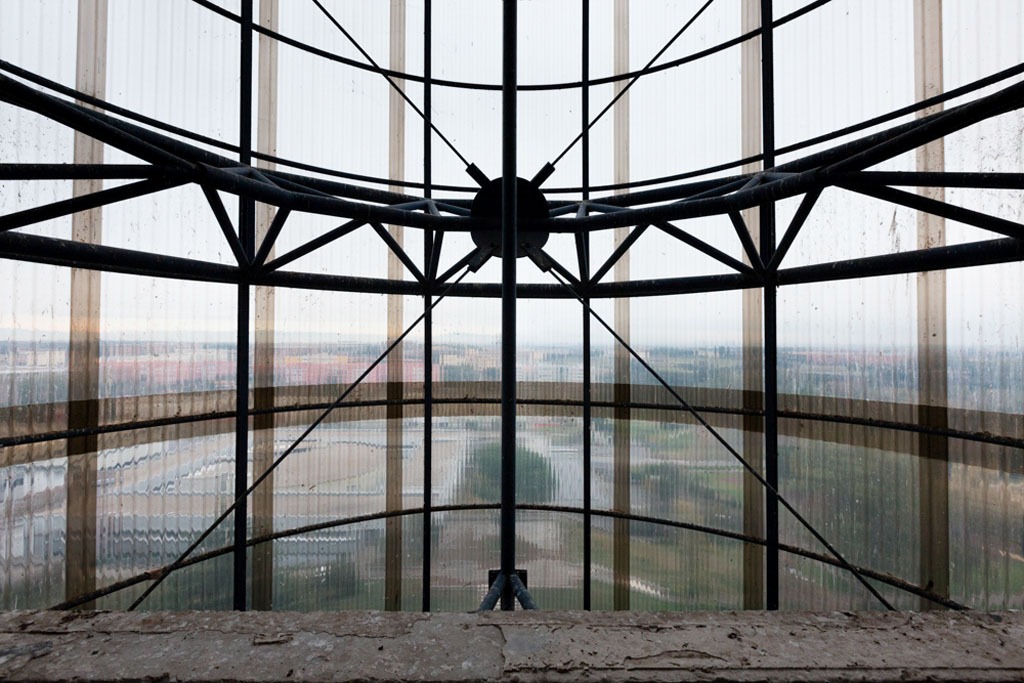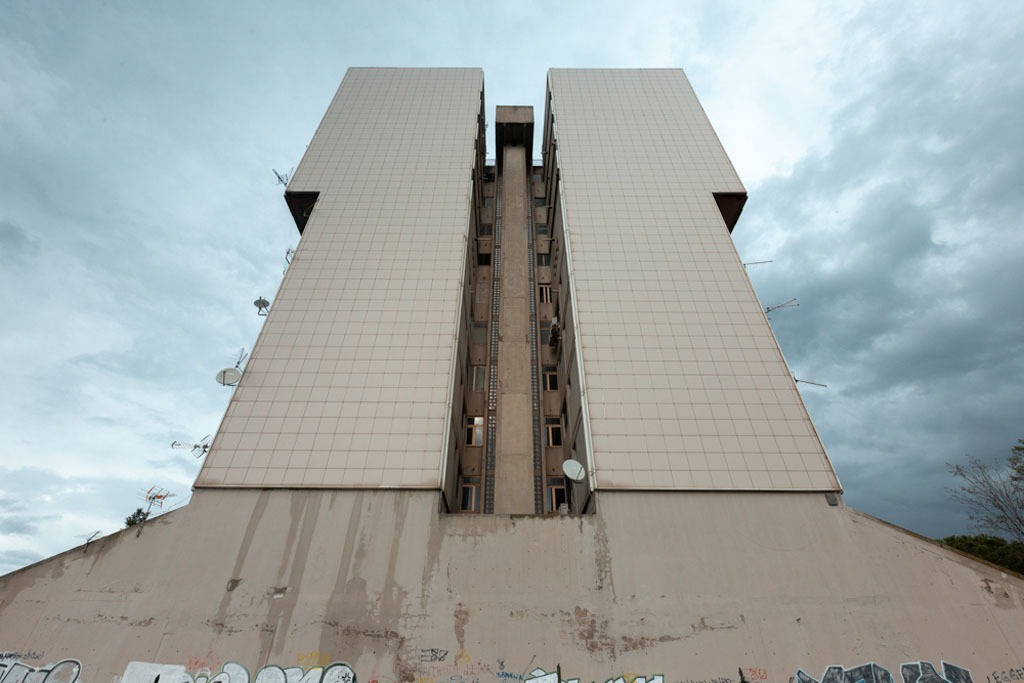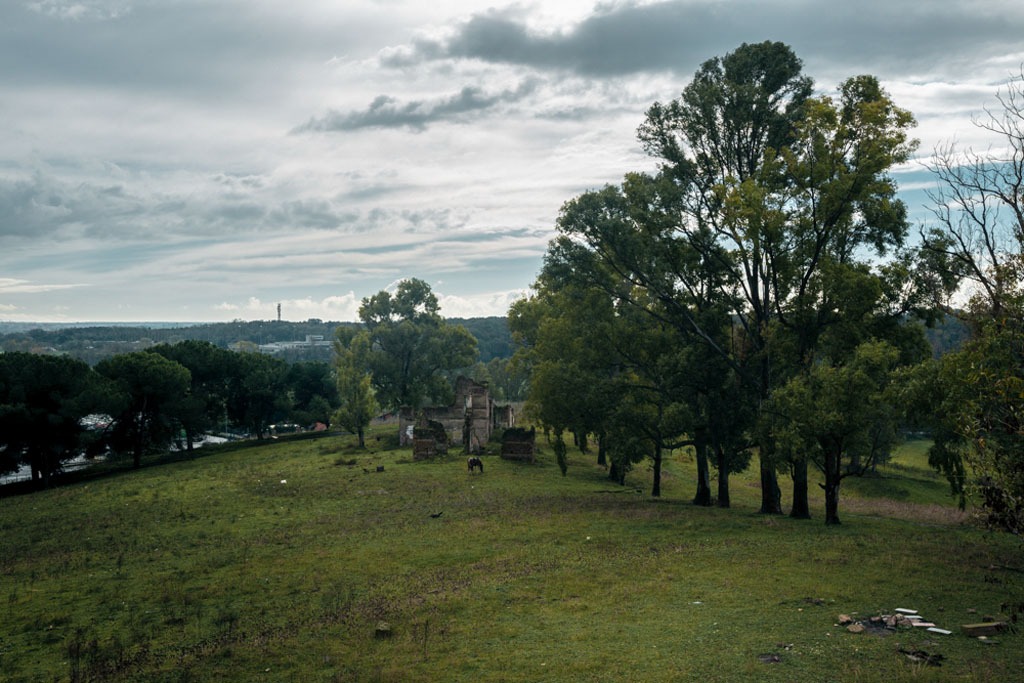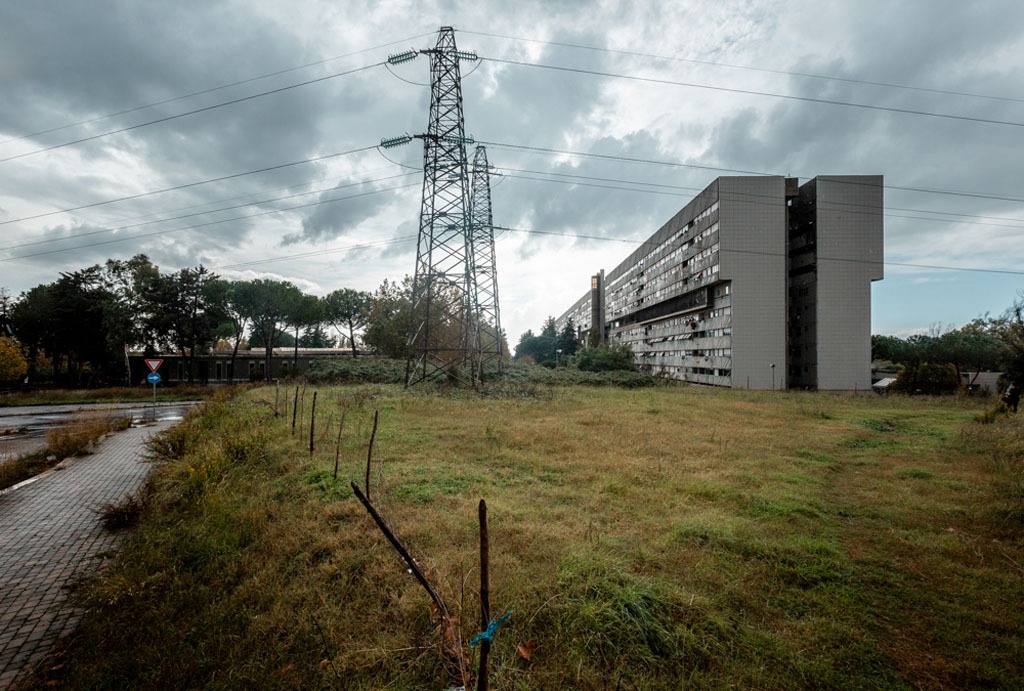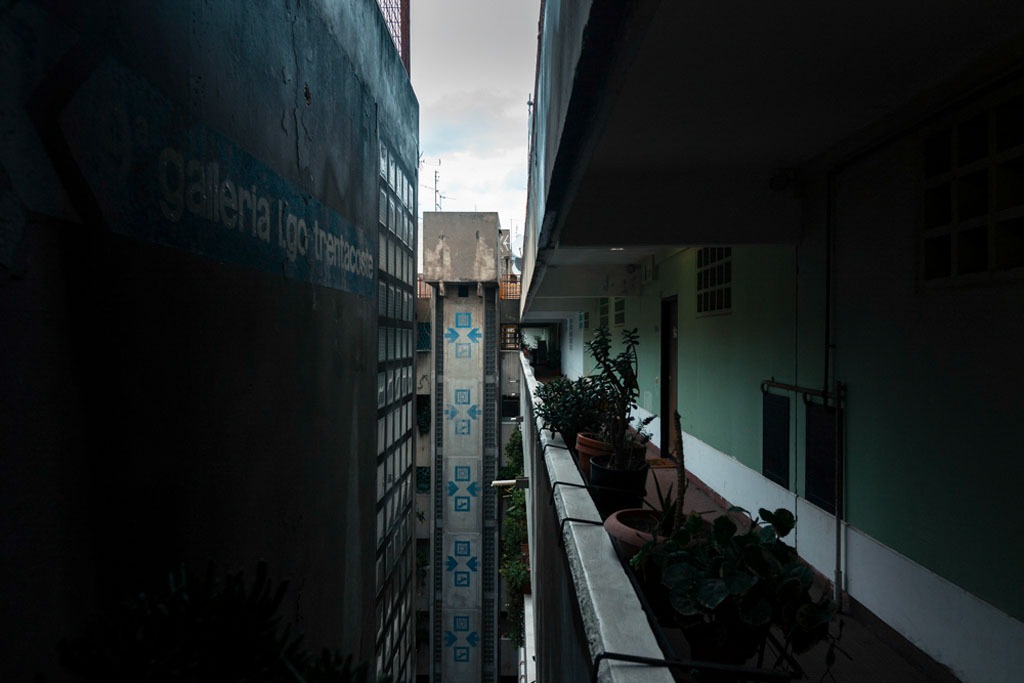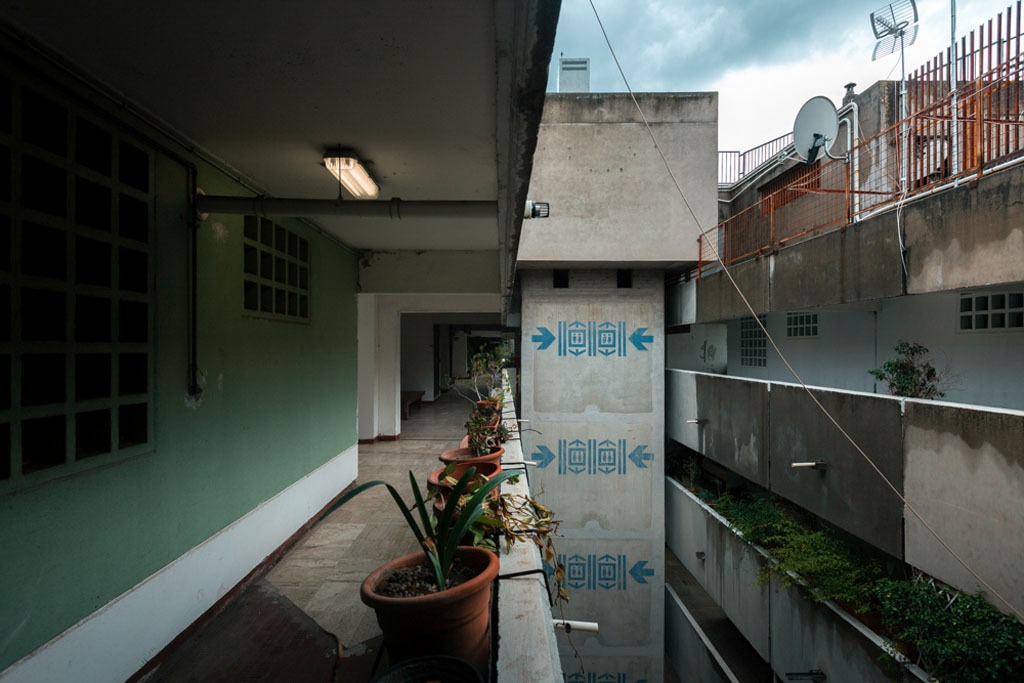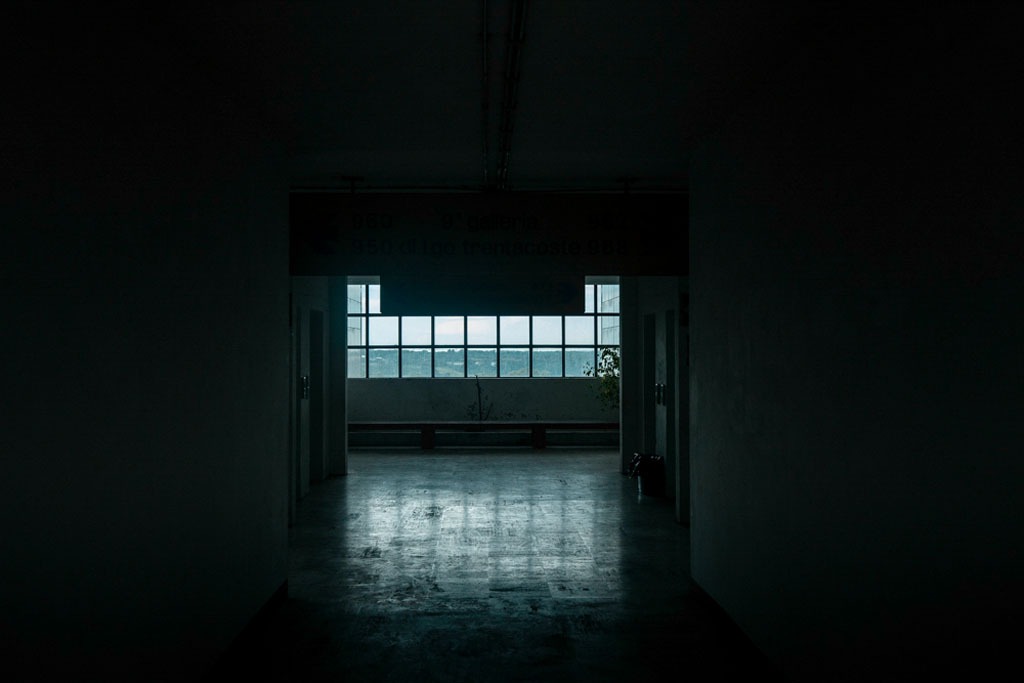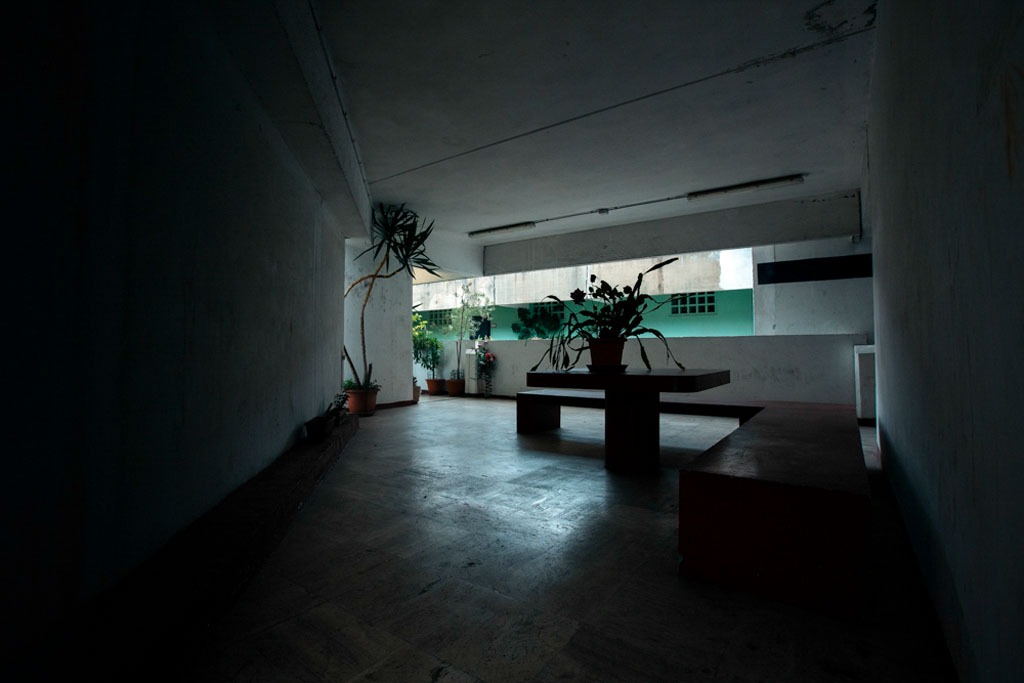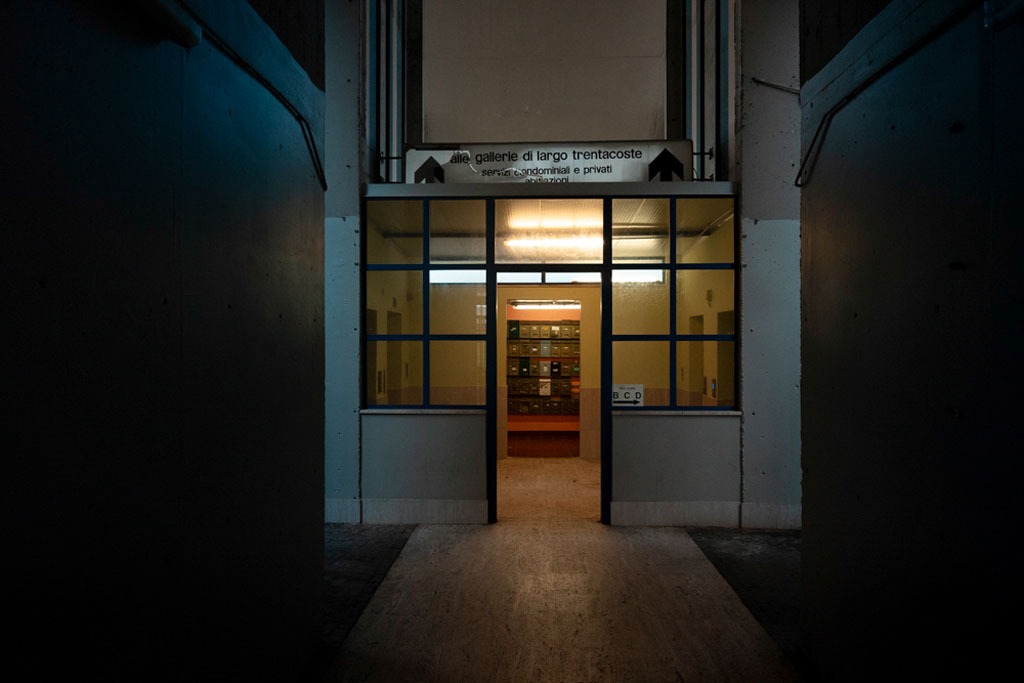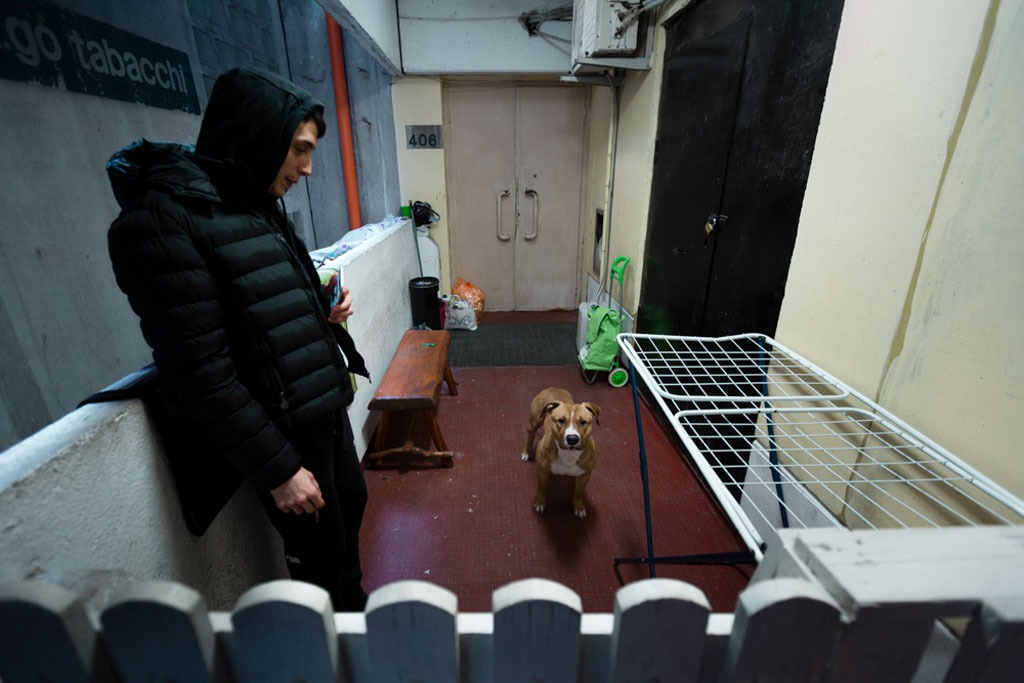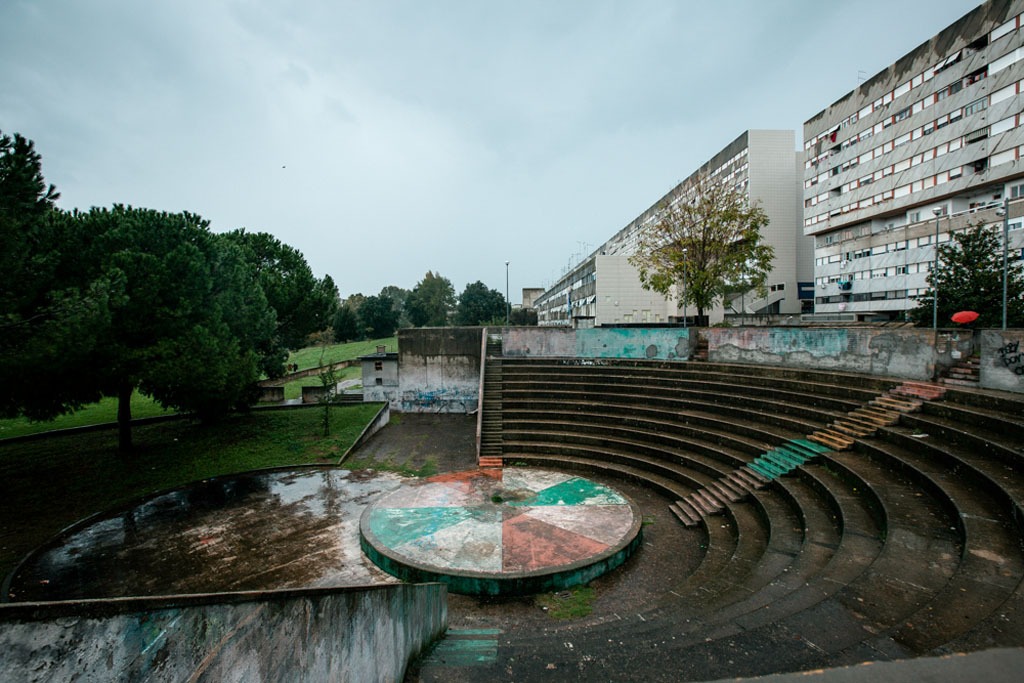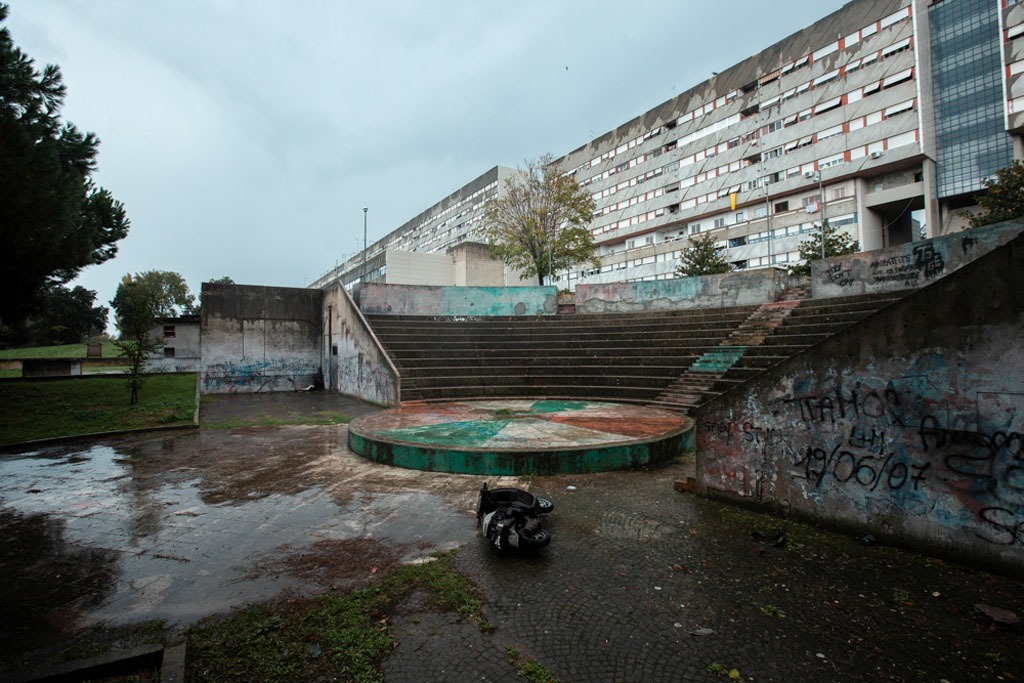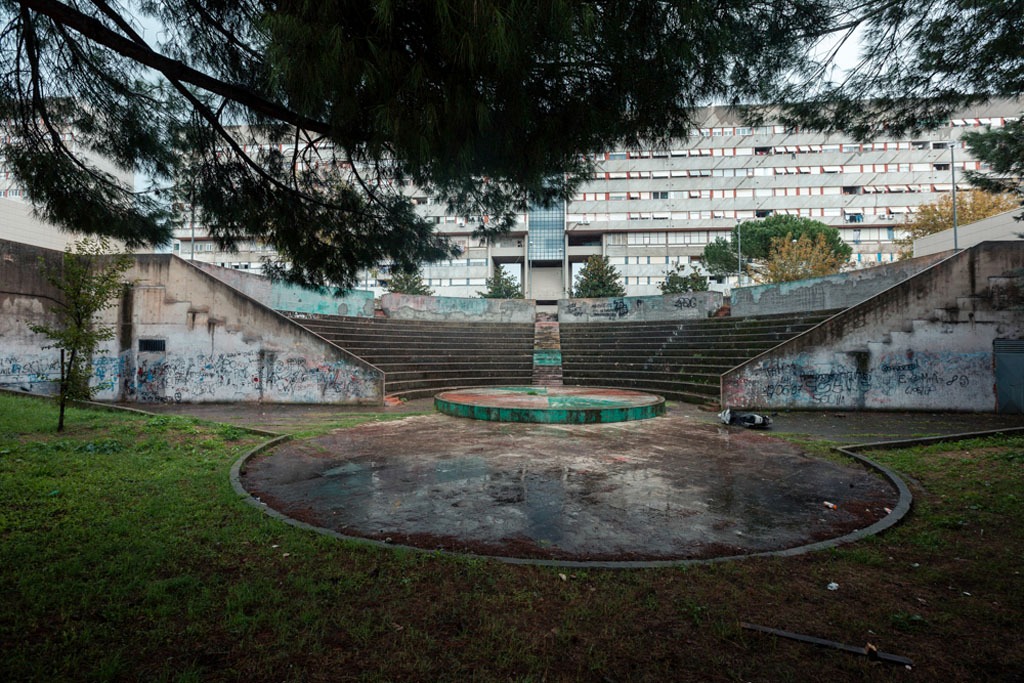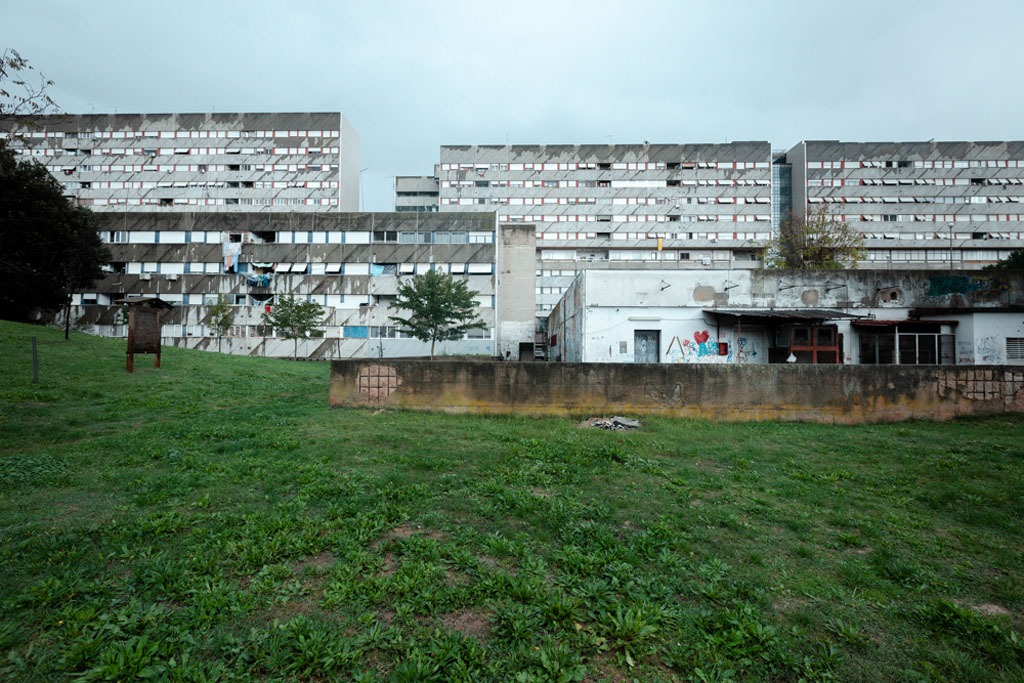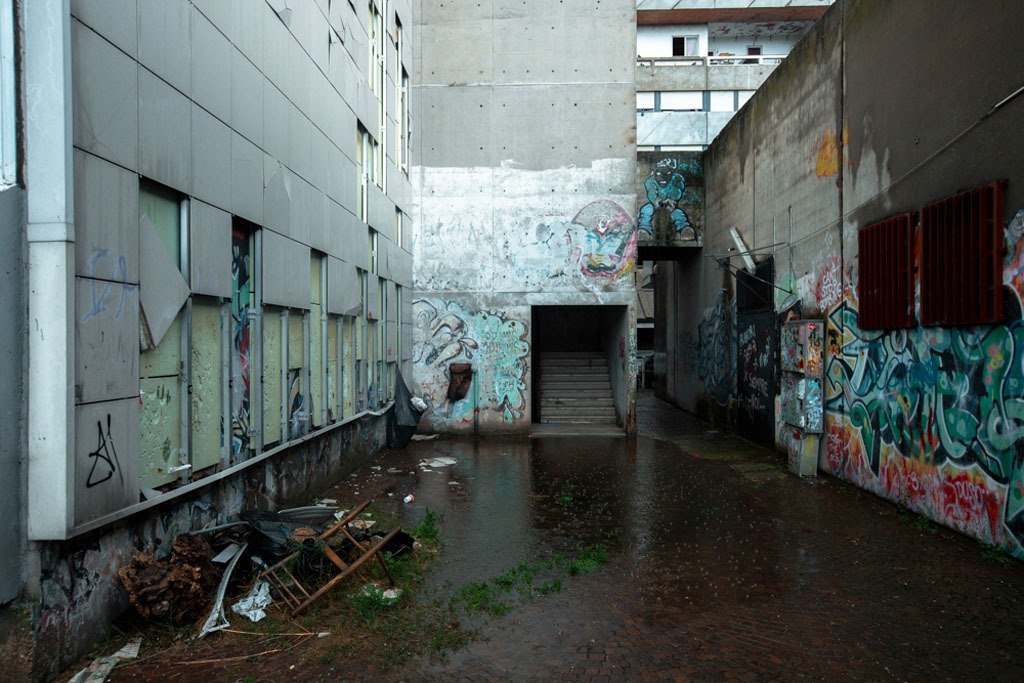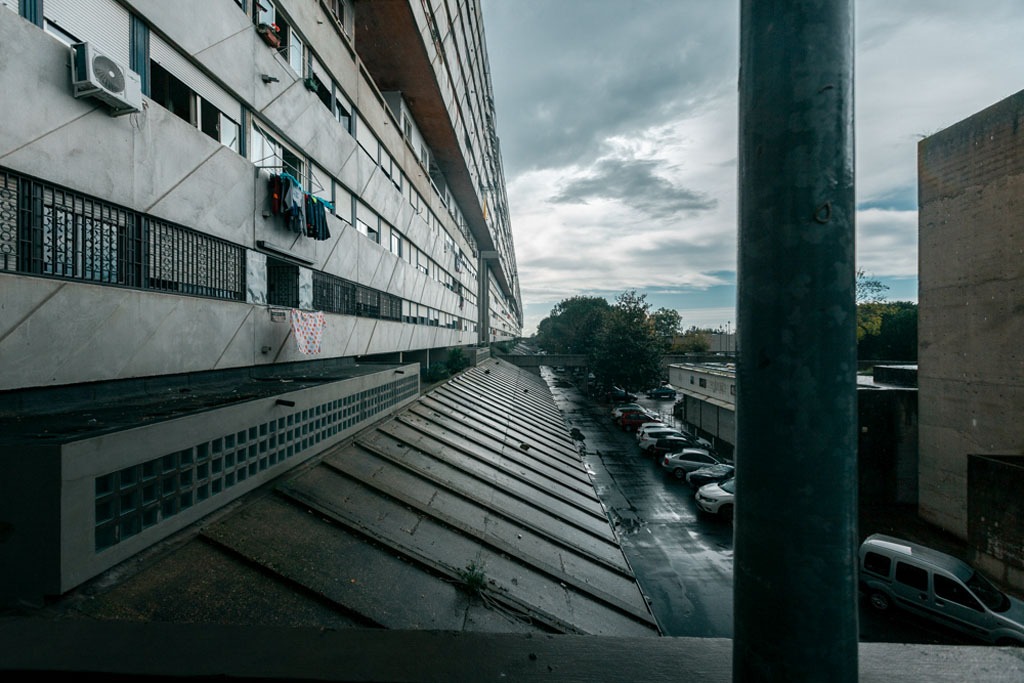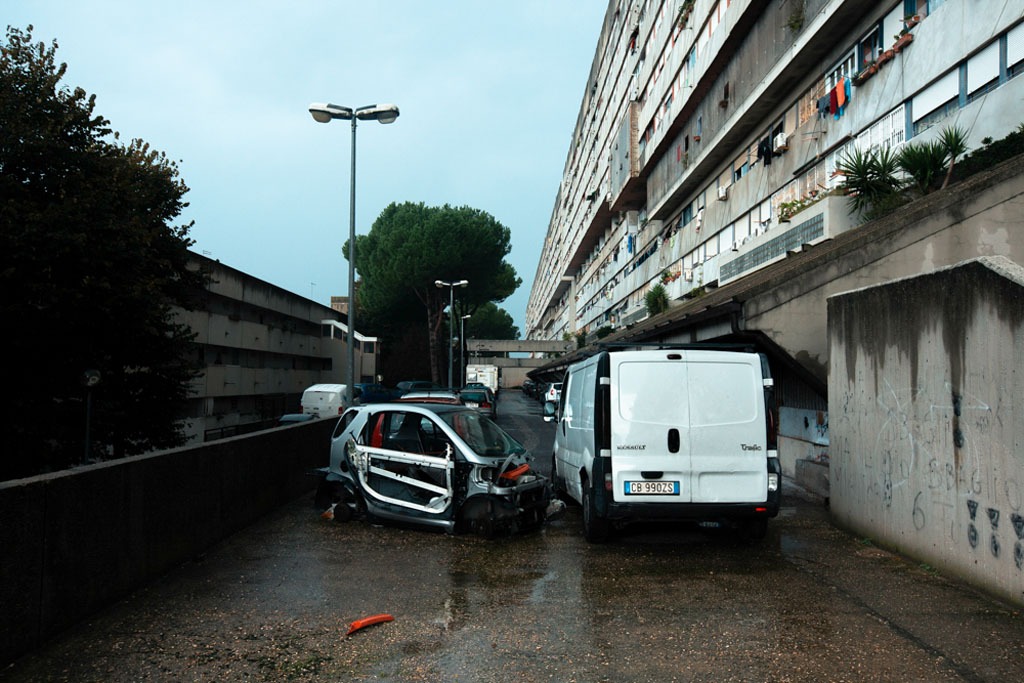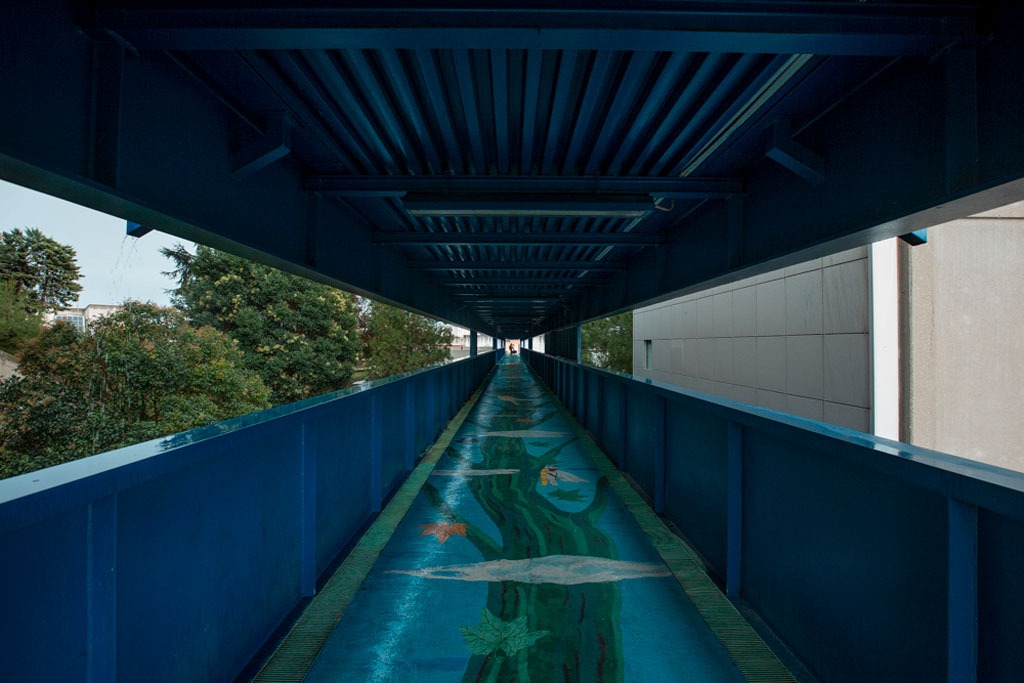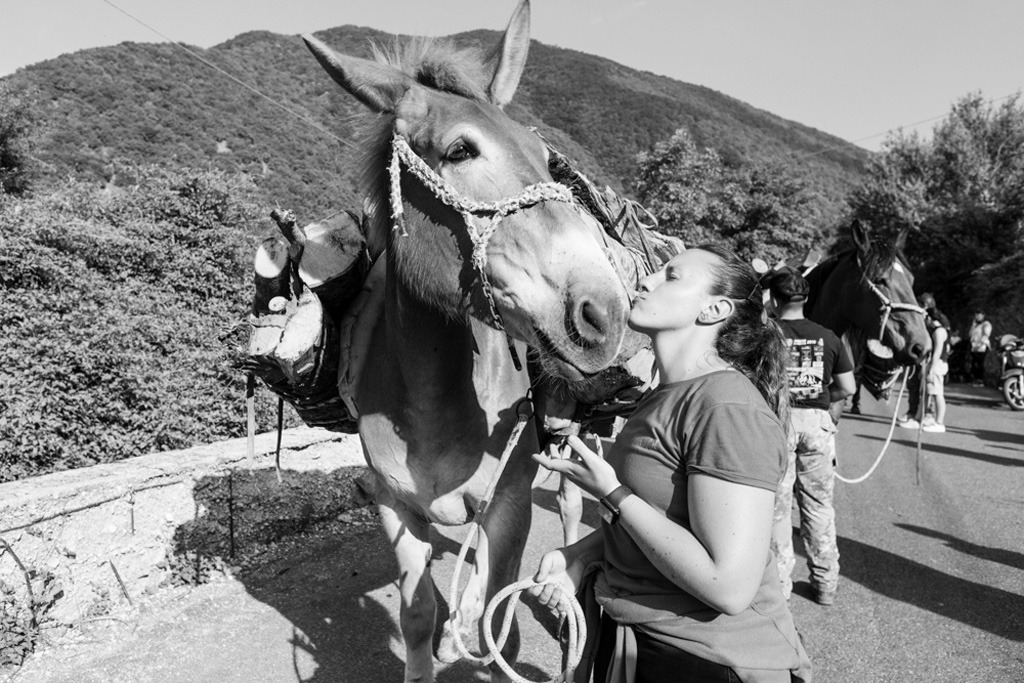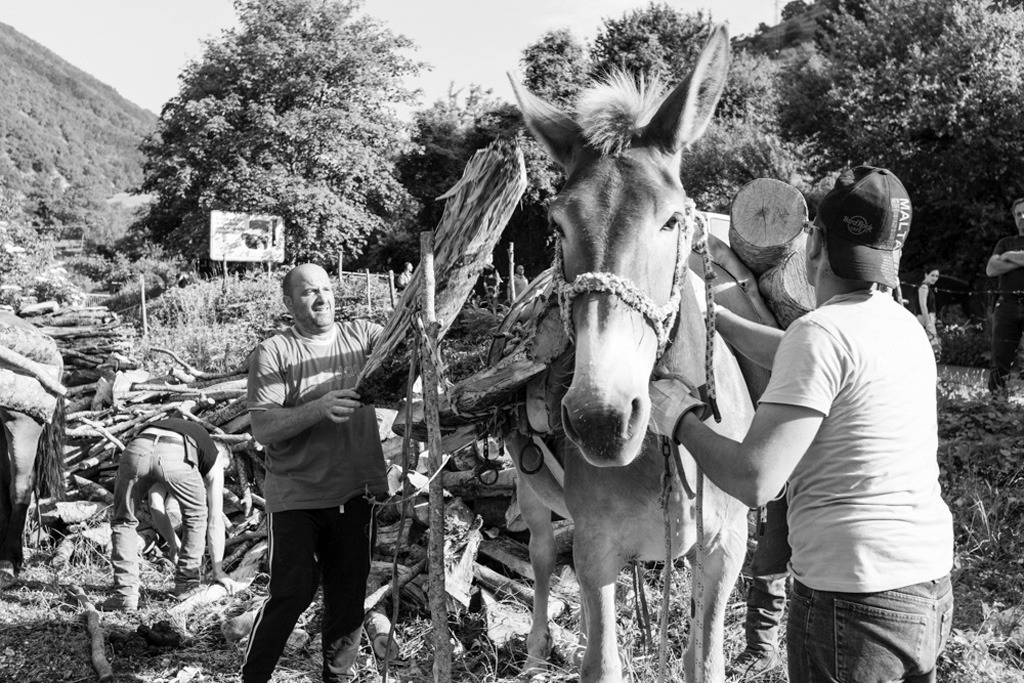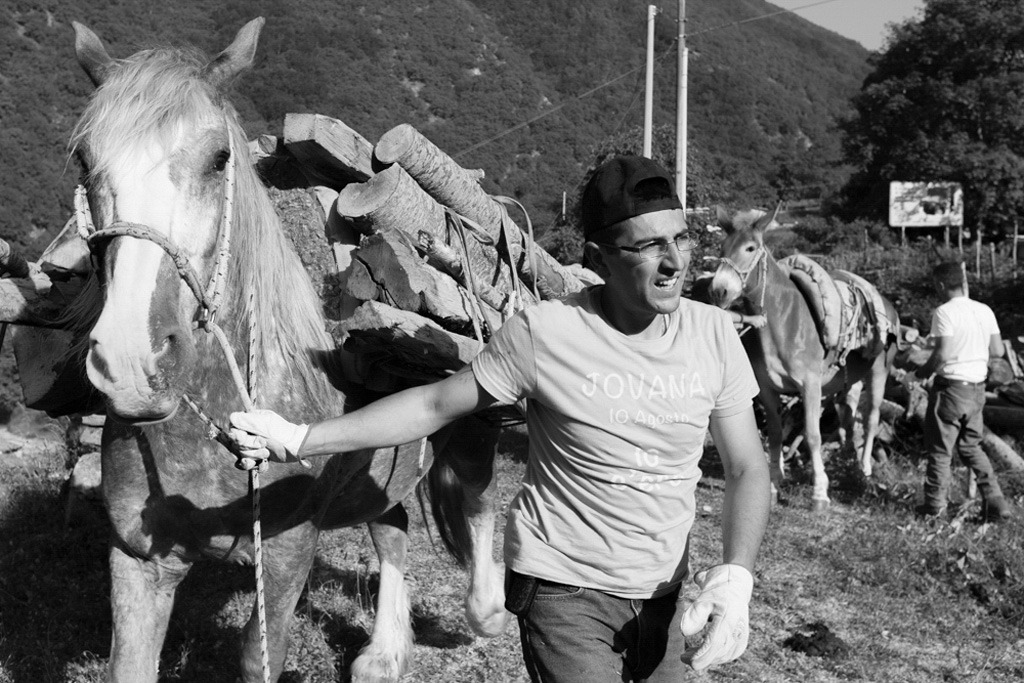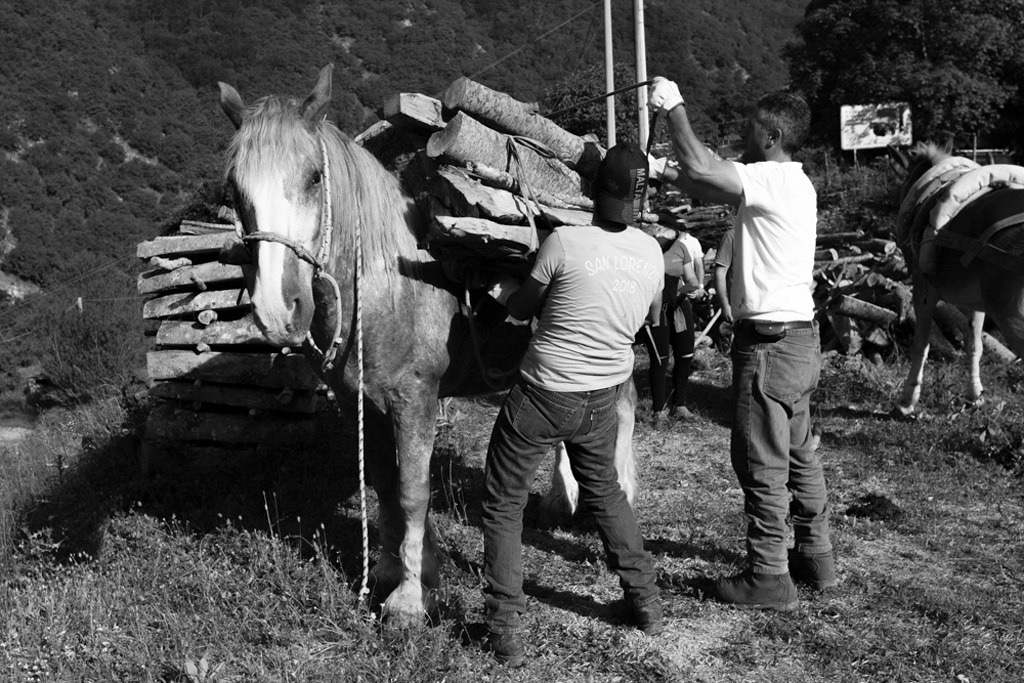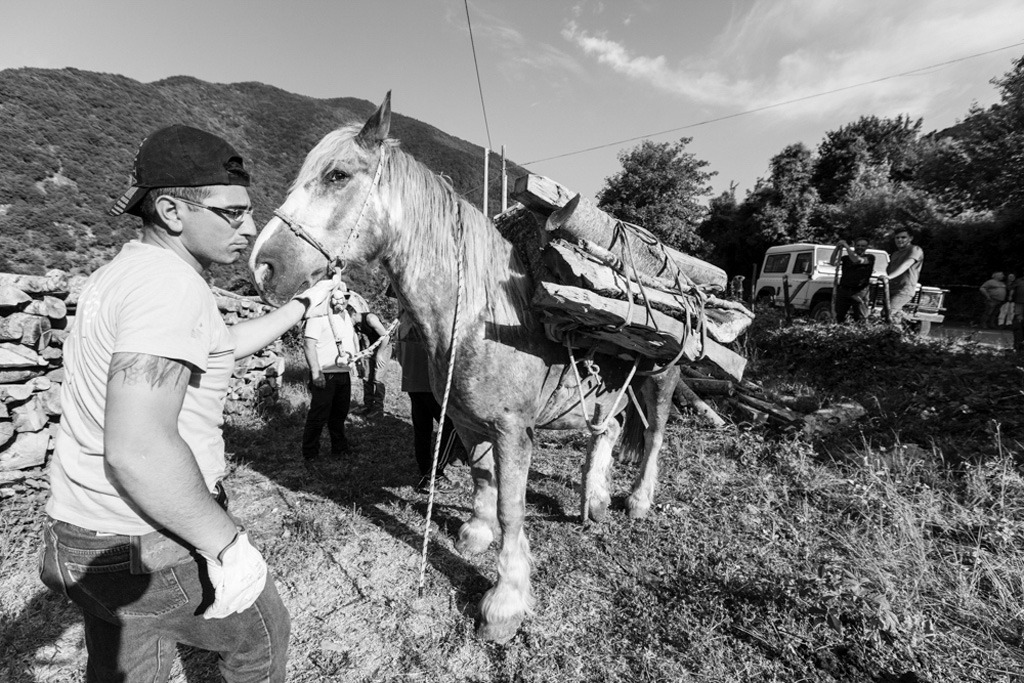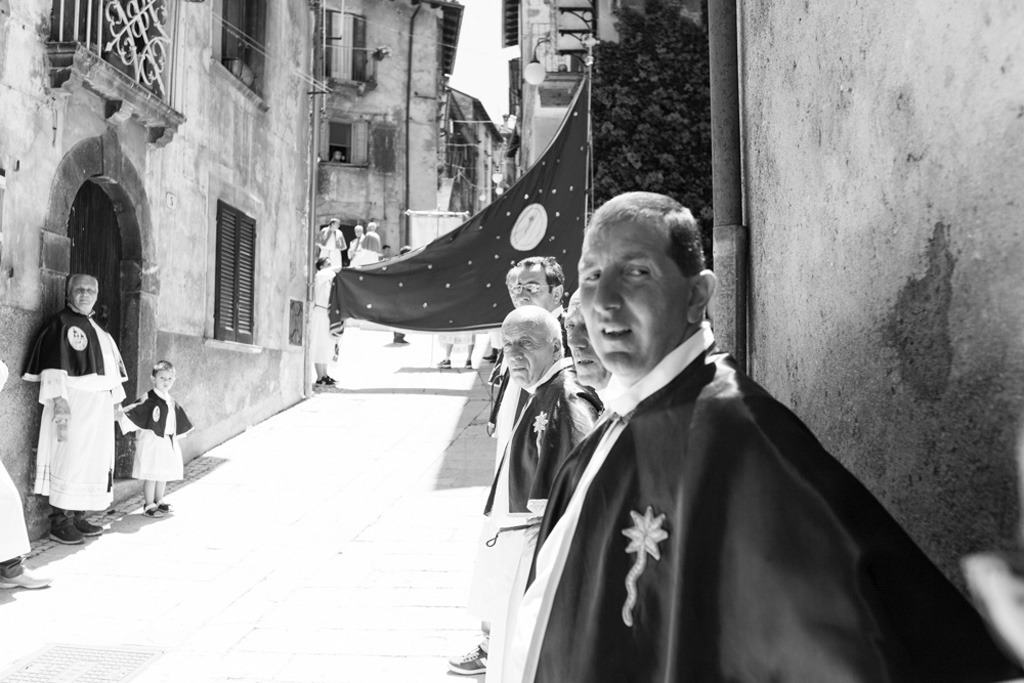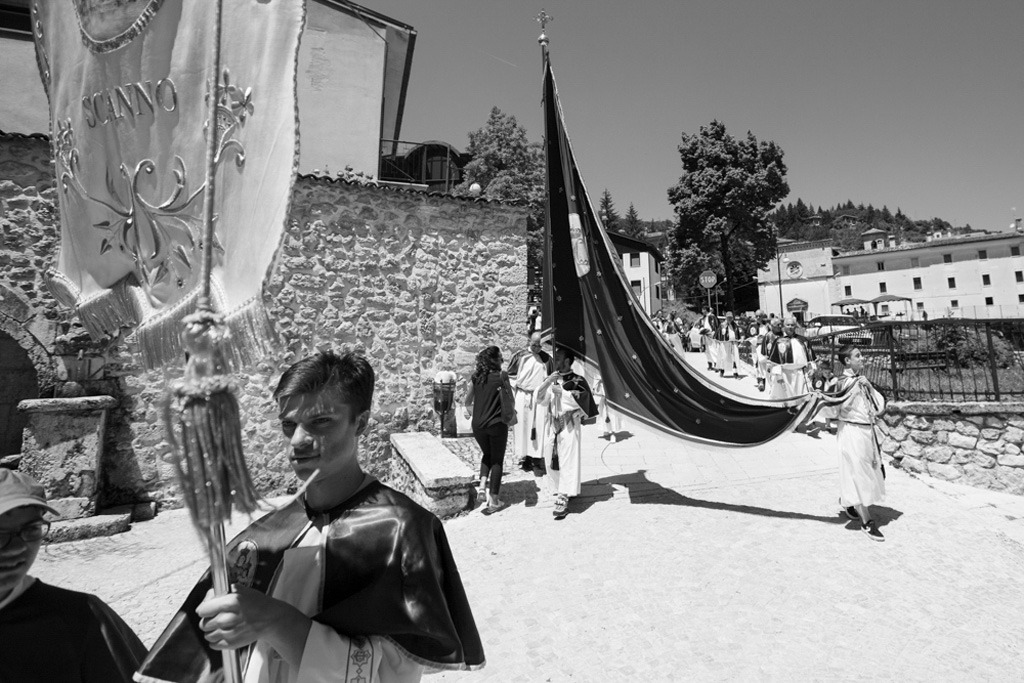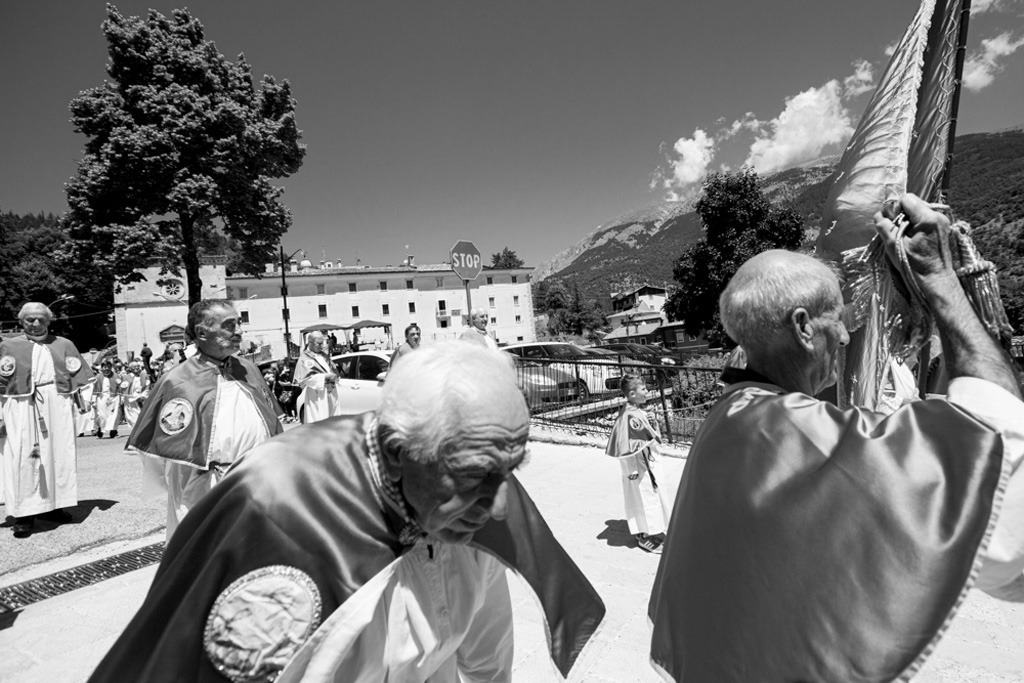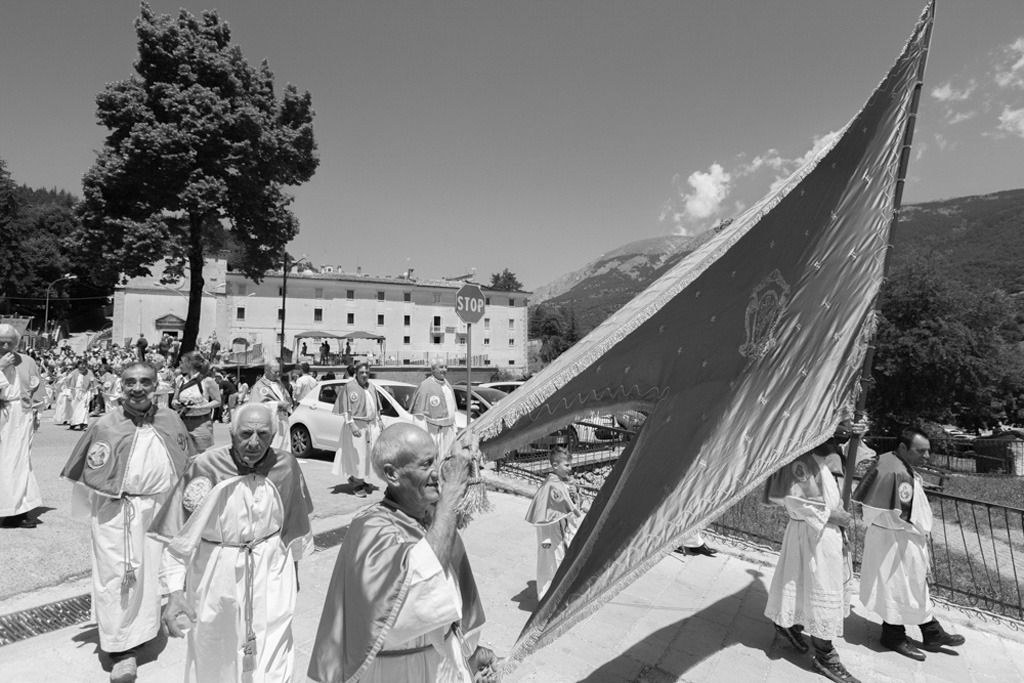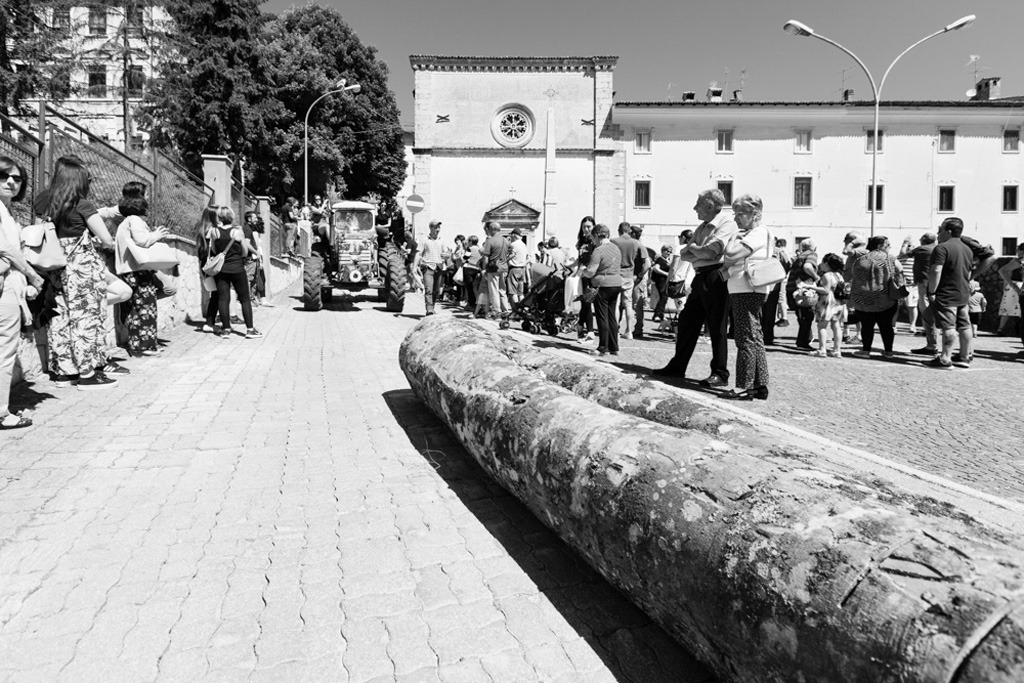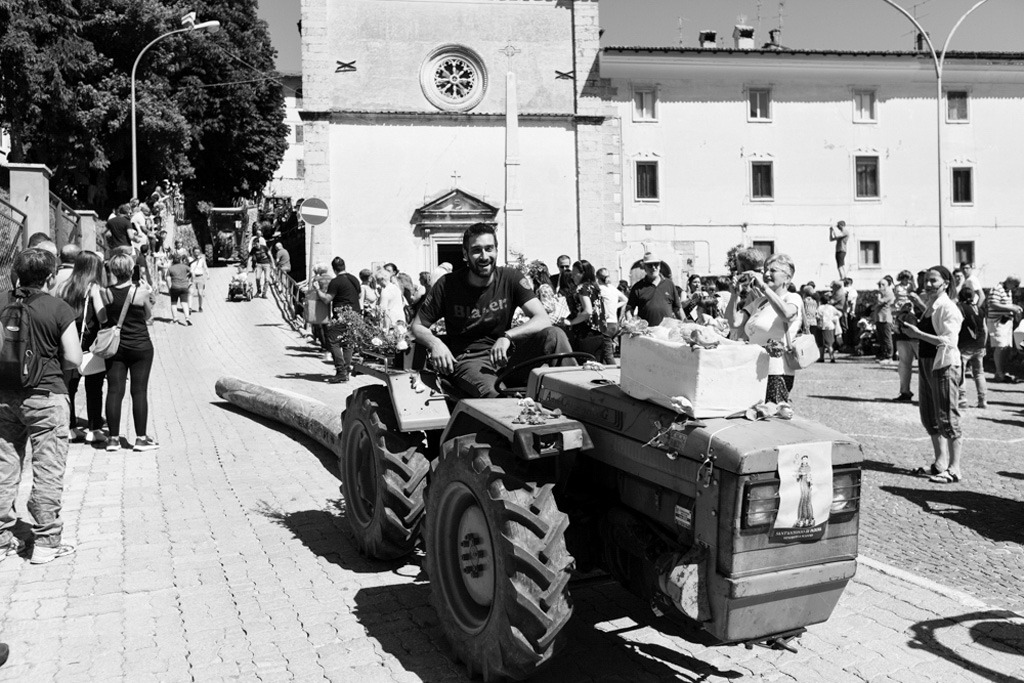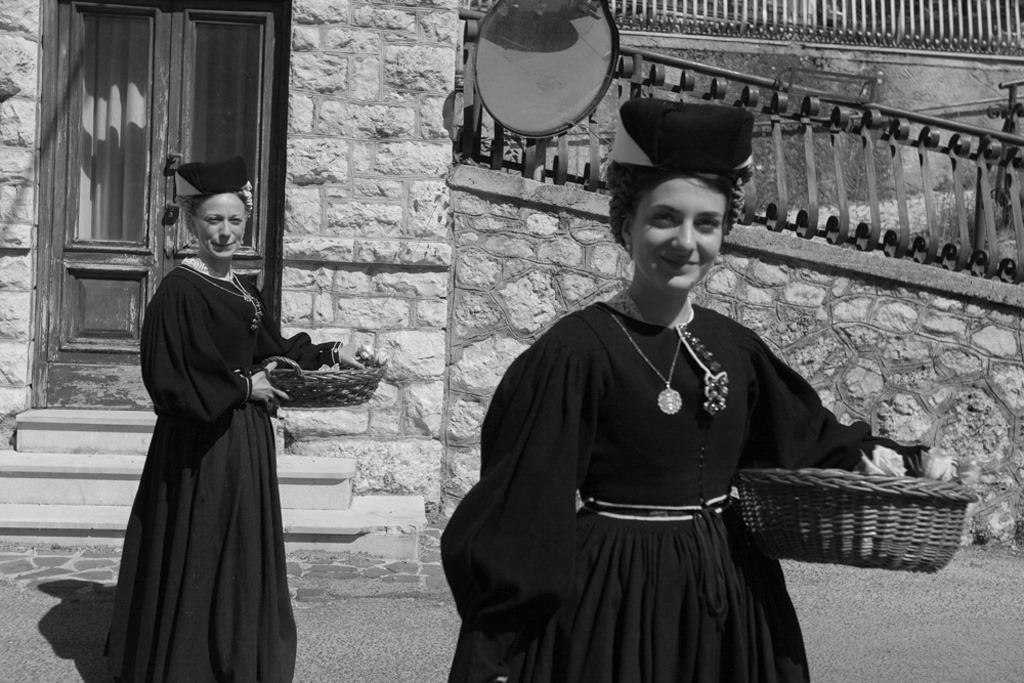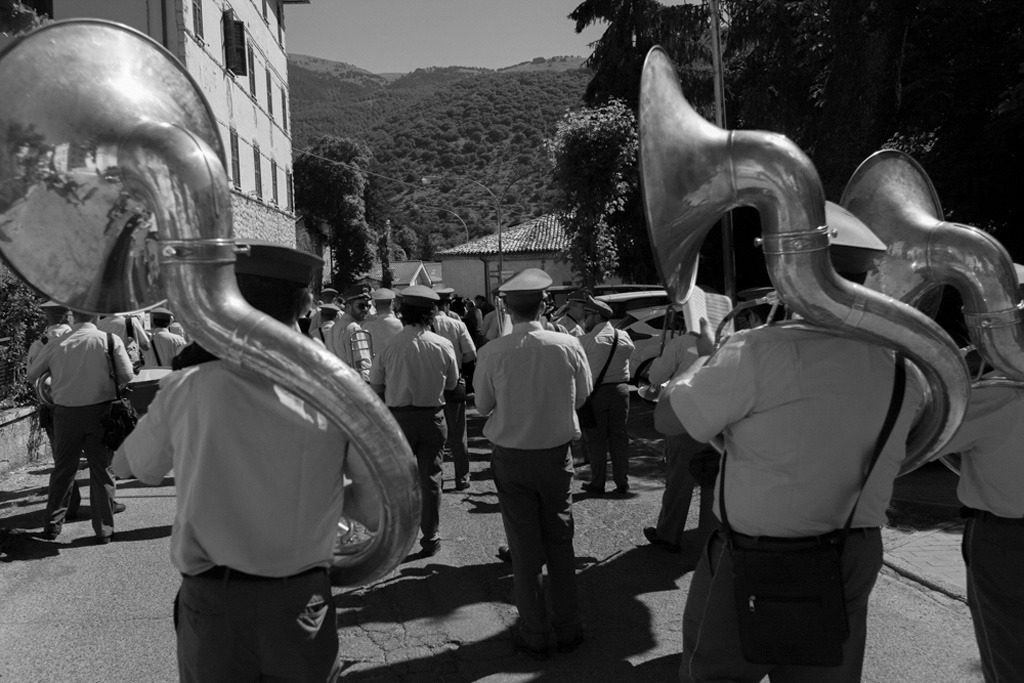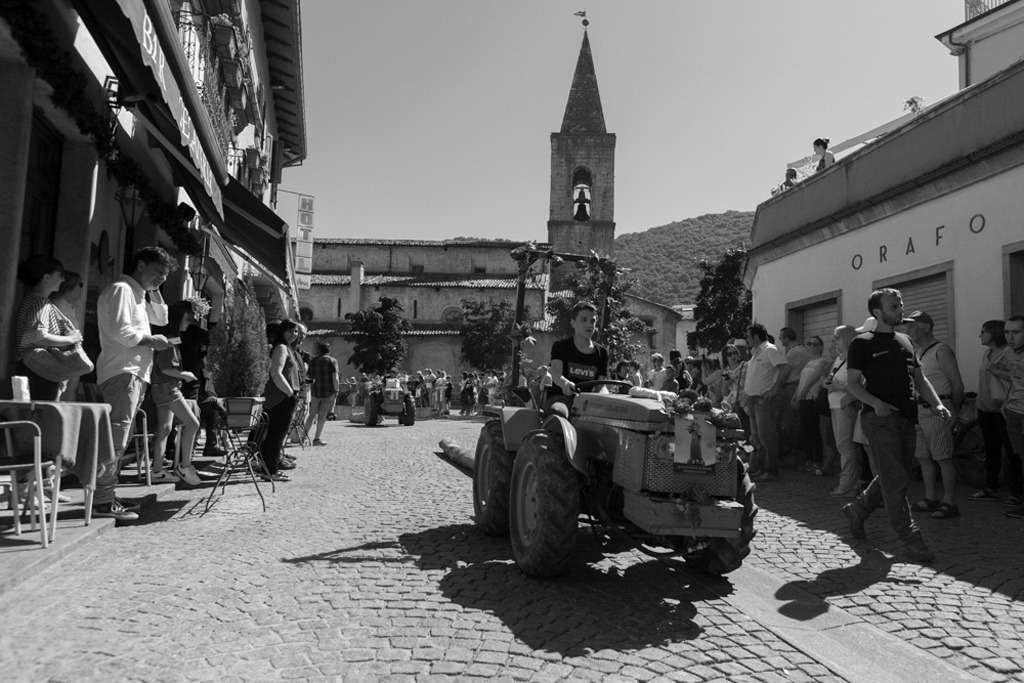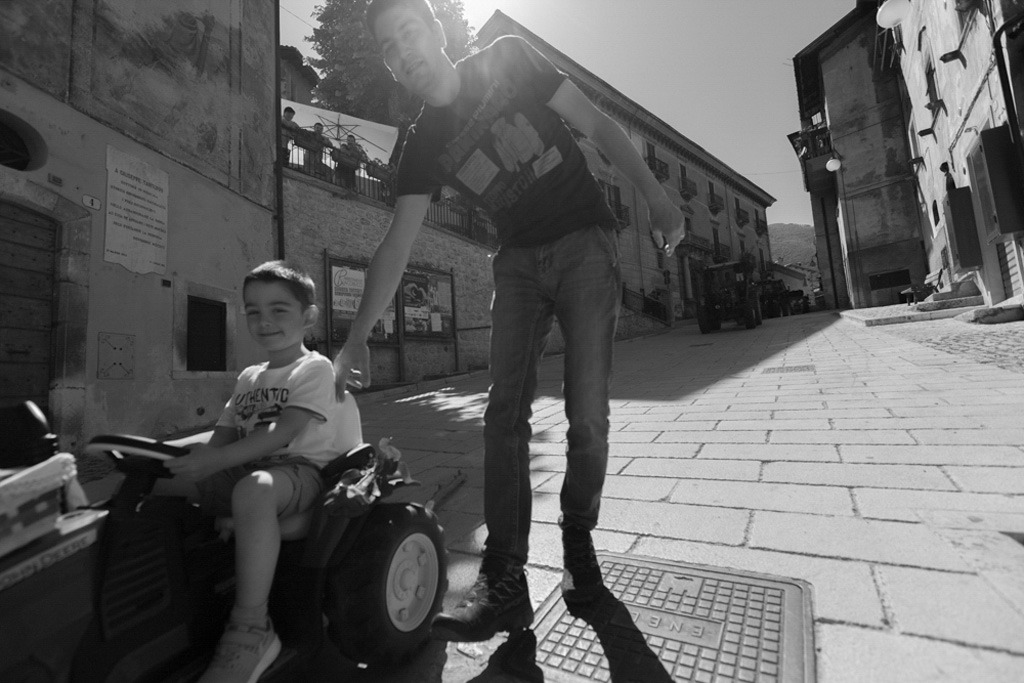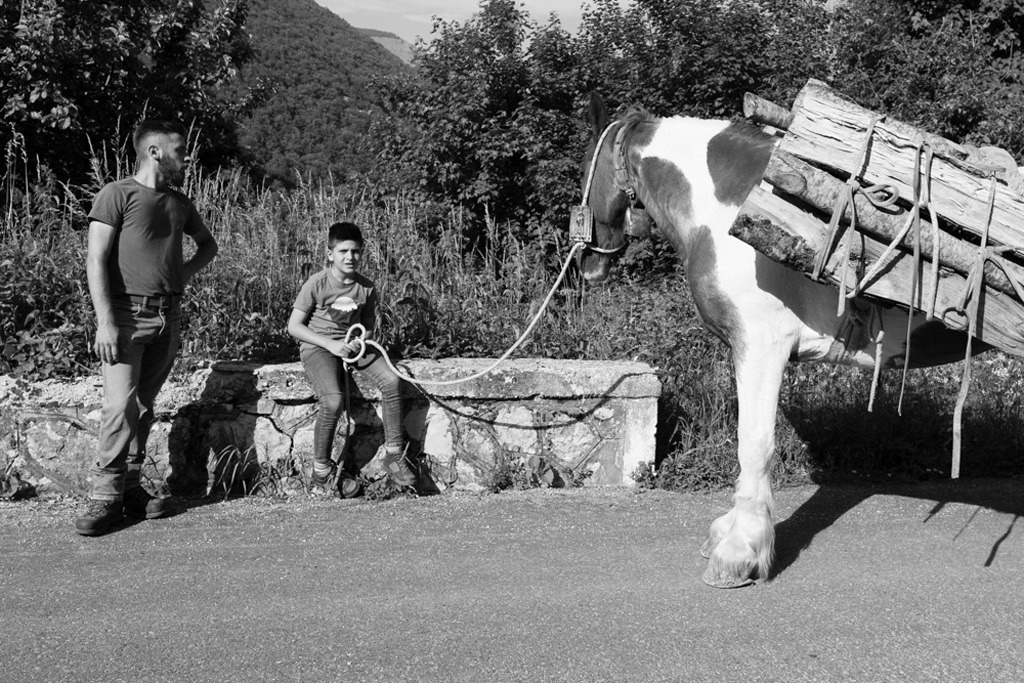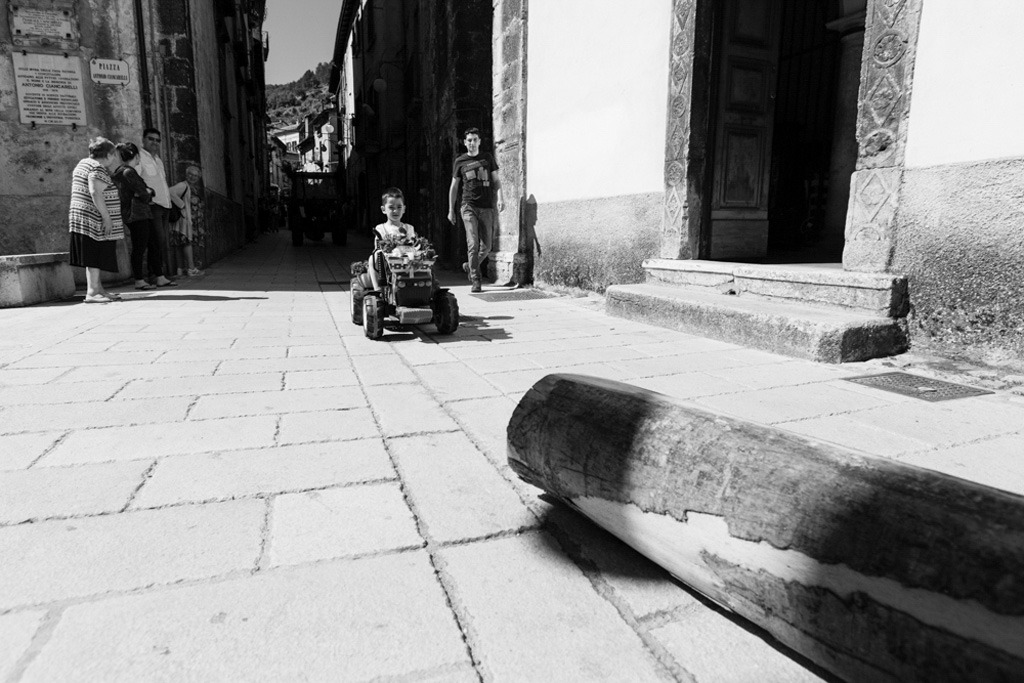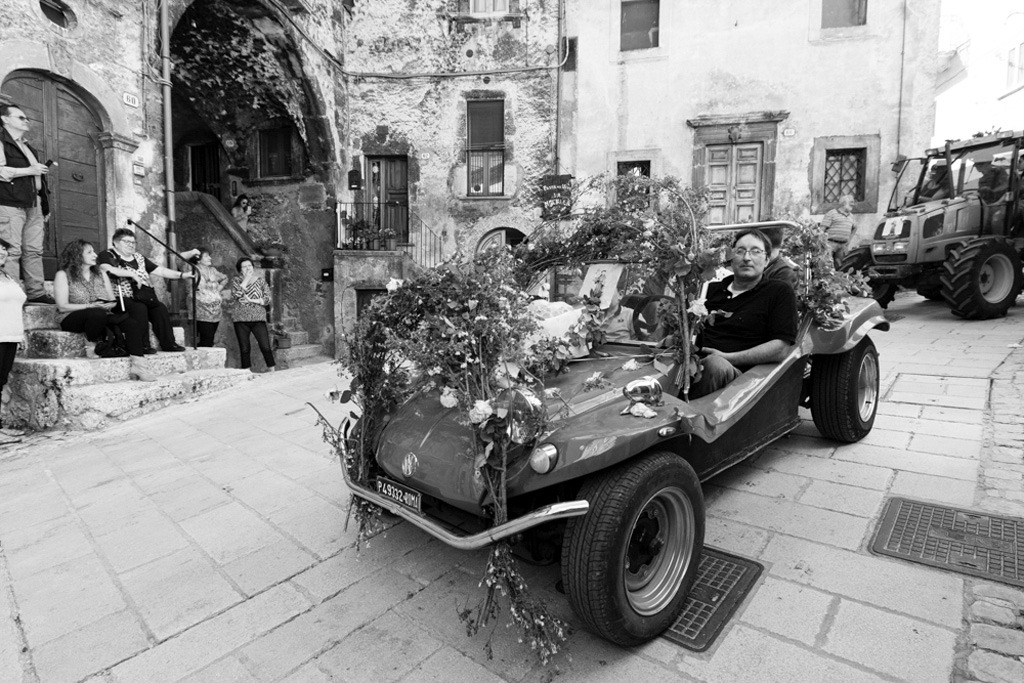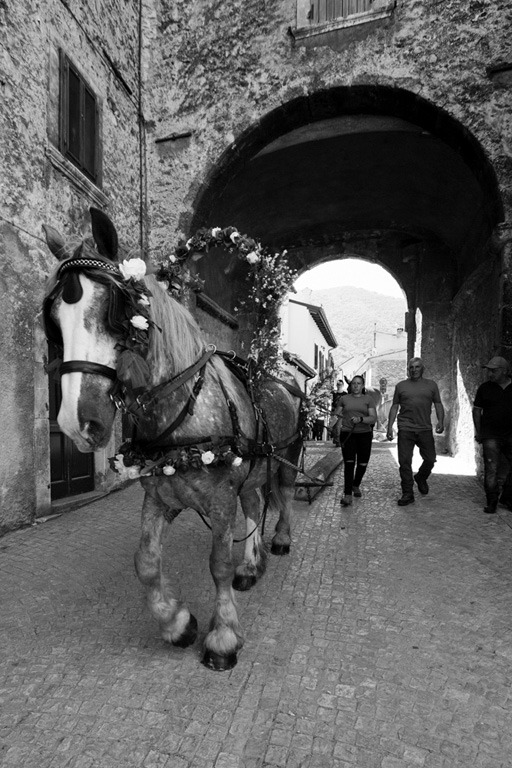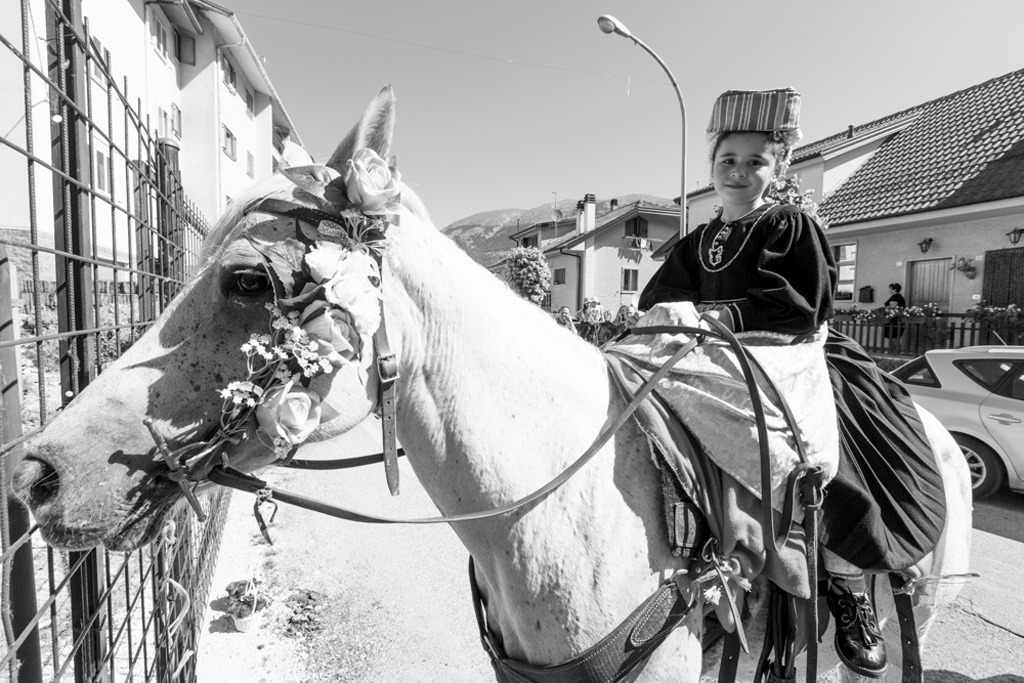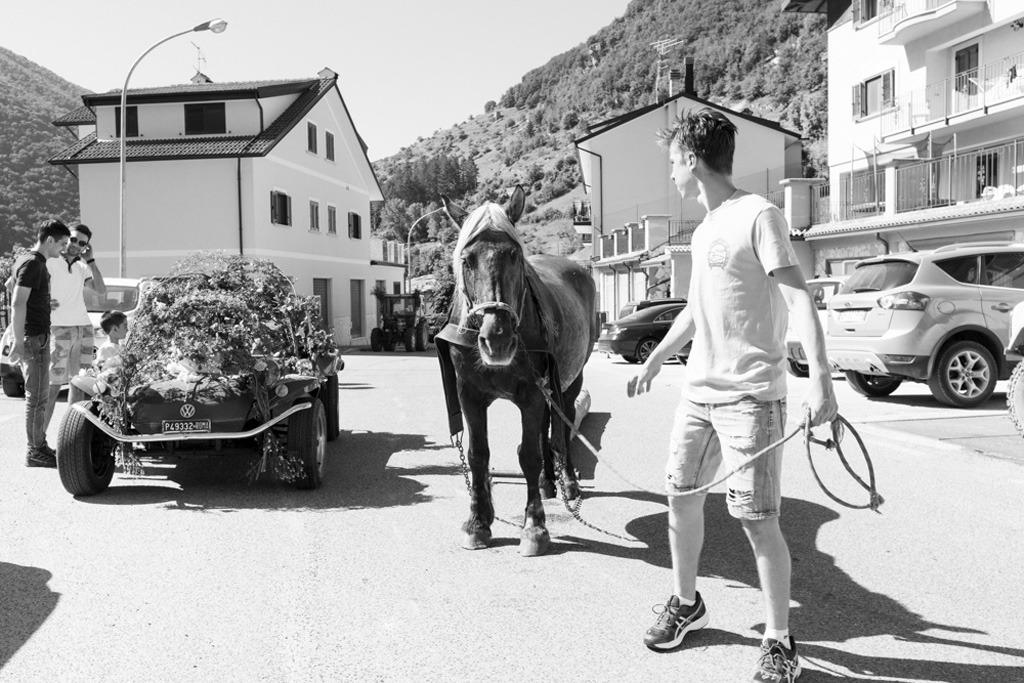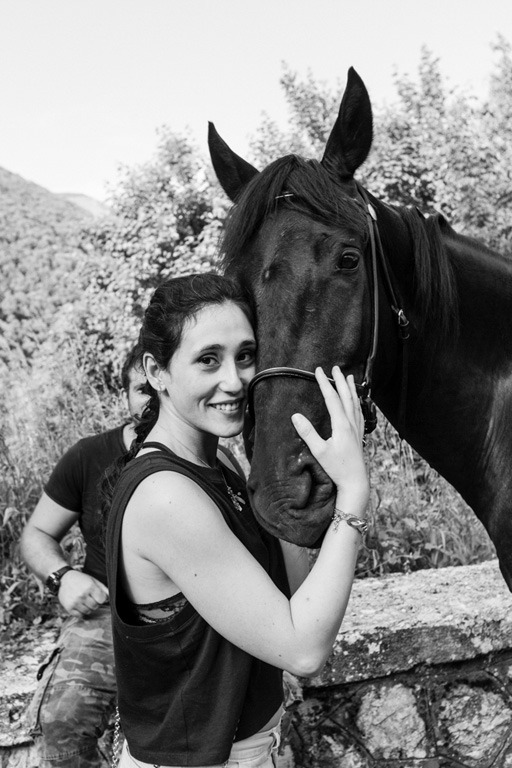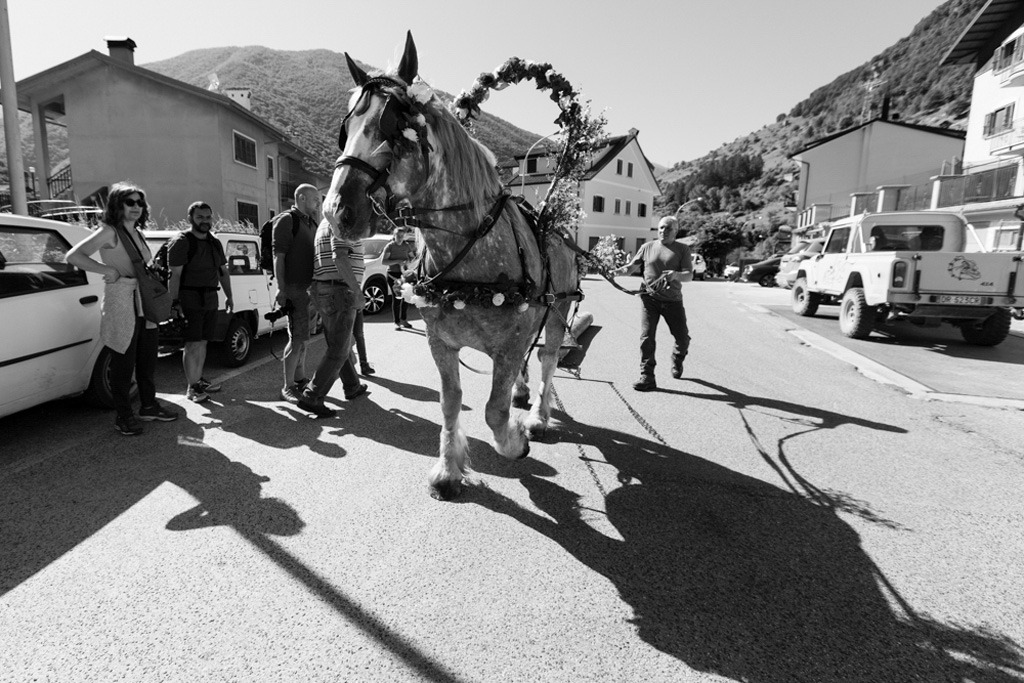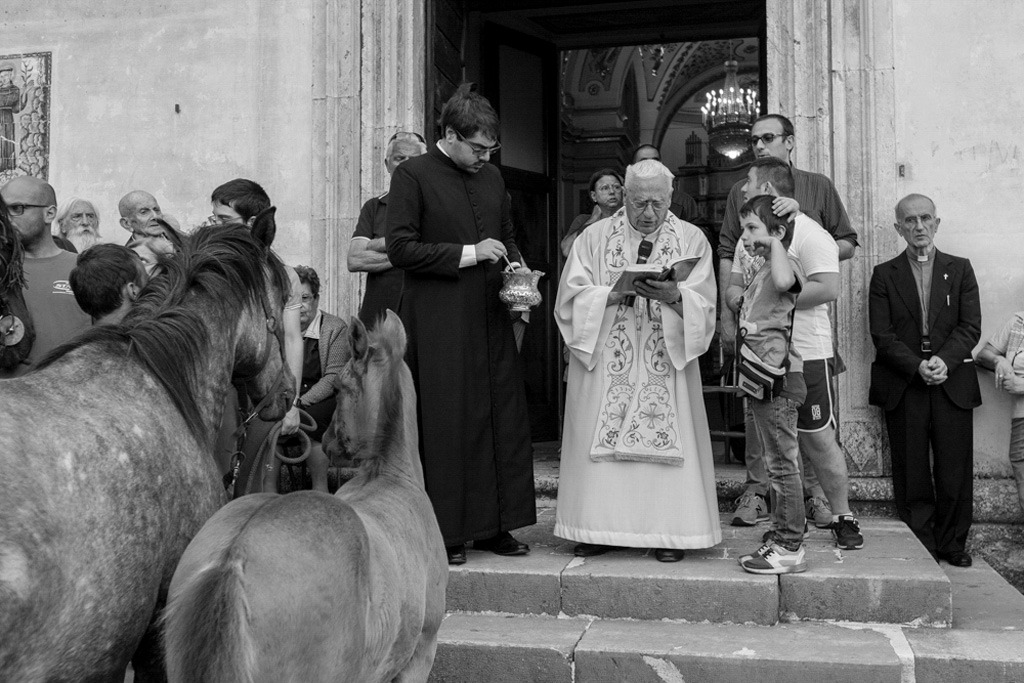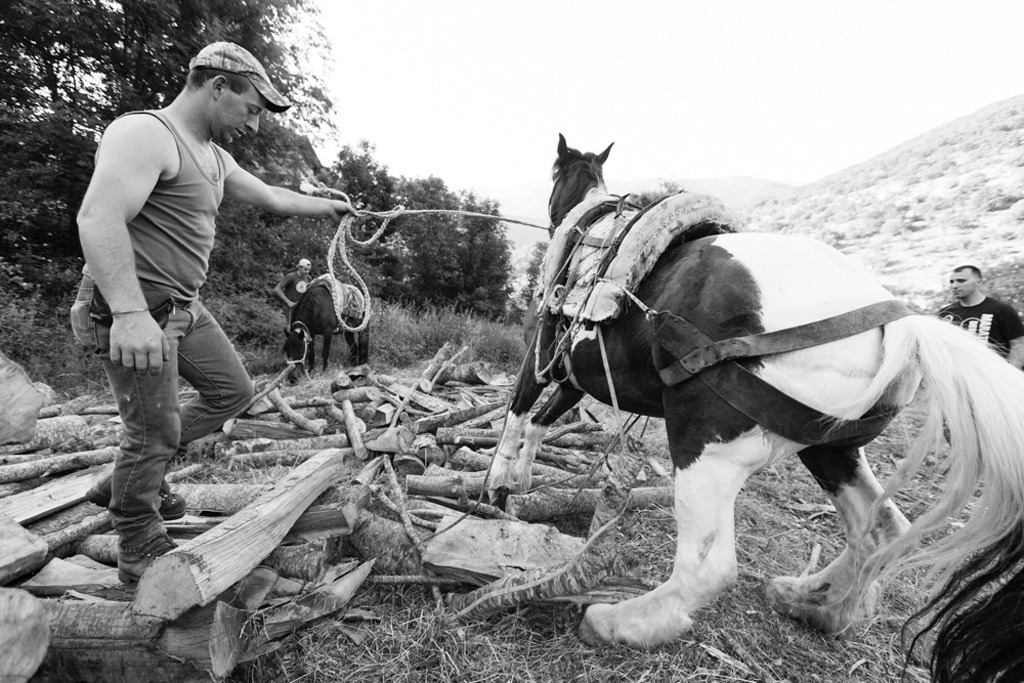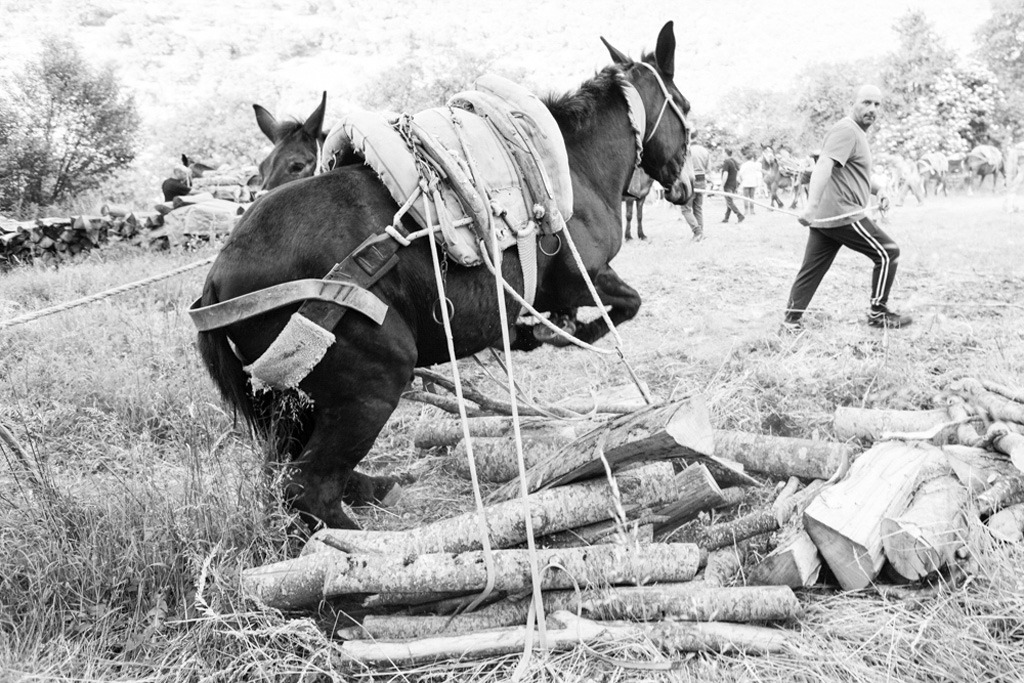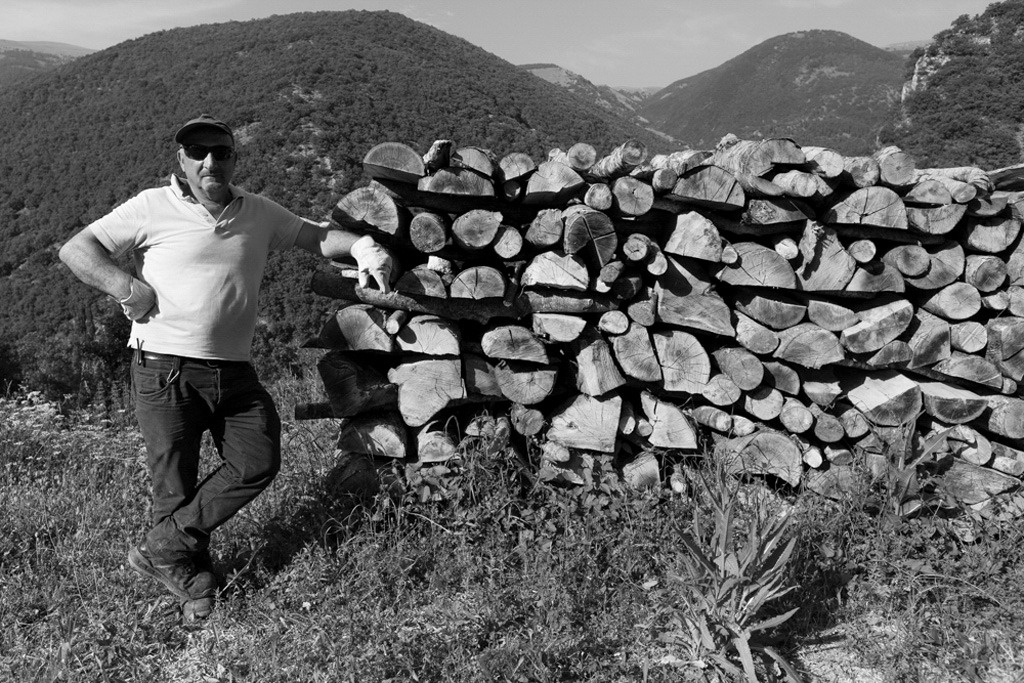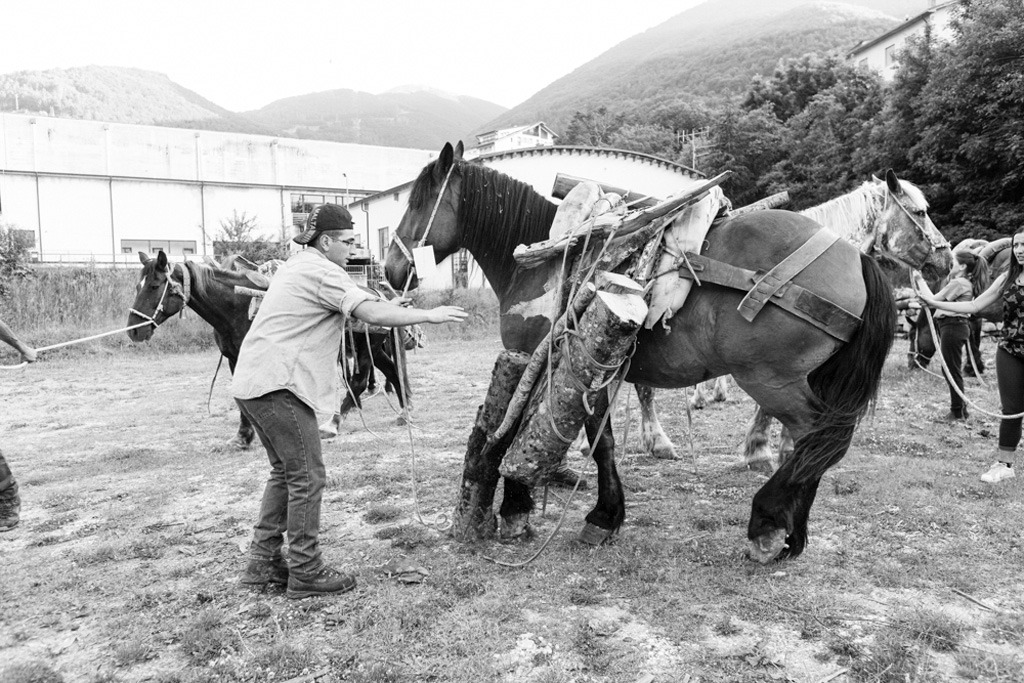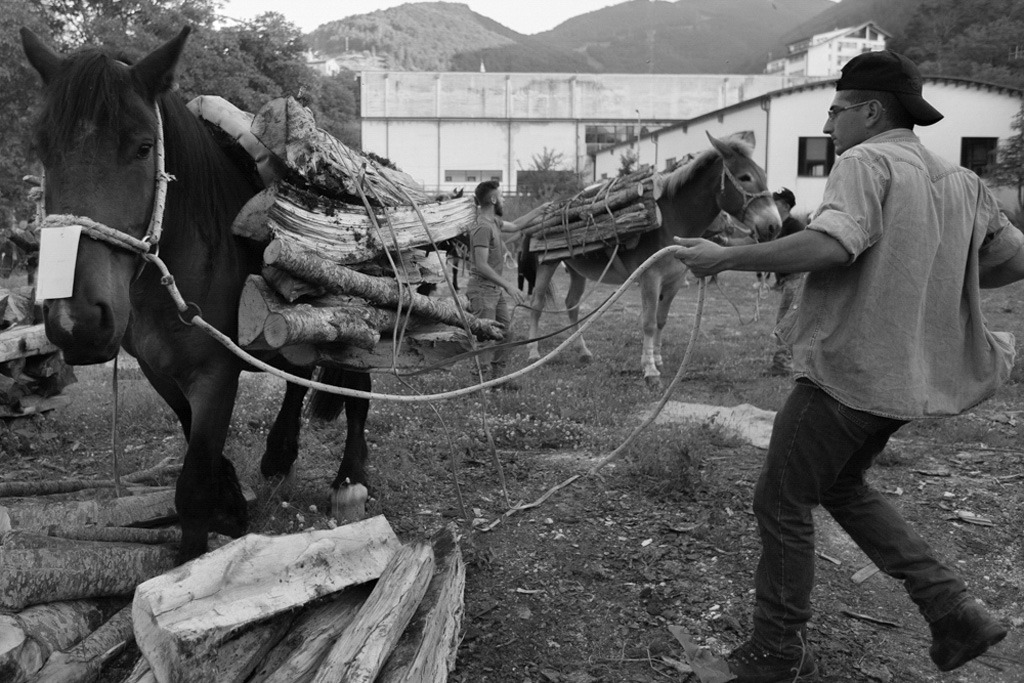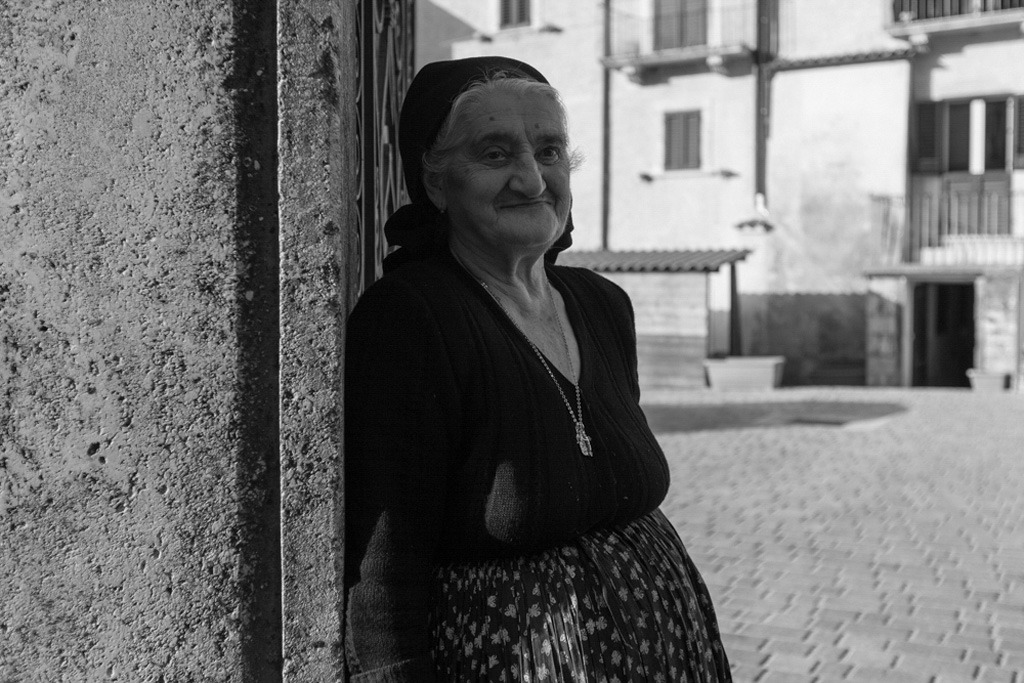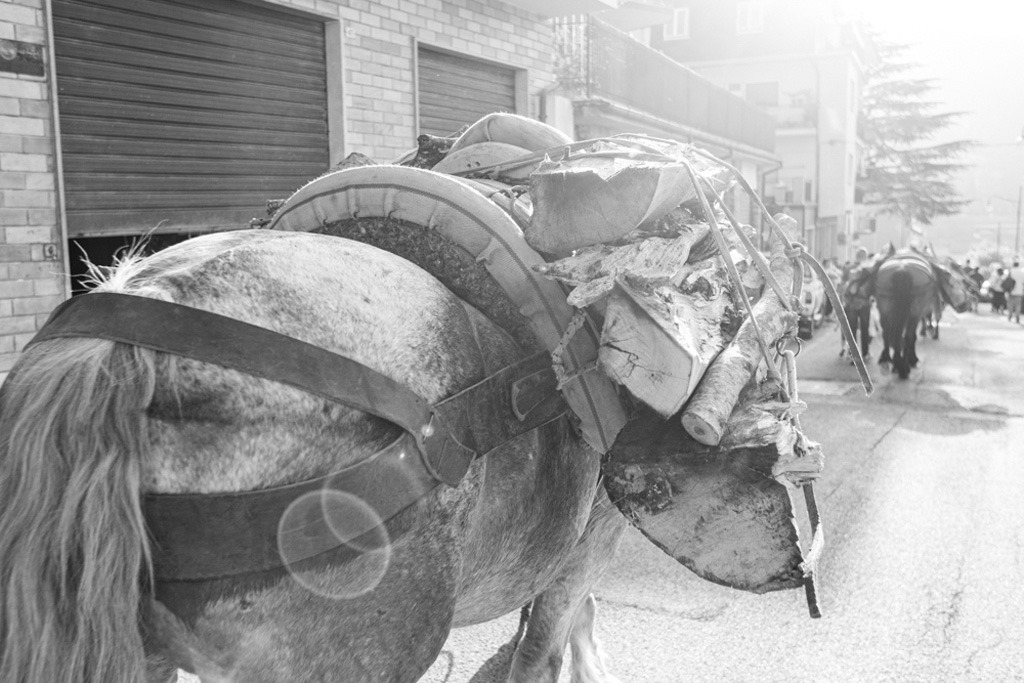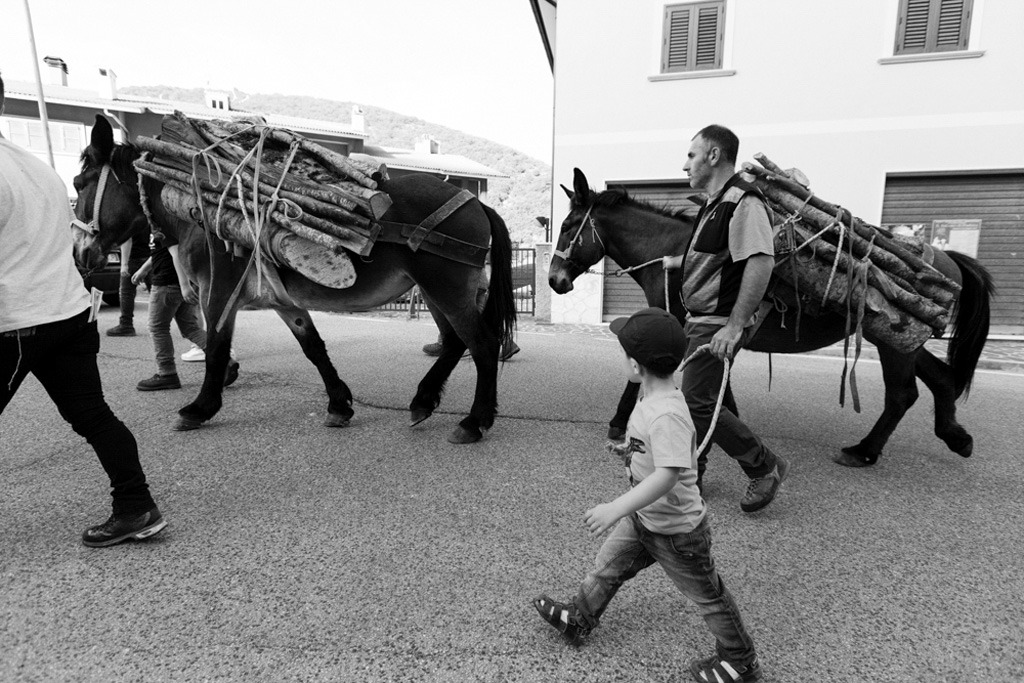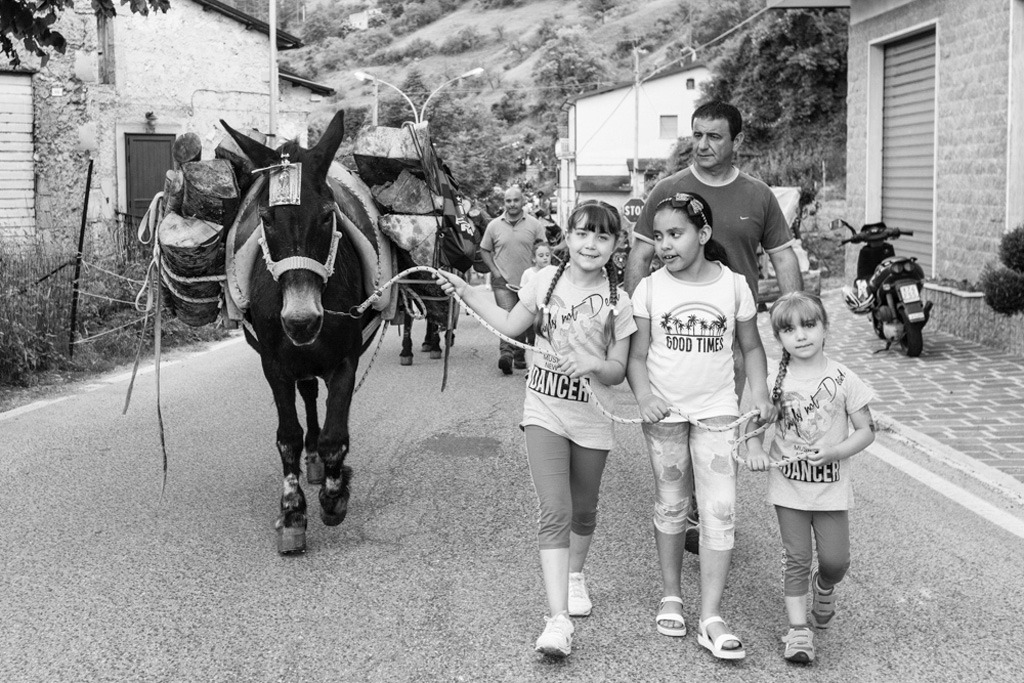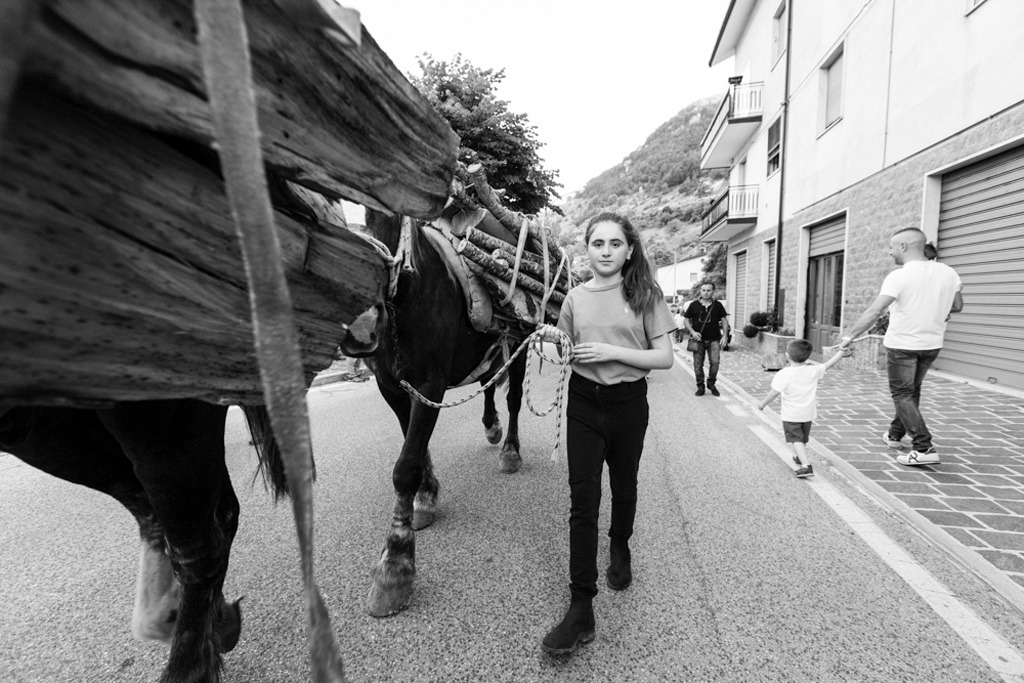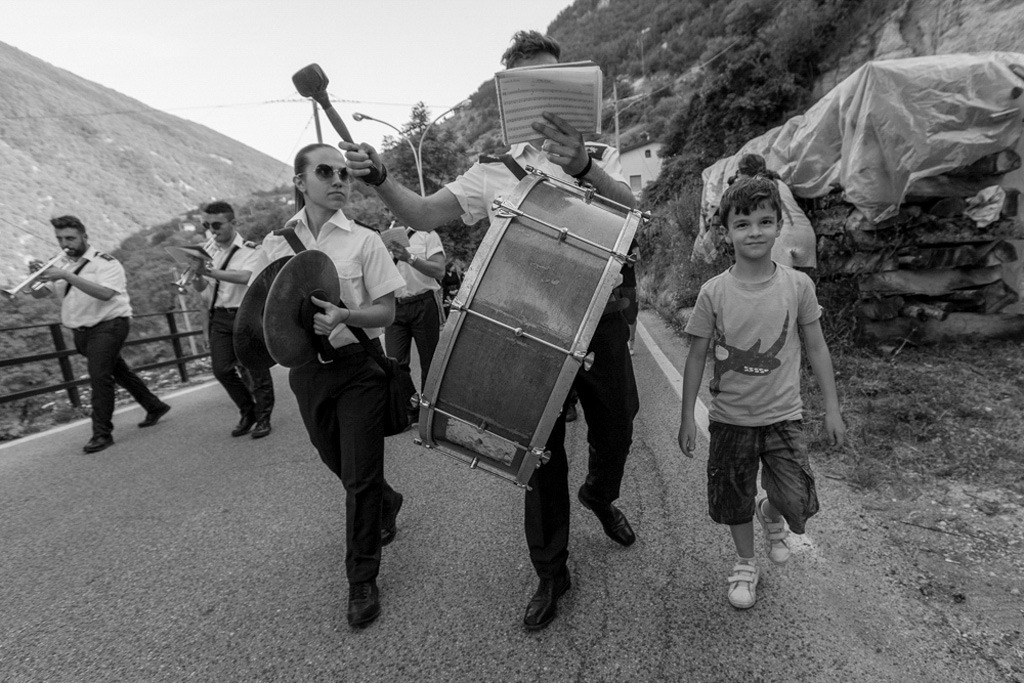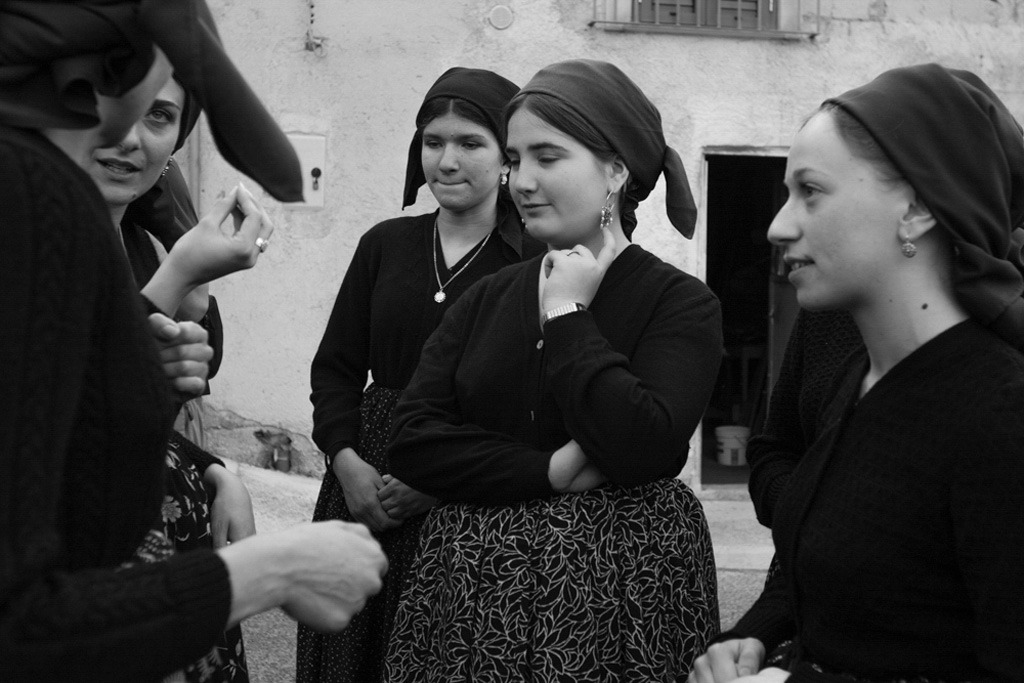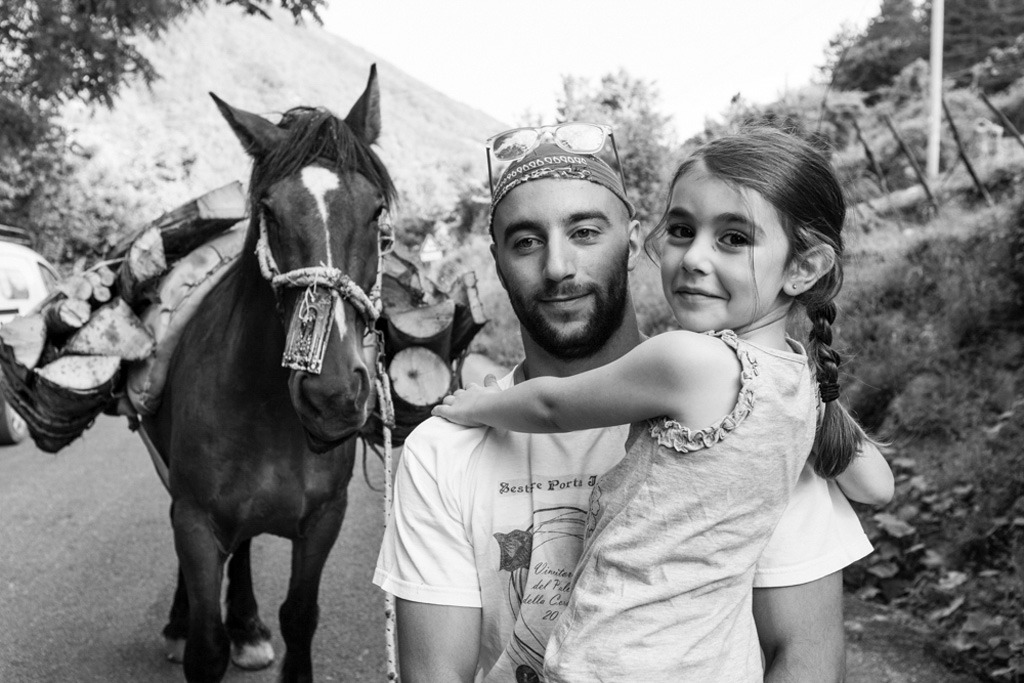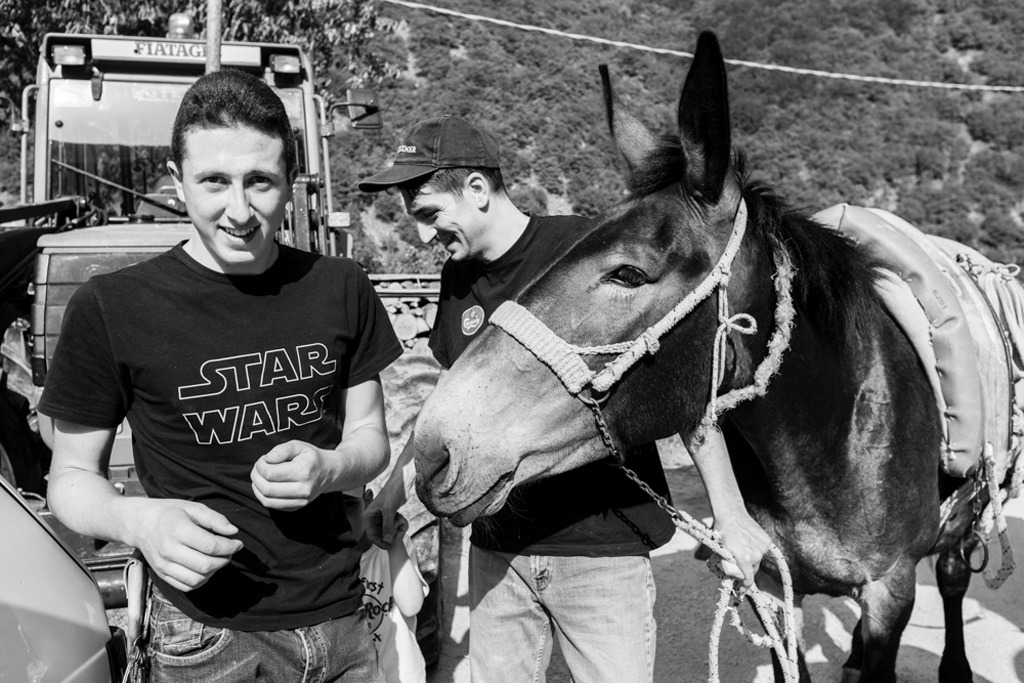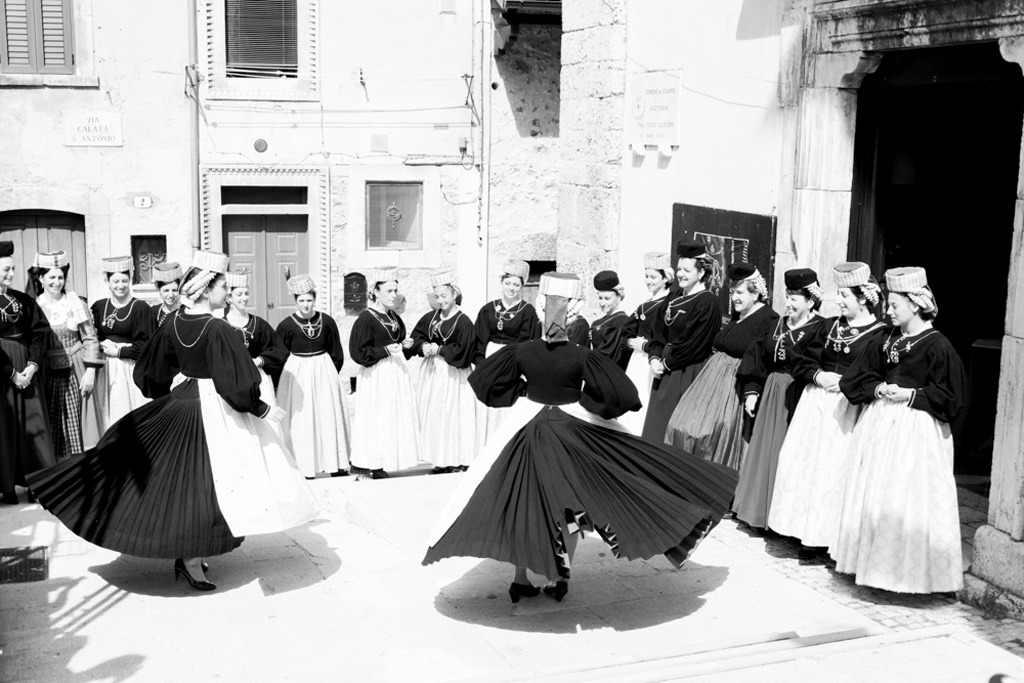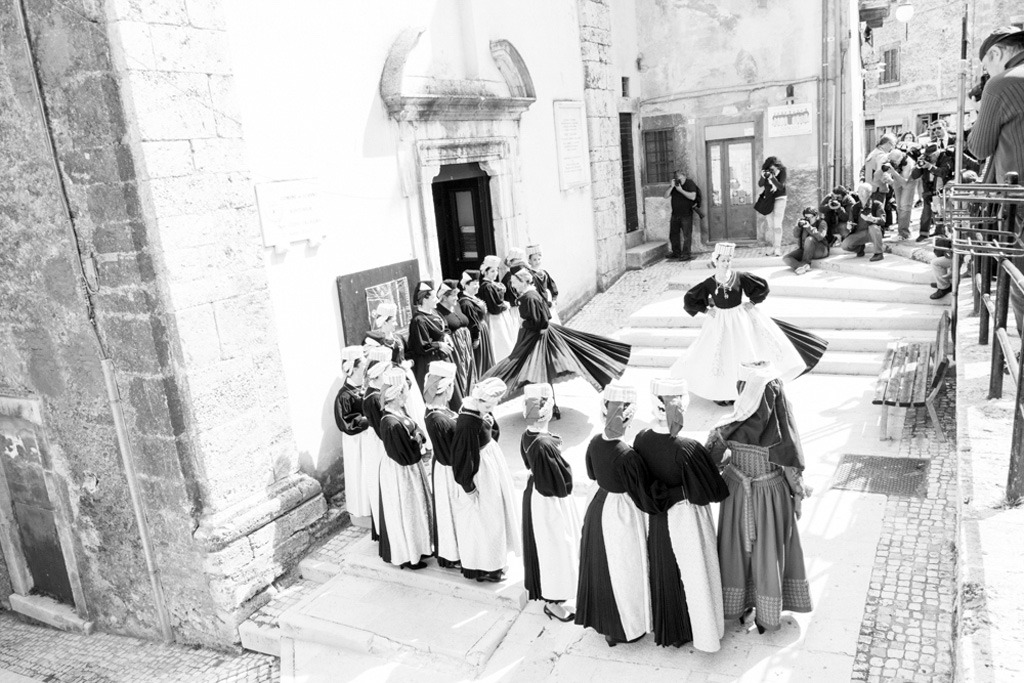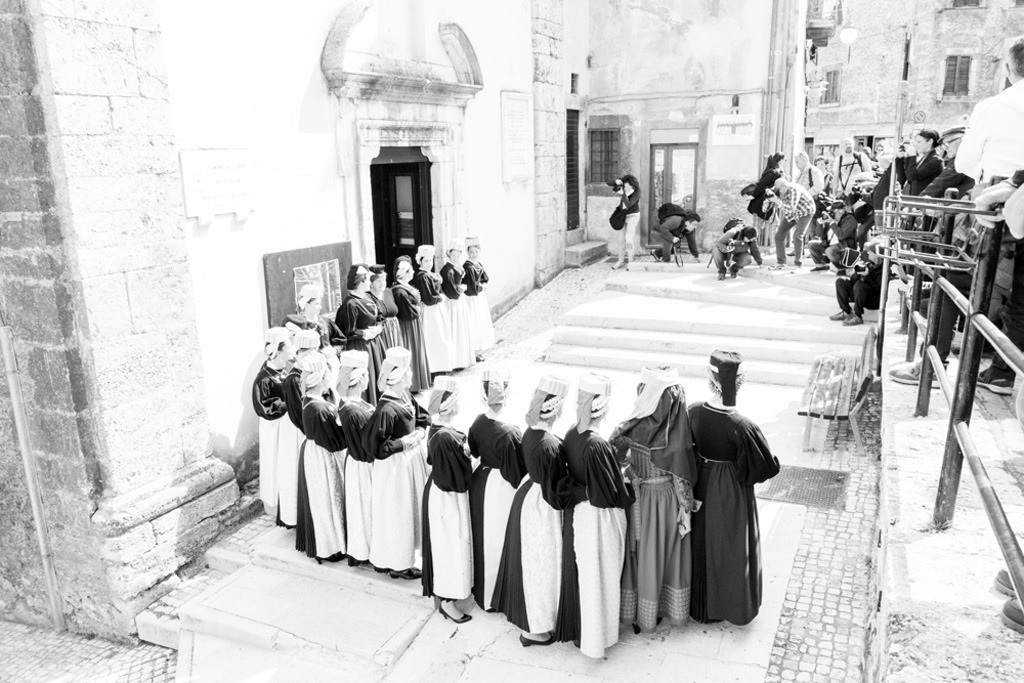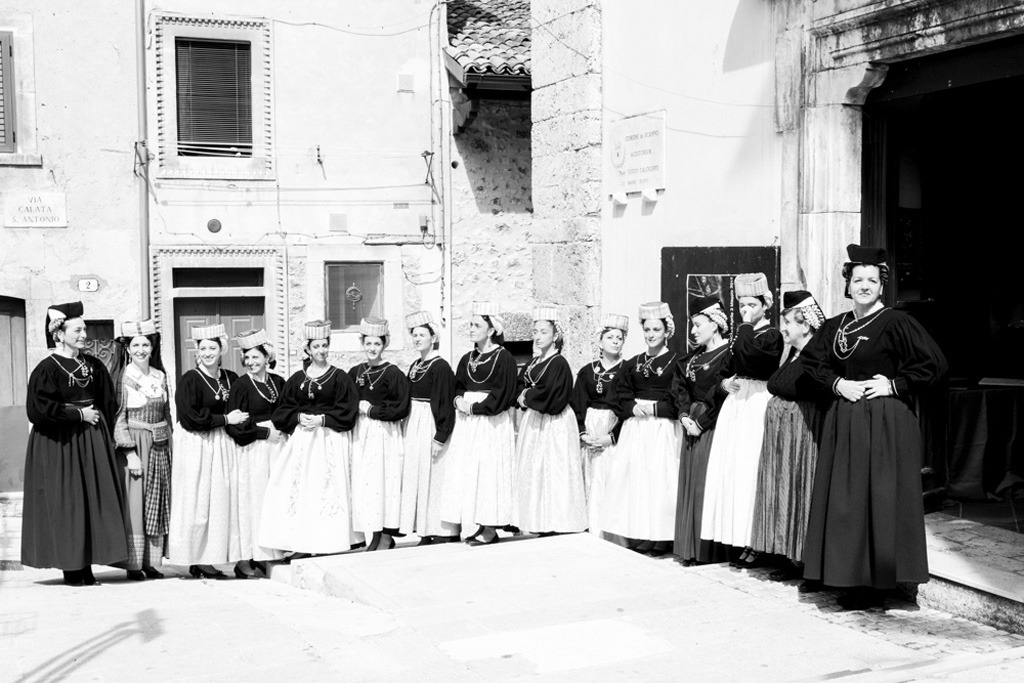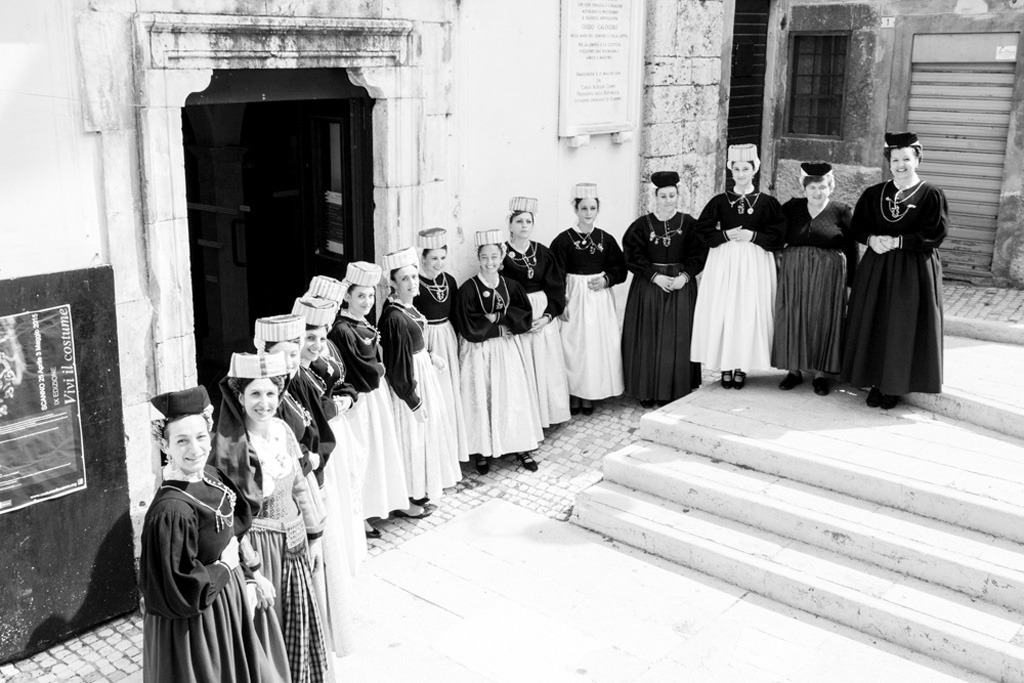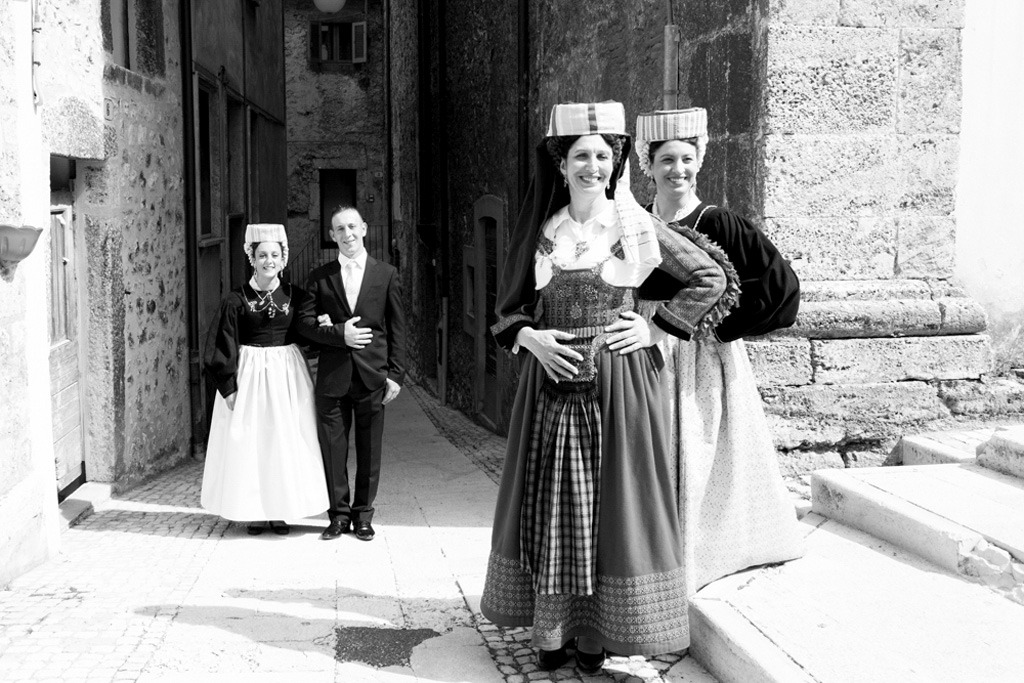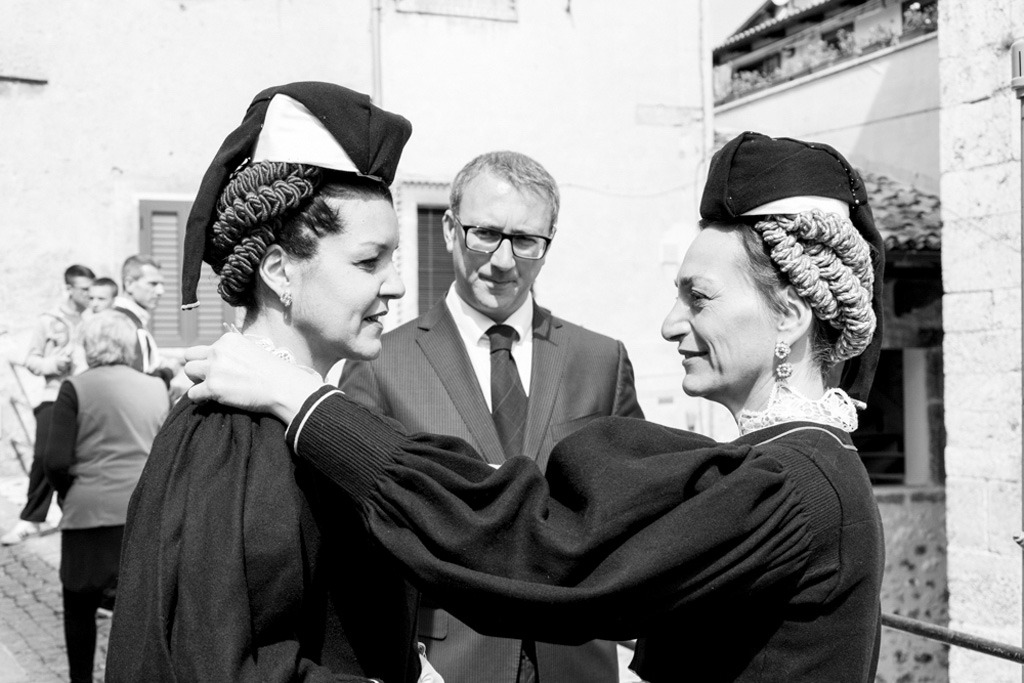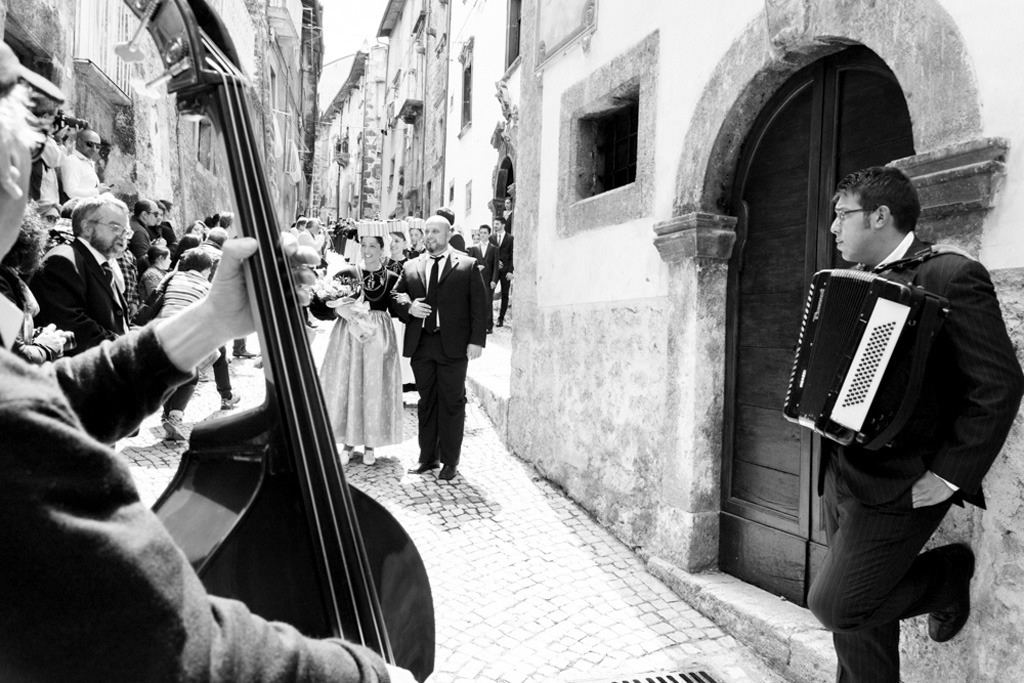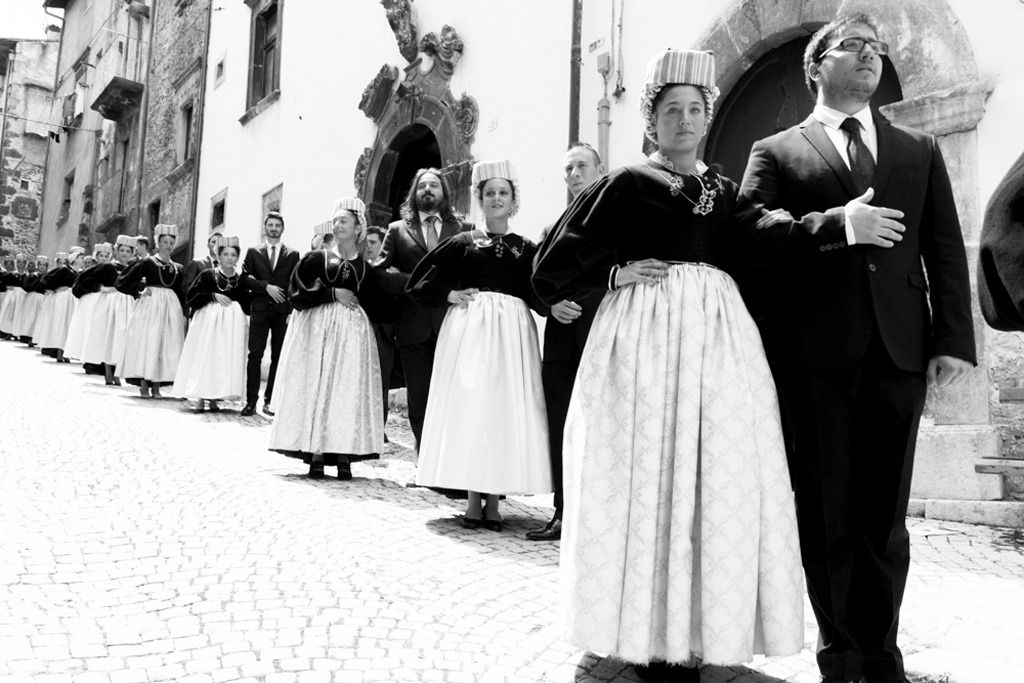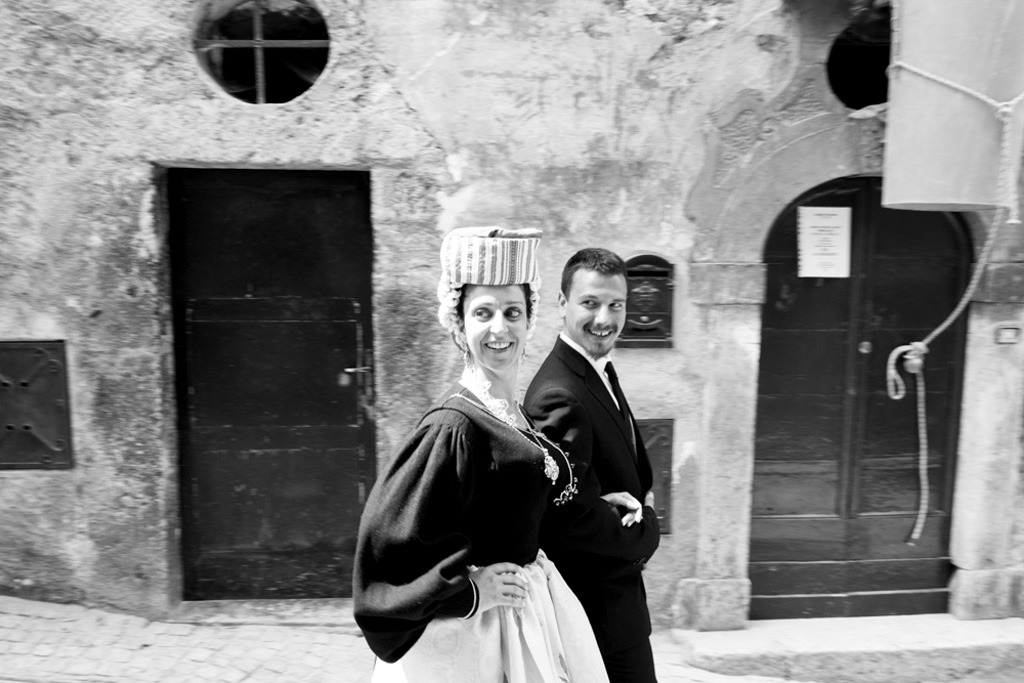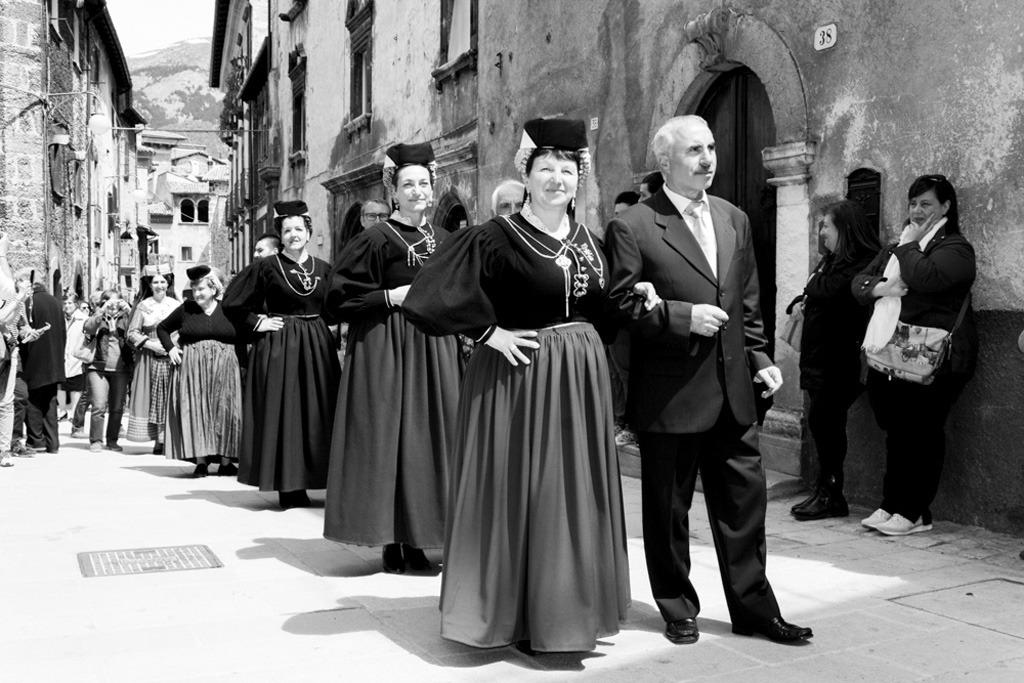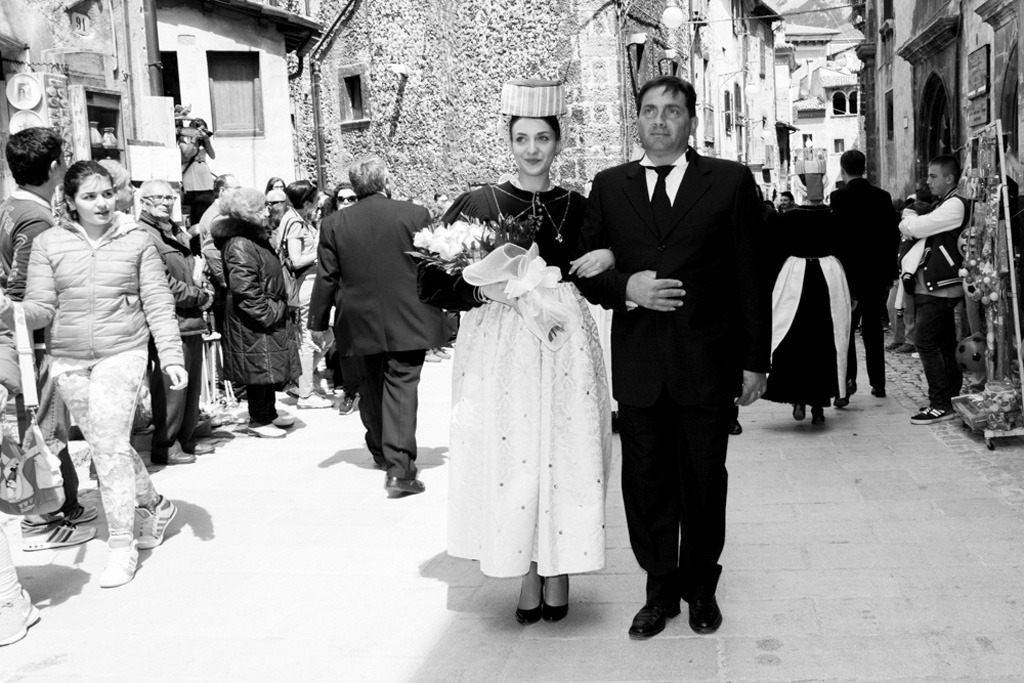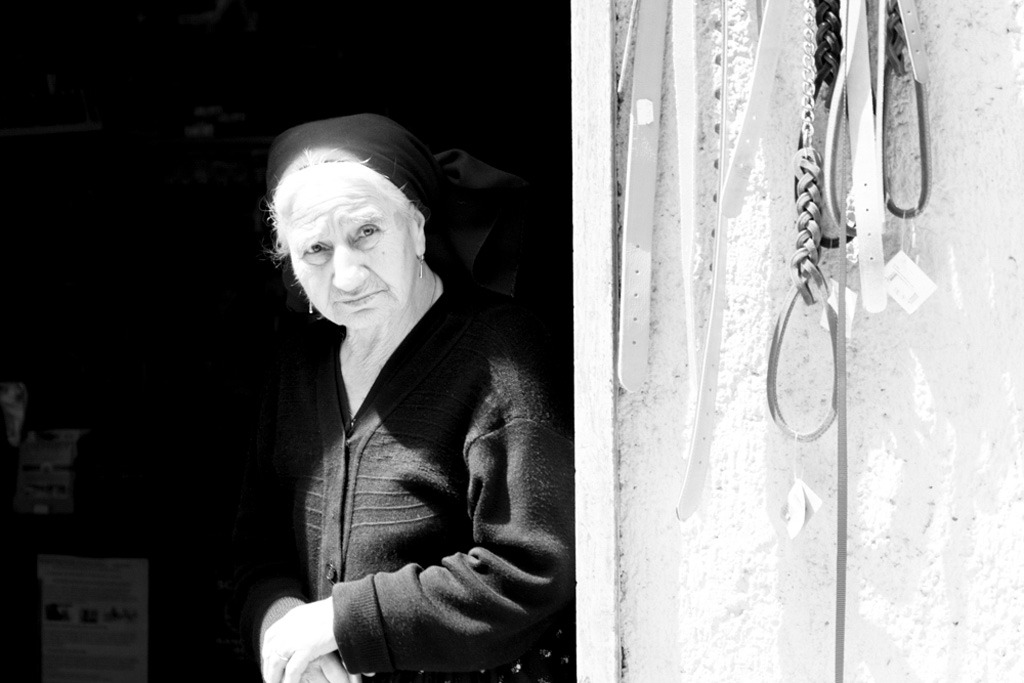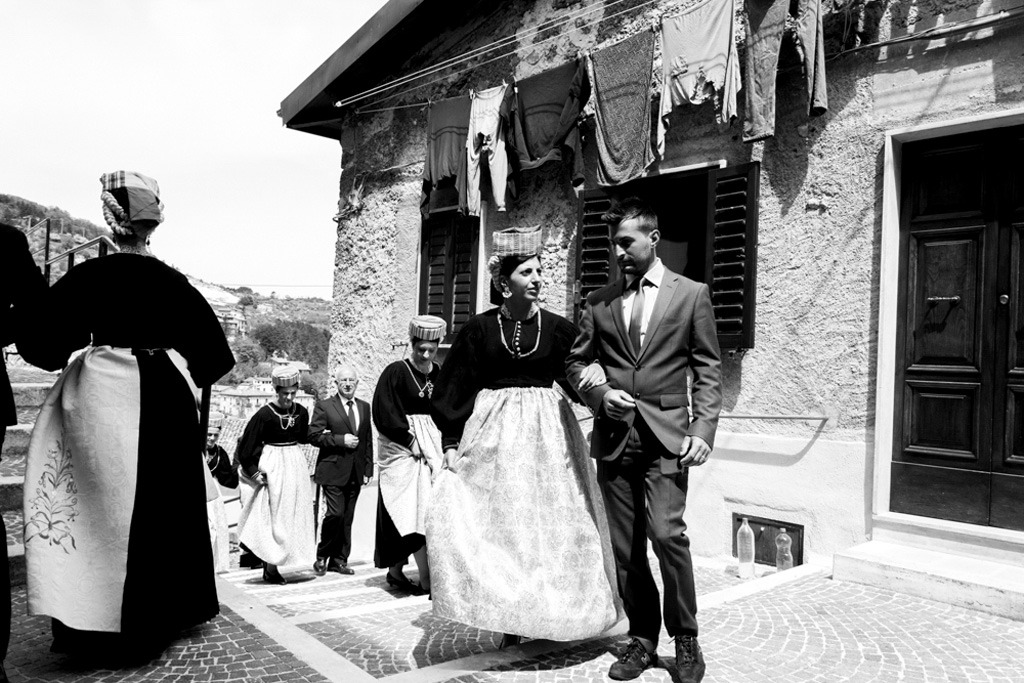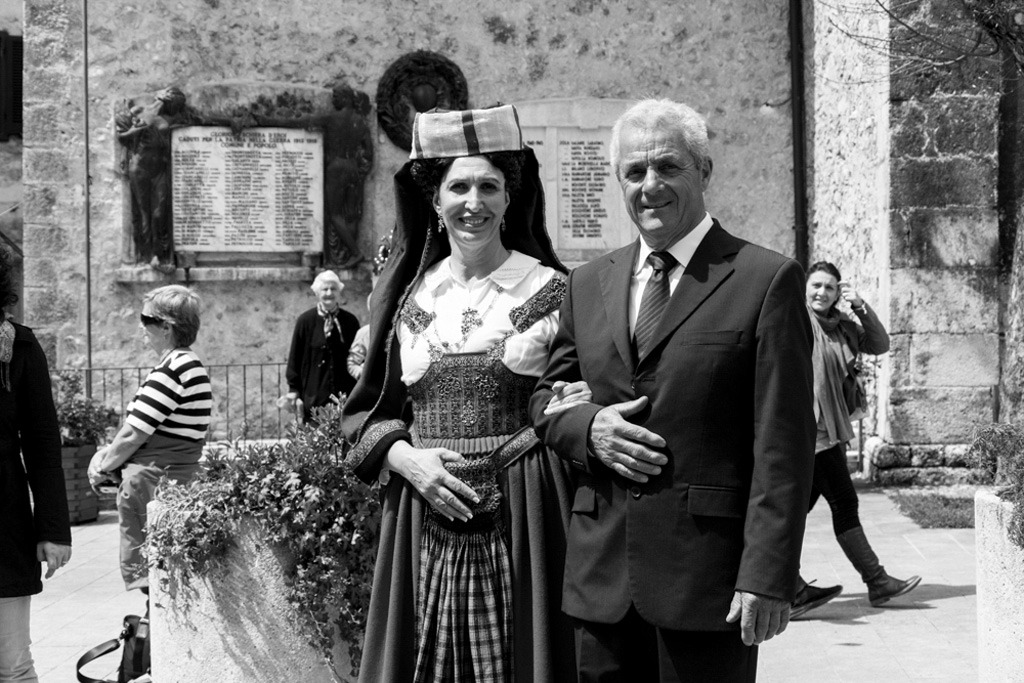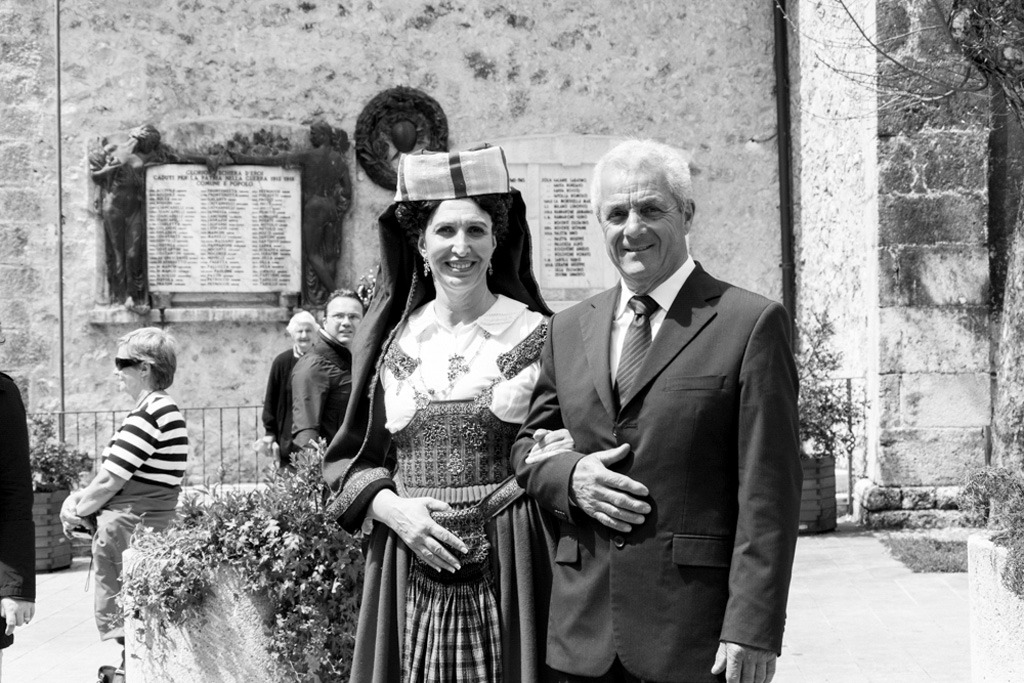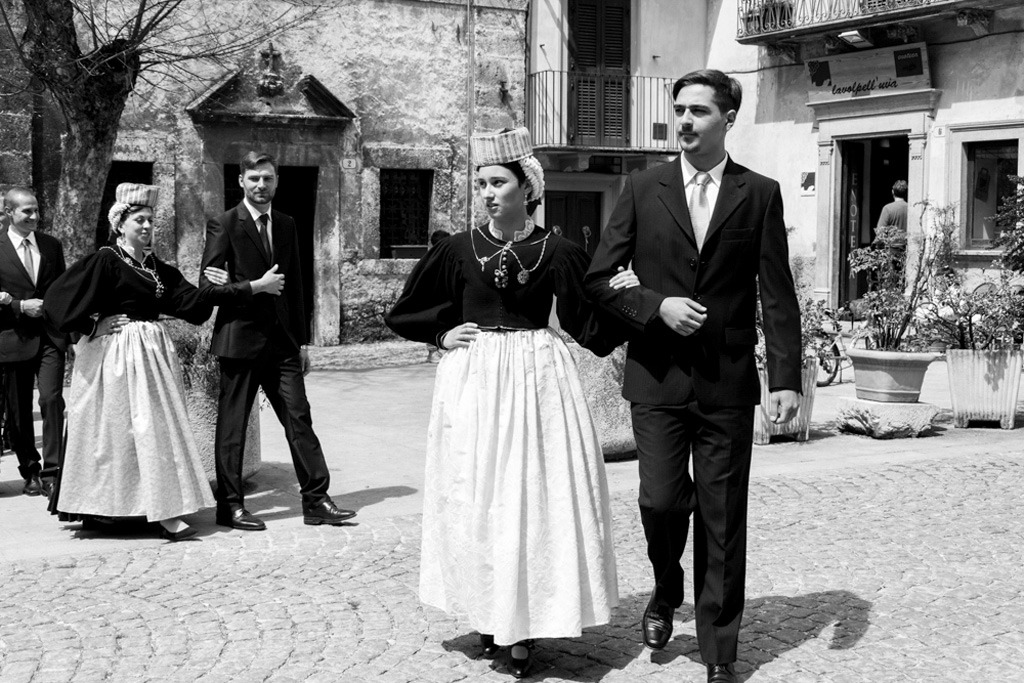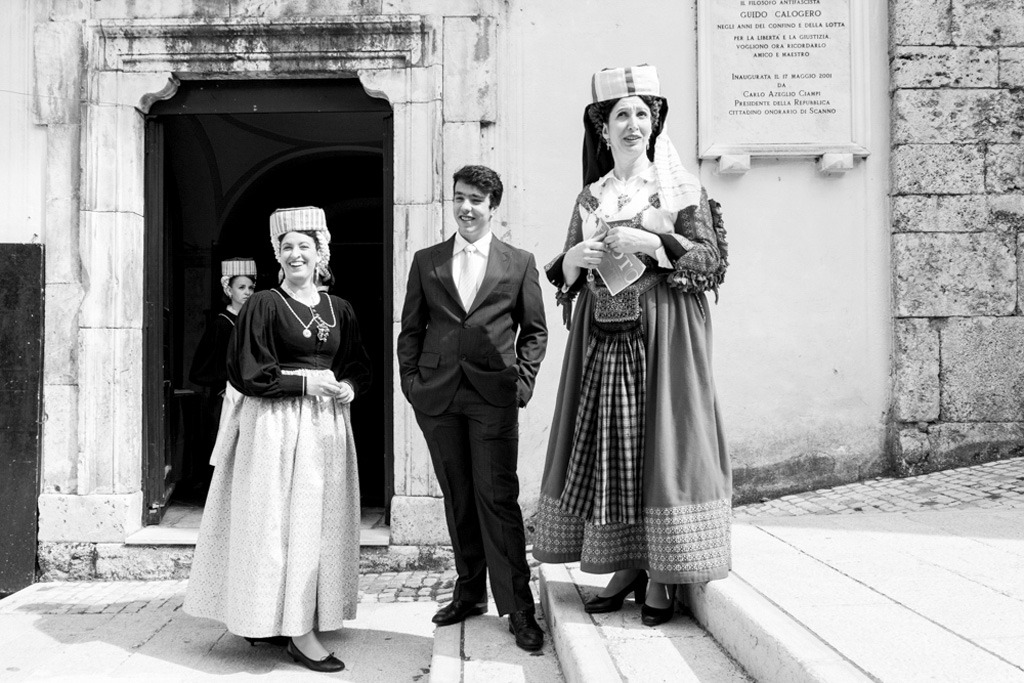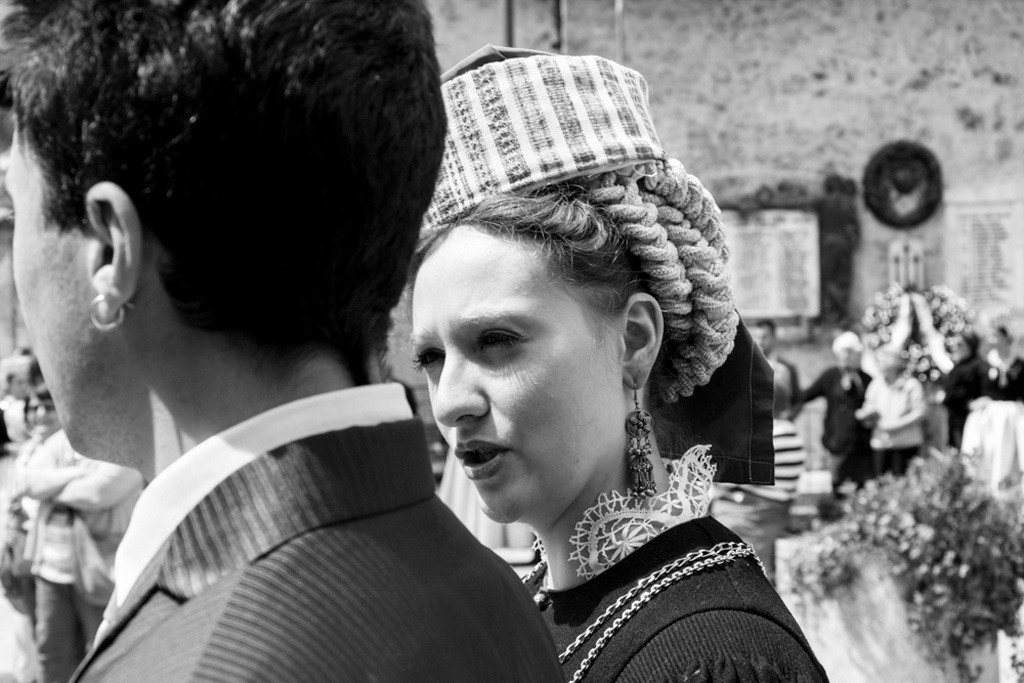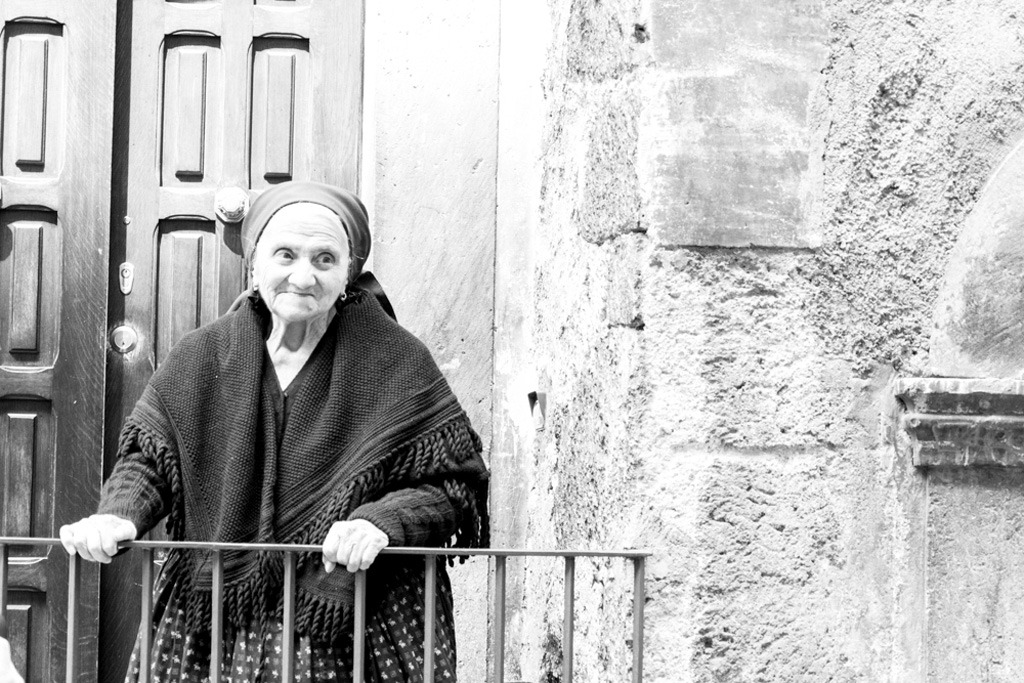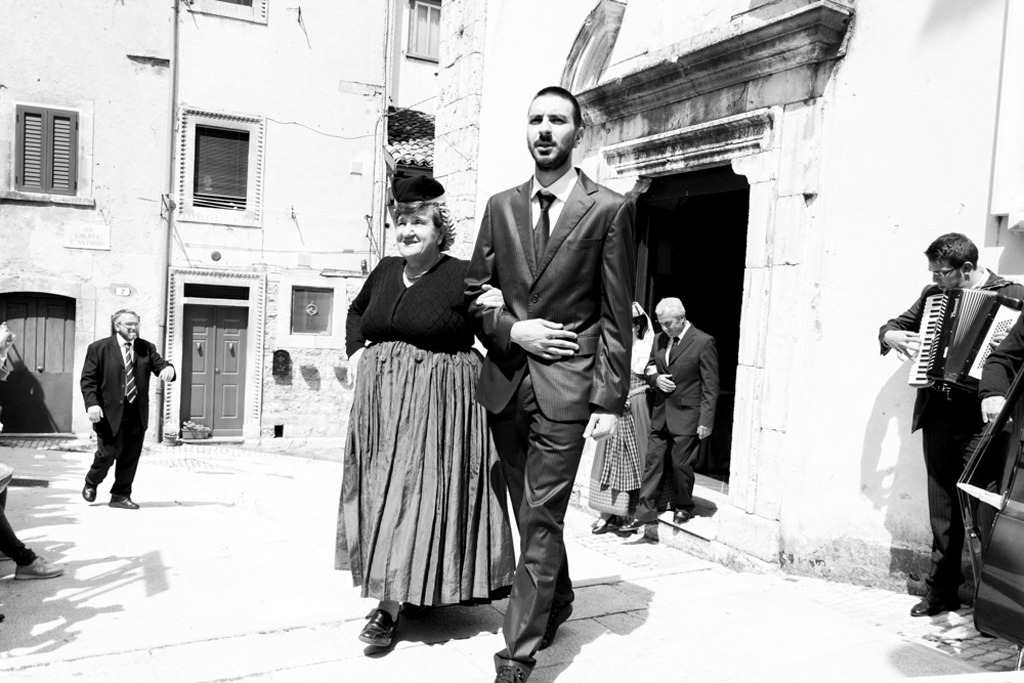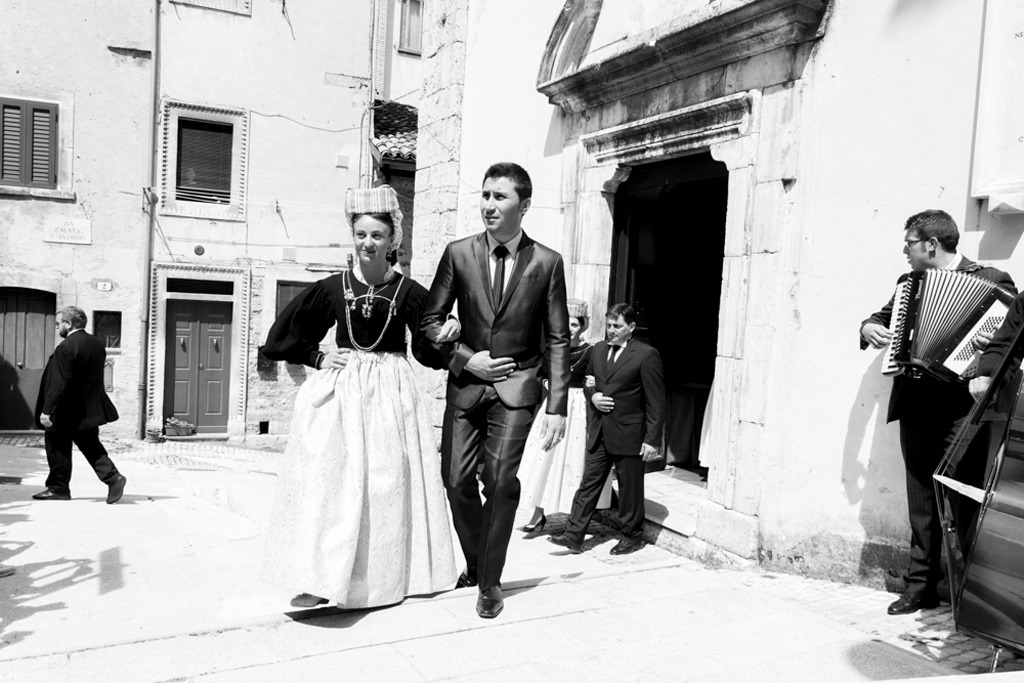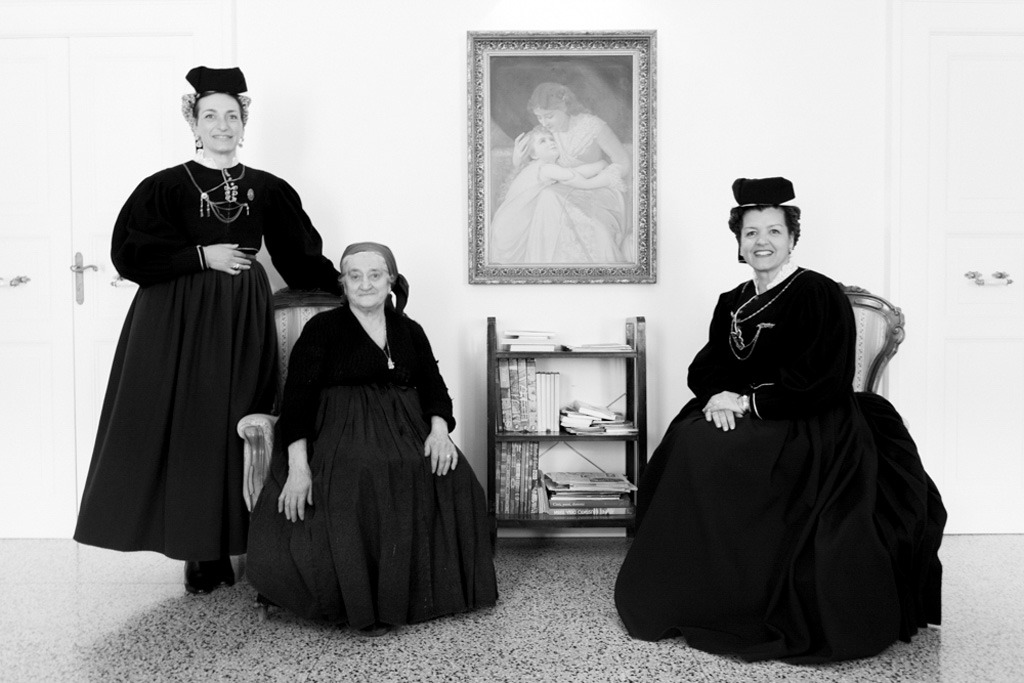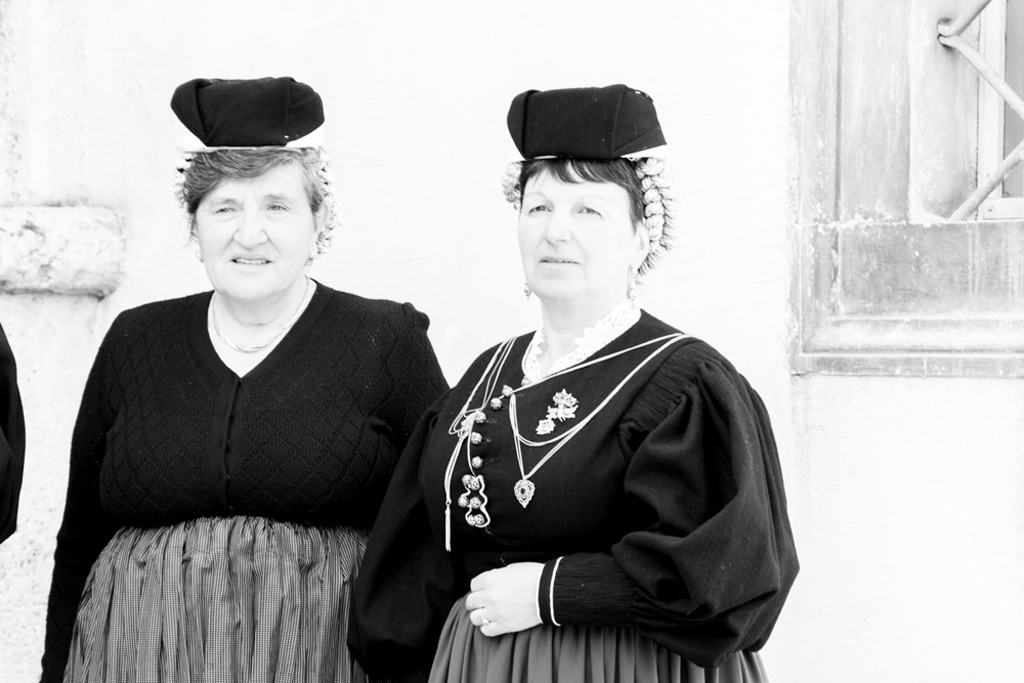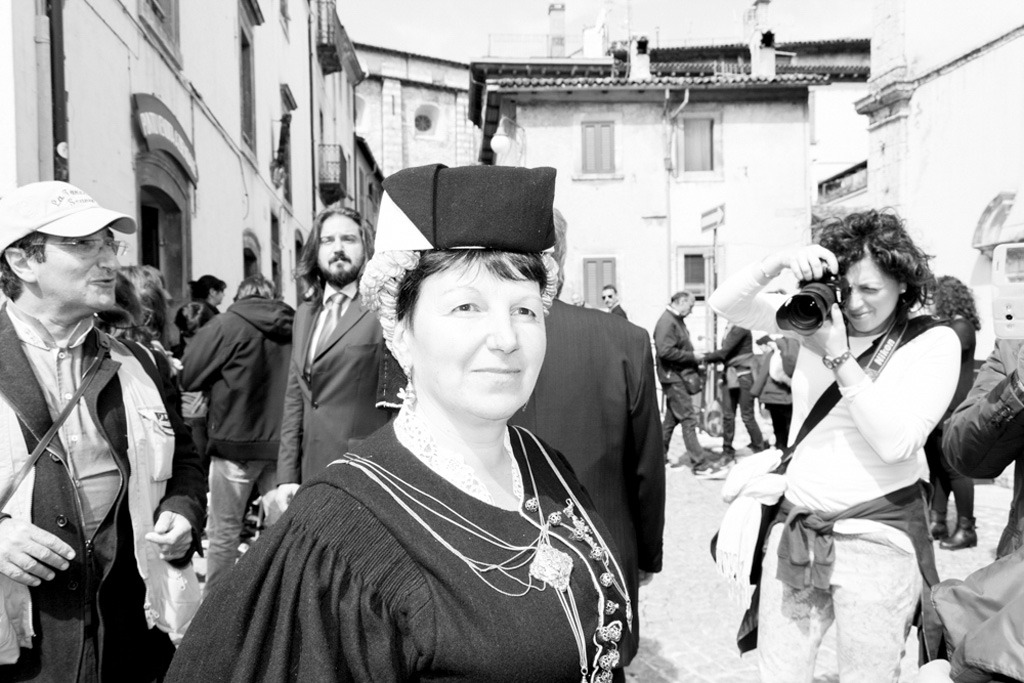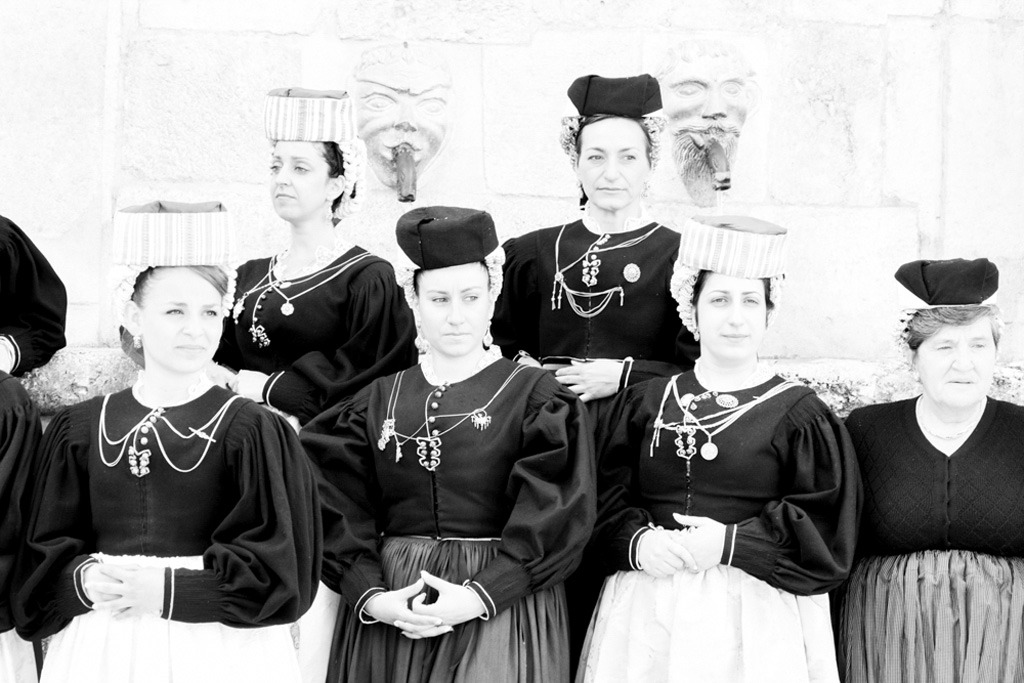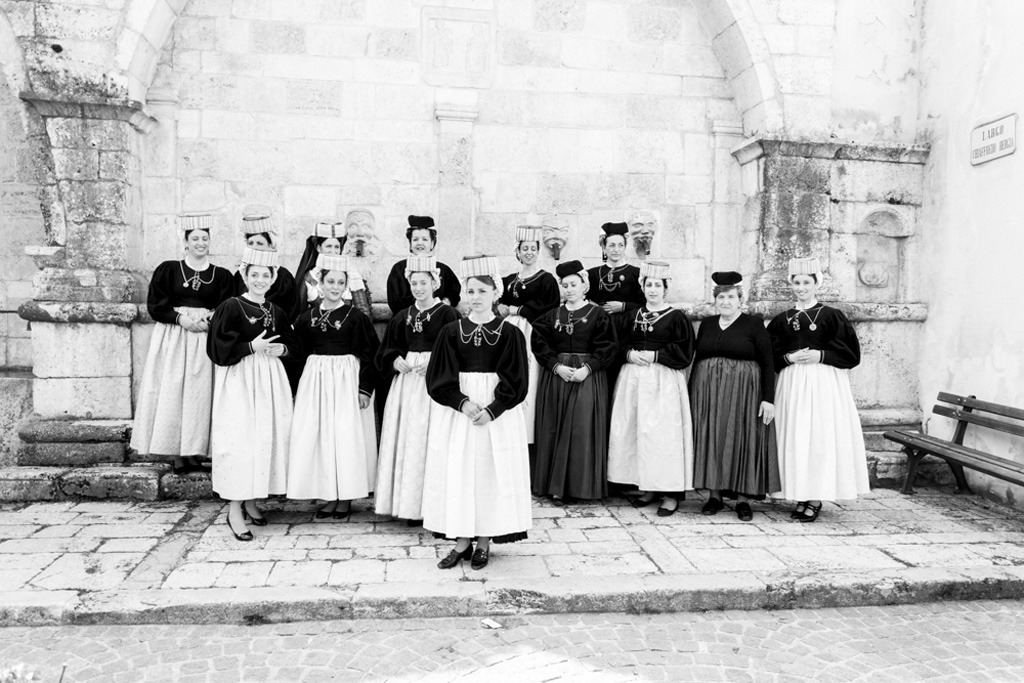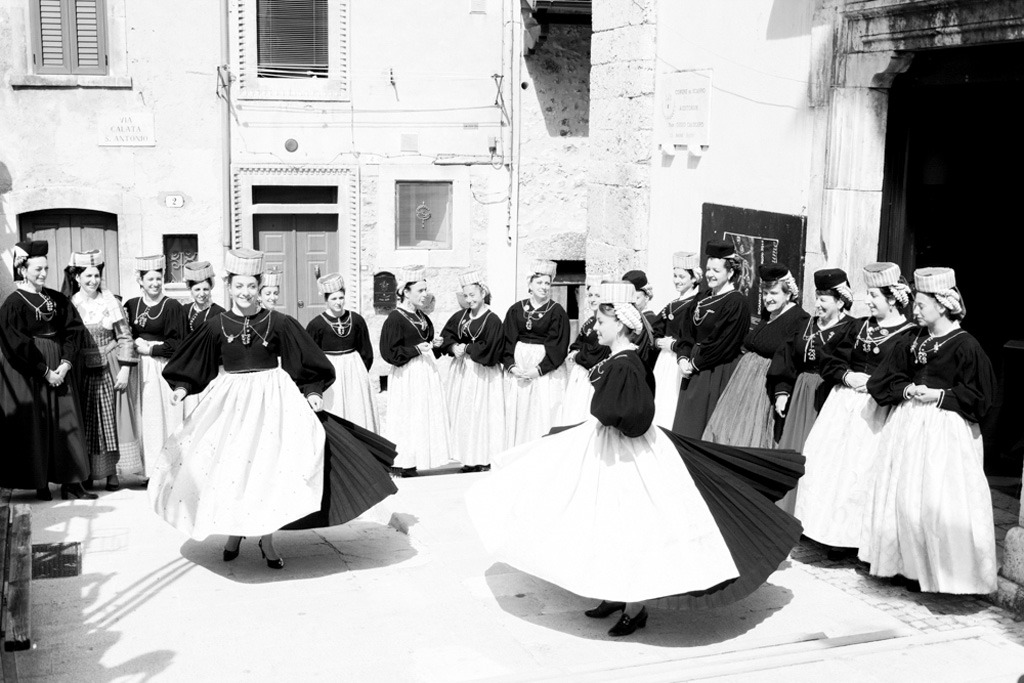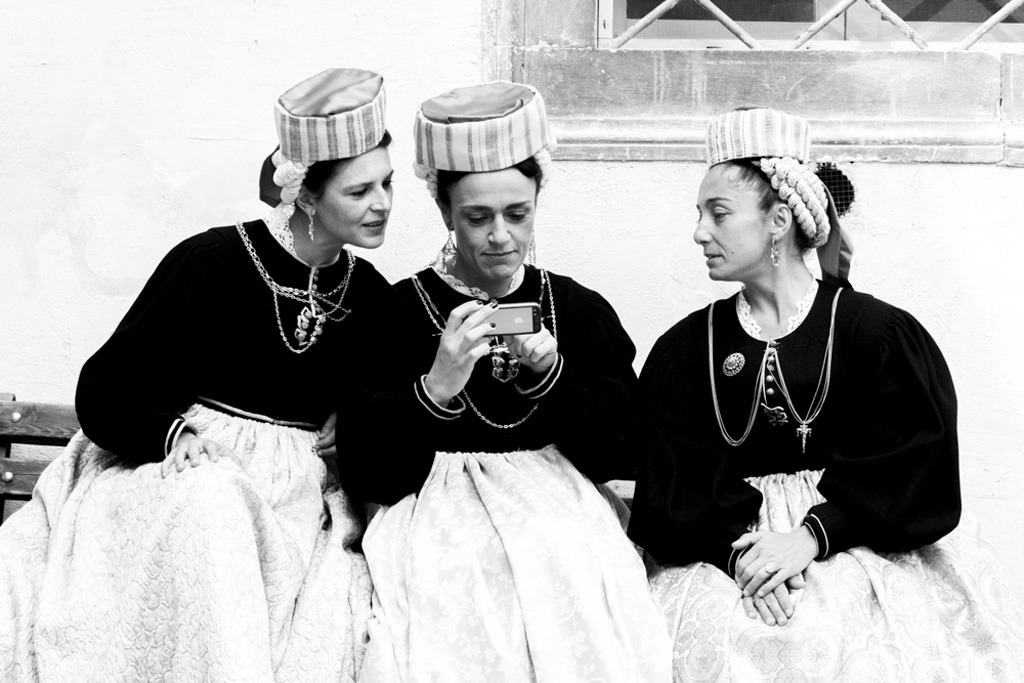NAPULE è JORIT. LO STREET ARTIST LEGA TUTTA LA CITTà.
Attraverso i vicoli del centro storico e le strade di periferia, il grande talento partenopeo da anni, con il suo segno inconfondibile, affianca a un profondo realismo una grande padronanza tecnica del mezzo pittorico. E lancia forti messaggi di natura sociale, nascosti sui suoi volti. Perché “come possiamo provare odio quando guardiamo una persona negli occhi?”
Through the alleys of the historic center and the suburban streets, the great Neapolitan talent for years, with his unmistakable sign, combines a profound realism with a great technical mastery of the pictorial medium. And it launches strong messages of a social nature, hidden on its faces. Because “how can we feel hatred when we look someone in the eye?”
Leggi il testo completo
La street art può trasformare tutto ciò che è per strada in un’opera inedita.
E lo sa bene Jorit che, con i suoi murales, da 20 anni è entrato a far parte del tessuto urbano di Napoli cambiando radicalmente il volto ai quartieri, dando così un significato diverso allo spazio abitato.
Proprio per il suo potere trasformativo, la street art di Jorit si contraddistingue per una forte componente sociale, indissolubile dal contesto di origine. Nel rapporto tra lui e la città c’è una profonda identificazione ed empatia.
Come un “Caravaggio contemporaneo” Jorit ha scelto anche gente comune per le sue opere: da non perdere assolutamente a Ponticelli il volto della bambina rom, o quello di San Gennaro all’ingresso di Forcella, a cui Jorit ha dato il volto di un suo amico carrozziere.
Dal centro storico fino all’estrema periferia suburbana: da Piazzetta Eduardo De Filippo, con il bellissimo trittico sulla facciata del Teatro san Ferdinando, fino al volto gigantesco di un’altra icona della cultura popolare partenopea: Maradona a Quarto.
MA CHI È JORIT?
Il nome d’arte Jorit Agoch è composto dall’unione del suo vero nome di battesimo e la sua tag. All’anagrafe Jorit Ciro Cerullo, classe ’90, con padre partenopeo e madre olandese, nato e cresciuto nella periferia Nord di Napoli, a Quarto.
La svolta nella sua poetica è senza dubbio il suo viaggio in Africa nel 2005: scopre la Tanzania, i suoi paesaggi, il suo popolo e ne rimane affascinato, tanto da tornarci più volte, anche per studiare per la scuola d’arte Tinga Tinga di Dar es Salaam.
L’Africa lo segnerà a vita e il suo stile subisce un cambiamento radicale, passando da rappresentazioni semplici e writing allo studio del volto umano, della sua rappresentazione e delle emozioni che esso può trasmettere.
I volti diventano il soggetto principale della sua ricerca: c’è qualcosa di profondo nel nostro essere umani. Rappresentare un volto non è semplicemente dipingere una persona, ma mettere l’osservatore a tu per tu con se stesso: come possiamo provare odio quando guardiamo una persona negli occhi?
Tutti i volti dipinti da Jorit hanno una caratteristica: due strisce rosse sulle guance.
Durante i suoi viaggi in Africa l’artista entra in contatto con persone appartenenti a diverse tribù locali ed approfondisce il rito della scarificazione.
Alcune tribù in Tanzania e Kenya segnano i volti degli appartenenti alla tribù stessa come simbolo di fratellanza ed accettazione oppure come simbolo di ingresso nell’età adulta; la scarificazione consiste in diverse tecniche, ma la più usata è costituita da tagli di varia forma e lunghezza: ogni tribù ha il proprio rito e questo permette anche di riconoscere la tribù di appartenenza di una persona.
Affascinato da questo concetto, Jorit ha deciso di trasportarlo all’interno dei suoi muri creando quella che lui chiama Tribù Umana o Human Tribe: il colore della pelle, degli occhi, dei capelli, la tua età, il fatto di essere uomo o donna non ti rendono migliore o peggiore, siamo tutti esseri umani ed apparteniamo ad una grande tribù.
I segni rossi inconfondibili sui volti che Jorit imprime quasi “a ferro e fuoco”, sorta di meta-tatuaggio, simboleggiano quindi l’unità della tribù opposta alla singolarità dell’individuo e sono presenti in tutti i volti/murales dell’artista.
Così da Forcella al Vomero, da Poggioreale a San Giovanni a Teduccio, passando pe il mare di Bacoli fino al quartiere dell’Avvocata e al Cardarelli, possiamo sentirci anche noi parte di questa grande Human Tribe.
IL MESSAGGIO SEGRETO SUI SUOI MURALES.
Nei i murales di Jorit sono nascosti dei messaggi, parole e frasi che ne ampliano il significato: nomi di persone del luogo, testimonianze e motti rivoluzionari celati sapientemente dall’artista.
Alcuni tra i messaggi nascosti più significativi sono: «Hasta siempre» nel murale di Diego Armando Maradona, «Tagliateci la testa col machete» e «Meglio sparare che sparire» nel murale di Ernesto Che Guevara, «Le vele urlano!» e «Scampia chiede lavoro» nel murale di Pier Paolo Pasolini e «Socialismo o barbarie?» in quello di Salvador Allende.
I messaggi sono nascosti ovunque sul volto ma quelli più importanti si trovano negli occhi, dove le persone inizialmente indirizzano il loro sguardo, creando empatia con il soggetto.
Read the full text
Napule is Jorit. The street artist binds the whole city.
Through the alleys of the historic center and the streets of the suburbs, the great Neapolitan talent for years, with its unmistakable sign, combines a deep realism with a great technical mastery of the pictorial medium. And he launches strong messages of a social nature, hidden on his faces. Because “howcan we feel hatred when we look a person in the eye? “
Street art can transform everything on the street into a new work. And Jorit knows it well that, with his murals, for 20 years he has become part of the urban fabric of Naples radically changing the face of the neighborhoods, thus giving a different meaning to the inhabited space. Precisely because of its transformative power, Jorit’s street art is characterized by a strong social component, indissoluble from the context of origin. In the relationship between him and the city there is a deep identification and empathy.
As a “contemporary Caravaggio” Jorit has also chosen ordinary people for his works: not to be missed in Ponticelli the face of the Roma girl, or that of San Gennaro at the entrance of Forcella, to whom Jorit gave the face of one of his coachbuilder friends.
From the historic center to the extreme suburban suburbs: from Piazzetta Eduardo De Filippo, with the beautiful triptych on the façade of the Teatro San Ferdinando, to the gigantic face of another icon of Neapolitan popular culture: Maradona a Quarto.
BUT WHO IS JORIT?
The stage name Jorit Agoch is composed of the union of his real first name and his tag. Born Jorit Ciro Cerullo, born in ’90, with a Neapolitan father and a Dutch mother, born and raised in the northern suburbs of Naples, in Quarto.
The turning point in his poetics is undoubtedly his trip to Africa in 2005: he discovers Tanzania, its landscapes, its people and is fascinated by it, so much so that he returns several times, even to study for the Tinga Tinga art school in Dar es Salaam. Africa will mark him for life and his style undergoes a radical change, passing from simple representations and writing to the study of the human face, its representationand the emotions that it can transmit. Faces become the main subject of his research: there is something deep in our human being. To represent a face is not simply to paint a person, but to put the observer face to face with himself: how can we feel hatred when we look a person in the eye?
All the faces painted by Jorit have one feature – two red stripes on the cheeks. During his travels in Africa the artist comes into contact with people belonging to different local tribes and deepens the rite of scarification. Some tribes in Tanzania and Kenya mark the faces of the members of the tribe itself as a symbol of brotherhood and acceptance or as a symbol of entry into adulthood; scarification consists of different techniques, but the most used is made up of cuts of various shapes and lengths: each tribe has its own rite and this also allows to recognize the tribe to which a person belongs.
Fascinated by this concept, Jorit decided to transport him inside his walls creating what he calls Human Tribe or Human Tribe: the color of the skin, eyes, hair, your age, the fact of being a man or a woman do not make you better or worse, we are all human beings and we belong to a great tribe. The unmistakable red marks on the faces that Jorit imprints almost “iron and fire”, a sort of meta-tattoo, therefore symbolize the unity of the tribe opposed to the singularity of the individual and are present in all the faces / murals of the artist.
So from Forcella al Vomero, from Poggioreale to San Giovanni a Teduccio, passing through the sea of Bacoli to the Avvocata district and cardarelli, we too can feel part of this great Human Tribe.
THE SECRET MESSAGE ABOUT HIS MURALS.
In Jorit’s murals are hidden messages, words and phrases that expand its meaning: names of local people, testimonies and revolutionary mottoes cleverly hidden by the artist. Some of the most significant hidden messages are: “Hasta siempre” in the mural by Diego Armando Maradona, “Cut off our heads with a machete” and “Better to shoot than disappear” in the mural by Ernesto Che Guevara, “The sails scream!” and “Scampia asks for work” in the mural by Pier Paolo Pasolini and “Socialism or barbarism?” in that of Salvador Allende. The messages are hidden everywhere on the face but the most important ones are located in the eyes, where people initially direct their gaze, creating empathy with the subject.
ARTE CONTEMPORANEA: ECCO I MUSEI, LE GALLERIE E GLI HUB CULTURALI PIÙ BELLI DEL MONDO.
Negli ultimi 20 anni ho visitato per lavoro e fotografato le più belle gallerie, musei e hub culturali in Italia, in Europa e nel mondo. Alcuni insoliti e nascosti, come il MUSMA di Matera e il CAOS Centro Arte ex Opificio-Siri di Terni, altri più “choc and glamour” come la White Cube Gallery di Londra. Tra tutti spicca il Garage Museum of Contemportary Art di Mosca, oggi chiuso per dire no alla guerra di Putin. Ultimo, solo in ordine di tempo, il gioiello tutto romano di Palazzo Merulana.
In the last 20 years I have visited for work and photographed the most beautiful galleries, museums and cultural hubs in Italy, in Europe and in the world. Some unusual and hidden, like the MUSMA in Matera and the CAOS Centro Arte ex Opificio-Siri in Terni, others more “shock and glamor” like the White Cube Gallery in London. Among all, the Garage Museum of Contemportary Art in Moscow stands out, closed today to say no to Putin’s war. Last, only in chronological order, the all-Roman jewel of Palazzo Merulana.
Mosca. Gli zombi di periferia
I nuovi quartieri di Mosca hanno nomi che finiscono in «vo»: Beliaievo, lassenevo, Certanovo, Novoghireievo, Medvedkovo, Biriuliovo, Orekhovo-Borissovo, Bibirevo, Golianovo. E sono, per l’intellettuale moscovita, ciò che è il Tibet per i Lama.
The new districts of Moscow have names ending in “vo”: Beliaievo, lassenevo, Certanovo, Novoghireievo, Medvedkovo, Biriuliovo, Orekhovo-Borissovo, Bibirevo, Golianovo. And they are, for the Muscovite intellectual, what Tibet is for the Lamas.
mongolfiere e fuochi d’artificio
È la Festa Patronale di Santa Candida a Ventotene. Che resiste ancora oggi, nonostante il COVID-19, tra veri “ventotenesi” che per l’occasione tornano nel piccolo scoglio del Tirreno da tutto il mondo. E radical-chic da Roma, Milano e Napoli in cerca di identità folkloristiche.
It is the patronal feast of Santa Candida in Ventotene. Which still resists today, despite COVID-19, among true “Ventotenesi” who for the occasion return to the small rock of the Tyrrhenian from all over the world. And radical-chic from Rome, Milan and Naples in search of folkloristic identities.
Leggi il testo completo
È la Festa Patronale di Santa Candida a Ventotene. Che resiste ancora oggi, nonostante i COVID-19, tra veri “ventotenesi” che per l’occasione tornano nel piccolo scoglio del Tirreno da tutto il mondo.
E radical-chic da Roma, Milano e Napoli in cerca di identità folkloristiche.
La Festa Patronale di S. Candida (10 / 20 settembre) rappresenta per l’Isola di Ventotene un evento importantissimo sotto vari aspetti.
Innanzitutto festa religiosa particolarmente sentita da tutti i veri isolani, soprattutto quelli emigrati ovunque nel mondo, che partecipano numerosi ogni anno per venerare la loro amata protettrice.
Sono tantissimi i ventotenesi residenti all’estero che programmano la loro venuta nel periodo di Settembre.
La festa religiosa e folklorica è anche richiamo turistico di grande di importanza: nonostante il COVID-19 la stagione turistica in questo piccolo scoglio in mezzo al Mar Tirreno non finisce con la fine di agosto ma continua per tutto settembre, complice non solo un tempo meteorologico ancora favorevole ma anche e soprattutto l’appuntamento della Festa di S. Candida.
Un appuntamento ricco di fede, devozione, cultura, tradizione, divertimento che è legato in maniera indissolubile al nome di Ventotene. Perché Santa Candida è l’emblema dell’Accoglienza di Ventotene
Santa Candida, una donna, raccolta dal mare e diventata la patrona di Ventotene. La festa patronale di Santa Candida è stata insignita, dal Ministero del Turismo, del riconoscimento speciale di “Patrimonio d’Italia per la tradizione” nel 2011.
“La leggenda racconta che nel IV secolo, durante la persecuzione dei cristiani, Cartagine venne rasa al suolo e una giovinetta di nome Candida, insieme ad altri cristiani, venne deportata a Roma, torturata e martirizzata a Ponza.
Il suo corpo fu gettato in mare e ritrovato il 20 di settembre a Ventotene, presso la cala del Pozzillo. Nel 1774 i Borbonici edificarono la chiesa e la intitolarono a suo nome, quale Santa Patrona dei pescatori e degli agricoltori. ” (fonte VisitLazio).
La festa di Santa Candida è dunque l’emblema dell’accoglienza. Pescatori e agricoltori di Ventotene accolgono una giovinetta e l’accettano come loro patrona è già tutto dire. La festa patronale rafforza questa virtù isolana.
La Santa, nel pomeriggio del 20 settembre di ogni anno, su una piccola imbarcazione portata a spalla, esce dalla sua chiesa, fa il giro dell’isola, scende al porto e risale per le rampe e torna nella sua chiesa. Fuochi di artificio e mongolfiere colorate si alzano in cielo di fronte al Faro del porto.
La mattina presto della stessa giornata, si aprono i ristoranti, e le case degli isolani, persino il forno del paese, e tutte le persone che sono sull’isola, in corteo, accompagnati dalla banda cittadina, si fermano per fare più volte colazione e poi addirittura il pranzo.
Il programma religioso ha inizio con la celebrazione della S. Messa Solenne del giorno 10 settembre durante la quale la statua della Santa è stata esposta davanti all’assemblea dei fedeli, ed ha il suo culmine il giorno 20 settembre con la Processione per le vie dell’Isola.
Tutte le sere dal 10 al 19 settembre ha luogo la Novena in onore di S. Candida e come eventi collaterali ai Festeggiamenti si può citare il pellegrinaggio a S. Stefano, con celebrazione della messa e visita al cimitero (solitamente il giorno 11 settembre).
Il programma ricreativo dei festeggiamenti si svolge, secondo la tradizione, accompagnato da iniziative volte a rendere ancora più festoso il clima isolano: le colorate illuminazioni delle strade di Ventotene, i fuochi pirotecnici, il lancio delle mongolfiere di carta velina (realizzate da giovani isolani), l’addobbo della Chiesa, i giochi per i bambini e per gli adulti, gli spettacoli musicali serali del 18, 19 e 20, la partecipazione della Banda Musicale di Ventotene.
Le mongolfiere di Santa Candida rappresentano sicuramente uno degli aspetti più caratteristici, artistici e folcloristici della festa patronale e di tutta Ventotene.
La tradizione delle mongolfiere “o pallò” è un’antica arte che si tramanda da generazioni nell’isola di Ventotene, di origine napoletana importata intorno alla metà del 1800.
Ogni anno in occasione della festa patronale i giovani dell’isola di cimentano in una serie di lanci di mongolfiere realizzate con carta velina e decorate a mano che si differenziano per forma e colori diventando dei veri e propri capolavori anche se dal destino segnato.
Dopo il lancio, infatti, le mongolfiere alimentate dallo “stuppolo” stracci e carte imbevuti di nafta si spengono e cadono in mare aperto lasciando spesso a bocca aperta le centinaia di spettatori accorsi per l’evento.
Nel 2011 la festa patronale di Santa Candida è stata insignita, dal Ministro del Turismo, del riconoscimento speciale di “Patrimonio d’Italia per la tradizione” quale manifestazione della tradizione italiana che si è maggiormente distinta per la capacità di mantenere vivo il folklore del proprio territorio, pur rinnovando le rappresentazioni tradizionali, adeguandole al mutamento dei tempi e trasformandole in attrattori turistici in gradi di registrare una più ampia e crescente partecipazione.
Il tutto per la gioia di chi Ventotene la vive veramente: i pescatori, gli agricoltori che ancora vivono qui tutto l’anno, i marittimi dei traghetti e degli aliscafi che tutti i giorni collegano l’isola alla terra ferma, i pendolari che vivono lungo le coste del Lazio dal lunedì al venerdì perché Ventotene offre poco o nulla per lavorare e studiare.
E anche per i radical-chic che da Napoli, Milano e Roma vengono qui “appena posso, sai, per staccare la spina” e si sentono Ventotenesi doc perché danno del tu al ristoratore modaiolo.
Con buona pace di Altiero Spinelli e Ernesto Rossi che, quando hanno redatto il Manifesto di Ventotene, pensavano a un’idea di Europa – e forse anche dell’Italia in particolare, e di Ventotene – molto lontana da quella attuale: più cultura e meno mazzancolle.
PAROLE CHIAVE
Manifesto di Ventotene
Altiero Spinelli
Ernesto Rossi
Mongolfiere
‘o pallo’
Fuochi d’Artificio
Festa Patronale di Santa Candida
Ventotene
Isole Pontine
Ponza
Napoli
Carcere Di Santo Stefano
cala del Pozzillo
Ministero del Turismo
Patrimonio d’Italia per la tradizione
read the full text
Hot air balloons and fireworks.
It is the Patronal Feast of Santa Candida in Ventotene. That still resists today, despite the COVID-19, among true “ventotenesi” who for the occasion return to the small rock of the Tyrrhenian Sea from all over the world. And radical-chic from Rome, Milan and Naples in search of folk identities.
The Patronal Feast of S. Candida (10 / 20 September) represents for the Island of Ventotene a very important event in various aspects. First of all, a religious festival particularly felt by all the true islanders, especially those who have emigrated everywhere in the world, who participate in large numbers every year to venerate their beloved protector. There are many Ventotenesi residents abroad who plan their coming in the period of September.
The religious and folkloric festival is also a tourist attraction of great importance: despite the COVID-19 the tourist season in this small rock in the middle of the Tyrrhenian Sea does not end with the end of August but continues throughout September, thanks not only to a still favorable weather but also and above all “the appointment” of the Feast of S. Candida. An event rich in faith, devotion, culture, tradition, fun that is inextricably linked to the name of Ventotene. Why Santa Candida is the emblem of Ventotene Hospitality
Santa Candida, a woman, gathered from the sea and became the patron saint of Ventotene. The patronal feast of Santa Candida was awarded, by the Ministry of Tourism, the special recognition of “Heritage of Italy for tradition” in 2011.
“Legend has it that in the fourth century, during the persecution of Christians, Carthage was razed to the ground and a young girl named Candida, along with other Christians, was deported to Rome, tortured and martyred in Ponza. His body was thrown into the sea and found on September 20 in Ventotene, near the Pozzillo cove. In 1774 the Bourbons built the church and named it in her name, as Patron Saint of fishermen and farmers. ” (from VisitLazio).
The feast of Santa Candida is therefore the emblem of hospitality. Fishermen and farmers of Ventotene welcome a young girl and accept her as their patron saint is already all to say. The patronal feast reinforces this island virtue.
The Saint, in the afternoon of September 20 of each year, on a small boat carried on her shoulder, leaves her church, goes around the island, goes down to the port and goes up the ramps and returns to her church. Fireworks and colorful hot air balloons rise into the sky in front of the Lighthouse of the port.
Early in the morning of the same day, the restaurants open, and the houses of the islanders, even the village bakery, and all the people who are on the island, in procession, accompanied by the city band, stop to have breakfast several times and then even lunch.
The religious program begins with the celebration of the Solemn Mass on September 10 during which the statue of the Saint was exposed before the assembly of the faithful, and culminates on September 20 with the Procession through the streets of the island. Every evening from 10 to 19 September the Novena takes place in honor of St. Candida and as collateral events to the Festivities we can mention the pilgrimage to St. Stephen, with the celebration of Mass and visit to the cemetery (usually on September 11).
The recreational program of the festivities takes place, according to tradition, accompanied by initiatives aimed at making the island climate even more festive: the colorful illuminations of the streets of Ventotene, the fireworks, the launch of the tissue paper balloons (made by young islanders), the decoration of the Church, the games for children and adults, the evening musical performances of the 18th, 19 and 20, the participation of the Ventotene Band.
The hot air balloons of Santa Candida certainly represent one of the most characteristic, artistic and folkloristic aspects of the patronal feast and of all Ventotene. The tradition of hot air balloons “o pallò” is an ancient art that has been handed down for generations on the island of Ventotene, of Neapolitan origin imported around the mid-1800s. Every year on the occasion of the patronal feast the young people of the island try their hand at a series of hot air balloon launches made with tissue paper and decorated by hand that differ in shape and colors becoming real masterpieces even if with a marked destiny. After the launch, in fact, the hot air balloons powered by the “stuppolo” rags and papers soaked in naphtha go out and fall into the open sea often leaving the hundreds of spectators who flocked to the event open-mouthed. In 2011 the patronal feast of Santa Candida was awarded, by the Minister of Tourism, the special recognition of “Heritage of Italy for tradition” as a manifestation of the Italian tradition that has distinguished itself most for the ability to keep alive the fol
klore of its territory, while renewing the traditional representations, adapting them to the changing times and transforming them into tourist attractors able to record a wider and wider increasing participation.
All for the joy of those who really live Ventotene: the fishermen, the farmers who still live here all year round, the seafarers of the ferries and hydrofoils that every day connect the island to the mainland, the commuters who live on thecoasts of Lazio from Monday to Friday because Ventotene offers little or nothing to work and study. And also for the radical-chic who come here from Naples, Milan and Rome “as soon as I can, you know, to unplug” and feel Ventonesi doc because they give you to the fashionable restaurateur. With all due respect to Altiero Spinelli and Ernesto Rosswho, when they drafted the Manifesto ofVentotene, thought of an idea of Europe very far from the current one more culture and less shrimps.
1MSM – 1 METRO SOTTO LA METRO
Mostra diffusa di arte interattiva metropolitana, 1MSM – 1 Metro Sotto La Metro è un progetto site e time specific volto a coinvolgere il pubblico in un’esperienza innovativa che, attraverso l’arte contemporanea e le nuove tecnologie, permetta una differente interpretazione degli spazi diffusi della città, nello specifico le fermate della linea C della metropolitana romana.
Widespread exhibition of metropolitan interactive art, 1MSM – 1 Metro Sotto La Metro is a site and time specific project aimed at involving the public in an innovative experience that, through contemporary art and new technologies, allows a different interpretation of diffused spaces of the city, specifically the stops of line C of the Roman underground.
Leggi il testo completo
Mostra diffusa di arte interattiva metropolitana, 1M sotto la Metro è un progetto site e time specific volto a coinvolgere il pubblico in un’esperienza innovativa che, attraverso l’arte contemporanea e le nuove tecnologie, permetta una differente interpretazione degli spazi diffusi della città, nello specifico le fermate della linea C della metropolitana romana.
Una mostra diffusa, in cui opere di arte interattiva animano la rete metropolitana cambiando la relazione con un ambiente in cui passiamo distrattamente tutti i giorni, un “non-luogo” da attraversare, fatto di attese, corse e che ci proietta e ci trasporta in altri luoghi.
Le stazioni della Metro C oltre ad essere dei “passaggi” per la prossima fermata, diventano “gate” su nuovi punti di vista sul mondo: nuove fermate nell’immaginario del futuro e sul presente.
1MSM è una mostra diffusa di opere di arte interattiva, ossia progetti in cui è fondamentale la partecipazione attiva dello spettatore.
Prendendo in considerazione la qualità artistica del dialogo tra il livello di contenuto e il livello di interazione, sono predilette le installazioni e i progetti di arti digitali e new media.
A livello tematico ci interessa affrontare una riflessione sui limiti del tempo presente – in riferimento alla situazione sociopolitica, ai risvolti della diffusione delle nuove tecnologie, al rapporto esseri umani-natura, ai sogni e necessità condivisi attualmente a livello globale.
METRO C SAN GIOVANNI
“DO UT DAS – DISTRIBUTORE AUTOMATICO STORIE 2.0” DI TAMARA CEDDI
DO ut DAS è un’installazione site specific che viene azionata dall’inserimento di un biglietto o di un abbonamento Atac e che, una volta validato il titolo di viaggio, restituisce una storia/poesia stampata su uno scontrino.
L’interazione è duplice: la prima riguarda le storie che vengono inviate al sito della mostra 1MSM e raccolte in un database, la seconda è quella degli utenti della metro che fruiscono di queste storie tramite l’inserimento del titolo di viaggio.
L’installazione è realizzata in collaborazione con I “Poeti der Trullo” e il loro Metroromanticismo, il movimento poetico che parte dal quartiere e dalla vita di tutti i giorni, in continua costruzione attraverso il dialogo con le persone.
Il MetroRomanticismo è il Romanticismo nei contesti urbani e metropolitani in cui siamo cresciuti: il quartiere, la periferia, il sobborgo.
La fabbrica abbandonata diventa la montagna infinita dei vecchi Romantici, le case popolari sono castelli e la fermata della metropolitana è la tenuta in campagna.
Il MetroRomanticismo appartiene alla strada e la città è concepita come un immenso foglio bianco su cui fare poesia.
Do ut das è un invito a ritagliarsi una piccola frazione di tempo disconnessi dai dispositivi elettronici per dedicarlo alla poesia.
Una delle migliori
in condizioni
di disprezzo
e di difficoltà
conosci
il vero prezzo
della tua identità.
in condizioni
di paura
e di disillusione,
stretto in quattro mura
da’i spazio
alla creazione.
in condizioni
di follia
mista ad abbandono
fai crescere poesia
che suona
come tuono.
in condizioni
di esclusione,
di rabbia
e isolamento
assisti all’esplosione
di forza
e sentimento.
I POETI DER TRULLO
METRO C PIGNETO
“CHAT WITH A STRANGER” DI PIER ALFEO
“Chat with a stranger” è l’installazione interattiva site specific del sound artist pugliese Pier Alfeo, progettata espressamente per la mostra 1MSM.
L’opera riflette sull’assenza di comunicazione e la disindividualizzazione tipiche di quelli che possono essere definiti “non-luoghi”, ambienti di transizione e temporanei, come la metro appunto.
“Chat with a stranger” vuole restituire la necessità di instaurare una relazione e una comunicazione tra chi transita in questi spazi. Invita il visitatore a prendere parte a una
una chat con i visitatori precedenti, senza necessariamente conoscerli. I testi e la presenza fisica di tutti coloro che hanno partecipato a questa conversazione aperta, generano una composizione di luce e di suoni che riempie lo schermo man mano che i contributi aumentano.
Sono visualizzati come informi energie termiche che fluiscono e percepibili come suoni avvolgenti, morbidi e aggreganti.
METRO C TEANO
“SENSIBLE” DI BRAM SNIJDERS (DEFRAME)
“Sensible” si interroga sul dialogo tra spazio fisico e digitale, sulla consistenza del primo in opposizione alle impercettibilità del secondo e sulla nostra capacità e abilità di abitare e agire questi ambienti.
Nello specifico, l’opera indaga la capacità di percepire una superficie virtuale costruita di materia digitale all’interno di uno spazio fisico.
Solo quando un oggetto o una persona si posizionano in corrispondenza delle coordinate di una soglia virtuale – questa si rivela nello spazio fisico e diventa percepibile attraverso manifestazioni istantanee di luce e suono.
“Sensible” è il risultato di un’esplorazione delle moderne tecnologie combinate con la conoscenza open source applicata e l’interazione umana.
“OMMMM” DI PATRICIA J. REIS
OMMMM”è un’opera che stimola il sistema sensoriale tattile del visitatore, inducendo il suo rilassamento psicofisico attraverso la produzione di semplici dati biometrici, come l’emissione del suono emblematico del relax, “ommm”.
L’installazione interattiva è un appello alla sensorialità del visitatore in un ambiente intimo e
sensuale e ha le sembianze di una poltrona massaggiante. Invita i partecipanti a impegnarsi fisicamente e corporalmente, sperimentando sensazioni aptiche derivanti dai dati raccolti dai suoni generati dal proprio corpo.
Recitando i mantra Om e Am,o producendo suoni simili, si attivano e si gestiscono i motori a vibrazione all’interno della sedia . Il suono viene quindi tradotto in un “massaggio” del corpo e ne modula l’intensità e la durata.
“QUICK FIX” DI DRIES DEPOORTER
“Quick Fix “ è un’installazione interattiva che propone una “soluzione rapida” alla necessità di gran parte della popolazione contemporanea: quella di raggiungere la popolarità sui social network.
L’opera è un distributore automatico che permette di comprare followers o likes su Instagram in pochi secondi.
“Quick Fix” è facile da usare. Scegli il tuo prodotto, paga e inserisci il tuo nome utente di instagram.
Riceverai i like o i followers solo pochi secondi dopo. Ovviamente gli account che ti mettono like o che iniziano a seguirti sono account falsi.
Ogni ordine viene salvato in un database e viene salvato con la posizione della mostra, data, città, paese.
La prima versione di “Quick Fix” è stata commissionata dal festival Pixelache nel 2019 a Helsinki ed è stata prodotta nello studio di Dries a Gand, in Belgio.
METRO C MIRTI
“MIXED FEELINGS” DI FILIPE VILAS-BOAS
“Mixed Feelings” è un’installazione interattiva che trae ispirazione dalle emozioni identificabili sul nostro viso per comporre e improvvisare musica in tempo reale.
Il dispositivo combina un sistema di riconoscimento facciale con una rete neurale addestrata a creare musica.
In “Mixed Feelings”, si esplora il potenziale poetico del riconoscimento facciale utilizzando la rilevazione delle emozioni, o almeno delle espressioni che le compongono, come un input alla creazione musicale, laddove per l’ascoltatore sono sempre state intrinsecamente un output, il risultato dell’ascolto.
L’ascoltatore si ritrova così analizzato, convertito e riprodotto in un infinito gioco di specchi musicale tra emozione umana e intelligenza artificiale.
METRO C GARDENIE
“ALL HAIL THE DEEPFAKE” DI SHAUNE OOSTHUIZEN
“All Hail the Deepfake” è un’installazione audiovisiva interattiva che permette al pubblico di interpretare figure pubbliche di spicco e fargli eseguire azioni che altrimenti non eseguirebbero.
L’opera è progettata per provocare una discussione sulla privacy dei dati, sull’uso dell’intelligenza artificiale e ovviamente sull’aumento del fenomeno del “deepfake”
I deepfakes sono tecniche per manipolare o generare contenuti audiovisivi che sfruttano potenti tecnologie di apprendimento automatico (deep learning) e intelligenza artificiale, con un alto potenziale di inganno.
La loro diffusione in contesti tipici della comunicazione social e online ha la conseguenza di offuscare il concetto di verità, incentivando fake news, truffe e crimini informatici.
https://1msottolametro.it/
read the full text
1MSM – 1 METER UNDER THE METRO
widespread exhibition of interactive metropolitan art, 1M under the Metro is a site and time specific project aimed at involving the public in an innovative experience that, through contemporary art and new technologies, allows a different interpretation of the widespread spaces of the city, specifically the stops of line C of the Roman Metro.
A widespread exhibition, in which works of interactive art animate the metropolitan network changing the relationship with an environment in which we spend distractedly every day, a “non-place” to cross, made of waits, races and that projects us and transports us to other places. The Metro C stations, in addition to being “passages” for the next stop, become “gates” on new points of view on the world: new stops in the imagination of the future and on the present.
1MSM is a widespread exhibition of interactive works of art, i.e. projects in which the active participation of the viewer is fundamental. Taking into account the artistic quality of the dialogue between the level of content and the level of interaction, installations and projects of digital arts and new media are preferred. At the thematic level we are interested in addressing a reflection on the limits of the present time – in reference to the socio-political situation, the implications of the spread of new technologies, the relationship between human beings and nature, the dreams and needs currently shared at a global level.
METRO C SAN GIOVANNI
“DO UT DAS – VENDING MACHINE STORIES 2.0” BY TAMARA CEDDI
DO ut DAS is a site-specific installation that is triggered by the insertion of an Atac ticket or subscription and that, once the travel document has been validated, returns a story/poem printed on a receipt. The interaction is twofold: the first concerns the stories that are sent to the 1MSM exhibition site and collected in a database, the second is that of the metro users who use these stories through the insertion of the travel ticket. The installation is realized in collaboration with I “Poeti der Trullo” and their Metroromanticism, the poetic movement that starts from the neighborhood and from everyday life, in continuous construction through dialogue with people. MetroRomanticism is Romanticism in the urban and metropolitan contexts in which we grew up: the neighborhood, the suburbs, the suburb. The abandoned factory becomes the endless mountain of the old Romantics, the social housing is castles and the metro stop is the estate in the countryside. MetroRomanticism belongs to the street and the city is conceived as an immense blank sheet on which to make poetry.
Do ut das is an invitation to carve out a small fraction of time disconnected from electronic devices to devote it to poetry.
One of the best
in conditions
of contempt
and difficulties
Know
the real price
of your identity.
in conditions
of fear
and disillusionment,
narrow in four walls
da’i space
to creation.
in conditions
of madness
mixed with abandonment
grow poetry
that sounds
like thunder.
in conditions
exclusion,
of anger
and insulation
witness the explosion
of strength
and feeling.
THE POETS OF TRULLO
METRO C PIGNETO
“CHAT WITH A STRANGER“ BY PIER ALFEO
“Chat with a stranger” is the site-specific interactive installation by the Apulian sound artist Pier Alfeo, designed specifically for the 1MSM exhibition. The work reflects on the absence of communication and disindividualization typical of what can be called “non-places”, transitional and temporary environments, such as the metro.
“Chat with a stranger” wants to give back the need to establish a relationship and communication between those who pass through these spaces. Invite the visitor to take part in a
a chat with previous visitors, without necessarily knowing them. The texts and the physical presence of all those who participated in this open conversation, generate a composition of light and sounds that fills the screen as the contributions increase . They are visualized as shapeless thermal energies that flow and perceptible as enveloping, soft and aggregating sounds.
METRO C TEANO
“SENSIBLE“ BY BRAM SNIJDERS (DEFRAME)
“Sensible” questions the dialogue between physical and digital space, the consistency of the former in opposition to the imperceptibility of the latter and our ability and ability to inhabit and act in these environments.
Specifically, the work investigates the ability to perceive a virtual surface built of digital matter within a physical space. Only when an object or a person positions itself at the coordinates of a virtual threshold – this is revealed in physical space and becomes perceptible through instantaneous manifestations of light and sound. “Sensible” is the result of an exploration of modern technologies combined with applied open source knowledge and human interaction.
“OMMMM” BY PATRICIA J. REIS
OMMMM” is a work that stimulates the tactile sensory system of the visitor, inducing his psychophysical relaxation through the production of simple biometric data, such as the emission of the emblematic sound of relaxation, “ommm”.
The interactive installation is an appeal to the visitor’s sensoriality in an intimate and
sensual and has the appearance of a massage chair. Invite participants to engage physically and bodily, experiencing haptic sensations derived from the data collected from the sounds generated by their body.
By reciting the Mantras Om and Am, or producing similar sounds, you activate and manage the vibration motors inside the chair. The sound is then translated into a “massage” of the body and modulates its intensity and duration.
“QUICK FIX“ DI DRIES DEPOORTER
“Quick Fix” is an interactive installation that proposes a “quick solution” to the need of a large part of the contemporary population: to achieve popularity on social networks. The work is a vending machine that allows you to buy followers or likes on Instagram in a few seconds.
“Quick Fix” is easy to use. Choose your product, pay and enter your instagram username. You will receive likes or followers only a few seconds later. Obviously the accounts that put you like or that start following you are fake accounts.
Each order is saved in a database and is saved with the location of the exhibition, date, city, country.
The first version of “Quick Fix” was commissioned by the Pixelache festival in 2019 in Helsinki and was produced at Dries’ studio in Ghent, Belgium.
METRO C MIRTI
“MIXED FEELINGS” DI FILIPE VILAS-BOAS
“Mixed Feelings” is an interactive installation that draws inspiration from the identifiable emotions on our face to compose and improvise music in real time.
The device combines a facial recognition system with a neural network trained to create music. In “Mixed Feelings”, we explore the poetic potential of facial recognition using the detection of emotions, or at least of the expressions that compose them, as an input to musical creation, where for the listener they have always been intrinsically an output, the result of listening. The listener thus finds himself analyzed, converted and reproduced in an infinite game of musical mirrors between human emotion and artificial intelligence.
METRO C GARDENIE
“ALL HAIL THE DEEPFAKE” DI SHAUNE OOSTHUIZEN
“All Hail the Deepfake” is an interactive audiovisual installation that allows the audience to interpret prominent public figures and make them perform actions that they would not otherwise perform.
The work is designed to provoke a discussion on data privacy, the use of artificial intelligence and of course the increase in the phenomenon of “deepfake”.
Deepfakes are techniques to manipulate or generate audiovisual content that exploit powerful machine learning (deep learning) and artificial intelligence technologies, with a high potential for deception. Their diffusion in typical contexts of social and online communication has the consequence of obfuscating the concept of truth, encouraging fake news, scams and cybercrimes.
https://1msottolametro.it/
Anti social Club
Niente a che vedere con l’Antisocial Behaviour. L’Anti Social Party, da anni, è la festa più cool di Londra. Creativi, blogger, social media manager, visual artisti ne sono i protagonisti.
Nothing to do with Antisocial Behavior. The Anti Social Party has been the coolest party in London for years. Creatives, bloggers, social media managers, visual artists are the protagonists.
Leggi il testo completo
LONDRA. ANTI SOCIAL PARTY.
Niente a che vedere con l’Antisocial Behaviour: il regolamento di polizia che sanziona comportamento da parte di una persona che causa, o può causare, molestie, allarme o disagio a persone che non appartengono alla stessa famiglia della persona”.
L’Anti Social Party, da anni, è la festa più cool di Londra.
Come ci vestiremo tra qualche anno?
Quali saranno i modelli e i colori più in voga nella moda maschile e femminile?
Useremo ancora t-shirt o saranno le polo ad imporsi?
Avremo lavorazione di tessuti goffrati, balze o volants?
Per godere di un osservatorio privilegiato delle tendenze future basta recarsi in un quartiere anonimo di Londra, periferia East London verso Liverpool Street per l’esattezza, dove si svolgono i party più trasgressivi frequentati assiduamente dai creativi che hanno studiato alla St. Martin – la scuola inglese per futuri creatori di moda – ma anche da stylist, fotografi e da tutta la tribù notturna sensibile al mondo che cambia.
Niente a che vedere con le solite feste in discoteca dove i ragazzi della buona borghesia trascorrono un po’ annoiati i pomeriggi e le serate.
Al 483 di Hackney Road c’è Images, un locale di streap tease di serie B che il primo e terzo sabato del mese cambia pelle e ospita queste notti, giudicate le più underground della capitale britannica dal titolo “Nuke theme all” che suona un po’ come il poco rassicurante “Bombardiamoli tutti”.
Tra gli organizzatori c’è Buster Bennet, eclettico animatore delle notti londinesi già con gli Anti Social Party, in compagnia di altri dj tra i quali Fonteyn nonché Alex Sedano, video artista ex studente della London College of Communication.
Tra i palazzoni anonimi della zona arrivano le macchine tirate a lucido dei giovani della upper class londinese e in fila dopo la mezzanotte davanti all’entrata, si assiepano folle di ragazzi con mises eccentriche e capelli cotonati, diventati territorio di ricerca per i cosiddetti cool hunter, i cacciatori di tendenze.
Appena entrati la fila nei bagni è lunghissima, ma pochi li usano per i servizi igienici.
Le grigie pareti, rovinate quanto basta, sono usate come set fotografico e tra un flash e l’altro la serata si consuma mentre la musica assordante, un ricco crossover fatto di musica electrobass, house nervosa e techno, fa ballare migliaia di persone.
“So dress to impress” – vèstiti per impressionare – c’è scritto nei biglietti che promuovono la festa e
questi rendez vous sono diventati l’ideale per esplorare l’immaginazione e vestire le giovani fantasie di storie estreme e borderline.
Dismessi i jeans e le t-shirt, gli under 25 si trasformano in geishe avveniristiche, in mutanti spaziali, in bamboline seicentesche o cyber per gustare emozioni part-time.
Chiunque venga qui si maschera o meglio studia attentamente nei particolari l’abbigliamento che diventa quasi un costume, un modo di apparire e di esibirsi dove flirtano i dettagli moda degli anni ’70 – ’80, le citazioni artistiche, letterarie o cinematografiche.
Per mettere in scena l’eccentrico che sfida ancora una volta il comune buon senso borghese come negli anni ’60, l’abbigliamento nero o più colorato perde la sua aria perbenista e rassicurante per assumere quella strafottente, audace e cattiva della notte insieme a lustrini, occhiali esagerati, borchie, frange, catene a profusione, tubi di luce e objets trouvées come pupazzi, lampadine, cerotti, passamanerie, ferraglie e pezzi d’alluminio usati come decorazione.
“Il nostro desiderio è quello di apparire” spiegano molti ragazzi frequentatori assidui della serata e i temi forti che coinvolgono centinaia di persone a questa one night sono le performances e le pazzie dell’abbigliamento di ciascuno.
Non sono necessari abiti costosi, a colpo d’occhio basta un rotolo di carta d’alluminio avvolto a spirale intorno al corpo, un fil di ferro esibito intorno alle braccia, una sottoveste indossata sopra e non sotto la gonna, un dettaglio nero in stile boudoir, un foglio di carta ripiegato ad arte che diventa una maschera per gli occhi o la citazione intelligente di un abito cinematografico per azzeccare il look.
L’importante è essere liberi e dare sfogo alla fantasia.
Insomma tra mises fatte a mano in casa, gonne aderenti con spuntoni in gomma, minigonne vertiginose indossate in topless, grandi occhialoni di plastica, body da palestra degli anni ’80, cappellini chic quanto eccentrici, parrucche inverosimili, camicie riempite di mille catene su pantaloni in latex, scarpe di carattere, finte cicatrici e sfregi ovunque, avvenenti inglesine e ragazzi dalle facce stile the day after con sguardi bistrati, ballano fino alle cinque e mezzo del mattino.
Piercing diffusi e make up effetto sfatto occhieggiano tra le luci psichedeliche mentre il locale diventa un set cinematografico, una passerella di moda, un non-luogo dove esibirsi, apparire, entrare in scena.
Già dall’indomani le eccentricità della notte diventeranno nelle abili mani di stilisti e disegnatori, i particolari da commercializzare per future collezioni di abiti o accessori.
“E’ il mercato, baby”, la legge del profitto si impone. I creativi sono i bounty killer della trasgressione. E la taglia la versa il sistema della moda.
https://www.youtube.com/watch?v=zxWSOJF54xc&ab_channel=BrandonK
read the full text
LONDON. ANTI SOCIAL PARTY.
NOTHING TO DO WITH ANTISOCIAL BEHAVIOR: THE POLICE REGULATION THAT SANCTIONS BEHAVIOR BY A PERSON THAT CAUSES, OR CAN CAUSE, HARASSMENT, ALARM OR INCONVENIENCE TO PEOPLE WHO DO NOT BELONG TO THE SAME FAMILY AS THE PERSON “. ANTI SOCIAL PARTY HAS BEEN LONDON’S COOLEST PARTY FOR YEARS.
How will we dress in a few years? What will be the most popular models and colors in men’s and women’s fashion? Will we still use t-shirts or will polo shirts be the dominant ones? Will we have embossed fabrics, flounces or ruffles processing? To enjoy a privileged observatory of future trends, just go to an anonymous district of London, East London suburbs towards Liverpool Street to be exact, where the most transgressive parties are held, assiduously attended by creatives who studied at St. Martin – the school English for future fashion creators – but also as stylists, photographers and the whole nocturnal tribe sensitive to the changing world. Nothing to do with the usual disco parties where the boys of the upper class spend their afternoons and evenings a little bored. At 483 Hackney Road there is Images, a Serie B streap tease club that changes its skin on the first and third Saturday of the month and hosts these nights, judged to be the most underground in the British capital, entitled “Nuke theme all” which plays a a bit like the slightly reassuring “Let’s bomb them all”. Among the organizers is Buster Bennet, eclectic entertainer of London nights already with the Anti Social Party, in the company of other DJs including Fonteyn as well as Alex Sedano, a video artist former student of the London College of Communication.
Among the anonymous high-rises of the area arrive the polished cars of the young people of the London upper class and in a queue after midnight in front of the entrance, crowds of boys with eccentric outfits and backcombed hair crowd together, which have become research territory for the so-called cool hunters , the trend hunters. As soon as you enter the line in the bathrooms is very long, but few use them for the toilets. The gray walls, damaged enough, are used as a photographic set and between one flash and the next the evening is consumed while the deafening music, a rich crossover made of electrobass, nervous house and techno music, makes thousands of people dance.
“So dress to impress” – dress to impress – is written in the tickets that promote the party and
these rendezvous have become ideal for exploring the imagination and dressing young fantasies with extreme and borderline stories.
Discarded jeans and t-shirts, the under 25 transform into futuristic geishas, into space mutants, into seventeenth-century or cyber dolls to enjoy part-time emotions. Anyone who comes here disguises himself or rather carefully studies the clothing in detail, which becomes almost a costume, a way of appearing and performing where the fashion details of the 70s – 80s, artistic, literary or cinematographic references flirt.
To stage the eccentric who once again challenges common bourgeois common sense as in the 60s, black or more colorful clothing loses its respectable and reassuring air to take on that arrogant, daring and wicked night together with sequins , exaggerated glasses, studs, fringes, chains in profusion, tubes of light and objects trouvées such as puppets, light bulbs, plasters, trimmings, scrap metal and pieces of aluminum used as decoration.
“Our desire is to appear” explain many of the guys who frequent the evening and the strong themes that involve hundreds of people at this one night are the performances and the madness of everyone’s clothing.
No expensive clothes are necessary, at a glance just a roll of aluminum foil wrapped in a spiral around the body, a wire exhibited around the arms, a petticoat worn over and not under the skirt, a black style detail boudoir, an artfully folded sheet of paper that becomes an eye mask or the clever quote from a cinematic dress to get the look right. The important thing is to be free and let your imagination run free.
In short, between homemade outfits, tight skirts with rubber spikes, vertiginous miniskirts worn topless, large plastic goggles, gymnastics leotards from the 80s, hats as chic as they are eccentric, unlikely wigs, shirts filled with a thousand chains on trousers in latex, shoes with character, fake scars and scars everywhere, handsome English girls and guys with the day after style faces with mischievous looks, dance until half past five in the morning. Widespread piercings and make-up with an unmade effect peek out among the psychedelic lights while the venue becomes a film set, a fashion catwalk, a non-place to perform, appear, enter the scene. From the next day, the eccentricities of the night will become in the skilled hands of stylists and designers, the details to be marketed for future collections of clothes or accessories.
“It’s the market, baby”, the law of profit is imposed. Creatives are the bounty killers of transgression. And the size is paid by the fashion system.
Buenos Aires
Basta una parete, in estrema periferia o in un elegante quartiere residenziale, per scatenare l’estro creativo di grandi street artist. È quello che succede a Buenos Aires, capitale della street art sudamericana.
A wall is enough, in the extreme suburbs or in an elegant residential neighborhood, to unleash the creative flair of great street artists. This is what happens in Buenos Aires, the capital of South American street art.
Cammino delle terre mutate
Viaggio fotografico in bicicletta attraverso le mutazioni del paesaggio antropologico e naturalistico create dal terremoto del 2009 a l’Aquila e del 2016 nelle Marche, in Umbria e Abruzzo.
Photographic journey by bicycle through the mutations of the anthropological and naturalistic landscape created by the 2009 earthquake in L’Aquila and 2016 in the Marche, Umbria and Abruzzo.
Leggi il testo completo
CAMMINO NELLE TERRE MUTATE UN VIAGGIO LENTO NEL CUORE DELL’APPENNINO.
VIAGGIO FOTOGRAFICO IN BICICLETTA, LUGLIO 2019, ATTRAVERSO LE MUTAZIONI DEL PAESAGGIO ANTROPOLOGICO E NATURALISTICO CREATE DAL TERREMOTO DEL 2009 A L’AQUILA E DEL 2016 NELLE MARCHE, IN UMBRIA E ABRUZZO.
HO VOLUTO RACCONTARE LO STATO DI ABBANDONO FISICO E PSICOLOGICO DELLA TERRA, ANCORA OGGI PROFONDAMENTE SEGNATA DALLA DEVASTAZIONE DEL TERREMOTO, E SOSTANZIALMENTE ABBANDONATA.
Un percorso solidale e di conoscenza, un momento di relazione profonda con l’ambiente naturale e con le persone che vivono nei luoghi trasformati dal sisma.
Da Fabriano a L’Aquila, oltre 250 km di cammino nel cuore dell’Appennino. L’itinerario attraversa i territori ed entra in contatto con le comunità di quattro regioni del centro Italia (Marche, Umbria, Lazio, Abruzzo), lungo i sentieri escursionistici e ciclabili di due importanti aree protette: il Parco Nazionale dei Monti Sibillini e il Parco Nazionale Gran Sasso e Monti della Laga.
Nasce in Italia un nuovo Cammino nel Cuore dell’Appennino. Da Fabriano a L’Aquila, oltre 200 chilometri da percorrere a piedi o in bicicletta attraverso i sentieri di due importanti aree protette: il Parco Nazionale dei Monti Sibillini e il Parco Nazionale Gran Sasso e Monti della Laga.
Da questa estate è possibile attraversare borghi e percorrere i sentieri del Centro Italia, ricchissimi di storia e biodiversità, in modo diverso, lungo il Cammino nelle Terre Mutate: un percorso di conoscenza e solidarietà, un momento di relazione profonda con l’ambiente e con le persone che vivono nei luoghi trasformati dal sisma.
Nelle Terre Mutate qualcosa è cambiato. La forza della natura ha prodotto mutamenti alla geografia, ai manufatti e soprattutto alle persone, generando storie, protagonisti e progetti di rinascita meritevoli di essere raccontati, conosciuti e soprattutto supportati.
Le Terre Mutate restano piene di vita e di voglia di ricominciare. Ce lo racconta Giuseppe dell’associazione Io non crollo di Camerino, da subito impegnata a realizzare il Quartiere delle Associazioni, e Roberto Sbriccoli che a Campi di Norcia, promuove il progetto Back to Campi per riportare il turismo nella Valle Castoriana fra Norcia e Visso.
Le Terre Mutate sono popolate da gente determinata che, nonostante le ultime scosse, resiste e non getta la spugna: “Ci siamo guardati in faccia e abbiamo deciso di rimanere” racconta Patrizia Vita di Ussita. Può essere un’occasione di rinascita, come dice Francesca Pedanesi a Castelsantangelo sul Nera: “Da un lato abbiamo le macerie, dall’altro la bellezza: sta a noi scegliere”.
Nelle Terre Mutate le persone sono diventate le vere protagoniste del cambiamento: a Campotosto, Assunta Perilli ha recuperato l’arte della tessitura dalle signore anziane del paese; a Fiastra Emanuela Leli continua a credere e a investire in un turismo rispettoso dell’ambiente; a L’Aquila sono nate numerose associazioni che hanno dato vita a Piazza d’Arti, un luogo di socializzazione e cultura aperto a tutti.
Il nuovo sito www.camminoterremutate.org aiuta a organizzare il proprio viaggio nel cuore dell’Appennino, grazie alla possibilità di scegliere le tappe da percorrere, scaricare le tracce gps, contattare le strutture ricettive per l’ospitalità e le associazioni territoriali con cui condividere storie di resilienza e di rinascita.
L’itinerario attraversa i territori e favorisce l’incontro con le comunità di quattro regioni del Centro Italia: Marche (Fabriano, Esanatoglia, Matelica, Pioraco, Camerino, Fiastra, Ussita, Visso, Arquata del Tronto), Umbria (Norcia con le frazioni di Castelluccio e Campi), Lazio (Accumoli e Amatrice), Abruzzo (Campotosto, Collebrincioni e L’Aquila).
Un progetto corale
Il Cammino nasce da un progetto corale promosso da Movimento Tellurico, APE Roma e FederTrek con il supporto di: Regione Abruzzo, Regione Marche, Regione Lazio, Parco Nazionale dei Monti Sibillini, Parco Nazionale Gran Sasso e Monti della Laga, Banca Etica, Amministrazioni comunali, aziende turistiche e commerciali del territorio, numerose organizzazioni nazionali e locali.
Le organizzazioni di livello nazionale che supportano il progetto:
Abruzzo Lento, ActionAid, Associazione Italiana Turismo Responsabile, Brigate di Solidarietà Attiva, Cantiere TerreDonne, Ciclica, Cittadinanza Attiva, Centro Turistico Giovanile, Cooperaction, La Compagnia dei Cammini, CSEN, Garden Sharing, Hausatonic, ITACà Festival del turismo responsabile, La Terra e l’Altalena, Legambiente, Lo Stato delle Cose, Mandala Organic Tour, Movimento Lento, Quattro Vacanze, RRTrek – Rifugio Roma, SloWays, Terre di Mezzo, Touring Club Italia, Vivilitalia.
La rete di organizzazioni delle Terre Mutate:
180 Amici L’Aquila Onlus, Amici Cammino di San Benedetto, Archeoclub L’Aquila, Arquata Potest, Bibliobus L’Aquila, Associazione Capodacqua Viva, Associazione Monte Vettore, C.A.S.A – Cosa Accade Se Abitiamo (Ussita), Circolo Arci di Collebrincioni, Circolo Arci Querencia, Circolo Naturalistico Novese, In Cammino per Camerino, IoNonCrollo, Italia Nostra Sezione L’Aquila, Kindustria, La Fonte della Tessitura – Campotosto, Laga Insieme, Quinta Giusta, RicostruiAMO Fiastra, Panta Rei L’Aquila, Pie Vettore (Pretare), Pro loco Campi di Norcia, Pro loco Campotosto, Pro loco Ussita 7.1, Sibillini Lab, Tenuta Scolastici, Terre in Moto Marche, Un Aiuto concreto per i Sibillini, Villanova di Accumuli Onlus, We Are Norcia.
Keywords
Cammino nelle terre mutate, Appennino, bicicletta, turismo lento, turismo di prossimità, sisma, Marche, Umbria, Lazio, Abruzzo, sentieri ciclabili, Parco Nazionale dei Monti Sibillini, Parco Nazionale Gran Sasso e Monti della Laga, Camerino, Campi di Norcia, Visso, Patrizia Vita di Ussita, Castelsantangelo sul Nera, Assunta Perilli a Campotosto, a Fiastra, a L’Aquila, Fabriano, Matelica, Camerino, Ussita, Visso, Arquata del Tronto, Norcia con le frazioni di Castelluccio, Accumoli, Borbona, Amatrice, Campotosto, Collebrincioni, Movimento Tellurico, FederTrek, Banca Etica, ActionAid, Associazione Italiana Turismo Responsabile, Brigate di Solidarietà Attiva, Cantiere TerreDonne, Ciclica, Cittadinanza Attiva, Centro Turistico Giovanile, Cooperaction, La Compagnia dei Cammini, CSEN, Garden Sharing, Hausatonic, ITACà Festival del turismo responsabile, La Terra e l’Altalena, Legambiente, Lo Stato delle Cose, Mandala Organic Tour, Movimento Lento, Quattro Vacanze, RRTrek – Rifugio Roma, SloWays, Terre di Mezzo, Touring Club Italia, Vivilitalia, 180 Amici L’Aquila Onlus, Amici Cammino di San Benedetto, Archeoclub L’Aquila, Arquata Potest, Bibliobus L’Aquila, Associazione Capodacqua Viva, Associazione Monte Vettore, C.A.S.A – Cosa Accade Se Abitiamo (Ussita), Circolo Arci di Collebrincioni, Circolo Arci Querencia, Circolo Naturalistico Novese, In Cammino per Camerino, IoNonCrollo, Italia Nostra Sezione L’Aquila, Kindustria, La Fonte della Tessitura – Campotosto, Laga Insieme, Quinta Giusta, RicostruiAMO Fiastra, Panta Rei L’Aquila, Pie Vettore (Pretare), Pro loco Campi di Norcia, Pro loco Campotosto, Pro loco Ussita 7.1, Sibillini Lab, Tenuta Scolastici, Terre in Moto Marche, Un Aiuto concreto per i Sibillini, Villanova di Accumuli Onlus, We Are Norcia.
READ THE FULL TEXT
WALK IN THE MUTATE LANDS A SLOW JOURNEY IN THE HEART OF THE APENNINES.
PHOTOGRAPHIC JOURNEY BY BICYCLE, JULY 2019, THROUGH THE CHANGES IN THE ANTHROPOLOGICAL AND NATURAL LANDSCAPE CREATED BY THE EARTHQUAKE OF 2009 IN L’AQUILA AND IN 2016 IN THE MARCHE, IN UMBRIA AND ABRUZZO. I WANTED TO TELL THE STATE OF PHYSICAL AND PSYCHOLOGICAL ABANDONMENT OF THE EARTH, STILL TODAY DEEP MARKED BY THE DEVASTATION OF THE EARTHQUAKE, AND SUBSTANTIALLY ABANDONED.
A path of solidarity and knowledge, a moment of profound relationship with the natural environment and with the people who live in the places transformed by the earthquake. From Fabriano to L’Aquila, over 250 km of walking in the heart of the Apennines. The itinerary crosses the territories and comes into contact with the communities of four regions of central Italy (Marche, Umbria, Lazio, Abruzzo), along the hiking and cycling paths of two important protected areas: the Monti Sibillini National Park and the Park Gran Sasso National Park and Monti della Laga.
A new Way in the heart of the Apennines is born in Italy. From Fabriano to L’Aquila, over 200 kilometers to be covered on foot or by bicycle through the paths of two important protected areas: the Sibillini Mountains National Park and the Gran Sasso and Monti della Laga National Park.
From this summer it is possible to cross villages and walk the paths of Central Italy, rich in history and biodiversity, in a different way, along the Path in the Mutate Lands: a path of knowledge and solidarity, a moment of profound relationship with the environment and with the people who live in the places transformed by the earthquake.
Something has changed in the Mutated Lands. The force of nature has produced changes to geography, to artifacts and above all to people, generating stories, protagonists and projects of rebirth worthy of being told, known and above all supported.
The Mutated Lands remain full of life and the desire to start over. Giuseppe from the association Io non crollo di Camerino, immediately committed to building the District of Associations, tells us about it, and Roberto Sbriccoli who in Campi di Norcia promotes the Back to Campi project to bring tourism back to the Castoriana Valley between Norcia and Visso.
The Mutated Lands are populated by determined people who, despite the latest shocks, resist and do not throw in the towel: “We looked at each other and decided to stay” says Patrizia Vita di Ussita. It can be an opportunity for rebirth, as Francesca Pedanesi says in Castelsantangelo sul Nera: “On the one hand we have the rubble, on the other beauty: it’s up to us to choose”.
In the Terre Mutate people have become the real protagonists of change: in Campotosto, Assunta Perilli has recovered the art of weaving from the elderly ladies of the town; in Fiastra Emanuela Leli continues to believe and invest in environmentally friendly tourism; in L’Aquila, numerous associations were born that gave birth to Piazza d’Arti, a place for socialization and culture open to all.
The new website www.camminoterremutate.org helps you organize your trip to the heart of the Apennines, thanks to the possibility of choosing the stages to go through, downloading the gps tracks, contacting accommodation facilities for hospitality and local associations to share with. stories of resilience and rebirth.
The itinerary crosses the territories and favors the encounter with the communities of four regions of Central Italy: Marche (Fabriano, Esanatoglia, Matelica, Pioraco, Camerino, Fiastra, Ussita, Visso, Arquata del Tronto), Umbria (Norcia with the hamlets di Castelluccio and Campi), Lazio (Accumoli and Amatrice), Abruzzo (Campotosto, Collebrincioni and L’Aquila).
A choral project
The Way was born from a choral project promoted by Movimento Tellurico, APE Roma and FederTrek with the support of: Abruzzo Region, Marche Region, Lazio Region, Monti Sibillini National Park, Gran Sasso and Monti della Laga National Park, Banca Etica, Municipal Administrations , tourist and commercial companies in the area, numerous national and local organizations.
the national level organizations supporting the project:
Abruzzo Lento, ActionAid, Italian Association of Responsible Tourism, Active Solidarity Brigades, Cantiere TerreDonne, Ciclica, Active Citizenship, Youth Tourist Center, Cooperaction, La Compagnia dei Cammini, CSEN, Garden Sharing, Hausatonic, ITACà Festival of responsible tourism, The Earth and the Swing, Legambiente, The State of Things, Mandala Organic Tour, Movimento Lento, Quattro Vacanze, RRTrek – Rifugio Roma, SloWays, Terre di Mezzo, Touring Club Italia, Vivilitalia.
The network of organizations of the Mutated Lands:
180 Friends L’Aquila Onlus, Friends of St. Benedict’s Way, Archeoclub L’Aquila, Arquata Potest, Bibliobus L’Aquila, Capodacqua Viva Association, Monte Vettore Association, CASA – What Happens If We Live (Ussita), Circolo Arci di Collebrincioni, Circolo Arci Querencia, Circolo Naturalistico Novese, On the way to Camerino, IoNonCrollo, Italy Our Section L’Aquila, Kindustria, La Fonte della Tessitura – Campotosto, Laga Together, Quinta Giusta, Rebuild Fiastra, Panta Rei L’Aquila, Pie Vettore (Pretare) , Pro loco Campi di Norcia, Pro loco Campotosto, Pro loco Ussita 7.1, Sibillini Lab, Tenuta Scolastici, Terre in Moto Marche, A concrete help for the Sibillini, Villanova di Accumuli Onlus, We Are Norcia.
Scampia Le vele
Le Vele di Scampia sono un complesso residenziale realizzato a Napoli tra il 1962 e il 1975. Per anni hanno rappresentato la pietra dello scandalo dell’edilizia popolare campana. Capiamo il perché.
Le Vele di Scampia is a residential complex built in Naples between 1962 and 1975. For years they have represented the stone of the Campania public housing scandal. We understand why.
Leggi il testo completo
NAPOLI SCAMPIA LE VELE
Un progetto utopistico pensato male e finito peggio.
All’estrema periferia di Napoli, Le vele sono state una scommessa antropologico/architettonica già persa in partenza.
Più di 40 anni di degrado e abbandono, lungo un lento e inesorabile declino che ha portato all’inevitabile abbattimento.
Le vele di Scampia sono un complesso residenziale costruito nell’omonimo quartiere di Napoli tra il 1962 e il 1975.
Prendono il nome dalla loro forma triangolare, che ricorda quella di una vela: larga alla base, la costruzione va restringendosi man mano che si sale verso i piani superiori.
Il complesso venne progettato dall’architetto Francesco Di Salvo ed era originariamente composto da 7 edifici su un’area di 115 ettari; quattro di questi edifici sono stati demoliti nel 1997, 2000, 2003 e 2020; dei tre rimasti, due saranno demoliti mentre l’ultimo verrà riqualificato.
Il quartiere e le aree comuni del complesso divennero nel tempo luoghi malfamati sedi di traffici illeciti e le vele stesse divennero simbolo del degrado del quartiere di Napoli.
Nate a seguito della legge 167 del 1962, facevano parte di un progetto abitativo di larghe vedute che prevedeva anche uno sviluppo della città di Napoli nella zona est, ossia Ponticelli.
Esse restano, nonostante tutto, l’opera realizzata che meglio rappresenta la poetica architettonica del progettista.
L’esordio di Di Salvo nell’ambito della progettazione per l’edilizia economica e popolare risale al 1945 con la realizzazione, in collaborazione con altri architetti, del Rione Cesare Battisti a Poggioreale, che rappresentò all’epoca il paradigma di una «nuova maniera di pensare» la residenza sociale.
Dopo anni di continue sperimentazioni progettuali, si vide affidare dalla Cassa del Mezzogiorno l’incarico di realizzare a Scampìa un grande complesso residenziale.
Furono costruite tra il 1962 e il 1975 su un progetto dall’architetto Franz Di Salvo ispirato all’Existenzminimum, una corrente architettonica per la quale l’unità abitativa del singolo nucleo familiare sarebbe dovuta essere ridotta al minimo indispensabile, con quindi una spesa costruttiva contenuta, ma con spazi comuni dove la collettività si integrava; di Salvo realizzò il progettò ispirandosi ai vicoli del centro storico di Napoli che, nelle sue intenzioni, sarebbero dovuti essere ricreati in un condominio.
Ispirandosi ai princìpi delle unités d’habitation di Le Corbusier, alle strutture «a cavalletto» proposte da Kenzo Tange e più in generale ai modelli macrostrutturali. Di Salvo articolò l’impianto del rione su due tipi edilizi: a «torre» e a «tenda».
Quest’ultimo tipo, che imprime l’immagine predominante del complesso delle Vele, è contraddistinto dall’accostamento in sezione di due corpi di fabbrica lamellari inclinati, separati da un grande vuoto centrale e attraversato da lunghi ballatoi sospesi a un’altezza intermedia rispetto alle quote degli alloggi.
Nel progetto erano inoltre previsti centri aggregativi e spazi comuni, uno spazio di gioco per bambini e altre attrezzature collettive.
La mancata realizzazione di questo «nucleo di socializzazione» è stata certamente una concausa del suo clamoroso fallimento.[7] Il progetto è analogo – ma solo nella forma a piani digradanti – a quello degli edifici progettati nel 1960 da André Minangoy per la Baie des Anges di Villeneuve-Loubet, nel sud della Francia, che hanno avuto ben altro sviluppo e riscosso un notevole successo.
Altre edifici simili sono presenti nel villaggio olimpico di Montreal.
Se da un lato alcuni, sostenitori del brutalismo, affermano che la qualità tecnica ed estetica delle Vele possa essere quantomeno apprezzabile, resta innegabile la «inabitabilità» delle stesse, anche per ragioni che vanno al di là dell’architettura.
L’area in cui le Vele sorsero ricadeva in due lotti contigui, separati da uno dei rami del reticolo viario (l’intero territorio di Scampia fu diviso in vari lotti da edificare).
Nel lotto M furono costruite quattro Vele, indicate alfabeticamente con le lettere A, B, C, D.
Nel lotto L furono costruite le restanti tre, indicate dalle lettere F, G e H. Accanto alla classificazione alfabetica se ne aggiunse, alle vele rimaste in piedi dopo il 2003, una cromatica cosicché ogni Vela venne denominata da parte della popolazione del quartiere attraverso un colore: vela rossa, vela celeste, vela gialla, vela verde.
Le vele di Scampia versano in un grave stato di degrado. L’idea del progetto prevedeva grandi unità abitative dove centinaia di famiglie avrebbero dovuto integrarsi e creare una comunità, grandi vie di scorrimento e aree verdi tra le varie vele; una vera e propria città modello, ma varie cause hanno portato a quello che venne poi viene definito un ghetto, in primis il terremoto dell’Irpinia del 1980, che portò molte famiglie, rimaste senzatetto, ad occupare anche abusivamente gli alloggi delle vele.
A questo intreccio di eventi negativi si è associata la mancanza totale di presidi dello Stato: il primo commissariato di Polizia fu insediato solo nel 1987, a quindici anni dalla consegna degli alloggi.
La situazione ha allontanato sempre di più una parte della popolazione, lasciando il campo libero alla delinquenza.
I giardini sono divenuti luogo di raccolta degli spacciatori, i viali sono piste per corse clandestine, gli androni dei palazzi luogo di incontro di ladri e ricettatori.
Tra il 1997 e il 2003 sono state abbattute tre delle sette strutture iniziali, lasciando in piedi le restanti quattro.
La decisione di agire su una situazione di forte degrado fu presa sul finire degli anni ottanta, sostenuta e ventilata dalla popolazione che denunciava le gravi condizioni delle Vele.
La prima a cadere fu la Vela F, demolita con le ruspe nell’agosto 1998, dopo un primo tentativo con esplosivi fallito nel dicembre 1997 (ne cadde solo una parte, lasciando i piani più alti praticamente intatti e in bilico sulle macerie sottostanti).
La seconda fu la Vela G, la cui demolizione tramite esplosivi fu eseguita con successo nel febbraio 2000 sotto la direzione dell’impresa Siag dell’esplosivista Danilo Coppe.
Allo stesso modo, la Vela H, inizialmente esclusa dalle demolizioni in quanto da riqualificare e rifunzionalizzare, venne invece anch’essa abbattuta dalla Siag, nell’aprile 2003 i primi due interventi furono promossi dalla giunta comunale guidata dal sindaco Antonio Bassolino, il terzo da quella presieduta da Rosa Russo Iervolino.
Il 29 agosto 2016 una delibera comunale ha previsto l’abbattimento di tre vele e la riqualificazione della quarta, la vela azzurra. Il Comune ha inviato il progetto al governo per ottenerne l’approvazione per lo stanziamento di diciotto milioni di euro, fondi necessari per procedere con l’intervento.
Il 3 marzo 2017 è stata ufficializzata dal sindaco Luigi de Magistris l’approvazione dello stanziamento dei finanziamenti necessari per la demolizione di tre delle quattro vele rimanenti.
Nel 2019 Il Comune ha lanciato il nuovo step di Restart Scampia, il progetto finanziato con 27 milioni di euro che prevede l’abbattimento di tre vele e la riqualificazione del quartiere, ristrutturando la vela celeste, che ospiterà gli uffici della Città Metropolitana.
Il 20 febbraio 2020 inizia l’opera di demolizione della vela verde, che si conclude nel luglio dello stesso anno.
KEYWORDS
Napoli, Scampia, Le Vele,
architetto Francesco Di Salvo,
camorra,
piazza di spaccio,
Bassolino,
De Magistris,
Russo Iervolino,
terremoto dell’Irpinia del 1980,
abbattimento delle Vele,
impresa Siag dell’esplosivista Danilo Coppe,
Gomorra,
Roberto Saviano,
Ammore e malavita,
unités d’habitation di Le Corbusier,
villaggio olimpico di Montreal
read the full text
NAPLES / THE SAILS OF SCAMPIA
LE VELE DI SCAMPIA ARE A RESIDENTIAL COMPLEX BUILT IN THE NEARBY DISTRICT OF NAPLES BETWEEN 1962 AND 1975. THEY TAKE THE NAME FROM THEIR TRIANGULAR SHAPE, WHICH REMINDERS THAT OF A SAIL. FOR YEARS THEY HAVE REPRESNED THE PYRETHRA OF THE BELL POPULAR BUILDING SCNBADLO. WE UNDERSTAND WHY.
The complex was designed by the architect Francesco Di Salvo and was originally composed of 7 buildings on an area of 115 hectares; four of these buildings were demolished in 1997, 2000, 2003 and 2020; of the three remaining, two will be demolished while the last will be redeveloped. Over time, the neighborhood and the common areas of the complex became infamous places for illegal trafficking and the sails themselves became a symbol of the deterioration of the Naples neighborhood.
Born following the law 167 of 1962, they were part of a broad-minded housing project that also included a development of the city of Naples in the east, namely Ponticelli. Despite everything, they remain the completed work that best represents the architect’s architectural poetics. Di Salvo’s debut in the field of economic and public housing design dates back to 1945 with the construction, in collaboration with other architects, of the Cesare Battisti district in Poggioreale, which at the time represented the paradigm of a “new way to think about the social residence. After years of continuous design experimentation, Cassa del Mezzogiorno was entrusted with the task of building a large residential complex in Scampìa.
They were built between 1962 and 1975 on a project by architect Franz Di Salvo inspired by the Existenzminimum, an architectural current for which the housing unit of the single family unit would have to be reduced to the bare minimum, with therefore a limited construction cost. , but with common spaces where the community was integrated; di Salvo created the project inspired by the alleys of the historic center of Naples which, in his intentions, should have been recreated in a condominium.
Inspired by the principles of Le Corbusier’s unités d’habitation, by the “trestle” structures proposed by Kenzo Tange and more generally by macrostructural models. Di Salvo articulated the layout of the district on two types of buildings: “tower” and “tent”. The latter type, which gives the predominant image of the Sails complex, is characterized by the cross sectional juxtaposition of two inclined lamellar buildings, separated by a large central void and crossed by long galleries suspended at an intermediate height with respect to the housing quotas. The project also included aggregation centers and common areas, a play area for children and other collective equipment. The failure to realize this “socialization nucleus” was certainly a contributing cause of its resounding failure. [7] The project is similar – but only in the form of sloping floors – to that of the buildings designed in 1960 by André Minangoy for the Baie des Anges in Villeneuve-Loubet, in the south of France, which have had a very different development and enjoyed considerable success. Other similar buildings are featured in the Montreal Olympic Village.
If on the one hand some, supporters of brutalism, affirm that the technical and aesthetic quality of the Sails can be at least appreciable, their “uninhabitability” remains undeniable, also for reasons that go beyond architecture.
The area where the Vele arose fell into two contiguous lots, separated by one of the branches of the road network (the entire territory of Scampia was divided into various lots to be built). In lot M four sails were built, indicated alphabetically with the letters A, B, C, D. In lot L the remaining three were built, indicated by the letters F, G and H. standing after 2003, a chromatic one so that each Vela was named by the population of the neighborhood through a color: red sail, light blue sail, yellow sail, green sail.
The sails of Scampia are in a serious state of decay. The idea of the project envisaged large housing units where hundreds of families would have to integrate and create a community, large passageways and green areas between the various sails; a real model city, but various causes led to what was then called a ghetto, first of all the 1980 Irpinia earthquake, which led many families, left homeless, to also illegally occupy the lodgings of the sails. This intertwining of negative events was associated with the total lack of State principals: the first police station was set up only in 1987, fifteen years after the housing was handed over. The situation has increasingly alienated a part of the population, leaving the field open to delinquency. The gardens have become a gathering place for drug dealers, the avenues are tracks for clandestine races, the hallways of the buildings meeting places for thieves and fences.
Between 1997 and 2003 three of the initial seven structures were demolished, leaving the remaining four standing. The decision to act on a situation of severe degradation was taken at the end of the eighties, supported and ventilated by the population who denounced the serious conditions of the Sails. The first to fall was the Vela F, demolished with bulldozers in August 1998, after a first failed attempt with explosives in December 1997 (only a part fell, leaving the upper floors practically intact and hovering on the rubble below). The second was the Vela G, whose demolition by explosives was successfully carried out in February 2000 under the direction of the Siag company of the explosivist Danilo Coppe. Similarly, the Vela H, initially excluded from demolition as it needed to be redeveloped and re-functionalized, was also demolished by Siag, in April 2003 the first two interventions were promoted by the municipal council led by the mayor Antonio Bassolino, the third by the one chaired by Rosa Russo Iervolino.
On 29 August 2016, a municipal resolution provided for the demolition of three sails and the redevelopment of the fourth, the blue sail. The Municipality sent the project to the government to obtain approval for the allocation of eighteen million euros, the funds necessary to proceed with the intervention. On 3 March 2017, Mayor Luigi de Magistris made official the approval of the allocation of the necessary funding for the demolition of three of the four remaining sails. In 2019 the Municipality launched the new step of Restart Scampia, the project financed with 27 million euros which involves the demolition of three sails and the redevelopment of the neighborhood, renovating the celestial sail, which will house the offices of the Metropolitan City.
On February 20, 2020, the demolition of the green sail begins, which ends in July of the same year.
Israele Palestina
Tel Aviv, Ramallah, Gerusalemme. Tre città profondamente diverse messe a confronto. Questo reportage evidenzia le tante dicotomie tra culture millenarie che mai hanno trovato tra loro la pace.
Tel Aviv, Ramallah, Jerusalem. Three profoundly different cities compared. This reportage highlights the many dichotomies between millenary cultures that have never found peace among themselves.
Corviale
Il “Serpentone” è un complesso residenziale situato nella periferia sud-ovest di Roma. Per le difficili condizioni di vita, è nell’immaginario collettivo il quartiere-simbolo del degrado delle periferie della Capitale.
The “Serpentone” is a residential complex located in the south-west outskirts of Rome. Due to the difficult living conditions, the neighborhood-symbol of the degradation of the outskirts of the capital is in the collective imagination.
Festa di Sant’Antonio da Padova a Scanno
Ogni anno a Scanno si festeggia Sant’Antonio da Padova. In passato il giorno della festa corrispondeva al rientro dai pascoli di Puglia delle greggi. Per era tutti motivo di gioia e di ringraziamento.
Every year in Scanno Sant’Antonio da Padova is celebrated. In the past, the day of the festival corresponded to the return of the flocks from the pastures of Puglia. But it was all a reason for joy and thanksgiving.
Leggi il testo completo
Festa di Sant’Antonio da Padova a Scanno
Ogni anno, a metà giugno, a Scanno si festeggia Sant’Antonio da Padova. In passato il giorno della festa del Santo corrispondeva al definitivo rientro dai pascoli di Puglia delle greggi.
Era il tempo in cui la comune risorsa dei borghi di montagna era la pastorizia e questa festa era per tutti motivo di gioia e di ringraziamento per il ritorno, quindi la più attesa.
Scanno conserva memoria del passato e questa festa mantiene bellezza e festosità con la caratteristica “Processione dei muli e delle travi”, corteo di muli e di buoi bianchi che attraversa, nel pomeriggio, le strade trascinando lunghi tronchi di legna, con i baschi carichi di rami, mentre le donne seguono portando in testa ceste ricolme di pagnottelle.
Al passaggio della singolare sfilata, la folla esprime ammirazione per i carichi più voluminosi e ben composti e applaude alle travi più grandi e alle donne che recano le più belle ceste di pane.
Il corteo raggiunge il largo avanti la chiesa del Santo dove i frati benedicono la legna, destinata a loro come dono, e il pane che viene distribuito al popolo presente.
La processione della statua del santo per le vie del paese conclude la festa. La sera prima della festa, si svolge la tradizionale “Processione dei muli e delle travi“, una sfilata che vede protagonisti grossi muli che trasportano legna da portare in regalo al Santo affinché possa, vendendola, provvedere alla manutenzione della chiesa ed al sostentamento del frate custode.
Al mattina seguente, invece, tutti i bambini prendono parte alla “Processione delle pagnottelle e delle travi” con i cestini pieni di rose.
La processione è seguita da trattori che oggi, contemporanei strumenti di lavoro dell’uomo, fanno le veci degli antichi buoi trascinando le enormi travi offerte fino alla Chiesa di Sant’Antonio, e da donne in costume tradizionale che portano sul capo ceste di pagnottelle di pane per i poveri.
Ad attenderli i frati, che accolgono il dono della legna e impartiscono la benedizione.
Dopo la cerimonia religiosa, i fedeli portano la statua del Santo in processione per le vie del borgo.
In passato, nel giorno della festa del Santo si festeggiava anche il rientro delle greggi dai pascoli di Puglia.
La pastorizia era la principale risorsa dei borghi di montagna e, per questo, veniva celebrata in segno di ringraziamento.
read the full text
ANTHONY OF PADUA CELEBRATION IN SCANNO – ABRUZZO
EVERY YEAR, IN MID-JUNE, SANT’ANTONIO DA PADOVA IS CELEBRATED IN SCANNO. IN THE PAST, THE FEAST DAY OF THE SAINT CORRESPONDED TO THE DEFINITIVE RETURN OF THE FLOCKS FROM THE PASTURES OF PUGLIA. IT WAS THE TIME WHEN THE COMMON RESOURCE OF THE MOUNTAIN VILLAGES WAS PASTORALISM AND THIS CELEBRATION WAS FOR EVERYONE A REASON FOR JOY AND THANKS FOR THE RETURN, THEREFORE THE MOST AWAITED.
Scanno preserves memory of the past and the Celebration maintains its beauty and joy with the characteristic “Procession of mules and beams”, a procession of mules and white oxen that crosses the streets in the afternoon, dragging long logs of wood, with berets loaded with branches, while the women follow carrying baskets full of loaves on their heads. As the singular parade passes by, the crowd expresses admiration for the bulkier and well-composed loads and applauds the largest beams and the women carrying the most beautiful baskets of bread. The procession reaches the open sea in front of the church of the Saint where the friars bless the wood, destined for them as a gift, and the bread that is distributed to the people present. The procession of the statue of the saint through the streets of the town concludes the Celebration. The evening before the party, the traditional “Procession of mules and beams” takes place, a parade that sees large mules carrying wood as a gift to the saint so that he can, by selling it, provide for the maintenance of the church and the sustenance of the friar caretaker.
On the following morning, however, all the children take part in the “Procession of loaves and beams” with baskets full of roses. The procession is followed by tractors that today, contemporary man’s tools, take the place of the ancient oxen. dragging the enormous beams offered up to the Church of Sant’Antonio, and by women in traditional costume carrying baskets of loaves of bread for the poor on their heads. The friars await them, accepting the gift of wood and giving the blessing. religious ceremony, the faithful carry the statue of the saint in procession through the streets of the village. In the past, on the feast day of the saint, the return of the flocks from the pastures of Puglia was also celebrated. Sheep farming was the main resource of the mountain villages and , for this, it was celebrated as a sign of thanks.
Il catenaccio Scanno
Rievocazione storica che si tiene annualmente a Scanno il 14 agosto, è un corteo nuziale che accompagna la sposa prima in chiesa e dopo nella casa dello sposo novello e, visto dall’alto, sembra un veramente catenaccio.
Historical re-enactment that is held annually in Scanno on August 14, is a wedding procession that accompanies the bride first to the church and then to the house of the new groom and, seen from above, it looks like a real bolt.
Leggi il testo completo
Il Catenaccio – Ju Catenacce di Scanno
RIEVOCAZIONE STORICA CHE SI TIENE ANNUALMENTE A SCANNO (L’AQUILA) IL 14 AGOSTO, È UN CORTEO NUZIALE CHE ACCOMPAGNA LA SPOSA PRIMA IN CHIESA E DOPO NELLA CASA DELLO SPOSO NOVELLO E, VISTO DALL’ALTO, SEMBRA UN VERAMENTE CATENACCIO.
La rievocazione trae origine dalle consuetudini nuziali, ma anche da un poemetto del 1706 dello scrittore Romualdo Parente che narra dei riti e delle tradizioni relative al matrimonio nell’Italia meridionale: “Zu matremonio azz’uso”.
La danza della Spallata accompagna la sposa prima in chiesa e dopo nella casa dello sposo novello.
Solo una coppia celebra il proprio Matrimonio durante la rievocazione mentre amici e parenti che sfilano in corteo in coppie secondo l’ordine di parentela o d’amicizia, indossando il costume festivo tradizionale di Scanno tra nastri colorati stesi ai lati delle viuzze.
Quel che maggiormente incanta gli spettatori è il costume tradizionale delle donne che da sempre ha attirato l’interesse degli studiosi è quello di Scanno, tanto da portarli ad affermare che “Scanno è il paradiso del folklore” e che “chi porta il vanto del costume d’Abruzzo è naturalmente Scanno”.
L’abbigliamento si differenzia soprattutto nel copricapo, la cui originalità non è dovuta solo alla sua strana forma ma soprattutto al suo motivo ornamentale rappresentato dall’uso di intrecciare i capelli, preventivamente divisi in due trecce, con dei cordoni di seta colorati, chiamati in dialetto “lacci”, il cappello perfettamente tondo, senza punte laterali sulla fronte, secondo l’uso arabo, con veletta pendente a due code, si portava inclinato a destra o indietro e copriva quasi interamente i capelli raccolti in una reticella di seta o di lino, detta “razzola”, spesso ornata di monete d’oro.
La descrizione del costume antico fatta da Michele Torcia nella sua preziosa opera “Saggio Itinerario Nazionale pel Paese de’ Peligni fatto nel 1792” sembra una didascalia scritta per il suddetto piatto: “La gonnella di panno è di tinta immarcescibile, paesana…è tagliata a guisa di “toga” o stola sino ai talloni, lavorata con le loro proprie mani.
Viene ornata nel lembo da varie fasce posta l’una sopra all’altra di scarlatto o di vellutino in seta di color diverso da quello della toga.
Le maniche strette nella parte superiore son guarnite di nocchettine di fettucce, in guisa d’un grandioso ricciato dall’omero al polso, di colore anche differente dal fondo del panno.
Le cuciture delle maniche sono ornate di liste di scarlatino o vellutino corrispondenti e legate insieme da un lavoro che con vocabolo paesano è detto “interlacci”.
Il petto e la schiena della gonna sono parimente ornati con simile lavoro.
La pettina chiusa da due grappi di argento in forma delle “Bulle” antiche sul petto, viene stretta sui fianchi da bottoni d’argento o pure da lacci di seta.
Sotto portano la vera “tunica” antica senza maniche, qui detta “casacca”: coprono le gambe con calzettedi panno blù o verde, ricamate in oro od in seta, e i piedi con pianelle o sian “pantofole” coverte di raso di color diverso dal fondo, e ricamate in oro o in argento.
La testa viene coverta da un fasciatojo di saja blò, da esse tessuto con vari fili ed intrecciati ricami in seta, degni d’Aracne.
Il fasciatojo sta legato da un “violetto”, cioè veletto sottile di bambagia intralciato con fili di seta di vari colori: e questo, ripiegato indietro e pendente a due code compisce un ornato ancor più grazioso che quello del turbante delle donne turche.
Il ricamo del fasciatojo vien detto “rose strocche”, e il turbante “cappelletto”.
Il “violetto” rappresenta la vitta e l’infula delle antiche sacerdotesse, e il cappelletto la “mitra”.
Le “circeglie” ornano i loro orecchi pendenti di oro in sottil filigrana o solidi di valore: il collo un laccetto o sia cateniglia dello stesso metallo di fino lavoro accompagnanti d’altri fili di “cannacchi” con crocifisso od altra immagine di santi, ed anche “collane” di “zecchini veneziani”.
Le dite andavano cariche di anelli fini con pietre… A chiesa portano il rosario d’oro o d’argento….”.
La festa termina in Piazza della Madonna della Valle dove si balla la spallata, simile alla quadriglia, assaporando dolci tipici di Scanno.
Il matrimonio rituale nella letteratura e nell’arte
Il primo scrittore a parlare dei costumi scannesi fu Romualdo Parente di Scanno, che nel 1765 compose un piccolo poema celebrativo in dialetto locale, intitolato Zu matremuónie a z’euse (“Il matrimonio secondo l’uso”) di due giovani scannesi, Nanno e Mariella, descrivendo tutte le particolarità che precedono le nozze, dal fidanzamento, dagli incontri, dalla serenata, dalla preparazione delle nozze, della preparazione della casa degli sposi da parte della madre della sposa, del commiato della sposina dalla madre, dei canti rituali da intonare durante la processione dalla casa verso la chiesa, e dei canti notturni durante la prima notte di nozze.
Queste regole del matrimonio vengono riprese anche da Antonio De Nino nel II volume degli Usi e costumi abruzzesi, in cui descrive con minuzia le pratiche da adottare. Altri studiosi di folklore abruzzese si cimentarono nella descrizione del matrimonio di Scanno, il Morelli, Gennaro Finamore, Enrico Giancristofaro, Giovanni Pansa, che cercò di ricostruire anche le origini del tipico costume scannese di origini orientali, poi Alfonso Maria Di Nola.
Nella pittura e nella fotografia, oltre a quelle da cartolina dei primi anni del ‘900, Francesco Paolo Michetti e Basilio Cascella eseguirono dei ritratti, lo stesso Gabriele d’Annunzio nelle sue memorie private citò il costume scannese, e fu fotografato nel 1896 mentre presenziava a una funzione religiosa nella chiesa della Madonna della Valle di Scanno.
Nelle fotografie d’autore, le donne di Scanno furono immortalate da Mario Giacomelli ed Henri Cartier-Bresson.
RIEVOCAZIONE DE “JU CATENACCE” A SCANNO, OSSIA IL RITO DEL MATRIMONIO IN COSTUME TIPICO.
L’abito nuziale femminile della tradizione abruzzese prevede: in testa il velo o un fazzoletto di tulle bianco lungo fino alle spalle, il corpetto in seta rossa con maniche lunghe e polsini allacciati con bottoni dorati, la gonna bianca e grembiule azzurro in lino o altro tessuto, le scarpe nere di cuoio e calze bianche.
Più semplici sono i costumi maschili: realizzati in panno di velluto nero, con pantaloni al ginocchio, calzettoni bianchi, giacchetta corta con bottoni, panciotto e camicia con il colletto ricamato, ai piedi le “ciocie” e i cui lacci legano intorno i polpacci, coperti di grosse calze in lana bianca oppure semplici scarpe di cuoio con fibbia d’argento.
IL COSTUME SCANNESE
Il costume femminile, in generale, è costituito da elementi essenziali: gonna ampia, corpetto e camicia vaporosa; la gonna è di colore nero o rosso, di stoffa pesante, bordata da ricami dorati, ricoperta davanti da un grembiule bianco di lino con applicazioni di merletti.
Il corpetto di solito è in velluto nero, può presentare applicazioni di passamaneria, insieme a vari tipi di tessuti e intrecci utilizzati per la guarnizione nell’abbigliamento, come bottoni o fiocchetti.
Sotto il corpetto si indossa una camicia bianca con pizzi ricamati a mano, reminiscenza degli antichi indumenti femminili del Rinascimento, di cui si ricorda la tradizione del “merletto a tombolo aquilano” di Pescocostanzo (AQ).
La testa è coperta da un fazzoletto ampio e bianco, in certi casi un vero e proprio turbante come nell’esempio di Scanno, abbellito con inserti di altra stoffa, solitamente quella della gonna.
A caratterizzare il costume femminile abruzzese era un panno rettangolare color “vinaccia”, avvolto al corpo all’altezza del petto, fungendo da sottoveste; era in lana e tessuto di casa.
Identico al cosiddetto “fasciatore”, molto più grande, era il mantello o lo scialle rustico da usare l’inverno per coprirsi il capo in giù, e ancora oggi sono visibili alcuni esempi grazie alla presenza di donne anziane che conservano la tradizioni; nel 1965 un documentario della Rai illustrò come le donne del paese di Frattura (Scanno) usassero tutte questo indumento all’arrivo dell’inverno.
Per il lavoro dei campi si calzavano le cosiddette “ciocie”, ciabatte molto pesanti e dure in cuoio o gomma; per il corredo di nozze o da esibire in occasione delle ricorrenze speciali, si usavano elementi sferici oppure ovali d’oro, chiamate “cannatore”, forse di origine longobarda, frequenti soprattutto nel costume scannese, oppure i tipici ciondoli in filigrana, la famosa “presentosa” a forma di stella con due cuori intrecciati al centro (la cornice ha una linea guida generale, ma ne esistono diverse varietà), il gioiello legato alle dichiarazioni d’amore, e infine gli orecchini pendenti a navicella, detti “sciacquaje”.
Termini scannesi per l’abito:
Azzullaje: abbottonare
Cappellitte: copricapo a cappello
Carafoccia: tasca della gonna
Cuze: pantaloni, calzoni
Centrine: cinturino
Cercèije: orecchini
Chezètte ferrate: calze ferrate
Cicirchièta: anello
Coppola: berretto maschile
Cummudìne: berretto
Fasciatùre: fascia di seta
Gammatta: gomitolo
Mandèra: manto, grembiule
Ndrappa: panno pregiato
Pedèra: bordo inferiore della gonna
Pepusce: pantofole
Presentosa: spilla di Scanno
Pulcione: giubbotto
Scarsella: tasca
Sciala: cravatta
Scolla: merletto
Spingula: spilla
Strangunère: gambali di pelle
Viulìtte: piccolo velo
Zenàle: grembiule
PAROLE CHIAVE
Abruzzo, L’Aquila, Scanno,
Borgo,
Gole del Sagittario,
Mario Giacomelli,
Henri Cartier-Bresson,
Gianni Berengo Gardin,
Maurits Cornelis Escher,
abiti tradizionali,
folklore abruzzese,
il Bambino di Scanno,
passeggiata dei fotografi,
Ass cult Appuntamento con la Tradizione
Il Catenaccio di Scanno
Ju Catenacce
Rito del corteo nuziale
Romualdo Parente
Abito tradizionale scannese
merletto a tombolo Pescocostanzo
read the full text
Il Catenaccio – Ju Catenacce of Scanno
HISTORICAL REEVOCATION THAT IS HELD ANNUALLY IN SCANNO (L’AQUILA) ON AUGUST 14, IT IS A WEDDING COURT THAT ACCOMPANIES THE BRIDE FIRST IN THE CHURCH AND AFTER IN THE HOUSE OF THE BRIDEGROOM NOVELLO AND, SEEN FROM ABOVE, IT TRULY LOOKS A BOLT.
The re-enactment originates from wedding customs, but also from a poem of 1706 by the writer Romualdo Parente which tells of the rites and traditions relating to marriage in southern Italy: “Zu matremonio azz’uso”. The shoulder dance accompanies the bride first to the church and then to the house of the newlyweds. Only one couple celebrates their wedding during the re-enactment while friends and relatives parade in pairs according to the order of kinship or friendship, wearing the traditional festive costume of Scanno between colored ribbons hanging on the sides of the alleys. What most enchants the spectators is the traditional costume of women that has always attracted the interest of scholars is that of Scanno, so much so as to lead them to affirm that “Scanno is the paradise of folklore” and that “whoever wears the pride of costume d’Abruzzo is of course Scanno “. The clothing differs above all in the headdress, whose originality is not due only to its strange shape but above all to its ornamental motif represented by the use of braiding the hair, previously divided into two braids, with colored silk cords, called in dialect “lacci”, the perfectly round hat, without lateral points on the forehead, according to Arabic usage, with a hanging veil with two tails, was carried tilted to the right or back and almost entirely covered the hair gathered in a silk net or linen, called “razzola”, often decorated with gold coins. The description of the ancient costume made by Michele Torcia in his precious work “Saggio National Itinerary for the Country of Peligni made in 1792” seems like a written caption for the aforementioned dish: “The cloth skirt is of an immortal, peasant color … it is cut like a “toga” or stole up to the heels, worked with their own hands
The flap is decorated with various bands placed one on top of the other of scarlet or velvet in silk of a different color from that of the toga. The sleeves, which are narrow in the upper part, are decorated with knots of ribbons, in the manner of a grandiose curl from the humerus to the wrist, also of a different color from the bottom of the cloth. The seams of the sleeves are decorated with lists of corresponding scarlatino or velveteen and tied together by a work that with the peasant word is called “interlaces”. The chest and back of the skirt are likewise adorned with similar work. The comb closed by two silver clusters in the shape of the ancient “Bulle” on the chest, is tightened on the sides by silver buttons or even by silk laces. Underneath they wear the real ancient sleeveless “tunic”, here called “tunic”: they cover the legs with blue or green cloth socks, embroidered in gold or silk, and the feet with slippers or “slippers” covered in satin of a different color from the bottom, and embroidered in gold or silver. The head is covered by a saja blò chandelier, woven from them with various threads and intertwined silk embroideries, worthy of Arachne. The fasciatojo is tied by a “violet”, that is a thin veil of cotton wool intertwined with silk threads of various colors: and this, folded back and pendant with two tails, completes an even more graceful ornament than that of the turban of Turkish women. The embroidery of the fasciatojo is called “rose strocche”, and the turban “cappelletto”. The “violet” represents the vitta and infula of the ancient priestesses, and the cappelletto the “miter”. The “circhooses” adorn their hanging ears with gold in thin filigree or solids of value: the neck is a lace or a chain of the same fine metal accompanied by other threads of “cannacchi” with crucifix or other image of saints, and also “necklaces” of “Venetian sequins”. The fingers were loaded with fine rings with stones … At church they wear gold or silver rosaries …. “.
The party ends in Piazza della Madonna della Valle where the shoulder is danced, similar to the quadrille, savoring typical Scanno sweets.
The ritual marriage in literature and art
The first writer to speak of Scannese customs was Romualdo Parente di Scanno, who in 1765 composed a small celebratory poem in the local dialect, entitled Zu matremuónie a z’euse (“Marriage according to custom”) by two young Scannesi, Nanno and Mariella, describing all the particularities that precede the wedding, from the engagement, the meetings, the serenade, the preparation of the wedding, the preparation of the bride and groom’s house by the mother of the bride, the bride’s farewell from her mother, the ritual songs to be sung during the procession from the house to the church, and night songs on the wedding night.
These marriage rules are also taken up by Antonio De Nino in the second volume of Abruzzese Uses and Customs, in which he describes in detail the practices to be adopted. Other scholars of Abruzzo folklore ventured into the description of Scanno’s marriage, Morelli, Gennaro Finamore, Enrico Giancristofaro, Giovanni Pansa, who also tried to reconstruct the origins of the typical Scannese costume of oriental origins, then Alfonso Maria Di Nola.
In painting and photography, in addition to the postcard ones of the early 1900s, Francesco Paolo Michetti and Basilio Cascella painted portraits, Gabriele d’Annunzio himself in his private memoirs mentioned the Scannese costume, and was photographed in 1896 while attending at a religious function in the church of the Madonna della Valle di Scanno.
In the author’s photographs, the women of Scanno were immortalized by Mario Giacomelli and Henri Cartier-Bresson.
Reenactment of “ju catenacce” in scanno, that is the rite of marriage in a typical costume.
The traditional Abruzzo women’s wedding dress includes: on the head the veil or a shoulder-length white tulle handkerchief, the red silk bodice with long sleeves and cuffs fastened with golden buttons, the white skirt and blue apron in linen or other fabric, black leather shoes and white socks. The men’s costumes are simpler: made of black velvet cloth, with knee-length trousers, white socks, short jacket with buttons, waistcoat and shirt with embroidered collar, at the feet the “ciocie” and whose laces tie around the calves, covered of thick white wool socks or simple leather shoes with silver buckles.
The Scannese Costume
The female costume, in general, is made up of essential elements: wide skirt, bodice and fluffy shirt; the skirt is black or red, of heavy fabric, edged with golden embroidery, covered in front by a white linen apron with lace appliqués. The bodice is usually in black velvet, it can have trimmings applications, along with various types of fabrics and weaves used for trimming in clothing, such as buttons or bows. Under the bodice, a white shirt with hand-embroidered lace is worn, reminiscent of the ancient women’s clothing of the Renaissance, of which the tradition of “Aquilan bobbin lace” of Pescocostanzo (AQ) is remembered. The head is covered by a large white handkerchief, in some cases a real turban as in the example of Scanno, embellished with inserts of another fabric, usually that of the skirt. Characterizing the Abruzzo women’s costume was a rectangular cloth in a “burgundy” color, wrapped around the body at chest height, acting as a petticoat; it was in wool and home fabric.
Identical to the so-called “wrapper”, much larger, was the rustic cloak or shawl to be used in the winter to cover the head down, and even today some examples are visible thanks to the presence of elderly women who preserve the traditions; in 1965 a Rai documentary illustrated how the women of the village of Frattura (Scanno) all used this garment when winter arrived. The so-called “ciocie”, very heavy and hard slippers made of leather or rubber, were used to work in the fields; for the wedding trousseau or to be exhibited on the occasion of special occasions, spherical or oval elements of gold were used, called “cannatore”, perhaps of Lombard origin, frequent above all in the Scannese costume, or the typical filigree pendants, the famous ” presentosa “in the shape of a star with two hearts intertwined in the center (the frame has a general guideline, but there are several varieties), the jewel linked to declarations of love, and finally the drop earrings, called” sciacquaje “.

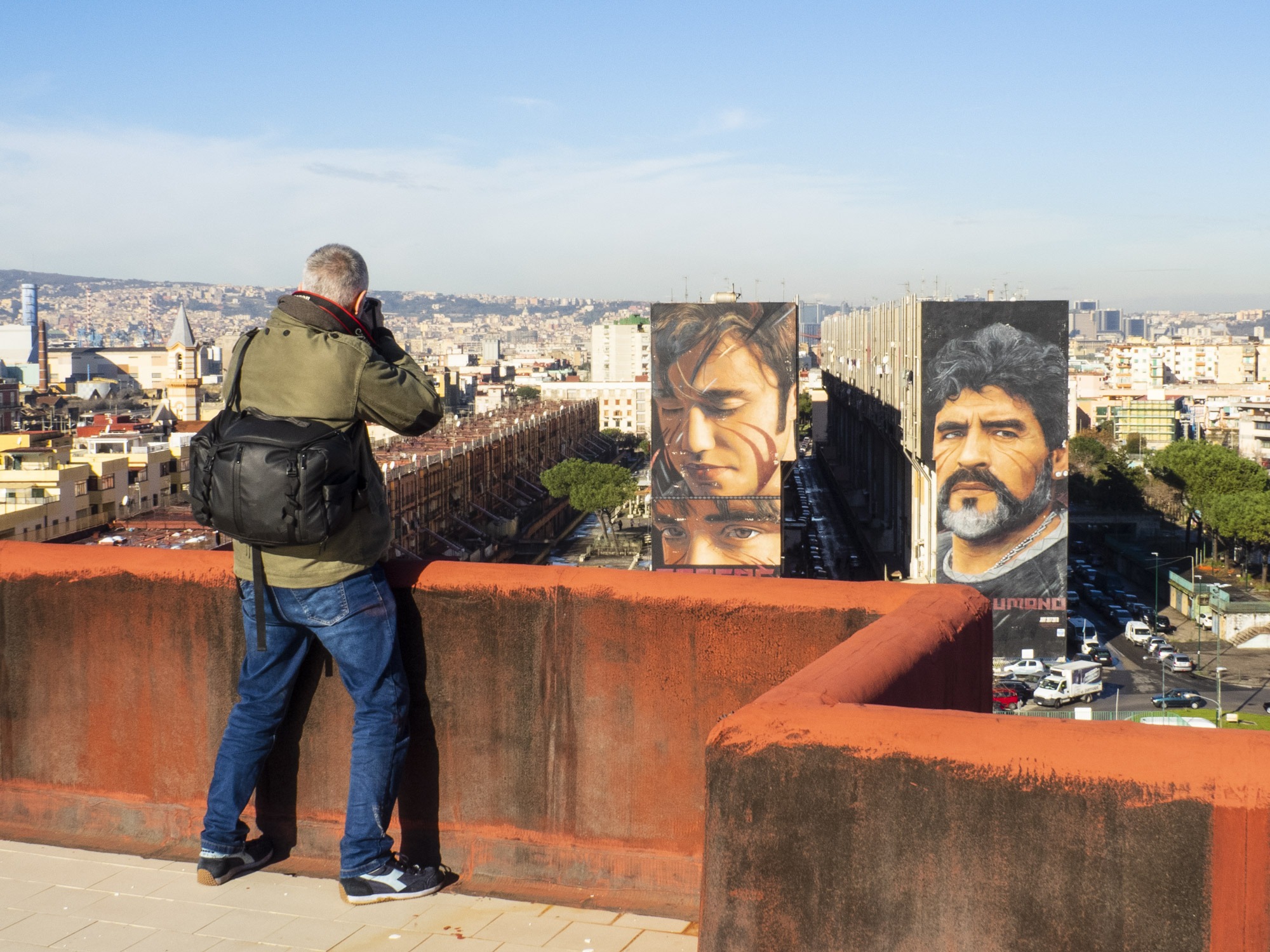
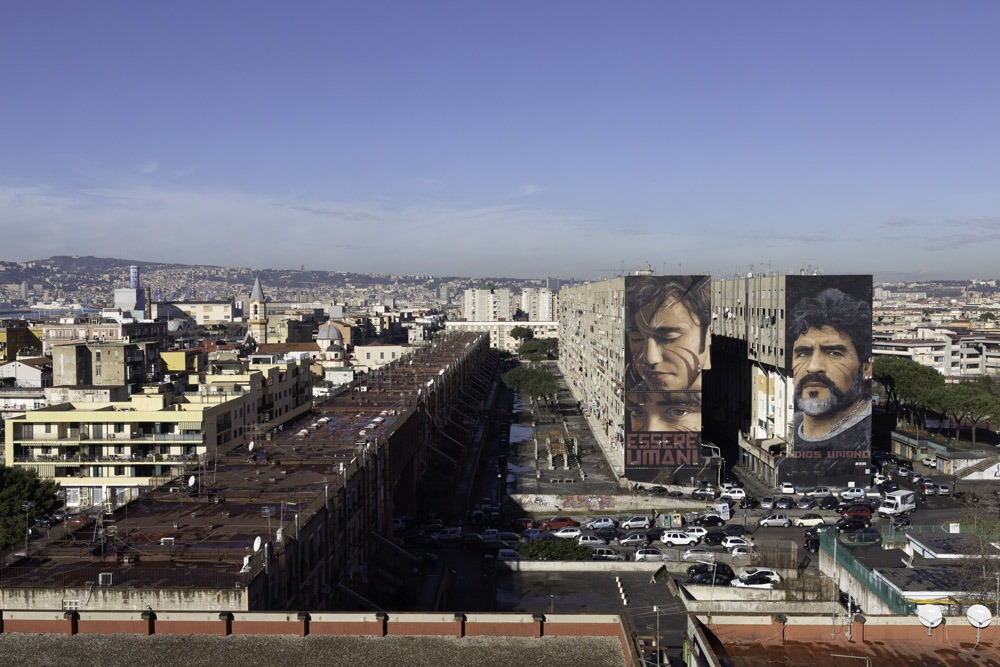
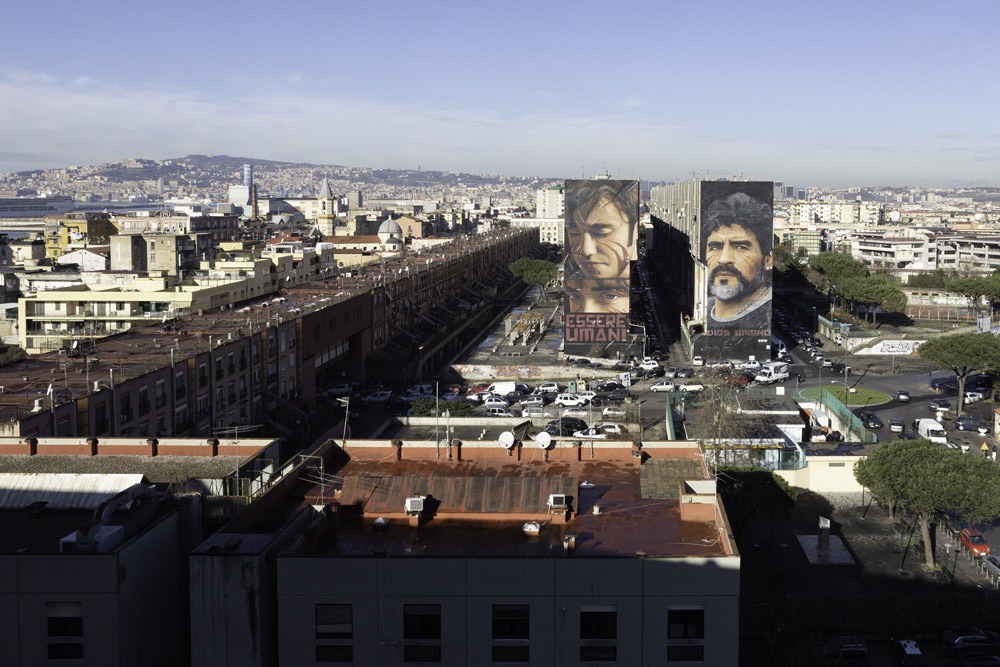
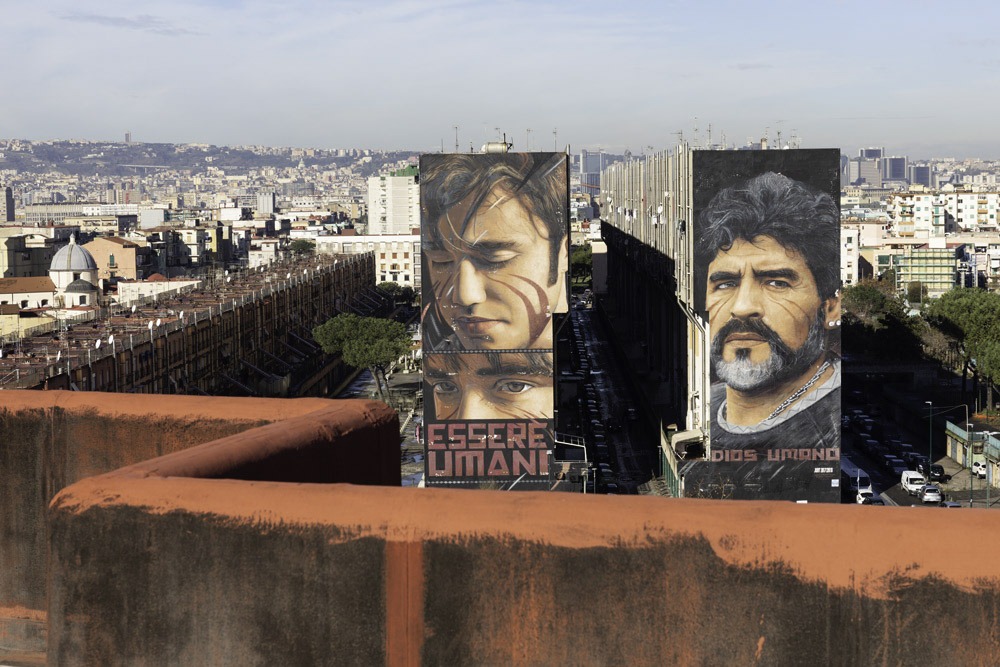
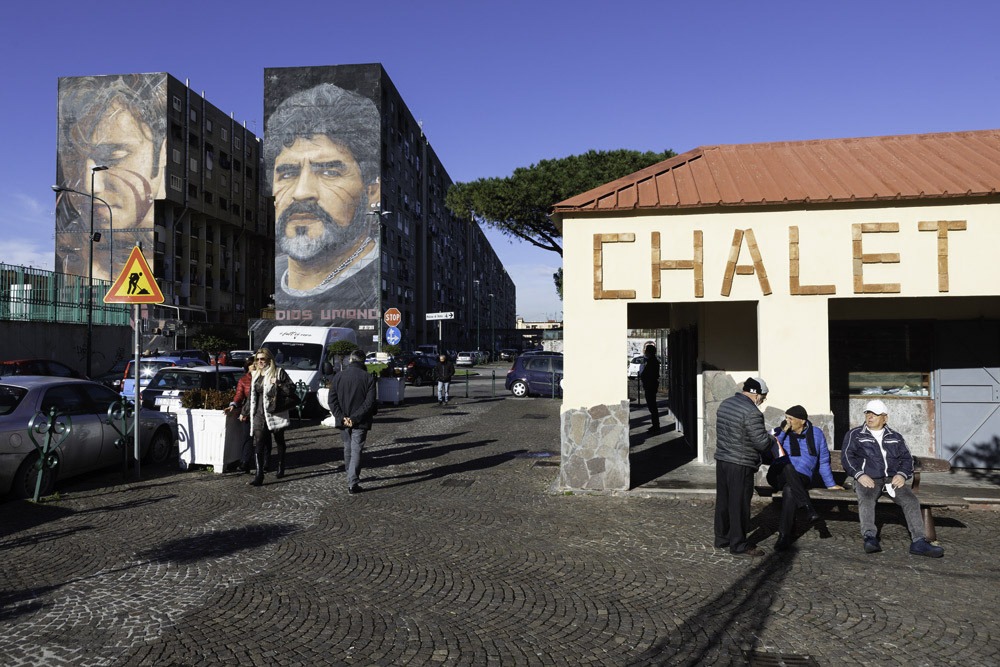
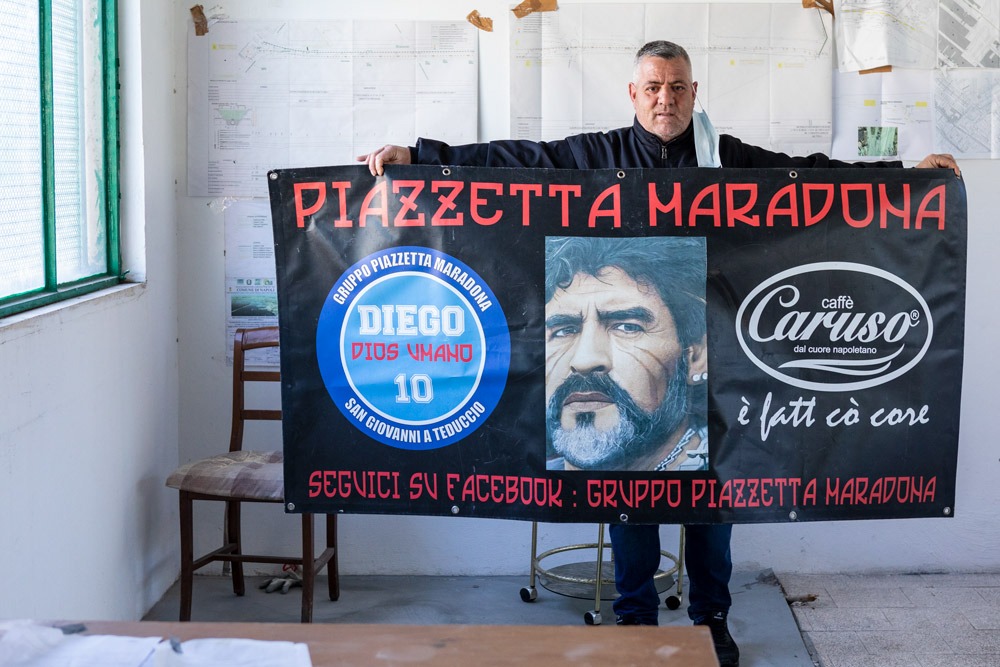
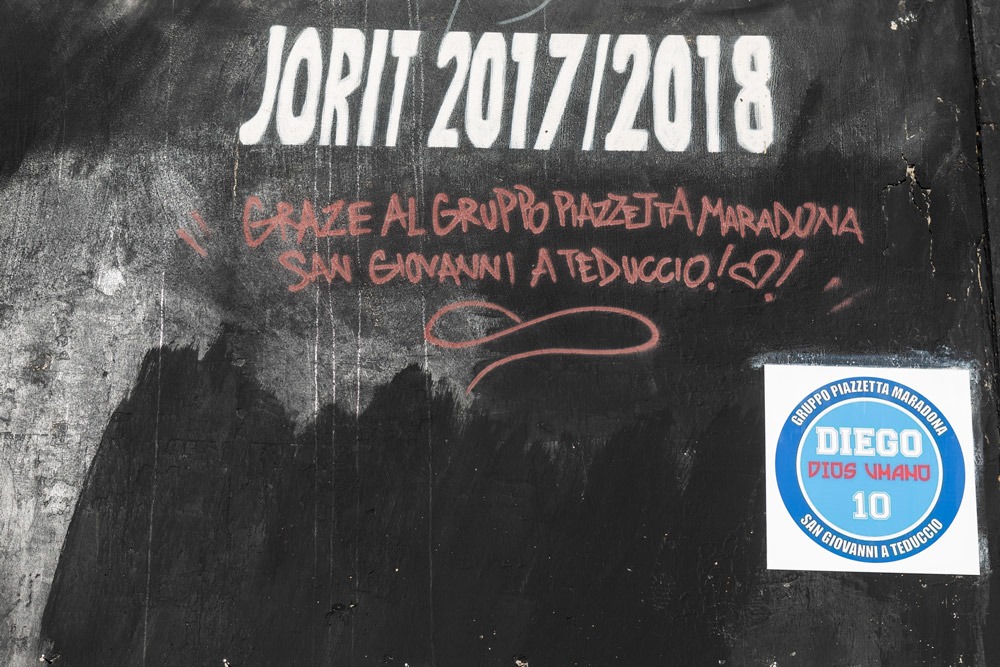
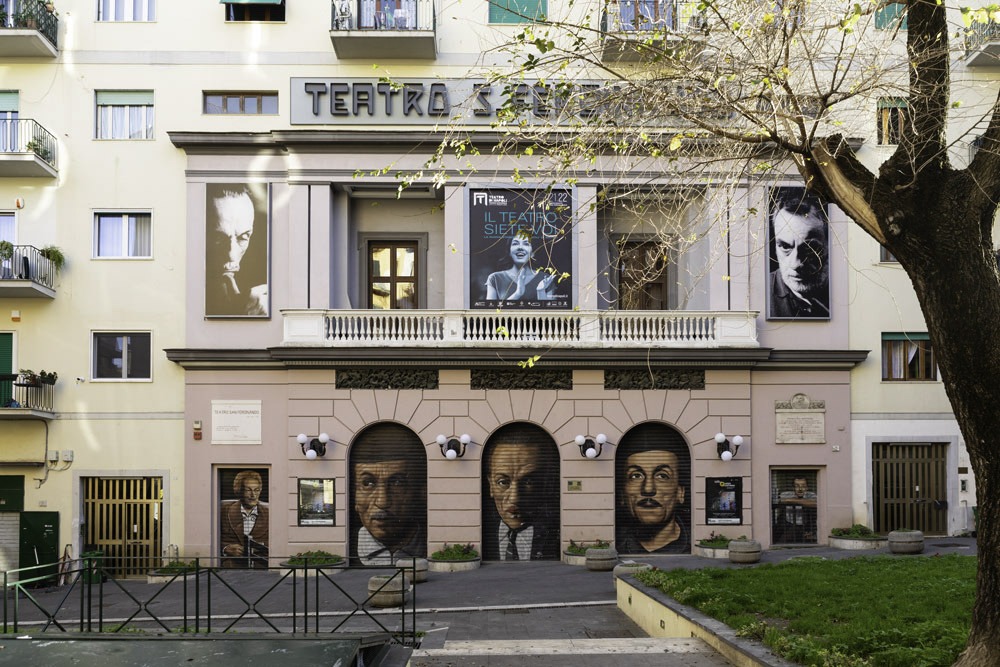
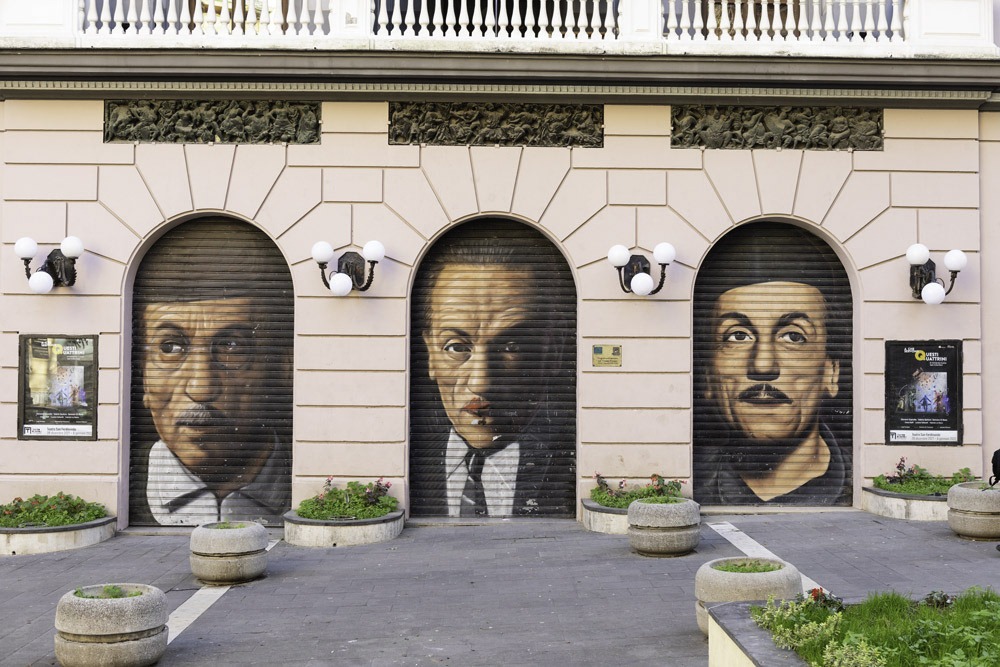
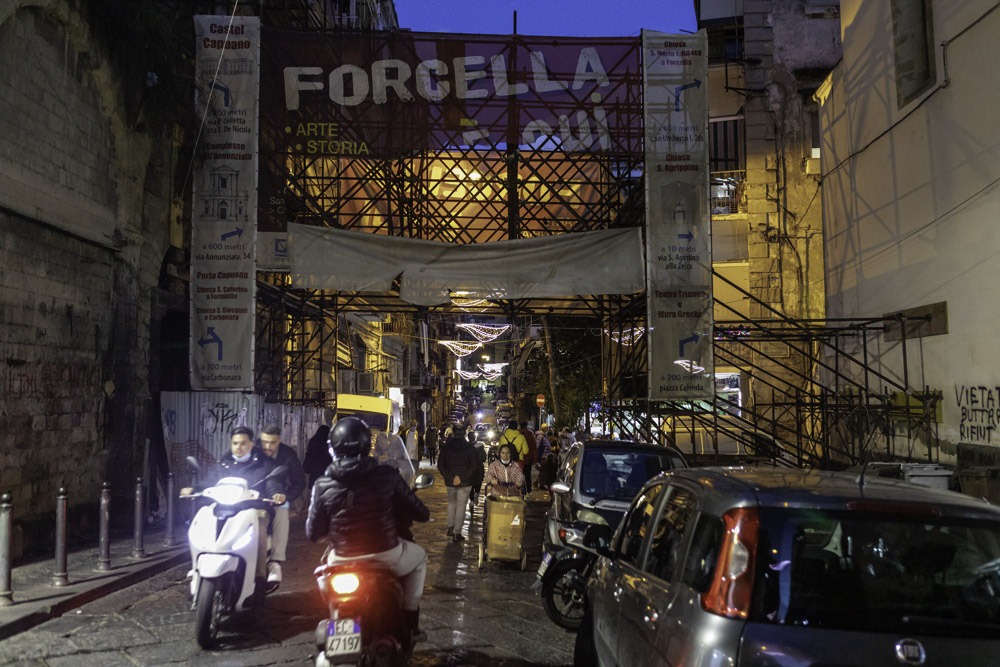
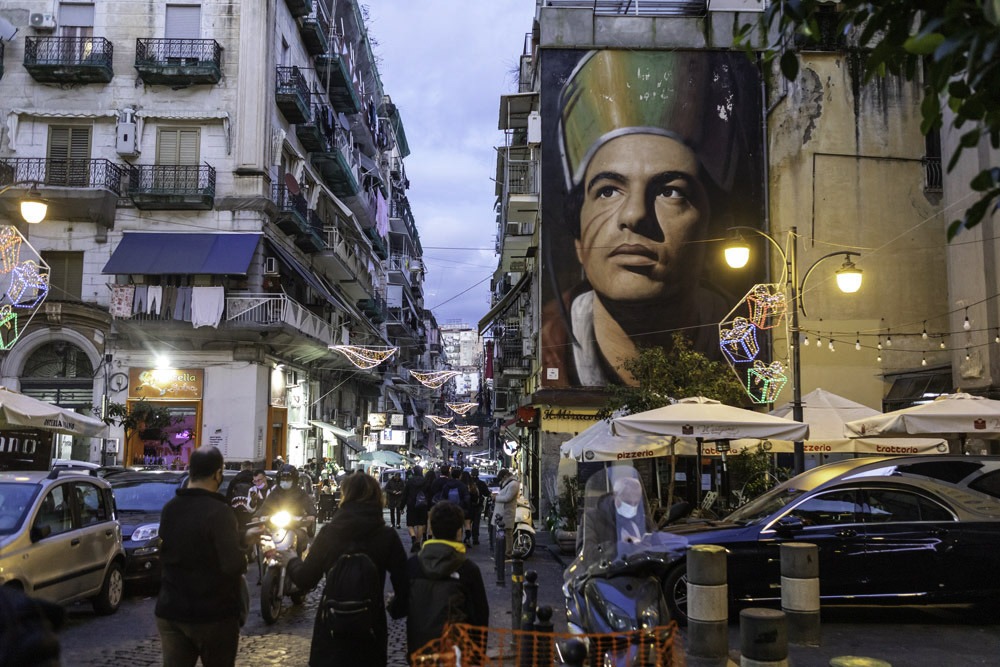
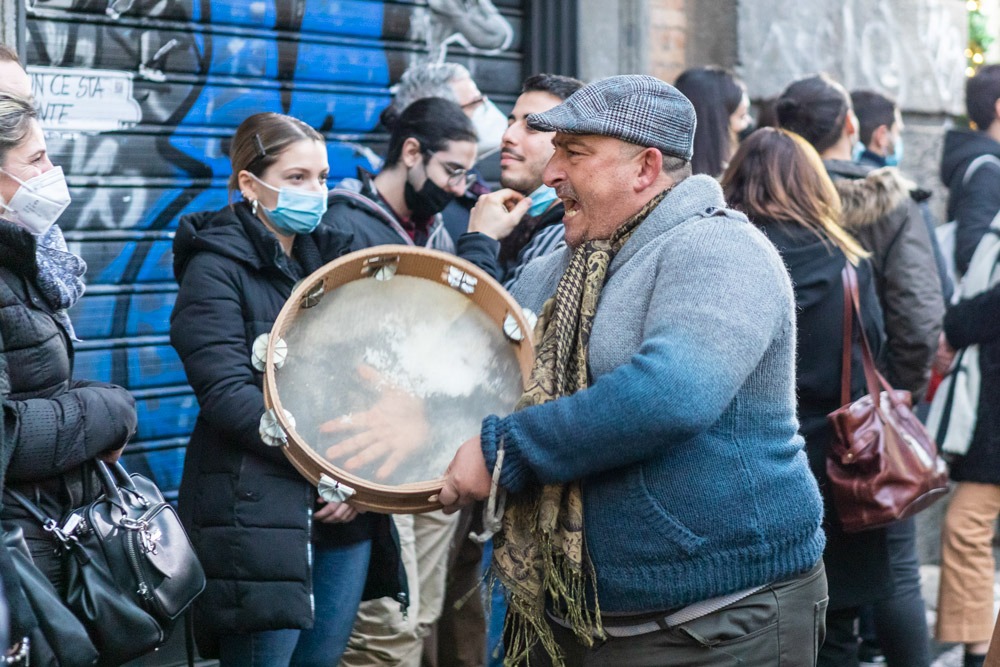
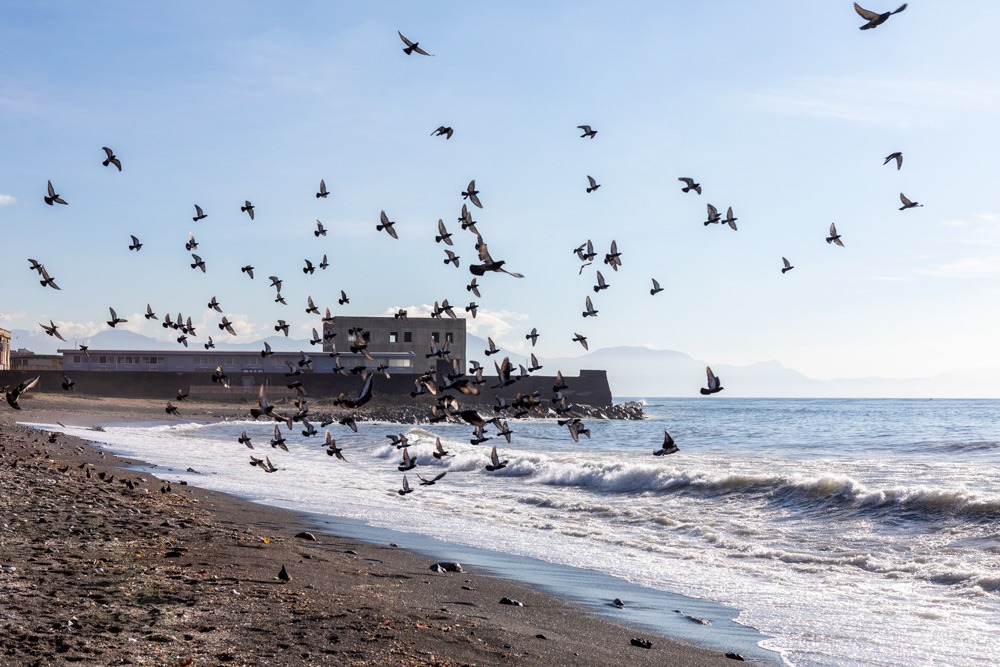
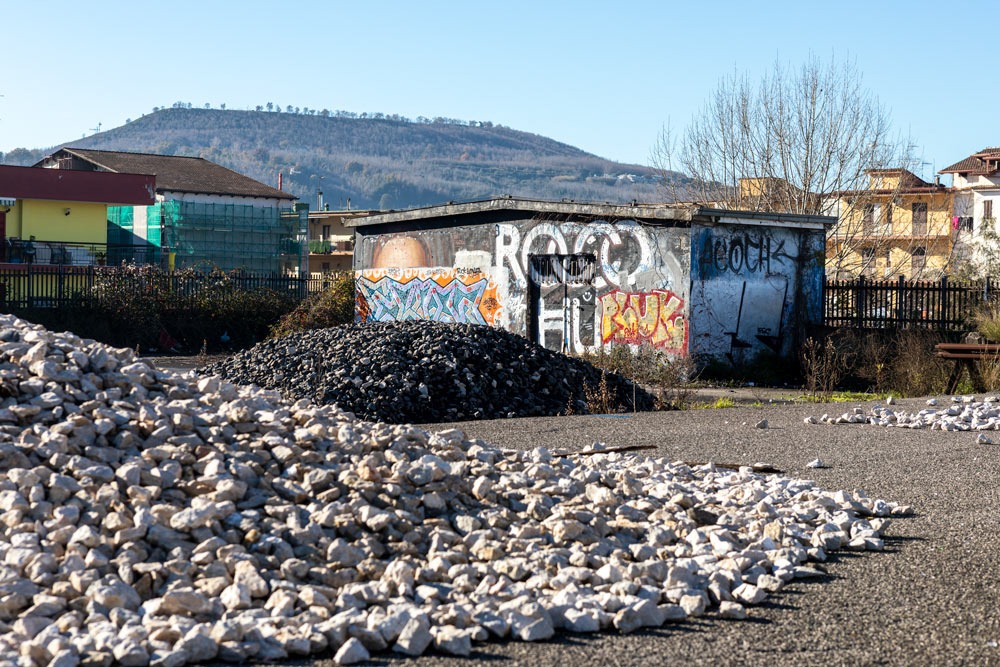
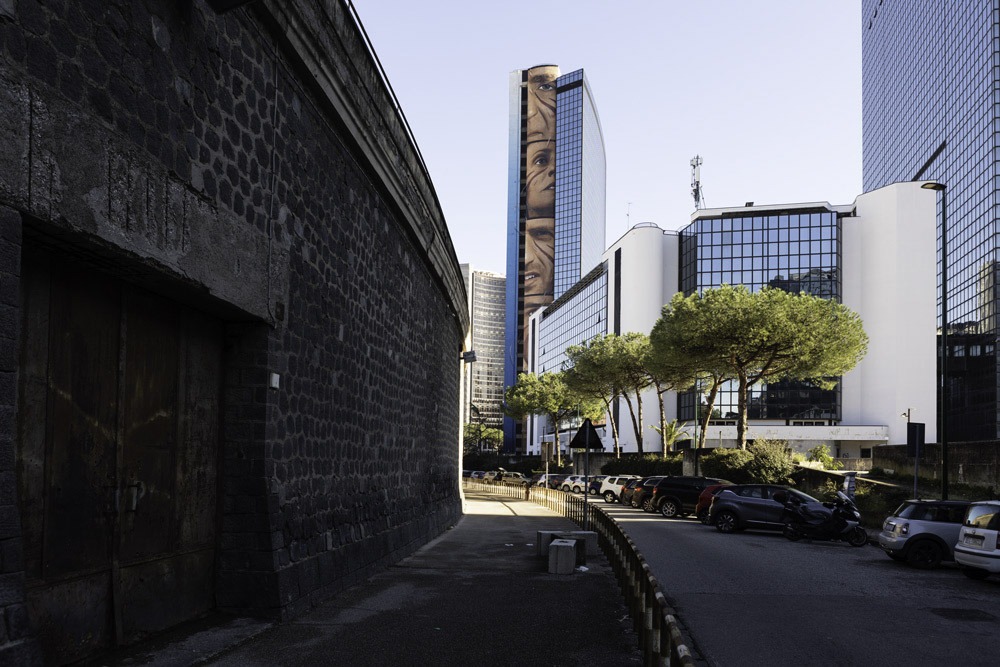
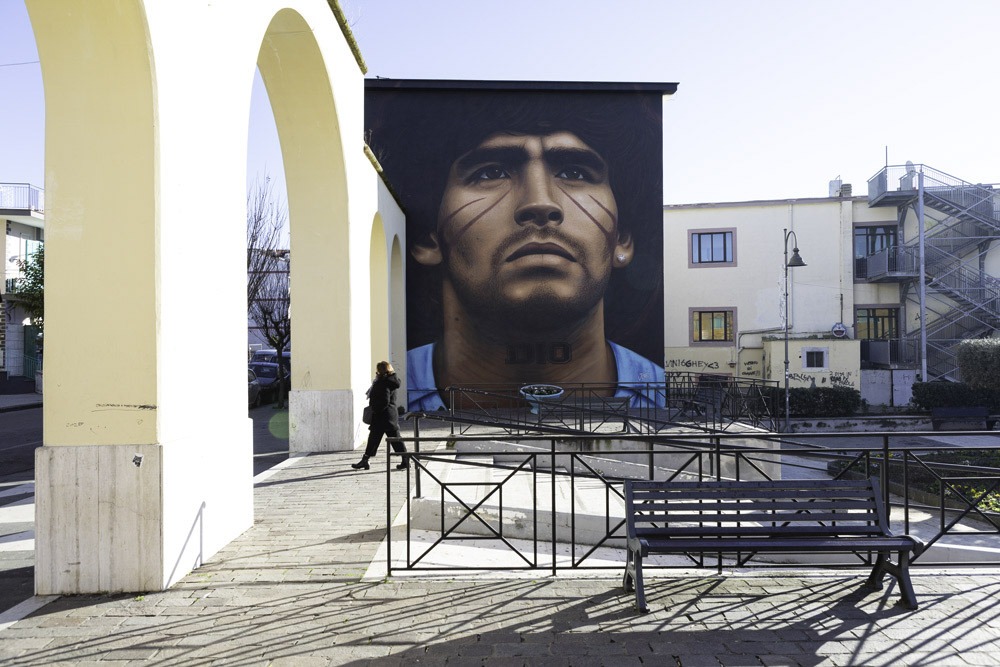
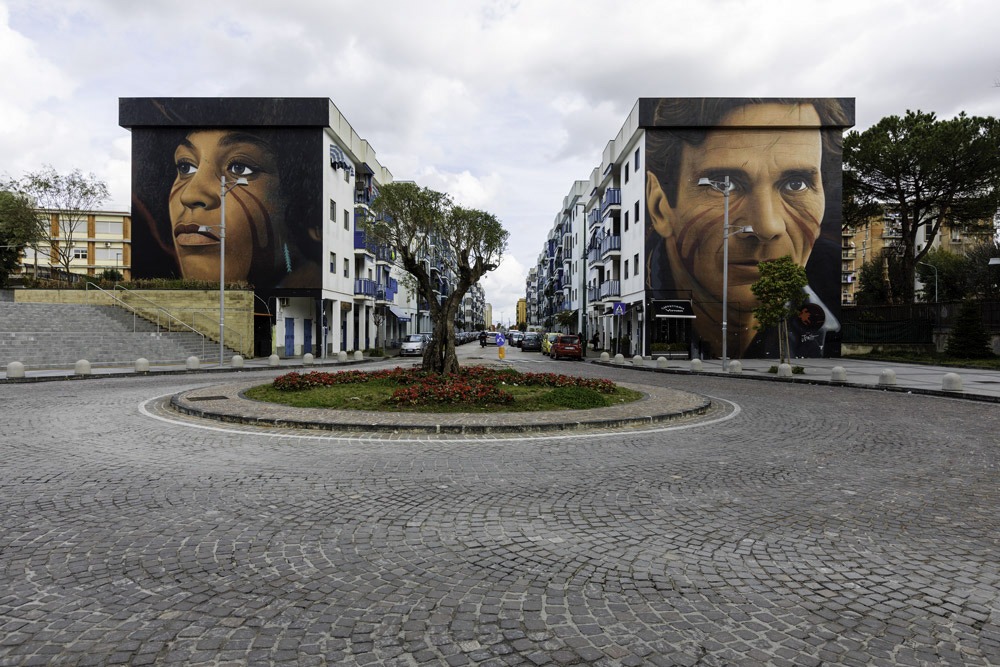
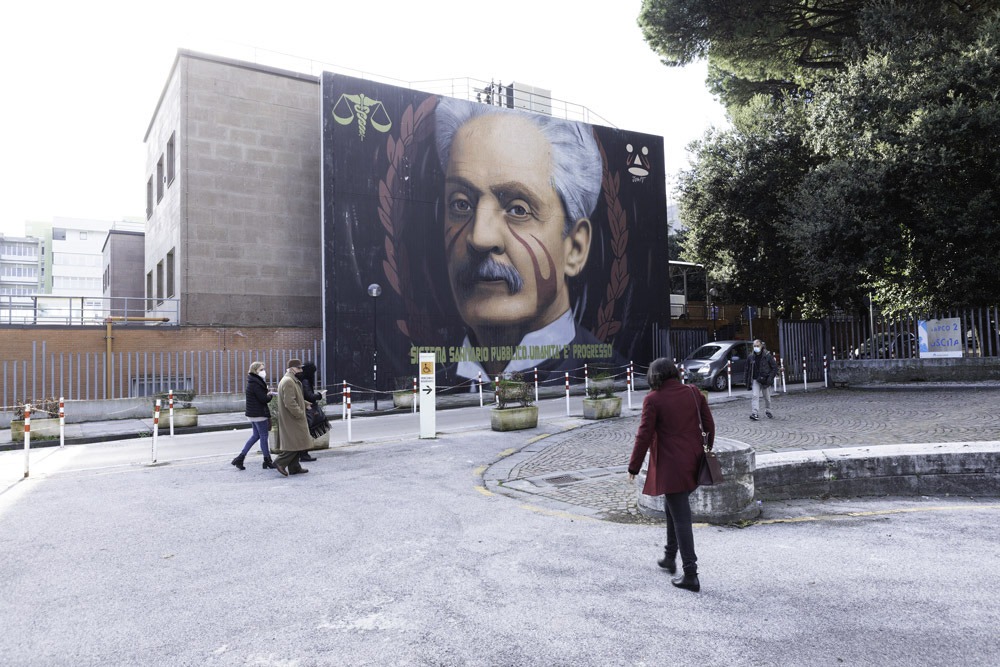

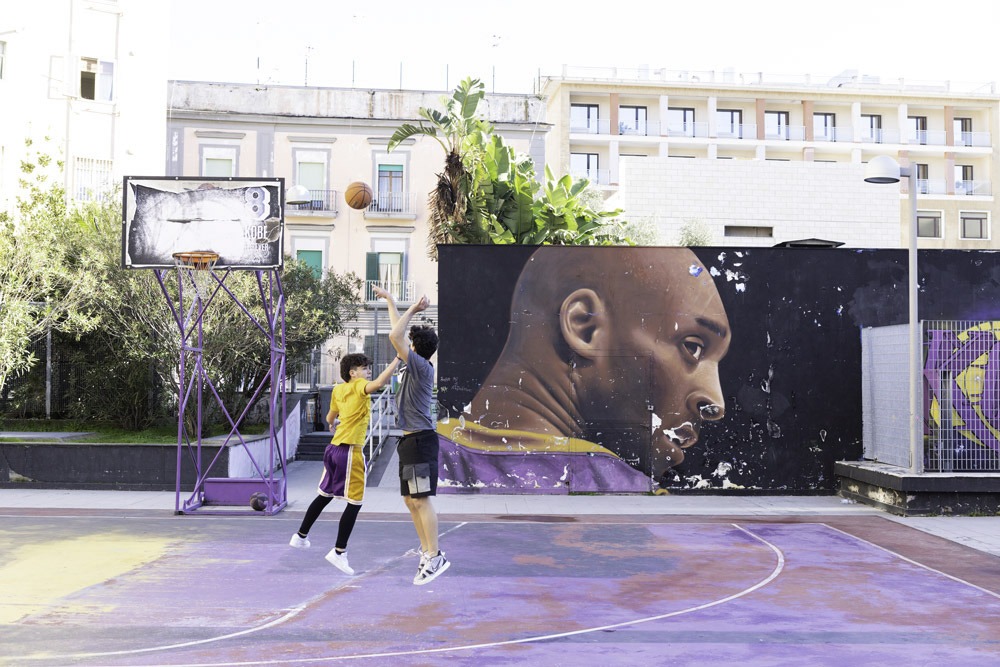
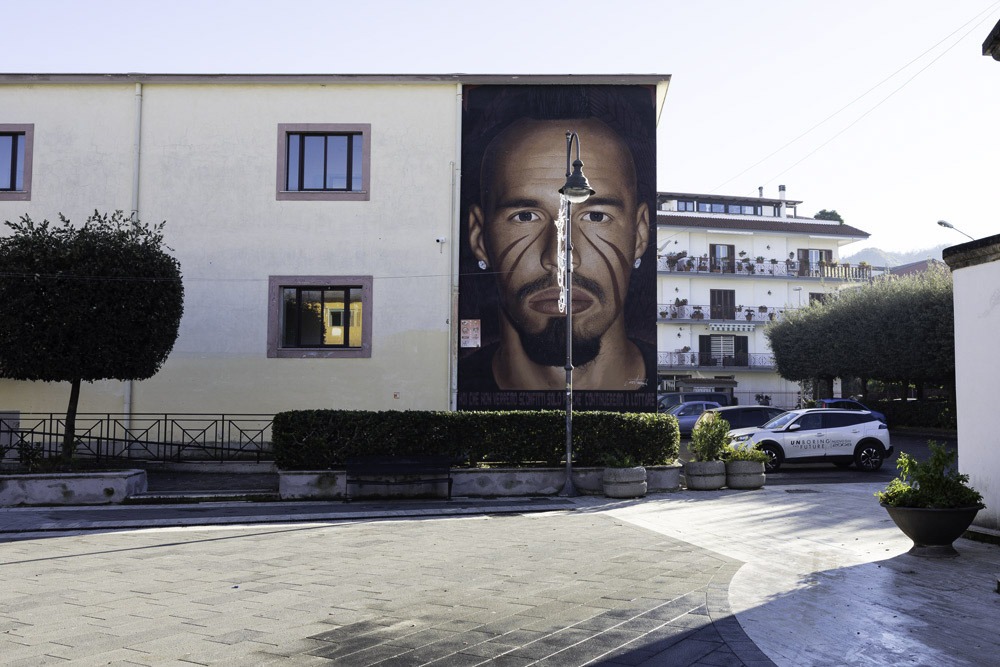
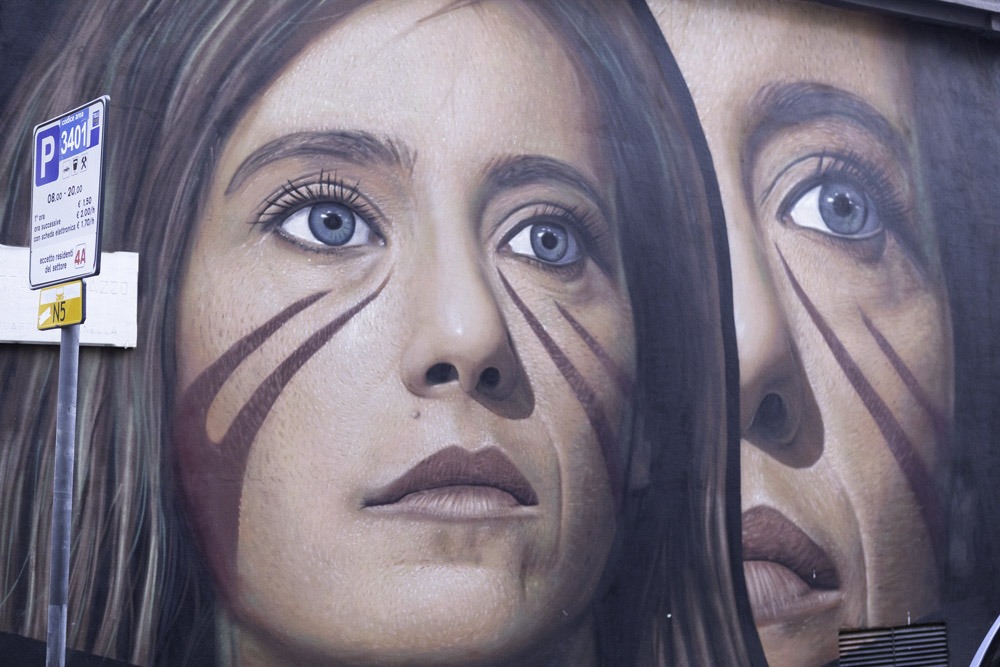
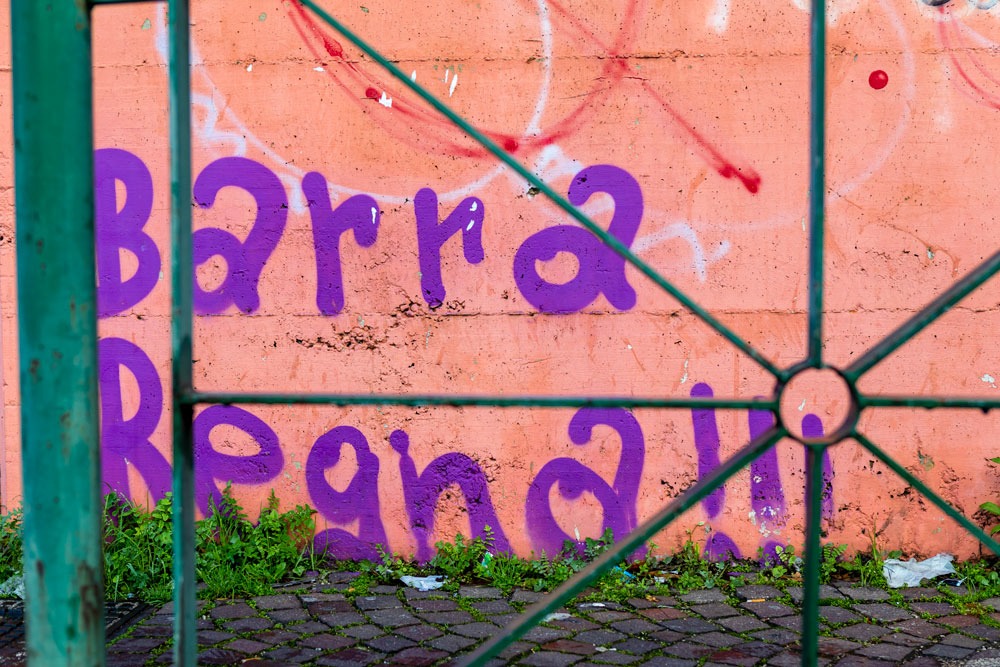
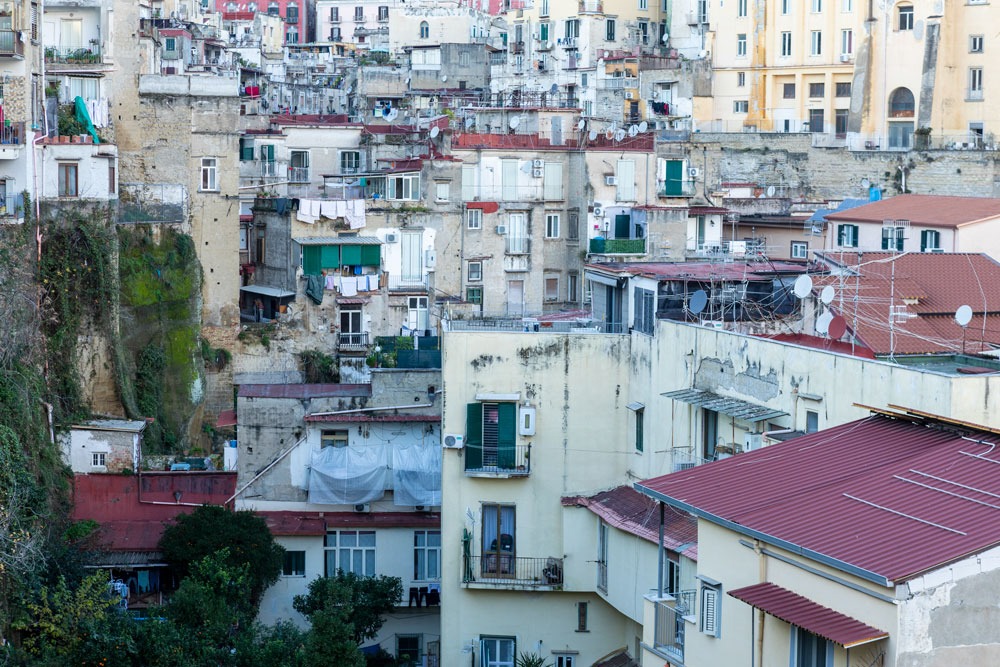
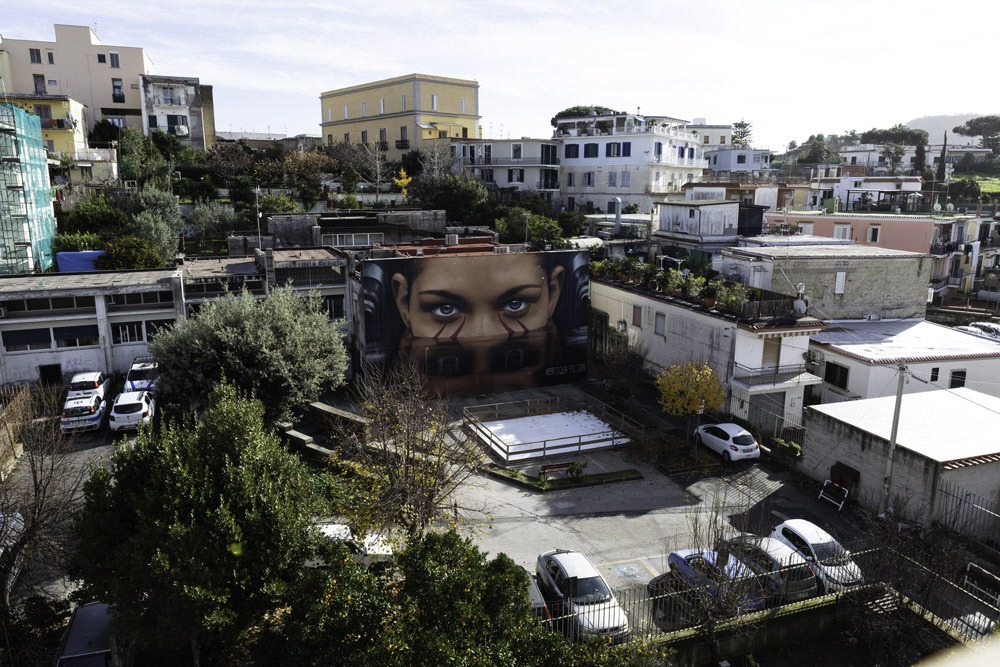
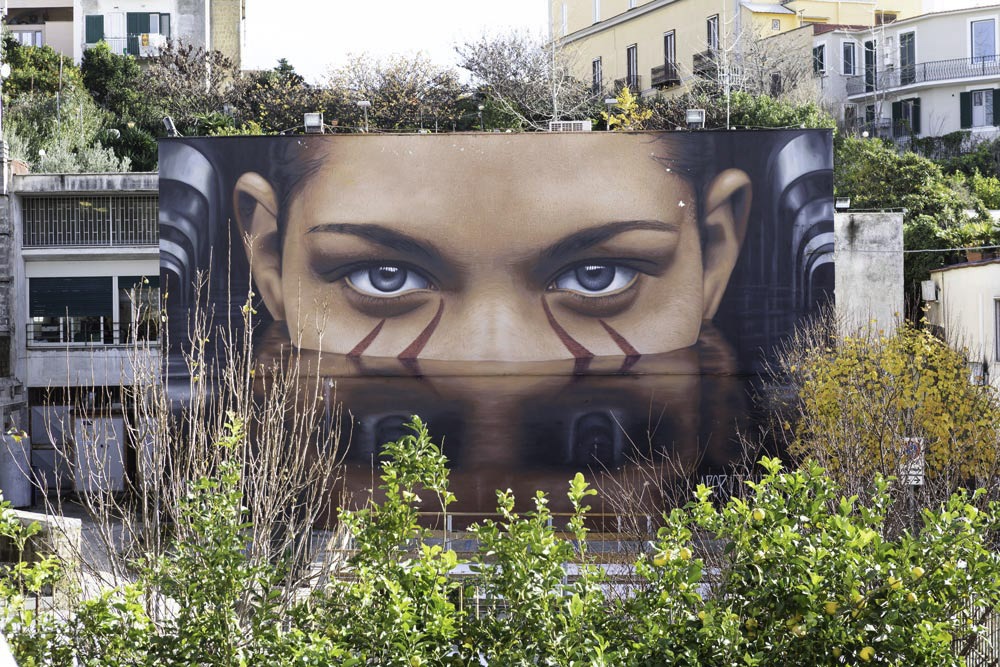


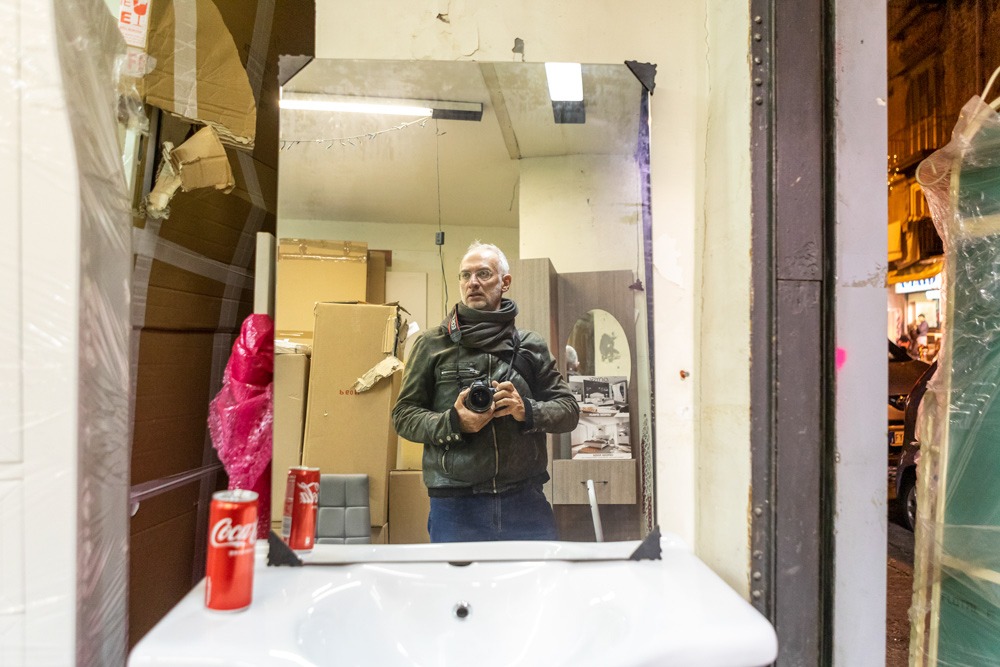
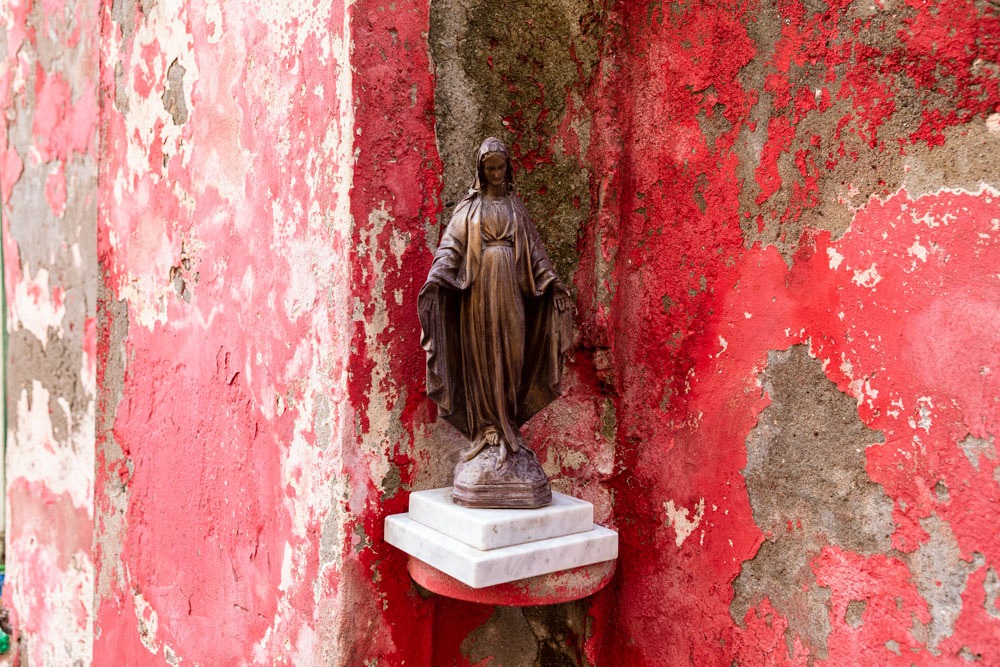
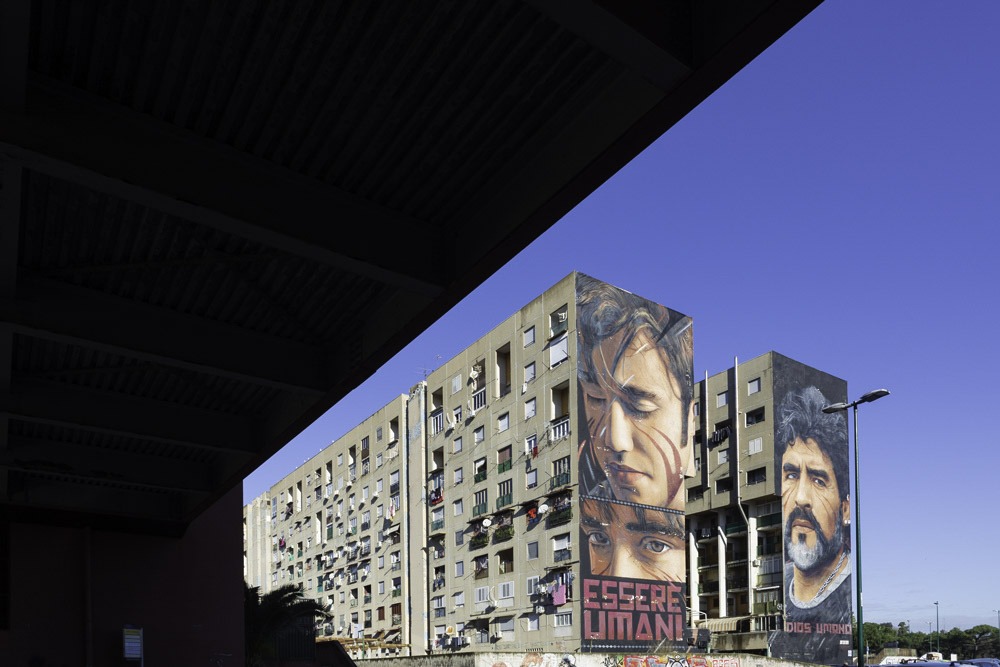
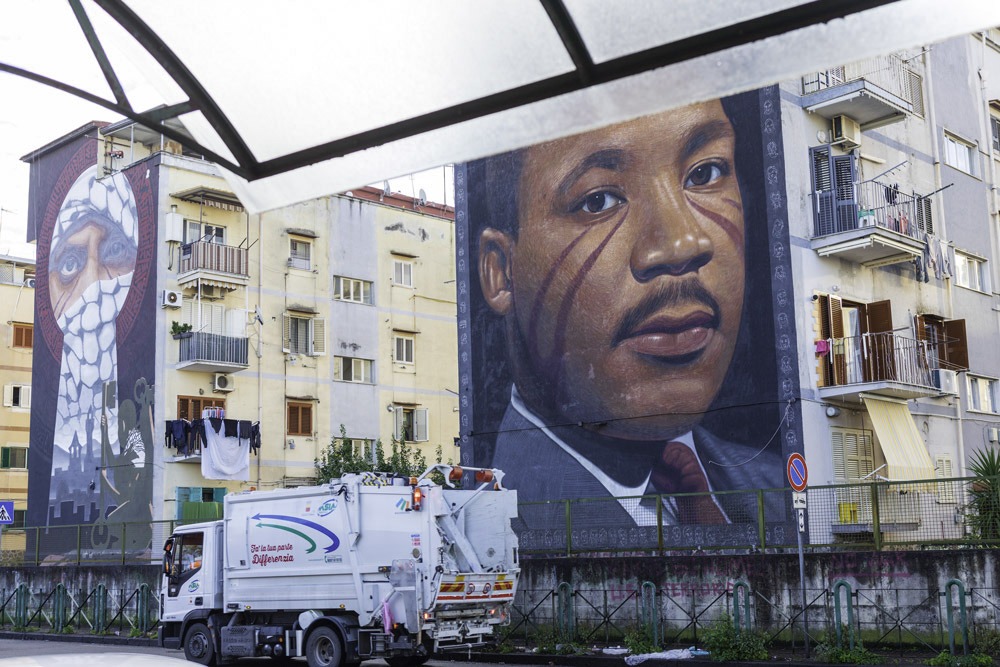
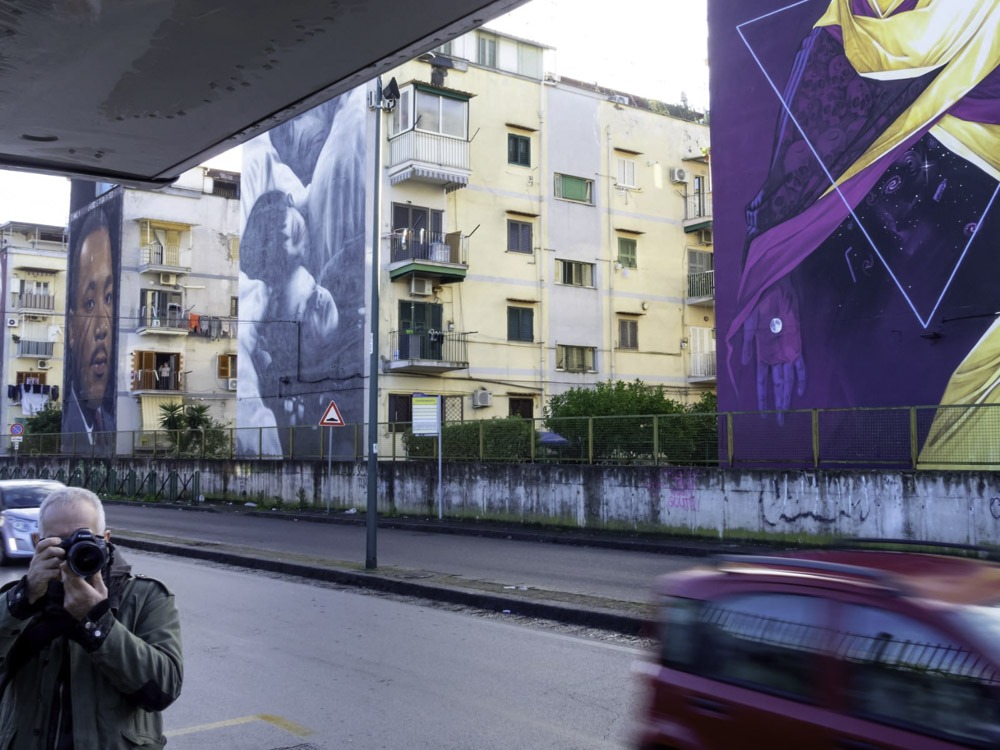
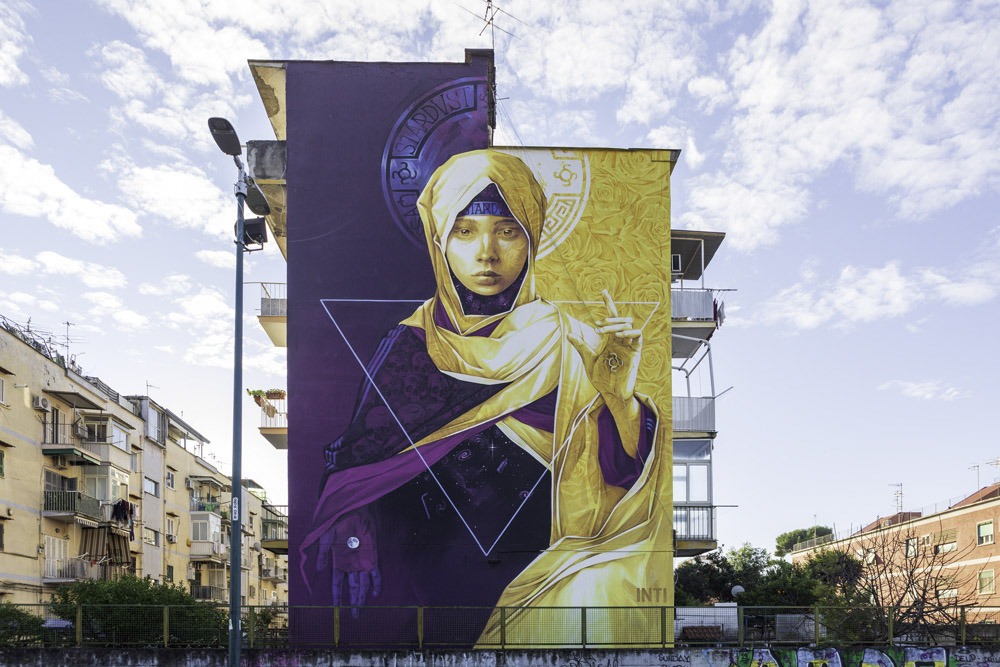
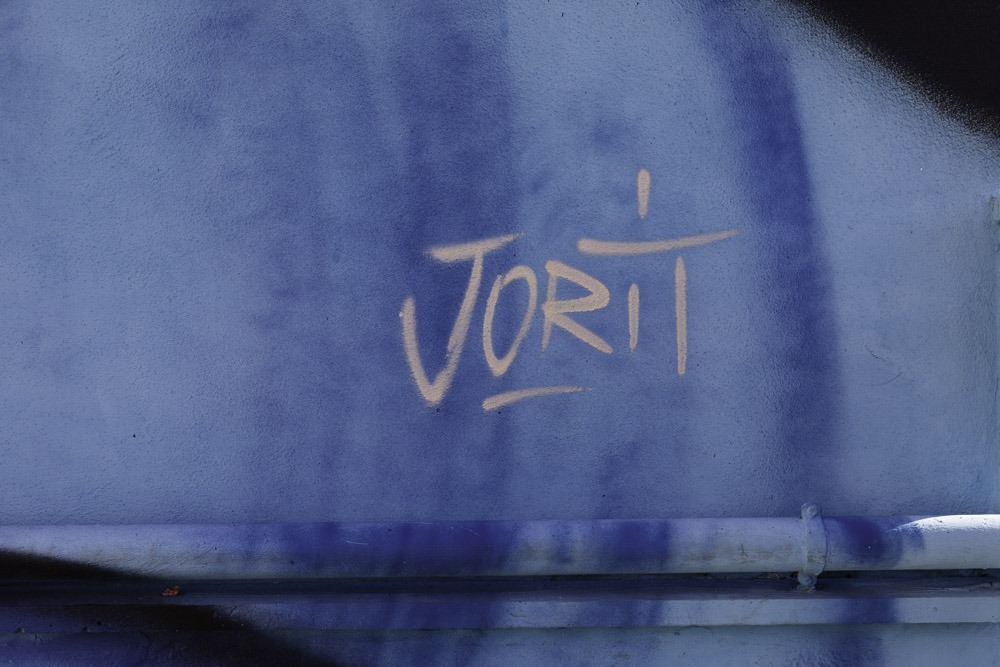
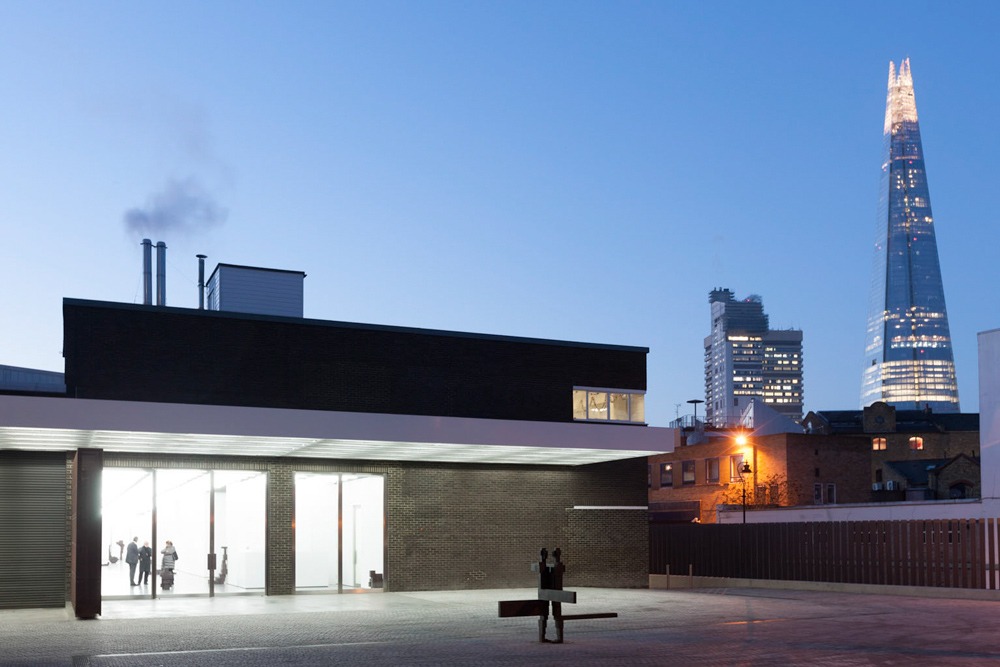
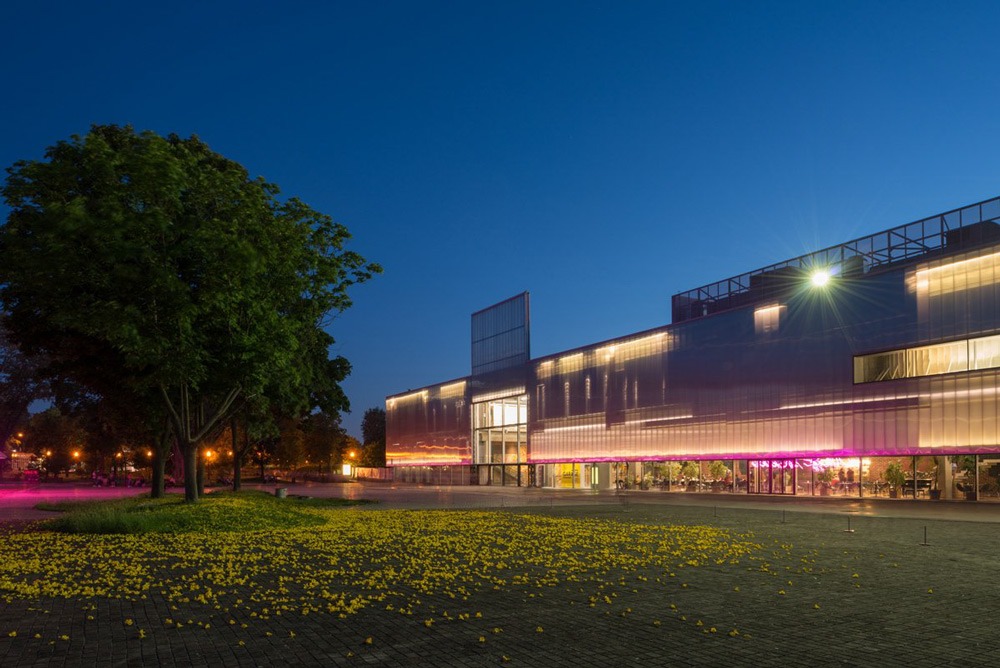
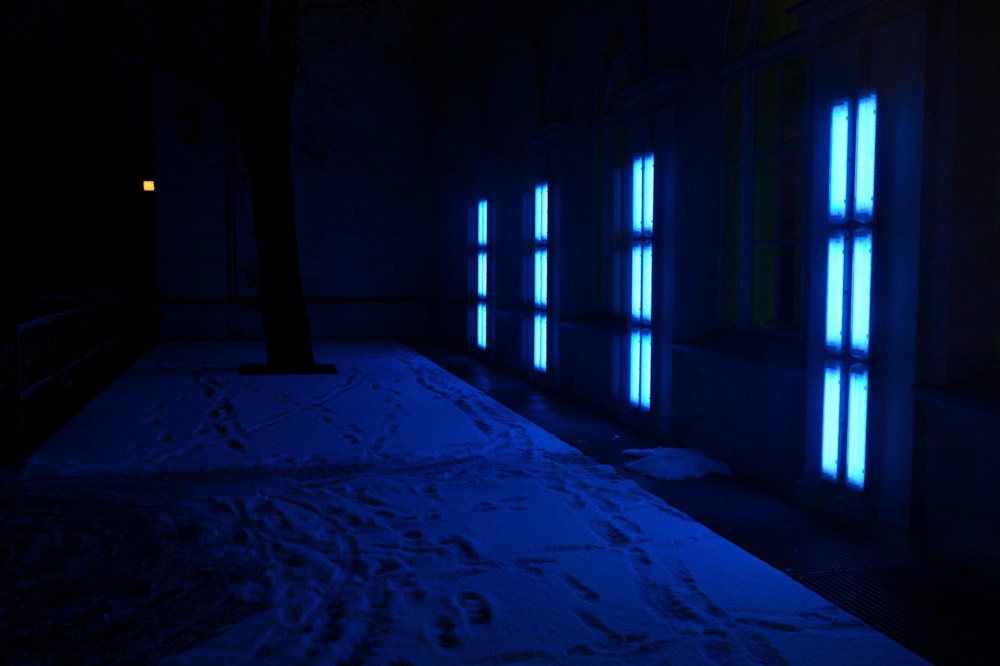

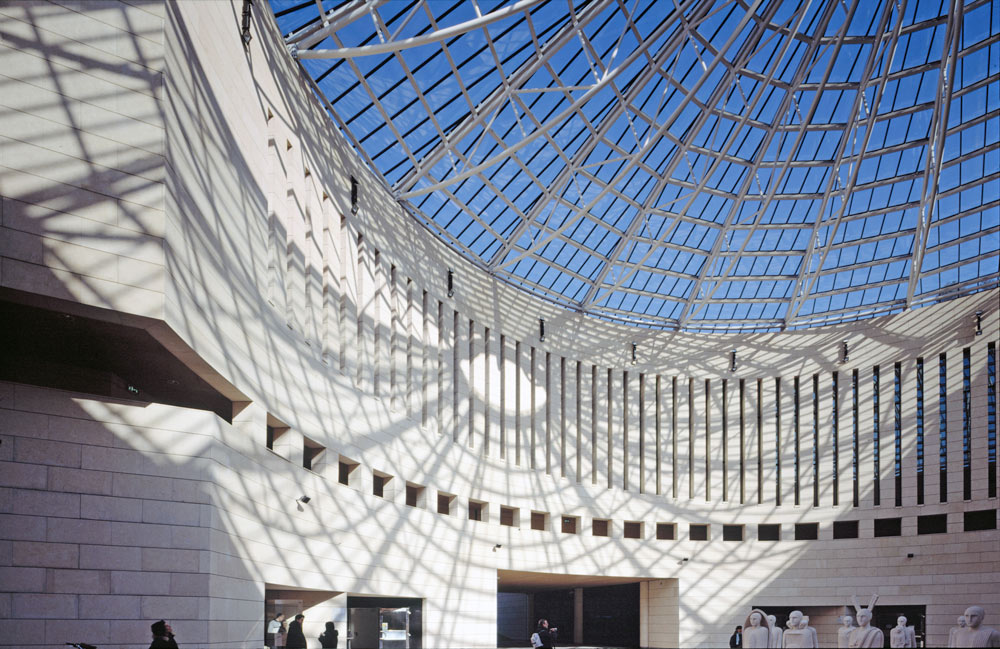
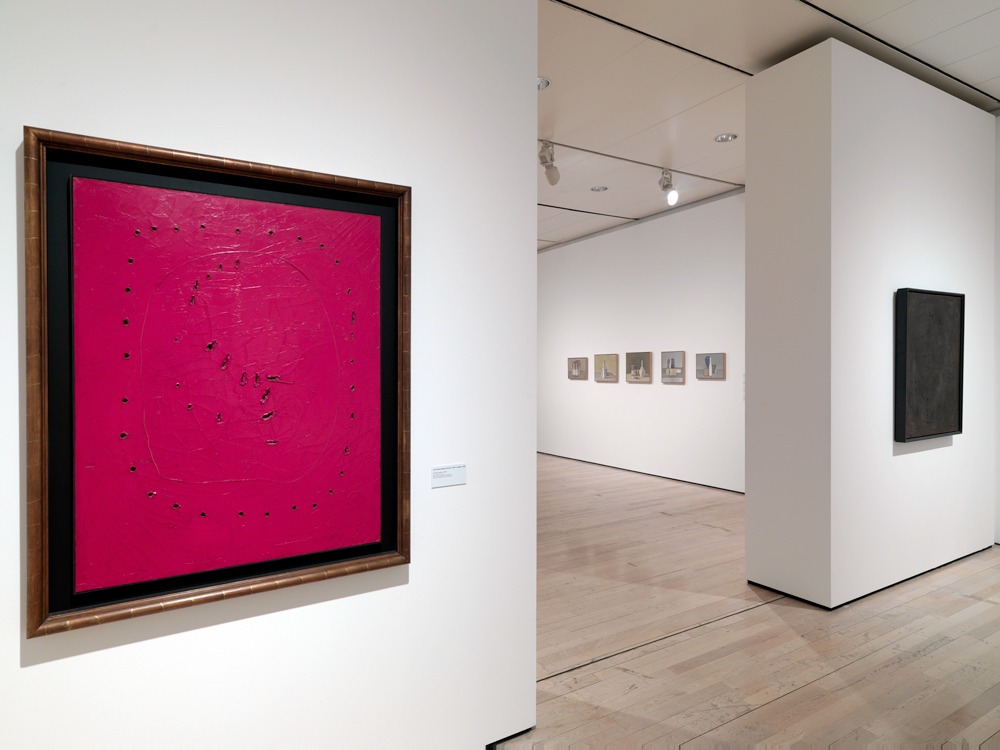
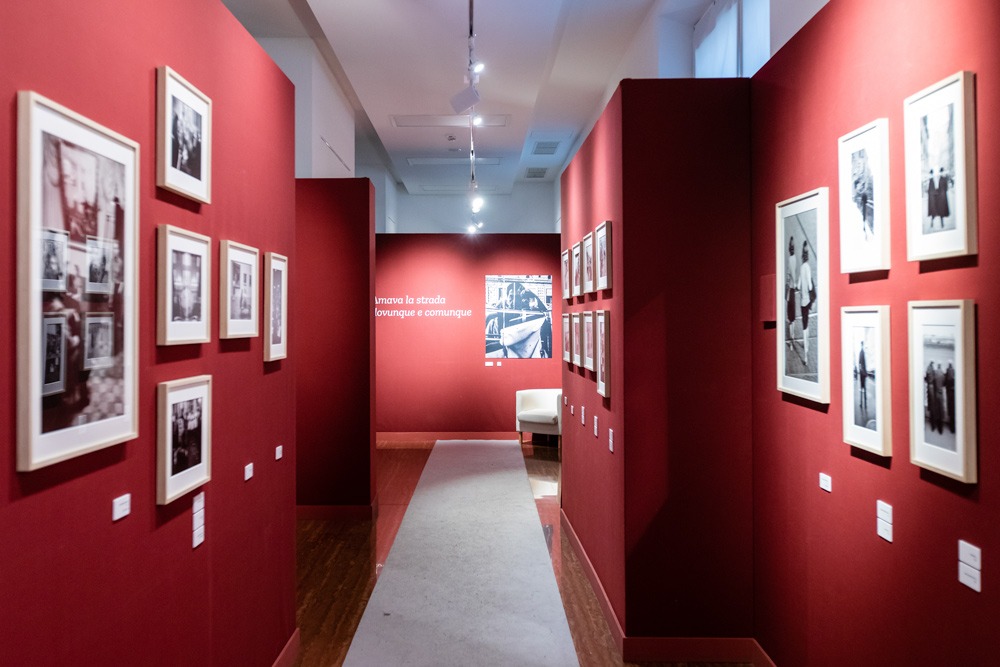

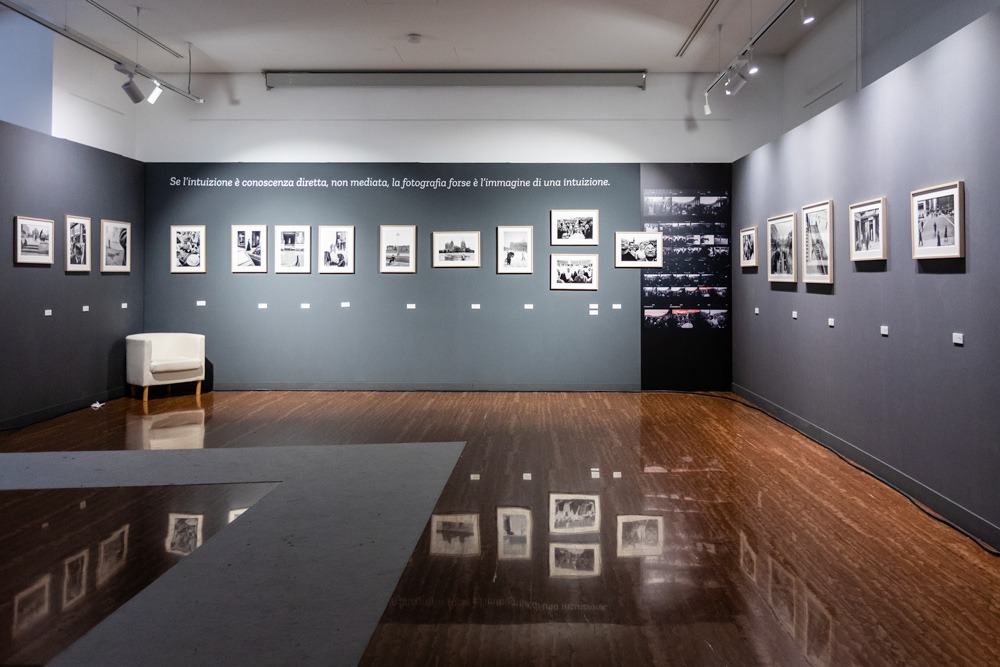
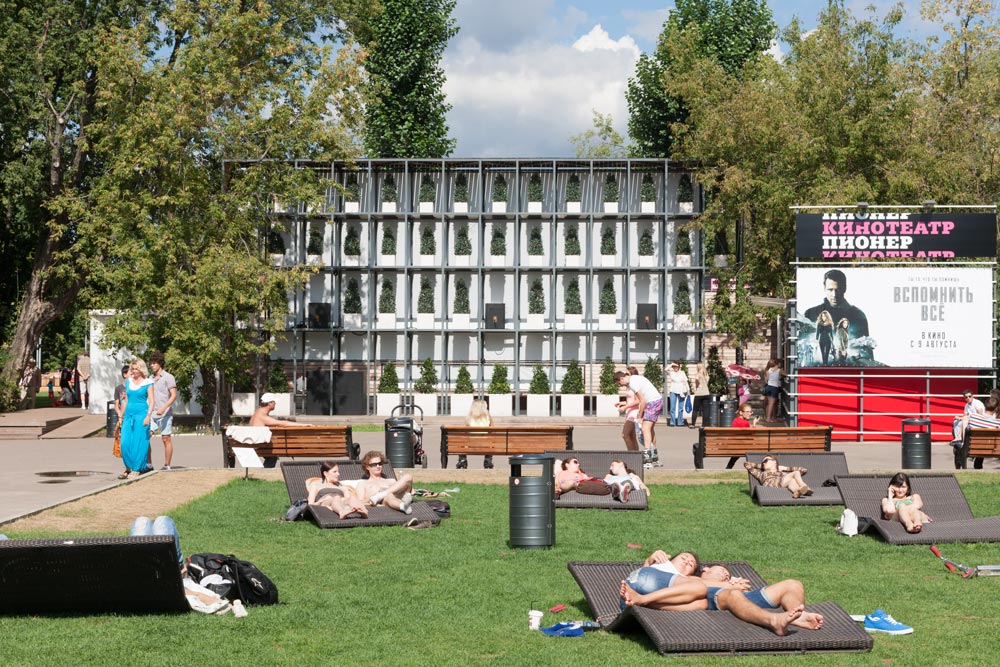
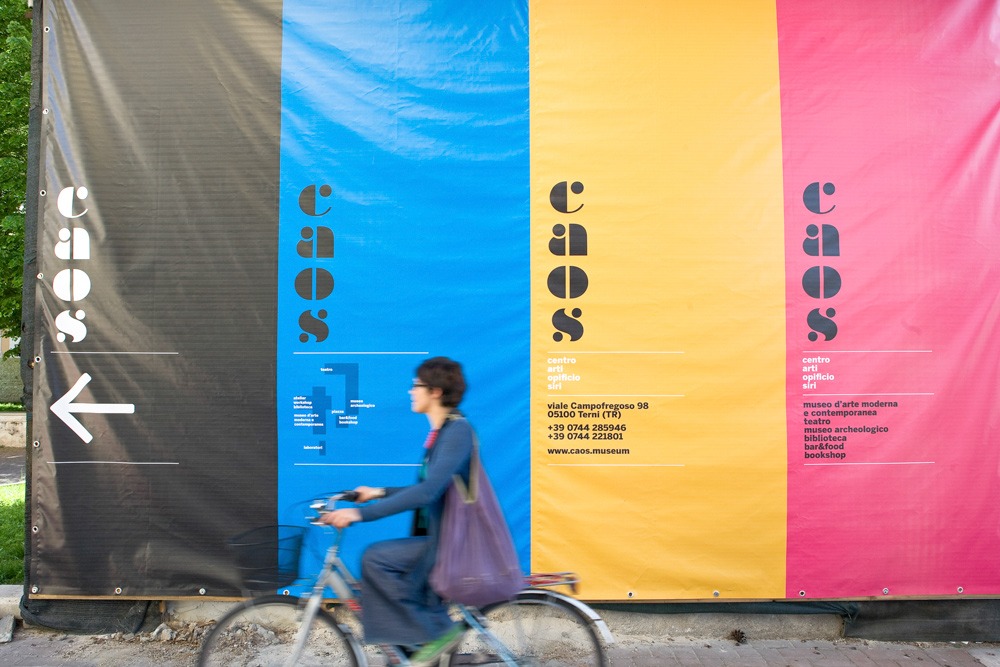
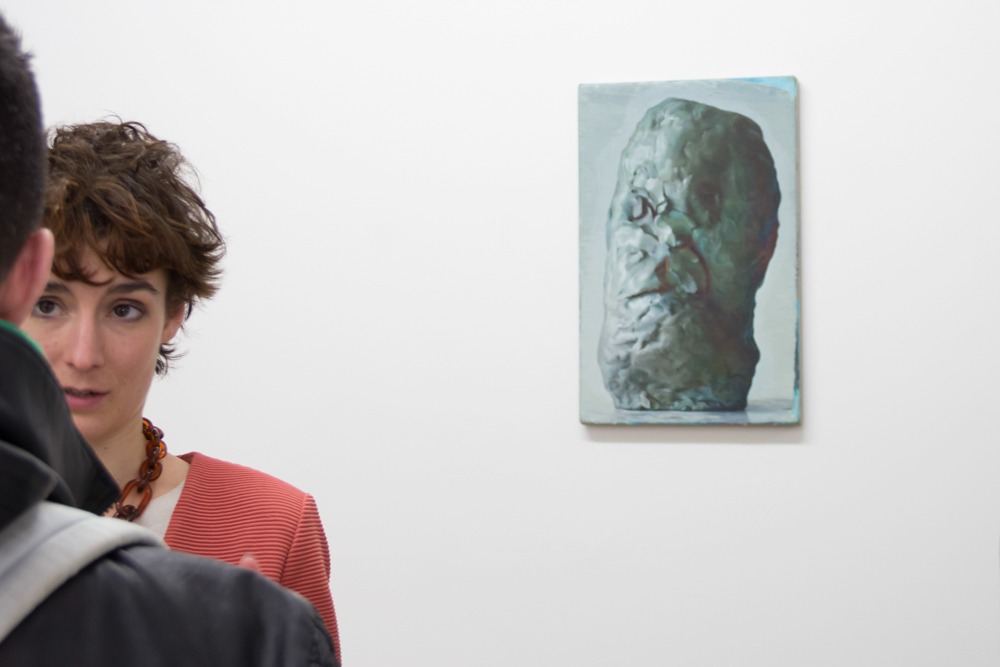
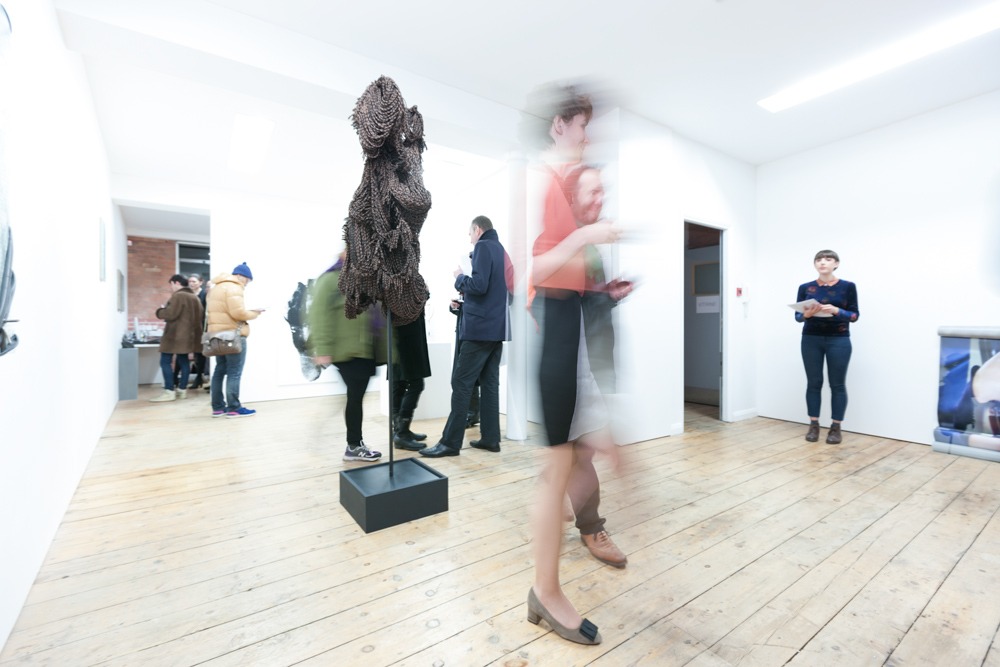
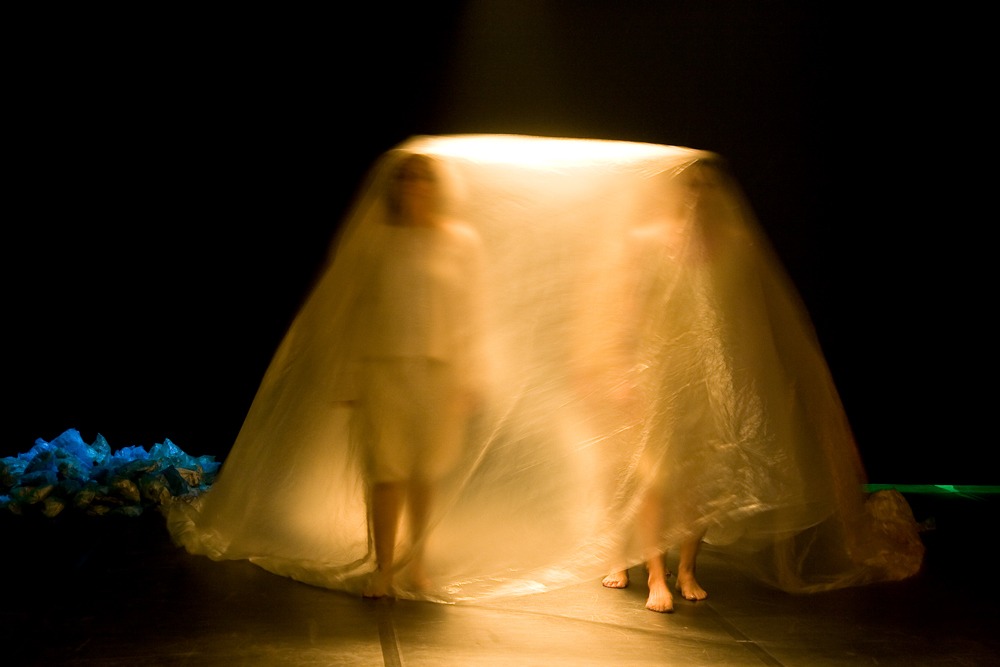
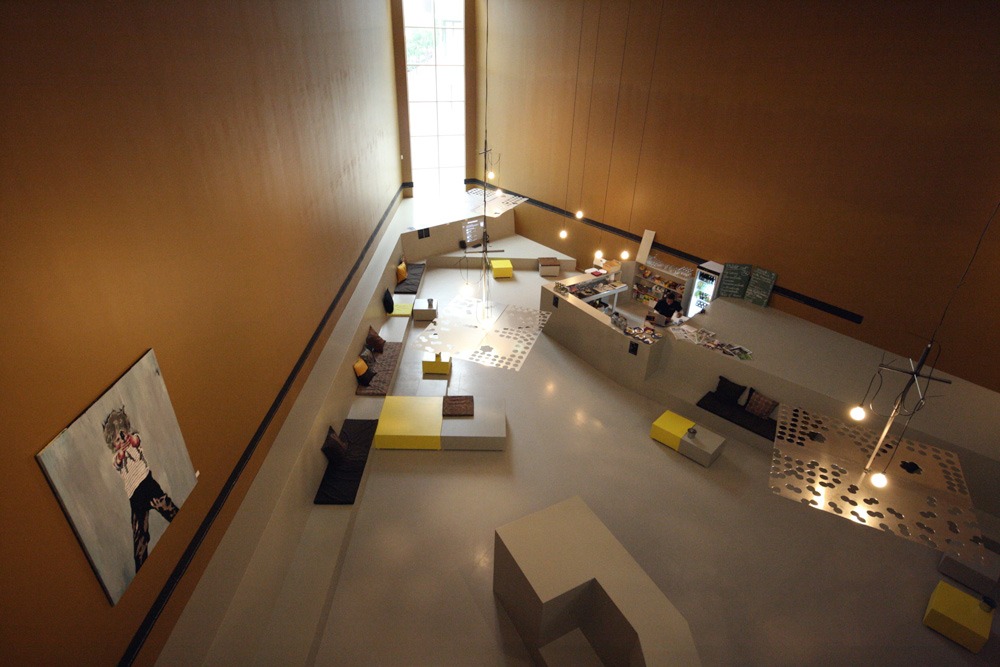
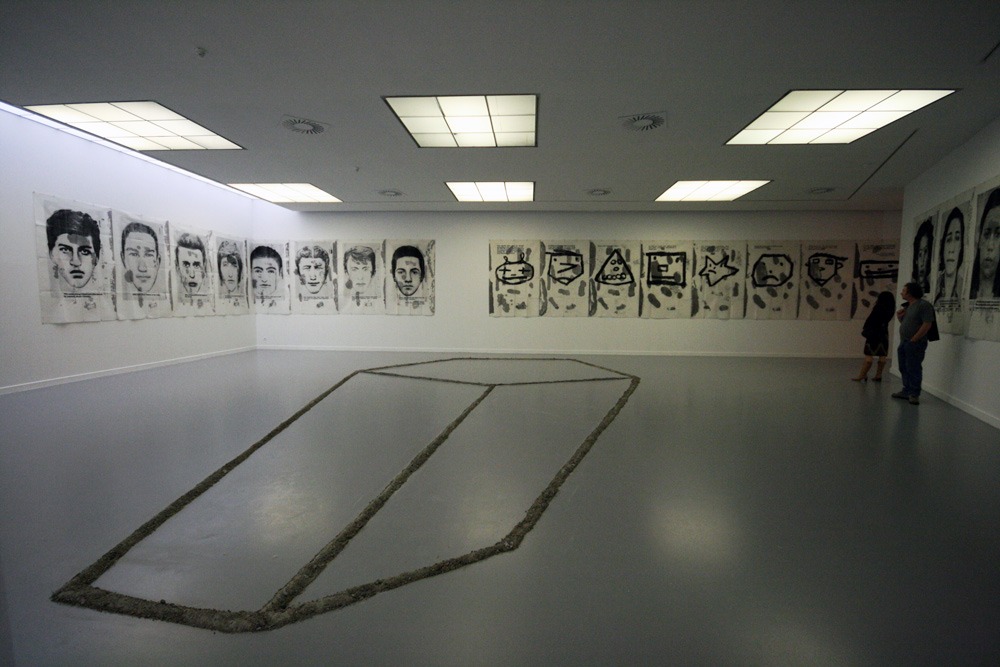

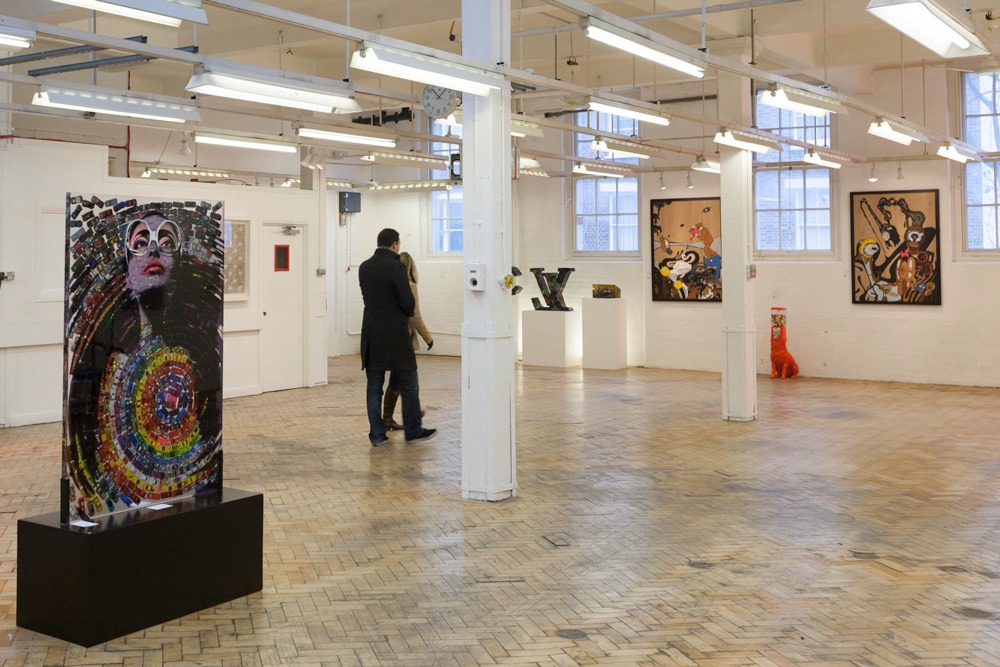
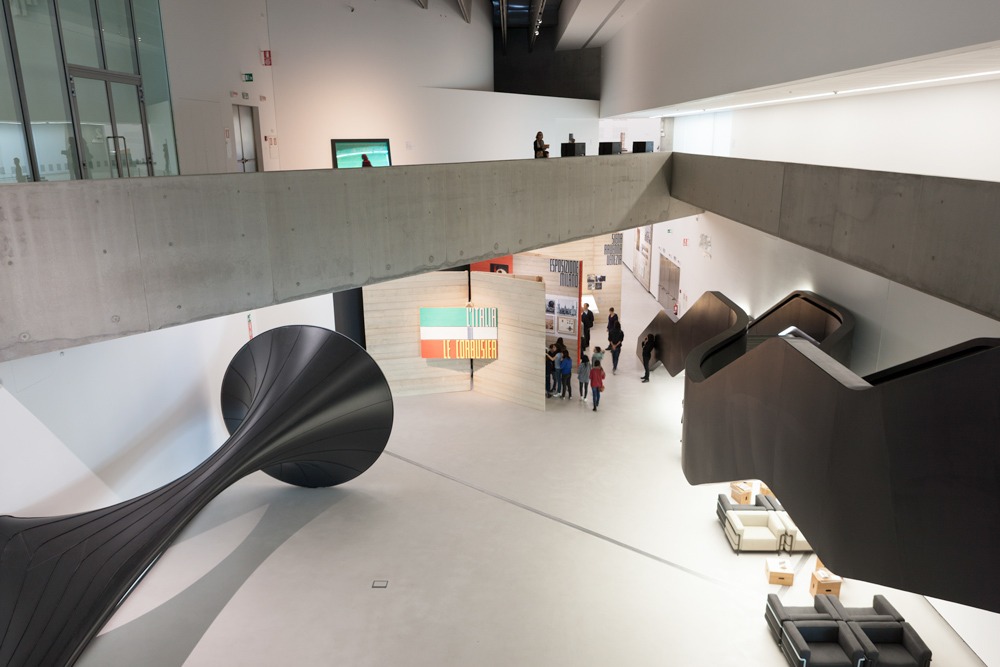
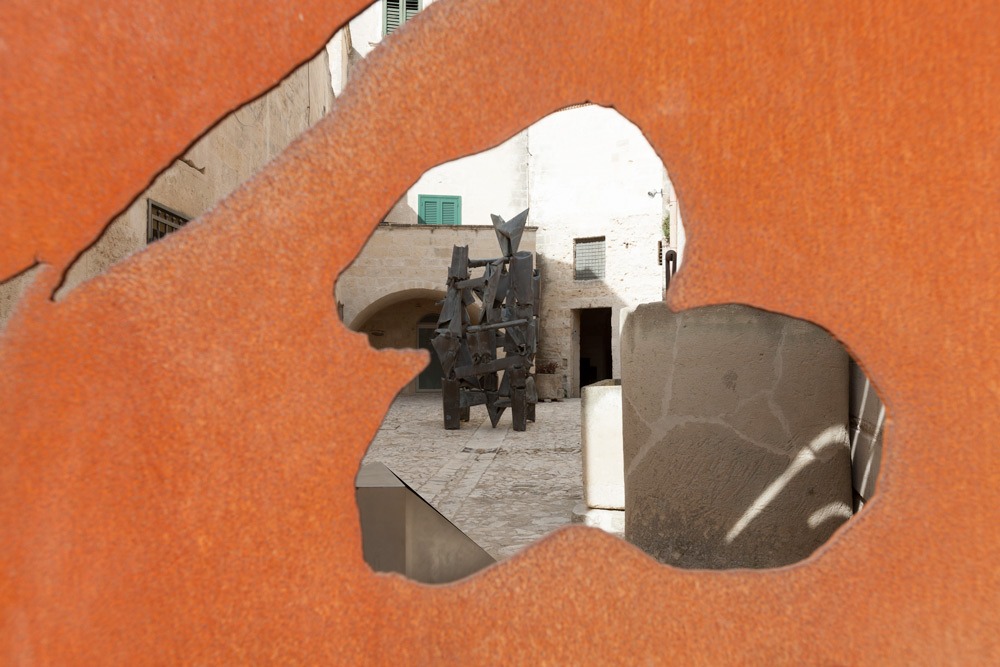
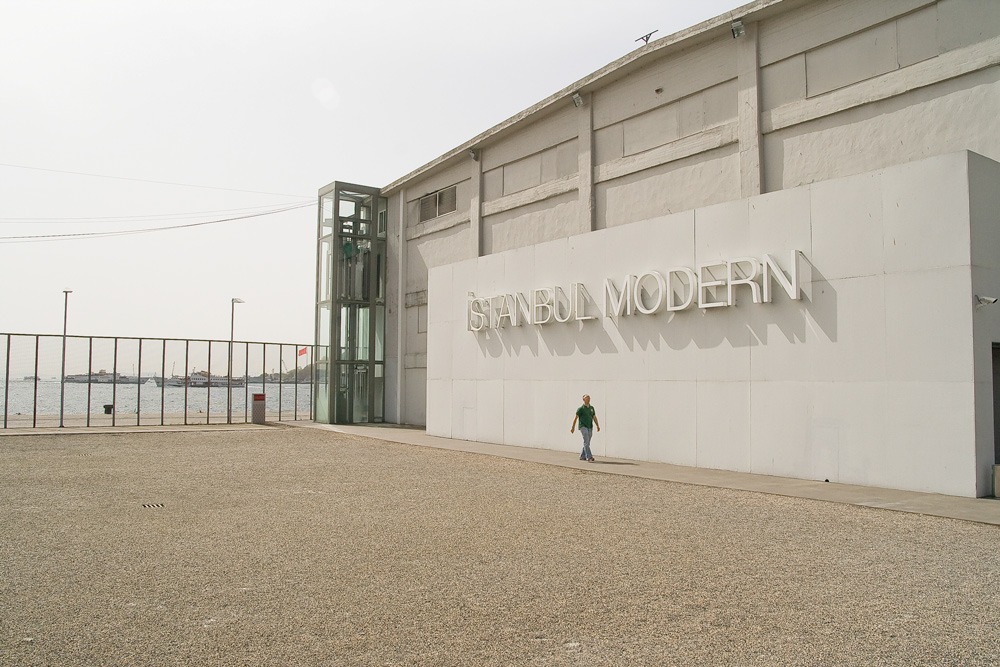
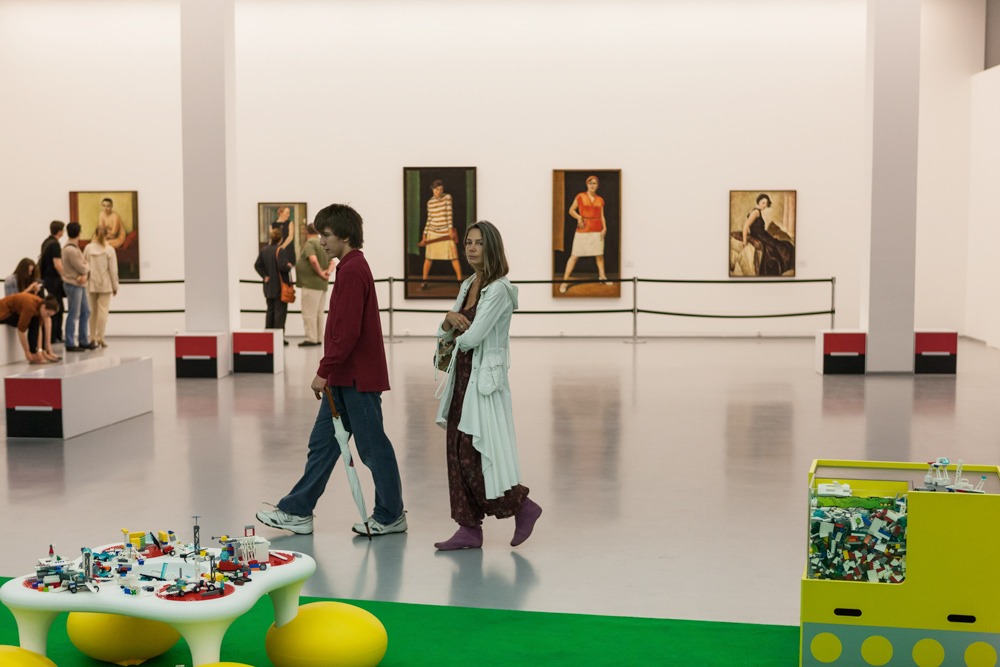
![Non posso fare a meno di associare questa desinenza all'esclamazione popolare «vo!!!» (ma guarda un po'), in cui si combinano stranezza e minaccia, servilismo e buffonaggine, in breve tutto ciò che costituisce l'essenza della mentalità contadina che nel nostro Paese resta predominante. Sarebbe, in fondo, piuttosto giusto vedere nella Russia d'oggi un Paese di contadini urbanizzati: la maggior parte delle città sovietiche è in effetti popolata da contadini che, negli ultimi cinquant'anni, hanno levato l'ancora dai loro villaggi in decomposizione per affluire nelle città. Mosca e i suoi quartieri che a partire dal dopoguerra, sono cresciuti come funghi essenzialmente per ospitare questi sradicati, non fa eccezione alla regola. Le loro dimensioni sono letteralmente agghiaccianti. Riuniti, tutti questi Medvedkovo e Biriuliovo potrebbero contenere tredici volte la Mosca di un tempo, racchiusa nei confini della Cintura dei Giardini. Comicamente i nuovi quartieri sono ufficialmente definiti «microsettori». E un'immensa parte di essi è abitata dai contadini di ieri, che, fuggiti a testa bassa dalla vita di miseria dei kolkhoz, si sono fatti assumere nelle officine di Mosca e dopo lunghi anni di pesante lavoro, hanno ottenuto la propiska [registrazione; diritto di residenza] dei loro sogni, che permetteva di accedere permanentemente (ma davvero permanentemente?) al salame, al burro, alla carne. I nuovi quartieri della maggior parte delle città sovietiche si somigliano fino alla nausea. Di regola, si tratta di «edifici-tipo» costruiti su terreni incolti o destinati a sostituire villaggi rasi al suolo. Questi stabili-conigliere edificati rapidamente (in un arco di tre-cinque anni), hanno in comune un'assenza totale di ricerca architettonica e si differenziano solo per il numero di piani, che cambia contemporaneamente ai dirigenti del potere, ma continua a progredire costantemente: quattro all'epoca di Krusciov, sei e otto sotto Breznev, poi quindici e anche ventitré. Le battute sull'anonimato e l'uniformità dei nuovi microsettori sono innumerevoli. Come questa strofa, popolare un tempo tra i conducenti di taxi: Ti condurrò nella tundra / e anche a Ivanovo. / Ti condurrò dove vorrai, / ma non a Certanovo. E, in effetti, non è difficile perdersi nei nuovi quartieri. Un film di Riazanov è basato su un fatto curioso ma vero: il protagonista, che vive a Mosca, in via della Costruzione (romantico, non è vero?), si ritrova, completamente ubriaco, in un aereo per Leningrado; là, ridiventato lucido, sale in un taxi, da il suo indirizzo al conducente che lo sbarca in una via della Costruzione in tutto e per tutto identica a quella di Mosca. Anche lo stabile è lo stesso. Perfino le chiavi, che aprono la porta dell'appartamento. L'INVASIONE DI MOSCA I nuovi quartieri di Mosca sono essenzialmente abitati da limitciki - persone che sono fuggite dalla provincia e si sono fatte assumere nelle industrie moscovite con un «limite», cioè per due o tre anni, senza il diritto di optare per un'altra ditta; di solito, dopo circa sette anni di inferno negli alloggi dei lavoratori, essi formano una famiglia e ottengono, grazia suprema dello Stato, un appartamento individuale, lontano, in una periferia atroce, per esempio a Lianozovo. I limitciki sono considerati, a Mosca, come esseri inferiori. I moscoviti li squadrano con disprezzo, a causa della loro aria da bifolchi, del loro accento provinciale e anche delle mostruose file d'attesa nei negozi, che, senza di loro, sarebbero sicuramente dieci volte più corte. «Hitler non è riuscito a prendere Mosca, i limitciki sì!», scherzano malignamente i moscoviti. «E da lì che vengono le nostre disgrazie» dicono spesso, durante le code, i moscoviti di mezza età. Tuttavia, va detto che i limitciki stessi, dopo aver trascorso cinque anni a Mosca, si sentono totalmente moscoviti e cominciano a insultare i nuovi arrivati, a definire «canaglie» dei giovani che forse sono nati nel loro stesso villaggio. Di fatto, i limitciki non sono un fenomeno recente. I primi sono comparsi a Mosca a metà degli anni '30. Erano, per la maggior parte, impiegati nella costruzione della metropolitana, nelle industrie e in altri edifìci amministrativi - altrettante realizzazioni definite, all'epoca, «cantieri della Gioventù comunista». Ormai divenuti anziani, essi raccontano gli orrori e i sacrifici che hanno dovuto sopportare per avere il diritto di abitare in un appartamento con l'acqua calda e di comprare al negozio delle galline di Ungheria. Ad esempio, i genitori di uno dei miei amici, che erano fuggiti dal kolkhoz alla fine degli anni ’30 e avevano trovato lavoro alla ZIL, la grande fabbrica di automobili, non avevano potuto ottenere neanche una camera in un alloggio per lavoratori. Allora hanno corrotto il gestore di un immobile, scavato una cantina con il suo permesso e lì sono vissuti in sei, senza alcun comfort, fino al 1955. Stranamente, il mucchio di terra che hanno prodotto durante questi lavori è ancora lì, vero e proprio monumento alla loro ostinazione contadina. Un’altra famiglia, formata da quattro persone, è vissuta per diciotto anni in una stanza dell’alloggio per lavoratori dell’industria in cui lavoravano, con la figlia che, fino all’età di diciassette anni, ha condiviso il letto con sua madre. Ma, per quanto riguarda le difficoltà, i limitciki di oggi non hanno nulla da invidiare ai loro predecessori. Un film documentario uscito di recente e intitolato Limita [sinonimo di limiticiki], in cui gli autori presentavano alcune scene di vita dei limitciki, ha letteralmente sconvolto i moscoviti: sullo schermo, dei giovani raccontavano la loro esistenza di schiavi, le angherie inflitte dal caposquadra dell'industria in cui lavoravano («si è formato un harem di limitcikidonne»), i furti quotidiani negli alloggi per i lavoratori, la prostituzione, l’alcoolismo, la tossicomania (aspirano colla, benzina, diversi prodotti di drogheria...) e tutto questo per vivere nella capitale. L'EDIFICIO IN SE STESSO Tuttavia i limitciki non sono i soli ad abitare nei nuovi quartieri. L'intellighenzia si ritrova lì a poco a poco, insieme a persone semplicemente agiate (che si occupano principalmente di commercio), che comprano dallo Stato un appartamento cooperativo. Ci vivo anch'io - a lassenevo -, in uno stabile cooperativo di quindici piani, a soli cinquanta metri dalla Cintura di Circonvallazione che divide implacabilmente il mondo tra Mosca e non-Mosca. Una volta superato questo stretto nastro d’asfalto, si trovano già le foreste di betulle dei dintorni di Mosca; comincia la non-Mosca, ovvero la Russia e il suo spazio non moscovita (neve, neve ancora neve), il suo tempo non-moscovita (l’eternità, il nulla del tempo), i suoi problemi nonmoscoviti (dove scovare del salame?). Passeggio raramente nel mio quartiere, preferisco attraversare la strada e andare nella foresta, da dove le scatole bianche degli edifici, ammucchiate le une contro le altre, appaiono particolarmente estranee. Ma oggi, ho un pretesto per una passeggiata a lassenevo. Mi vesto pesantemente e prendo l’ascensore. Fuori si gela (siamo alla fine di novembre), nevica e c’è vento (c'è sempre vento a lassenevo, la zona più elevata di Mosca). Su una panchina ghiacciata, all'ingresso dello stabile, sta, rigida come una statua, un'anziana donna con un bastone. Di queste vecchie immobili, ce n'è una ad ogni ingresso. Con ogni tempo, esse escono dalla loro tana per «passare un momento di fronte alla casa», perpetuando così l'usanza contadina ereditata dalle loro nonne che, cinquant'anni fa, appoggiate ai loro bastoni, facevano delle lunghe soste sullo scalino d'ingresso della loro isba, individuando e seguendo con lo sguardo, senza dire neanche una parola, ogni passante. Supero la nonna e imbocco il cammino tortuoso che costeggia gli stabili. In pieno pomeriggio, la gente che va a passeggio è rara. Molta neve, invece, ghiaccio e bambini che fanno crollare con gran rumore un monticello gelato. Neve e muri di edifici, muri di edifici e neve. Mi inerpico sulla collina e getto un'occhiata al panorama. La prima idea che si forma quando si guardano queste costruzioni è che esse siano state costruite non da uomini, ma da una macchina statale senza volto. I grattacieli stalinisti producono la stessa impressione, soprattutto l'Università, grandioso monumento dello stalinismo. Ogni volta che vado a passeggio sui Monti Lenin, mi dico, assiderato, che no, decisamente, quest'edificio non è stato creato da uomini né per gli uomini, ma piuttosto dallo Stato e per lo Stato. E questa sensazione mi abbandona solo progressivamente, man mano che mi avvicino all'Università, quando scorgo finalmente delle minuscole finestre, un'entrata nascosta dietro le colonne e, ormai quasi sul posto, degli uomini-formiche. Che peccato che della gente vi studi! Sarebbe molto meglio se l'edificio esistesse per se stesso e in se stesso, senza nessun essere umano, temibile simbolo di pietra dello Stato stalinista, una sorta di Ding an sich [In tedesco, l'espressione, specifica del linguaggio filosofico, significa «cosa in sé». È vero che gli edifici di lassenevo non hanno la solennità dei colossi di Stalin, ma sono anch'essi costruiti dallo Stato e non dagli uomini, dal momento che mai questi ultimi avrebbero edificato qualcosa di simile per se stessi. No, è lo Stato l'autore; tuttavia, non li ha eretti per sé, come l'Università, ma per il popolo. Questa architettura infernale mostra molto bene che l'uomo non è considerato, da noi, come individuo, ma come parte di una massa biologica battezzata «popolo» e che Io Stato tratta come un panettiere la sua pasta da pane, torcendola, stendendola, dandole la forma che più gli piace... NEL REGNO DEI MORTI Scendo dalla mia collina e mi dirigo verso il negozio di alimentari, l'unico e solo della nostra via Odoievski, dove vivono circa ottomila persone. È un negozietto di vecchio tipo, senza casse per il pagamento, ma con tre venditrici sonnolente, al punto che le si direbbe congelate nei loro camici di un bianco sporco, infilati su grossi pullover (è vero che fa piuttosto fresco). Al di sopra del banco, un manifesto sbrindellato, che rappresenta Lenin nell'atto di scrivere. Sullo stesso banco, dei pesci conservati, margarina, un inverosimile salame e un enorme cubo di burro giallo. Nel settore panetteria, degli scaffali di legno scheggiato, vuoti, e una commessa che legge la «Pravda». «Non c'è pane?» chiedo, stupidamente. Senza alzare la testa ne muovere un solo muscolo, la commessa biascica, alla fine di un lungo silenzio: «Lo consegnano alle cinque». I compratori, in quattro, formano una fila muta nel settore macelleria. Come ipnotizzati, guardano la venditrice dai gesti lenti come quelli di una sonnambula, tagliare un pezzo di quel salame indefinibile, posarlo su di una bilancia antidiluviana, aggiungere un contrappeso e seguire con occhio torvo l'ago oscillante. «Un rublo e venticinque», sembra dire a se stessa, poi riprende il pezzo di salame dalla bilancia e lo avvolge, senza fretta, in una spessa carta marrone. Le si da il danaro, lo prende senza guardare l'acquirente e, allo stesso modo, porge il salame. Tutto qui sembra fossilizzato, come se i presenti fossero altrettanti defunti usciti dalla bara per compiere un rito strano quasi inutile. Tutto sembra sprofondato in un sonno prolungato, interminabile. Un inserviente dal viso tondo e gonfio, vestito con una giacca imbottita sporca, entra spingendo un carrello contenente cartoni di latte; è l'ultimo tocco a questo quadro fantomatico. Perché lo fa? Impossibile dirlo. E perché proprio del latte? Al suo posto starebbero ugualmente bene delle teste umane congelate o dei pupazzi di metallo ghignanti. Il suo viso consunto dall'alcool è morto, inerte. L'inserviente abbandona il latte, fa dietro-front e se ne va. Esco dal negozio e, per la strada, il contatto con la natura russa, fredda, gelata, rafforza ulteriormente in me l'impressione che intorno la vita sia finita. E mi ritorna in mente Sologub [Poeta simbolista (1863-1927); celebre autore del romanzo "Il demone meschino".]: "La strada era morta, le case apparivano ricoperte da un sudario brillante, sontuoso e crudele, simile ai drappi di broccato d'argento di una bara di lusso, là dove i raggi del sole colpivano la neve." Cammino nel regno dei morti. Ed ogni arbusto, l'angolo di ogni casa, ogni donna anziana sulla sua panchina mi conferma che ho guardato il fiume Lete. Ma perché non ho paura? Perché non sono più vivo di quella vecchia immobile, di quell'inserviente dal viso gonfio, di quegli acquirenti che facevano la fila. Sono morto, anch'io, perché sono nato e cresciuto qui, tra queste nevi senza vita, sotto Io sguardo implacabile di uno Stato senza misericordia. Sono un abitante legittimo di questo regno, partecipo a questa vita inumana e ai suoi cupi rituali... Oltrepasso un intero gruppo di immobili. Il crepuscolo viene a concludere la breve giornata invernale, si accendono sporadici riverberi, il grande momento del giorno si avvicina - le diciotto, l'ora di punta, quella in cui gli abitanti di lassenevo rientrano dal lavoro. Le fabbriche di Mosca chiudono alle 17, ma per ritornare dalla ZIL, o da altri luoghi, fino alla nostra lontana terra promessa, bisogna calcolare circa un'ora di viaggio. Non c'è ancora la metropolitana per lassenevo, la stazione più vicina è quella di Tioply Stan, da cui partono, in questo momento, verso tutte le direzioni, autobus che avanzano a fatica, strapieni. Mi piazzo alla fermata di Via Golubinskaia, aspetto circa un quarto d'ora ed ecco apparire la prima rondine che annuncia l'ora di punta, eccolo, il primo autobus arancio, con i fianchi inzaccherati di neve. Avanza a fatica e si ha paura di guardare nell'interno dove, come aringhe in un barile, si accalca gente sfinita. L'autobus si ferma, le porte si aprono cigolando e la massa biologica grigio-bruna si riversa sulla neve. Arriva un secondo autobus, poi un terzo e mi trovo, ben presto, al centro di una folla compatta, che, con un'ostinazione muta, si muove verso l'edificio illuminato del supermercato, oasi di speranza nelle tenebre degli stabili coperti di neve. Nella folla, i volti si confondono - limitciki, intellettuali, studenti - e vi si leggono soltanto stanchezza e disagio. All'ingresso del supermercato, si opera una divisione tra i sessi, rapida e silenziosa: le donne si precipitano nel settore alimentare, gli uomini in quello dei vini, che, grazie alla campagna anti-alcoolismo, è ormai stato separato. In quanto uomo, mi dirigo automaticamente anch'io in quel settore, osservando attraverso la vetrina le donne che si gettano sui pacchetti di salame, burro, formaggio, che sgraffignano cavoli o sacchetti di patate sotto il naso di quelle che stanno lì con la testa fra le nuvole. La coda degli acquirenti nel settore dei vini - un centinaio di persone - si snoda attorno ad un monticello di casse per legumi rotte, si arrampica verso le grandi porte di ferro spalancate. Nei gesti della gente, lo stesso automatismo di morte. La fine della coda è quasi immobile, il vento è freddo, l'oscurità e la neve accentuano l'aspetto di cadaveri gelati di coloro che attendono; è solo avvicinandosi alla porta al di là della quale si trovano tutti i loro desideri che gli acquirenti cominciano a sgelarsi, a muoversi mollemente, a spingersi perfino a rubacchiare qualche cosa, ma questa agitazione improvvisa non li rende comunque più vivi, anzi essa sottolinea la loro inerzia, la loro indifferenza, il loro distacco da se stessi. Sulla soglia della porta, un blando litigio; le voci sono basse, voci d'oltretomba. «Che spingi a fare, porco Dio?». «Ma insomma, ero prima di te!». «Assolutamente noi Tu non hai fatto la fila!«Sono un invalido di guerra.». «E allora? Io ero con i partigiani. Ferito due volte!». «Ehi, ragazzi, non lasciate passare nessuno che non sia stato in fila! Ci sarà vino per tutti.». «Tentar non nuoce! Tieni, fuma!». Superando ogni difficoltà, respingendo gli assalitori, dei fortunati tornano indietro dal luogo dei loro sogni stringendo fra le braccia delle bottiglie di infame vinaccio. «Cosa vendono oggi?». «Del vino a tre rubli». «Ce n'è anche per noi?». «Ne restano due casse.» DICHIARAZIONE D'AMORE La strada piena di neve, le sagome scure, le bottiglie che mandano smorti luccichii; nella notte, il freddo. E tutte le sere è la stessa cosa, da anni, da decine di anni. Ciò non toglie che in un certo qual modo, questo mi riscaldi il cuore. Perché? Perché tutta l'esperienza dell'avanguardia letteraria e artistica di Mosca dimostra che gli autori emarginati non potrebbero trovare luogo di residenza migliore di questi nuovi quartieri, di queste zone immerse nel nulla come il mio lassenevo, dove, attorno al loro tavolo di lavoro o al loro cavalletto, si estendono per chilometri intorno, le nevi, l'assenza di tempo e il vuoto sociale dove nulla li distrae dal loro compito. Ma non è pesante, alla lunga, vivere in queste zone senza vita? E pesante per colui che si accontenta di vivere Per chi crea, invece, questo vuoto è appagante, permette di concentrarsi. Non c’è luogo migliore per osservare la società e questi nuovi quartieri sono, per gli artisti emarginati, come le cime tibetane per i Lama: si vede lontano, si capiscono molte cose. Senza contare, poi, che si tratta di settori di isolamento in cui ci si sente al riparo dalla vita reale, *viva*, al riparo dalla cultura ufficiale, dalle speranze e dalle illusioni. Nei nuovi quartieri vivono Kabakov, Prigov, Monastyrski, Syssoiev, Cuikov, Gundlakh, Zvezdocotov, Gorokhovski, Ovcinnikov, Zakharov, Volkov, Anufriev, Pepperstein, Gandlevski, Popov, Baitov, Bakstein, Jigalov, Abalakova, Albert, Stolpovskaia, Roshal, Shablavin, Sukhotin, Lebedev, Orlov, Panitkov, Barach. E questo li ha aiutati? Indubbiamente. In questi ultimi quindici anni hanno creato opere notevoli, sia nel campo artistico che in quello letterario, hanno praticamente resuscitato l'avanguardia moscovita annientata da Stalin all'inizio degli anni '30. E tu? Il tuo lassenevo ti è stato di una qualche utilità? Ma certamente! Ho scritto sei libri. Se avessi vissuto al centro di Mosca, ne avrei scritti tre volte di meno. Allora sei riconoscente a questo freddo e a questi edifici-conigliere? Si sono riconoscente a questo freddo e a questi edifici-conigliere. Ti piacciono queste panchine ghiacciate e le eterne donne anziane che vi seggono? Sì, mi piacciono queste panchine e le eterne donne anziane congelate. Ti piacciono anche gli scaffali vuoti dei negozi? Mi piacciono gli scaffali vuoti dei negozi. I cumuli di neve all’ingresso degli stabili e i cadaveri ambulanti? Sì, mi piacciono i cumuli di neve, il ghiaccio, i cadaveri ambulanti, l'assenza del tempo. Per dirla con poche parole, ti piacciono i nuovi quartieri di Mosca? Ebbene sì, mi piacciono i nuovi quartieri di Mosca. T piace lassenevo? Mi piace lassenevo. Ti piace Beliaievo. Mi piace Beliaievo. E Certanovo? Sì, Certanovo. E anche Biriuliovo. Ti piacciono Novoghireivo, Medvedkovo, Orekhovo-Borissovo? Mi piacciono Novoghireivo, Medvedkovo, OrekhovoBorissovo, Bibirevo, Golianovo. Mi piaccono Bykovo, Orlovo, Vasnetsovo. Mi piacciono Kabakovo, Frigovo, Syssoievo, Nekrassovo, Jigalovo, Monastyrskoio. Mi piacciono Shablalovo, Lebedevo, Baksteinovo. Mi piacciono Baitovo, Bulatovo, Cuikovo, Popovo. Mi piacciono Erofeievo, Sakharovo, Panitkovo [Nomi costruiti su quelli degli artisti, amici dell’autore, citati in precedenza, o di personalità conosciute.]. Mi piacciono Ivanovo, Petrovo, Sidorovo [Ivanov, Petrov, Sidorov sono sicuramente i cognomi russi più comuni]. Ivanovo, Petrovo, Sidorovo. MOSKULTPROG: A SPASSO PER LE PERIFERIE TRA PASSATO E FUTURO DI MOSCA Mosca - Mosca, un’afosa giornata d’estate. L'appuntamento è per un sabato mattina alle 11, nei sotterranei di una stazione del metrò: il luogo più semplice e sicuro per incontrarsi in una città che oggi va smarrendo sempre più i propri punti di riferimento. Per riconoscersi basta un’occhiata: chi salta una corsa e ha l’aria di aspettare qualcosa è certamente dei nostri. Non siamo a un happening situazionista né a una flash-mob no-global, ma a un incontro del gruppo MosKultProg (Progulki po Moskvye), che da un paio d’anni organizza passeggiate culturali gratuite attraverso la storia e l’architettura di Mosca. Ci puoi trovare studenti, insegnanti, architetti, appassionati di urbanistica e storia, fotografi, semplici curiosi: di solito un centinaio di persone, ma vanno aumentando. A unirli è la passione per l'esplorazione dei margini della megacapitale russa, per il passato di un mondo che oggi cresce, si trasforma e muore a ritmi da record. Usciti in superficie il panorama è dei meno attraenti, ricorda i cliché dell’edilizia sovietica sommati a uno scenario da film di fantascienza: rettangoli in cemento accostati a ciclopici grattacieli freschi di pittura dal bizzarro stile eclettico, in uno spazio privo di rilievi naturali. Siamo a Maryino, quartiere periferico esemplare della nuova Mosca e delle sue contraddizioni, che conta più di mezzo milione di abitanti. “Per molti moscoviti – esordisce Sergei Nikitin, ideatore del progetto ed esperto di sociourbanistica, incamminandosi lungo enormi boulevard assolati seguito da una fila disciplinata che fotografa e prende appunti tra l’incredulità dei passanti – questo è un posto orribile e privo di storia. Ma non è così”. Svelatore dei segreti di Maryino è Vadim Zudkin, nostra guida locale: 45 anni, ingegnere, abita qui dal 1990. “Maryino - dice - nasce alla fine degli anni 80, in piena perestroijka, sul sito dove a fine 800 si trovavano enormi bacini per la depurazione dell’acqua destinata a dissetare i moscoviti”. Prima tappa del tour è proprio un relitto di quei tempi, visione onirica tra gru e cantieri: una vecchia casa coloniale in legno sormontata da arabeschi, tra le pochissime rimaste in piedi a Mosca. Ora in completo abbandono, ospitava i lavoratori degli impianti. A breve distanza le ruspe lavorano alacremente intorno al nuovo megamercato “Eldorado”. Per costruire Maryino, spiega Nikitin - che è professore di storia dell’arte all’Università Pedagogica di Mosca - vennero interrati i bacini, dimenticando che il sottosuolo era fortemente inquinato dalle sostanze chimiche usate per la depurazione. Oggi l’intera periferia di Mosca, in verità, posa su terreni contaminati: in uno spazio che all’origine si trovava al di fuori della cerchia urbana, in epoca sovietica sorsero laboratori chimici e persino depositi di scorie nucleari, poi inglobati dall’espansione edilizia intensiva degli ultimi decenni. Gli Ottanta sono gli anni in cui inizia la spaventosa crisi degli alloggi che ancor oggi affligge la capitale russa: nessuno vuole più vivere nelle vecchie case comuni sovietiche, ciascuno sogna un appartamento per sé, anche piccolo (la media attuale resta di due stanze per famiglia). A Maryino, ricorda Vadim, il crollo dell’Urss capita nel bel mezzo dei lavori: la sua costruzione viene ripresa agli inizi dei Novanta, l’età della transizione. Nel 2000 arriva la metropolitana, un evento straordinario: i prezzi salgono e la zona diviene ideale per alloggiare una popolazione urbana in crescita vertiginosa, raddoppiata negli ultimi 15 anni (oggi supera i 10 milioni). Il quartiere diviene mecca della nuova “classe media russa”, grande chimera dei sociologi: appartamenti nuovi e spaziosi dotati di ogni comfort, ampi parcheggi, supermercati, scuole, chiese, cinema, persino un po’ di natura che i maryinensi strappano al deserto suburbano facendo riemergere gli antichi laghetti (incuranti della minaccia ambientale). “Una novità enorme rispetto ai vecchi quartieri-dormitorio sovietici (spalnyi raion)”, fa notare Vadim. Ma come allora, la maggioranza degli abitanti delle periferie lavora in centro. “Maryino può considerarsi la periferia-simbolo degli anni Ottanta e Novanta per Mosca”, chiosa Nikitin. Ogni decennio di storia sovietica ne ha avuta una, sviluppatasi intorno al nucleo del centro storico dominato dalla cittadella medievale del Cremlino: prima la cintura staliniana, poi la krusceviana e infine la brezneviana. Ciascuna diede grande impulso all’edilizia popolare: i megakombinat fino a 22 piani, con i primi minuscoli appartamenti privati, sono presenti ovunque, ma nella seconda fascia dominano le “Khrushchevyi”, tipiche palazzine a 5 piani prefabbricate con materiali di scarsa qualità, dai soffitti bassissimi (facilmente evacuabili in caso di attacco nucleare). Ne vediamo anche a Maryino: “A Mosca sono ancora tantissime – precisa Nikitin - e costituiscono un enorme problema: rinnovarle è impossibile, dovranno essere tutte abbattute con costi altissimi”. L’abbattimento degli altri condomini sovietici non è ancora in questione, perché la domanda di alloggi è altissima. Ma lo sarà forse tra 10 o 20 anni: “Tutte queste costruzioni, follia del socialismo, non erano fatte per durare”. Anche le periferie però hanno una storia da preservare: “Con i nostri tour ricordiamo che quartieri come Cheremushki, nato subito dopo la morte di Stalin, avevano una presa fortissima sull’immaginario popolare, comparivano in tutti i film dell’epoca. Le periferie sono un pezzo fondamentale dell’identità di Mosca, e stanno alla base di molta elaborazione culturale, sociale e identitaria sovietica”. Inoltre conservano straordinari tesori architettonici pre-sovietici miracolosamente sopravvisuti fino ai nostri giorni: “Nelle nostre passeggiate mostriamo, anche a decine di chilometri dal centro, pezzi di architettura modernista accanto a relitti art nouveau, villette zariste e piccoli edifici del primo novecento di cui Mosca è disseminata”. Ogni quartiere è in effetti un grande palinsesto storico-artistico: meno eclatante forse dello splendore zarista di Pietroburgo, Mosca è uno straordinario laboratorio di stili, epoche e tendenze, che attira studiosi da tutto il mondo. Ma oggi è gravemente minacciato. In pieno centro sopravvivono anche le kommunal’ke, celebri appartamenti in coabitazione che Lenin requisì ai borghesi ricchi distribuendo una stanza a famiglia, protagoniste di tanta letteratura e quintessenza di tutto ciò che il cittadino postsovietico detesta. In Russia ne rimangono un milione. La privatizzazione e la creazione di un (selvaggio) mercato immobiliare, se non hanno risolto il problema degli alloggi, stanno ridisegnando radicalmente la mappa sociale di Mosca, costringendo migliaia di vecchi residenti del centro storico a trasferirsi in periferia dove i prezzi sono più abbordabili. Creando in centro dei ghetti per ricchi, le nuove élite russe alle quali i costruttori offrono nuovissimi appartamenti, negozi e uffici di superlusso, eretti sulle rovine del passato. Principale artefice di questa rivoluzione urbanistica è l’amministrazione comunale, guidata dal 1992 dal popolare sindaco Yuri Luzhkov, “il demolitore”. In 12 anni le politiche edilizie da lui sponsorizzate hanno visto abbattere, o lasciar perire per incuria nel solo centro 2000 costruzioni, di cui almeno 400 edifici storici, alcuni risalenti al XVII secolo. Anzi 650, secondo un libro appena pubblicato per iniziativa dell’ex ministro delle finanze Boris Fyodorov, Cronaca della distruzione della vecchia Mosca. 1990-2006, che nella prefazione parla di “pogrom culturale” e “crimine contro il patrimonio”. Strategia più frequente usata dalle grandi compagnie costruttrici, ci spiega Rustam Rakhmatullin - giornalista e coautore del volume con K. Mikhailov, da anni firma su Izvestija la rubrica “Addio Mosca!” - è lasciar andare in rovina edifici inclusi nella lista del patrimonio protetto, per poi poterli abbattere con la scusa del rischio agibilità. Sostituendoli con restauri irrispettosi dello stile originario, o nuovissime costruzioni di dubbio gusto. Del resto, si legge nel volume, il registro degli edifici storici di Mosca (che pare contenga 3000 nomi) non è mai stato pubblicato. Colpiti da questo furore edilizio sono edifici napoleonici, ville zariste, esperimenti modernisti, palazzine art nouveau. Celebre è il caso del Manezh, neoclassica scuola di equitazione imperiale (1817) a fianco del Cremlino, distrutta da un misterioso incendio nel 2004 e resa irriconoscibile da un restauro che ne ha alterato le proporzioni. Poi lo smantellamento degli storici megahotel sovietici a due passi dalla Piazza Rossa: il Moskva del 1930 (ex quartier generale dei bolscevichi) e il Rossija del 1967 (destinato ai delegati dei congressi del Pcus), le cui 3000 stanze saranno sostituite da un megacomplesso di 11 edifici firmato Norman Foster. O il sacrificio dei magazzini decò Voyentorg, nonostante le proteste pubbliche. A novembre scorso risale il primo caso di inchiesta giudiziaria su un abbattimento non autorizzato dal comune: la settecentesca Blacksmith House. Lo skyline cittadino pare destinato a cambiare per sempre: l’ufficio del sindaco ha annunciato di voler innalzare 60 grattacieli nei prossimi 10 anni, alcuni di 50 piani. Molti vedranno la luce nella nuova City di Mosca, megaquartiere per il business in corso di lavori a Krasnoprenskaya sulle rive della Moscova, spianando 2,5 milioni di mq di terreno. A battersi per salvare la Mosca storica dalle ruspe sono i gruppi “preservazionisti”, che negli ultimi anni sono riusciti a creare un movimento di protesta civile contro la distruzione sistematica del patrimonio cittadino. Tra i più agguerriti gli esperti internazionali di Maps (Moscow Architecture Preservation Society), che hanno fatto notizia in Europa lanciando l’allarme sui rischi di sparizione che corre l’eredità grandiosa del Costruttivismo russo: l’avanguardia modernista che fu l’ultima grande utopia architettonica sovietica (1920-1934 ca.) prima dell’avvento di Stalin. A occuparsi del possibile recupero degli ex immobili di Stato è invece il National Fund for the Rebirth of the Russian Estate. Dal 2003 il sito web Moskva Kotoroy Net (Mosca che non c’è più) accoglie una vasta collezione di foto d’epoca di edifici e strade scomparse, e riesce a mobilitare in poco tempo centinaia di persone contro le demolizioni. Mentre il Museo Shchusev conserva un milione di documenti d’archivio sulla storia dell’architettura russa. Più sotterraneo e difficile, ma portato avanti con passione da attivisti, è l’impegno di MosKultProg, che guarda soprattutto ai “piccoli monumenti di quartiere” dal valore storico meno riconosciuto. “Un lavoro da rabdomanti del passato”, conferma Nikitin: “Vogliamo far riemergere una Mosca dimenticata, illuminando tesori inattesi a due passi da casa che nemmeno i moscoviti doc conoscono, senza i quali questo grande spazio cittadino diventa completamente anonimo”. Un esempio è la “passeggiata di Lisa”, che ha visto accorrere 160 persone e due troupe tv. Eroina tragico-romantica di una novella di Karamzin (Bednaya Liza, 1792), la fioraia Lisa si suicida per amore di un nobiluomo in un laghetto, localizzato presso il monastero Simonov. Nell’Ottocento il luogo divenne immensamente celebre tra gli innamorati di Mosca, u chiamato per questo “Stagno di Liza” (Lizin Prud), e diede il nome anche alla fermata della ferrovia “Lizino”. Dagli anni 30, racconta Nikitin, il lago è interrato per far posto a un palazzo dei lavoratori; poi la zona diviene sede delle più importanti industrie cittadine (SIU, Dinamo, DPZ), e vi spuntano alcuni zhladima, enormi condomini staliniani per operai. Infine con l’arrivo della metropolitana, la cui fermata diviene Avto Zavodka, “il nome di Liza scompare definitivamente dalla mappa di Mosca”. Oggi, continua lo studioso, assistiamo a un’ennesima trasformazione: tutte queste industrie sono in crisi e chiudono, il sindaco vorrebbe abbatterle, e il quartiere cerca una nuova identità: “La nostra passeggiata ha riportato alla luce e legato tra loro tutte questi stratificazioni storiche che sembravano isole a sé stanti”. Spesso i percorsi di MKP si trasformano in sedute di reminescenza collettiva per i partecipanti, che richiamano alla mente edifici scomparsi, nomi di strade cambiate e il prezzo del pane nei piccoli negozi di un tempo. Un altro tour del gruppo tocca l’Anello dei Giardini, storica cintura verde che circonda la città da inizi 800, la passeggiata preferita dai moscoviti fino a pochi anni fa: oggi è diventata una delle principali arterie di traffico della città, invasa da smog e rumore. Lungo il percorso c’è la casa di Chekhov, una residenza di pittori art nouveau, palazzi ottocenteschi e un ospedale settecentesco, ma nessuno li nota più. L’esplosione del mercato automobilistico dopo il crollo dell’Urss ha cambiato radicalmente il paesaggio cittadino. La ristrutturazione delle arterie viarie intrapresa da Luzhkov per contrastare l’emergenza traffico (con la nuova autostrada a 10 corsie che si snoda intorno alla città, il terzo anello di scorrimento interno e il raccordo anulare MKAD) ha cancellato un’altra porzione di memoria metropolitana. In compagnia di Rakhmatullin Mkp ha visitato il quartiere adiacente alla nuova tangenziale, dove dagli inizi dell’Ottocento e fino a 5 anni fa passava l’acquedotto zarista: nessuno degli abitanti della zona se ne ricorda, nemmeno gli anziani. Una rimozione repentina, osserva Nikitin: “Nell’opinione pubblica manca la consapevolezza del problema, e la percezione della qualità del patrimonio da preservare”. Passeggiata d’impronta letteraria è anche quella guidata dal famoso poeta Prigov, che a Mkp ha raccontato il quartiere dove vive da 40 anni e cui ha dedicato tante liriche: Belyaevo, sudovest di Mosca, cementificato grigiore brezhneviano. Qui dagli anni 60 agli 80 vissero tutti i più importanti intellettuali russi: vi nacquero due centri importantissimi per l’arte underground sovietica, e un cinema che mostrava film non allineati che non uscivano nei cinema centrali, Tarkovskij incluso. Nel secolo scorso Mosca ha vissuto almeno due radicali trasformazioni. Nel 1917 i bolscevichi si trovano davanti una città fatta in gran parte di legno. Nel 1935 col “piano Stalin” l’architettura (verticale) diventa ideologia del potere con le mastodontiche Sette Sorelle. Brezhnev nel 1971 disloca la crescita urbana in estrema periferia, creando dormitori-satelliti. “Ma contrariamente a quanto si pensa, i sovietici non eliminarono completamente l’eredità architettonica prerivoluzionaria, pur colpendo pesantemente chiese, palazzi e ville. Alcuni edifici antichi si sono incredibilmente conservati sul territorio cittadino fino a oggi”, fa notare Nikitin. Là dove ora si allungano le periferie, la Mosca ottocentesca si apriva su tenute nobiliari e giardini privati. Ma già alla fine del secolo la rivoluzione industriale aveva riempito questo spazio di alloggi comuni per i lavoratori (come a Maryino), impiegati nelle fabbriche tessili o militari. Già nel 1900 Mosca era una metropoli molto industriale e con una grande crisi ecologica. “Ma l’architettura industriale - lamenta Nikitin -, oggi oggetto di sapienti riqualificazioni da Londra a Parigi, qui non è ancora considerata monumento”. Forse però qualcosa sta cambiando: di recente la manifattura tessile Danilovski è stata convertita in centro culturale, la fabbrica di seta ottocentesca Rosa Rossa a Gorki Park diventa spazio multifunzionale, poco distante il nuovo Centro per l’Arte Contemporanea ospita importanti studi di architettura in ambienti industriali d’epoca, il complesso di gallerie d’arte ArtStrelka fa rivivere garage dismessi nella fabbrica di cioccolato Ottobre Rosso. Mentre fra i nuovi ricchi tornano di moda le case antiche, e si ricomincia ad apprezzare il gusto retrò. Con la superstrada intasata dal traffico,il centro di Mosca si raggiunge in due ore, o in più di un’ora d’estenuante viaggio nella sempre superaffollatametropolitana, dove gli spazi si riducono ancora di più d’inverno quando cappotti e pellicce aumentano di vari centimetri la circonferenza d’ognuno. Non un bar dove trovare riparo dalle gelide temperature invernali o un ristorante dove rifocillarsi con un borsch o una solyanka, quella zuppa acidula con i cetriolini in salamoia e la fettina di limone galleggiante, di cui i russi sono inspiegabilmente ghiotti. Alle otto di mattina e alle sette di sera il sentiero ricavato tra i cumuli di neve dal calpestare giornaliero di migliaia di passanti, si riempie di una processione di pendolari, che con passo attento — per evitare le insidie che le lastre di ghiaccio nascondono sotto la neve fresca — si dirigono verso la metropolitana per andare a lavorare in centro. E poi niente. Solo il vento, la neve, il rumore del traffico e lo scavare incessante delle ruspe. Sempre in funzione. Giorno, notte, weekend. I bracci metallici delle gru che montano i palazzi: sedici piani di pannelli di cemento (con finestre e balconi già attaccati) che s’incastrano uno sull’altro, come i mattoncini dei Lego. Palazzi costruiti uno accanto all’altro per non sprecare neanche un centimetro di prezioso terreno e che spuntano ogni giorno, come funghi velenosi rivestiti da scadenti piastrelle gialle, marroni, azzurrognole. Palazzi tutti uguali. L’unico punto di riferimento per trovare una strada sono le ciminiere che feriscono l’orizzonte e sputano di continuo fumo bianco. Benvenuti a Bibirevo, dice il cartello di un’agenzia immobiliare. Benvenuti in unmicroraion, o in uno dei tanti quartieri tipici dei sobborghi di Mosca. L’atmosfera dei microraiony è deprimente, ma nessuno si può permettere di vivere in centro, mi racconta Yelena, una manager di 35 anni che pochi anni fa ha venduto il suo monolocale del centro per avere qualche metro quadro in più per i suoi due bambini. «In centro dividevamo 35 metri in quattro, qui abbiamo tre camere», spiega. Negli ultimi dieci anni i prezzi degli immobili sono decuplicati. Un metro quadro in un appartamento residenziale nella centrale via Ostozhenka costa più di 40mila dollari al metro, prezzo che persone come Yelena — 2,000 euro lei e 2,500 il marito — seppur benestanti non possono permettersi. L’unica scelta sono i più proletari microraiony dove un metro quadro costa ora sui 5mila dollari. E questo è il prezzo di un appartamento non rifinito, senza, cioè, intonaco e pavimenti, ma solo con i pannelli di nudo cemento armato (è così che di solito sono venduti questi appartamenti). Nonostante i prezzi esorbitanti, gli appartamenti a Mosca continuano ad andare a ruba. C’è stato solo un breve periodo nell’inverno del 2009 quando il mercato immobiliare a causa della crisi si è fermato per qualche mese e i prezzi sono calati di poco. Ma ora, dicono gli agenti immobiliari, il mercato si è ripreso. È di nuovo in movimento e come prima la richiesta supera di gran lunga l’offerta. I giovani moscoviti vogliono infatti trasferirsi dagli appartamenti dell’epoca comunista, dove anche tre generazioni vivono stipate in spazi di 50 metri. Poi ci sono quelli delle regioni che arricchitisi grazie agli alti prezzi del petrolio degli ultimi anni aspirano a possedere un punto d’appoggio a Mosca. Nessun russo comprerebbe un appartamento in provincia. Quando uno investe nel mercato immobiliare in questo paese compra a Mosca, dicono gli esperti nel settore. E così anche quei palazzi-alveare tipici della periferia (e non solo), quel miscuglio tra casa popolare e condominio, sono venduti come case di lusso. Negli anni Cinquanta e Sessanta il regime comunista costruì migliaia di appartamenti e trasformò intere aree periferiche della città nei cosiddetti microraiony, ospalnye raiony (quartieri dormitorio). Lo scopo era quello di dare un alloggio individuale ai milioni di cittadini che vivevano ancora nelle komunalki, o appartamenti in comune, dove ogni famiglia aveva una stanza e divideva cucina e servizi con altre. Nella visione comunista del mondo l’omologazione del design e i materiali usati avevano lo scopo di eliminare ogni forma di competitività. Questi microraiony concentrarono migliaia di persone in ristrette aree ai confini della città, mentre gli ampi spazi attorno al centro venivano occupati dalle fabbriche. E la tradizione sovietica di ammassare le persone è rimasta. Come anche il design. La differenza è che ora si costruisce per ricavare il massimo del profitto e a differenza del periodo sovietico nessuno pensa alla sicurezza o alla qualità dei materiali usati. Lublino, Butovo, Novokosino, Bibirevo, Strogino, Vikhino, Medvedkovo sono quartieri uguali l’un l’altro. Superaffollati. Palazzi su palazzi senza un filo di verde. «La gente è costretta a vivere in spazi stretti, in queste zone periferiche e a passare ore e ore a viaggiare per andare al lavoro. Io passo tre ore al giorno nei mezzi pubblici gremiti. La macchina per andare al lavoro non posso usarla perché ci impiegherei più tempo», racconta Yelena. «Questa è la vita a Mosca». Secondo l’ultimo censimento condotto nel 2002, Mosca ha 10,4 milioni d’abitanti — o 2 milioni in più rispetto a 15 anni prima –, mentre circa un milione di persone ogni giorno arriva dalle cittadine limitrofe per lavorare. Ma Mosca attira anche lavoratori da altre parti della Russia, dove l’economia è stagnante o in declino, e dai paesi ex sovietici. Secondo stime non ufficiali la città raggiunge i 16 milioni di presenze giornaliere. Più gente significa più macchine. Secondo i dati della polizia stradale sono circa 200mila le vetture che ingorgano ogni giorno i 6mila chilometri di strade della città, e il numero potrebbe arrivare a 300mila nel 2012. Mosca allora, dicono gli esperti, non si muoverebbe più. Secondo una relazione di Greenpeace, pubblicata nel 2006, circa 200,000 macchine all’anno si aggiungono al caotico traffico cittadino. La propka (ingorgo) è diventata il problema numero uno a Mosca. Le autorità cittadine dicono che la capitale perde miliardi di dollari l’anno a causa del traffico. Le macchine viaggiano ad una velocità media di 16 km l’ora nel centro di Mosca e 25 in altre parti della città. La metropolitana che funziona dalle sei di mattina all’una di notte, trasporta 9,5 milioni di passeggeri al giorno, o molti di più di quelle di New York e Londra messe assieme. «Io vivo nella ‘grande muraglia’. È così che chiamo casa mia perché è quella più lunga del quartiere», a parlare è Sergei, pittore di 23 anni, che vive con la mamma, la nonna e due sorelle in un appartamento di tre camere nello spalnyi raion di Strogino. «Come viviamo noi giovani qui? Passiamo ore in metropolitana per andare a lavorare o per arrivare nei locali del centro». «Tutto il giorno lo passiamo a saltare da un mezzo all’altro per coprire le distanze di questa megalopoli», racconta. «Ma nonostante ciò Mosca ha un’energia particolare, c’è vita in questa città. È l’unico posto dove potrei vivere», aggiunge.](https://www.pariolifotografia.it/wp-content/uploads/2021/12/Mosca-Open-House-19.jpg)
![Non posso fare a meno di associare questa desinenza all'esclamazione popolare «vo!!!» (ma guarda un po'), in cui si combinano stranezza e minaccia, servilismo e buffonaggine, in breve tutto ciò che costituisce l'essenza della mentalità contadina che nel nostro Paese resta predominante. Sarebbe, in fondo, piuttosto giusto vedere nella Russia d'oggi un Paese di contadini urbanizzati: la maggior parte delle città sovietiche è in effetti popolata da contadini che, negli ultimi cinquant'anni, hanno levato l'ancora dai loro villaggi in decomposizione per affluire nelle città. Mosca e i suoi quartieri che a partire dal dopoguerra, sono cresciuti come funghi essenzialmente per ospitare questi sradicati, non fa eccezione alla regola. Le loro dimensioni sono letteralmente agghiaccianti. Riuniti, tutti questi Medvedkovo e Biriuliovo potrebbero contenere tredici volte la Mosca di un tempo, racchiusa nei confini della Cintura dei Giardini. Comicamente i nuovi quartieri sono ufficialmente definiti «microsettori». E un'immensa parte di essi è abitata dai contadini di ieri, che, fuggiti a testa bassa dalla vita di miseria dei kolkhoz, si sono fatti assumere nelle officine di Mosca e dopo lunghi anni di pesante lavoro, hanno ottenuto la propiska [registrazione; diritto di residenza] dei loro sogni, che permetteva di accedere permanentemente (ma davvero permanentemente?) al salame, al burro, alla carne. I nuovi quartieri della maggior parte delle città sovietiche si somigliano fino alla nausea. Di regola, si tratta di «edifici-tipo» costruiti su terreni incolti o destinati a sostituire villaggi rasi al suolo. Questi stabili-conigliere edificati rapidamente (in un arco di tre-cinque anni), hanno in comune un'assenza totale di ricerca architettonica e si differenziano solo per il numero di piani, che cambia contemporaneamente ai dirigenti del potere, ma continua a progredire costantemente: quattro all'epoca di Krusciov, sei e otto sotto Breznev, poi quindici e anche ventitré. Le battute sull'anonimato e l'uniformità dei nuovi microsettori sono innumerevoli. Come questa strofa, popolare un tempo tra i conducenti di taxi: Ti condurrò nella tundra / e anche a Ivanovo. / Ti condurrò dove vorrai, / ma non a Certanovo. E, in effetti, non è difficile perdersi nei nuovi quartieri. Un film di Riazanov è basato su un fatto curioso ma vero: il protagonista, che vive a Mosca, in via della Costruzione (romantico, non è vero?), si ritrova, completamente ubriaco, in un aereo per Leningrado; là, ridiventato lucido, sale in un taxi, da il suo indirizzo al conducente che lo sbarca in una via della Costruzione in tutto e per tutto identica a quella di Mosca. Anche lo stabile è lo stesso. Perfino le chiavi, che aprono la porta dell'appartamento. L'INVASIONE DI MOSCA I nuovi quartieri di Mosca sono essenzialmente abitati da limitciki - persone che sono fuggite dalla provincia e si sono fatte assumere nelle industrie moscovite con un «limite», cioè per due o tre anni, senza il diritto di optare per un'altra ditta; di solito, dopo circa sette anni di inferno negli alloggi dei lavoratori, essi formano una famiglia e ottengono, grazia suprema dello Stato, un appartamento individuale, lontano, in una periferia atroce, per esempio a Lianozovo. I limitciki sono considerati, a Mosca, come esseri inferiori. I moscoviti li squadrano con disprezzo, a causa della loro aria da bifolchi, del loro accento provinciale e anche delle mostruose file d'attesa nei negozi, che, senza di loro, sarebbero sicuramente dieci volte più corte. «Hitler non è riuscito a prendere Mosca, i limitciki sì!», scherzano malignamente i moscoviti. «E da lì che vengono le nostre disgrazie» dicono spesso, durante le code, i moscoviti di mezza età. Tuttavia, va detto che i limitciki stessi, dopo aver trascorso cinque anni a Mosca, si sentono totalmente moscoviti e cominciano a insultare i nuovi arrivati, a definire «canaglie» dei giovani che forse sono nati nel loro stesso villaggio. Di fatto, i limitciki non sono un fenomeno recente. I primi sono comparsi a Mosca a metà degli anni '30. Erano, per la maggior parte, impiegati nella costruzione della metropolitana, nelle industrie e in altri edifìci amministrativi - altrettante realizzazioni definite, all'epoca, «cantieri della Gioventù comunista». Ormai divenuti anziani, essi raccontano gli orrori e i sacrifici che hanno dovuto sopportare per avere il diritto di abitare in un appartamento con l'acqua calda e di comprare al negozio delle galline di Ungheria. Ad esempio, i genitori di uno dei miei amici, che erano fuggiti dal kolkhoz alla fine degli anni ’30 e avevano trovato lavoro alla ZIL, la grande fabbrica di automobili, non avevano potuto ottenere neanche una camera in un alloggio per lavoratori. Allora hanno corrotto il gestore di un immobile, scavato una cantina con il suo permesso e lì sono vissuti in sei, senza alcun comfort, fino al 1955. Stranamente, il mucchio di terra che hanno prodotto durante questi lavori è ancora lì, vero e proprio monumento alla loro ostinazione contadina. Un’altra famiglia, formata da quattro persone, è vissuta per diciotto anni in una stanza dell’alloggio per lavoratori dell’industria in cui lavoravano, con la figlia che, fino all’età di diciassette anni, ha condiviso il letto con sua madre. Ma, per quanto riguarda le difficoltà, i limitciki di oggi non hanno nulla da invidiare ai loro predecessori. Un film documentario uscito di recente e intitolato Limita [sinonimo di limiticiki], in cui gli autori presentavano alcune scene di vita dei limitciki, ha letteralmente sconvolto i moscoviti: sullo schermo, dei giovani raccontavano la loro esistenza di schiavi, le angherie inflitte dal caposquadra dell'industria in cui lavoravano («si è formato un harem di limitcikidonne»), i furti quotidiani negli alloggi per i lavoratori, la prostituzione, l’alcoolismo, la tossicomania (aspirano colla, benzina, diversi prodotti di drogheria...) e tutto questo per vivere nella capitale. L'EDIFICIO IN SE STESSO Tuttavia i limitciki non sono i soli ad abitare nei nuovi quartieri. L'intellighenzia si ritrova lì a poco a poco, insieme a persone semplicemente agiate (che si occupano principalmente di commercio), che comprano dallo Stato un appartamento cooperativo. Ci vivo anch'io - a lassenevo -, in uno stabile cooperativo di quindici piani, a soli cinquanta metri dalla Cintura di Circonvallazione che divide implacabilmente il mondo tra Mosca e non-Mosca. Una volta superato questo stretto nastro d’asfalto, si trovano già le foreste di betulle dei dintorni di Mosca; comincia la non-Mosca, ovvero la Russia e il suo spazio non moscovita (neve, neve ancora neve), il suo tempo non-moscovita (l’eternità, il nulla del tempo), i suoi problemi nonmoscoviti (dove scovare del salame?). Passeggio raramente nel mio quartiere, preferisco attraversare la strada e andare nella foresta, da dove le scatole bianche degli edifici, ammucchiate le une contro le altre, appaiono particolarmente estranee. Ma oggi, ho un pretesto per una passeggiata a lassenevo. Mi vesto pesantemente e prendo l’ascensore. Fuori si gela (siamo alla fine di novembre), nevica e c’è vento (c'è sempre vento a lassenevo, la zona più elevata di Mosca). Su una panchina ghiacciata, all'ingresso dello stabile, sta, rigida come una statua, un'anziana donna con un bastone. Di queste vecchie immobili, ce n'è una ad ogni ingresso. Con ogni tempo, esse escono dalla loro tana per «passare un momento di fronte alla casa», perpetuando così l'usanza contadina ereditata dalle loro nonne che, cinquant'anni fa, appoggiate ai loro bastoni, facevano delle lunghe soste sullo scalino d'ingresso della loro isba, individuando e seguendo con lo sguardo, senza dire neanche una parola, ogni passante. Supero la nonna e imbocco il cammino tortuoso che costeggia gli stabili. In pieno pomeriggio, la gente che va a passeggio è rara. Molta neve, invece, ghiaccio e bambini che fanno crollare con gran rumore un monticello gelato. Neve e muri di edifici, muri di edifici e neve. Mi inerpico sulla collina e getto un'occhiata al panorama. La prima idea che si forma quando si guardano queste costruzioni è che esse siano state costruite non da uomini, ma da una macchina statale senza volto. I grattacieli stalinisti producono la stessa impressione, soprattutto l'Università, grandioso monumento dello stalinismo. Ogni volta che vado a passeggio sui Monti Lenin, mi dico, assiderato, che no, decisamente, quest'edificio non è stato creato da uomini né per gli uomini, ma piuttosto dallo Stato e per lo Stato. E questa sensazione mi abbandona solo progressivamente, man mano che mi avvicino all'Università, quando scorgo finalmente delle minuscole finestre, un'entrata nascosta dietro le colonne e, ormai quasi sul posto, degli uomini-formiche. Che peccato che della gente vi studi! Sarebbe molto meglio se l'edificio esistesse per se stesso e in se stesso, senza nessun essere umano, temibile simbolo di pietra dello Stato stalinista, una sorta di Ding an sich [In tedesco, l'espressione, specifica del linguaggio filosofico, significa «cosa in sé». È vero che gli edifici di lassenevo non hanno la solennità dei colossi di Stalin, ma sono anch'essi costruiti dallo Stato e non dagli uomini, dal momento che mai questi ultimi avrebbero edificato qualcosa di simile per se stessi. No, è lo Stato l'autore; tuttavia, non li ha eretti per sé, come l'Università, ma per il popolo. Questa architettura infernale mostra molto bene che l'uomo non è considerato, da noi, come individuo, ma come parte di una massa biologica battezzata «popolo» e che Io Stato tratta come un panettiere la sua pasta da pane, torcendola, stendendola, dandole la forma che più gli piace... NEL REGNO DEI MORTI Scendo dalla mia collina e mi dirigo verso il negozio di alimentari, l'unico e solo della nostra via Odoievski, dove vivono circa ottomila persone. È un negozietto di vecchio tipo, senza casse per il pagamento, ma con tre venditrici sonnolente, al punto che le si direbbe congelate nei loro camici di un bianco sporco, infilati su grossi pullover (è vero che fa piuttosto fresco). Al di sopra del banco, un manifesto sbrindellato, che rappresenta Lenin nell'atto di scrivere. Sullo stesso banco, dei pesci conservati, margarina, un inverosimile salame e un enorme cubo di burro giallo. Nel settore panetteria, degli scaffali di legno scheggiato, vuoti, e una commessa che legge la «Pravda». «Non c'è pane?» chiedo, stupidamente. Senza alzare la testa ne muovere un solo muscolo, la commessa biascica, alla fine di un lungo silenzio: «Lo consegnano alle cinque». I compratori, in quattro, formano una fila muta nel settore macelleria. Come ipnotizzati, guardano la venditrice dai gesti lenti come quelli di una sonnambula, tagliare un pezzo di quel salame indefinibile, posarlo su di una bilancia antidiluviana, aggiungere un contrappeso e seguire con occhio torvo l'ago oscillante. «Un rublo e venticinque», sembra dire a se stessa, poi riprende il pezzo di salame dalla bilancia e lo avvolge, senza fretta, in una spessa carta marrone. Le si da il danaro, lo prende senza guardare l'acquirente e, allo stesso modo, porge il salame. Tutto qui sembra fossilizzato, come se i presenti fossero altrettanti defunti usciti dalla bara per compiere un rito strano quasi inutile. Tutto sembra sprofondato in un sonno prolungato, interminabile. Un inserviente dal viso tondo e gonfio, vestito con una giacca imbottita sporca, entra spingendo un carrello contenente cartoni di latte; è l'ultimo tocco a questo quadro fantomatico. Perché lo fa? Impossibile dirlo. E perché proprio del latte? Al suo posto starebbero ugualmente bene delle teste umane congelate o dei pupazzi di metallo ghignanti. Il suo viso consunto dall'alcool è morto, inerte. L'inserviente abbandona il latte, fa dietro-front e se ne va. Esco dal negozio e, per la strada, il contatto con la natura russa, fredda, gelata, rafforza ulteriormente in me l'impressione che intorno la vita sia finita. E mi ritorna in mente Sologub [Poeta simbolista (1863-1927); celebre autore del romanzo "Il demone meschino".]: "La strada era morta, le case apparivano ricoperte da un sudario brillante, sontuoso e crudele, simile ai drappi di broccato d'argento di una bara di lusso, là dove i raggi del sole colpivano la neve." Cammino nel regno dei morti. Ed ogni arbusto, l'angolo di ogni casa, ogni donna anziana sulla sua panchina mi conferma che ho guardato il fiume Lete. Ma perché non ho paura? Perché non sono più vivo di quella vecchia immobile, di quell'inserviente dal viso gonfio, di quegli acquirenti che facevano la fila. Sono morto, anch'io, perché sono nato e cresciuto qui, tra queste nevi senza vita, sotto Io sguardo implacabile di uno Stato senza misericordia. Sono un abitante legittimo di questo regno, partecipo a questa vita inumana e ai suoi cupi rituali... Oltrepasso un intero gruppo di immobili. Il crepuscolo viene a concludere la breve giornata invernale, si accendono sporadici riverberi, il grande momento del giorno si avvicina - le diciotto, l'ora di punta, quella in cui gli abitanti di lassenevo rientrano dal lavoro. Le fabbriche di Mosca chiudono alle 17, ma per ritornare dalla ZIL, o da altri luoghi, fino alla nostra lontana terra promessa, bisogna calcolare circa un'ora di viaggio. Non c'è ancora la metropolitana per lassenevo, la stazione più vicina è quella di Tioply Stan, da cui partono, in questo momento, verso tutte le direzioni, autobus che avanzano a fatica, strapieni. Mi piazzo alla fermata di Via Golubinskaia, aspetto circa un quarto d'ora ed ecco apparire la prima rondine che annuncia l'ora di punta, eccolo, il primo autobus arancio, con i fianchi inzaccherati di neve. Avanza a fatica e si ha paura di guardare nell'interno dove, come aringhe in un barile, si accalca gente sfinita. L'autobus si ferma, le porte si aprono cigolando e la massa biologica grigio-bruna si riversa sulla neve. Arriva un secondo autobus, poi un terzo e mi trovo, ben presto, al centro di una folla compatta, che, con un'ostinazione muta, si muove verso l'edificio illuminato del supermercato, oasi di speranza nelle tenebre degli stabili coperti di neve. Nella folla, i volti si confondono - limitciki, intellettuali, studenti - e vi si leggono soltanto stanchezza e disagio. All'ingresso del supermercato, si opera una divisione tra i sessi, rapida e silenziosa: le donne si precipitano nel settore alimentare, gli uomini in quello dei vini, che, grazie alla campagna anti-alcoolismo, è ormai stato separato. In quanto uomo, mi dirigo automaticamente anch'io in quel settore, osservando attraverso la vetrina le donne che si gettano sui pacchetti di salame, burro, formaggio, che sgraffignano cavoli o sacchetti di patate sotto il naso di quelle che stanno lì con la testa fra le nuvole. La coda degli acquirenti nel settore dei vini - un centinaio di persone - si snoda attorno ad un monticello di casse per legumi rotte, si arrampica verso le grandi porte di ferro spalancate. Nei gesti della gente, lo stesso automatismo di morte. La fine della coda è quasi immobile, il vento è freddo, l'oscurità e la neve accentuano l'aspetto di cadaveri gelati di coloro che attendono; è solo avvicinandosi alla porta al di là della quale si trovano tutti i loro desideri che gli acquirenti cominciano a sgelarsi, a muoversi mollemente, a spingersi perfino a rubacchiare qualche cosa, ma questa agitazione improvvisa non li rende comunque più vivi, anzi essa sottolinea la loro inerzia, la loro indifferenza, il loro distacco da se stessi. Sulla soglia della porta, un blando litigio; le voci sono basse, voci d'oltretomba. «Che spingi a fare, porco Dio?». «Ma insomma, ero prima di te!». «Assolutamente noi Tu non hai fatto la fila!«Sono un invalido di guerra.». «E allora? Io ero con i partigiani. Ferito due volte!». «Ehi, ragazzi, non lasciate passare nessuno che non sia stato in fila! Ci sarà vino per tutti.». «Tentar non nuoce! Tieni, fuma!». Superando ogni difficoltà, respingendo gli assalitori, dei fortunati tornano indietro dal luogo dei loro sogni stringendo fra le braccia delle bottiglie di infame vinaccio. «Cosa vendono oggi?». «Del vino a tre rubli». «Ce n'è anche per noi?». «Ne restano due casse.» DICHIARAZIONE D'AMORE La strada piena di neve, le sagome scure, le bottiglie che mandano smorti luccichii; nella notte, il freddo. E tutte le sere è la stessa cosa, da anni, da decine di anni. Ciò non toglie che in un certo qual modo, questo mi riscaldi il cuore. Perché? Perché tutta l'esperienza dell'avanguardia letteraria e artistica di Mosca dimostra che gli autori emarginati non potrebbero trovare luogo di residenza migliore di questi nuovi quartieri, di queste zone immerse nel nulla come il mio lassenevo, dove, attorno al loro tavolo di lavoro o al loro cavalletto, si estendono per chilometri intorno, le nevi, l'assenza di tempo e il vuoto sociale dove nulla li distrae dal loro compito. Ma non è pesante, alla lunga, vivere in queste zone senza vita? E pesante per colui che si accontenta di vivere Per chi crea, invece, questo vuoto è appagante, permette di concentrarsi. Non c’è luogo migliore per osservare la società e questi nuovi quartieri sono, per gli artisti emarginati, come le cime tibetane per i Lama: si vede lontano, si capiscono molte cose. Senza contare, poi, che si tratta di settori di isolamento in cui ci si sente al riparo dalla vita reale, *viva*, al riparo dalla cultura ufficiale, dalle speranze e dalle illusioni. Nei nuovi quartieri vivono Kabakov, Prigov, Monastyrski, Syssoiev, Cuikov, Gundlakh, Zvezdocotov, Gorokhovski, Ovcinnikov, Zakharov, Volkov, Anufriev, Pepperstein, Gandlevski, Popov, Baitov, Bakstein, Jigalov, Abalakova, Albert, Stolpovskaia, Roshal, Shablavin, Sukhotin, Lebedev, Orlov, Panitkov, Barach. E questo li ha aiutati? Indubbiamente. In questi ultimi quindici anni hanno creato opere notevoli, sia nel campo artistico che in quello letterario, hanno praticamente resuscitato l'avanguardia moscovita annientata da Stalin all'inizio degli anni '30. E tu? Il tuo lassenevo ti è stato di una qualche utilità? Ma certamente! Ho scritto sei libri. Se avessi vissuto al centro di Mosca, ne avrei scritti tre volte di meno. Allora sei riconoscente a questo freddo e a questi edifici-conigliere? Si sono riconoscente a questo freddo e a questi edifici-conigliere. Ti piacciono queste panchine ghiacciate e le eterne donne anziane che vi seggono? Sì, mi piacciono queste panchine e le eterne donne anziane congelate. Ti piacciono anche gli scaffali vuoti dei negozi? Mi piacciono gli scaffali vuoti dei negozi. I cumuli di neve all’ingresso degli stabili e i cadaveri ambulanti? Sì, mi piacciono i cumuli di neve, il ghiaccio, i cadaveri ambulanti, l'assenza del tempo. Per dirla con poche parole, ti piacciono i nuovi quartieri di Mosca? Ebbene sì, mi piacciono i nuovi quartieri di Mosca. T piace lassenevo? Mi piace lassenevo. Ti piace Beliaievo. Mi piace Beliaievo. E Certanovo? Sì, Certanovo. E anche Biriuliovo. Ti piacciono Novoghireivo, Medvedkovo, Orekhovo-Borissovo? Mi piacciono Novoghireivo, Medvedkovo, OrekhovoBorissovo, Bibirevo, Golianovo. Mi piaccono Bykovo, Orlovo, Vasnetsovo. Mi piacciono Kabakovo, Frigovo, Syssoievo, Nekrassovo, Jigalovo, Monastyrskoio. Mi piacciono Shablalovo, Lebedevo, Baksteinovo. Mi piacciono Baitovo, Bulatovo, Cuikovo, Popovo. Mi piacciono Erofeievo, Sakharovo, Panitkovo [Nomi costruiti su quelli degli artisti, amici dell’autore, citati in precedenza, o di personalità conosciute.]. Mi piacciono Ivanovo, Petrovo, Sidorovo [Ivanov, Petrov, Sidorov sono sicuramente i cognomi russi più comuni]. Ivanovo, Petrovo, Sidorovo. MOSKULTPROG: A SPASSO PER LE PERIFERIE TRA PASSATO E FUTURO DI MOSCA Mosca - Mosca, un’afosa giornata d’estate. L'appuntamento è per un sabato mattina alle 11, nei sotterranei di una stazione del metrò: il luogo più semplice e sicuro per incontrarsi in una città che oggi va smarrendo sempre più i propri punti di riferimento. Per riconoscersi basta un’occhiata: chi salta una corsa e ha l’aria di aspettare qualcosa è certamente dei nostri. Non siamo a un happening situazionista né a una flash-mob no-global, ma a un incontro del gruppo MosKultProg (Progulki po Moskvye), che da un paio d’anni organizza passeggiate culturali gratuite attraverso la storia e l’architettura di Mosca. Ci puoi trovare studenti, insegnanti, architetti, appassionati di urbanistica e storia, fotografi, semplici curiosi: di solito un centinaio di persone, ma vanno aumentando. A unirli è la passione per l'esplorazione dei margini della megacapitale russa, per il passato di un mondo che oggi cresce, si trasforma e muore a ritmi da record. Usciti in superficie il panorama è dei meno attraenti, ricorda i cliché dell’edilizia sovietica sommati a uno scenario da film di fantascienza: rettangoli in cemento accostati a ciclopici grattacieli freschi di pittura dal bizzarro stile eclettico, in uno spazio privo di rilievi naturali. Siamo a Maryino, quartiere periferico esemplare della nuova Mosca e delle sue contraddizioni, che conta più di mezzo milione di abitanti. “Per molti moscoviti – esordisce Sergei Nikitin, ideatore del progetto ed esperto di sociourbanistica, incamminandosi lungo enormi boulevard assolati seguito da una fila disciplinata che fotografa e prende appunti tra l’incredulità dei passanti – questo è un posto orribile e privo di storia. Ma non è così”. Svelatore dei segreti di Maryino è Vadim Zudkin, nostra guida locale: 45 anni, ingegnere, abita qui dal 1990. “Maryino - dice - nasce alla fine degli anni 80, in piena perestroijka, sul sito dove a fine 800 si trovavano enormi bacini per la depurazione dell’acqua destinata a dissetare i moscoviti”. Prima tappa del tour è proprio un relitto di quei tempi, visione onirica tra gru e cantieri: una vecchia casa coloniale in legno sormontata da arabeschi, tra le pochissime rimaste in piedi a Mosca. Ora in completo abbandono, ospitava i lavoratori degli impianti. A breve distanza le ruspe lavorano alacremente intorno al nuovo megamercato “Eldorado”. Per costruire Maryino, spiega Nikitin - che è professore di storia dell’arte all’Università Pedagogica di Mosca - vennero interrati i bacini, dimenticando che il sottosuolo era fortemente inquinato dalle sostanze chimiche usate per la depurazione. Oggi l’intera periferia di Mosca, in verità, posa su terreni contaminati: in uno spazio che all’origine si trovava al di fuori della cerchia urbana, in epoca sovietica sorsero laboratori chimici e persino depositi di scorie nucleari, poi inglobati dall’espansione edilizia intensiva degli ultimi decenni. Gli Ottanta sono gli anni in cui inizia la spaventosa crisi degli alloggi che ancor oggi affligge la capitale russa: nessuno vuole più vivere nelle vecchie case comuni sovietiche, ciascuno sogna un appartamento per sé, anche piccolo (la media attuale resta di due stanze per famiglia). A Maryino, ricorda Vadim, il crollo dell’Urss capita nel bel mezzo dei lavori: la sua costruzione viene ripresa agli inizi dei Novanta, l’età della transizione. Nel 2000 arriva la metropolitana, un evento straordinario: i prezzi salgono e la zona diviene ideale per alloggiare una popolazione urbana in crescita vertiginosa, raddoppiata negli ultimi 15 anni (oggi supera i 10 milioni). Il quartiere diviene mecca della nuova “classe media russa”, grande chimera dei sociologi: appartamenti nuovi e spaziosi dotati di ogni comfort, ampi parcheggi, supermercati, scuole, chiese, cinema, persino un po’ di natura che i maryinensi strappano al deserto suburbano facendo riemergere gli antichi laghetti (incuranti della minaccia ambientale). “Una novità enorme rispetto ai vecchi quartieri-dormitorio sovietici (spalnyi raion)”, fa notare Vadim. Ma come allora, la maggioranza degli abitanti delle periferie lavora in centro. “Maryino può considerarsi la periferia-simbolo degli anni Ottanta e Novanta per Mosca”, chiosa Nikitin. Ogni decennio di storia sovietica ne ha avuta una, sviluppatasi intorno al nucleo del centro storico dominato dalla cittadella medievale del Cremlino: prima la cintura staliniana, poi la krusceviana e infine la brezneviana. Ciascuna diede grande impulso all’edilizia popolare: i megakombinat fino a 22 piani, con i primi minuscoli appartamenti privati, sono presenti ovunque, ma nella seconda fascia dominano le “Khrushchevyi”, tipiche palazzine a 5 piani prefabbricate con materiali di scarsa qualità, dai soffitti bassissimi (facilmente evacuabili in caso di attacco nucleare). Ne vediamo anche a Maryino: “A Mosca sono ancora tantissime – precisa Nikitin - e costituiscono un enorme problema: rinnovarle è impossibile, dovranno essere tutte abbattute con costi altissimi”. L’abbattimento degli altri condomini sovietici non è ancora in questione, perché la domanda di alloggi è altissima. Ma lo sarà forse tra 10 o 20 anni: “Tutte queste costruzioni, follia del socialismo, non erano fatte per durare”. Anche le periferie però hanno una storia da preservare: “Con i nostri tour ricordiamo che quartieri come Cheremushki, nato subito dopo la morte di Stalin, avevano una presa fortissima sull’immaginario popolare, comparivano in tutti i film dell’epoca. Le periferie sono un pezzo fondamentale dell’identità di Mosca, e stanno alla base di molta elaborazione culturale, sociale e identitaria sovietica”. Inoltre conservano straordinari tesori architettonici pre-sovietici miracolosamente sopravvisuti fino ai nostri giorni: “Nelle nostre passeggiate mostriamo, anche a decine di chilometri dal centro, pezzi di architettura modernista accanto a relitti art nouveau, villette zariste e piccoli edifici del primo novecento di cui Mosca è disseminata”. Ogni quartiere è in effetti un grande palinsesto storico-artistico: meno eclatante forse dello splendore zarista di Pietroburgo, Mosca è uno straordinario laboratorio di stili, epoche e tendenze, che attira studiosi da tutto il mondo. Ma oggi è gravemente minacciato. In pieno centro sopravvivono anche le kommunal’ke, celebri appartamenti in coabitazione che Lenin requisì ai borghesi ricchi distribuendo una stanza a famiglia, protagoniste di tanta letteratura e quintessenza di tutto ciò che il cittadino postsovietico detesta. In Russia ne rimangono un milione. La privatizzazione e la creazione di un (selvaggio) mercato immobiliare, se non hanno risolto il problema degli alloggi, stanno ridisegnando radicalmente la mappa sociale di Mosca, costringendo migliaia di vecchi residenti del centro storico a trasferirsi in periferia dove i prezzi sono più abbordabili. Creando in centro dei ghetti per ricchi, le nuove élite russe alle quali i costruttori offrono nuovissimi appartamenti, negozi e uffici di superlusso, eretti sulle rovine del passato. Principale artefice di questa rivoluzione urbanistica è l’amministrazione comunale, guidata dal 1992 dal popolare sindaco Yuri Luzhkov, “il demolitore”. In 12 anni le politiche edilizie da lui sponsorizzate hanno visto abbattere, o lasciar perire per incuria nel solo centro 2000 costruzioni, di cui almeno 400 edifici storici, alcuni risalenti al XVII secolo. Anzi 650, secondo un libro appena pubblicato per iniziativa dell’ex ministro delle finanze Boris Fyodorov, Cronaca della distruzione della vecchia Mosca. 1990-2006, che nella prefazione parla di “pogrom culturale” e “crimine contro il patrimonio”. Strategia più frequente usata dalle grandi compagnie costruttrici, ci spiega Rustam Rakhmatullin - giornalista e coautore del volume con K. Mikhailov, da anni firma su Izvestija la rubrica “Addio Mosca!” - è lasciar andare in rovina edifici inclusi nella lista del patrimonio protetto, per poi poterli abbattere con la scusa del rischio agibilità. Sostituendoli con restauri irrispettosi dello stile originario, o nuovissime costruzioni di dubbio gusto. Del resto, si legge nel volume, il registro degli edifici storici di Mosca (che pare contenga 3000 nomi) non è mai stato pubblicato. Colpiti da questo furore edilizio sono edifici napoleonici, ville zariste, esperimenti modernisti, palazzine art nouveau. Celebre è il caso del Manezh, neoclassica scuola di equitazione imperiale (1817) a fianco del Cremlino, distrutta da un misterioso incendio nel 2004 e resa irriconoscibile da un restauro che ne ha alterato le proporzioni. Poi lo smantellamento degli storici megahotel sovietici a due passi dalla Piazza Rossa: il Moskva del 1930 (ex quartier generale dei bolscevichi) e il Rossija del 1967 (destinato ai delegati dei congressi del Pcus), le cui 3000 stanze saranno sostituite da un megacomplesso di 11 edifici firmato Norman Foster. O il sacrificio dei magazzini decò Voyentorg, nonostante le proteste pubbliche. A novembre scorso risale il primo caso di inchiesta giudiziaria su un abbattimento non autorizzato dal comune: la settecentesca Blacksmith House. Lo skyline cittadino pare destinato a cambiare per sempre: l’ufficio del sindaco ha annunciato di voler innalzare 60 grattacieli nei prossimi 10 anni, alcuni di 50 piani. Molti vedranno la luce nella nuova City di Mosca, megaquartiere per il business in corso di lavori a Krasnoprenskaya sulle rive della Moscova, spianando 2,5 milioni di mq di terreno. A battersi per salvare la Mosca storica dalle ruspe sono i gruppi “preservazionisti”, che negli ultimi anni sono riusciti a creare un movimento di protesta civile contro la distruzione sistematica del patrimonio cittadino. Tra i più agguerriti gli esperti internazionali di Maps (Moscow Architecture Preservation Society), che hanno fatto notizia in Europa lanciando l’allarme sui rischi di sparizione che corre l’eredità grandiosa del Costruttivismo russo: l’avanguardia modernista che fu l’ultima grande utopia architettonica sovietica (1920-1934 ca.) prima dell’avvento di Stalin. A occuparsi del possibile recupero degli ex immobili di Stato è invece il National Fund for the Rebirth of the Russian Estate. Dal 2003 il sito web Moskva Kotoroy Net (Mosca che non c’è più) accoglie una vasta collezione di foto d’epoca di edifici e strade scomparse, e riesce a mobilitare in poco tempo centinaia di persone contro le demolizioni. Mentre il Museo Shchusev conserva un milione di documenti d’archivio sulla storia dell’architettura russa. Più sotterraneo e difficile, ma portato avanti con passione da attivisti, è l’impegno di MosKultProg, che guarda soprattutto ai “piccoli monumenti di quartiere” dal valore storico meno riconosciuto. “Un lavoro da rabdomanti del passato”, conferma Nikitin: “Vogliamo far riemergere una Mosca dimenticata, illuminando tesori inattesi a due passi da casa che nemmeno i moscoviti doc conoscono, senza i quali questo grande spazio cittadino diventa completamente anonimo”. Un esempio è la “passeggiata di Lisa”, che ha visto accorrere 160 persone e due troupe tv. Eroina tragico-romantica di una novella di Karamzin (Bednaya Liza, 1792), la fioraia Lisa si suicida per amore di un nobiluomo in un laghetto, localizzato presso il monastero Simonov. Nell’Ottocento il luogo divenne immensamente celebre tra gli innamorati di Mosca, u chiamato per questo “Stagno di Liza” (Lizin Prud), e diede il nome anche alla fermata della ferrovia “Lizino”. Dagli anni 30, racconta Nikitin, il lago è interrato per far posto a un palazzo dei lavoratori; poi la zona diviene sede delle più importanti industrie cittadine (SIU, Dinamo, DPZ), e vi spuntano alcuni zhladima, enormi condomini staliniani per operai. Infine con l’arrivo della metropolitana, la cui fermata diviene Avto Zavodka, “il nome di Liza scompare definitivamente dalla mappa di Mosca”. Oggi, continua lo studioso, assistiamo a un’ennesima trasformazione: tutte queste industrie sono in crisi e chiudono, il sindaco vorrebbe abbatterle, e il quartiere cerca una nuova identità: “La nostra passeggiata ha riportato alla luce e legato tra loro tutte questi stratificazioni storiche che sembravano isole a sé stanti”. Spesso i percorsi di MKP si trasformano in sedute di reminescenza collettiva per i partecipanti, che richiamano alla mente edifici scomparsi, nomi di strade cambiate e il prezzo del pane nei piccoli negozi di un tempo. Un altro tour del gruppo tocca l’Anello dei Giardini, storica cintura verde che circonda la città da inizi 800, la passeggiata preferita dai moscoviti fino a pochi anni fa: oggi è diventata una delle principali arterie di traffico della città, invasa da smog e rumore. Lungo il percorso c’è la casa di Chekhov, una residenza di pittori art nouveau, palazzi ottocenteschi e un ospedale settecentesco, ma nessuno li nota più. L’esplosione del mercato automobilistico dopo il crollo dell’Urss ha cambiato radicalmente il paesaggio cittadino. La ristrutturazione delle arterie viarie intrapresa da Luzhkov per contrastare l’emergenza traffico (con la nuova autostrada a 10 corsie che si snoda intorno alla città, il terzo anello di scorrimento interno e il raccordo anulare MKAD) ha cancellato un’altra porzione di memoria metropolitana. In compagnia di Rakhmatullin Mkp ha visitato il quartiere adiacente alla nuova tangenziale, dove dagli inizi dell’Ottocento e fino a 5 anni fa passava l’acquedotto zarista: nessuno degli abitanti della zona se ne ricorda, nemmeno gli anziani. Una rimozione repentina, osserva Nikitin: “Nell’opinione pubblica manca la consapevolezza del problema, e la percezione della qualità del patrimonio da preservare”. Passeggiata d’impronta letteraria è anche quella guidata dal famoso poeta Prigov, che a Mkp ha raccontato il quartiere dove vive da 40 anni e cui ha dedicato tante liriche: Belyaevo, sudovest di Mosca, cementificato grigiore brezhneviano. Qui dagli anni 60 agli 80 vissero tutti i più importanti intellettuali russi: vi nacquero due centri importantissimi per l’arte underground sovietica, e un cinema che mostrava film non allineati che non uscivano nei cinema centrali, Tarkovskij incluso. Nel secolo scorso Mosca ha vissuto almeno due radicali trasformazioni. Nel 1917 i bolscevichi si trovano davanti una città fatta in gran parte di legno. Nel 1935 col “piano Stalin” l’architettura (verticale) diventa ideologia del potere con le mastodontiche Sette Sorelle. Brezhnev nel 1971 disloca la crescita urbana in estrema periferia, creando dormitori-satelliti. “Ma contrariamente a quanto si pensa, i sovietici non eliminarono completamente l’eredità architettonica prerivoluzionaria, pur colpendo pesantemente chiese, palazzi e ville. Alcuni edifici antichi si sono incredibilmente conservati sul territorio cittadino fino a oggi”, fa notare Nikitin. Là dove ora si allungano le periferie, la Mosca ottocentesca si apriva su tenute nobiliari e giardini privati. Ma già alla fine del secolo la rivoluzione industriale aveva riempito questo spazio di alloggi comuni per i lavoratori (come a Maryino), impiegati nelle fabbriche tessili o militari. Già nel 1900 Mosca era una metropoli molto industriale e con una grande crisi ecologica. “Ma l’architettura industriale - lamenta Nikitin -, oggi oggetto di sapienti riqualificazioni da Londra a Parigi, qui non è ancora considerata monumento”. Forse però qualcosa sta cambiando: di recente la manifattura tessile Danilovski è stata convertita in centro culturale, la fabbrica di seta ottocentesca Rosa Rossa a Gorki Park diventa spazio multifunzionale, poco distante il nuovo Centro per l’Arte Contemporanea ospita importanti studi di architettura in ambienti industriali d’epoca, il complesso di gallerie d’arte ArtStrelka fa rivivere garage dismessi nella fabbrica di cioccolato Ottobre Rosso. Mentre fra i nuovi ricchi tornano di moda le case antiche, e si ricomincia ad apprezzare il gusto retrò. Con la superstrada intasata dal traffico,il centro di Mosca si raggiunge in due ore, o in più di un’ora d’estenuante viaggio nella sempre superaffollatametropolitana, dove gli spazi si riducono ancora di più d’inverno quando cappotti e pellicce aumentano di vari centimetri la circonferenza d’ognuno. Non un bar dove trovare riparo dalle gelide temperature invernali o un ristorante dove rifocillarsi con un borsch o una solyanka, quella zuppa acidula con i cetriolini in salamoia e la fettina di limone galleggiante, di cui i russi sono inspiegabilmente ghiotti. Alle otto di mattina e alle sette di sera il sentiero ricavato tra i cumuli di neve dal calpestare giornaliero di migliaia di passanti, si riempie di una processione di pendolari, che con passo attento — per evitare le insidie che le lastre di ghiaccio nascondono sotto la neve fresca — si dirigono verso la metropolitana per andare a lavorare in centro. E poi niente. Solo il vento, la neve, il rumore del traffico e lo scavare incessante delle ruspe. Sempre in funzione. Giorno, notte, weekend. I bracci metallici delle gru che montano i palazzi: sedici piani di pannelli di cemento (con finestre e balconi già attaccati) che s’incastrano uno sull’altro, come i mattoncini dei Lego. Palazzi costruiti uno accanto all’altro per non sprecare neanche un centimetro di prezioso terreno e che spuntano ogni giorno, come funghi velenosi rivestiti da scadenti piastrelle gialle, marroni, azzurrognole. Palazzi tutti uguali. L’unico punto di riferimento per trovare una strada sono le ciminiere che feriscono l’orizzonte e sputano di continuo fumo bianco. Benvenuti a Bibirevo, dice il cartello di un’agenzia immobiliare. Benvenuti in unmicroraion, o in uno dei tanti quartieri tipici dei sobborghi di Mosca. L’atmosfera dei microraiony è deprimente, ma nessuno si può permettere di vivere in centro, mi racconta Yelena, una manager di 35 anni che pochi anni fa ha venduto il suo monolocale del centro per avere qualche metro quadro in più per i suoi due bambini. «In centro dividevamo 35 metri in quattro, qui abbiamo tre camere», spiega. Negli ultimi dieci anni i prezzi degli immobili sono decuplicati. Un metro quadro in un appartamento residenziale nella centrale via Ostozhenka costa più di 40mila dollari al metro, prezzo che persone come Yelena — 2,000 euro lei e 2,500 il marito — seppur benestanti non possono permettersi. L’unica scelta sono i più proletari microraiony dove un metro quadro costa ora sui 5mila dollari. E questo è il prezzo di un appartamento non rifinito, senza, cioè, intonaco e pavimenti, ma solo con i pannelli di nudo cemento armato (è così che di solito sono venduti questi appartamenti). Nonostante i prezzi esorbitanti, gli appartamenti a Mosca continuano ad andare a ruba. C’è stato solo un breve periodo nell’inverno del 2009 quando il mercato immobiliare a causa della crisi si è fermato per qualche mese e i prezzi sono calati di poco. Ma ora, dicono gli agenti immobiliari, il mercato si è ripreso. È di nuovo in movimento e come prima la richiesta supera di gran lunga l’offerta. I giovani moscoviti vogliono infatti trasferirsi dagli appartamenti dell’epoca comunista, dove anche tre generazioni vivono stipate in spazi di 50 metri. Poi ci sono quelli delle regioni che arricchitisi grazie agli alti prezzi del petrolio degli ultimi anni aspirano a possedere un punto d’appoggio a Mosca. Nessun russo comprerebbe un appartamento in provincia. Quando uno investe nel mercato immobiliare in questo paese compra a Mosca, dicono gli esperti nel settore. E così anche quei palazzi-alveare tipici della periferia (e non solo), quel miscuglio tra casa popolare e condominio, sono venduti come case di lusso. Negli anni Cinquanta e Sessanta il regime comunista costruì migliaia di appartamenti e trasformò intere aree periferiche della città nei cosiddetti microraiony, ospalnye raiony (quartieri dormitorio). Lo scopo era quello di dare un alloggio individuale ai milioni di cittadini che vivevano ancora nelle komunalki, o appartamenti in comune, dove ogni famiglia aveva una stanza e divideva cucina e servizi con altre. Nella visione comunista del mondo l’omologazione del design e i materiali usati avevano lo scopo di eliminare ogni forma di competitività. Questi microraiony concentrarono migliaia di persone in ristrette aree ai confini della città, mentre gli ampi spazi attorno al centro venivano occupati dalle fabbriche. E la tradizione sovietica di ammassare le persone è rimasta. Come anche il design. La differenza è che ora si costruisce per ricavare il massimo del profitto e a differenza del periodo sovietico nessuno pensa alla sicurezza o alla qualità dei materiali usati. Lublino, Butovo, Novokosino, Bibirevo, Strogino, Vikhino, Medvedkovo sono quartieri uguali l’un l’altro. Superaffollati. Palazzi su palazzi senza un filo di verde. «La gente è costretta a vivere in spazi stretti, in queste zone periferiche e a passare ore e ore a viaggiare per andare al lavoro. Io passo tre ore al giorno nei mezzi pubblici gremiti. La macchina per andare al lavoro non posso usarla perché ci impiegherei più tempo», racconta Yelena. «Questa è la vita a Mosca». Secondo l’ultimo censimento condotto nel 2002, Mosca ha 10,4 milioni d’abitanti — o 2 milioni in più rispetto a 15 anni prima –, mentre circa un milione di persone ogni giorno arriva dalle cittadine limitrofe per lavorare. Ma Mosca attira anche lavoratori da altre parti della Russia, dove l’economia è stagnante o in declino, e dai paesi ex sovietici. Secondo stime non ufficiali la città raggiunge i 16 milioni di presenze giornaliere. Più gente significa più macchine. Secondo i dati della polizia stradale sono circa 200mila le vetture che ingorgano ogni giorno i 6mila chilometri di strade della città, e il numero potrebbe arrivare a 300mila nel 2012. Mosca allora, dicono gli esperti, non si muoverebbe più. Secondo una relazione di Greenpeace, pubblicata nel 2006, circa 200,000 macchine all’anno si aggiungono al caotico traffico cittadino. La propka (ingorgo) è diventata il problema numero uno a Mosca. Le autorità cittadine dicono che la capitale perde miliardi di dollari l’anno a causa del traffico. Le macchine viaggiano ad una velocità media di 16 km l’ora nel centro di Mosca e 25 in altre parti della città. La metropolitana che funziona dalle sei di mattina all’una di notte, trasporta 9,5 milioni di passeggeri al giorno, o molti di più di quelle di New York e Londra messe assieme. «Io vivo nella ‘grande muraglia’. È così che chiamo casa mia perché è quella più lunga del quartiere», a parlare è Sergei, pittore di 23 anni, che vive con la mamma, la nonna e due sorelle in un appartamento di tre camere nello spalnyi raion di Strogino. «Come viviamo noi giovani qui? Passiamo ore in metropolitana per andare a lavorare o per arrivare nei locali del centro». «Tutto il giorno lo passiamo a saltare da un mezzo all’altro per coprire le distanze di questa megalopoli», racconta. «Ma nonostante ciò Mosca ha un’energia particolare, c’è vita in questa città. È l’unico posto dove potrei vivere», aggiunge.](https://www.pariolifotografia.it/wp-content/uploads/2021/12/Mosca-Open-House-08.jpg)

![Non posso fare a meno di associare questa desinenza all'esclamazione popolare «vo!!!» (ma guarda un po'), in cui si combinano stranezza e minaccia, servilismo e buffonaggine, in breve tutto ciò che costituisce l'essenza della mentalità contadina che nel nostro Paese resta predominante. Sarebbe, in fondo, piuttosto giusto vedere nella Russia d'oggi un Paese di contadini urbanizzati: la maggior parte delle città sovietiche è in effetti popolata da contadini che, negli ultimi cinquant'anni, hanno levato l'ancora dai loro villaggi in decomposizione per affluire nelle città. Mosca e i suoi quartieri che a partire dal dopoguerra, sono cresciuti come funghi essenzialmente per ospitare questi sradicati, non fa eccezione alla regola. Le loro dimensioni sono letteralmente agghiaccianti. Riuniti, tutti questi Medvedkovo e Biriuliovo potrebbero contenere tredici volte la Mosca di un tempo, racchiusa nei confini della Cintura dei Giardini. Comicamente i nuovi quartieri sono ufficialmente definiti «microsettori». E un'immensa parte di essi è abitata dai contadini di ieri, che, fuggiti a testa bassa dalla vita di miseria dei kolkhoz, si sono fatti assumere nelle officine di Mosca e dopo lunghi anni di pesante lavoro, hanno ottenuto la propiska [registrazione; diritto di residenza] dei loro sogni, che permetteva di accedere permanentemente (ma davvero permanentemente?) al salame, al burro, alla carne. I nuovi quartieri della maggior parte delle città sovietiche si somigliano fino alla nausea. Di regola, si tratta di «edifici-tipo» costruiti su terreni incolti o destinati a sostituire villaggi rasi al suolo. Questi stabili-conigliere edificati rapidamente (in un arco di tre-cinque anni), hanno in comune un'assenza totale di ricerca architettonica e si differenziano solo per il numero di piani, che cambia contemporaneamente ai dirigenti del potere, ma continua a progredire costantemente: quattro all'epoca di Krusciov, sei e otto sotto Breznev, poi quindici e anche ventitré. Le battute sull'anonimato e l'uniformità dei nuovi microsettori sono innumerevoli. Come questa strofa, popolare un tempo tra i conducenti di taxi: Ti condurrò nella tundra / e anche a Ivanovo. / Ti condurrò dove vorrai, / ma non a Certanovo. E, in effetti, non è difficile perdersi nei nuovi quartieri. Un film di Riazanov è basato su un fatto curioso ma vero: il protagonista, che vive a Mosca, in via della Costruzione (romantico, non è vero?), si ritrova, completamente ubriaco, in un aereo per Leningrado; là, ridiventato lucido, sale in un taxi, da il suo indirizzo al conducente che lo sbarca in una via della Costruzione in tutto e per tutto identica a quella di Mosca. Anche lo stabile è lo stesso. Perfino le chiavi, che aprono la porta dell'appartamento. L'INVASIONE DI MOSCA I nuovi quartieri di Mosca sono essenzialmente abitati da limitciki - persone che sono fuggite dalla provincia e si sono fatte assumere nelle industrie moscovite con un «limite», cioè per due o tre anni, senza il diritto di optare per un'altra ditta; di solito, dopo circa sette anni di inferno negli alloggi dei lavoratori, essi formano una famiglia e ottengono, grazia suprema dello Stato, un appartamento individuale, lontano, in una periferia atroce, per esempio a Lianozovo. I limitciki sono considerati, a Mosca, come esseri inferiori. I moscoviti li squadrano con disprezzo, a causa della loro aria da bifolchi, del loro accento provinciale e anche delle mostruose file d'attesa nei negozi, che, senza di loro, sarebbero sicuramente dieci volte più corte. «Hitler non è riuscito a prendere Mosca, i limitciki sì!», scherzano malignamente i moscoviti. «E da lì che vengono le nostre disgrazie» dicono spesso, durante le code, i moscoviti di mezza età. Tuttavia, va detto che i limitciki stessi, dopo aver trascorso cinque anni a Mosca, si sentono totalmente moscoviti e cominciano a insultare i nuovi arrivati, a definire «canaglie» dei giovani che forse sono nati nel loro stesso villaggio. Di fatto, i limitciki non sono un fenomeno recente. I primi sono comparsi a Mosca a metà degli anni '30. Erano, per la maggior parte, impiegati nella costruzione della metropolitana, nelle industrie e in altri edifìci amministrativi - altrettante realizzazioni definite, all'epoca, «cantieri della Gioventù comunista». Ormai divenuti anziani, essi raccontano gli orrori e i sacrifici che hanno dovuto sopportare per avere il diritto di abitare in un appartamento con l'acqua calda e di comprare al negozio delle galline di Ungheria. Ad esempio, i genitori di uno dei miei amici, che erano fuggiti dal kolkhoz alla fine degli anni ’30 e avevano trovato lavoro alla ZIL, la grande fabbrica di automobili, non avevano potuto ottenere neanche una camera in un alloggio per lavoratori. Allora hanno corrotto il gestore di un immobile, scavato una cantina con il suo permesso e lì sono vissuti in sei, senza alcun comfort, fino al 1955. Stranamente, il mucchio di terra che hanno prodotto durante questi lavori è ancora lì, vero e proprio monumento alla loro ostinazione contadina. Un’altra famiglia, formata da quattro persone, è vissuta per diciotto anni in una stanza dell’alloggio per lavoratori dell’industria in cui lavoravano, con la figlia che, fino all’età di diciassette anni, ha condiviso il letto con sua madre. Ma, per quanto riguarda le difficoltà, i limitciki di oggi non hanno nulla da invidiare ai loro predecessori. Un film documentario uscito di recente e intitolato Limita [sinonimo di limiticiki], in cui gli autori presentavano alcune scene di vita dei limitciki, ha letteralmente sconvolto i moscoviti: sullo schermo, dei giovani raccontavano la loro esistenza di schiavi, le angherie inflitte dal caposquadra dell'industria in cui lavoravano («si è formato un harem di limitcikidonne»), i furti quotidiani negli alloggi per i lavoratori, la prostituzione, l’alcoolismo, la tossicomania (aspirano colla, benzina, diversi prodotti di drogheria...) e tutto questo per vivere nella capitale. L'EDIFICIO IN SE STESSO Tuttavia i limitciki non sono i soli ad abitare nei nuovi quartieri. L'intellighenzia si ritrova lì a poco a poco, insieme a persone semplicemente agiate (che si occupano principalmente di commercio), che comprano dallo Stato un appartamento cooperativo. Ci vivo anch'io - a lassenevo -, in uno stabile cooperativo di quindici piani, a soli cinquanta metri dalla Cintura di Circonvallazione che divide implacabilmente il mondo tra Mosca e non-Mosca. Una volta superato questo stretto nastro d’asfalto, si trovano già le foreste di betulle dei dintorni di Mosca; comincia la non-Mosca, ovvero la Russia e il suo spazio non moscovita (neve, neve ancora neve), il suo tempo non-moscovita (l’eternità, il nulla del tempo), i suoi problemi nonmoscoviti (dove scovare del salame?). Passeggio raramente nel mio quartiere, preferisco attraversare la strada e andare nella foresta, da dove le scatole bianche degli edifici, ammucchiate le une contro le altre, appaiono particolarmente estranee. Ma oggi, ho un pretesto per una passeggiata a lassenevo. Mi vesto pesantemente e prendo l’ascensore. Fuori si gela (siamo alla fine di novembre), nevica e c’è vento (c'è sempre vento a lassenevo, la zona più elevata di Mosca). Su una panchina ghiacciata, all'ingresso dello stabile, sta, rigida come una statua, un'anziana donna con un bastone. Di queste vecchie immobili, ce n'è una ad ogni ingresso. Con ogni tempo, esse escono dalla loro tana per «passare un momento di fronte alla casa», perpetuando così l'usanza contadina ereditata dalle loro nonne che, cinquant'anni fa, appoggiate ai loro bastoni, facevano delle lunghe soste sullo scalino d'ingresso della loro isba, individuando e seguendo con lo sguardo, senza dire neanche una parola, ogni passante. Supero la nonna e imbocco il cammino tortuoso che costeggia gli stabili. In pieno pomeriggio, la gente che va a passeggio è rara. Molta neve, invece, ghiaccio e bambini che fanno crollare con gran rumore un monticello gelato. Neve e muri di edifici, muri di edifici e neve. Mi inerpico sulla collina e getto un'occhiata al panorama. La prima idea che si forma quando si guardano queste costruzioni è che esse siano state costruite non da uomini, ma da una macchina statale senza volto. I grattacieli stalinisti producono la stessa impressione, soprattutto l'Università, grandioso monumento dello stalinismo. Ogni volta che vado a passeggio sui Monti Lenin, mi dico, assiderato, che no, decisamente, quest'edificio non è stato creato da uomini né per gli uomini, ma piuttosto dallo Stato e per lo Stato. E questa sensazione mi abbandona solo progressivamente, man mano che mi avvicino all'Università, quando scorgo finalmente delle minuscole finestre, un'entrata nascosta dietro le colonne e, ormai quasi sul posto, degli uomini-formiche. Che peccato che della gente vi studi! Sarebbe molto meglio se l'edificio esistesse per se stesso e in se stesso, senza nessun essere umano, temibile simbolo di pietra dello Stato stalinista, una sorta di Ding an sich [In tedesco, l'espressione, specifica del linguaggio filosofico, significa «cosa in sé». È vero che gli edifici di lassenevo non hanno la solennità dei colossi di Stalin, ma sono anch'essi costruiti dallo Stato e non dagli uomini, dal momento che mai questi ultimi avrebbero edificato qualcosa di simile per se stessi. No, è lo Stato l'autore; tuttavia, non li ha eretti per sé, come l'Università, ma per il popolo. Questa architettura infernale mostra molto bene che l'uomo non è considerato, da noi, come individuo, ma come parte di una massa biologica battezzata «popolo» e che Io Stato tratta come un panettiere la sua pasta da pane, torcendola, stendendola, dandole la forma che più gli piace... NEL REGNO DEI MORTI Scendo dalla mia collina e mi dirigo verso il negozio di alimentari, l'unico e solo della nostra via Odoievski, dove vivono circa ottomila persone. È un negozietto di vecchio tipo, senza casse per il pagamento, ma con tre venditrici sonnolente, al punto che le si direbbe congelate nei loro camici di un bianco sporco, infilati su grossi pullover (è vero che fa piuttosto fresco). Al di sopra del banco, un manifesto sbrindellato, che rappresenta Lenin nell'atto di scrivere. Sullo stesso banco, dei pesci conservati, margarina, un inverosimile salame e un enorme cubo di burro giallo. Nel settore panetteria, degli scaffali di legno scheggiato, vuoti, e una commessa che legge la «Pravda». «Non c'è pane?» chiedo, stupidamente. Senza alzare la testa ne muovere un solo muscolo, la commessa biascica, alla fine di un lungo silenzio: «Lo consegnano alle cinque». I compratori, in quattro, formano una fila muta nel settore macelleria. Come ipnotizzati, guardano la venditrice dai gesti lenti come quelli di una sonnambula, tagliare un pezzo di quel salame indefinibile, posarlo su di una bilancia antidiluviana, aggiungere un contrappeso e seguire con occhio torvo l'ago oscillante. «Un rublo e venticinque», sembra dire a se stessa, poi riprende il pezzo di salame dalla bilancia e lo avvolge, senza fretta, in una spessa carta marrone. Le si da il danaro, lo prende senza guardare l'acquirente e, allo stesso modo, porge il salame. Tutto qui sembra fossilizzato, come se i presenti fossero altrettanti defunti usciti dalla bara per compiere un rito strano quasi inutile. Tutto sembra sprofondato in un sonno prolungato, interminabile. Un inserviente dal viso tondo e gonfio, vestito con una giacca imbottita sporca, entra spingendo un carrello contenente cartoni di latte; è l'ultimo tocco a questo quadro fantomatico. Perché lo fa? Impossibile dirlo. E perché proprio del latte? Al suo posto starebbero ugualmente bene delle teste umane congelate o dei pupazzi di metallo ghignanti. Il suo viso consunto dall'alcool è morto, inerte. L'inserviente abbandona il latte, fa dietro-front e se ne va. Esco dal negozio e, per la strada, il contatto con la natura russa, fredda, gelata, rafforza ulteriormente in me l'impressione che intorno la vita sia finita. E mi ritorna in mente Sologub [Poeta simbolista (1863-1927); celebre autore del romanzo "Il demone meschino".]: "La strada era morta, le case apparivano ricoperte da un sudario brillante, sontuoso e crudele, simile ai drappi di broccato d'argento di una bara di lusso, là dove i raggi del sole colpivano la neve." Cammino nel regno dei morti. Ed ogni arbusto, l'angolo di ogni casa, ogni donna anziana sulla sua panchina mi conferma che ho guardato il fiume Lete. Ma perché non ho paura? Perché non sono più vivo di quella vecchia immobile, di quell'inserviente dal viso gonfio, di quegli acquirenti che facevano la fila. Sono morto, anch'io, perché sono nato e cresciuto qui, tra queste nevi senza vita, sotto Io sguardo implacabile di uno Stato senza misericordia. Sono un abitante legittimo di questo regno, partecipo a questa vita inumana e ai suoi cupi rituali... Oltrepasso un intero gruppo di immobili. Il crepuscolo viene a concludere la breve giornata invernale, si accendono sporadici riverberi, il grande momento del giorno si avvicina - le diciotto, l'ora di punta, quella in cui gli abitanti di lassenevo rientrano dal lavoro. Le fabbriche di Mosca chiudono alle 17, ma per ritornare dalla ZIL, o da altri luoghi, fino alla nostra lontana terra promessa, bisogna calcolare circa un'ora di viaggio. Non c'è ancora la metropolitana per lassenevo, la stazione più vicina è quella di Tioply Stan, da cui partono, in questo momento, verso tutte le direzioni, autobus che avanzano a fatica, strapieni. Mi piazzo alla fermata di Via Golubinskaia, aspetto circa un quarto d'ora ed ecco apparire la prima rondine che annuncia l'ora di punta, eccolo, il primo autobus arancio, con i fianchi inzaccherati di neve. Avanza a fatica e si ha paura di guardare nell'interno dove, come aringhe in un barile, si accalca gente sfinita. L'autobus si ferma, le porte si aprono cigolando e la massa biologica grigio-bruna si riversa sulla neve. Arriva un secondo autobus, poi un terzo e mi trovo, ben presto, al centro di una folla compatta, che, con un'ostinazione muta, si muove verso l'edificio illuminato del supermercato, oasi di speranza nelle tenebre degli stabili coperti di neve. Nella folla, i volti si confondono - limitciki, intellettuali, studenti - e vi si leggono soltanto stanchezza e disagio. All'ingresso del supermercato, si opera una divisione tra i sessi, rapida e silenziosa: le donne si precipitano nel settore alimentare, gli uomini in quello dei vini, che, grazie alla campagna anti-alcoolismo, è ormai stato separato. In quanto uomo, mi dirigo automaticamente anch'io in quel settore, osservando attraverso la vetrina le donne che si gettano sui pacchetti di salame, burro, formaggio, che sgraffignano cavoli o sacchetti di patate sotto il naso di quelle che stanno lì con la testa fra le nuvole. La coda degli acquirenti nel settore dei vini - un centinaio di persone - si snoda attorno ad un monticello di casse per legumi rotte, si arrampica verso le grandi porte di ferro spalancate. Nei gesti della gente, lo stesso automatismo di morte. La fine della coda è quasi immobile, il vento è freddo, l'oscurità e la neve accentuano l'aspetto di cadaveri gelati di coloro che attendono; è solo avvicinandosi alla porta al di là della quale si trovano tutti i loro desideri che gli acquirenti cominciano a sgelarsi, a muoversi mollemente, a spingersi perfino a rubacchiare qualche cosa, ma questa agitazione improvvisa non li rende comunque più vivi, anzi essa sottolinea la loro inerzia, la loro indifferenza, il loro distacco da se stessi. Sulla soglia della porta, un blando litigio; le voci sono basse, voci d'oltretomba. «Che spingi a fare, porco Dio?». «Ma insomma, ero prima di te!». «Assolutamente noi Tu non hai fatto la fila!«Sono un invalido di guerra.». «E allora? Io ero con i partigiani. Ferito due volte!». «Ehi, ragazzi, non lasciate passare nessuno che non sia stato in fila! Ci sarà vino per tutti.». «Tentar non nuoce! Tieni, fuma!». Superando ogni difficoltà, respingendo gli assalitori, dei fortunati tornano indietro dal luogo dei loro sogni stringendo fra le braccia delle bottiglie di infame vinaccio. «Cosa vendono oggi?». «Del vino a tre rubli». «Ce n'è anche per noi?». «Ne restano due casse.» DICHIARAZIONE D'AMORE La strada piena di neve, le sagome scure, le bottiglie che mandano smorti luccichii; nella notte, il freddo. E tutte le sere è la stessa cosa, da anni, da decine di anni. Ciò non toglie che in un certo qual modo, questo mi riscaldi il cuore. Perché? Perché tutta l'esperienza dell'avanguardia letteraria e artistica di Mosca dimostra che gli autori emarginati non potrebbero trovare luogo di residenza migliore di questi nuovi quartieri, di queste zone immerse nel nulla come il mio lassenevo, dove, attorno al loro tavolo di lavoro o al loro cavalletto, si estendono per chilometri intorno, le nevi, l'assenza di tempo e il vuoto sociale dove nulla li distrae dal loro compito. Ma non è pesante, alla lunga, vivere in queste zone senza vita? E pesante per colui che si accontenta di vivere Per chi crea, invece, questo vuoto è appagante, permette di concentrarsi. Non c’è luogo migliore per osservare la società e questi nuovi quartieri sono, per gli artisti emarginati, come le cime tibetane per i Lama: si vede lontano, si capiscono molte cose. Senza contare, poi, che si tratta di settori di isolamento in cui ci si sente al riparo dalla vita reale, *viva*, al riparo dalla cultura ufficiale, dalle speranze e dalle illusioni. Nei nuovi quartieri vivono Kabakov, Prigov, Monastyrski, Syssoiev, Cuikov, Gundlakh, Zvezdocotov, Gorokhovski, Ovcinnikov, Zakharov, Volkov, Anufriev, Pepperstein, Gandlevski, Popov, Baitov, Bakstein, Jigalov, Abalakova, Albert, Stolpovskaia, Roshal, Shablavin, Sukhotin, Lebedev, Orlov, Panitkov, Barach. E questo li ha aiutati? Indubbiamente. In questi ultimi quindici anni hanno creato opere notevoli, sia nel campo artistico che in quello letterario, hanno praticamente resuscitato l'avanguardia moscovita annientata da Stalin all'inizio degli anni '30. E tu? Il tuo lassenevo ti è stato di una qualche utilità? Ma certamente! Ho scritto sei libri. Se avessi vissuto al centro di Mosca, ne avrei scritti tre volte di meno. Allora sei riconoscente a questo freddo e a questi edifici-conigliere? Si sono riconoscente a questo freddo e a questi edifici-conigliere. Ti piacciono queste panchine ghiacciate e le eterne donne anziane che vi seggono? Sì, mi piacciono queste panchine e le eterne donne anziane congelate. Ti piacciono anche gli scaffali vuoti dei negozi? Mi piacciono gli scaffali vuoti dei negozi. I cumuli di neve all’ingresso degli stabili e i cadaveri ambulanti? Sì, mi piacciono i cumuli di neve, il ghiaccio, i cadaveri ambulanti, l'assenza del tempo. Per dirla con poche parole, ti piacciono i nuovi quartieri di Mosca? Ebbene sì, mi piacciono i nuovi quartieri di Mosca. T piace lassenevo? Mi piace lassenevo. Ti piace Beliaievo. Mi piace Beliaievo. E Certanovo? Sì, Certanovo. E anche Biriuliovo. Ti piacciono Novoghireivo, Medvedkovo, Orekhovo-Borissovo? Mi piacciono Novoghireivo, Medvedkovo, OrekhovoBorissovo, Bibirevo, Golianovo. Mi piaccono Bykovo, Orlovo, Vasnetsovo. Mi piacciono Kabakovo, Frigovo, Syssoievo, Nekrassovo, Jigalovo, Monastyrskoio. Mi piacciono Shablalovo, Lebedevo, Baksteinovo. Mi piacciono Baitovo, Bulatovo, Cuikovo, Popovo. Mi piacciono Erofeievo, Sakharovo, Panitkovo [Nomi costruiti su quelli degli artisti, amici dell’autore, citati in precedenza, o di personalità conosciute.]. Mi piacciono Ivanovo, Petrovo, Sidorovo [Ivanov, Petrov, Sidorov sono sicuramente i cognomi russi più comuni]. Ivanovo, Petrovo, Sidorovo. MOSKULTPROG: A SPASSO PER LE PERIFERIE TRA PASSATO E FUTURO DI MOSCA Mosca - Mosca, un’afosa giornata d’estate. L'appuntamento è per un sabato mattina alle 11, nei sotterranei di una stazione del metrò: il luogo più semplice e sicuro per incontrarsi in una città che oggi va smarrendo sempre più i propri punti di riferimento. Per riconoscersi basta un’occhiata: chi salta una corsa e ha l’aria di aspettare qualcosa è certamente dei nostri. Non siamo a un happening situazionista né a una flash-mob no-global, ma a un incontro del gruppo MosKultProg (Progulki po Moskvye), che da un paio d’anni organizza passeggiate culturali gratuite attraverso la storia e l’architettura di Mosca. Ci puoi trovare studenti, insegnanti, architetti, appassionati di urbanistica e storia, fotografi, semplici curiosi: di solito un centinaio di persone, ma vanno aumentando. A unirli è la passione per l'esplorazione dei margini della megacapitale russa, per il passato di un mondo che oggi cresce, si trasforma e muore a ritmi da record. Usciti in superficie il panorama è dei meno attraenti, ricorda i cliché dell’edilizia sovietica sommati a uno scenario da film di fantascienza: rettangoli in cemento accostati a ciclopici grattacieli freschi di pittura dal bizzarro stile eclettico, in uno spazio privo di rilievi naturali. Siamo a Maryino, quartiere periferico esemplare della nuova Mosca e delle sue contraddizioni, che conta più di mezzo milione di abitanti. “Per molti moscoviti – esordisce Sergei Nikitin, ideatore del progetto ed esperto di sociourbanistica, incamminandosi lungo enormi boulevard assolati seguito da una fila disciplinata che fotografa e prende appunti tra l’incredulità dei passanti – questo è un posto orribile e privo di storia. Ma non è così”. Svelatore dei segreti di Maryino è Vadim Zudkin, nostra guida locale: 45 anni, ingegnere, abita qui dal 1990. “Maryino - dice - nasce alla fine degli anni 80, in piena perestroijka, sul sito dove a fine 800 si trovavano enormi bacini per la depurazione dell’acqua destinata a dissetare i moscoviti”. Prima tappa del tour è proprio un relitto di quei tempi, visione onirica tra gru e cantieri: una vecchia casa coloniale in legno sormontata da arabeschi, tra le pochissime rimaste in piedi a Mosca. Ora in completo abbandono, ospitava i lavoratori degli impianti. A breve distanza le ruspe lavorano alacremente intorno al nuovo megamercato “Eldorado”. Per costruire Maryino, spiega Nikitin - che è professore di storia dell’arte all’Università Pedagogica di Mosca - vennero interrati i bacini, dimenticando che il sottosuolo era fortemente inquinato dalle sostanze chimiche usate per la depurazione. Oggi l’intera periferia di Mosca, in verità, posa su terreni contaminati: in uno spazio che all’origine si trovava al di fuori della cerchia urbana, in epoca sovietica sorsero laboratori chimici e persino depositi di scorie nucleari, poi inglobati dall’espansione edilizia intensiva degli ultimi decenni. Gli Ottanta sono gli anni in cui inizia la spaventosa crisi degli alloggi che ancor oggi affligge la capitale russa: nessuno vuole più vivere nelle vecchie case comuni sovietiche, ciascuno sogna un appartamento per sé, anche piccolo (la media attuale resta di due stanze per famiglia). A Maryino, ricorda Vadim, il crollo dell’Urss capita nel bel mezzo dei lavori: la sua costruzione viene ripresa agli inizi dei Novanta, l’età della transizione. Nel 2000 arriva la metropolitana, un evento straordinario: i prezzi salgono e la zona diviene ideale per alloggiare una popolazione urbana in crescita vertiginosa, raddoppiata negli ultimi 15 anni (oggi supera i 10 milioni). Il quartiere diviene mecca della nuova “classe media russa”, grande chimera dei sociologi: appartamenti nuovi e spaziosi dotati di ogni comfort, ampi parcheggi, supermercati, scuole, chiese, cinema, persino un po’ di natura che i maryinensi strappano al deserto suburbano facendo riemergere gli antichi laghetti (incuranti della minaccia ambientale). “Una novità enorme rispetto ai vecchi quartieri-dormitorio sovietici (spalnyi raion)”, fa notare Vadim. Ma come allora, la maggioranza degli abitanti delle periferie lavora in centro. “Maryino può considerarsi la periferia-simbolo degli anni Ottanta e Novanta per Mosca”, chiosa Nikitin. Ogni decennio di storia sovietica ne ha avuta una, sviluppatasi intorno al nucleo del centro storico dominato dalla cittadella medievale del Cremlino: prima la cintura staliniana, poi la krusceviana e infine la brezneviana. Ciascuna diede grande impulso all’edilizia popolare: i megakombinat fino a 22 piani, con i primi minuscoli appartamenti privati, sono presenti ovunque, ma nella seconda fascia dominano le “Khrushchevyi”, tipiche palazzine a 5 piani prefabbricate con materiali di scarsa qualità, dai soffitti bassissimi (facilmente evacuabili in caso di attacco nucleare). Ne vediamo anche a Maryino: “A Mosca sono ancora tantissime – precisa Nikitin - e costituiscono un enorme problema: rinnovarle è impossibile, dovranno essere tutte abbattute con costi altissimi”. L’abbattimento degli altri condomini sovietici non è ancora in questione, perché la domanda di alloggi è altissima. Ma lo sarà forse tra 10 o 20 anni: “Tutte queste costruzioni, follia del socialismo, non erano fatte per durare”. Anche le periferie però hanno una storia da preservare: “Con i nostri tour ricordiamo che quartieri come Cheremushki, nato subito dopo la morte di Stalin, avevano una presa fortissima sull’immaginario popolare, comparivano in tutti i film dell’epoca. Le periferie sono un pezzo fondamentale dell’identità di Mosca, e stanno alla base di molta elaborazione culturale, sociale e identitaria sovietica”. Inoltre conservano straordinari tesori architettonici pre-sovietici miracolosamente sopravvisuti fino ai nostri giorni: “Nelle nostre passeggiate mostriamo, anche a decine di chilometri dal centro, pezzi di architettura modernista accanto a relitti art nouveau, villette zariste e piccoli edifici del primo novecento di cui Mosca è disseminata”. Ogni quartiere è in effetti un grande palinsesto storico-artistico: meno eclatante forse dello splendore zarista di Pietroburgo, Mosca è uno straordinario laboratorio di stili, epoche e tendenze, che attira studiosi da tutto il mondo. Ma oggi è gravemente minacciato. In pieno centro sopravvivono anche le kommunal’ke, celebri appartamenti in coabitazione che Lenin requisì ai borghesi ricchi distribuendo una stanza a famiglia, protagoniste di tanta letteratura e quintessenza di tutto ciò che il cittadino postsovietico detesta. In Russia ne rimangono un milione. La privatizzazione e la creazione di un (selvaggio) mercato immobiliare, se non hanno risolto il problema degli alloggi, stanno ridisegnando radicalmente la mappa sociale di Mosca, costringendo migliaia di vecchi residenti del centro storico a trasferirsi in periferia dove i prezzi sono più abbordabili. Creando in centro dei ghetti per ricchi, le nuove élite russe alle quali i costruttori offrono nuovissimi appartamenti, negozi e uffici di superlusso, eretti sulle rovine del passato. Principale artefice di questa rivoluzione urbanistica è l’amministrazione comunale, guidata dal 1992 dal popolare sindaco Yuri Luzhkov, “il demolitore”. In 12 anni le politiche edilizie da lui sponsorizzate hanno visto abbattere, o lasciar perire per incuria nel solo centro 2000 costruzioni, di cui almeno 400 edifici storici, alcuni risalenti al XVII secolo. Anzi 650, secondo un libro appena pubblicato per iniziativa dell’ex ministro delle finanze Boris Fyodorov, Cronaca della distruzione della vecchia Mosca. 1990-2006, che nella prefazione parla di “pogrom culturale” e “crimine contro il patrimonio”. Strategia più frequente usata dalle grandi compagnie costruttrici, ci spiega Rustam Rakhmatullin - giornalista e coautore del volume con K. Mikhailov, da anni firma su Izvestija la rubrica “Addio Mosca!” - è lasciar andare in rovina edifici inclusi nella lista del patrimonio protetto, per poi poterli abbattere con la scusa del rischio agibilità. Sostituendoli con restauri irrispettosi dello stile originario, o nuovissime costruzioni di dubbio gusto. Del resto, si legge nel volume, il registro degli edifici storici di Mosca (che pare contenga 3000 nomi) non è mai stato pubblicato. Colpiti da questo furore edilizio sono edifici napoleonici, ville zariste, esperimenti modernisti, palazzine art nouveau. Celebre è il caso del Manezh, neoclassica scuola di equitazione imperiale (1817) a fianco del Cremlino, distrutta da un misterioso incendio nel 2004 e resa irriconoscibile da un restauro che ne ha alterato le proporzioni. Poi lo smantellamento degli storici megahotel sovietici a due passi dalla Piazza Rossa: il Moskva del 1930 (ex quartier generale dei bolscevichi) e il Rossija del 1967 (destinato ai delegati dei congressi del Pcus), le cui 3000 stanze saranno sostituite da un megacomplesso di 11 edifici firmato Norman Foster. O il sacrificio dei magazzini decò Voyentorg, nonostante le proteste pubbliche. A novembre scorso risale il primo caso di inchiesta giudiziaria su un abbattimento non autorizzato dal comune: la settecentesca Blacksmith House. Lo skyline cittadino pare destinato a cambiare per sempre: l’ufficio del sindaco ha annunciato di voler innalzare 60 grattacieli nei prossimi 10 anni, alcuni di 50 piani. Molti vedranno la luce nella nuova City di Mosca, megaquartiere per il business in corso di lavori a Krasnoprenskaya sulle rive della Moscova, spianando 2,5 milioni di mq di terreno. A battersi per salvare la Mosca storica dalle ruspe sono i gruppi “preservazionisti”, che negli ultimi anni sono riusciti a creare un movimento di protesta civile contro la distruzione sistematica del patrimonio cittadino. Tra i più agguerriti gli esperti internazionali di Maps (Moscow Architecture Preservation Society), che hanno fatto notizia in Europa lanciando l’allarme sui rischi di sparizione che corre l’eredità grandiosa del Costruttivismo russo: l’avanguardia modernista che fu l’ultima grande utopia architettonica sovietica (1920-1934 ca.) prima dell’avvento di Stalin. A occuparsi del possibile recupero degli ex immobili di Stato è invece il National Fund for the Rebirth of the Russian Estate. Dal 2003 il sito web Moskva Kotoroy Net (Mosca che non c’è più) accoglie una vasta collezione di foto d’epoca di edifici e strade scomparse, e riesce a mobilitare in poco tempo centinaia di persone contro le demolizioni. Mentre il Museo Shchusev conserva un milione di documenti d’archivio sulla storia dell’architettura russa. Più sotterraneo e difficile, ma portato avanti con passione da attivisti, è l’impegno di MosKultProg, che guarda soprattutto ai “piccoli monumenti di quartiere” dal valore storico meno riconosciuto. “Un lavoro da rabdomanti del passato”, conferma Nikitin: “Vogliamo far riemergere una Mosca dimenticata, illuminando tesori inattesi a due passi da casa che nemmeno i moscoviti doc conoscono, senza i quali questo grande spazio cittadino diventa completamente anonimo”. Un esempio è la “passeggiata di Lisa”, che ha visto accorrere 160 persone e due troupe tv. Eroina tragico-romantica di una novella di Karamzin (Bednaya Liza, 1792), la fioraia Lisa si suicida per amore di un nobiluomo in un laghetto, localizzato presso il monastero Simonov. Nell’Ottocento il luogo divenne immensamente celebre tra gli innamorati di Mosca, u chiamato per questo “Stagno di Liza” (Lizin Prud), e diede il nome anche alla fermata della ferrovia “Lizino”. Dagli anni 30, racconta Nikitin, il lago è interrato per far posto a un palazzo dei lavoratori; poi la zona diviene sede delle più importanti industrie cittadine (SIU, Dinamo, DPZ), e vi spuntano alcuni zhladima, enormi condomini staliniani per operai. Infine con l’arrivo della metropolitana, la cui fermata diviene Avto Zavodka, “il nome di Liza scompare definitivamente dalla mappa di Mosca”. Oggi, continua lo studioso, assistiamo a un’ennesima trasformazione: tutte queste industrie sono in crisi e chiudono, il sindaco vorrebbe abbatterle, e il quartiere cerca una nuova identità: “La nostra passeggiata ha riportato alla luce e legato tra loro tutte questi stratificazioni storiche che sembravano isole a sé stanti”. Spesso i percorsi di MKP si trasformano in sedute di reminescenza collettiva per i partecipanti, che richiamano alla mente edifici scomparsi, nomi di strade cambiate e il prezzo del pane nei piccoli negozi di un tempo. Un altro tour del gruppo tocca l’Anello dei Giardini, storica cintura verde che circonda la città da inizi 800, la passeggiata preferita dai moscoviti fino a pochi anni fa: oggi è diventata una delle principali arterie di traffico della città, invasa da smog e rumore. Lungo il percorso c’è la casa di Chekhov, una residenza di pittori art nouveau, palazzi ottocenteschi e un ospedale settecentesco, ma nessuno li nota più. L’esplosione del mercato automobilistico dopo il crollo dell’Urss ha cambiato radicalmente il paesaggio cittadino. La ristrutturazione delle arterie viarie intrapresa da Luzhkov per contrastare l’emergenza traffico (con la nuova autostrada a 10 corsie che si snoda intorno alla città, il terzo anello di scorrimento interno e il raccordo anulare MKAD) ha cancellato un’altra porzione di memoria metropolitana. In compagnia di Rakhmatullin Mkp ha visitato il quartiere adiacente alla nuova tangenziale, dove dagli inizi dell’Ottocento e fino a 5 anni fa passava l’acquedotto zarista: nessuno degli abitanti della zona se ne ricorda, nemmeno gli anziani. Una rimozione repentina, osserva Nikitin: “Nell’opinione pubblica manca la consapevolezza del problema, e la percezione della qualità del patrimonio da preservare”. Passeggiata d’impronta letteraria è anche quella guidata dal famoso poeta Prigov, che a Mkp ha raccontato il quartiere dove vive da 40 anni e cui ha dedicato tante liriche: Belyaevo, sudovest di Mosca, cementificato grigiore brezhneviano. Qui dagli anni 60 agli 80 vissero tutti i più importanti intellettuali russi: vi nacquero due centri importantissimi per l’arte underground sovietica, e un cinema che mostrava film non allineati che non uscivano nei cinema centrali, Tarkovskij incluso. Nel secolo scorso Mosca ha vissuto almeno due radicali trasformazioni. Nel 1917 i bolscevichi si trovano davanti una città fatta in gran parte di legno. Nel 1935 col “piano Stalin” l’architettura (verticale) diventa ideologia del potere con le mastodontiche Sette Sorelle. Brezhnev nel 1971 disloca la crescita urbana in estrema periferia, creando dormitori-satelliti. “Ma contrariamente a quanto si pensa, i sovietici non eliminarono completamente l’eredità architettonica prerivoluzionaria, pur colpendo pesantemente chiese, palazzi e ville. Alcuni edifici antichi si sono incredibilmente conservati sul territorio cittadino fino a oggi”, fa notare Nikitin. Là dove ora si allungano le periferie, la Mosca ottocentesca si apriva su tenute nobiliari e giardini privati. Ma già alla fine del secolo la rivoluzione industriale aveva riempito questo spazio di alloggi comuni per i lavoratori (come a Maryino), impiegati nelle fabbriche tessili o militari. Già nel 1900 Mosca era una metropoli molto industriale e con una grande crisi ecologica. “Ma l’architettura industriale - lamenta Nikitin -, oggi oggetto di sapienti riqualificazioni da Londra a Parigi, qui non è ancora considerata monumento”. Forse però qualcosa sta cambiando: di recente la manifattura tessile Danilovski è stata convertita in centro culturale, la fabbrica di seta ottocentesca Rosa Rossa a Gorki Park diventa spazio multifunzionale, poco distante il nuovo Centro per l’Arte Contemporanea ospita importanti studi di architettura in ambienti industriali d’epoca, il complesso di gallerie d’arte ArtStrelka fa rivivere garage dismessi nella fabbrica di cioccolato Ottobre Rosso. Mentre fra i nuovi ricchi tornano di moda le case antiche, e si ricomincia ad apprezzare il gusto retrò. Con la superstrada intasata dal traffico,il centro di Mosca si raggiunge in due ore, o in più di un’ora d’estenuante viaggio nella sempre superaffollatametropolitana, dove gli spazi si riducono ancora di più d’inverno quando cappotti e pellicce aumentano di vari centimetri la circonferenza d’ognuno. Non un bar dove trovare riparo dalle gelide temperature invernali o un ristorante dove rifocillarsi con un borsch o una solyanka, quella zuppa acidula con i cetriolini in salamoia e la fettina di limone galleggiante, di cui i russi sono inspiegabilmente ghiotti. Alle otto di mattina e alle sette di sera il sentiero ricavato tra i cumuli di neve dal calpestare giornaliero di migliaia di passanti, si riempie di una processione di pendolari, che con passo attento — per evitare le insidie che le lastre di ghiaccio nascondono sotto la neve fresca — si dirigono verso la metropolitana per andare a lavorare in centro. E poi niente. Solo il vento, la neve, il rumore del traffico e lo scavare incessante delle ruspe. Sempre in funzione. Giorno, notte, weekend. I bracci metallici delle gru che montano i palazzi: sedici piani di pannelli di cemento (con finestre e balconi già attaccati) che s’incastrano uno sull’altro, come i mattoncini dei Lego. Palazzi costruiti uno accanto all’altro per non sprecare neanche un centimetro di prezioso terreno e che spuntano ogni giorno, come funghi velenosi rivestiti da scadenti piastrelle gialle, marroni, azzurrognole. Palazzi tutti uguali. L’unico punto di riferimento per trovare una strada sono le ciminiere che feriscono l’orizzonte e sputano di continuo fumo bianco. Benvenuti a Bibirevo, dice il cartello di un’agenzia immobiliare. Benvenuti in unmicroraion, o in uno dei tanti quartieri tipici dei sobborghi di Mosca. L’atmosfera dei microraiony è deprimente, ma nessuno si può permettere di vivere in centro, mi racconta Yelena, una manager di 35 anni che pochi anni fa ha venduto il suo monolocale del centro per avere qualche metro quadro in più per i suoi due bambini. «In centro dividevamo 35 metri in quattro, qui abbiamo tre camere», spiega. Negli ultimi dieci anni i prezzi degli immobili sono decuplicati. Un metro quadro in un appartamento residenziale nella centrale via Ostozhenka costa più di 40mila dollari al metro, prezzo che persone come Yelena — 2,000 euro lei e 2,500 il marito — seppur benestanti non possono permettersi. L’unica scelta sono i più proletari microraiony dove un metro quadro costa ora sui 5mila dollari. E questo è il prezzo di un appartamento non rifinito, senza, cioè, intonaco e pavimenti, ma solo con i pannelli di nudo cemento armato (è così che di solito sono venduti questi appartamenti). Nonostante i prezzi esorbitanti, gli appartamenti a Mosca continuano ad andare a ruba. C’è stato solo un breve periodo nell’inverno del 2009 quando il mercato immobiliare a causa della crisi si è fermato per qualche mese e i prezzi sono calati di poco. Ma ora, dicono gli agenti immobiliari, il mercato si è ripreso. È di nuovo in movimento e come prima la richiesta supera di gran lunga l’offerta. I giovani moscoviti vogliono infatti trasferirsi dagli appartamenti dell’epoca comunista, dove anche tre generazioni vivono stipate in spazi di 50 metri. Poi ci sono quelli delle regioni che arricchitisi grazie agli alti prezzi del petrolio degli ultimi anni aspirano a possedere un punto d’appoggio a Mosca. Nessun russo comprerebbe un appartamento in provincia. Quando uno investe nel mercato immobiliare in questo paese compra a Mosca, dicono gli esperti nel settore. E così anche quei palazzi-alveare tipici della periferia (e non solo), quel miscuglio tra casa popolare e condominio, sono venduti come case di lusso. Negli anni Cinquanta e Sessanta il regime comunista costruì migliaia di appartamenti e trasformò intere aree periferiche della città nei cosiddetti microraiony, ospalnye raiony (quartieri dormitorio). Lo scopo era quello di dare un alloggio individuale ai milioni di cittadini che vivevano ancora nelle komunalki, o appartamenti in comune, dove ogni famiglia aveva una stanza e divideva cucina e servizi con altre. Nella visione comunista del mondo l’omologazione del design e i materiali usati avevano lo scopo di eliminare ogni forma di competitività. Questi microraiony concentrarono migliaia di persone in ristrette aree ai confini della città, mentre gli ampi spazi attorno al centro venivano occupati dalle fabbriche. E la tradizione sovietica di ammassare le persone è rimasta. Come anche il design. La differenza è che ora si costruisce per ricavare il massimo del profitto e a differenza del periodo sovietico nessuno pensa alla sicurezza o alla qualità dei materiali usati. Lublino, Butovo, Novokosino, Bibirevo, Strogino, Vikhino, Medvedkovo sono quartieri uguali l’un l’altro. Superaffollati. Palazzi su palazzi senza un filo di verde. «La gente è costretta a vivere in spazi stretti, in queste zone periferiche e a passare ore e ore a viaggiare per andare al lavoro. Io passo tre ore al giorno nei mezzi pubblici gremiti. La macchina per andare al lavoro non posso usarla perché ci impiegherei più tempo», racconta Yelena. «Questa è la vita a Mosca». Secondo l’ultimo censimento condotto nel 2002, Mosca ha 10,4 milioni d’abitanti — o 2 milioni in più rispetto a 15 anni prima –, mentre circa un milione di persone ogni giorno arriva dalle cittadine limitrofe per lavorare. Ma Mosca attira anche lavoratori da altre parti della Russia, dove l’economia è stagnante o in declino, e dai paesi ex sovietici. Secondo stime non ufficiali la città raggiunge i 16 milioni di presenze giornaliere. Più gente significa più macchine. Secondo i dati della polizia stradale sono circa 200mila le vetture che ingorgano ogni giorno i 6mila chilometri di strade della città, e il numero potrebbe arrivare a 300mila nel 2012. Mosca allora, dicono gli esperti, non si muoverebbe più. Secondo una relazione di Greenpeace, pubblicata nel 2006, circa 200,000 macchine all’anno si aggiungono al caotico traffico cittadino. La propka (ingorgo) è diventata il problema numero uno a Mosca. Le autorità cittadine dicono che la capitale perde miliardi di dollari l’anno a causa del traffico. Le macchine viaggiano ad una velocità media di 16 km l’ora nel centro di Mosca e 25 in altre parti della città. La metropolitana che funziona dalle sei di mattina all’una di notte, trasporta 9,5 milioni di passeggeri al giorno, o molti di più di quelle di New York e Londra messe assieme. «Io vivo nella ‘grande muraglia’. È così che chiamo casa mia perché è quella più lunga del quartiere», a parlare è Sergei, pittore di 23 anni, che vive con la mamma, la nonna e due sorelle in un appartamento di tre camere nello spalnyi raion di Strogino. «Come viviamo noi giovani qui? Passiamo ore in metropolitana per andare a lavorare o per arrivare nei locali del centro». «Tutto il giorno lo passiamo a saltare da un mezzo all’altro per coprire le distanze di questa megalopoli», racconta. «Ma nonostante ciò Mosca ha un’energia particolare, c’è vita in questa città. È l’unico posto dove potrei vivere», aggiunge.](https://www.pariolifotografia.it/wp-content/uploads/2021/12/Mosca-Open-House-02.jpg)
![Non posso fare a meno di associare questa desinenza all'esclamazione popolare «vo!!!» (ma guarda un po'), in cui si combinano stranezza e minaccia, servilismo e buffonaggine, in breve tutto ciò che costituisce l'essenza della mentalità contadina che nel nostro Paese resta predominante. Sarebbe, in fondo, piuttosto giusto vedere nella Russia d'oggi un Paese di contadini urbanizzati: la maggior parte delle città sovietiche è in effetti popolata da contadini che, negli ultimi cinquant'anni, hanno levato l'ancora dai loro villaggi in decomposizione per affluire nelle città. Mosca e i suoi quartieri che a partire dal dopoguerra, sono cresciuti come funghi essenzialmente per ospitare questi sradicati, non fa eccezione alla regola. Le loro dimensioni sono letteralmente agghiaccianti. Riuniti, tutti questi Medvedkovo e Biriuliovo potrebbero contenere tredici volte la Mosca di un tempo, racchiusa nei confini della Cintura dei Giardini. Comicamente i nuovi quartieri sono ufficialmente definiti «microsettori». E un'immensa parte di essi è abitata dai contadini di ieri, che, fuggiti a testa bassa dalla vita di miseria dei kolkhoz, si sono fatti assumere nelle officine di Mosca e dopo lunghi anni di pesante lavoro, hanno ottenuto la propiska [registrazione; diritto di residenza] dei loro sogni, che permetteva di accedere permanentemente (ma davvero permanentemente?) al salame, al burro, alla carne. I nuovi quartieri della maggior parte delle città sovietiche si somigliano fino alla nausea. Di regola, si tratta di «edifici-tipo» costruiti su terreni incolti o destinati a sostituire villaggi rasi al suolo. Questi stabili-conigliere edificati rapidamente (in un arco di tre-cinque anni), hanno in comune un'assenza totale di ricerca architettonica e si differenziano solo per il numero di piani, che cambia contemporaneamente ai dirigenti del potere, ma continua a progredire costantemente: quattro all'epoca di Krusciov, sei e otto sotto Breznev, poi quindici e anche ventitré. Le battute sull'anonimato e l'uniformità dei nuovi microsettori sono innumerevoli. Come questa strofa, popolare un tempo tra i conducenti di taxi: Ti condurrò nella tundra / e anche a Ivanovo. / Ti condurrò dove vorrai, / ma non a Certanovo. E, in effetti, non è difficile perdersi nei nuovi quartieri. Un film di Riazanov è basato su un fatto curioso ma vero: il protagonista, che vive a Mosca, in via della Costruzione (romantico, non è vero?), si ritrova, completamente ubriaco, in un aereo per Leningrado; là, ridiventato lucido, sale in un taxi, da il suo indirizzo al conducente che lo sbarca in una via della Costruzione in tutto e per tutto identica a quella di Mosca. Anche lo stabile è lo stesso. Perfino le chiavi, che aprono la porta dell'appartamento. L'INVASIONE DI MOSCA I nuovi quartieri di Mosca sono essenzialmente abitati da limitciki - persone che sono fuggite dalla provincia e si sono fatte assumere nelle industrie moscovite con un «limite», cioè per due o tre anni, senza il diritto di optare per un'altra ditta; di solito, dopo circa sette anni di inferno negli alloggi dei lavoratori, essi formano una famiglia e ottengono, grazia suprema dello Stato, un appartamento individuale, lontano, in una periferia atroce, per esempio a Lianozovo. I limitciki sono considerati, a Mosca, come esseri inferiori. I moscoviti li squadrano con disprezzo, a causa della loro aria da bifolchi, del loro accento provinciale e anche delle mostruose file d'attesa nei negozi, che, senza di loro, sarebbero sicuramente dieci volte più corte. «Hitler non è riuscito a prendere Mosca, i limitciki sì!», scherzano malignamente i moscoviti. «E da lì che vengono le nostre disgrazie» dicono spesso, durante le code, i moscoviti di mezza età. Tuttavia, va detto che i limitciki stessi, dopo aver trascorso cinque anni a Mosca, si sentono totalmente moscoviti e cominciano a insultare i nuovi arrivati, a definire «canaglie» dei giovani che forse sono nati nel loro stesso villaggio. Di fatto, i limitciki non sono un fenomeno recente. I primi sono comparsi a Mosca a metà degli anni '30. Erano, per la maggior parte, impiegati nella costruzione della metropolitana, nelle industrie e in altri edifìci amministrativi - altrettante realizzazioni definite, all'epoca, «cantieri della Gioventù comunista». Ormai divenuti anziani, essi raccontano gli orrori e i sacrifici che hanno dovuto sopportare per avere il diritto di abitare in un appartamento con l'acqua calda e di comprare al negozio delle galline di Ungheria. Ad esempio, i genitori di uno dei miei amici, che erano fuggiti dal kolkhoz alla fine degli anni ’30 e avevano trovato lavoro alla ZIL, la grande fabbrica di automobili, non avevano potuto ottenere neanche una camera in un alloggio per lavoratori. Allora hanno corrotto il gestore di un immobile, scavato una cantina con il suo permesso e lì sono vissuti in sei, senza alcun comfort, fino al 1955. Stranamente, il mucchio di terra che hanno prodotto durante questi lavori è ancora lì, vero e proprio monumento alla loro ostinazione contadina. Un’altra famiglia, formata da quattro persone, è vissuta per diciotto anni in una stanza dell’alloggio per lavoratori dell’industria in cui lavoravano, con la figlia che, fino all’età di diciassette anni, ha condiviso il letto con sua madre. Ma, per quanto riguarda le difficoltà, i limitciki di oggi non hanno nulla da invidiare ai loro predecessori. Un film documentario uscito di recente e intitolato Limita [sinonimo di limiticiki], in cui gli autori presentavano alcune scene di vita dei limitciki, ha letteralmente sconvolto i moscoviti: sullo schermo, dei giovani raccontavano la loro esistenza di schiavi, le angherie inflitte dal caposquadra dell'industria in cui lavoravano («si è formato un harem di limitcikidonne»), i furti quotidiani negli alloggi per i lavoratori, la prostituzione, l’alcoolismo, la tossicomania (aspirano colla, benzina, diversi prodotti di drogheria...) e tutto questo per vivere nella capitale. L'EDIFICIO IN SE STESSO Tuttavia i limitciki non sono i soli ad abitare nei nuovi quartieri. L'intellighenzia si ritrova lì a poco a poco, insieme a persone semplicemente agiate (che si occupano principalmente di commercio), che comprano dallo Stato un appartamento cooperativo. Ci vivo anch'io - a lassenevo -, in uno stabile cooperativo di quindici piani, a soli cinquanta metri dalla Cintura di Circonvallazione che divide implacabilmente il mondo tra Mosca e non-Mosca. Una volta superato questo stretto nastro d’asfalto, si trovano già le foreste di betulle dei dintorni di Mosca; comincia la non-Mosca, ovvero la Russia e il suo spazio non moscovita (neve, neve ancora neve), il suo tempo non-moscovita (l’eternità, il nulla del tempo), i suoi problemi nonmoscoviti (dove scovare del salame?). Passeggio raramente nel mio quartiere, preferisco attraversare la strada e andare nella foresta, da dove le scatole bianche degli edifici, ammucchiate le une contro le altre, appaiono particolarmente estranee. Ma oggi, ho un pretesto per una passeggiata a lassenevo. Mi vesto pesantemente e prendo l’ascensore. Fuori si gela (siamo alla fine di novembre), nevica e c’è vento (c'è sempre vento a lassenevo, la zona più elevata di Mosca). Su una panchina ghiacciata, all'ingresso dello stabile, sta, rigida come una statua, un'anziana donna con un bastone. Di queste vecchie immobili, ce n'è una ad ogni ingresso. Con ogni tempo, esse escono dalla loro tana per «passare un momento di fronte alla casa», perpetuando così l'usanza contadina ereditata dalle loro nonne che, cinquant'anni fa, appoggiate ai loro bastoni, facevano delle lunghe soste sullo scalino d'ingresso della loro isba, individuando e seguendo con lo sguardo, senza dire neanche una parola, ogni passante. Supero la nonna e imbocco il cammino tortuoso che costeggia gli stabili. In pieno pomeriggio, la gente che va a passeggio è rara. Molta neve, invece, ghiaccio e bambini che fanno crollare con gran rumore un monticello gelato. Neve e muri di edifici, muri di edifici e neve. Mi inerpico sulla collina e getto un'occhiata al panorama. La prima idea che si forma quando si guardano queste costruzioni è che esse siano state costruite non da uomini, ma da una macchina statale senza volto. I grattacieli stalinisti producono la stessa impressione, soprattutto l'Università, grandioso monumento dello stalinismo. Ogni volta che vado a passeggio sui Monti Lenin, mi dico, assiderato, che no, decisamente, quest'edificio non è stato creato da uomini né per gli uomini, ma piuttosto dallo Stato e per lo Stato. E questa sensazione mi abbandona solo progressivamente, man mano che mi avvicino all'Università, quando scorgo finalmente delle minuscole finestre, un'entrata nascosta dietro le colonne e, ormai quasi sul posto, degli uomini-formiche. Che peccato che della gente vi studi! Sarebbe molto meglio se l'edificio esistesse per se stesso e in se stesso, senza nessun essere umano, temibile simbolo di pietra dello Stato stalinista, una sorta di Ding an sich [In tedesco, l'espressione, specifica del linguaggio filosofico, significa «cosa in sé». È vero che gli edifici di lassenevo non hanno la solennità dei colossi di Stalin, ma sono anch'essi costruiti dallo Stato e non dagli uomini, dal momento che mai questi ultimi avrebbero edificato qualcosa di simile per se stessi. No, è lo Stato l'autore; tuttavia, non li ha eretti per sé, come l'Università, ma per il popolo. Questa architettura infernale mostra molto bene che l'uomo non è considerato, da noi, come individuo, ma come parte di una massa biologica battezzata «popolo» e che Io Stato tratta come un panettiere la sua pasta da pane, torcendola, stendendola, dandole la forma che più gli piace... NEL REGNO DEI MORTI Scendo dalla mia collina e mi dirigo verso il negozio di alimentari, l'unico e solo della nostra via Odoievski, dove vivono circa ottomila persone. È un negozietto di vecchio tipo, senza casse per il pagamento, ma con tre venditrici sonnolente, al punto che le si direbbe congelate nei loro camici di un bianco sporco, infilati su grossi pullover (è vero che fa piuttosto fresco). Al di sopra del banco, un manifesto sbrindellato, che rappresenta Lenin nell'atto di scrivere. Sullo stesso banco, dei pesci conservati, margarina, un inverosimile salame e un enorme cubo di burro giallo. Nel settore panetteria, degli scaffali di legno scheggiato, vuoti, e una commessa che legge la «Pravda». «Non c'è pane?» chiedo, stupidamente. Senza alzare la testa ne muovere un solo muscolo, la commessa biascica, alla fine di un lungo silenzio: «Lo consegnano alle cinque». I compratori, in quattro, formano una fila muta nel settore macelleria. Come ipnotizzati, guardano la venditrice dai gesti lenti come quelli di una sonnambula, tagliare un pezzo di quel salame indefinibile, posarlo su di una bilancia antidiluviana, aggiungere un contrappeso e seguire con occhio torvo l'ago oscillante. «Un rublo e venticinque», sembra dire a se stessa, poi riprende il pezzo di salame dalla bilancia e lo avvolge, senza fretta, in una spessa carta marrone. Le si da il danaro, lo prende senza guardare l'acquirente e, allo stesso modo, porge il salame. Tutto qui sembra fossilizzato, come se i presenti fossero altrettanti defunti usciti dalla bara per compiere un rito strano quasi inutile. Tutto sembra sprofondato in un sonno prolungato, interminabile. Un inserviente dal viso tondo e gonfio, vestito con una giacca imbottita sporca, entra spingendo un carrello contenente cartoni di latte; è l'ultimo tocco a questo quadro fantomatico. Perché lo fa? Impossibile dirlo. E perché proprio del latte? Al suo posto starebbero ugualmente bene delle teste umane congelate o dei pupazzi di metallo ghignanti. Il suo viso consunto dall'alcool è morto, inerte. L'inserviente abbandona il latte, fa dietro-front e se ne va. Esco dal negozio e, per la strada, il contatto con la natura russa, fredda, gelata, rafforza ulteriormente in me l'impressione che intorno la vita sia finita. E mi ritorna in mente Sologub [Poeta simbolista (1863-1927); celebre autore del romanzo "Il demone meschino".]: "La strada era morta, le case apparivano ricoperte da un sudario brillante, sontuoso e crudele, simile ai drappi di broccato d'argento di una bara di lusso, là dove i raggi del sole colpivano la neve." Cammino nel regno dei morti. Ed ogni arbusto, l'angolo di ogni casa, ogni donna anziana sulla sua panchina mi conferma che ho guardato il fiume Lete. Ma perché non ho paura? Perché non sono più vivo di quella vecchia immobile, di quell'inserviente dal viso gonfio, di quegli acquirenti che facevano la fila. Sono morto, anch'io, perché sono nato e cresciuto qui, tra queste nevi senza vita, sotto Io sguardo implacabile di uno Stato senza misericordia. Sono un abitante legittimo di questo regno, partecipo a questa vita inumana e ai suoi cupi rituali... Oltrepasso un intero gruppo di immobili. Il crepuscolo viene a concludere la breve giornata invernale, si accendono sporadici riverberi, il grande momento del giorno si avvicina - le diciotto, l'ora di punta, quella in cui gli abitanti di lassenevo rientrano dal lavoro. Le fabbriche di Mosca chiudono alle 17, ma per ritornare dalla ZIL, o da altri luoghi, fino alla nostra lontana terra promessa, bisogna calcolare circa un'ora di viaggio. Non c'è ancora la metropolitana per lassenevo, la stazione più vicina è quella di Tioply Stan, da cui partono, in questo momento, verso tutte le direzioni, autobus che avanzano a fatica, strapieni. Mi piazzo alla fermata di Via Golubinskaia, aspetto circa un quarto d'ora ed ecco apparire la prima rondine che annuncia l'ora di punta, eccolo, il primo autobus arancio, con i fianchi inzaccherati di neve. Avanza a fatica e si ha paura di guardare nell'interno dove, come aringhe in un barile, si accalca gente sfinita. L'autobus si ferma, le porte si aprono cigolando e la massa biologica grigio-bruna si riversa sulla neve. Arriva un secondo autobus, poi un terzo e mi trovo, ben presto, al centro di una folla compatta, che, con un'ostinazione muta, si muove verso l'edificio illuminato del supermercato, oasi di speranza nelle tenebre degli stabili coperti di neve. Nella folla, i volti si confondono - limitciki, intellettuali, studenti - e vi si leggono soltanto stanchezza e disagio. All'ingresso del supermercato, si opera una divisione tra i sessi, rapida e silenziosa: le donne si precipitano nel settore alimentare, gli uomini in quello dei vini, che, grazie alla campagna anti-alcoolismo, è ormai stato separato. In quanto uomo, mi dirigo automaticamente anch'io in quel settore, osservando attraverso la vetrina le donne che si gettano sui pacchetti di salame, burro, formaggio, che sgraffignano cavoli o sacchetti di patate sotto il naso di quelle che stanno lì con la testa fra le nuvole. La coda degli acquirenti nel settore dei vini - un centinaio di persone - si snoda attorno ad un monticello di casse per legumi rotte, si arrampica verso le grandi porte di ferro spalancate. Nei gesti della gente, lo stesso automatismo di morte. La fine della coda è quasi immobile, il vento è freddo, l'oscurità e la neve accentuano l'aspetto di cadaveri gelati di coloro che attendono; è solo avvicinandosi alla porta al di là della quale si trovano tutti i loro desideri che gli acquirenti cominciano a sgelarsi, a muoversi mollemente, a spingersi perfino a rubacchiare qualche cosa, ma questa agitazione improvvisa non li rende comunque più vivi, anzi essa sottolinea la loro inerzia, la loro indifferenza, il loro distacco da se stessi. Sulla soglia della porta, un blando litigio; le voci sono basse, voci d'oltretomba. «Che spingi a fare, porco Dio?». «Ma insomma, ero prima di te!». «Assolutamente noi Tu non hai fatto la fila!«Sono un invalido di guerra.». «E allora? Io ero con i partigiani. Ferito due volte!». «Ehi, ragazzi, non lasciate passare nessuno che non sia stato in fila! Ci sarà vino per tutti.». «Tentar non nuoce! Tieni, fuma!». Superando ogni difficoltà, respingendo gli assalitori, dei fortunati tornano indietro dal luogo dei loro sogni stringendo fra le braccia delle bottiglie di infame vinaccio. «Cosa vendono oggi?». «Del vino a tre rubli». «Ce n'è anche per noi?». «Ne restano due casse.» DICHIARAZIONE D'AMORE La strada piena di neve, le sagome scure, le bottiglie che mandano smorti luccichii; nella notte, il freddo. E tutte le sere è la stessa cosa, da anni, da decine di anni. Ciò non toglie che in un certo qual modo, questo mi riscaldi il cuore. Perché? Perché tutta l'esperienza dell'avanguardia letteraria e artistica di Mosca dimostra che gli autori emarginati non potrebbero trovare luogo di residenza migliore di questi nuovi quartieri, di queste zone immerse nel nulla come il mio lassenevo, dove, attorno al loro tavolo di lavoro o al loro cavalletto, si estendono per chilometri intorno, le nevi, l'assenza di tempo e il vuoto sociale dove nulla li distrae dal loro compito. Ma non è pesante, alla lunga, vivere in queste zone senza vita? E pesante per colui che si accontenta di vivere Per chi crea, invece, questo vuoto è appagante, permette di concentrarsi. Non c’è luogo migliore per osservare la società e questi nuovi quartieri sono, per gli artisti emarginati, come le cime tibetane per i Lama: si vede lontano, si capiscono molte cose. Senza contare, poi, che si tratta di settori di isolamento in cui ci si sente al riparo dalla vita reale, *viva*, al riparo dalla cultura ufficiale, dalle speranze e dalle illusioni. Nei nuovi quartieri vivono Kabakov, Prigov, Monastyrski, Syssoiev, Cuikov, Gundlakh, Zvezdocotov, Gorokhovski, Ovcinnikov, Zakharov, Volkov, Anufriev, Pepperstein, Gandlevski, Popov, Baitov, Bakstein, Jigalov, Abalakova, Albert, Stolpovskaia, Roshal, Shablavin, Sukhotin, Lebedev, Orlov, Panitkov, Barach. E questo li ha aiutati? Indubbiamente. In questi ultimi quindici anni hanno creato opere notevoli, sia nel campo artistico che in quello letterario, hanno praticamente resuscitato l'avanguardia moscovita annientata da Stalin all'inizio degli anni '30. E tu? Il tuo lassenevo ti è stato di una qualche utilità? Ma certamente! Ho scritto sei libri. Se avessi vissuto al centro di Mosca, ne avrei scritti tre volte di meno. Allora sei riconoscente a questo freddo e a questi edifici-conigliere? Si sono riconoscente a questo freddo e a questi edifici-conigliere. Ti piacciono queste panchine ghiacciate e le eterne donne anziane che vi seggono? Sì, mi piacciono queste panchine e le eterne donne anziane congelate. Ti piacciono anche gli scaffali vuoti dei negozi? Mi piacciono gli scaffali vuoti dei negozi. I cumuli di neve all’ingresso degli stabili e i cadaveri ambulanti? Sì, mi piacciono i cumuli di neve, il ghiaccio, i cadaveri ambulanti, l'assenza del tempo. Per dirla con poche parole, ti piacciono i nuovi quartieri di Mosca? Ebbene sì, mi piacciono i nuovi quartieri di Mosca. T piace lassenevo? Mi piace lassenevo. Ti piace Beliaievo. Mi piace Beliaievo. E Certanovo? Sì, Certanovo. E anche Biriuliovo. Ti piacciono Novoghireivo, Medvedkovo, Orekhovo-Borissovo? Mi piacciono Novoghireivo, Medvedkovo, OrekhovoBorissovo, Bibirevo, Golianovo. Mi piaccono Bykovo, Orlovo, Vasnetsovo. Mi piacciono Kabakovo, Frigovo, Syssoievo, Nekrassovo, Jigalovo, Monastyrskoio. Mi piacciono Shablalovo, Lebedevo, Baksteinovo. Mi piacciono Baitovo, Bulatovo, Cuikovo, Popovo. Mi piacciono Erofeievo, Sakharovo, Panitkovo [Nomi costruiti su quelli degli artisti, amici dell’autore, citati in precedenza, o di personalità conosciute.]. Mi piacciono Ivanovo, Petrovo, Sidorovo [Ivanov, Petrov, Sidorov sono sicuramente i cognomi russi più comuni]. Ivanovo, Petrovo, Sidorovo. MOSKULTPROG: A SPASSO PER LE PERIFERIE TRA PASSATO E FUTURO DI MOSCA Mosca - Mosca, un’afosa giornata d’estate. L'appuntamento è per un sabato mattina alle 11, nei sotterranei di una stazione del metrò: il luogo più semplice e sicuro per incontrarsi in una città che oggi va smarrendo sempre più i propri punti di riferimento. Per riconoscersi basta un’occhiata: chi salta una corsa e ha l’aria di aspettare qualcosa è certamente dei nostri. Non siamo a un happening situazionista né a una flash-mob no-global, ma a un incontro del gruppo MosKultProg (Progulki po Moskvye), che da un paio d’anni organizza passeggiate culturali gratuite attraverso la storia e l’architettura di Mosca. Ci puoi trovare studenti, insegnanti, architetti, appassionati di urbanistica e storia, fotografi, semplici curiosi: di solito un centinaio di persone, ma vanno aumentando. A unirli è la passione per l'esplorazione dei margini della megacapitale russa, per il passato di un mondo che oggi cresce, si trasforma e muore a ritmi da record. Usciti in superficie il panorama è dei meno attraenti, ricorda i cliché dell’edilizia sovietica sommati a uno scenario da film di fantascienza: rettangoli in cemento accostati a ciclopici grattacieli freschi di pittura dal bizzarro stile eclettico, in uno spazio privo di rilievi naturali. Siamo a Maryino, quartiere periferico esemplare della nuova Mosca e delle sue contraddizioni, che conta più di mezzo milione di abitanti. “Per molti moscoviti – esordisce Sergei Nikitin, ideatore del progetto ed esperto di sociourbanistica, incamminandosi lungo enormi boulevard assolati seguito da una fila disciplinata che fotografa e prende appunti tra l’incredulità dei passanti – questo è un posto orribile e privo di storia. Ma non è così”. Svelatore dei segreti di Maryino è Vadim Zudkin, nostra guida locale: 45 anni, ingegnere, abita qui dal 1990. “Maryino - dice - nasce alla fine degli anni 80, in piena perestroijka, sul sito dove a fine 800 si trovavano enormi bacini per la depurazione dell’acqua destinata a dissetare i moscoviti”. Prima tappa del tour è proprio un relitto di quei tempi, visione onirica tra gru e cantieri: una vecchia casa coloniale in legno sormontata da arabeschi, tra le pochissime rimaste in piedi a Mosca. Ora in completo abbandono, ospitava i lavoratori degli impianti. A breve distanza le ruspe lavorano alacremente intorno al nuovo megamercato “Eldorado”. Per costruire Maryino, spiega Nikitin - che è professore di storia dell’arte all’Università Pedagogica di Mosca - vennero interrati i bacini, dimenticando che il sottosuolo era fortemente inquinato dalle sostanze chimiche usate per la depurazione. Oggi l’intera periferia di Mosca, in verità, posa su terreni contaminati: in uno spazio che all’origine si trovava al di fuori della cerchia urbana, in epoca sovietica sorsero laboratori chimici e persino depositi di scorie nucleari, poi inglobati dall’espansione edilizia intensiva degli ultimi decenni. Gli Ottanta sono gli anni in cui inizia la spaventosa crisi degli alloggi che ancor oggi affligge la capitale russa: nessuno vuole più vivere nelle vecchie case comuni sovietiche, ciascuno sogna un appartamento per sé, anche piccolo (la media attuale resta di due stanze per famiglia). A Maryino, ricorda Vadim, il crollo dell’Urss capita nel bel mezzo dei lavori: la sua costruzione viene ripresa agli inizi dei Novanta, l’età della transizione. Nel 2000 arriva la metropolitana, un evento straordinario: i prezzi salgono e la zona diviene ideale per alloggiare una popolazione urbana in crescita vertiginosa, raddoppiata negli ultimi 15 anni (oggi supera i 10 milioni). Il quartiere diviene mecca della nuova “classe media russa”, grande chimera dei sociologi: appartamenti nuovi e spaziosi dotati di ogni comfort, ampi parcheggi, supermercati, scuole, chiese, cinema, persino un po’ di natura che i maryinensi strappano al deserto suburbano facendo riemergere gli antichi laghetti (incuranti della minaccia ambientale). “Una novità enorme rispetto ai vecchi quartieri-dormitorio sovietici (spalnyi raion)”, fa notare Vadim. Ma come allora, la maggioranza degli abitanti delle periferie lavora in centro. “Maryino può considerarsi la periferia-simbolo degli anni Ottanta e Novanta per Mosca”, chiosa Nikitin. Ogni decennio di storia sovietica ne ha avuta una, sviluppatasi intorno al nucleo del centro storico dominato dalla cittadella medievale del Cremlino: prima la cintura staliniana, poi la krusceviana e infine la brezneviana. Ciascuna diede grande impulso all’edilizia popolare: i megakombinat fino a 22 piani, con i primi minuscoli appartamenti privati, sono presenti ovunque, ma nella seconda fascia dominano le “Khrushchevyi”, tipiche palazzine a 5 piani prefabbricate con materiali di scarsa qualità, dai soffitti bassissimi (facilmente evacuabili in caso di attacco nucleare). Ne vediamo anche a Maryino: “A Mosca sono ancora tantissime – precisa Nikitin - e costituiscono un enorme problema: rinnovarle è impossibile, dovranno essere tutte abbattute con costi altissimi”. L’abbattimento degli altri condomini sovietici non è ancora in questione, perché la domanda di alloggi è altissima. Ma lo sarà forse tra 10 o 20 anni: “Tutte queste costruzioni, follia del socialismo, non erano fatte per durare”. Anche le periferie però hanno una storia da preservare: “Con i nostri tour ricordiamo che quartieri come Cheremushki, nato subito dopo la morte di Stalin, avevano una presa fortissima sull’immaginario popolare, comparivano in tutti i film dell’epoca. Le periferie sono un pezzo fondamentale dell’identità di Mosca, e stanno alla base di molta elaborazione culturale, sociale e identitaria sovietica”. Inoltre conservano straordinari tesori architettonici pre-sovietici miracolosamente sopravvisuti fino ai nostri giorni: “Nelle nostre passeggiate mostriamo, anche a decine di chilometri dal centro, pezzi di architettura modernista accanto a relitti art nouveau, villette zariste e piccoli edifici del primo novecento di cui Mosca è disseminata”. Ogni quartiere è in effetti un grande palinsesto storico-artistico: meno eclatante forse dello splendore zarista di Pietroburgo, Mosca è uno straordinario laboratorio di stili, epoche e tendenze, che attira studiosi da tutto il mondo. Ma oggi è gravemente minacciato. In pieno centro sopravvivono anche le kommunal’ke, celebri appartamenti in coabitazione che Lenin requisì ai borghesi ricchi distribuendo una stanza a famiglia, protagoniste di tanta letteratura e quintessenza di tutto ciò che il cittadino postsovietico detesta. In Russia ne rimangono un milione. La privatizzazione e la creazione di un (selvaggio) mercato immobiliare, se non hanno risolto il problema degli alloggi, stanno ridisegnando radicalmente la mappa sociale di Mosca, costringendo migliaia di vecchi residenti del centro storico a trasferirsi in periferia dove i prezzi sono più abbordabili. Creando in centro dei ghetti per ricchi, le nuove élite russe alle quali i costruttori offrono nuovissimi appartamenti, negozi e uffici di superlusso, eretti sulle rovine del passato. Principale artefice di questa rivoluzione urbanistica è l’amministrazione comunale, guidata dal 1992 dal popolare sindaco Yuri Luzhkov, “il demolitore”. In 12 anni le politiche edilizie da lui sponsorizzate hanno visto abbattere, o lasciar perire per incuria nel solo centro 2000 costruzioni, di cui almeno 400 edifici storici, alcuni risalenti al XVII secolo. Anzi 650, secondo un libro appena pubblicato per iniziativa dell’ex ministro delle finanze Boris Fyodorov, Cronaca della distruzione della vecchia Mosca. 1990-2006, che nella prefazione parla di “pogrom culturale” e “crimine contro il patrimonio”. Strategia più frequente usata dalle grandi compagnie costruttrici, ci spiega Rustam Rakhmatullin - giornalista e coautore del volume con K. Mikhailov, da anni firma su Izvestija la rubrica “Addio Mosca!” - è lasciar andare in rovina edifici inclusi nella lista del patrimonio protetto, per poi poterli abbattere con la scusa del rischio agibilità. Sostituendoli con restauri irrispettosi dello stile originario, o nuovissime costruzioni di dubbio gusto. Del resto, si legge nel volume, il registro degli edifici storici di Mosca (che pare contenga 3000 nomi) non è mai stato pubblicato. Colpiti da questo furore edilizio sono edifici napoleonici, ville zariste, esperimenti modernisti, palazzine art nouveau. Celebre è il caso del Manezh, neoclassica scuola di equitazione imperiale (1817) a fianco del Cremlino, distrutta da un misterioso incendio nel 2004 e resa irriconoscibile da un restauro che ne ha alterato le proporzioni. Poi lo smantellamento degli storici megahotel sovietici a due passi dalla Piazza Rossa: il Moskva del 1930 (ex quartier generale dei bolscevichi) e il Rossija del 1967 (destinato ai delegati dei congressi del Pcus), le cui 3000 stanze saranno sostituite da un megacomplesso di 11 edifici firmato Norman Foster. O il sacrificio dei magazzini decò Voyentorg, nonostante le proteste pubbliche. A novembre scorso risale il primo caso di inchiesta giudiziaria su un abbattimento non autorizzato dal comune: la settecentesca Blacksmith House. Lo skyline cittadino pare destinato a cambiare per sempre: l’ufficio del sindaco ha annunciato di voler innalzare 60 grattacieli nei prossimi 10 anni, alcuni di 50 piani. Molti vedranno la luce nella nuova City di Mosca, megaquartiere per il business in corso di lavori a Krasnoprenskaya sulle rive della Moscova, spianando 2,5 milioni di mq di terreno. A battersi per salvare la Mosca storica dalle ruspe sono i gruppi “preservazionisti”, che negli ultimi anni sono riusciti a creare un movimento di protesta civile contro la distruzione sistematica del patrimonio cittadino. Tra i più agguerriti gli esperti internazionali di Maps (Moscow Architecture Preservation Society), che hanno fatto notizia in Europa lanciando l’allarme sui rischi di sparizione che corre l’eredità grandiosa del Costruttivismo russo: l’avanguardia modernista che fu l’ultima grande utopia architettonica sovietica (1920-1934 ca.) prima dell’avvento di Stalin. A occuparsi del possibile recupero degli ex immobili di Stato è invece il National Fund for the Rebirth of the Russian Estate. Dal 2003 il sito web Moskva Kotoroy Net (Mosca che non c’è più) accoglie una vasta collezione di foto d’epoca di edifici e strade scomparse, e riesce a mobilitare in poco tempo centinaia di persone contro le demolizioni. Mentre il Museo Shchusev conserva un milione di documenti d’archivio sulla storia dell’architettura russa. Più sotterraneo e difficile, ma portato avanti con passione da attivisti, è l’impegno di MosKultProg, che guarda soprattutto ai “piccoli monumenti di quartiere” dal valore storico meno riconosciuto. “Un lavoro da rabdomanti del passato”, conferma Nikitin: “Vogliamo far riemergere una Mosca dimenticata, illuminando tesori inattesi a due passi da casa che nemmeno i moscoviti doc conoscono, senza i quali questo grande spazio cittadino diventa completamente anonimo”. Un esempio è la “passeggiata di Lisa”, che ha visto accorrere 160 persone e due troupe tv. Eroina tragico-romantica di una novella di Karamzin (Bednaya Liza, 1792), la fioraia Lisa si suicida per amore di un nobiluomo in un laghetto, localizzato presso il monastero Simonov. Nell’Ottocento il luogo divenne immensamente celebre tra gli innamorati di Mosca, u chiamato per questo “Stagno di Liza” (Lizin Prud), e diede il nome anche alla fermata della ferrovia “Lizino”. Dagli anni 30, racconta Nikitin, il lago è interrato per far posto a un palazzo dei lavoratori; poi la zona diviene sede delle più importanti industrie cittadine (SIU, Dinamo, DPZ), e vi spuntano alcuni zhladima, enormi condomini staliniani per operai. Infine con l’arrivo della metropolitana, la cui fermata diviene Avto Zavodka, “il nome di Liza scompare definitivamente dalla mappa di Mosca”. Oggi, continua lo studioso, assistiamo a un’ennesima trasformazione: tutte queste industrie sono in crisi e chiudono, il sindaco vorrebbe abbatterle, e il quartiere cerca una nuova identità: “La nostra passeggiata ha riportato alla luce e legato tra loro tutte questi stratificazioni storiche che sembravano isole a sé stanti”. Spesso i percorsi di MKP si trasformano in sedute di reminescenza collettiva per i partecipanti, che richiamano alla mente edifici scomparsi, nomi di strade cambiate e il prezzo del pane nei piccoli negozi di un tempo. Un altro tour del gruppo tocca l’Anello dei Giardini, storica cintura verde che circonda la città da inizi 800, la passeggiata preferita dai moscoviti fino a pochi anni fa: oggi è diventata una delle principali arterie di traffico della città, invasa da smog e rumore. Lungo il percorso c’è la casa di Chekhov, una residenza di pittori art nouveau, palazzi ottocenteschi e un ospedale settecentesco, ma nessuno li nota più. L’esplosione del mercato automobilistico dopo il crollo dell’Urss ha cambiato radicalmente il paesaggio cittadino. La ristrutturazione delle arterie viarie intrapresa da Luzhkov per contrastare l’emergenza traffico (con la nuova autostrada a 10 corsie che si snoda intorno alla città, il terzo anello di scorrimento interno e il raccordo anulare MKAD) ha cancellato un’altra porzione di memoria metropolitana. In compagnia di Rakhmatullin Mkp ha visitato il quartiere adiacente alla nuova tangenziale, dove dagli inizi dell’Ottocento e fino a 5 anni fa passava l’acquedotto zarista: nessuno degli abitanti della zona se ne ricorda, nemmeno gli anziani. Una rimozione repentina, osserva Nikitin: “Nell’opinione pubblica manca la consapevolezza del problema, e la percezione della qualità del patrimonio da preservare”. Passeggiata d’impronta letteraria è anche quella guidata dal famoso poeta Prigov, che a Mkp ha raccontato il quartiere dove vive da 40 anni e cui ha dedicato tante liriche: Belyaevo, sudovest di Mosca, cementificato grigiore brezhneviano. Qui dagli anni 60 agli 80 vissero tutti i più importanti intellettuali russi: vi nacquero due centri importantissimi per l’arte underground sovietica, e un cinema che mostrava film non allineati che non uscivano nei cinema centrali, Tarkovskij incluso. Nel secolo scorso Mosca ha vissuto almeno due radicali trasformazioni. Nel 1917 i bolscevichi si trovano davanti una città fatta in gran parte di legno. Nel 1935 col “piano Stalin” l’architettura (verticale) diventa ideologia del potere con le mastodontiche Sette Sorelle. Brezhnev nel 1971 disloca la crescita urbana in estrema periferia, creando dormitori-satelliti. “Ma contrariamente a quanto si pensa, i sovietici non eliminarono completamente l’eredità architettonica prerivoluzionaria, pur colpendo pesantemente chiese, palazzi e ville. Alcuni edifici antichi si sono incredibilmente conservati sul territorio cittadino fino a oggi”, fa notare Nikitin. Là dove ora si allungano le periferie, la Mosca ottocentesca si apriva su tenute nobiliari e giardini privati. Ma già alla fine del secolo la rivoluzione industriale aveva riempito questo spazio di alloggi comuni per i lavoratori (come a Maryino), impiegati nelle fabbriche tessili o militari. Già nel 1900 Mosca era una metropoli molto industriale e con una grande crisi ecologica. “Ma l’architettura industriale - lamenta Nikitin -, oggi oggetto di sapienti riqualificazioni da Londra a Parigi, qui non è ancora considerata monumento”. Forse però qualcosa sta cambiando: di recente la manifattura tessile Danilovski è stata convertita in centro culturale, la fabbrica di seta ottocentesca Rosa Rossa a Gorki Park diventa spazio multifunzionale, poco distante il nuovo Centro per l’Arte Contemporanea ospita importanti studi di architettura in ambienti industriali d’epoca, il complesso di gallerie d’arte ArtStrelka fa rivivere garage dismessi nella fabbrica di cioccolato Ottobre Rosso. Mentre fra i nuovi ricchi tornano di moda le case antiche, e si ricomincia ad apprezzare il gusto retrò. Con la superstrada intasata dal traffico,il centro di Mosca si raggiunge in due ore, o in più di un’ora d’estenuante viaggio nella sempre superaffollatametropolitana, dove gli spazi si riducono ancora di più d’inverno quando cappotti e pellicce aumentano di vari centimetri la circonferenza d’ognuno. Non un bar dove trovare riparo dalle gelide temperature invernali o un ristorante dove rifocillarsi con un borsch o una solyanka, quella zuppa acidula con i cetriolini in salamoia e la fettina di limone galleggiante, di cui i russi sono inspiegabilmente ghiotti. Alle otto di mattina e alle sette di sera il sentiero ricavato tra i cumuli di neve dal calpestare giornaliero di migliaia di passanti, si riempie di una processione di pendolari, che con passo attento — per evitare le insidie che le lastre di ghiaccio nascondono sotto la neve fresca — si dirigono verso la metropolitana per andare a lavorare in centro. E poi niente. Solo il vento, la neve, il rumore del traffico e lo scavare incessante delle ruspe. Sempre in funzione. Giorno, notte, weekend. I bracci metallici delle gru che montano i palazzi: sedici piani di pannelli di cemento (con finestre e balconi già attaccati) che s’incastrano uno sull’altro, come i mattoncini dei Lego. Palazzi costruiti uno accanto all’altro per non sprecare neanche un centimetro di prezioso terreno e che spuntano ogni giorno, come funghi velenosi rivestiti da scadenti piastrelle gialle, marroni, azzurrognole. Palazzi tutti uguali. L’unico punto di riferimento per trovare una strada sono le ciminiere che feriscono l’orizzonte e sputano di continuo fumo bianco. Benvenuti a Bibirevo, dice il cartello di un’agenzia immobiliare. Benvenuti in unmicroraion, o in uno dei tanti quartieri tipici dei sobborghi di Mosca. L’atmosfera dei microraiony è deprimente, ma nessuno si può permettere di vivere in centro, mi racconta Yelena, una manager di 35 anni che pochi anni fa ha venduto il suo monolocale del centro per avere qualche metro quadro in più per i suoi due bambini. «In centro dividevamo 35 metri in quattro, qui abbiamo tre camere», spiega. Negli ultimi dieci anni i prezzi degli immobili sono decuplicati. Un metro quadro in un appartamento residenziale nella centrale via Ostozhenka costa più di 40mila dollari al metro, prezzo che persone come Yelena — 2,000 euro lei e 2,500 il marito — seppur benestanti non possono permettersi. L’unica scelta sono i più proletari microraiony dove un metro quadro costa ora sui 5mila dollari. E questo è il prezzo di un appartamento non rifinito, senza, cioè, intonaco e pavimenti, ma solo con i pannelli di nudo cemento armato (è così che di solito sono venduti questi appartamenti). Nonostante i prezzi esorbitanti, gli appartamenti a Mosca continuano ad andare a ruba. C’è stato solo un breve periodo nell’inverno del 2009 quando il mercato immobiliare a causa della crisi si è fermato per qualche mese e i prezzi sono calati di poco. Ma ora, dicono gli agenti immobiliari, il mercato si è ripreso. È di nuovo in movimento e come prima la richiesta supera di gran lunga l’offerta. I giovani moscoviti vogliono infatti trasferirsi dagli appartamenti dell’epoca comunista, dove anche tre generazioni vivono stipate in spazi di 50 metri. Poi ci sono quelli delle regioni che arricchitisi grazie agli alti prezzi del petrolio degli ultimi anni aspirano a possedere un punto d’appoggio a Mosca. Nessun russo comprerebbe un appartamento in provincia. Quando uno investe nel mercato immobiliare in questo paese compra a Mosca, dicono gli esperti nel settore. E così anche quei palazzi-alveare tipici della periferia (e non solo), quel miscuglio tra casa popolare e condominio, sono venduti come case di lusso. Negli anni Cinquanta e Sessanta il regime comunista costruì migliaia di appartamenti e trasformò intere aree periferiche della città nei cosiddetti microraiony, ospalnye raiony (quartieri dormitorio). Lo scopo era quello di dare un alloggio individuale ai milioni di cittadini che vivevano ancora nelle komunalki, o appartamenti in comune, dove ogni famiglia aveva una stanza e divideva cucina e servizi con altre. Nella visione comunista del mondo l’omologazione del design e i materiali usati avevano lo scopo di eliminare ogni forma di competitività. Questi microraiony concentrarono migliaia di persone in ristrette aree ai confini della città, mentre gli ampi spazi attorno al centro venivano occupati dalle fabbriche. E la tradizione sovietica di ammassare le persone è rimasta. Come anche il design. La differenza è che ora si costruisce per ricavare il massimo del profitto e a differenza del periodo sovietico nessuno pensa alla sicurezza o alla qualità dei materiali usati. Lublino, Butovo, Novokosino, Bibirevo, Strogino, Vikhino, Medvedkovo sono quartieri uguali l’un l’altro. Superaffollati. Palazzi su palazzi senza un filo di verde. «La gente è costretta a vivere in spazi stretti, in queste zone periferiche e a passare ore e ore a viaggiare per andare al lavoro. Io passo tre ore al giorno nei mezzi pubblici gremiti. La macchina per andare al lavoro non posso usarla perché ci impiegherei più tempo», racconta Yelena. «Questa è la vita a Mosca». Secondo l’ultimo censimento condotto nel 2002, Mosca ha 10,4 milioni d’abitanti — o 2 milioni in più rispetto a 15 anni prima –, mentre circa un milione di persone ogni giorno arriva dalle cittadine limitrofe per lavorare. Ma Mosca attira anche lavoratori da altre parti della Russia, dove l’economia è stagnante o in declino, e dai paesi ex sovietici. Secondo stime non ufficiali la città raggiunge i 16 milioni di presenze giornaliere. Più gente significa più macchine. Secondo i dati della polizia stradale sono circa 200mila le vetture che ingorgano ogni giorno i 6mila chilometri di strade della città, e il numero potrebbe arrivare a 300mila nel 2012. Mosca allora, dicono gli esperti, non si muoverebbe più. Secondo una relazione di Greenpeace, pubblicata nel 2006, circa 200,000 macchine all’anno si aggiungono al caotico traffico cittadino. La propka (ingorgo) è diventata il problema numero uno a Mosca. Le autorità cittadine dicono che la capitale perde miliardi di dollari l’anno a causa del traffico. Le macchine viaggiano ad una velocità media di 16 km l’ora nel centro di Mosca e 25 in altre parti della città. La metropolitana che funziona dalle sei di mattina all’una di notte, trasporta 9,5 milioni di passeggeri al giorno, o molti di più di quelle di New York e Londra messe assieme. «Io vivo nella ‘grande muraglia’. È così che chiamo casa mia perché è quella più lunga del quartiere», a parlare è Sergei, pittore di 23 anni, che vive con la mamma, la nonna e due sorelle in un appartamento di tre camere nello spalnyi raion di Strogino. «Come viviamo noi giovani qui? Passiamo ore in metropolitana per andare a lavorare o per arrivare nei locali del centro». «Tutto il giorno lo passiamo a saltare da un mezzo all’altro per coprire le distanze di questa megalopoli», racconta. «Ma nonostante ciò Mosca ha un’energia particolare, c’è vita in questa città. È l’unico posto dove potrei vivere», aggiunge.](https://www.pariolifotografia.it/wp-content/uploads/2021/12/Mosca-Open-House-03.jpg)
![Non posso fare a meno di associare questa desinenza all'esclamazione popolare «vo!!!» (ma guarda un po'), in cui si combinano stranezza e minaccia, servilismo e buffonaggine, in breve tutto ciò che costituisce l'essenza della mentalità contadina che nel nostro Paese resta predominante. Sarebbe, in fondo, piuttosto giusto vedere nella Russia d'oggi un Paese di contadini urbanizzati: la maggior parte delle città sovietiche è in effetti popolata da contadini che, negli ultimi cinquant'anni, hanno levato l'ancora dai loro villaggi in decomposizione per affluire nelle città. Mosca e i suoi quartieri che a partire dal dopoguerra, sono cresciuti come funghi essenzialmente per ospitare questi sradicati, non fa eccezione alla regola. Le loro dimensioni sono letteralmente agghiaccianti. Riuniti, tutti questi Medvedkovo e Biriuliovo potrebbero contenere tredici volte la Mosca di un tempo, racchiusa nei confini della Cintura dei Giardini. Comicamente i nuovi quartieri sono ufficialmente definiti «microsettori». E un'immensa parte di essi è abitata dai contadini di ieri, che, fuggiti a testa bassa dalla vita di miseria dei kolkhoz, si sono fatti assumere nelle officine di Mosca e dopo lunghi anni di pesante lavoro, hanno ottenuto la propiska [registrazione; diritto di residenza] dei loro sogni, che permetteva di accedere permanentemente (ma davvero permanentemente?) al salame, al burro, alla carne. I nuovi quartieri della maggior parte delle città sovietiche si somigliano fino alla nausea. Di regola, si tratta di «edifici-tipo» costruiti su terreni incolti o destinati a sostituire villaggi rasi al suolo. Questi stabili-conigliere edificati rapidamente (in un arco di tre-cinque anni), hanno in comune un'assenza totale di ricerca architettonica e si differenziano solo per il numero di piani, che cambia contemporaneamente ai dirigenti del potere, ma continua a progredire costantemente: quattro all'epoca di Krusciov, sei e otto sotto Breznev, poi quindici e anche ventitré. Le battute sull'anonimato e l'uniformità dei nuovi microsettori sono innumerevoli. Come questa strofa, popolare un tempo tra i conducenti di taxi: Ti condurrò nella tundra / e anche a Ivanovo. / Ti condurrò dove vorrai, / ma non a Certanovo. E, in effetti, non è difficile perdersi nei nuovi quartieri. Un film di Riazanov è basato su un fatto curioso ma vero: il protagonista, che vive a Mosca, in via della Costruzione (romantico, non è vero?), si ritrova, completamente ubriaco, in un aereo per Leningrado; là, ridiventato lucido, sale in un taxi, da il suo indirizzo al conducente che lo sbarca in una via della Costruzione in tutto e per tutto identica a quella di Mosca. Anche lo stabile è lo stesso. Perfino le chiavi, che aprono la porta dell'appartamento. L'INVASIONE DI MOSCA I nuovi quartieri di Mosca sono essenzialmente abitati da limitciki - persone che sono fuggite dalla provincia e si sono fatte assumere nelle industrie moscovite con un «limite», cioè per due o tre anni, senza il diritto di optare per un'altra ditta; di solito, dopo circa sette anni di inferno negli alloggi dei lavoratori, essi formano una famiglia e ottengono, grazia suprema dello Stato, un appartamento individuale, lontano, in una periferia atroce, per esempio a Lianozovo. I limitciki sono considerati, a Mosca, come esseri inferiori. I moscoviti li squadrano con disprezzo, a causa della loro aria da bifolchi, del loro accento provinciale e anche delle mostruose file d'attesa nei negozi, che, senza di loro, sarebbero sicuramente dieci volte più corte. «Hitler non è riuscito a prendere Mosca, i limitciki sì!», scherzano malignamente i moscoviti. «E da lì che vengono le nostre disgrazie» dicono spesso, durante le code, i moscoviti di mezza età. Tuttavia, va detto che i limitciki stessi, dopo aver trascorso cinque anni a Mosca, si sentono totalmente moscoviti e cominciano a insultare i nuovi arrivati, a definire «canaglie» dei giovani che forse sono nati nel loro stesso villaggio. Di fatto, i limitciki non sono un fenomeno recente. I primi sono comparsi a Mosca a metà degli anni '30. Erano, per la maggior parte, impiegati nella costruzione della metropolitana, nelle industrie e in altri edifìci amministrativi - altrettante realizzazioni definite, all'epoca, «cantieri della Gioventù comunista». Ormai divenuti anziani, essi raccontano gli orrori e i sacrifici che hanno dovuto sopportare per avere il diritto di abitare in un appartamento con l'acqua calda e di comprare al negozio delle galline di Ungheria. Ad esempio, i genitori di uno dei miei amici, che erano fuggiti dal kolkhoz alla fine degli anni ’30 e avevano trovato lavoro alla ZIL, la grande fabbrica di automobili, non avevano potuto ottenere neanche una camera in un alloggio per lavoratori. Allora hanno corrotto il gestore di un immobile, scavato una cantina con il suo permesso e lì sono vissuti in sei, senza alcun comfort, fino al 1955. Stranamente, il mucchio di terra che hanno prodotto durante questi lavori è ancora lì, vero e proprio monumento alla loro ostinazione contadina. Un’altra famiglia, formata da quattro persone, è vissuta per diciotto anni in una stanza dell’alloggio per lavoratori dell’industria in cui lavoravano, con la figlia che, fino all’età di diciassette anni, ha condiviso il letto con sua madre. Ma, per quanto riguarda le difficoltà, i limitciki di oggi non hanno nulla da invidiare ai loro predecessori. Un film documentario uscito di recente e intitolato Limita [sinonimo di limiticiki], in cui gli autori presentavano alcune scene di vita dei limitciki, ha letteralmente sconvolto i moscoviti: sullo schermo, dei giovani raccontavano la loro esistenza di schiavi, le angherie inflitte dal caposquadra dell'industria in cui lavoravano («si è formato un harem di limitcikidonne»), i furti quotidiani negli alloggi per i lavoratori, la prostituzione, l’alcoolismo, la tossicomania (aspirano colla, benzina, diversi prodotti di drogheria...) e tutto questo per vivere nella capitale. L'EDIFICIO IN SE STESSO Tuttavia i limitciki non sono i soli ad abitare nei nuovi quartieri. L'intellighenzia si ritrova lì a poco a poco, insieme a persone semplicemente agiate (che si occupano principalmente di commercio), che comprano dallo Stato un appartamento cooperativo. Ci vivo anch'io - a lassenevo -, in uno stabile cooperativo di quindici piani, a soli cinquanta metri dalla Cintura di Circonvallazione che divide implacabilmente il mondo tra Mosca e non-Mosca. Una volta superato questo stretto nastro d’asfalto, si trovano già le foreste di betulle dei dintorni di Mosca; comincia la non-Mosca, ovvero la Russia e il suo spazio non moscovita (neve, neve ancora neve), il suo tempo non-moscovita (l’eternità, il nulla del tempo), i suoi problemi nonmoscoviti (dove scovare del salame?). Passeggio raramente nel mio quartiere, preferisco attraversare la strada e andare nella foresta, da dove le scatole bianche degli edifici, ammucchiate le une contro le altre, appaiono particolarmente estranee. Ma oggi, ho un pretesto per una passeggiata a lassenevo. Mi vesto pesantemente e prendo l’ascensore. Fuori si gela (siamo alla fine di novembre), nevica e c’è vento (c'è sempre vento a lassenevo, la zona più elevata di Mosca). Su una panchina ghiacciata, all'ingresso dello stabile, sta, rigida come una statua, un'anziana donna con un bastone. Di queste vecchie immobili, ce n'è una ad ogni ingresso. Con ogni tempo, esse escono dalla loro tana per «passare un momento di fronte alla casa», perpetuando così l'usanza contadina ereditata dalle loro nonne che, cinquant'anni fa, appoggiate ai loro bastoni, facevano delle lunghe soste sullo scalino d'ingresso della loro isba, individuando e seguendo con lo sguardo, senza dire neanche una parola, ogni passante. Supero la nonna e imbocco il cammino tortuoso che costeggia gli stabili. In pieno pomeriggio, la gente che va a passeggio è rara. Molta neve, invece, ghiaccio e bambini che fanno crollare con gran rumore un monticello gelato. Neve e muri di edifici, muri di edifici e neve. Mi inerpico sulla collina e getto un'occhiata al panorama. La prima idea che si forma quando si guardano queste costruzioni è che esse siano state costruite non da uomini, ma da una macchina statale senza volto. I grattacieli stalinisti producono la stessa impressione, soprattutto l'Università, grandioso monumento dello stalinismo. Ogni volta che vado a passeggio sui Monti Lenin, mi dico, assiderato, che no, decisamente, quest'edificio non è stato creato da uomini né per gli uomini, ma piuttosto dallo Stato e per lo Stato. E questa sensazione mi abbandona solo progressivamente, man mano che mi avvicino all'Università, quando scorgo finalmente delle minuscole finestre, un'entrata nascosta dietro le colonne e, ormai quasi sul posto, degli uomini-formiche. Che peccato che della gente vi studi! Sarebbe molto meglio se l'edificio esistesse per se stesso e in se stesso, senza nessun essere umano, temibile simbolo di pietra dello Stato stalinista, una sorta di Ding an sich [In tedesco, l'espressione, specifica del linguaggio filosofico, significa «cosa in sé». È vero che gli edifici di lassenevo non hanno la solennità dei colossi di Stalin, ma sono anch'essi costruiti dallo Stato e non dagli uomini, dal momento che mai questi ultimi avrebbero edificato qualcosa di simile per se stessi. No, è lo Stato l'autore; tuttavia, non li ha eretti per sé, come l'Università, ma per il popolo. Questa architettura infernale mostra molto bene che l'uomo non è considerato, da noi, come individuo, ma come parte di una massa biologica battezzata «popolo» e che Io Stato tratta come un panettiere la sua pasta da pane, torcendola, stendendola, dandole la forma che più gli piace... NEL REGNO DEI MORTI Scendo dalla mia collina e mi dirigo verso il negozio di alimentari, l'unico e solo della nostra via Odoievski, dove vivono circa ottomila persone. È un negozietto di vecchio tipo, senza casse per il pagamento, ma con tre venditrici sonnolente, al punto che le si direbbe congelate nei loro camici di un bianco sporco, infilati su grossi pullover (è vero che fa piuttosto fresco). Al di sopra del banco, un manifesto sbrindellato, che rappresenta Lenin nell'atto di scrivere. Sullo stesso banco, dei pesci conservati, margarina, un inverosimile salame e un enorme cubo di burro giallo. Nel settore panetteria, degli scaffali di legno scheggiato, vuoti, e una commessa che legge la «Pravda». «Non c'è pane?» chiedo, stupidamente. Senza alzare la testa ne muovere un solo muscolo, la commessa biascica, alla fine di un lungo silenzio: «Lo consegnano alle cinque». I compratori, in quattro, formano una fila muta nel settore macelleria. Come ipnotizzati, guardano la venditrice dai gesti lenti come quelli di una sonnambula, tagliare un pezzo di quel salame indefinibile, posarlo su di una bilancia antidiluviana, aggiungere un contrappeso e seguire con occhio torvo l'ago oscillante. «Un rublo e venticinque», sembra dire a se stessa, poi riprende il pezzo di salame dalla bilancia e lo avvolge, senza fretta, in una spessa carta marrone. Le si da il danaro, lo prende senza guardare l'acquirente e, allo stesso modo, porge il salame. Tutto qui sembra fossilizzato, come se i presenti fossero altrettanti defunti usciti dalla bara per compiere un rito strano quasi inutile. Tutto sembra sprofondato in un sonno prolungato, interminabile. Un inserviente dal viso tondo e gonfio, vestito con una giacca imbottita sporca, entra spingendo un carrello contenente cartoni di latte; è l'ultimo tocco a questo quadro fantomatico. Perché lo fa? Impossibile dirlo. E perché proprio del latte? Al suo posto starebbero ugualmente bene delle teste umane congelate o dei pupazzi di metallo ghignanti. Il suo viso consunto dall'alcool è morto, inerte. L'inserviente abbandona il latte, fa dietro-front e se ne va. Esco dal negozio e, per la strada, il contatto con la natura russa, fredda, gelata, rafforza ulteriormente in me l'impressione che intorno la vita sia finita. E mi ritorna in mente Sologub [Poeta simbolista (1863-1927); celebre autore del romanzo "Il demone meschino".]: "La strada era morta, le case apparivano ricoperte da un sudario brillante, sontuoso e crudele, simile ai drappi di broccato d'argento di una bara di lusso, là dove i raggi del sole colpivano la neve." Cammino nel regno dei morti. Ed ogni arbusto, l'angolo di ogni casa, ogni donna anziana sulla sua panchina mi conferma che ho guardato il fiume Lete. Ma perché non ho paura? Perché non sono più vivo di quella vecchia immobile, di quell'inserviente dal viso gonfio, di quegli acquirenti che facevano la fila. Sono morto, anch'io, perché sono nato e cresciuto qui, tra queste nevi senza vita, sotto Io sguardo implacabile di uno Stato senza misericordia. Sono un abitante legittimo di questo regno, partecipo a questa vita inumana e ai suoi cupi rituali... Oltrepasso un intero gruppo di immobili. Il crepuscolo viene a concludere la breve giornata invernale, si accendono sporadici riverberi, il grande momento del giorno si avvicina - le diciotto, l'ora di punta, quella in cui gli abitanti di lassenevo rientrano dal lavoro. Le fabbriche di Mosca chiudono alle 17, ma per ritornare dalla ZIL, o da altri luoghi, fino alla nostra lontana terra promessa, bisogna calcolare circa un'ora di viaggio. Non c'è ancora la metropolitana per lassenevo, la stazione più vicina è quella di Tioply Stan, da cui partono, in questo momento, verso tutte le direzioni, autobus che avanzano a fatica, strapieni. Mi piazzo alla fermata di Via Golubinskaia, aspetto circa un quarto d'ora ed ecco apparire la prima rondine che annuncia l'ora di punta, eccolo, il primo autobus arancio, con i fianchi inzaccherati di neve. Avanza a fatica e si ha paura di guardare nell'interno dove, come aringhe in un barile, si accalca gente sfinita. L'autobus si ferma, le porte si aprono cigolando e la massa biologica grigio-bruna si riversa sulla neve. Arriva un secondo autobus, poi un terzo e mi trovo, ben presto, al centro di una folla compatta, che, con un'ostinazione muta, si muove verso l'edificio illuminato del supermercato, oasi di speranza nelle tenebre degli stabili coperti di neve. Nella folla, i volti si confondono - limitciki, intellettuali, studenti - e vi si leggono soltanto stanchezza e disagio. All'ingresso del supermercato, si opera una divisione tra i sessi, rapida e silenziosa: le donne si precipitano nel settore alimentare, gli uomini in quello dei vini, che, grazie alla campagna anti-alcoolismo, è ormai stato separato. In quanto uomo, mi dirigo automaticamente anch'io in quel settore, osservando attraverso la vetrina le donne che si gettano sui pacchetti di salame, burro, formaggio, che sgraffignano cavoli o sacchetti di patate sotto il naso di quelle che stanno lì con la testa fra le nuvole. La coda degli acquirenti nel settore dei vini - un centinaio di persone - si snoda attorno ad un monticello di casse per legumi rotte, si arrampica verso le grandi porte di ferro spalancate. Nei gesti della gente, lo stesso automatismo di morte. La fine della coda è quasi immobile, il vento è freddo, l'oscurità e la neve accentuano l'aspetto di cadaveri gelati di coloro che attendono; è solo avvicinandosi alla porta al di là della quale si trovano tutti i loro desideri che gli acquirenti cominciano a sgelarsi, a muoversi mollemente, a spingersi perfino a rubacchiare qualche cosa, ma questa agitazione improvvisa non li rende comunque più vivi, anzi essa sottolinea la loro inerzia, la loro indifferenza, il loro distacco da se stessi. Sulla soglia della porta, un blando litigio; le voci sono basse, voci d'oltretomba. «Che spingi a fare, porco Dio?». «Ma insomma, ero prima di te!». «Assolutamente noi Tu non hai fatto la fila!«Sono un invalido di guerra.». «E allora? Io ero con i partigiani. Ferito due volte!». «Ehi, ragazzi, non lasciate passare nessuno che non sia stato in fila! Ci sarà vino per tutti.». «Tentar non nuoce! Tieni, fuma!». Superando ogni difficoltà, respingendo gli assalitori, dei fortunati tornano indietro dal luogo dei loro sogni stringendo fra le braccia delle bottiglie di infame vinaccio. «Cosa vendono oggi?». «Del vino a tre rubli». «Ce n'è anche per noi?». «Ne restano due casse.» DICHIARAZIONE D'AMORE La strada piena di neve, le sagome scure, le bottiglie che mandano smorti luccichii; nella notte, il freddo. E tutte le sere è la stessa cosa, da anni, da decine di anni. Ciò non toglie che in un certo qual modo, questo mi riscaldi il cuore. Perché? Perché tutta l'esperienza dell'avanguardia letteraria e artistica di Mosca dimostra che gli autori emarginati non potrebbero trovare luogo di residenza migliore di questi nuovi quartieri, di queste zone immerse nel nulla come il mio lassenevo, dove, attorno al loro tavolo di lavoro o al loro cavalletto, si estendono per chilometri intorno, le nevi, l'assenza di tempo e il vuoto sociale dove nulla li distrae dal loro compito. Ma non è pesante, alla lunga, vivere in queste zone senza vita? E pesante per colui che si accontenta di vivere Per chi crea, invece, questo vuoto è appagante, permette di concentrarsi. Non c’è luogo migliore per osservare la società e questi nuovi quartieri sono, per gli artisti emarginati, come le cime tibetane per i Lama: si vede lontano, si capiscono molte cose. Senza contare, poi, che si tratta di settori di isolamento in cui ci si sente al riparo dalla vita reale, *viva*, al riparo dalla cultura ufficiale, dalle speranze e dalle illusioni. Nei nuovi quartieri vivono Kabakov, Prigov, Monastyrski, Syssoiev, Cuikov, Gundlakh, Zvezdocotov, Gorokhovski, Ovcinnikov, Zakharov, Volkov, Anufriev, Pepperstein, Gandlevski, Popov, Baitov, Bakstein, Jigalov, Abalakova, Albert, Stolpovskaia, Roshal, Shablavin, Sukhotin, Lebedev, Orlov, Panitkov, Barach. E questo li ha aiutati? Indubbiamente. In questi ultimi quindici anni hanno creato opere notevoli, sia nel campo artistico che in quello letterario, hanno praticamente resuscitato l'avanguardia moscovita annientata da Stalin all'inizio degli anni '30. E tu? Il tuo lassenevo ti è stato di una qualche utilità? Ma certamente! Ho scritto sei libri. Se avessi vissuto al centro di Mosca, ne avrei scritti tre volte di meno. Allora sei riconoscente a questo freddo e a questi edifici-conigliere? Si sono riconoscente a questo freddo e a questi edifici-conigliere. Ti piacciono queste panchine ghiacciate e le eterne donne anziane che vi seggono? Sì, mi piacciono queste panchine e le eterne donne anziane congelate. Ti piacciono anche gli scaffali vuoti dei negozi? Mi piacciono gli scaffali vuoti dei negozi. I cumuli di neve all’ingresso degli stabili e i cadaveri ambulanti? Sì, mi piacciono i cumuli di neve, il ghiaccio, i cadaveri ambulanti, l'assenza del tempo. Per dirla con poche parole, ti piacciono i nuovi quartieri di Mosca? Ebbene sì, mi piacciono i nuovi quartieri di Mosca. T piace lassenevo? Mi piace lassenevo. Ti piace Beliaievo. Mi piace Beliaievo. E Certanovo? Sì, Certanovo. E anche Biriuliovo. Ti piacciono Novoghireivo, Medvedkovo, Orekhovo-Borissovo? Mi piacciono Novoghireivo, Medvedkovo, OrekhovoBorissovo, Bibirevo, Golianovo. Mi piaccono Bykovo, Orlovo, Vasnetsovo. Mi piacciono Kabakovo, Frigovo, Syssoievo, Nekrassovo, Jigalovo, Monastyrskoio. Mi piacciono Shablalovo, Lebedevo, Baksteinovo. Mi piacciono Baitovo, Bulatovo, Cuikovo, Popovo. Mi piacciono Erofeievo, Sakharovo, Panitkovo [Nomi costruiti su quelli degli artisti, amici dell’autore, citati in precedenza, o di personalità conosciute.]. Mi piacciono Ivanovo, Petrovo, Sidorovo [Ivanov, Petrov, Sidorov sono sicuramente i cognomi russi più comuni]. Ivanovo, Petrovo, Sidorovo. MOSKULTPROG: A SPASSO PER LE PERIFERIE TRA PASSATO E FUTURO DI MOSCA Mosca - Mosca, un’afosa giornata d’estate. L'appuntamento è per un sabato mattina alle 11, nei sotterranei di una stazione del metrò: il luogo più semplice e sicuro per incontrarsi in una città che oggi va smarrendo sempre più i propri punti di riferimento. Per riconoscersi basta un’occhiata: chi salta una corsa e ha l’aria di aspettare qualcosa è certamente dei nostri. Non siamo a un happening situazionista né a una flash-mob no-global, ma a un incontro del gruppo MosKultProg (Progulki po Moskvye), che da un paio d’anni organizza passeggiate culturali gratuite attraverso la storia e l’architettura di Mosca. Ci puoi trovare studenti, insegnanti, architetti, appassionati di urbanistica e storia, fotografi, semplici curiosi: di solito un centinaio di persone, ma vanno aumentando. A unirli è la passione per l'esplorazione dei margini della megacapitale russa, per il passato di un mondo che oggi cresce, si trasforma e muore a ritmi da record. Usciti in superficie il panorama è dei meno attraenti, ricorda i cliché dell’edilizia sovietica sommati a uno scenario da film di fantascienza: rettangoli in cemento accostati a ciclopici grattacieli freschi di pittura dal bizzarro stile eclettico, in uno spazio privo di rilievi naturali. Siamo a Maryino, quartiere periferico esemplare della nuova Mosca e delle sue contraddizioni, che conta più di mezzo milione di abitanti. “Per molti moscoviti – esordisce Sergei Nikitin, ideatore del progetto ed esperto di sociourbanistica, incamminandosi lungo enormi boulevard assolati seguito da una fila disciplinata che fotografa e prende appunti tra l’incredulità dei passanti – questo è un posto orribile e privo di storia. Ma non è così”. Svelatore dei segreti di Maryino è Vadim Zudkin, nostra guida locale: 45 anni, ingegnere, abita qui dal 1990. “Maryino - dice - nasce alla fine degli anni 80, in piena perestroijka, sul sito dove a fine 800 si trovavano enormi bacini per la depurazione dell’acqua destinata a dissetare i moscoviti”. Prima tappa del tour è proprio un relitto di quei tempi, visione onirica tra gru e cantieri: una vecchia casa coloniale in legno sormontata da arabeschi, tra le pochissime rimaste in piedi a Mosca. Ora in completo abbandono, ospitava i lavoratori degli impianti. A breve distanza le ruspe lavorano alacremente intorno al nuovo megamercato “Eldorado”. Per costruire Maryino, spiega Nikitin - che è professore di storia dell’arte all’Università Pedagogica di Mosca - vennero interrati i bacini, dimenticando che il sottosuolo era fortemente inquinato dalle sostanze chimiche usate per la depurazione. Oggi l’intera periferia di Mosca, in verità, posa su terreni contaminati: in uno spazio che all’origine si trovava al di fuori della cerchia urbana, in epoca sovietica sorsero laboratori chimici e persino depositi di scorie nucleari, poi inglobati dall’espansione edilizia intensiva degli ultimi decenni. Gli Ottanta sono gli anni in cui inizia la spaventosa crisi degli alloggi che ancor oggi affligge la capitale russa: nessuno vuole più vivere nelle vecchie case comuni sovietiche, ciascuno sogna un appartamento per sé, anche piccolo (la media attuale resta di due stanze per famiglia). A Maryino, ricorda Vadim, il crollo dell’Urss capita nel bel mezzo dei lavori: la sua costruzione viene ripresa agli inizi dei Novanta, l’età della transizione. Nel 2000 arriva la metropolitana, un evento straordinario: i prezzi salgono e la zona diviene ideale per alloggiare una popolazione urbana in crescita vertiginosa, raddoppiata negli ultimi 15 anni (oggi supera i 10 milioni). Il quartiere diviene mecca della nuova “classe media russa”, grande chimera dei sociologi: appartamenti nuovi e spaziosi dotati di ogni comfort, ampi parcheggi, supermercati, scuole, chiese, cinema, persino un po’ di natura che i maryinensi strappano al deserto suburbano facendo riemergere gli antichi laghetti (incuranti della minaccia ambientale). “Una novità enorme rispetto ai vecchi quartieri-dormitorio sovietici (spalnyi raion)”, fa notare Vadim. Ma come allora, la maggioranza degli abitanti delle periferie lavora in centro. “Maryino può considerarsi la periferia-simbolo degli anni Ottanta e Novanta per Mosca”, chiosa Nikitin. Ogni decennio di storia sovietica ne ha avuta una, sviluppatasi intorno al nucleo del centro storico dominato dalla cittadella medievale del Cremlino: prima la cintura staliniana, poi la krusceviana e infine la brezneviana. Ciascuna diede grande impulso all’edilizia popolare: i megakombinat fino a 22 piani, con i primi minuscoli appartamenti privati, sono presenti ovunque, ma nella seconda fascia dominano le “Khrushchevyi”, tipiche palazzine a 5 piani prefabbricate con materiali di scarsa qualità, dai soffitti bassissimi (facilmente evacuabili in caso di attacco nucleare). Ne vediamo anche a Maryino: “A Mosca sono ancora tantissime – precisa Nikitin - e costituiscono un enorme problema: rinnovarle è impossibile, dovranno essere tutte abbattute con costi altissimi”. L’abbattimento degli altri condomini sovietici non è ancora in questione, perché la domanda di alloggi è altissima. Ma lo sarà forse tra 10 o 20 anni: “Tutte queste costruzioni, follia del socialismo, non erano fatte per durare”. Anche le periferie però hanno una storia da preservare: “Con i nostri tour ricordiamo che quartieri come Cheremushki, nato subito dopo la morte di Stalin, avevano una presa fortissima sull’immaginario popolare, comparivano in tutti i film dell’epoca. Le periferie sono un pezzo fondamentale dell’identità di Mosca, e stanno alla base di molta elaborazione culturale, sociale e identitaria sovietica”. Inoltre conservano straordinari tesori architettonici pre-sovietici miracolosamente sopravvisuti fino ai nostri giorni: “Nelle nostre passeggiate mostriamo, anche a decine di chilometri dal centro, pezzi di architettura modernista accanto a relitti art nouveau, villette zariste e piccoli edifici del primo novecento di cui Mosca è disseminata”. Ogni quartiere è in effetti un grande palinsesto storico-artistico: meno eclatante forse dello splendore zarista di Pietroburgo, Mosca è uno straordinario laboratorio di stili, epoche e tendenze, che attira studiosi da tutto il mondo. Ma oggi è gravemente minacciato. In pieno centro sopravvivono anche le kommunal’ke, celebri appartamenti in coabitazione che Lenin requisì ai borghesi ricchi distribuendo una stanza a famiglia, protagoniste di tanta letteratura e quintessenza di tutto ciò che il cittadino postsovietico detesta. In Russia ne rimangono un milione. La privatizzazione e la creazione di un (selvaggio) mercato immobiliare, se non hanno risolto il problema degli alloggi, stanno ridisegnando radicalmente la mappa sociale di Mosca, costringendo migliaia di vecchi residenti del centro storico a trasferirsi in periferia dove i prezzi sono più abbordabili. Creando in centro dei ghetti per ricchi, le nuove élite russe alle quali i costruttori offrono nuovissimi appartamenti, negozi e uffici di superlusso, eretti sulle rovine del passato. Principale artefice di questa rivoluzione urbanistica è l’amministrazione comunale, guidata dal 1992 dal popolare sindaco Yuri Luzhkov, “il demolitore”. In 12 anni le politiche edilizie da lui sponsorizzate hanno visto abbattere, o lasciar perire per incuria nel solo centro 2000 costruzioni, di cui almeno 400 edifici storici, alcuni risalenti al XVII secolo. Anzi 650, secondo un libro appena pubblicato per iniziativa dell’ex ministro delle finanze Boris Fyodorov, Cronaca della distruzione della vecchia Mosca. 1990-2006, che nella prefazione parla di “pogrom culturale” e “crimine contro il patrimonio”. Strategia più frequente usata dalle grandi compagnie costruttrici, ci spiega Rustam Rakhmatullin - giornalista e coautore del volume con K. Mikhailov, da anni firma su Izvestija la rubrica “Addio Mosca!” - è lasciar andare in rovina edifici inclusi nella lista del patrimonio protetto, per poi poterli abbattere con la scusa del rischio agibilità. Sostituendoli con restauri irrispettosi dello stile originario, o nuovissime costruzioni di dubbio gusto. Del resto, si legge nel volume, il registro degli edifici storici di Mosca (che pare contenga 3000 nomi) non è mai stato pubblicato. Colpiti da questo furore edilizio sono edifici napoleonici, ville zariste, esperimenti modernisti, palazzine art nouveau. Celebre è il caso del Manezh, neoclassica scuola di equitazione imperiale (1817) a fianco del Cremlino, distrutta da un misterioso incendio nel 2004 e resa irriconoscibile da un restauro che ne ha alterato le proporzioni. Poi lo smantellamento degli storici megahotel sovietici a due passi dalla Piazza Rossa: il Moskva del 1930 (ex quartier generale dei bolscevichi) e il Rossija del 1967 (destinato ai delegati dei congressi del Pcus), le cui 3000 stanze saranno sostituite da un megacomplesso di 11 edifici firmato Norman Foster. O il sacrificio dei magazzini decò Voyentorg, nonostante le proteste pubbliche. A novembre scorso risale il primo caso di inchiesta giudiziaria su un abbattimento non autorizzato dal comune: la settecentesca Blacksmith House. Lo skyline cittadino pare destinato a cambiare per sempre: l’ufficio del sindaco ha annunciato di voler innalzare 60 grattacieli nei prossimi 10 anni, alcuni di 50 piani. Molti vedranno la luce nella nuova City di Mosca, megaquartiere per il business in corso di lavori a Krasnoprenskaya sulle rive della Moscova, spianando 2,5 milioni di mq di terreno. A battersi per salvare la Mosca storica dalle ruspe sono i gruppi “preservazionisti”, che negli ultimi anni sono riusciti a creare un movimento di protesta civile contro la distruzione sistematica del patrimonio cittadino. Tra i più agguerriti gli esperti internazionali di Maps (Moscow Architecture Preservation Society), che hanno fatto notizia in Europa lanciando l’allarme sui rischi di sparizione che corre l’eredità grandiosa del Costruttivismo russo: l’avanguardia modernista che fu l’ultima grande utopia architettonica sovietica (1920-1934 ca.) prima dell’avvento di Stalin. A occuparsi del possibile recupero degli ex immobili di Stato è invece il National Fund for the Rebirth of the Russian Estate. Dal 2003 il sito web Moskva Kotoroy Net (Mosca che non c’è più) accoglie una vasta collezione di foto d’epoca di edifici e strade scomparse, e riesce a mobilitare in poco tempo centinaia di persone contro le demolizioni. Mentre il Museo Shchusev conserva un milione di documenti d’archivio sulla storia dell’architettura russa. Più sotterraneo e difficile, ma portato avanti con passione da attivisti, è l’impegno di MosKultProg, che guarda soprattutto ai “piccoli monumenti di quartiere” dal valore storico meno riconosciuto. “Un lavoro da rabdomanti del passato”, conferma Nikitin: “Vogliamo far riemergere una Mosca dimenticata, illuminando tesori inattesi a due passi da casa che nemmeno i moscoviti doc conoscono, senza i quali questo grande spazio cittadino diventa completamente anonimo”. Un esempio è la “passeggiata di Lisa”, che ha visto accorrere 160 persone e due troupe tv. Eroina tragico-romantica di una novella di Karamzin (Bednaya Liza, 1792), la fioraia Lisa si suicida per amore di un nobiluomo in un laghetto, localizzato presso il monastero Simonov. Nell’Ottocento il luogo divenne immensamente celebre tra gli innamorati di Mosca, u chiamato per questo “Stagno di Liza” (Lizin Prud), e diede il nome anche alla fermata della ferrovia “Lizino”. Dagli anni 30, racconta Nikitin, il lago è interrato per far posto a un palazzo dei lavoratori; poi la zona diviene sede delle più importanti industrie cittadine (SIU, Dinamo, DPZ), e vi spuntano alcuni zhladima, enormi condomini staliniani per operai. Infine con l’arrivo della metropolitana, la cui fermata diviene Avto Zavodka, “il nome di Liza scompare definitivamente dalla mappa di Mosca”. Oggi, continua lo studioso, assistiamo a un’ennesima trasformazione: tutte queste industrie sono in crisi e chiudono, il sindaco vorrebbe abbatterle, e il quartiere cerca una nuova identità: “La nostra passeggiata ha riportato alla luce e legato tra loro tutte questi stratificazioni storiche che sembravano isole a sé stanti”. Spesso i percorsi di MKP si trasformano in sedute di reminescenza collettiva per i partecipanti, che richiamano alla mente edifici scomparsi, nomi di strade cambiate e il prezzo del pane nei piccoli negozi di un tempo. Un altro tour del gruppo tocca l’Anello dei Giardini, storica cintura verde che circonda la città da inizi 800, la passeggiata preferita dai moscoviti fino a pochi anni fa: oggi è diventata una delle principali arterie di traffico della città, invasa da smog e rumore. Lungo il percorso c’è la casa di Chekhov, una residenza di pittori art nouveau, palazzi ottocenteschi e un ospedale settecentesco, ma nessuno li nota più. L’esplosione del mercato automobilistico dopo il crollo dell’Urss ha cambiato radicalmente il paesaggio cittadino. La ristrutturazione delle arterie viarie intrapresa da Luzhkov per contrastare l’emergenza traffico (con la nuova autostrada a 10 corsie che si snoda intorno alla città, il terzo anello di scorrimento interno e il raccordo anulare MKAD) ha cancellato un’altra porzione di memoria metropolitana. In compagnia di Rakhmatullin Mkp ha visitato il quartiere adiacente alla nuova tangenziale, dove dagli inizi dell’Ottocento e fino a 5 anni fa passava l’acquedotto zarista: nessuno degli abitanti della zona se ne ricorda, nemmeno gli anziani. Una rimozione repentina, osserva Nikitin: “Nell’opinione pubblica manca la consapevolezza del problema, e la percezione della qualità del patrimonio da preservare”. Passeggiata d’impronta letteraria è anche quella guidata dal famoso poeta Prigov, che a Mkp ha raccontato il quartiere dove vive da 40 anni e cui ha dedicato tante liriche: Belyaevo, sudovest di Mosca, cementificato grigiore brezhneviano. Qui dagli anni 60 agli 80 vissero tutti i più importanti intellettuali russi: vi nacquero due centri importantissimi per l’arte underground sovietica, e un cinema che mostrava film non allineati che non uscivano nei cinema centrali, Tarkovskij incluso. Nel secolo scorso Mosca ha vissuto almeno due radicali trasformazioni. Nel 1917 i bolscevichi si trovano davanti una città fatta in gran parte di legno. Nel 1935 col “piano Stalin” l’architettura (verticale) diventa ideologia del potere con le mastodontiche Sette Sorelle. Brezhnev nel 1971 disloca la crescita urbana in estrema periferia, creando dormitori-satelliti. “Ma contrariamente a quanto si pensa, i sovietici non eliminarono completamente l’eredità architettonica prerivoluzionaria, pur colpendo pesantemente chiese, palazzi e ville. Alcuni edifici antichi si sono incredibilmente conservati sul territorio cittadino fino a oggi”, fa notare Nikitin. Là dove ora si allungano le periferie, la Mosca ottocentesca si apriva su tenute nobiliari e giardini privati. Ma già alla fine del secolo la rivoluzione industriale aveva riempito questo spazio di alloggi comuni per i lavoratori (come a Maryino), impiegati nelle fabbriche tessili o militari. Già nel 1900 Mosca era una metropoli molto industriale e con una grande crisi ecologica. “Ma l’architettura industriale - lamenta Nikitin -, oggi oggetto di sapienti riqualificazioni da Londra a Parigi, qui non è ancora considerata monumento”. Forse però qualcosa sta cambiando: di recente la manifattura tessile Danilovski è stata convertita in centro culturale, la fabbrica di seta ottocentesca Rosa Rossa a Gorki Park diventa spazio multifunzionale, poco distante il nuovo Centro per l’Arte Contemporanea ospita importanti studi di architettura in ambienti industriali d’epoca, il complesso di gallerie d’arte ArtStrelka fa rivivere garage dismessi nella fabbrica di cioccolato Ottobre Rosso. Mentre fra i nuovi ricchi tornano di moda le case antiche, e si ricomincia ad apprezzare il gusto retrò. Con la superstrada intasata dal traffico,il centro di Mosca si raggiunge in due ore, o in più di un’ora d’estenuante viaggio nella sempre superaffollatametropolitana, dove gli spazi si riducono ancora di più d’inverno quando cappotti e pellicce aumentano di vari centimetri la circonferenza d’ognuno. Non un bar dove trovare riparo dalle gelide temperature invernali o un ristorante dove rifocillarsi con un borsch o una solyanka, quella zuppa acidula con i cetriolini in salamoia e la fettina di limone galleggiante, di cui i russi sono inspiegabilmente ghiotti. Alle otto di mattina e alle sette di sera il sentiero ricavato tra i cumuli di neve dal calpestare giornaliero di migliaia di passanti, si riempie di una processione di pendolari, che con passo attento — per evitare le insidie che le lastre di ghiaccio nascondono sotto la neve fresca — si dirigono verso la metropolitana per andare a lavorare in centro. E poi niente. Solo il vento, la neve, il rumore del traffico e lo scavare incessante delle ruspe. Sempre in funzione. Giorno, notte, weekend. I bracci metallici delle gru che montano i palazzi: sedici piani di pannelli di cemento (con finestre e balconi già attaccati) che s’incastrano uno sull’altro, come i mattoncini dei Lego. Palazzi costruiti uno accanto all’altro per non sprecare neanche un centimetro di prezioso terreno e che spuntano ogni giorno, come funghi velenosi rivestiti da scadenti piastrelle gialle, marroni, azzurrognole. Palazzi tutti uguali. L’unico punto di riferimento per trovare una strada sono le ciminiere che feriscono l’orizzonte e sputano di continuo fumo bianco. Benvenuti a Bibirevo, dice il cartello di un’agenzia immobiliare. Benvenuti in unmicroraion, o in uno dei tanti quartieri tipici dei sobborghi di Mosca. L’atmosfera dei microraiony è deprimente, ma nessuno si può permettere di vivere in centro, mi racconta Yelena, una manager di 35 anni che pochi anni fa ha venduto il suo monolocale del centro per avere qualche metro quadro in più per i suoi due bambini. «In centro dividevamo 35 metri in quattro, qui abbiamo tre camere», spiega. Negli ultimi dieci anni i prezzi degli immobili sono decuplicati. Un metro quadro in un appartamento residenziale nella centrale via Ostozhenka costa più di 40mila dollari al metro, prezzo che persone come Yelena — 2,000 euro lei e 2,500 il marito — seppur benestanti non possono permettersi. L’unica scelta sono i più proletari microraiony dove un metro quadro costa ora sui 5mila dollari. E questo è il prezzo di un appartamento non rifinito, senza, cioè, intonaco e pavimenti, ma solo con i pannelli di nudo cemento armato (è così che di solito sono venduti questi appartamenti). Nonostante i prezzi esorbitanti, gli appartamenti a Mosca continuano ad andare a ruba. C’è stato solo un breve periodo nell’inverno del 2009 quando il mercato immobiliare a causa della crisi si è fermato per qualche mese e i prezzi sono calati di poco. Ma ora, dicono gli agenti immobiliari, il mercato si è ripreso. È di nuovo in movimento e come prima la richiesta supera di gran lunga l’offerta. I giovani moscoviti vogliono infatti trasferirsi dagli appartamenti dell’epoca comunista, dove anche tre generazioni vivono stipate in spazi di 50 metri. Poi ci sono quelli delle regioni che arricchitisi grazie agli alti prezzi del petrolio degli ultimi anni aspirano a possedere un punto d’appoggio a Mosca. Nessun russo comprerebbe un appartamento in provincia. Quando uno investe nel mercato immobiliare in questo paese compra a Mosca, dicono gli esperti nel settore. E così anche quei palazzi-alveare tipici della periferia (e non solo), quel miscuglio tra casa popolare e condominio, sono venduti come case di lusso. Negli anni Cinquanta e Sessanta il regime comunista costruì migliaia di appartamenti e trasformò intere aree periferiche della città nei cosiddetti microraiony, ospalnye raiony (quartieri dormitorio). Lo scopo era quello di dare un alloggio individuale ai milioni di cittadini che vivevano ancora nelle komunalki, o appartamenti in comune, dove ogni famiglia aveva una stanza e divideva cucina e servizi con altre. Nella visione comunista del mondo l’omologazione del design e i materiali usati avevano lo scopo di eliminare ogni forma di competitività. Questi microraiony concentrarono migliaia di persone in ristrette aree ai confini della città, mentre gli ampi spazi attorno al centro venivano occupati dalle fabbriche. E la tradizione sovietica di ammassare le persone è rimasta. Come anche il design. La differenza è che ora si costruisce per ricavare il massimo del profitto e a differenza del periodo sovietico nessuno pensa alla sicurezza o alla qualità dei materiali usati. Lublino, Butovo, Novokosino, Bibirevo, Strogino, Vikhino, Medvedkovo sono quartieri uguali l’un l’altro. Superaffollati. Palazzi su palazzi senza un filo di verde. «La gente è costretta a vivere in spazi stretti, in queste zone periferiche e a passare ore e ore a viaggiare per andare al lavoro. Io passo tre ore al giorno nei mezzi pubblici gremiti. La macchina per andare al lavoro non posso usarla perché ci impiegherei più tempo», racconta Yelena. «Questa è la vita a Mosca». Secondo l’ultimo censimento condotto nel 2002, Mosca ha 10,4 milioni d’abitanti — o 2 milioni in più rispetto a 15 anni prima –, mentre circa un milione di persone ogni giorno arriva dalle cittadine limitrofe per lavorare. Ma Mosca attira anche lavoratori da altre parti della Russia, dove l’economia è stagnante o in declino, e dai paesi ex sovietici. Secondo stime non ufficiali la città raggiunge i 16 milioni di presenze giornaliere. Più gente significa più macchine. Secondo i dati della polizia stradale sono circa 200mila le vetture che ingorgano ogni giorno i 6mila chilometri di strade della città, e il numero potrebbe arrivare a 300mila nel 2012. Mosca allora, dicono gli esperti, non si muoverebbe più. Secondo una relazione di Greenpeace, pubblicata nel 2006, circa 200,000 macchine all’anno si aggiungono al caotico traffico cittadino. La propka (ingorgo) è diventata il problema numero uno a Mosca. Le autorità cittadine dicono che la capitale perde miliardi di dollari l’anno a causa del traffico. Le macchine viaggiano ad una velocità media di 16 km l’ora nel centro di Mosca e 25 in altre parti della città. La metropolitana che funziona dalle sei di mattina all’una di notte, trasporta 9,5 milioni di passeggeri al giorno, o molti di più di quelle di New York e Londra messe assieme. «Io vivo nella ‘grande muraglia’. È così che chiamo casa mia perché è quella più lunga del quartiere», a parlare è Sergei, pittore di 23 anni, che vive con la mamma, la nonna e due sorelle in un appartamento di tre camere nello spalnyi raion di Strogino. «Come viviamo noi giovani qui? Passiamo ore in metropolitana per andare a lavorare o per arrivare nei locali del centro». «Tutto il giorno lo passiamo a saltare da un mezzo all’altro per coprire le distanze di questa megalopoli», racconta. «Ma nonostante ciò Mosca ha un’energia particolare, c’è vita in questa città. È l’unico posto dove potrei vivere», aggiunge.](https://www.pariolifotografia.it/wp-content/uploads/2021/12/Mosca-Open-House-04.jpg)
![Non posso fare a meno di associare questa desinenza all'esclamazione popolare «vo!!!» (ma guarda un po'), in cui si combinano stranezza e minaccia, servilismo e buffonaggine, in breve tutto ciò che costituisce l'essenza della mentalità contadina che nel nostro Paese resta predominante. Sarebbe, in fondo, piuttosto giusto vedere nella Russia d'oggi un Paese di contadini urbanizzati: la maggior parte delle città sovietiche è in effetti popolata da contadini che, negli ultimi cinquant'anni, hanno levato l'ancora dai loro villaggi in decomposizione per affluire nelle città. Mosca e i suoi quartieri che a partire dal dopoguerra, sono cresciuti come funghi essenzialmente per ospitare questi sradicati, non fa eccezione alla regola. Le loro dimensioni sono letteralmente agghiaccianti. Riuniti, tutti questi Medvedkovo e Biriuliovo potrebbero contenere tredici volte la Mosca di un tempo, racchiusa nei confini della Cintura dei Giardini. Comicamente i nuovi quartieri sono ufficialmente definiti «microsettori». E un'immensa parte di essi è abitata dai contadini di ieri, che, fuggiti a testa bassa dalla vita di miseria dei kolkhoz, si sono fatti assumere nelle officine di Mosca e dopo lunghi anni di pesante lavoro, hanno ottenuto la propiska [registrazione; diritto di residenza] dei loro sogni, che permetteva di accedere permanentemente (ma davvero permanentemente?) al salame, al burro, alla carne. I nuovi quartieri della maggior parte delle città sovietiche si somigliano fino alla nausea. Di regola, si tratta di «edifici-tipo» costruiti su terreni incolti o destinati a sostituire villaggi rasi al suolo. Questi stabili-conigliere edificati rapidamente (in un arco di tre-cinque anni), hanno in comune un'assenza totale di ricerca architettonica e si differenziano solo per il numero di piani, che cambia contemporaneamente ai dirigenti del potere, ma continua a progredire costantemente: quattro all'epoca di Krusciov, sei e otto sotto Breznev, poi quindici e anche ventitré. Le battute sull'anonimato e l'uniformità dei nuovi microsettori sono innumerevoli. Come questa strofa, popolare un tempo tra i conducenti di taxi: Ti condurrò nella tundra / e anche a Ivanovo. / Ti condurrò dove vorrai, / ma non a Certanovo. E, in effetti, non è difficile perdersi nei nuovi quartieri. Un film di Riazanov è basato su un fatto curioso ma vero: il protagonista, che vive a Mosca, in via della Costruzione (romantico, non è vero?), si ritrova, completamente ubriaco, in un aereo per Leningrado; là, ridiventato lucido, sale in un taxi, da il suo indirizzo al conducente che lo sbarca in una via della Costruzione in tutto e per tutto identica a quella di Mosca. Anche lo stabile è lo stesso. Perfino le chiavi, che aprono la porta dell'appartamento. L'INVASIONE DI MOSCA I nuovi quartieri di Mosca sono essenzialmente abitati da limitciki - persone che sono fuggite dalla provincia e si sono fatte assumere nelle industrie moscovite con un «limite», cioè per due o tre anni, senza il diritto di optare per un'altra ditta; di solito, dopo circa sette anni di inferno negli alloggi dei lavoratori, essi formano una famiglia e ottengono, grazia suprema dello Stato, un appartamento individuale, lontano, in una periferia atroce, per esempio a Lianozovo. I limitciki sono considerati, a Mosca, come esseri inferiori. I moscoviti li squadrano con disprezzo, a causa della loro aria da bifolchi, del loro accento provinciale e anche delle mostruose file d'attesa nei negozi, che, senza di loro, sarebbero sicuramente dieci volte più corte. «Hitler non è riuscito a prendere Mosca, i limitciki sì!», scherzano malignamente i moscoviti. «E da lì che vengono le nostre disgrazie» dicono spesso, durante le code, i moscoviti di mezza età. Tuttavia, va detto che i limitciki stessi, dopo aver trascorso cinque anni a Mosca, si sentono totalmente moscoviti e cominciano a insultare i nuovi arrivati, a definire «canaglie» dei giovani che forse sono nati nel loro stesso villaggio. Di fatto, i limitciki non sono un fenomeno recente. I primi sono comparsi a Mosca a metà degli anni '30. Erano, per la maggior parte, impiegati nella costruzione della metropolitana, nelle industrie e in altri edifìci amministrativi - altrettante realizzazioni definite, all'epoca, «cantieri della Gioventù comunista». Ormai divenuti anziani, essi raccontano gli orrori e i sacrifici che hanno dovuto sopportare per avere il diritto di abitare in un appartamento con l'acqua calda e di comprare al negozio delle galline di Ungheria. Ad esempio, i genitori di uno dei miei amici, che erano fuggiti dal kolkhoz alla fine degli anni ’30 e avevano trovato lavoro alla ZIL, la grande fabbrica di automobili, non avevano potuto ottenere neanche una camera in un alloggio per lavoratori. Allora hanno corrotto il gestore di un immobile, scavato una cantina con il suo permesso e lì sono vissuti in sei, senza alcun comfort, fino al 1955. Stranamente, il mucchio di terra che hanno prodotto durante questi lavori è ancora lì, vero e proprio monumento alla loro ostinazione contadina. Un’altra famiglia, formata da quattro persone, è vissuta per diciotto anni in una stanza dell’alloggio per lavoratori dell’industria in cui lavoravano, con la figlia che, fino all’età di diciassette anni, ha condiviso il letto con sua madre. Ma, per quanto riguarda le difficoltà, i limitciki di oggi non hanno nulla da invidiare ai loro predecessori. Un film documentario uscito di recente e intitolato Limita [sinonimo di limiticiki], in cui gli autori presentavano alcune scene di vita dei limitciki, ha letteralmente sconvolto i moscoviti: sullo schermo, dei giovani raccontavano la loro esistenza di schiavi, le angherie inflitte dal caposquadra dell'industria in cui lavoravano («si è formato un harem di limitcikidonne»), i furti quotidiani negli alloggi per i lavoratori, la prostituzione, l’alcoolismo, la tossicomania (aspirano colla, benzina, diversi prodotti di drogheria...) e tutto questo per vivere nella capitale. L'EDIFICIO IN SE STESSO Tuttavia i limitciki non sono i soli ad abitare nei nuovi quartieri. L'intellighenzia si ritrova lì a poco a poco, insieme a persone semplicemente agiate (che si occupano principalmente di commercio), che comprano dallo Stato un appartamento cooperativo. Ci vivo anch'io - a lassenevo -, in uno stabile cooperativo di quindici piani, a soli cinquanta metri dalla Cintura di Circonvallazione che divide implacabilmente il mondo tra Mosca e non-Mosca. Una volta superato questo stretto nastro d’asfalto, si trovano già le foreste di betulle dei dintorni di Mosca; comincia la non-Mosca, ovvero la Russia e il suo spazio non moscovita (neve, neve ancora neve), il suo tempo non-moscovita (l’eternità, il nulla del tempo), i suoi problemi nonmoscoviti (dove scovare del salame?). Passeggio raramente nel mio quartiere, preferisco attraversare la strada e andare nella foresta, da dove le scatole bianche degli edifici, ammucchiate le une contro le altre, appaiono particolarmente estranee. Ma oggi, ho un pretesto per una passeggiata a lassenevo. Mi vesto pesantemente e prendo l’ascensore. Fuori si gela (siamo alla fine di novembre), nevica e c’è vento (c'è sempre vento a lassenevo, la zona più elevata di Mosca). Su una panchina ghiacciata, all'ingresso dello stabile, sta, rigida come una statua, un'anziana donna con un bastone. Di queste vecchie immobili, ce n'è una ad ogni ingresso. Con ogni tempo, esse escono dalla loro tana per «passare un momento di fronte alla casa», perpetuando così l'usanza contadina ereditata dalle loro nonne che, cinquant'anni fa, appoggiate ai loro bastoni, facevano delle lunghe soste sullo scalino d'ingresso della loro isba, individuando e seguendo con lo sguardo, senza dire neanche una parola, ogni passante. Supero la nonna e imbocco il cammino tortuoso che costeggia gli stabili. In pieno pomeriggio, la gente che va a passeggio è rara. Molta neve, invece, ghiaccio e bambini che fanno crollare con gran rumore un monticello gelato. Neve e muri di edifici, muri di edifici e neve. Mi inerpico sulla collina e getto un'occhiata al panorama. La prima idea che si forma quando si guardano queste costruzioni è che esse siano state costruite non da uomini, ma da una macchina statale senza volto. I grattacieli stalinisti producono la stessa impressione, soprattutto l'Università, grandioso monumento dello stalinismo. Ogni volta che vado a passeggio sui Monti Lenin, mi dico, assiderato, che no, decisamente, quest'edificio non è stato creato da uomini né per gli uomini, ma piuttosto dallo Stato e per lo Stato. E questa sensazione mi abbandona solo progressivamente, man mano che mi avvicino all'Università, quando scorgo finalmente delle minuscole finestre, un'entrata nascosta dietro le colonne e, ormai quasi sul posto, degli uomini-formiche. Che peccato che della gente vi studi! Sarebbe molto meglio se l'edificio esistesse per se stesso e in se stesso, senza nessun essere umano, temibile simbolo di pietra dello Stato stalinista, una sorta di Ding an sich [In tedesco, l'espressione, specifica del linguaggio filosofico, significa «cosa in sé». È vero che gli edifici di lassenevo non hanno la solennità dei colossi di Stalin, ma sono anch'essi costruiti dallo Stato e non dagli uomini, dal momento che mai questi ultimi avrebbero edificato qualcosa di simile per se stessi. No, è lo Stato l'autore; tuttavia, non li ha eretti per sé, come l'Università, ma per il popolo. Questa architettura infernale mostra molto bene che l'uomo non è considerato, da noi, come individuo, ma come parte di una massa biologica battezzata «popolo» e che Io Stato tratta come un panettiere la sua pasta da pane, torcendola, stendendola, dandole la forma che più gli piace... NEL REGNO DEI MORTI Scendo dalla mia collina e mi dirigo verso il negozio di alimentari, l'unico e solo della nostra via Odoievski, dove vivono circa ottomila persone. È un negozietto di vecchio tipo, senza casse per il pagamento, ma con tre venditrici sonnolente, al punto che le si direbbe congelate nei loro camici di un bianco sporco, infilati su grossi pullover (è vero che fa piuttosto fresco). Al di sopra del banco, un manifesto sbrindellato, che rappresenta Lenin nell'atto di scrivere. Sullo stesso banco, dei pesci conservati, margarina, un inverosimile salame e un enorme cubo di burro giallo. Nel settore panetteria, degli scaffali di legno scheggiato, vuoti, e una commessa che legge la «Pravda». «Non c'è pane?» chiedo, stupidamente. Senza alzare la testa ne muovere un solo muscolo, la commessa biascica, alla fine di un lungo silenzio: «Lo consegnano alle cinque». I compratori, in quattro, formano una fila muta nel settore macelleria. Come ipnotizzati, guardano la venditrice dai gesti lenti come quelli di una sonnambula, tagliare un pezzo di quel salame indefinibile, posarlo su di una bilancia antidiluviana, aggiungere un contrappeso e seguire con occhio torvo l'ago oscillante. «Un rublo e venticinque», sembra dire a se stessa, poi riprende il pezzo di salame dalla bilancia e lo avvolge, senza fretta, in una spessa carta marrone. Le si da il danaro, lo prende senza guardare l'acquirente e, allo stesso modo, porge il salame. Tutto qui sembra fossilizzato, come se i presenti fossero altrettanti defunti usciti dalla bara per compiere un rito strano quasi inutile. Tutto sembra sprofondato in un sonno prolungato, interminabile. Un inserviente dal viso tondo e gonfio, vestito con una giacca imbottita sporca, entra spingendo un carrello contenente cartoni di latte; è l'ultimo tocco a questo quadro fantomatico. Perché lo fa? Impossibile dirlo. E perché proprio del latte? Al suo posto starebbero ugualmente bene delle teste umane congelate o dei pupazzi di metallo ghignanti. Il suo viso consunto dall'alcool è morto, inerte. L'inserviente abbandona il latte, fa dietro-front e se ne va. Esco dal negozio e, per la strada, il contatto con la natura russa, fredda, gelata, rafforza ulteriormente in me l'impressione che intorno la vita sia finita. E mi ritorna in mente Sologub [Poeta simbolista (1863-1927); celebre autore del romanzo "Il demone meschino".]: "La strada era morta, le case apparivano ricoperte da un sudario brillante, sontuoso e crudele, simile ai drappi di broccato d'argento di una bara di lusso, là dove i raggi del sole colpivano la neve." Cammino nel regno dei morti. Ed ogni arbusto, l'angolo di ogni casa, ogni donna anziana sulla sua panchina mi conferma che ho guardato il fiume Lete. Ma perché non ho paura? Perché non sono più vivo di quella vecchia immobile, di quell'inserviente dal viso gonfio, di quegli acquirenti che facevano la fila. Sono morto, anch'io, perché sono nato e cresciuto qui, tra queste nevi senza vita, sotto Io sguardo implacabile di uno Stato senza misericordia. Sono un abitante legittimo di questo regno, partecipo a questa vita inumana e ai suoi cupi rituali... Oltrepasso un intero gruppo di immobili. Il crepuscolo viene a concludere la breve giornata invernale, si accendono sporadici riverberi, il grande momento del giorno si avvicina - le diciotto, l'ora di punta, quella in cui gli abitanti di lassenevo rientrano dal lavoro. Le fabbriche di Mosca chiudono alle 17, ma per ritornare dalla ZIL, o da altri luoghi, fino alla nostra lontana terra promessa, bisogna calcolare circa un'ora di viaggio. Non c'è ancora la metropolitana per lassenevo, la stazione più vicina è quella di Tioply Stan, da cui partono, in questo momento, verso tutte le direzioni, autobus che avanzano a fatica, strapieni. Mi piazzo alla fermata di Via Golubinskaia, aspetto circa un quarto d'ora ed ecco apparire la prima rondine che annuncia l'ora di punta, eccolo, il primo autobus arancio, con i fianchi inzaccherati di neve. Avanza a fatica e si ha paura di guardare nell'interno dove, come aringhe in un barile, si accalca gente sfinita. L'autobus si ferma, le porte si aprono cigolando e la massa biologica grigio-bruna si riversa sulla neve. Arriva un secondo autobus, poi un terzo e mi trovo, ben presto, al centro di una folla compatta, che, con un'ostinazione muta, si muove verso l'edificio illuminato del supermercato, oasi di speranza nelle tenebre degli stabili coperti di neve. Nella folla, i volti si confondono - limitciki, intellettuali, studenti - e vi si leggono soltanto stanchezza e disagio. All'ingresso del supermercato, si opera una divisione tra i sessi, rapida e silenziosa: le donne si precipitano nel settore alimentare, gli uomini in quello dei vini, che, grazie alla campagna anti-alcoolismo, è ormai stato separato. In quanto uomo, mi dirigo automaticamente anch'io in quel settore, osservando attraverso la vetrina le donne che si gettano sui pacchetti di salame, burro, formaggio, che sgraffignano cavoli o sacchetti di patate sotto il naso di quelle che stanno lì con la testa fra le nuvole. La coda degli acquirenti nel settore dei vini - un centinaio di persone - si snoda attorno ad un monticello di casse per legumi rotte, si arrampica verso le grandi porte di ferro spalancate. Nei gesti della gente, lo stesso automatismo di morte. La fine della coda è quasi immobile, il vento è freddo, l'oscurità e la neve accentuano l'aspetto di cadaveri gelati di coloro che attendono; è solo avvicinandosi alla porta al di là della quale si trovano tutti i loro desideri che gli acquirenti cominciano a sgelarsi, a muoversi mollemente, a spingersi perfino a rubacchiare qualche cosa, ma questa agitazione improvvisa non li rende comunque più vivi, anzi essa sottolinea la loro inerzia, la loro indifferenza, il loro distacco da se stessi. Sulla soglia della porta, un blando litigio; le voci sono basse, voci d'oltretomba. «Che spingi a fare, porco Dio?». «Ma insomma, ero prima di te!». «Assolutamente noi Tu non hai fatto la fila!«Sono un invalido di guerra.». «E allora? Io ero con i partigiani. Ferito due volte!». «Ehi, ragazzi, non lasciate passare nessuno che non sia stato in fila! Ci sarà vino per tutti.». «Tentar non nuoce! Tieni, fuma!». Superando ogni difficoltà, respingendo gli assalitori, dei fortunati tornano indietro dal luogo dei loro sogni stringendo fra le braccia delle bottiglie di infame vinaccio. «Cosa vendono oggi?». «Del vino a tre rubli». «Ce n'è anche per noi?». «Ne restano due casse.» DICHIARAZIONE D'AMORE La strada piena di neve, le sagome scure, le bottiglie che mandano smorti luccichii; nella notte, il freddo. E tutte le sere è la stessa cosa, da anni, da decine di anni. Ciò non toglie che in un certo qual modo, questo mi riscaldi il cuore. Perché? Perché tutta l'esperienza dell'avanguardia letteraria e artistica di Mosca dimostra che gli autori emarginati non potrebbero trovare luogo di residenza migliore di questi nuovi quartieri, di queste zone immerse nel nulla come il mio lassenevo, dove, attorno al loro tavolo di lavoro o al loro cavalletto, si estendono per chilometri intorno, le nevi, l'assenza di tempo e il vuoto sociale dove nulla li distrae dal loro compito. Ma non è pesante, alla lunga, vivere in queste zone senza vita? E pesante per colui che si accontenta di vivere Per chi crea, invece, questo vuoto è appagante, permette di concentrarsi. Non c’è luogo migliore per osservare la società e questi nuovi quartieri sono, per gli artisti emarginati, come le cime tibetane per i Lama: si vede lontano, si capiscono molte cose. Senza contare, poi, che si tratta di settori di isolamento in cui ci si sente al riparo dalla vita reale, *viva*, al riparo dalla cultura ufficiale, dalle speranze e dalle illusioni. Nei nuovi quartieri vivono Kabakov, Prigov, Monastyrski, Syssoiev, Cuikov, Gundlakh, Zvezdocotov, Gorokhovski, Ovcinnikov, Zakharov, Volkov, Anufriev, Pepperstein, Gandlevski, Popov, Baitov, Bakstein, Jigalov, Abalakova, Albert, Stolpovskaia, Roshal, Shablavin, Sukhotin, Lebedev, Orlov, Panitkov, Barach. E questo li ha aiutati? Indubbiamente. In questi ultimi quindici anni hanno creato opere notevoli, sia nel campo artistico che in quello letterario, hanno praticamente resuscitato l'avanguardia moscovita annientata da Stalin all'inizio degli anni '30. E tu? Il tuo lassenevo ti è stato di una qualche utilità? Ma certamente! Ho scritto sei libri. Se avessi vissuto al centro di Mosca, ne avrei scritti tre volte di meno. Allora sei riconoscente a questo freddo e a questi edifici-conigliere? Si sono riconoscente a questo freddo e a questi edifici-conigliere. Ti piacciono queste panchine ghiacciate e le eterne donne anziane che vi seggono? Sì, mi piacciono queste panchine e le eterne donne anziane congelate. Ti piacciono anche gli scaffali vuoti dei negozi? Mi piacciono gli scaffali vuoti dei negozi. I cumuli di neve all’ingresso degli stabili e i cadaveri ambulanti? Sì, mi piacciono i cumuli di neve, il ghiaccio, i cadaveri ambulanti, l'assenza del tempo. Per dirla con poche parole, ti piacciono i nuovi quartieri di Mosca? Ebbene sì, mi piacciono i nuovi quartieri di Mosca. T piace lassenevo? Mi piace lassenevo. Ti piace Beliaievo. Mi piace Beliaievo. E Certanovo? Sì, Certanovo. E anche Biriuliovo. Ti piacciono Novoghireivo, Medvedkovo, Orekhovo-Borissovo? Mi piacciono Novoghireivo, Medvedkovo, OrekhovoBorissovo, Bibirevo, Golianovo. Mi piaccono Bykovo, Orlovo, Vasnetsovo. Mi piacciono Kabakovo, Frigovo, Syssoievo, Nekrassovo, Jigalovo, Monastyrskoio. Mi piacciono Shablalovo, Lebedevo, Baksteinovo. Mi piacciono Baitovo, Bulatovo, Cuikovo, Popovo. Mi piacciono Erofeievo, Sakharovo, Panitkovo [Nomi costruiti su quelli degli artisti, amici dell’autore, citati in precedenza, o di personalità conosciute.]. Mi piacciono Ivanovo, Petrovo, Sidorovo [Ivanov, Petrov, Sidorov sono sicuramente i cognomi russi più comuni]. Ivanovo, Petrovo, Sidorovo. MOSKULTPROG: A SPASSO PER LE PERIFERIE TRA PASSATO E FUTURO DI MOSCA Mosca - Mosca, un’afosa giornata d’estate. L'appuntamento è per un sabato mattina alle 11, nei sotterranei di una stazione del metrò: il luogo più semplice e sicuro per incontrarsi in una città che oggi va smarrendo sempre più i propri punti di riferimento. Per riconoscersi basta un’occhiata: chi salta una corsa e ha l’aria di aspettare qualcosa è certamente dei nostri. Non siamo a un happening situazionista né a una flash-mob no-global, ma a un incontro del gruppo MosKultProg (Progulki po Moskvye), che da un paio d’anni organizza passeggiate culturali gratuite attraverso la storia e l’architettura di Mosca. Ci puoi trovare studenti, insegnanti, architetti, appassionati di urbanistica e storia, fotografi, semplici curiosi: di solito un centinaio di persone, ma vanno aumentando. A unirli è la passione per l'esplorazione dei margini della megacapitale russa, per il passato di un mondo che oggi cresce, si trasforma e muore a ritmi da record. Usciti in superficie il panorama è dei meno attraenti, ricorda i cliché dell’edilizia sovietica sommati a uno scenario da film di fantascienza: rettangoli in cemento accostati a ciclopici grattacieli freschi di pittura dal bizzarro stile eclettico, in uno spazio privo di rilievi naturali. Siamo a Maryino, quartiere periferico esemplare della nuova Mosca e delle sue contraddizioni, che conta più di mezzo milione di abitanti. “Per molti moscoviti – esordisce Sergei Nikitin, ideatore del progetto ed esperto di sociourbanistica, incamminandosi lungo enormi boulevard assolati seguito da una fila disciplinata che fotografa e prende appunti tra l’incredulità dei passanti – questo è un posto orribile e privo di storia. Ma non è così”. Svelatore dei segreti di Maryino è Vadim Zudkin, nostra guida locale: 45 anni, ingegnere, abita qui dal 1990. “Maryino - dice - nasce alla fine degli anni 80, in piena perestroijka, sul sito dove a fine 800 si trovavano enormi bacini per la depurazione dell’acqua destinata a dissetare i moscoviti”. Prima tappa del tour è proprio un relitto di quei tempi, visione onirica tra gru e cantieri: una vecchia casa coloniale in legno sormontata da arabeschi, tra le pochissime rimaste in piedi a Mosca. Ora in completo abbandono, ospitava i lavoratori degli impianti. A breve distanza le ruspe lavorano alacremente intorno al nuovo megamercato “Eldorado”. Per costruire Maryino, spiega Nikitin - che è professore di storia dell’arte all’Università Pedagogica di Mosca - vennero interrati i bacini, dimenticando che il sottosuolo era fortemente inquinato dalle sostanze chimiche usate per la depurazione. Oggi l’intera periferia di Mosca, in verità, posa su terreni contaminati: in uno spazio che all’origine si trovava al di fuori della cerchia urbana, in epoca sovietica sorsero laboratori chimici e persino depositi di scorie nucleari, poi inglobati dall’espansione edilizia intensiva degli ultimi decenni. Gli Ottanta sono gli anni in cui inizia la spaventosa crisi degli alloggi che ancor oggi affligge la capitale russa: nessuno vuole più vivere nelle vecchie case comuni sovietiche, ciascuno sogna un appartamento per sé, anche piccolo (la media attuale resta di due stanze per famiglia). A Maryino, ricorda Vadim, il crollo dell’Urss capita nel bel mezzo dei lavori: la sua costruzione viene ripresa agli inizi dei Novanta, l’età della transizione. Nel 2000 arriva la metropolitana, un evento straordinario: i prezzi salgono e la zona diviene ideale per alloggiare una popolazione urbana in crescita vertiginosa, raddoppiata negli ultimi 15 anni (oggi supera i 10 milioni). Il quartiere diviene mecca della nuova “classe media russa”, grande chimera dei sociologi: appartamenti nuovi e spaziosi dotati di ogni comfort, ampi parcheggi, supermercati, scuole, chiese, cinema, persino un po’ di natura che i maryinensi strappano al deserto suburbano facendo riemergere gli antichi laghetti (incuranti della minaccia ambientale). “Una novità enorme rispetto ai vecchi quartieri-dormitorio sovietici (spalnyi raion)”, fa notare Vadim. Ma come allora, la maggioranza degli abitanti delle periferie lavora in centro. “Maryino può considerarsi la periferia-simbolo degli anni Ottanta e Novanta per Mosca”, chiosa Nikitin. Ogni decennio di storia sovietica ne ha avuta una, sviluppatasi intorno al nucleo del centro storico dominato dalla cittadella medievale del Cremlino: prima la cintura staliniana, poi la krusceviana e infine la brezneviana. Ciascuna diede grande impulso all’edilizia popolare: i megakombinat fino a 22 piani, con i primi minuscoli appartamenti privati, sono presenti ovunque, ma nella seconda fascia dominano le “Khrushchevyi”, tipiche palazzine a 5 piani prefabbricate con materiali di scarsa qualità, dai soffitti bassissimi (facilmente evacuabili in caso di attacco nucleare). Ne vediamo anche a Maryino: “A Mosca sono ancora tantissime – precisa Nikitin - e costituiscono un enorme problema: rinnovarle è impossibile, dovranno essere tutte abbattute con costi altissimi”. L’abbattimento degli altri condomini sovietici non è ancora in questione, perché la domanda di alloggi è altissima. Ma lo sarà forse tra 10 o 20 anni: “Tutte queste costruzioni, follia del socialismo, non erano fatte per durare”. Anche le periferie però hanno una storia da preservare: “Con i nostri tour ricordiamo che quartieri come Cheremushki, nato subito dopo la morte di Stalin, avevano una presa fortissima sull’immaginario popolare, comparivano in tutti i film dell’epoca. Le periferie sono un pezzo fondamentale dell’identità di Mosca, e stanno alla base di molta elaborazione culturale, sociale e identitaria sovietica”. Inoltre conservano straordinari tesori architettonici pre-sovietici miracolosamente sopravvisuti fino ai nostri giorni: “Nelle nostre passeggiate mostriamo, anche a decine di chilometri dal centro, pezzi di architettura modernista accanto a relitti art nouveau, villette zariste e piccoli edifici del primo novecento di cui Mosca è disseminata”. Ogni quartiere è in effetti un grande palinsesto storico-artistico: meno eclatante forse dello splendore zarista di Pietroburgo, Mosca è uno straordinario laboratorio di stili, epoche e tendenze, che attira studiosi da tutto il mondo. Ma oggi è gravemente minacciato. In pieno centro sopravvivono anche le kommunal’ke, celebri appartamenti in coabitazione che Lenin requisì ai borghesi ricchi distribuendo una stanza a famiglia, protagoniste di tanta letteratura e quintessenza di tutto ciò che il cittadino postsovietico detesta. In Russia ne rimangono un milione. La privatizzazione e la creazione di un (selvaggio) mercato immobiliare, se non hanno risolto il problema degli alloggi, stanno ridisegnando radicalmente la mappa sociale di Mosca, costringendo migliaia di vecchi residenti del centro storico a trasferirsi in periferia dove i prezzi sono più abbordabili. Creando in centro dei ghetti per ricchi, le nuove élite russe alle quali i costruttori offrono nuovissimi appartamenti, negozi e uffici di superlusso, eretti sulle rovine del passato. Principale artefice di questa rivoluzione urbanistica è l’amministrazione comunale, guidata dal 1992 dal popolare sindaco Yuri Luzhkov, “il demolitore”. In 12 anni le politiche edilizie da lui sponsorizzate hanno visto abbattere, o lasciar perire per incuria nel solo centro 2000 costruzioni, di cui almeno 400 edifici storici, alcuni risalenti al XVII secolo. Anzi 650, secondo un libro appena pubblicato per iniziativa dell’ex ministro delle finanze Boris Fyodorov, Cronaca della distruzione della vecchia Mosca. 1990-2006, che nella prefazione parla di “pogrom culturale” e “crimine contro il patrimonio”. Strategia più frequente usata dalle grandi compagnie costruttrici, ci spiega Rustam Rakhmatullin - giornalista e coautore del volume con K. Mikhailov, da anni firma su Izvestija la rubrica “Addio Mosca!” - è lasciar andare in rovina edifici inclusi nella lista del patrimonio protetto, per poi poterli abbattere con la scusa del rischio agibilità. Sostituendoli con restauri irrispettosi dello stile originario, o nuovissime costruzioni di dubbio gusto. Del resto, si legge nel volume, il registro degli edifici storici di Mosca (che pare contenga 3000 nomi) non è mai stato pubblicato. Colpiti da questo furore edilizio sono edifici napoleonici, ville zariste, esperimenti modernisti, palazzine art nouveau. Celebre è il caso del Manezh, neoclassica scuola di equitazione imperiale (1817) a fianco del Cremlino, distrutta da un misterioso incendio nel 2004 e resa irriconoscibile da un restauro che ne ha alterato le proporzioni. Poi lo smantellamento degli storici megahotel sovietici a due passi dalla Piazza Rossa: il Moskva del 1930 (ex quartier generale dei bolscevichi) e il Rossija del 1967 (destinato ai delegati dei congressi del Pcus), le cui 3000 stanze saranno sostituite da un megacomplesso di 11 edifici firmato Norman Foster. O il sacrificio dei magazzini decò Voyentorg, nonostante le proteste pubbliche. A novembre scorso risale il primo caso di inchiesta giudiziaria su un abbattimento non autorizzato dal comune: la settecentesca Blacksmith House. Lo skyline cittadino pare destinato a cambiare per sempre: l’ufficio del sindaco ha annunciato di voler innalzare 60 grattacieli nei prossimi 10 anni, alcuni di 50 piani. Molti vedranno la luce nella nuova City di Mosca, megaquartiere per il business in corso di lavori a Krasnoprenskaya sulle rive della Moscova, spianando 2,5 milioni di mq di terreno. A battersi per salvare la Mosca storica dalle ruspe sono i gruppi “preservazionisti”, che negli ultimi anni sono riusciti a creare un movimento di protesta civile contro la distruzione sistematica del patrimonio cittadino. Tra i più agguerriti gli esperti internazionali di Maps (Moscow Architecture Preservation Society), che hanno fatto notizia in Europa lanciando l’allarme sui rischi di sparizione che corre l’eredità grandiosa del Costruttivismo russo: l’avanguardia modernista che fu l’ultima grande utopia architettonica sovietica (1920-1934 ca.) prima dell’avvento di Stalin. A occuparsi del possibile recupero degli ex immobili di Stato è invece il National Fund for the Rebirth of the Russian Estate. Dal 2003 il sito web Moskva Kotoroy Net (Mosca che non c’è più) accoglie una vasta collezione di foto d’epoca di edifici e strade scomparse, e riesce a mobilitare in poco tempo centinaia di persone contro le demolizioni. Mentre il Museo Shchusev conserva un milione di documenti d’archivio sulla storia dell’architettura russa. Più sotterraneo e difficile, ma portato avanti con passione da attivisti, è l’impegno di MosKultProg, che guarda soprattutto ai “piccoli monumenti di quartiere” dal valore storico meno riconosciuto. “Un lavoro da rabdomanti del passato”, conferma Nikitin: “Vogliamo far riemergere una Mosca dimenticata, illuminando tesori inattesi a due passi da casa che nemmeno i moscoviti doc conoscono, senza i quali questo grande spazio cittadino diventa completamente anonimo”. Un esempio è la “passeggiata di Lisa”, che ha visto accorrere 160 persone e due troupe tv. Eroina tragico-romantica di una novella di Karamzin (Bednaya Liza, 1792), la fioraia Lisa si suicida per amore di un nobiluomo in un laghetto, localizzato presso il monastero Simonov. Nell’Ottocento il luogo divenne immensamente celebre tra gli innamorati di Mosca, u chiamato per questo “Stagno di Liza” (Lizin Prud), e diede il nome anche alla fermata della ferrovia “Lizino”. Dagli anni 30, racconta Nikitin, il lago è interrato per far posto a un palazzo dei lavoratori; poi la zona diviene sede delle più importanti industrie cittadine (SIU, Dinamo, DPZ), e vi spuntano alcuni zhladima, enormi condomini staliniani per operai. Infine con l’arrivo della metropolitana, la cui fermata diviene Avto Zavodka, “il nome di Liza scompare definitivamente dalla mappa di Mosca”. Oggi, continua lo studioso, assistiamo a un’ennesima trasformazione: tutte queste industrie sono in crisi e chiudono, il sindaco vorrebbe abbatterle, e il quartiere cerca una nuova identità: “La nostra passeggiata ha riportato alla luce e legato tra loro tutte questi stratificazioni storiche che sembravano isole a sé stanti”. Spesso i percorsi di MKP si trasformano in sedute di reminescenza collettiva per i partecipanti, che richiamano alla mente edifici scomparsi, nomi di strade cambiate e il prezzo del pane nei piccoli negozi di un tempo. Un altro tour del gruppo tocca l’Anello dei Giardini, storica cintura verde che circonda la città da inizi 800, la passeggiata preferita dai moscoviti fino a pochi anni fa: oggi è diventata una delle principali arterie di traffico della città, invasa da smog e rumore. Lungo il percorso c’è la casa di Chekhov, una residenza di pittori art nouveau, palazzi ottocenteschi e un ospedale settecentesco, ma nessuno li nota più. L’esplosione del mercato automobilistico dopo il crollo dell’Urss ha cambiato radicalmente il paesaggio cittadino. La ristrutturazione delle arterie viarie intrapresa da Luzhkov per contrastare l’emergenza traffico (con la nuova autostrada a 10 corsie che si snoda intorno alla città, il terzo anello di scorrimento interno e il raccordo anulare MKAD) ha cancellato un’altra porzione di memoria metropolitana. In compagnia di Rakhmatullin Mkp ha visitato il quartiere adiacente alla nuova tangenziale, dove dagli inizi dell’Ottocento e fino a 5 anni fa passava l’acquedotto zarista: nessuno degli abitanti della zona se ne ricorda, nemmeno gli anziani. Una rimozione repentina, osserva Nikitin: “Nell’opinione pubblica manca la consapevolezza del problema, e la percezione della qualità del patrimonio da preservare”. Passeggiata d’impronta letteraria è anche quella guidata dal famoso poeta Prigov, che a Mkp ha raccontato il quartiere dove vive da 40 anni e cui ha dedicato tante liriche: Belyaevo, sudovest di Mosca, cementificato grigiore brezhneviano. Qui dagli anni 60 agli 80 vissero tutti i più importanti intellettuali russi: vi nacquero due centri importantissimi per l’arte underground sovietica, e un cinema che mostrava film non allineati che non uscivano nei cinema centrali, Tarkovskij incluso. Nel secolo scorso Mosca ha vissuto almeno due radicali trasformazioni. Nel 1917 i bolscevichi si trovano davanti una città fatta in gran parte di legno. Nel 1935 col “piano Stalin” l’architettura (verticale) diventa ideologia del potere con le mastodontiche Sette Sorelle. Brezhnev nel 1971 disloca la crescita urbana in estrema periferia, creando dormitori-satelliti. “Ma contrariamente a quanto si pensa, i sovietici non eliminarono completamente l’eredità architettonica prerivoluzionaria, pur colpendo pesantemente chiese, palazzi e ville. Alcuni edifici antichi si sono incredibilmente conservati sul territorio cittadino fino a oggi”, fa notare Nikitin. Là dove ora si allungano le periferie, la Mosca ottocentesca si apriva su tenute nobiliari e giardini privati. Ma già alla fine del secolo la rivoluzione industriale aveva riempito questo spazio di alloggi comuni per i lavoratori (come a Maryino), impiegati nelle fabbriche tessili o militari. Già nel 1900 Mosca era una metropoli molto industriale e con una grande crisi ecologica. “Ma l’architettura industriale - lamenta Nikitin -, oggi oggetto di sapienti riqualificazioni da Londra a Parigi, qui non è ancora considerata monumento”. Forse però qualcosa sta cambiando: di recente la manifattura tessile Danilovski è stata convertita in centro culturale, la fabbrica di seta ottocentesca Rosa Rossa a Gorki Park diventa spazio multifunzionale, poco distante il nuovo Centro per l’Arte Contemporanea ospita importanti studi di architettura in ambienti industriali d’epoca, il complesso di gallerie d’arte ArtStrelka fa rivivere garage dismessi nella fabbrica di cioccolato Ottobre Rosso. Mentre fra i nuovi ricchi tornano di moda le case antiche, e si ricomincia ad apprezzare il gusto retrò. Con la superstrada intasata dal traffico,il centro di Mosca si raggiunge in due ore, o in più di un’ora d’estenuante viaggio nella sempre superaffollatametropolitana, dove gli spazi si riducono ancora di più d’inverno quando cappotti e pellicce aumentano di vari centimetri la circonferenza d’ognuno. Non un bar dove trovare riparo dalle gelide temperature invernali o un ristorante dove rifocillarsi con un borsch o una solyanka, quella zuppa acidula con i cetriolini in salamoia e la fettina di limone galleggiante, di cui i russi sono inspiegabilmente ghiotti. Alle otto di mattina e alle sette di sera il sentiero ricavato tra i cumuli di neve dal calpestare giornaliero di migliaia di passanti, si riempie di una processione di pendolari, che con passo attento — per evitare le insidie che le lastre di ghiaccio nascondono sotto la neve fresca — si dirigono verso la metropolitana per andare a lavorare in centro. E poi niente. Solo il vento, la neve, il rumore del traffico e lo scavare incessante delle ruspe. Sempre in funzione. Giorno, notte, weekend. I bracci metallici delle gru che montano i palazzi: sedici piani di pannelli di cemento (con finestre e balconi già attaccati) che s’incastrano uno sull’altro, come i mattoncini dei Lego. Palazzi costruiti uno accanto all’altro per non sprecare neanche un centimetro di prezioso terreno e che spuntano ogni giorno, come funghi velenosi rivestiti da scadenti piastrelle gialle, marroni, azzurrognole. Palazzi tutti uguali. L’unico punto di riferimento per trovare una strada sono le ciminiere che feriscono l’orizzonte e sputano di continuo fumo bianco. Benvenuti a Bibirevo, dice il cartello di un’agenzia immobiliare. Benvenuti in unmicroraion, o in uno dei tanti quartieri tipici dei sobborghi di Mosca. L’atmosfera dei microraiony è deprimente, ma nessuno si può permettere di vivere in centro, mi racconta Yelena, una manager di 35 anni che pochi anni fa ha venduto il suo monolocale del centro per avere qualche metro quadro in più per i suoi due bambini. «In centro dividevamo 35 metri in quattro, qui abbiamo tre camere», spiega. Negli ultimi dieci anni i prezzi degli immobili sono decuplicati. Un metro quadro in un appartamento residenziale nella centrale via Ostozhenka costa più di 40mila dollari al metro, prezzo che persone come Yelena — 2,000 euro lei e 2,500 il marito — seppur benestanti non possono permettersi. L’unica scelta sono i più proletari microraiony dove un metro quadro costa ora sui 5mila dollari. E questo è il prezzo di un appartamento non rifinito, senza, cioè, intonaco e pavimenti, ma solo con i pannelli di nudo cemento armato (è così che di solito sono venduti questi appartamenti). Nonostante i prezzi esorbitanti, gli appartamenti a Mosca continuano ad andare a ruba. C’è stato solo un breve periodo nell’inverno del 2009 quando il mercato immobiliare a causa della crisi si è fermato per qualche mese e i prezzi sono calati di poco. Ma ora, dicono gli agenti immobiliari, il mercato si è ripreso. È di nuovo in movimento e come prima la richiesta supera di gran lunga l’offerta. I giovani moscoviti vogliono infatti trasferirsi dagli appartamenti dell’epoca comunista, dove anche tre generazioni vivono stipate in spazi di 50 metri. Poi ci sono quelli delle regioni che arricchitisi grazie agli alti prezzi del petrolio degli ultimi anni aspirano a possedere un punto d’appoggio a Mosca. Nessun russo comprerebbe un appartamento in provincia. Quando uno investe nel mercato immobiliare in questo paese compra a Mosca, dicono gli esperti nel settore. E così anche quei palazzi-alveare tipici della periferia (e non solo), quel miscuglio tra casa popolare e condominio, sono venduti come case di lusso. Negli anni Cinquanta e Sessanta il regime comunista costruì migliaia di appartamenti e trasformò intere aree periferiche della città nei cosiddetti microraiony, ospalnye raiony (quartieri dormitorio). Lo scopo era quello di dare un alloggio individuale ai milioni di cittadini che vivevano ancora nelle komunalki, o appartamenti in comune, dove ogni famiglia aveva una stanza e divideva cucina e servizi con altre. Nella visione comunista del mondo l’omologazione del design e i materiali usati avevano lo scopo di eliminare ogni forma di competitività. Questi microraiony concentrarono migliaia di persone in ristrette aree ai confini della città, mentre gli ampi spazi attorno al centro venivano occupati dalle fabbriche. E la tradizione sovietica di ammassare le persone è rimasta. Come anche il design. La differenza è che ora si costruisce per ricavare il massimo del profitto e a differenza del periodo sovietico nessuno pensa alla sicurezza o alla qualità dei materiali usati. Lublino, Butovo, Novokosino, Bibirevo, Strogino, Vikhino, Medvedkovo sono quartieri uguali l’un l’altro. Superaffollati. Palazzi su palazzi senza un filo di verde. «La gente è costretta a vivere in spazi stretti, in queste zone periferiche e a passare ore e ore a viaggiare per andare al lavoro. Io passo tre ore al giorno nei mezzi pubblici gremiti. La macchina per andare al lavoro non posso usarla perché ci impiegherei più tempo», racconta Yelena. «Questa è la vita a Mosca». Secondo l’ultimo censimento condotto nel 2002, Mosca ha 10,4 milioni d’abitanti — o 2 milioni in più rispetto a 15 anni prima –, mentre circa un milione di persone ogni giorno arriva dalle cittadine limitrofe per lavorare. Ma Mosca attira anche lavoratori da altre parti della Russia, dove l’economia è stagnante o in declino, e dai paesi ex sovietici. Secondo stime non ufficiali la città raggiunge i 16 milioni di presenze giornaliere. Più gente significa più macchine. Secondo i dati della polizia stradale sono circa 200mila le vetture che ingorgano ogni giorno i 6mila chilometri di strade della città, e il numero potrebbe arrivare a 300mila nel 2012. Mosca allora, dicono gli esperti, non si muoverebbe più. Secondo una relazione di Greenpeace, pubblicata nel 2006, circa 200,000 macchine all’anno si aggiungono al caotico traffico cittadino. La propka (ingorgo) è diventata il problema numero uno a Mosca. Le autorità cittadine dicono che la capitale perde miliardi di dollari l’anno a causa del traffico. Le macchine viaggiano ad una velocità media di 16 km l’ora nel centro di Mosca e 25 in altre parti della città. La metropolitana che funziona dalle sei di mattina all’una di notte, trasporta 9,5 milioni di passeggeri al giorno, o molti di più di quelle di New York e Londra messe assieme. «Io vivo nella ‘grande muraglia’. È così che chiamo casa mia perché è quella più lunga del quartiere», a parlare è Sergei, pittore di 23 anni, che vive con la mamma, la nonna e due sorelle in un appartamento di tre camere nello spalnyi raion di Strogino. «Come viviamo noi giovani qui? Passiamo ore in metropolitana per andare a lavorare o per arrivare nei locali del centro». «Tutto il giorno lo passiamo a saltare da un mezzo all’altro per coprire le distanze di questa megalopoli», racconta. «Ma nonostante ciò Mosca ha un’energia particolare, c’è vita in questa città. È l’unico posto dove potrei vivere», aggiunge.](https://www.pariolifotografia.it/wp-content/uploads/2021/12/Mosca-Open-House-09-scaled.jpg)
![Non posso fare a meno di associare questa desinenza all'esclamazione popolare «vo!!!» (ma guarda un po'), in cui si combinano stranezza e minaccia, servilismo e buffonaggine, in breve tutto ciò che costituisce l'essenza della mentalità contadina che nel nostro Paese resta predominante. Sarebbe, in fondo, piuttosto giusto vedere nella Russia d'oggi un Paese di contadini urbanizzati: la maggior parte delle città sovietiche è in effetti popolata da contadini che, negli ultimi cinquant'anni, hanno levato l'ancora dai loro villaggi in decomposizione per affluire nelle città. Mosca e i suoi quartieri che a partire dal dopoguerra, sono cresciuti come funghi essenzialmente per ospitare questi sradicati, non fa eccezione alla regola. Le loro dimensioni sono letteralmente agghiaccianti. Riuniti, tutti questi Medvedkovo e Biriuliovo potrebbero contenere tredici volte la Mosca di un tempo, racchiusa nei confini della Cintura dei Giardini. Comicamente i nuovi quartieri sono ufficialmente definiti «microsettori». E un'immensa parte di essi è abitata dai contadini di ieri, che, fuggiti a testa bassa dalla vita di miseria dei kolkhoz, si sono fatti assumere nelle officine di Mosca e dopo lunghi anni di pesante lavoro, hanno ottenuto la propiska [registrazione; diritto di residenza] dei loro sogni, che permetteva di accedere permanentemente (ma davvero permanentemente?) al salame, al burro, alla carne. I nuovi quartieri della maggior parte delle città sovietiche si somigliano fino alla nausea. Di regola, si tratta di «edifici-tipo» costruiti su terreni incolti o destinati a sostituire villaggi rasi al suolo. Questi stabili-conigliere edificati rapidamente (in un arco di tre-cinque anni), hanno in comune un'assenza totale di ricerca architettonica e si differenziano solo per il numero di piani, che cambia contemporaneamente ai dirigenti del potere, ma continua a progredire costantemente: quattro all'epoca di Krusciov, sei e otto sotto Breznev, poi quindici e anche ventitré. Le battute sull'anonimato e l'uniformità dei nuovi microsettori sono innumerevoli. Come questa strofa, popolare un tempo tra i conducenti di taxi: Ti condurrò nella tundra / e anche a Ivanovo. / Ti condurrò dove vorrai, / ma non a Certanovo. E, in effetti, non è difficile perdersi nei nuovi quartieri. Un film di Riazanov è basato su un fatto curioso ma vero: il protagonista, che vive a Mosca, in via della Costruzione (romantico, non è vero?), si ritrova, completamente ubriaco, in un aereo per Leningrado; là, ridiventato lucido, sale in un taxi, da il suo indirizzo al conducente che lo sbarca in una via della Costruzione in tutto e per tutto identica a quella di Mosca. Anche lo stabile è lo stesso. Perfino le chiavi, che aprono la porta dell'appartamento. L'INVASIONE DI MOSCA I nuovi quartieri di Mosca sono essenzialmente abitati da limitciki - persone che sono fuggite dalla provincia e si sono fatte assumere nelle industrie moscovite con un «limite», cioè per due o tre anni, senza il diritto di optare per un'altra ditta; di solito, dopo circa sette anni di inferno negli alloggi dei lavoratori, essi formano una famiglia e ottengono, grazia suprema dello Stato, un appartamento individuale, lontano, in una periferia atroce, per esempio a Lianozovo. I limitciki sono considerati, a Mosca, come esseri inferiori. I moscoviti li squadrano con disprezzo, a causa della loro aria da bifolchi, del loro accento provinciale e anche delle mostruose file d'attesa nei negozi, che, senza di loro, sarebbero sicuramente dieci volte più corte. «Hitler non è riuscito a prendere Mosca, i limitciki sì!», scherzano malignamente i moscoviti. «E da lì che vengono le nostre disgrazie» dicono spesso, durante le code, i moscoviti di mezza età. Tuttavia, va detto che i limitciki stessi, dopo aver trascorso cinque anni a Mosca, si sentono totalmente moscoviti e cominciano a insultare i nuovi arrivati, a definire «canaglie» dei giovani che forse sono nati nel loro stesso villaggio. Di fatto, i limitciki non sono un fenomeno recente. I primi sono comparsi a Mosca a metà degli anni '30. Erano, per la maggior parte, impiegati nella costruzione della metropolitana, nelle industrie e in altri edifìci amministrativi - altrettante realizzazioni definite, all'epoca, «cantieri della Gioventù comunista». Ormai divenuti anziani, essi raccontano gli orrori e i sacrifici che hanno dovuto sopportare per avere il diritto di abitare in un appartamento con l'acqua calda e di comprare al negozio delle galline di Ungheria. Ad esempio, i genitori di uno dei miei amici, che erano fuggiti dal kolkhoz alla fine degli anni ’30 e avevano trovato lavoro alla ZIL, la grande fabbrica di automobili, non avevano potuto ottenere neanche una camera in un alloggio per lavoratori. Allora hanno corrotto il gestore di un immobile, scavato una cantina con il suo permesso e lì sono vissuti in sei, senza alcun comfort, fino al 1955. Stranamente, il mucchio di terra che hanno prodotto durante questi lavori è ancora lì, vero e proprio monumento alla loro ostinazione contadina. Un’altra famiglia, formata da quattro persone, è vissuta per diciotto anni in una stanza dell’alloggio per lavoratori dell’industria in cui lavoravano, con la figlia che, fino all’età di diciassette anni, ha condiviso il letto con sua madre. Ma, per quanto riguarda le difficoltà, i limitciki di oggi non hanno nulla da invidiare ai loro predecessori. Un film documentario uscito di recente e intitolato Limita [sinonimo di limiticiki], in cui gli autori presentavano alcune scene di vita dei limitciki, ha letteralmente sconvolto i moscoviti: sullo schermo, dei giovani raccontavano la loro esistenza di schiavi, le angherie inflitte dal caposquadra dell'industria in cui lavoravano («si è formato un harem di limitcikidonne»), i furti quotidiani negli alloggi per i lavoratori, la prostituzione, l’alcoolismo, la tossicomania (aspirano colla, benzina, diversi prodotti di drogheria...) e tutto questo per vivere nella capitale. L'EDIFICIO IN SE STESSO Tuttavia i limitciki non sono i soli ad abitare nei nuovi quartieri. L'intellighenzia si ritrova lì a poco a poco, insieme a persone semplicemente agiate (che si occupano principalmente di commercio), che comprano dallo Stato un appartamento cooperativo. Ci vivo anch'io - a lassenevo -, in uno stabile cooperativo di quindici piani, a soli cinquanta metri dalla Cintura di Circonvallazione che divide implacabilmente il mondo tra Mosca e non-Mosca. Una volta superato questo stretto nastro d’asfalto, si trovano già le foreste di betulle dei dintorni di Mosca; comincia la non-Mosca, ovvero la Russia e il suo spazio non moscovita (neve, neve ancora neve), il suo tempo non-moscovita (l’eternità, il nulla del tempo), i suoi problemi nonmoscoviti (dove scovare del salame?). Passeggio raramente nel mio quartiere, preferisco attraversare la strada e andare nella foresta, da dove le scatole bianche degli edifici, ammucchiate le une contro le altre, appaiono particolarmente estranee. Ma oggi, ho un pretesto per una passeggiata a lassenevo. Mi vesto pesantemente e prendo l’ascensore. Fuori si gela (siamo alla fine di novembre), nevica e c’è vento (c'è sempre vento a lassenevo, la zona più elevata di Mosca). Su una panchina ghiacciata, all'ingresso dello stabile, sta, rigida come una statua, un'anziana donna con un bastone. Di queste vecchie immobili, ce n'è una ad ogni ingresso. Con ogni tempo, esse escono dalla loro tana per «passare un momento di fronte alla casa», perpetuando così l'usanza contadina ereditata dalle loro nonne che, cinquant'anni fa, appoggiate ai loro bastoni, facevano delle lunghe soste sullo scalino d'ingresso della loro isba, individuando e seguendo con lo sguardo, senza dire neanche una parola, ogni passante. Supero la nonna e imbocco il cammino tortuoso che costeggia gli stabili. In pieno pomeriggio, la gente che va a passeggio è rara. Molta neve, invece, ghiaccio e bambini che fanno crollare con gran rumore un monticello gelato. Neve e muri di edifici, muri di edifici e neve. Mi inerpico sulla collina e getto un'occhiata al panorama. La prima idea che si forma quando si guardano queste costruzioni è che esse siano state costruite non da uomini, ma da una macchina statale senza volto. I grattacieli stalinisti producono la stessa impressione, soprattutto l'Università, grandioso monumento dello stalinismo. Ogni volta che vado a passeggio sui Monti Lenin, mi dico, assiderato, che no, decisamente, quest'edificio non è stato creato da uomini né per gli uomini, ma piuttosto dallo Stato e per lo Stato. E questa sensazione mi abbandona solo progressivamente, man mano che mi avvicino all'Università, quando scorgo finalmente delle minuscole finestre, un'entrata nascosta dietro le colonne e, ormai quasi sul posto, degli uomini-formiche. Che peccato che della gente vi studi! Sarebbe molto meglio se l'edificio esistesse per se stesso e in se stesso, senza nessun essere umano, temibile simbolo di pietra dello Stato stalinista, una sorta di Ding an sich [In tedesco, l'espressione, specifica del linguaggio filosofico, significa «cosa in sé». È vero che gli edifici di lassenevo non hanno la solennità dei colossi di Stalin, ma sono anch'essi costruiti dallo Stato e non dagli uomini, dal momento che mai questi ultimi avrebbero edificato qualcosa di simile per se stessi. No, è lo Stato l'autore; tuttavia, non li ha eretti per sé, come l'Università, ma per il popolo. Questa architettura infernale mostra molto bene che l'uomo non è considerato, da noi, come individuo, ma come parte di una massa biologica battezzata «popolo» e che Io Stato tratta come un panettiere la sua pasta da pane, torcendola, stendendola, dandole la forma che più gli piace... NEL REGNO DEI MORTI Scendo dalla mia collina e mi dirigo verso il negozio di alimentari, l'unico e solo della nostra via Odoievski, dove vivono circa ottomila persone. È un negozietto di vecchio tipo, senza casse per il pagamento, ma con tre venditrici sonnolente, al punto che le si direbbe congelate nei loro camici di un bianco sporco, infilati su grossi pullover (è vero che fa piuttosto fresco). Al di sopra del banco, un manifesto sbrindellato, che rappresenta Lenin nell'atto di scrivere. Sullo stesso banco, dei pesci conservati, margarina, un inverosimile salame e un enorme cubo di burro giallo. Nel settore panetteria, degli scaffali di legno scheggiato, vuoti, e una commessa che legge la «Pravda». «Non c'è pane?» chiedo, stupidamente. Senza alzare la testa ne muovere un solo muscolo, la commessa biascica, alla fine di un lungo silenzio: «Lo consegnano alle cinque». I compratori, in quattro, formano una fila muta nel settore macelleria. Come ipnotizzati, guardano la venditrice dai gesti lenti come quelli di una sonnambula, tagliare un pezzo di quel salame indefinibile, posarlo su di una bilancia antidiluviana, aggiungere un contrappeso e seguire con occhio torvo l'ago oscillante. «Un rublo e venticinque», sembra dire a se stessa, poi riprende il pezzo di salame dalla bilancia e lo avvolge, senza fretta, in una spessa carta marrone. Le si da il danaro, lo prende senza guardare l'acquirente e, allo stesso modo, porge il salame. Tutto qui sembra fossilizzato, come se i presenti fossero altrettanti defunti usciti dalla bara per compiere un rito strano quasi inutile. Tutto sembra sprofondato in un sonno prolungato, interminabile. Un inserviente dal viso tondo e gonfio, vestito con una giacca imbottita sporca, entra spingendo un carrello contenente cartoni di latte; è l'ultimo tocco a questo quadro fantomatico. Perché lo fa? Impossibile dirlo. E perché proprio del latte? Al suo posto starebbero ugualmente bene delle teste umane congelate o dei pupazzi di metallo ghignanti. Il suo viso consunto dall'alcool è morto, inerte. L'inserviente abbandona il latte, fa dietro-front e se ne va. Esco dal negozio e, per la strada, il contatto con la natura russa, fredda, gelata, rafforza ulteriormente in me l'impressione che intorno la vita sia finita. E mi ritorna in mente Sologub [Poeta simbolista (1863-1927); celebre autore del romanzo "Il demone meschino".]: "La strada era morta, le case apparivano ricoperte da un sudario brillante, sontuoso e crudele, simile ai drappi di broccato d'argento di una bara di lusso, là dove i raggi del sole colpivano la neve." Cammino nel regno dei morti. Ed ogni arbusto, l'angolo di ogni casa, ogni donna anziana sulla sua panchina mi conferma che ho guardato il fiume Lete. Ma perché non ho paura? Perché non sono più vivo di quella vecchia immobile, di quell'inserviente dal viso gonfio, di quegli acquirenti che facevano la fila. Sono morto, anch'io, perché sono nato e cresciuto qui, tra queste nevi senza vita, sotto Io sguardo implacabile di uno Stato senza misericordia. Sono un abitante legittimo di questo regno, partecipo a questa vita inumana e ai suoi cupi rituali... Oltrepasso un intero gruppo di immobili. Il crepuscolo viene a concludere la breve giornata invernale, si accendono sporadici riverberi, il grande momento del giorno si avvicina - le diciotto, l'ora di punta, quella in cui gli abitanti di lassenevo rientrano dal lavoro. Le fabbriche di Mosca chiudono alle 17, ma per ritornare dalla ZIL, o da altri luoghi, fino alla nostra lontana terra promessa, bisogna calcolare circa un'ora di viaggio. Non c'è ancora la metropolitana per lassenevo, la stazione più vicina è quella di Tioply Stan, da cui partono, in questo momento, verso tutte le direzioni, autobus che avanzano a fatica, strapieni. Mi piazzo alla fermata di Via Golubinskaia, aspetto circa un quarto d'ora ed ecco apparire la prima rondine che annuncia l'ora di punta, eccolo, il primo autobus arancio, con i fianchi inzaccherati di neve. Avanza a fatica e si ha paura di guardare nell'interno dove, come aringhe in un barile, si accalca gente sfinita. L'autobus si ferma, le porte si aprono cigolando e la massa biologica grigio-bruna si riversa sulla neve. Arriva un secondo autobus, poi un terzo e mi trovo, ben presto, al centro di una folla compatta, che, con un'ostinazione muta, si muove verso l'edificio illuminato del supermercato, oasi di speranza nelle tenebre degli stabili coperti di neve. Nella folla, i volti si confondono - limitciki, intellettuali, studenti - e vi si leggono soltanto stanchezza e disagio. All'ingresso del supermercato, si opera una divisione tra i sessi, rapida e silenziosa: le donne si precipitano nel settore alimentare, gli uomini in quello dei vini, che, grazie alla campagna anti-alcoolismo, è ormai stato separato. In quanto uomo, mi dirigo automaticamente anch'io in quel settore, osservando attraverso la vetrina le donne che si gettano sui pacchetti di salame, burro, formaggio, che sgraffignano cavoli o sacchetti di patate sotto il naso di quelle che stanno lì con la testa fra le nuvole. La coda degli acquirenti nel settore dei vini - un centinaio di persone - si snoda attorno ad un monticello di casse per legumi rotte, si arrampica verso le grandi porte di ferro spalancate. Nei gesti della gente, lo stesso automatismo di morte. La fine della coda è quasi immobile, il vento è freddo, l'oscurità e la neve accentuano l'aspetto di cadaveri gelati di coloro che attendono; è solo avvicinandosi alla porta al di là della quale si trovano tutti i loro desideri che gli acquirenti cominciano a sgelarsi, a muoversi mollemente, a spingersi perfino a rubacchiare qualche cosa, ma questa agitazione improvvisa non li rende comunque più vivi, anzi essa sottolinea la loro inerzia, la loro indifferenza, il loro distacco da se stessi. Sulla soglia della porta, un blando litigio; le voci sono basse, voci d'oltretomba. «Che spingi a fare, porco Dio?». «Ma insomma, ero prima di te!». «Assolutamente noi Tu non hai fatto la fila!«Sono un invalido di guerra.». «E allora? Io ero con i partigiani. Ferito due volte!». «Ehi, ragazzi, non lasciate passare nessuno che non sia stato in fila! Ci sarà vino per tutti.». «Tentar non nuoce! Tieni, fuma!». Superando ogni difficoltà, respingendo gli assalitori, dei fortunati tornano indietro dal luogo dei loro sogni stringendo fra le braccia delle bottiglie di infame vinaccio. «Cosa vendono oggi?». «Del vino a tre rubli». «Ce n'è anche per noi?». «Ne restano due casse.» DICHIARAZIONE D'AMORE La strada piena di neve, le sagome scure, le bottiglie che mandano smorti luccichii; nella notte, il freddo. E tutte le sere è la stessa cosa, da anni, da decine di anni. Ciò non toglie che in un certo qual modo, questo mi riscaldi il cuore. Perché? Perché tutta l'esperienza dell'avanguardia letteraria e artistica di Mosca dimostra che gli autori emarginati non potrebbero trovare luogo di residenza migliore di questi nuovi quartieri, di queste zone immerse nel nulla come il mio lassenevo, dove, attorno al loro tavolo di lavoro o al loro cavalletto, si estendono per chilometri intorno, le nevi, l'assenza di tempo e il vuoto sociale dove nulla li distrae dal loro compito. Ma non è pesante, alla lunga, vivere in queste zone senza vita? E pesante per colui che si accontenta di vivere Per chi crea, invece, questo vuoto è appagante, permette di concentrarsi. Non c’è luogo migliore per osservare la società e questi nuovi quartieri sono, per gli artisti emarginati, come le cime tibetane per i Lama: si vede lontano, si capiscono molte cose. Senza contare, poi, che si tratta di settori di isolamento in cui ci si sente al riparo dalla vita reale, *viva*, al riparo dalla cultura ufficiale, dalle speranze e dalle illusioni. Nei nuovi quartieri vivono Kabakov, Prigov, Monastyrski, Syssoiev, Cuikov, Gundlakh, Zvezdocotov, Gorokhovski, Ovcinnikov, Zakharov, Volkov, Anufriev, Pepperstein, Gandlevski, Popov, Baitov, Bakstein, Jigalov, Abalakova, Albert, Stolpovskaia, Roshal, Shablavin, Sukhotin, Lebedev, Orlov, Panitkov, Barach. E questo li ha aiutati? Indubbiamente. In questi ultimi quindici anni hanno creato opere notevoli, sia nel campo artistico che in quello letterario, hanno praticamente resuscitato l'avanguardia moscovita annientata da Stalin all'inizio degli anni '30. E tu? Il tuo lassenevo ti è stato di una qualche utilità? Ma certamente! Ho scritto sei libri. Se avessi vissuto al centro di Mosca, ne avrei scritti tre volte di meno. Allora sei riconoscente a questo freddo e a questi edifici-conigliere? Si sono riconoscente a questo freddo e a questi edifici-conigliere. Ti piacciono queste panchine ghiacciate e le eterne donne anziane che vi seggono? Sì, mi piacciono queste panchine e le eterne donne anziane congelate. Ti piacciono anche gli scaffali vuoti dei negozi? Mi piacciono gli scaffali vuoti dei negozi. I cumuli di neve all’ingresso degli stabili e i cadaveri ambulanti? Sì, mi piacciono i cumuli di neve, il ghiaccio, i cadaveri ambulanti, l'assenza del tempo. Per dirla con poche parole, ti piacciono i nuovi quartieri di Mosca? Ebbene sì, mi piacciono i nuovi quartieri di Mosca. T piace lassenevo? Mi piace lassenevo. Ti piace Beliaievo. Mi piace Beliaievo. E Certanovo? Sì, Certanovo. E anche Biriuliovo. Ti piacciono Novoghireivo, Medvedkovo, Orekhovo-Borissovo? Mi piacciono Novoghireivo, Medvedkovo, OrekhovoBorissovo, Bibirevo, Golianovo. Mi piaccono Bykovo, Orlovo, Vasnetsovo. Mi piacciono Kabakovo, Frigovo, Syssoievo, Nekrassovo, Jigalovo, Monastyrskoio. Mi piacciono Shablalovo, Lebedevo, Baksteinovo. Mi piacciono Baitovo, Bulatovo, Cuikovo, Popovo. Mi piacciono Erofeievo, Sakharovo, Panitkovo [Nomi costruiti su quelli degli artisti, amici dell’autore, citati in precedenza, o di personalità conosciute.]. Mi piacciono Ivanovo, Petrovo, Sidorovo [Ivanov, Petrov, Sidorov sono sicuramente i cognomi russi più comuni]. Ivanovo, Petrovo, Sidorovo. MOSKULTPROG: A SPASSO PER LE PERIFERIE TRA PASSATO E FUTURO DI MOSCA Mosca - Mosca, un’afosa giornata d’estate. L'appuntamento è per un sabato mattina alle 11, nei sotterranei di una stazione del metrò: il luogo più semplice e sicuro per incontrarsi in una città che oggi va smarrendo sempre più i propri punti di riferimento. Per riconoscersi basta un’occhiata: chi salta una corsa e ha l’aria di aspettare qualcosa è certamente dei nostri. Non siamo a un happening situazionista né a una flash-mob no-global, ma a un incontro del gruppo MosKultProg (Progulki po Moskvye), che da un paio d’anni organizza passeggiate culturali gratuite attraverso la storia e l’architettura di Mosca. Ci puoi trovare studenti, insegnanti, architetti, appassionati di urbanistica e storia, fotografi, semplici curiosi: di solito un centinaio di persone, ma vanno aumentando. A unirli è la passione per l'esplorazione dei margini della megacapitale russa, per il passato di un mondo che oggi cresce, si trasforma e muore a ritmi da record. Usciti in superficie il panorama è dei meno attraenti, ricorda i cliché dell’edilizia sovietica sommati a uno scenario da film di fantascienza: rettangoli in cemento accostati a ciclopici grattacieli freschi di pittura dal bizzarro stile eclettico, in uno spazio privo di rilievi naturali. Siamo a Maryino, quartiere periferico esemplare della nuova Mosca e delle sue contraddizioni, che conta più di mezzo milione di abitanti. “Per molti moscoviti – esordisce Sergei Nikitin, ideatore del progetto ed esperto di sociourbanistica, incamminandosi lungo enormi boulevard assolati seguito da una fila disciplinata che fotografa e prende appunti tra l’incredulità dei passanti – questo è un posto orribile e privo di storia. Ma non è così”. Svelatore dei segreti di Maryino è Vadim Zudkin, nostra guida locale: 45 anni, ingegnere, abita qui dal 1990. “Maryino - dice - nasce alla fine degli anni 80, in piena perestroijka, sul sito dove a fine 800 si trovavano enormi bacini per la depurazione dell’acqua destinata a dissetare i moscoviti”. Prima tappa del tour è proprio un relitto di quei tempi, visione onirica tra gru e cantieri: una vecchia casa coloniale in legno sormontata da arabeschi, tra le pochissime rimaste in piedi a Mosca. Ora in completo abbandono, ospitava i lavoratori degli impianti. A breve distanza le ruspe lavorano alacremente intorno al nuovo megamercato “Eldorado”. Per costruire Maryino, spiega Nikitin - che è professore di storia dell’arte all’Università Pedagogica di Mosca - vennero interrati i bacini, dimenticando che il sottosuolo era fortemente inquinato dalle sostanze chimiche usate per la depurazione. Oggi l’intera periferia di Mosca, in verità, posa su terreni contaminati: in uno spazio che all’origine si trovava al di fuori della cerchia urbana, in epoca sovietica sorsero laboratori chimici e persino depositi di scorie nucleari, poi inglobati dall’espansione edilizia intensiva degli ultimi decenni. Gli Ottanta sono gli anni in cui inizia la spaventosa crisi degli alloggi che ancor oggi affligge la capitale russa: nessuno vuole più vivere nelle vecchie case comuni sovietiche, ciascuno sogna un appartamento per sé, anche piccolo (la media attuale resta di due stanze per famiglia). A Maryino, ricorda Vadim, il crollo dell’Urss capita nel bel mezzo dei lavori: la sua costruzione viene ripresa agli inizi dei Novanta, l’età della transizione. Nel 2000 arriva la metropolitana, un evento straordinario: i prezzi salgono e la zona diviene ideale per alloggiare una popolazione urbana in crescita vertiginosa, raddoppiata negli ultimi 15 anni (oggi supera i 10 milioni). Il quartiere diviene mecca della nuova “classe media russa”, grande chimera dei sociologi: appartamenti nuovi e spaziosi dotati di ogni comfort, ampi parcheggi, supermercati, scuole, chiese, cinema, persino un po’ di natura che i maryinensi strappano al deserto suburbano facendo riemergere gli antichi laghetti (incuranti della minaccia ambientale). “Una novità enorme rispetto ai vecchi quartieri-dormitorio sovietici (spalnyi raion)”, fa notare Vadim. Ma come allora, la maggioranza degli abitanti delle periferie lavora in centro. “Maryino può considerarsi la periferia-simbolo degli anni Ottanta e Novanta per Mosca”, chiosa Nikitin. Ogni decennio di storia sovietica ne ha avuta una, sviluppatasi intorno al nucleo del centro storico dominato dalla cittadella medievale del Cremlino: prima la cintura staliniana, poi la krusceviana e infine la brezneviana. Ciascuna diede grande impulso all’edilizia popolare: i megakombinat fino a 22 piani, con i primi minuscoli appartamenti privati, sono presenti ovunque, ma nella seconda fascia dominano le “Khrushchevyi”, tipiche palazzine a 5 piani prefabbricate con materiali di scarsa qualità, dai soffitti bassissimi (facilmente evacuabili in caso di attacco nucleare). Ne vediamo anche a Maryino: “A Mosca sono ancora tantissime – precisa Nikitin - e costituiscono un enorme problema: rinnovarle è impossibile, dovranno essere tutte abbattute con costi altissimi”. L’abbattimento degli altri condomini sovietici non è ancora in questione, perché la domanda di alloggi è altissima. Ma lo sarà forse tra 10 o 20 anni: “Tutte queste costruzioni, follia del socialismo, non erano fatte per durare”. Anche le periferie però hanno una storia da preservare: “Con i nostri tour ricordiamo che quartieri come Cheremushki, nato subito dopo la morte di Stalin, avevano una presa fortissima sull’immaginario popolare, comparivano in tutti i film dell’epoca. Le periferie sono un pezzo fondamentale dell’identità di Mosca, e stanno alla base di molta elaborazione culturale, sociale e identitaria sovietica”. Inoltre conservano straordinari tesori architettonici pre-sovietici miracolosamente sopravvisuti fino ai nostri giorni: “Nelle nostre passeggiate mostriamo, anche a decine di chilometri dal centro, pezzi di architettura modernista accanto a relitti art nouveau, villette zariste e piccoli edifici del primo novecento di cui Mosca è disseminata”. Ogni quartiere è in effetti un grande palinsesto storico-artistico: meno eclatante forse dello splendore zarista di Pietroburgo, Mosca è uno straordinario laboratorio di stili, epoche e tendenze, che attira studiosi da tutto il mondo. Ma oggi è gravemente minacciato. In pieno centro sopravvivono anche le kommunal’ke, celebri appartamenti in coabitazione che Lenin requisì ai borghesi ricchi distribuendo una stanza a famiglia, protagoniste di tanta letteratura e quintessenza di tutto ciò che il cittadino postsovietico detesta. In Russia ne rimangono un milione. La privatizzazione e la creazione di un (selvaggio) mercato immobiliare, se non hanno risolto il problema degli alloggi, stanno ridisegnando radicalmente la mappa sociale di Mosca, costringendo migliaia di vecchi residenti del centro storico a trasferirsi in periferia dove i prezzi sono più abbordabili. Creando in centro dei ghetti per ricchi, le nuove élite russe alle quali i costruttori offrono nuovissimi appartamenti, negozi e uffici di superlusso, eretti sulle rovine del passato. Principale artefice di questa rivoluzione urbanistica è l’amministrazione comunale, guidata dal 1992 dal popolare sindaco Yuri Luzhkov, “il demolitore”. In 12 anni le politiche edilizie da lui sponsorizzate hanno visto abbattere, o lasciar perire per incuria nel solo centro 2000 costruzioni, di cui almeno 400 edifici storici, alcuni risalenti al XVII secolo. Anzi 650, secondo un libro appena pubblicato per iniziativa dell’ex ministro delle finanze Boris Fyodorov, Cronaca della distruzione della vecchia Mosca. 1990-2006, che nella prefazione parla di “pogrom culturale” e “crimine contro il patrimonio”. Strategia più frequente usata dalle grandi compagnie costruttrici, ci spiega Rustam Rakhmatullin - giornalista e coautore del volume con K. Mikhailov, da anni firma su Izvestija la rubrica “Addio Mosca!” - è lasciar andare in rovina edifici inclusi nella lista del patrimonio protetto, per poi poterli abbattere con la scusa del rischio agibilità. Sostituendoli con restauri irrispettosi dello stile originario, o nuovissime costruzioni di dubbio gusto. Del resto, si legge nel volume, il registro degli edifici storici di Mosca (che pare contenga 3000 nomi) non è mai stato pubblicato. Colpiti da questo furore edilizio sono edifici napoleonici, ville zariste, esperimenti modernisti, palazzine art nouveau. Celebre è il caso del Manezh, neoclassica scuola di equitazione imperiale (1817) a fianco del Cremlino, distrutta da un misterioso incendio nel 2004 e resa irriconoscibile da un restauro che ne ha alterato le proporzioni. Poi lo smantellamento degli storici megahotel sovietici a due passi dalla Piazza Rossa: il Moskva del 1930 (ex quartier generale dei bolscevichi) e il Rossija del 1967 (destinato ai delegati dei congressi del Pcus), le cui 3000 stanze saranno sostituite da un megacomplesso di 11 edifici firmato Norman Foster. O il sacrificio dei magazzini decò Voyentorg, nonostante le proteste pubbliche. A novembre scorso risale il primo caso di inchiesta giudiziaria su un abbattimento non autorizzato dal comune: la settecentesca Blacksmith House. Lo skyline cittadino pare destinato a cambiare per sempre: l’ufficio del sindaco ha annunciato di voler innalzare 60 grattacieli nei prossimi 10 anni, alcuni di 50 piani. Molti vedranno la luce nella nuova City di Mosca, megaquartiere per il business in corso di lavori a Krasnoprenskaya sulle rive della Moscova, spianando 2,5 milioni di mq di terreno. A battersi per salvare la Mosca storica dalle ruspe sono i gruppi “preservazionisti”, che negli ultimi anni sono riusciti a creare un movimento di protesta civile contro la distruzione sistematica del patrimonio cittadino. Tra i più agguerriti gli esperti internazionali di Maps (Moscow Architecture Preservation Society), che hanno fatto notizia in Europa lanciando l’allarme sui rischi di sparizione che corre l’eredità grandiosa del Costruttivismo russo: l’avanguardia modernista che fu l’ultima grande utopia architettonica sovietica (1920-1934 ca.) prima dell’avvento di Stalin. A occuparsi del possibile recupero degli ex immobili di Stato è invece il National Fund for the Rebirth of the Russian Estate. Dal 2003 il sito web Moskva Kotoroy Net (Mosca che non c’è più) accoglie una vasta collezione di foto d’epoca di edifici e strade scomparse, e riesce a mobilitare in poco tempo centinaia di persone contro le demolizioni. Mentre il Museo Shchusev conserva un milione di documenti d’archivio sulla storia dell’architettura russa. Più sotterraneo e difficile, ma portato avanti con passione da attivisti, è l’impegno di MosKultProg, che guarda soprattutto ai “piccoli monumenti di quartiere” dal valore storico meno riconosciuto. “Un lavoro da rabdomanti del passato”, conferma Nikitin: “Vogliamo far riemergere una Mosca dimenticata, illuminando tesori inattesi a due passi da casa che nemmeno i moscoviti doc conoscono, senza i quali questo grande spazio cittadino diventa completamente anonimo”. Un esempio è la “passeggiata di Lisa”, che ha visto accorrere 160 persone e due troupe tv. Eroina tragico-romantica di una novella di Karamzin (Bednaya Liza, 1792), la fioraia Lisa si suicida per amore di un nobiluomo in un laghetto, localizzato presso il monastero Simonov. Nell’Ottocento il luogo divenne immensamente celebre tra gli innamorati di Mosca, u chiamato per questo “Stagno di Liza” (Lizin Prud), e diede il nome anche alla fermata della ferrovia “Lizino”. Dagli anni 30, racconta Nikitin, il lago è interrato per far posto a un palazzo dei lavoratori; poi la zona diviene sede delle più importanti industrie cittadine (SIU, Dinamo, DPZ), e vi spuntano alcuni zhladima, enormi condomini staliniani per operai. Infine con l’arrivo della metropolitana, la cui fermata diviene Avto Zavodka, “il nome di Liza scompare definitivamente dalla mappa di Mosca”. Oggi, continua lo studioso, assistiamo a un’ennesima trasformazione: tutte queste industrie sono in crisi e chiudono, il sindaco vorrebbe abbatterle, e il quartiere cerca una nuova identità: “La nostra passeggiata ha riportato alla luce e legato tra loro tutte questi stratificazioni storiche che sembravano isole a sé stanti”. Spesso i percorsi di MKP si trasformano in sedute di reminescenza collettiva per i partecipanti, che richiamano alla mente edifici scomparsi, nomi di strade cambiate e il prezzo del pane nei piccoli negozi di un tempo. Un altro tour del gruppo tocca l’Anello dei Giardini, storica cintura verde che circonda la città da inizi 800, la passeggiata preferita dai moscoviti fino a pochi anni fa: oggi è diventata una delle principali arterie di traffico della città, invasa da smog e rumore. Lungo il percorso c’è la casa di Chekhov, una residenza di pittori art nouveau, palazzi ottocenteschi e un ospedale settecentesco, ma nessuno li nota più. L’esplosione del mercato automobilistico dopo il crollo dell’Urss ha cambiato radicalmente il paesaggio cittadino. La ristrutturazione delle arterie viarie intrapresa da Luzhkov per contrastare l’emergenza traffico (con la nuova autostrada a 10 corsie che si snoda intorno alla città, il terzo anello di scorrimento interno e il raccordo anulare MKAD) ha cancellato un’altra porzione di memoria metropolitana. In compagnia di Rakhmatullin Mkp ha visitato il quartiere adiacente alla nuova tangenziale, dove dagli inizi dell’Ottocento e fino a 5 anni fa passava l’acquedotto zarista: nessuno degli abitanti della zona se ne ricorda, nemmeno gli anziani. Una rimozione repentina, osserva Nikitin: “Nell’opinione pubblica manca la consapevolezza del problema, e la percezione della qualità del patrimonio da preservare”. Passeggiata d’impronta letteraria è anche quella guidata dal famoso poeta Prigov, che a Mkp ha raccontato il quartiere dove vive da 40 anni e cui ha dedicato tante liriche: Belyaevo, sudovest di Mosca, cementificato grigiore brezhneviano. Qui dagli anni 60 agli 80 vissero tutti i più importanti intellettuali russi: vi nacquero due centri importantissimi per l’arte underground sovietica, e un cinema che mostrava film non allineati che non uscivano nei cinema centrali, Tarkovskij incluso. Nel secolo scorso Mosca ha vissuto almeno due radicali trasformazioni. Nel 1917 i bolscevichi si trovano davanti una città fatta in gran parte di legno. Nel 1935 col “piano Stalin” l’architettura (verticale) diventa ideologia del potere con le mastodontiche Sette Sorelle. Brezhnev nel 1971 disloca la crescita urbana in estrema periferia, creando dormitori-satelliti. “Ma contrariamente a quanto si pensa, i sovietici non eliminarono completamente l’eredità architettonica prerivoluzionaria, pur colpendo pesantemente chiese, palazzi e ville. Alcuni edifici antichi si sono incredibilmente conservati sul territorio cittadino fino a oggi”, fa notare Nikitin. Là dove ora si allungano le periferie, la Mosca ottocentesca si apriva su tenute nobiliari e giardini privati. Ma già alla fine del secolo la rivoluzione industriale aveva riempito questo spazio di alloggi comuni per i lavoratori (come a Maryino), impiegati nelle fabbriche tessili o militari. Già nel 1900 Mosca era una metropoli molto industriale e con una grande crisi ecologica. “Ma l’architettura industriale - lamenta Nikitin -, oggi oggetto di sapienti riqualificazioni da Londra a Parigi, qui non è ancora considerata monumento”. Forse però qualcosa sta cambiando: di recente la manifattura tessile Danilovski è stata convertita in centro culturale, la fabbrica di seta ottocentesca Rosa Rossa a Gorki Park diventa spazio multifunzionale, poco distante il nuovo Centro per l’Arte Contemporanea ospita importanti studi di architettura in ambienti industriali d’epoca, il complesso di gallerie d’arte ArtStrelka fa rivivere garage dismessi nella fabbrica di cioccolato Ottobre Rosso. Mentre fra i nuovi ricchi tornano di moda le case antiche, e si ricomincia ad apprezzare il gusto retrò. Con la superstrada intasata dal traffico,il centro di Mosca si raggiunge in due ore, o in più di un’ora d’estenuante viaggio nella sempre superaffollatametropolitana, dove gli spazi si riducono ancora di più d’inverno quando cappotti e pellicce aumentano di vari centimetri la circonferenza d’ognuno. Non un bar dove trovare riparo dalle gelide temperature invernali o un ristorante dove rifocillarsi con un borsch o una solyanka, quella zuppa acidula con i cetriolini in salamoia e la fettina di limone galleggiante, di cui i russi sono inspiegabilmente ghiotti. Alle otto di mattina e alle sette di sera il sentiero ricavato tra i cumuli di neve dal calpestare giornaliero di migliaia di passanti, si riempie di una processione di pendolari, che con passo attento — per evitare le insidie che le lastre di ghiaccio nascondono sotto la neve fresca — si dirigono verso la metropolitana per andare a lavorare in centro. E poi niente. Solo il vento, la neve, il rumore del traffico e lo scavare incessante delle ruspe. Sempre in funzione. Giorno, notte, weekend. I bracci metallici delle gru che montano i palazzi: sedici piani di pannelli di cemento (con finestre e balconi già attaccati) che s’incastrano uno sull’altro, come i mattoncini dei Lego. Palazzi costruiti uno accanto all’altro per non sprecare neanche un centimetro di prezioso terreno e che spuntano ogni giorno, come funghi velenosi rivestiti da scadenti piastrelle gialle, marroni, azzurrognole. Palazzi tutti uguali. L’unico punto di riferimento per trovare una strada sono le ciminiere che feriscono l’orizzonte e sputano di continuo fumo bianco. Benvenuti a Bibirevo, dice il cartello di un’agenzia immobiliare. Benvenuti in unmicroraion, o in uno dei tanti quartieri tipici dei sobborghi di Mosca. L’atmosfera dei microraiony è deprimente, ma nessuno si può permettere di vivere in centro, mi racconta Yelena, una manager di 35 anni che pochi anni fa ha venduto il suo monolocale del centro per avere qualche metro quadro in più per i suoi due bambini. «In centro dividevamo 35 metri in quattro, qui abbiamo tre camere», spiega. Negli ultimi dieci anni i prezzi degli immobili sono decuplicati. Un metro quadro in un appartamento residenziale nella centrale via Ostozhenka costa più di 40mila dollari al metro, prezzo che persone come Yelena — 2,000 euro lei e 2,500 il marito — seppur benestanti non possono permettersi. L’unica scelta sono i più proletari microraiony dove un metro quadro costa ora sui 5mila dollari. E questo è il prezzo di un appartamento non rifinito, senza, cioè, intonaco e pavimenti, ma solo con i pannelli di nudo cemento armato (è così che di solito sono venduti questi appartamenti). Nonostante i prezzi esorbitanti, gli appartamenti a Mosca continuano ad andare a ruba. C’è stato solo un breve periodo nell’inverno del 2009 quando il mercato immobiliare a causa della crisi si è fermato per qualche mese e i prezzi sono calati di poco. Ma ora, dicono gli agenti immobiliari, il mercato si è ripreso. È di nuovo in movimento e come prima la richiesta supera di gran lunga l’offerta. I giovani moscoviti vogliono infatti trasferirsi dagli appartamenti dell’epoca comunista, dove anche tre generazioni vivono stipate in spazi di 50 metri. Poi ci sono quelli delle regioni che arricchitisi grazie agli alti prezzi del petrolio degli ultimi anni aspirano a possedere un punto d’appoggio a Mosca. Nessun russo comprerebbe un appartamento in provincia. Quando uno investe nel mercato immobiliare in questo paese compra a Mosca, dicono gli esperti nel settore. E così anche quei palazzi-alveare tipici della periferia (e non solo), quel miscuglio tra casa popolare e condominio, sono venduti come case di lusso. Negli anni Cinquanta e Sessanta il regime comunista costruì migliaia di appartamenti e trasformò intere aree periferiche della città nei cosiddetti microraiony, ospalnye raiony (quartieri dormitorio). Lo scopo era quello di dare un alloggio individuale ai milioni di cittadini che vivevano ancora nelle komunalki, o appartamenti in comune, dove ogni famiglia aveva una stanza e divideva cucina e servizi con altre. Nella visione comunista del mondo l’omologazione del design e i materiali usati avevano lo scopo di eliminare ogni forma di competitività. Questi microraiony concentrarono migliaia di persone in ristrette aree ai confini della città, mentre gli ampi spazi attorno al centro venivano occupati dalle fabbriche. E la tradizione sovietica di ammassare le persone è rimasta. Come anche il design. La differenza è che ora si costruisce per ricavare il massimo del profitto e a differenza del periodo sovietico nessuno pensa alla sicurezza o alla qualità dei materiali usati. Lublino, Butovo, Novokosino, Bibirevo, Strogino, Vikhino, Medvedkovo sono quartieri uguali l’un l’altro. Superaffollati. Palazzi su palazzi senza un filo di verde. «La gente è costretta a vivere in spazi stretti, in queste zone periferiche e a passare ore e ore a viaggiare per andare al lavoro. Io passo tre ore al giorno nei mezzi pubblici gremiti. La macchina per andare al lavoro non posso usarla perché ci impiegherei più tempo», racconta Yelena. «Questa è la vita a Mosca». Secondo l’ultimo censimento condotto nel 2002, Mosca ha 10,4 milioni d’abitanti — o 2 milioni in più rispetto a 15 anni prima –, mentre circa un milione di persone ogni giorno arriva dalle cittadine limitrofe per lavorare. Ma Mosca attira anche lavoratori da altre parti della Russia, dove l’economia è stagnante o in declino, e dai paesi ex sovietici. Secondo stime non ufficiali la città raggiunge i 16 milioni di presenze giornaliere. Più gente significa più macchine. Secondo i dati della polizia stradale sono circa 200mila le vetture che ingorgano ogni giorno i 6mila chilometri di strade della città, e il numero potrebbe arrivare a 300mila nel 2012. Mosca allora, dicono gli esperti, non si muoverebbe più. Secondo una relazione di Greenpeace, pubblicata nel 2006, circa 200,000 macchine all’anno si aggiungono al caotico traffico cittadino. La propka (ingorgo) è diventata il problema numero uno a Mosca. Le autorità cittadine dicono che la capitale perde miliardi di dollari l’anno a causa del traffico. Le macchine viaggiano ad una velocità media di 16 km l’ora nel centro di Mosca e 25 in altre parti della città. La metropolitana che funziona dalle sei di mattina all’una di notte, trasporta 9,5 milioni di passeggeri al giorno, o molti di più di quelle di New York e Londra messe assieme. «Io vivo nella ‘grande muraglia’. È così che chiamo casa mia perché è quella più lunga del quartiere», a parlare è Sergei, pittore di 23 anni, che vive con la mamma, la nonna e due sorelle in un appartamento di tre camere nello spalnyi raion di Strogino. «Come viviamo noi giovani qui? Passiamo ore in metropolitana per andare a lavorare o per arrivare nei locali del centro». «Tutto il giorno lo passiamo a saltare da un mezzo all’altro per coprire le distanze di questa megalopoli», racconta. «Ma nonostante ciò Mosca ha un’energia particolare, c’è vita in questa città. È l’unico posto dove potrei vivere», aggiunge.](https://www.pariolifotografia.it/wp-content/uploads/2021/12/Mosca-Open-House-10.jpg)
![Non posso fare a meno di associare questa desinenza all'esclamazione popolare «vo!!!» (ma guarda un po'), in cui si combinano stranezza e minaccia, servilismo e buffonaggine, in breve tutto ciò che costituisce l'essenza della mentalità contadina che nel nostro Paese resta predominante. Sarebbe, in fondo, piuttosto giusto vedere nella Russia d'oggi un Paese di contadini urbanizzati: la maggior parte delle città sovietiche è in effetti popolata da contadini che, negli ultimi cinquant'anni, hanno levato l'ancora dai loro villaggi in decomposizione per affluire nelle città. Mosca e i suoi quartieri che a partire dal dopoguerra, sono cresciuti come funghi essenzialmente per ospitare questi sradicati, non fa eccezione alla regola. Le loro dimensioni sono letteralmente agghiaccianti. Riuniti, tutti questi Medvedkovo e Biriuliovo potrebbero contenere tredici volte la Mosca di un tempo, racchiusa nei confini della Cintura dei Giardini. Comicamente i nuovi quartieri sono ufficialmente definiti «microsettori». E un'immensa parte di essi è abitata dai contadini di ieri, che, fuggiti a testa bassa dalla vita di miseria dei kolkhoz, si sono fatti assumere nelle officine di Mosca e dopo lunghi anni di pesante lavoro, hanno ottenuto la propiska [registrazione; diritto di residenza] dei loro sogni, che permetteva di accedere permanentemente (ma davvero permanentemente?) al salame, al burro, alla carne. I nuovi quartieri della maggior parte delle città sovietiche si somigliano fino alla nausea. Di regola, si tratta di «edifici-tipo» costruiti su terreni incolti o destinati a sostituire villaggi rasi al suolo. Questi stabili-conigliere edificati rapidamente (in un arco di tre-cinque anni), hanno in comune un'assenza totale di ricerca architettonica e si differenziano solo per il numero di piani, che cambia contemporaneamente ai dirigenti del potere, ma continua a progredire costantemente: quattro all'epoca di Krusciov, sei e otto sotto Breznev, poi quindici e anche ventitré. Le battute sull'anonimato e l'uniformità dei nuovi microsettori sono innumerevoli. Come questa strofa, popolare un tempo tra i conducenti di taxi: Ti condurrò nella tundra / e anche a Ivanovo. / Ti condurrò dove vorrai, / ma non a Certanovo. E, in effetti, non è difficile perdersi nei nuovi quartieri. Un film di Riazanov è basato su un fatto curioso ma vero: il protagonista, che vive a Mosca, in via della Costruzione (romantico, non è vero?), si ritrova, completamente ubriaco, in un aereo per Leningrado; là, ridiventato lucido, sale in un taxi, da il suo indirizzo al conducente che lo sbarca in una via della Costruzione in tutto e per tutto identica a quella di Mosca. Anche lo stabile è lo stesso. Perfino le chiavi, che aprono la porta dell'appartamento. L'INVASIONE DI MOSCA I nuovi quartieri di Mosca sono essenzialmente abitati da limitciki - persone che sono fuggite dalla provincia e si sono fatte assumere nelle industrie moscovite con un «limite», cioè per due o tre anni, senza il diritto di optare per un'altra ditta; di solito, dopo circa sette anni di inferno negli alloggi dei lavoratori, essi formano una famiglia e ottengono, grazia suprema dello Stato, un appartamento individuale, lontano, in una periferia atroce, per esempio a Lianozovo. I limitciki sono considerati, a Mosca, come esseri inferiori. I moscoviti li squadrano con disprezzo, a causa della loro aria da bifolchi, del loro accento provinciale e anche delle mostruose file d'attesa nei negozi, che, senza di loro, sarebbero sicuramente dieci volte più corte. «Hitler non è riuscito a prendere Mosca, i limitciki sì!», scherzano malignamente i moscoviti. «E da lì che vengono le nostre disgrazie» dicono spesso, durante le code, i moscoviti di mezza età. Tuttavia, va detto che i limitciki stessi, dopo aver trascorso cinque anni a Mosca, si sentono totalmente moscoviti e cominciano a insultare i nuovi arrivati, a definire «canaglie» dei giovani che forse sono nati nel loro stesso villaggio. Di fatto, i limitciki non sono un fenomeno recente. I primi sono comparsi a Mosca a metà degli anni '30. Erano, per la maggior parte, impiegati nella costruzione della metropolitana, nelle industrie e in altri edifìci amministrativi - altrettante realizzazioni definite, all'epoca, «cantieri della Gioventù comunista». Ormai divenuti anziani, essi raccontano gli orrori e i sacrifici che hanno dovuto sopportare per avere il diritto di abitare in un appartamento con l'acqua calda e di comprare al negozio delle galline di Ungheria. Ad esempio, i genitori di uno dei miei amici, che erano fuggiti dal kolkhoz alla fine degli anni ’30 e avevano trovato lavoro alla ZIL, la grande fabbrica di automobili, non avevano potuto ottenere neanche una camera in un alloggio per lavoratori. Allora hanno corrotto il gestore di un immobile, scavato una cantina con il suo permesso e lì sono vissuti in sei, senza alcun comfort, fino al 1955. Stranamente, il mucchio di terra che hanno prodotto durante questi lavori è ancora lì, vero e proprio monumento alla loro ostinazione contadina. Un’altra famiglia, formata da quattro persone, è vissuta per diciotto anni in una stanza dell’alloggio per lavoratori dell’industria in cui lavoravano, con la figlia che, fino all’età di diciassette anni, ha condiviso il letto con sua madre. Ma, per quanto riguarda le difficoltà, i limitciki di oggi non hanno nulla da invidiare ai loro predecessori. Un film documentario uscito di recente e intitolato Limita [sinonimo di limiticiki], in cui gli autori presentavano alcune scene di vita dei limitciki, ha letteralmente sconvolto i moscoviti: sullo schermo, dei giovani raccontavano la loro esistenza di schiavi, le angherie inflitte dal caposquadra dell'industria in cui lavoravano («si è formato un harem di limitcikidonne»), i furti quotidiani negli alloggi per i lavoratori, la prostituzione, l’alcoolismo, la tossicomania (aspirano colla, benzina, diversi prodotti di drogheria...) e tutto questo per vivere nella capitale. L'EDIFICIO IN SE STESSO Tuttavia i limitciki non sono i soli ad abitare nei nuovi quartieri. L'intellighenzia si ritrova lì a poco a poco, insieme a persone semplicemente agiate (che si occupano principalmente di commercio), che comprano dallo Stato un appartamento cooperativo. Ci vivo anch'io - a lassenevo -, in uno stabile cooperativo di quindici piani, a soli cinquanta metri dalla Cintura di Circonvallazione che divide implacabilmente il mondo tra Mosca e non-Mosca. Una volta superato questo stretto nastro d’asfalto, si trovano già le foreste di betulle dei dintorni di Mosca; comincia la non-Mosca, ovvero la Russia e il suo spazio non moscovita (neve, neve ancora neve), il suo tempo non-moscovita (l’eternità, il nulla del tempo), i suoi problemi nonmoscoviti (dove scovare del salame?). Passeggio raramente nel mio quartiere, preferisco attraversare la strada e andare nella foresta, da dove le scatole bianche degli edifici, ammucchiate le une contro le altre, appaiono particolarmente estranee. Ma oggi, ho un pretesto per una passeggiata a lassenevo. Mi vesto pesantemente e prendo l’ascensore. Fuori si gela (siamo alla fine di novembre), nevica e c’è vento (c'è sempre vento a lassenevo, la zona più elevata di Mosca). Su una panchina ghiacciata, all'ingresso dello stabile, sta, rigida come una statua, un'anziana donna con un bastone. Di queste vecchie immobili, ce n'è una ad ogni ingresso. Con ogni tempo, esse escono dalla loro tana per «passare un momento di fronte alla casa», perpetuando così l'usanza contadina ereditata dalle loro nonne che, cinquant'anni fa, appoggiate ai loro bastoni, facevano delle lunghe soste sullo scalino d'ingresso della loro isba, individuando e seguendo con lo sguardo, senza dire neanche una parola, ogni passante. Supero la nonna e imbocco il cammino tortuoso che costeggia gli stabili. In pieno pomeriggio, la gente che va a passeggio è rara. Molta neve, invece, ghiaccio e bambini che fanno crollare con gran rumore un monticello gelato. Neve e muri di edifici, muri di edifici e neve. Mi inerpico sulla collina e getto un'occhiata al panorama. La prima idea che si forma quando si guardano queste costruzioni è che esse siano state costruite non da uomini, ma da una macchina statale senza volto. I grattacieli stalinisti producono la stessa impressione, soprattutto l'Università, grandioso monumento dello stalinismo. Ogni volta che vado a passeggio sui Monti Lenin, mi dico, assiderato, che no, decisamente, quest'edificio non è stato creato da uomini né per gli uomini, ma piuttosto dallo Stato e per lo Stato. E questa sensazione mi abbandona solo progressivamente, man mano che mi avvicino all'Università, quando scorgo finalmente delle minuscole finestre, un'entrata nascosta dietro le colonne e, ormai quasi sul posto, degli uomini-formiche. Che peccato che della gente vi studi! Sarebbe molto meglio se l'edificio esistesse per se stesso e in se stesso, senza nessun essere umano, temibile simbolo di pietra dello Stato stalinista, una sorta di Ding an sich [In tedesco, l'espressione, specifica del linguaggio filosofico, significa «cosa in sé». È vero che gli edifici di lassenevo non hanno la solennità dei colossi di Stalin, ma sono anch'essi costruiti dallo Stato e non dagli uomini, dal momento che mai questi ultimi avrebbero edificato qualcosa di simile per se stessi. No, è lo Stato l'autore; tuttavia, non li ha eretti per sé, come l'Università, ma per il popolo. Questa architettura infernale mostra molto bene che l'uomo non è considerato, da noi, come individuo, ma come parte di una massa biologica battezzata «popolo» e che Io Stato tratta come un panettiere la sua pasta da pane, torcendola, stendendola, dandole la forma che più gli piace... NEL REGNO DEI MORTI Scendo dalla mia collina e mi dirigo verso il negozio di alimentari, l'unico e solo della nostra via Odoievski, dove vivono circa ottomila persone. È un negozietto di vecchio tipo, senza casse per il pagamento, ma con tre venditrici sonnolente, al punto che le si direbbe congelate nei loro camici di un bianco sporco, infilati su grossi pullover (è vero che fa piuttosto fresco). Al di sopra del banco, un manifesto sbrindellato, che rappresenta Lenin nell'atto di scrivere. Sullo stesso banco, dei pesci conservati, margarina, un inverosimile salame e un enorme cubo di burro giallo. Nel settore panetteria, degli scaffali di legno scheggiato, vuoti, e una commessa che legge la «Pravda». «Non c'è pane?» chiedo, stupidamente. Senza alzare la testa ne muovere un solo muscolo, la commessa biascica, alla fine di un lungo silenzio: «Lo consegnano alle cinque». I compratori, in quattro, formano una fila muta nel settore macelleria. Come ipnotizzati, guardano la venditrice dai gesti lenti come quelli di una sonnambula, tagliare un pezzo di quel salame indefinibile, posarlo su di una bilancia antidiluviana, aggiungere un contrappeso e seguire con occhio torvo l'ago oscillante. «Un rublo e venticinque», sembra dire a se stessa, poi riprende il pezzo di salame dalla bilancia e lo avvolge, senza fretta, in una spessa carta marrone. Le si da il danaro, lo prende senza guardare l'acquirente e, allo stesso modo, porge il salame. Tutto qui sembra fossilizzato, come se i presenti fossero altrettanti defunti usciti dalla bara per compiere un rito strano quasi inutile. Tutto sembra sprofondato in un sonno prolungato, interminabile. Un inserviente dal viso tondo e gonfio, vestito con una giacca imbottita sporca, entra spingendo un carrello contenente cartoni di latte; è l'ultimo tocco a questo quadro fantomatico. Perché lo fa? Impossibile dirlo. E perché proprio del latte? Al suo posto starebbero ugualmente bene delle teste umane congelate o dei pupazzi di metallo ghignanti. Il suo viso consunto dall'alcool è morto, inerte. L'inserviente abbandona il latte, fa dietro-front e se ne va. Esco dal negozio e, per la strada, il contatto con la natura russa, fredda, gelata, rafforza ulteriormente in me l'impressione che intorno la vita sia finita. E mi ritorna in mente Sologub [Poeta simbolista (1863-1927); celebre autore del romanzo "Il demone meschino".]: "La strada era morta, le case apparivano ricoperte da un sudario brillante, sontuoso e crudele, simile ai drappi di broccato d'argento di una bara di lusso, là dove i raggi del sole colpivano la neve." Cammino nel regno dei morti. Ed ogni arbusto, l'angolo di ogni casa, ogni donna anziana sulla sua panchina mi conferma che ho guardato il fiume Lete. Ma perché non ho paura? Perché non sono più vivo di quella vecchia immobile, di quell'inserviente dal viso gonfio, di quegli acquirenti che facevano la fila. Sono morto, anch'io, perché sono nato e cresciuto qui, tra queste nevi senza vita, sotto Io sguardo implacabile di uno Stato senza misericordia. Sono un abitante legittimo di questo regno, partecipo a questa vita inumana e ai suoi cupi rituali... Oltrepasso un intero gruppo di immobili. Il crepuscolo viene a concludere la breve giornata invernale, si accendono sporadici riverberi, il grande momento del giorno si avvicina - le diciotto, l'ora di punta, quella in cui gli abitanti di lassenevo rientrano dal lavoro. Le fabbriche di Mosca chiudono alle 17, ma per ritornare dalla ZIL, o da altri luoghi, fino alla nostra lontana terra promessa, bisogna calcolare circa un'ora di viaggio. Non c'è ancora la metropolitana per lassenevo, la stazione più vicina è quella di Tioply Stan, da cui partono, in questo momento, verso tutte le direzioni, autobus che avanzano a fatica, strapieni. Mi piazzo alla fermata di Via Golubinskaia, aspetto circa un quarto d'ora ed ecco apparire la prima rondine che annuncia l'ora di punta, eccolo, il primo autobus arancio, con i fianchi inzaccherati di neve. Avanza a fatica e si ha paura di guardare nell'interno dove, come aringhe in un barile, si accalca gente sfinita. L'autobus si ferma, le porte si aprono cigolando e la massa biologica grigio-bruna si riversa sulla neve. Arriva un secondo autobus, poi un terzo e mi trovo, ben presto, al centro di una folla compatta, che, con un'ostinazione muta, si muove verso l'edificio illuminato del supermercato, oasi di speranza nelle tenebre degli stabili coperti di neve. Nella folla, i volti si confondono - limitciki, intellettuali, studenti - e vi si leggono soltanto stanchezza e disagio. All'ingresso del supermercato, si opera una divisione tra i sessi, rapida e silenziosa: le donne si precipitano nel settore alimentare, gli uomini in quello dei vini, che, grazie alla campagna anti-alcoolismo, è ormai stato separato. In quanto uomo, mi dirigo automaticamente anch'io in quel settore, osservando attraverso la vetrina le donne che si gettano sui pacchetti di salame, burro, formaggio, che sgraffignano cavoli o sacchetti di patate sotto il naso di quelle che stanno lì con la testa fra le nuvole. La coda degli acquirenti nel settore dei vini - un centinaio di persone - si snoda attorno ad un monticello di casse per legumi rotte, si arrampica verso le grandi porte di ferro spalancate. Nei gesti della gente, lo stesso automatismo di morte. La fine della coda è quasi immobile, il vento è freddo, l'oscurità e la neve accentuano l'aspetto di cadaveri gelati di coloro che attendono; è solo avvicinandosi alla porta al di là della quale si trovano tutti i loro desideri che gli acquirenti cominciano a sgelarsi, a muoversi mollemente, a spingersi perfino a rubacchiare qualche cosa, ma questa agitazione improvvisa non li rende comunque più vivi, anzi essa sottolinea la loro inerzia, la loro indifferenza, il loro distacco da se stessi. Sulla soglia della porta, un blando litigio; le voci sono basse, voci d'oltretomba. «Che spingi a fare, porco Dio?». «Ma insomma, ero prima di te!». «Assolutamente noi Tu non hai fatto la fila!«Sono un invalido di guerra.». «E allora? Io ero con i partigiani. Ferito due volte!». «Ehi, ragazzi, non lasciate passare nessuno che non sia stato in fila! Ci sarà vino per tutti.». «Tentar non nuoce! Tieni, fuma!». Superando ogni difficoltà, respingendo gli assalitori, dei fortunati tornano indietro dal luogo dei loro sogni stringendo fra le braccia delle bottiglie di infame vinaccio. «Cosa vendono oggi?». «Del vino a tre rubli». «Ce n'è anche per noi?». «Ne restano due casse.» DICHIARAZIONE D'AMORE La strada piena di neve, le sagome scure, le bottiglie che mandano smorti luccichii; nella notte, il freddo. E tutte le sere è la stessa cosa, da anni, da decine di anni. Ciò non toglie che in un certo qual modo, questo mi riscaldi il cuore. Perché? Perché tutta l'esperienza dell'avanguardia letteraria e artistica di Mosca dimostra che gli autori emarginati non potrebbero trovare luogo di residenza migliore di questi nuovi quartieri, di queste zone immerse nel nulla come il mio lassenevo, dove, attorno al loro tavolo di lavoro o al loro cavalletto, si estendono per chilometri intorno, le nevi, l'assenza di tempo e il vuoto sociale dove nulla li distrae dal loro compito. Ma non è pesante, alla lunga, vivere in queste zone senza vita? E pesante per colui che si accontenta di vivere Per chi crea, invece, questo vuoto è appagante, permette di concentrarsi. Non c’è luogo migliore per osservare la società e questi nuovi quartieri sono, per gli artisti emarginati, come le cime tibetane per i Lama: si vede lontano, si capiscono molte cose. Senza contare, poi, che si tratta di settori di isolamento in cui ci si sente al riparo dalla vita reale, *viva*, al riparo dalla cultura ufficiale, dalle speranze e dalle illusioni. Nei nuovi quartieri vivono Kabakov, Prigov, Monastyrski, Syssoiev, Cuikov, Gundlakh, Zvezdocotov, Gorokhovski, Ovcinnikov, Zakharov, Volkov, Anufriev, Pepperstein, Gandlevski, Popov, Baitov, Bakstein, Jigalov, Abalakova, Albert, Stolpovskaia, Roshal, Shablavin, Sukhotin, Lebedev, Orlov, Panitkov, Barach. E questo li ha aiutati? Indubbiamente. In questi ultimi quindici anni hanno creato opere notevoli, sia nel campo artistico che in quello letterario, hanno praticamente resuscitato l'avanguardia moscovita annientata da Stalin all'inizio degli anni '30. E tu? Il tuo lassenevo ti è stato di una qualche utilità? Ma certamente! Ho scritto sei libri. Se avessi vissuto al centro di Mosca, ne avrei scritti tre volte di meno. Allora sei riconoscente a questo freddo e a questi edifici-conigliere? Si sono riconoscente a questo freddo e a questi edifici-conigliere. Ti piacciono queste panchine ghiacciate e le eterne donne anziane che vi seggono? Sì, mi piacciono queste panchine e le eterne donne anziane congelate. Ti piacciono anche gli scaffali vuoti dei negozi? Mi piacciono gli scaffali vuoti dei negozi. I cumuli di neve all’ingresso degli stabili e i cadaveri ambulanti? Sì, mi piacciono i cumuli di neve, il ghiaccio, i cadaveri ambulanti, l'assenza del tempo. Per dirla con poche parole, ti piacciono i nuovi quartieri di Mosca? Ebbene sì, mi piacciono i nuovi quartieri di Mosca. T piace lassenevo? Mi piace lassenevo. Ti piace Beliaievo. Mi piace Beliaievo. E Certanovo? Sì, Certanovo. E anche Biriuliovo. Ti piacciono Novoghireivo, Medvedkovo, Orekhovo-Borissovo? Mi piacciono Novoghireivo, Medvedkovo, OrekhovoBorissovo, Bibirevo, Golianovo. Mi piaccono Bykovo, Orlovo, Vasnetsovo. Mi piacciono Kabakovo, Frigovo, Syssoievo, Nekrassovo, Jigalovo, Monastyrskoio. Mi piacciono Shablalovo, Lebedevo, Baksteinovo. Mi piacciono Baitovo, Bulatovo, Cuikovo, Popovo. Mi piacciono Erofeievo, Sakharovo, Panitkovo [Nomi costruiti su quelli degli artisti, amici dell’autore, citati in precedenza, o di personalità conosciute.]. Mi piacciono Ivanovo, Petrovo, Sidorovo [Ivanov, Petrov, Sidorov sono sicuramente i cognomi russi più comuni]. Ivanovo, Petrovo, Sidorovo. MOSKULTPROG: A SPASSO PER LE PERIFERIE TRA PASSATO E FUTURO DI MOSCA Mosca - Mosca, un’afosa giornata d’estate. L'appuntamento è per un sabato mattina alle 11, nei sotterranei di una stazione del metrò: il luogo più semplice e sicuro per incontrarsi in una città che oggi va smarrendo sempre più i propri punti di riferimento. Per riconoscersi basta un’occhiata: chi salta una corsa e ha l’aria di aspettare qualcosa è certamente dei nostri. Non siamo a un happening situazionista né a una flash-mob no-global, ma a un incontro del gruppo MosKultProg (Progulki po Moskvye), che da un paio d’anni organizza passeggiate culturali gratuite attraverso la storia e l’architettura di Mosca. Ci puoi trovare studenti, insegnanti, architetti, appassionati di urbanistica e storia, fotografi, semplici curiosi: di solito un centinaio di persone, ma vanno aumentando. A unirli è la passione per l'esplorazione dei margini della megacapitale russa, per il passato di un mondo che oggi cresce, si trasforma e muore a ritmi da record. Usciti in superficie il panorama è dei meno attraenti, ricorda i cliché dell’edilizia sovietica sommati a uno scenario da film di fantascienza: rettangoli in cemento accostati a ciclopici grattacieli freschi di pittura dal bizzarro stile eclettico, in uno spazio privo di rilievi naturali. Siamo a Maryino, quartiere periferico esemplare della nuova Mosca e delle sue contraddizioni, che conta più di mezzo milione di abitanti. “Per molti moscoviti – esordisce Sergei Nikitin, ideatore del progetto ed esperto di sociourbanistica, incamminandosi lungo enormi boulevard assolati seguito da una fila disciplinata che fotografa e prende appunti tra l’incredulità dei passanti – questo è un posto orribile e privo di storia. Ma non è così”. Svelatore dei segreti di Maryino è Vadim Zudkin, nostra guida locale: 45 anni, ingegnere, abita qui dal 1990. “Maryino - dice - nasce alla fine degli anni 80, in piena perestroijka, sul sito dove a fine 800 si trovavano enormi bacini per la depurazione dell’acqua destinata a dissetare i moscoviti”. Prima tappa del tour è proprio un relitto di quei tempi, visione onirica tra gru e cantieri: una vecchia casa coloniale in legno sormontata da arabeschi, tra le pochissime rimaste in piedi a Mosca. Ora in completo abbandono, ospitava i lavoratori degli impianti. A breve distanza le ruspe lavorano alacremente intorno al nuovo megamercato “Eldorado”. Per costruire Maryino, spiega Nikitin - che è professore di storia dell’arte all’Università Pedagogica di Mosca - vennero interrati i bacini, dimenticando che il sottosuolo era fortemente inquinato dalle sostanze chimiche usate per la depurazione. Oggi l’intera periferia di Mosca, in verità, posa su terreni contaminati: in uno spazio che all’origine si trovava al di fuori della cerchia urbana, in epoca sovietica sorsero laboratori chimici e persino depositi di scorie nucleari, poi inglobati dall’espansione edilizia intensiva degli ultimi decenni. Gli Ottanta sono gli anni in cui inizia la spaventosa crisi degli alloggi che ancor oggi affligge la capitale russa: nessuno vuole più vivere nelle vecchie case comuni sovietiche, ciascuno sogna un appartamento per sé, anche piccolo (la media attuale resta di due stanze per famiglia). A Maryino, ricorda Vadim, il crollo dell’Urss capita nel bel mezzo dei lavori: la sua costruzione viene ripresa agli inizi dei Novanta, l’età della transizione. Nel 2000 arriva la metropolitana, un evento straordinario: i prezzi salgono e la zona diviene ideale per alloggiare una popolazione urbana in crescita vertiginosa, raddoppiata negli ultimi 15 anni (oggi supera i 10 milioni). Il quartiere diviene mecca della nuova “classe media russa”, grande chimera dei sociologi: appartamenti nuovi e spaziosi dotati di ogni comfort, ampi parcheggi, supermercati, scuole, chiese, cinema, persino un po’ di natura che i maryinensi strappano al deserto suburbano facendo riemergere gli antichi laghetti (incuranti della minaccia ambientale). “Una novità enorme rispetto ai vecchi quartieri-dormitorio sovietici (spalnyi raion)”, fa notare Vadim. Ma come allora, la maggioranza degli abitanti delle periferie lavora in centro. “Maryino può considerarsi la periferia-simbolo degli anni Ottanta e Novanta per Mosca”, chiosa Nikitin. Ogni decennio di storia sovietica ne ha avuta una, sviluppatasi intorno al nucleo del centro storico dominato dalla cittadella medievale del Cremlino: prima la cintura staliniana, poi la krusceviana e infine la brezneviana. Ciascuna diede grande impulso all’edilizia popolare: i megakombinat fino a 22 piani, con i primi minuscoli appartamenti privati, sono presenti ovunque, ma nella seconda fascia dominano le “Khrushchevyi”, tipiche palazzine a 5 piani prefabbricate con materiali di scarsa qualità, dai soffitti bassissimi (facilmente evacuabili in caso di attacco nucleare). Ne vediamo anche a Maryino: “A Mosca sono ancora tantissime – precisa Nikitin - e costituiscono un enorme problema: rinnovarle è impossibile, dovranno essere tutte abbattute con costi altissimi”. L’abbattimento degli altri condomini sovietici non è ancora in questione, perché la domanda di alloggi è altissima. Ma lo sarà forse tra 10 o 20 anni: “Tutte queste costruzioni, follia del socialismo, non erano fatte per durare”. Anche le periferie però hanno una storia da preservare: “Con i nostri tour ricordiamo che quartieri come Cheremushki, nato subito dopo la morte di Stalin, avevano una presa fortissima sull’immaginario popolare, comparivano in tutti i film dell’epoca. Le periferie sono un pezzo fondamentale dell’identità di Mosca, e stanno alla base di molta elaborazione culturale, sociale e identitaria sovietica”. Inoltre conservano straordinari tesori architettonici pre-sovietici miracolosamente sopravvisuti fino ai nostri giorni: “Nelle nostre passeggiate mostriamo, anche a decine di chilometri dal centro, pezzi di architettura modernista accanto a relitti art nouveau, villette zariste e piccoli edifici del primo novecento di cui Mosca è disseminata”. Ogni quartiere è in effetti un grande palinsesto storico-artistico: meno eclatante forse dello splendore zarista di Pietroburgo, Mosca è uno straordinario laboratorio di stili, epoche e tendenze, che attira studiosi da tutto il mondo. Ma oggi è gravemente minacciato. In pieno centro sopravvivono anche le kommunal’ke, celebri appartamenti in coabitazione che Lenin requisì ai borghesi ricchi distribuendo una stanza a famiglia, protagoniste di tanta letteratura e quintessenza di tutto ciò che il cittadino postsovietico detesta. In Russia ne rimangono un milione. La privatizzazione e la creazione di un (selvaggio) mercato immobiliare, se non hanno risolto il problema degli alloggi, stanno ridisegnando radicalmente la mappa sociale di Mosca, costringendo migliaia di vecchi residenti del centro storico a trasferirsi in periferia dove i prezzi sono più abbordabili. Creando in centro dei ghetti per ricchi, le nuove élite russe alle quali i costruttori offrono nuovissimi appartamenti, negozi e uffici di superlusso, eretti sulle rovine del passato. Principale artefice di questa rivoluzione urbanistica è l’amministrazione comunale, guidata dal 1992 dal popolare sindaco Yuri Luzhkov, “il demolitore”. In 12 anni le politiche edilizie da lui sponsorizzate hanno visto abbattere, o lasciar perire per incuria nel solo centro 2000 costruzioni, di cui almeno 400 edifici storici, alcuni risalenti al XVII secolo. Anzi 650, secondo un libro appena pubblicato per iniziativa dell’ex ministro delle finanze Boris Fyodorov, Cronaca della distruzione della vecchia Mosca. 1990-2006, che nella prefazione parla di “pogrom culturale” e “crimine contro il patrimonio”. Strategia più frequente usata dalle grandi compagnie costruttrici, ci spiega Rustam Rakhmatullin - giornalista e coautore del volume con K. Mikhailov, da anni firma su Izvestija la rubrica “Addio Mosca!” - è lasciar andare in rovina edifici inclusi nella lista del patrimonio protetto, per poi poterli abbattere con la scusa del rischio agibilità. Sostituendoli con restauri irrispettosi dello stile originario, o nuovissime costruzioni di dubbio gusto. Del resto, si legge nel volume, il registro degli edifici storici di Mosca (che pare contenga 3000 nomi) non è mai stato pubblicato. Colpiti da questo furore edilizio sono edifici napoleonici, ville zariste, esperimenti modernisti, palazzine art nouveau. Celebre è il caso del Manezh, neoclassica scuola di equitazione imperiale (1817) a fianco del Cremlino, distrutta da un misterioso incendio nel 2004 e resa irriconoscibile da un restauro che ne ha alterato le proporzioni. Poi lo smantellamento degli storici megahotel sovietici a due passi dalla Piazza Rossa: il Moskva del 1930 (ex quartier generale dei bolscevichi) e il Rossija del 1967 (destinato ai delegati dei congressi del Pcus), le cui 3000 stanze saranno sostituite da un megacomplesso di 11 edifici firmato Norman Foster. O il sacrificio dei magazzini decò Voyentorg, nonostante le proteste pubbliche. A novembre scorso risale il primo caso di inchiesta giudiziaria su un abbattimento non autorizzato dal comune: la settecentesca Blacksmith House. Lo skyline cittadino pare destinato a cambiare per sempre: l’ufficio del sindaco ha annunciato di voler innalzare 60 grattacieli nei prossimi 10 anni, alcuni di 50 piani. Molti vedranno la luce nella nuova City di Mosca, megaquartiere per il business in corso di lavori a Krasnoprenskaya sulle rive della Moscova, spianando 2,5 milioni di mq di terreno. A battersi per salvare la Mosca storica dalle ruspe sono i gruppi “preservazionisti”, che negli ultimi anni sono riusciti a creare un movimento di protesta civile contro la distruzione sistematica del patrimonio cittadino. Tra i più agguerriti gli esperti internazionali di Maps (Moscow Architecture Preservation Society), che hanno fatto notizia in Europa lanciando l’allarme sui rischi di sparizione che corre l’eredità grandiosa del Costruttivismo russo: l’avanguardia modernista che fu l’ultima grande utopia architettonica sovietica (1920-1934 ca.) prima dell’avvento di Stalin. A occuparsi del possibile recupero degli ex immobili di Stato è invece il National Fund for the Rebirth of the Russian Estate. Dal 2003 il sito web Moskva Kotoroy Net (Mosca che non c’è più) accoglie una vasta collezione di foto d’epoca di edifici e strade scomparse, e riesce a mobilitare in poco tempo centinaia di persone contro le demolizioni. Mentre il Museo Shchusev conserva un milione di documenti d’archivio sulla storia dell’architettura russa. Più sotterraneo e difficile, ma portato avanti con passione da attivisti, è l’impegno di MosKultProg, che guarda soprattutto ai “piccoli monumenti di quartiere” dal valore storico meno riconosciuto. “Un lavoro da rabdomanti del passato”, conferma Nikitin: “Vogliamo far riemergere una Mosca dimenticata, illuminando tesori inattesi a due passi da casa che nemmeno i moscoviti doc conoscono, senza i quali questo grande spazio cittadino diventa completamente anonimo”. Un esempio è la “passeggiata di Lisa”, che ha visto accorrere 160 persone e due troupe tv. Eroina tragico-romantica di una novella di Karamzin (Bednaya Liza, 1792), la fioraia Lisa si suicida per amore di un nobiluomo in un laghetto, localizzato presso il monastero Simonov. Nell’Ottocento il luogo divenne immensamente celebre tra gli innamorati di Mosca, u chiamato per questo “Stagno di Liza” (Lizin Prud), e diede il nome anche alla fermata della ferrovia “Lizino”. Dagli anni 30, racconta Nikitin, il lago è interrato per far posto a un palazzo dei lavoratori; poi la zona diviene sede delle più importanti industrie cittadine (SIU, Dinamo, DPZ), e vi spuntano alcuni zhladima, enormi condomini staliniani per operai. Infine con l’arrivo della metropolitana, la cui fermata diviene Avto Zavodka, “il nome di Liza scompare definitivamente dalla mappa di Mosca”. Oggi, continua lo studioso, assistiamo a un’ennesima trasformazione: tutte queste industrie sono in crisi e chiudono, il sindaco vorrebbe abbatterle, e il quartiere cerca una nuova identità: “La nostra passeggiata ha riportato alla luce e legato tra loro tutte questi stratificazioni storiche che sembravano isole a sé stanti”. Spesso i percorsi di MKP si trasformano in sedute di reminescenza collettiva per i partecipanti, che richiamano alla mente edifici scomparsi, nomi di strade cambiate e il prezzo del pane nei piccoli negozi di un tempo. Un altro tour del gruppo tocca l’Anello dei Giardini, storica cintura verde che circonda la città da inizi 800, la passeggiata preferita dai moscoviti fino a pochi anni fa: oggi è diventata una delle principali arterie di traffico della città, invasa da smog e rumore. Lungo il percorso c’è la casa di Chekhov, una residenza di pittori art nouveau, palazzi ottocenteschi e un ospedale settecentesco, ma nessuno li nota più. L’esplosione del mercato automobilistico dopo il crollo dell’Urss ha cambiato radicalmente il paesaggio cittadino. La ristrutturazione delle arterie viarie intrapresa da Luzhkov per contrastare l’emergenza traffico (con la nuova autostrada a 10 corsie che si snoda intorno alla città, il terzo anello di scorrimento interno e il raccordo anulare MKAD) ha cancellato un’altra porzione di memoria metropolitana. In compagnia di Rakhmatullin Mkp ha visitato il quartiere adiacente alla nuova tangenziale, dove dagli inizi dell’Ottocento e fino a 5 anni fa passava l’acquedotto zarista: nessuno degli abitanti della zona se ne ricorda, nemmeno gli anziani. Una rimozione repentina, osserva Nikitin: “Nell’opinione pubblica manca la consapevolezza del problema, e la percezione della qualità del patrimonio da preservare”. Passeggiata d’impronta letteraria è anche quella guidata dal famoso poeta Prigov, che a Mkp ha raccontato il quartiere dove vive da 40 anni e cui ha dedicato tante liriche: Belyaevo, sudovest di Mosca, cementificato grigiore brezhneviano. Qui dagli anni 60 agli 80 vissero tutti i più importanti intellettuali russi: vi nacquero due centri importantissimi per l’arte underground sovietica, e un cinema che mostrava film non allineati che non uscivano nei cinema centrali, Tarkovskij incluso. Nel secolo scorso Mosca ha vissuto almeno due radicali trasformazioni. Nel 1917 i bolscevichi si trovano davanti una città fatta in gran parte di legno. Nel 1935 col “piano Stalin” l’architettura (verticale) diventa ideologia del potere con le mastodontiche Sette Sorelle. Brezhnev nel 1971 disloca la crescita urbana in estrema periferia, creando dormitori-satelliti. “Ma contrariamente a quanto si pensa, i sovietici non eliminarono completamente l’eredità architettonica prerivoluzionaria, pur colpendo pesantemente chiese, palazzi e ville. Alcuni edifici antichi si sono incredibilmente conservati sul territorio cittadino fino a oggi”, fa notare Nikitin. Là dove ora si allungano le periferie, la Mosca ottocentesca si apriva su tenute nobiliari e giardini privati. Ma già alla fine del secolo la rivoluzione industriale aveva riempito questo spazio di alloggi comuni per i lavoratori (come a Maryino), impiegati nelle fabbriche tessili o militari. Già nel 1900 Mosca era una metropoli molto industriale e con una grande crisi ecologica. “Ma l’architettura industriale - lamenta Nikitin -, oggi oggetto di sapienti riqualificazioni da Londra a Parigi, qui non è ancora considerata monumento”. Forse però qualcosa sta cambiando: di recente la manifattura tessile Danilovski è stata convertita in centro culturale, la fabbrica di seta ottocentesca Rosa Rossa a Gorki Park diventa spazio multifunzionale, poco distante il nuovo Centro per l’Arte Contemporanea ospita importanti studi di architettura in ambienti industriali d’epoca, il complesso di gallerie d’arte ArtStrelka fa rivivere garage dismessi nella fabbrica di cioccolato Ottobre Rosso. Mentre fra i nuovi ricchi tornano di moda le case antiche, e si ricomincia ad apprezzare il gusto retrò. Con la superstrada intasata dal traffico,il centro di Mosca si raggiunge in due ore, o in più di un’ora d’estenuante viaggio nella sempre superaffollatametropolitana, dove gli spazi si riducono ancora di più d’inverno quando cappotti e pellicce aumentano di vari centimetri la circonferenza d’ognuno. Non un bar dove trovare riparo dalle gelide temperature invernali o un ristorante dove rifocillarsi con un borsch o una solyanka, quella zuppa acidula con i cetriolini in salamoia e la fettina di limone galleggiante, di cui i russi sono inspiegabilmente ghiotti. Alle otto di mattina e alle sette di sera il sentiero ricavato tra i cumuli di neve dal calpestare giornaliero di migliaia di passanti, si riempie di una processione di pendolari, che con passo attento — per evitare le insidie che le lastre di ghiaccio nascondono sotto la neve fresca — si dirigono verso la metropolitana per andare a lavorare in centro. E poi niente. Solo il vento, la neve, il rumore del traffico e lo scavare incessante delle ruspe. Sempre in funzione. Giorno, notte, weekend. I bracci metallici delle gru che montano i palazzi: sedici piani di pannelli di cemento (con finestre e balconi già attaccati) che s’incastrano uno sull’altro, come i mattoncini dei Lego. Palazzi costruiti uno accanto all’altro per non sprecare neanche un centimetro di prezioso terreno e che spuntano ogni giorno, come funghi velenosi rivestiti da scadenti piastrelle gialle, marroni, azzurrognole. Palazzi tutti uguali. L’unico punto di riferimento per trovare una strada sono le ciminiere che feriscono l’orizzonte e sputano di continuo fumo bianco. Benvenuti a Bibirevo, dice il cartello di un’agenzia immobiliare. Benvenuti in unmicroraion, o in uno dei tanti quartieri tipici dei sobborghi di Mosca. L’atmosfera dei microraiony è deprimente, ma nessuno si può permettere di vivere in centro, mi racconta Yelena, una manager di 35 anni che pochi anni fa ha venduto il suo monolocale del centro per avere qualche metro quadro in più per i suoi due bambini. «In centro dividevamo 35 metri in quattro, qui abbiamo tre camere», spiega. Negli ultimi dieci anni i prezzi degli immobili sono decuplicati. Un metro quadro in un appartamento residenziale nella centrale via Ostozhenka costa più di 40mila dollari al metro, prezzo che persone come Yelena — 2,000 euro lei e 2,500 il marito — seppur benestanti non possono permettersi. L’unica scelta sono i più proletari microraiony dove un metro quadro costa ora sui 5mila dollari. E questo è il prezzo di un appartamento non rifinito, senza, cioè, intonaco e pavimenti, ma solo con i pannelli di nudo cemento armato (è così che di solito sono venduti questi appartamenti). Nonostante i prezzi esorbitanti, gli appartamenti a Mosca continuano ad andare a ruba. C’è stato solo un breve periodo nell’inverno del 2009 quando il mercato immobiliare a causa della crisi si è fermato per qualche mese e i prezzi sono calati di poco. Ma ora, dicono gli agenti immobiliari, il mercato si è ripreso. È di nuovo in movimento e come prima la richiesta supera di gran lunga l’offerta. I giovani moscoviti vogliono infatti trasferirsi dagli appartamenti dell’epoca comunista, dove anche tre generazioni vivono stipate in spazi di 50 metri. Poi ci sono quelli delle regioni che arricchitisi grazie agli alti prezzi del petrolio degli ultimi anni aspirano a possedere un punto d’appoggio a Mosca. Nessun russo comprerebbe un appartamento in provincia. Quando uno investe nel mercato immobiliare in questo paese compra a Mosca, dicono gli esperti nel settore. E così anche quei palazzi-alveare tipici della periferia (e non solo), quel miscuglio tra casa popolare e condominio, sono venduti come case di lusso. Negli anni Cinquanta e Sessanta il regime comunista costruì migliaia di appartamenti e trasformò intere aree periferiche della città nei cosiddetti microraiony, ospalnye raiony (quartieri dormitorio). Lo scopo era quello di dare un alloggio individuale ai milioni di cittadini che vivevano ancora nelle komunalki, o appartamenti in comune, dove ogni famiglia aveva una stanza e divideva cucina e servizi con altre. Nella visione comunista del mondo l’omologazione del design e i materiali usati avevano lo scopo di eliminare ogni forma di competitività. Questi microraiony concentrarono migliaia di persone in ristrette aree ai confini della città, mentre gli ampi spazi attorno al centro venivano occupati dalle fabbriche. E la tradizione sovietica di ammassare le persone è rimasta. Come anche il design. La differenza è che ora si costruisce per ricavare il massimo del profitto e a differenza del periodo sovietico nessuno pensa alla sicurezza o alla qualità dei materiali usati. Lublino, Butovo, Novokosino, Bibirevo, Strogino, Vikhino, Medvedkovo sono quartieri uguali l’un l’altro. Superaffollati. Palazzi su palazzi senza un filo di verde. «La gente è costretta a vivere in spazi stretti, in queste zone periferiche e a passare ore e ore a viaggiare per andare al lavoro. Io passo tre ore al giorno nei mezzi pubblici gremiti. La macchina per andare al lavoro non posso usarla perché ci impiegherei più tempo», racconta Yelena. «Questa è la vita a Mosca». Secondo l’ultimo censimento condotto nel 2002, Mosca ha 10,4 milioni d’abitanti — o 2 milioni in più rispetto a 15 anni prima –, mentre circa un milione di persone ogni giorno arriva dalle cittadine limitrofe per lavorare. Ma Mosca attira anche lavoratori da altre parti della Russia, dove l’economia è stagnante o in declino, e dai paesi ex sovietici. Secondo stime non ufficiali la città raggiunge i 16 milioni di presenze giornaliere. Più gente significa più macchine. Secondo i dati della polizia stradale sono circa 200mila le vetture che ingorgano ogni giorno i 6mila chilometri di strade della città, e il numero potrebbe arrivare a 300mila nel 2012. Mosca allora, dicono gli esperti, non si muoverebbe più. Secondo una relazione di Greenpeace, pubblicata nel 2006, circa 200,000 macchine all’anno si aggiungono al caotico traffico cittadino. La propka (ingorgo) è diventata il problema numero uno a Mosca. Le autorità cittadine dicono che la capitale perde miliardi di dollari l’anno a causa del traffico. Le macchine viaggiano ad una velocità media di 16 km l’ora nel centro di Mosca e 25 in altre parti della città. La metropolitana che funziona dalle sei di mattina all’una di notte, trasporta 9,5 milioni di passeggeri al giorno, o molti di più di quelle di New York e Londra messe assieme. «Io vivo nella ‘grande muraglia’. È così che chiamo casa mia perché è quella più lunga del quartiere», a parlare è Sergei, pittore di 23 anni, che vive con la mamma, la nonna e due sorelle in un appartamento di tre camere nello spalnyi raion di Strogino. «Come viviamo noi giovani qui? Passiamo ore in metropolitana per andare a lavorare o per arrivare nei locali del centro». «Tutto il giorno lo passiamo a saltare da un mezzo all’altro per coprire le distanze di questa megalopoli», racconta. «Ma nonostante ciò Mosca ha un’energia particolare, c’è vita in questa città. È l’unico posto dove potrei vivere», aggiunge.](https://www.pariolifotografia.it/wp-content/uploads/2021/12/Mosca-Open-House-13.jpg)
![Non posso fare a meno di associare questa desinenza all'esclamazione popolare «vo!!!» (ma guarda un po'), in cui si combinano stranezza e minaccia, servilismo e buffonaggine, in breve tutto ciò che costituisce l'essenza della mentalità contadina che nel nostro Paese resta predominante. Sarebbe, in fondo, piuttosto giusto vedere nella Russia d'oggi un Paese di contadini urbanizzati: la maggior parte delle città sovietiche è in effetti popolata da contadini che, negli ultimi cinquant'anni, hanno levato l'ancora dai loro villaggi in decomposizione per affluire nelle città. Mosca e i suoi quartieri che a partire dal dopoguerra, sono cresciuti come funghi essenzialmente per ospitare questi sradicati, non fa eccezione alla regola. Le loro dimensioni sono letteralmente agghiaccianti. Riuniti, tutti questi Medvedkovo e Biriuliovo potrebbero contenere tredici volte la Mosca di un tempo, racchiusa nei confini della Cintura dei Giardini. Comicamente i nuovi quartieri sono ufficialmente definiti «microsettori». E un'immensa parte di essi è abitata dai contadini di ieri, che, fuggiti a testa bassa dalla vita di miseria dei kolkhoz, si sono fatti assumere nelle officine di Mosca e dopo lunghi anni di pesante lavoro, hanno ottenuto la propiska [registrazione; diritto di residenza] dei loro sogni, che permetteva di accedere permanentemente (ma davvero permanentemente?) al salame, al burro, alla carne. I nuovi quartieri della maggior parte delle città sovietiche si somigliano fino alla nausea. Di regola, si tratta di «edifici-tipo» costruiti su terreni incolti o destinati a sostituire villaggi rasi al suolo. Questi stabili-conigliere edificati rapidamente (in un arco di tre-cinque anni), hanno in comune un'assenza totale di ricerca architettonica e si differenziano solo per il numero di piani, che cambia contemporaneamente ai dirigenti del potere, ma continua a progredire costantemente: quattro all'epoca di Krusciov, sei e otto sotto Breznev, poi quindici e anche ventitré. Le battute sull'anonimato e l'uniformità dei nuovi microsettori sono innumerevoli. Come questa strofa, popolare un tempo tra i conducenti di taxi: Ti condurrò nella tundra / e anche a Ivanovo. / Ti condurrò dove vorrai, / ma non a Certanovo. E, in effetti, non è difficile perdersi nei nuovi quartieri. Un film di Riazanov è basato su un fatto curioso ma vero: il protagonista, che vive a Mosca, in via della Costruzione (romantico, non è vero?), si ritrova, completamente ubriaco, in un aereo per Leningrado; là, ridiventato lucido, sale in un taxi, da il suo indirizzo al conducente che lo sbarca in una via della Costruzione in tutto e per tutto identica a quella di Mosca. Anche lo stabile è lo stesso. Perfino le chiavi, che aprono la porta dell'appartamento. L'INVASIONE DI MOSCA I nuovi quartieri di Mosca sono essenzialmente abitati da limitciki - persone che sono fuggite dalla provincia e si sono fatte assumere nelle industrie moscovite con un «limite», cioè per due o tre anni, senza il diritto di optare per un'altra ditta; di solito, dopo circa sette anni di inferno negli alloggi dei lavoratori, essi formano una famiglia e ottengono, grazia suprema dello Stato, un appartamento individuale, lontano, in una periferia atroce, per esempio a Lianozovo. I limitciki sono considerati, a Mosca, come esseri inferiori. I moscoviti li squadrano con disprezzo, a causa della loro aria da bifolchi, del loro accento provinciale e anche delle mostruose file d'attesa nei negozi, che, senza di loro, sarebbero sicuramente dieci volte più corte. «Hitler non è riuscito a prendere Mosca, i limitciki sì!», scherzano malignamente i moscoviti. «E da lì che vengono le nostre disgrazie» dicono spesso, durante le code, i moscoviti di mezza età. Tuttavia, va detto che i limitciki stessi, dopo aver trascorso cinque anni a Mosca, si sentono totalmente moscoviti e cominciano a insultare i nuovi arrivati, a definire «canaglie» dei giovani che forse sono nati nel loro stesso villaggio. Di fatto, i limitciki non sono un fenomeno recente. I primi sono comparsi a Mosca a metà degli anni '30. Erano, per la maggior parte, impiegati nella costruzione della metropolitana, nelle industrie e in altri edifìci amministrativi - altrettante realizzazioni definite, all'epoca, «cantieri della Gioventù comunista». Ormai divenuti anziani, essi raccontano gli orrori e i sacrifici che hanno dovuto sopportare per avere il diritto di abitare in un appartamento con l'acqua calda e di comprare al negozio delle galline di Ungheria. Ad esempio, i genitori di uno dei miei amici, che erano fuggiti dal kolkhoz alla fine degli anni ’30 e avevano trovato lavoro alla ZIL, la grande fabbrica di automobili, non avevano potuto ottenere neanche una camera in un alloggio per lavoratori. Allora hanno corrotto il gestore di un immobile, scavato una cantina con il suo permesso e lì sono vissuti in sei, senza alcun comfort, fino al 1955. Stranamente, il mucchio di terra che hanno prodotto durante questi lavori è ancora lì, vero e proprio monumento alla loro ostinazione contadina. Un’altra famiglia, formata da quattro persone, è vissuta per diciotto anni in una stanza dell’alloggio per lavoratori dell’industria in cui lavoravano, con la figlia che, fino all’età di diciassette anni, ha condiviso il letto con sua madre. Ma, per quanto riguarda le difficoltà, i limitciki di oggi non hanno nulla da invidiare ai loro predecessori. Un film documentario uscito di recente e intitolato Limita [sinonimo di limiticiki], in cui gli autori presentavano alcune scene di vita dei limitciki, ha letteralmente sconvolto i moscoviti: sullo schermo, dei giovani raccontavano la loro esistenza di schiavi, le angherie inflitte dal caposquadra dell'industria in cui lavoravano («si è formato un harem di limitcikidonne»), i furti quotidiani negli alloggi per i lavoratori, la prostituzione, l’alcoolismo, la tossicomania (aspirano colla, benzina, diversi prodotti di drogheria...) e tutto questo per vivere nella capitale. L'EDIFICIO IN SE STESSO Tuttavia i limitciki non sono i soli ad abitare nei nuovi quartieri. L'intellighenzia si ritrova lì a poco a poco, insieme a persone semplicemente agiate (che si occupano principalmente di commercio), che comprano dallo Stato un appartamento cooperativo. Ci vivo anch'io - a lassenevo -, in uno stabile cooperativo di quindici piani, a soli cinquanta metri dalla Cintura di Circonvallazione che divide implacabilmente il mondo tra Mosca e non-Mosca. Una volta superato questo stretto nastro d’asfalto, si trovano già le foreste di betulle dei dintorni di Mosca; comincia la non-Mosca, ovvero la Russia e il suo spazio non moscovita (neve, neve ancora neve), il suo tempo non-moscovita (l’eternità, il nulla del tempo), i suoi problemi nonmoscoviti (dove scovare del salame?). Passeggio raramente nel mio quartiere, preferisco attraversare la strada e andare nella foresta, da dove le scatole bianche degli edifici, ammucchiate le une contro le altre, appaiono particolarmente estranee. Ma oggi, ho un pretesto per una passeggiata a lassenevo. Mi vesto pesantemente e prendo l’ascensore. Fuori si gela (siamo alla fine di novembre), nevica e c’è vento (c'è sempre vento a lassenevo, la zona più elevata di Mosca). Su una panchina ghiacciata, all'ingresso dello stabile, sta, rigida come una statua, un'anziana donna con un bastone. Di queste vecchie immobili, ce n'è una ad ogni ingresso. Con ogni tempo, esse escono dalla loro tana per «passare un momento di fronte alla casa», perpetuando così l'usanza contadina ereditata dalle loro nonne che, cinquant'anni fa, appoggiate ai loro bastoni, facevano delle lunghe soste sullo scalino d'ingresso della loro isba, individuando e seguendo con lo sguardo, senza dire neanche una parola, ogni passante. Supero la nonna e imbocco il cammino tortuoso che costeggia gli stabili. In pieno pomeriggio, la gente che va a passeggio è rara. Molta neve, invece, ghiaccio e bambini che fanno crollare con gran rumore un monticello gelato. Neve e muri di edifici, muri di edifici e neve. Mi inerpico sulla collina e getto un'occhiata al panorama. La prima idea che si forma quando si guardano queste costruzioni è che esse siano state costruite non da uomini, ma da una macchina statale senza volto. I grattacieli stalinisti producono la stessa impressione, soprattutto l'Università, grandioso monumento dello stalinismo. Ogni volta che vado a passeggio sui Monti Lenin, mi dico, assiderato, che no, decisamente, quest'edificio non è stato creato da uomini né per gli uomini, ma piuttosto dallo Stato e per lo Stato. E questa sensazione mi abbandona solo progressivamente, man mano che mi avvicino all'Università, quando scorgo finalmente delle minuscole finestre, un'entrata nascosta dietro le colonne e, ormai quasi sul posto, degli uomini-formiche. Che peccato che della gente vi studi! Sarebbe molto meglio se l'edificio esistesse per se stesso e in se stesso, senza nessun essere umano, temibile simbolo di pietra dello Stato stalinista, una sorta di Ding an sich [In tedesco, l'espressione, specifica del linguaggio filosofico, significa «cosa in sé». È vero che gli edifici di lassenevo non hanno la solennità dei colossi di Stalin, ma sono anch'essi costruiti dallo Stato e non dagli uomini, dal momento che mai questi ultimi avrebbero edificato qualcosa di simile per se stessi. No, è lo Stato l'autore; tuttavia, non li ha eretti per sé, come l'Università, ma per il popolo. Questa architettura infernale mostra molto bene che l'uomo non è considerato, da noi, come individuo, ma come parte di una massa biologica battezzata «popolo» e che Io Stato tratta come un panettiere la sua pasta da pane, torcendola, stendendola, dandole la forma che più gli piace... NEL REGNO DEI MORTI Scendo dalla mia collina e mi dirigo verso il negozio di alimentari, l'unico e solo della nostra via Odoievski, dove vivono circa ottomila persone. È un negozietto di vecchio tipo, senza casse per il pagamento, ma con tre venditrici sonnolente, al punto che le si direbbe congelate nei loro camici di un bianco sporco, infilati su grossi pullover (è vero che fa piuttosto fresco). Al di sopra del banco, un manifesto sbrindellato, che rappresenta Lenin nell'atto di scrivere. Sullo stesso banco, dei pesci conservati, margarina, un inverosimile salame e un enorme cubo di burro giallo. Nel settore panetteria, degli scaffali di legno scheggiato, vuoti, e una commessa che legge la «Pravda». «Non c'è pane?» chiedo, stupidamente. Senza alzare la testa ne muovere un solo muscolo, la commessa biascica, alla fine di un lungo silenzio: «Lo consegnano alle cinque». I compratori, in quattro, formano una fila muta nel settore macelleria. Come ipnotizzati, guardano la venditrice dai gesti lenti come quelli di una sonnambula, tagliare un pezzo di quel salame indefinibile, posarlo su di una bilancia antidiluviana, aggiungere un contrappeso e seguire con occhio torvo l'ago oscillante. «Un rublo e venticinque», sembra dire a se stessa, poi riprende il pezzo di salame dalla bilancia e lo avvolge, senza fretta, in una spessa carta marrone. Le si da il danaro, lo prende senza guardare l'acquirente e, allo stesso modo, porge il salame. Tutto qui sembra fossilizzato, come se i presenti fossero altrettanti defunti usciti dalla bara per compiere un rito strano quasi inutile. Tutto sembra sprofondato in un sonno prolungato, interminabile. Un inserviente dal viso tondo e gonfio, vestito con una giacca imbottita sporca, entra spingendo un carrello contenente cartoni di latte; è l'ultimo tocco a questo quadro fantomatico. Perché lo fa? Impossibile dirlo. E perché proprio del latte? Al suo posto starebbero ugualmente bene delle teste umane congelate o dei pupazzi di metallo ghignanti. Il suo viso consunto dall'alcool è morto, inerte. L'inserviente abbandona il latte, fa dietro-front e se ne va. Esco dal negozio e, per la strada, il contatto con la natura russa, fredda, gelata, rafforza ulteriormente in me l'impressione che intorno la vita sia finita. E mi ritorna in mente Sologub [Poeta simbolista (1863-1927); celebre autore del romanzo "Il demone meschino".]: "La strada era morta, le case apparivano ricoperte da un sudario brillante, sontuoso e crudele, simile ai drappi di broccato d'argento di una bara di lusso, là dove i raggi del sole colpivano la neve." Cammino nel regno dei morti. Ed ogni arbusto, l'angolo di ogni casa, ogni donna anziana sulla sua panchina mi conferma che ho guardato il fiume Lete. Ma perché non ho paura? Perché non sono più vivo di quella vecchia immobile, di quell'inserviente dal viso gonfio, di quegli acquirenti che facevano la fila. Sono morto, anch'io, perché sono nato e cresciuto qui, tra queste nevi senza vita, sotto Io sguardo implacabile di uno Stato senza misericordia. Sono un abitante legittimo di questo regno, partecipo a questa vita inumana e ai suoi cupi rituali... Oltrepasso un intero gruppo di immobili. Il crepuscolo viene a concludere la breve giornata invernale, si accendono sporadici riverberi, il grande momento del giorno si avvicina - le diciotto, l'ora di punta, quella in cui gli abitanti di lassenevo rientrano dal lavoro. Le fabbriche di Mosca chiudono alle 17, ma per ritornare dalla ZIL, o da altri luoghi, fino alla nostra lontana terra promessa, bisogna calcolare circa un'ora di viaggio. Non c'è ancora la metropolitana per lassenevo, la stazione più vicina è quella di Tioply Stan, da cui partono, in questo momento, verso tutte le direzioni, autobus che avanzano a fatica, strapieni. Mi piazzo alla fermata di Via Golubinskaia, aspetto circa un quarto d'ora ed ecco apparire la prima rondine che annuncia l'ora di punta, eccolo, il primo autobus arancio, con i fianchi inzaccherati di neve. Avanza a fatica e si ha paura di guardare nell'interno dove, come aringhe in un barile, si accalca gente sfinita. L'autobus si ferma, le porte si aprono cigolando e la massa biologica grigio-bruna si riversa sulla neve. Arriva un secondo autobus, poi un terzo e mi trovo, ben presto, al centro di una folla compatta, che, con un'ostinazione muta, si muove verso l'edificio illuminato del supermercato, oasi di speranza nelle tenebre degli stabili coperti di neve. Nella folla, i volti si confondono - limitciki, intellettuali, studenti - e vi si leggono soltanto stanchezza e disagio. All'ingresso del supermercato, si opera una divisione tra i sessi, rapida e silenziosa: le donne si precipitano nel settore alimentare, gli uomini in quello dei vini, che, grazie alla campagna anti-alcoolismo, è ormai stato separato. In quanto uomo, mi dirigo automaticamente anch'io in quel settore, osservando attraverso la vetrina le donne che si gettano sui pacchetti di salame, burro, formaggio, che sgraffignano cavoli o sacchetti di patate sotto il naso di quelle che stanno lì con la testa fra le nuvole. La coda degli acquirenti nel settore dei vini - un centinaio di persone - si snoda attorno ad un monticello di casse per legumi rotte, si arrampica verso le grandi porte di ferro spalancate. Nei gesti della gente, lo stesso automatismo di morte. La fine della coda è quasi immobile, il vento è freddo, l'oscurità e la neve accentuano l'aspetto di cadaveri gelati di coloro che attendono; è solo avvicinandosi alla porta al di là della quale si trovano tutti i loro desideri che gli acquirenti cominciano a sgelarsi, a muoversi mollemente, a spingersi perfino a rubacchiare qualche cosa, ma questa agitazione improvvisa non li rende comunque più vivi, anzi essa sottolinea la loro inerzia, la loro indifferenza, il loro distacco da se stessi. Sulla soglia della porta, un blando litigio; le voci sono basse, voci d'oltretomba. «Che spingi a fare, porco Dio?». «Ma insomma, ero prima di te!». «Assolutamente noi Tu non hai fatto la fila!«Sono un invalido di guerra.». «E allora? Io ero con i partigiani. Ferito due volte!». «Ehi, ragazzi, non lasciate passare nessuno che non sia stato in fila! Ci sarà vino per tutti.». «Tentar non nuoce! Tieni, fuma!». Superando ogni difficoltà, respingendo gli assalitori, dei fortunati tornano indietro dal luogo dei loro sogni stringendo fra le braccia delle bottiglie di infame vinaccio. «Cosa vendono oggi?». «Del vino a tre rubli». «Ce n'è anche per noi?». «Ne restano due casse.» DICHIARAZIONE D'AMORE La strada piena di neve, le sagome scure, le bottiglie che mandano smorti luccichii; nella notte, il freddo. E tutte le sere è la stessa cosa, da anni, da decine di anni. Ciò non toglie che in un certo qual modo, questo mi riscaldi il cuore. Perché? Perché tutta l'esperienza dell'avanguardia letteraria e artistica di Mosca dimostra che gli autori emarginati non potrebbero trovare luogo di residenza migliore di questi nuovi quartieri, di queste zone immerse nel nulla come il mio lassenevo, dove, attorno al loro tavolo di lavoro o al loro cavalletto, si estendono per chilometri intorno, le nevi, l'assenza di tempo e il vuoto sociale dove nulla li distrae dal loro compito. Ma non è pesante, alla lunga, vivere in queste zone senza vita? E pesante per colui che si accontenta di vivere Per chi crea, invece, questo vuoto è appagante, permette di concentrarsi. Non c’è luogo migliore per osservare la società e questi nuovi quartieri sono, per gli artisti emarginati, come le cime tibetane per i Lama: si vede lontano, si capiscono molte cose. Senza contare, poi, che si tratta di settori di isolamento in cui ci si sente al riparo dalla vita reale, *viva*, al riparo dalla cultura ufficiale, dalle speranze e dalle illusioni. Nei nuovi quartieri vivono Kabakov, Prigov, Monastyrski, Syssoiev, Cuikov, Gundlakh, Zvezdocotov, Gorokhovski, Ovcinnikov, Zakharov, Volkov, Anufriev, Pepperstein, Gandlevski, Popov, Baitov, Bakstein, Jigalov, Abalakova, Albert, Stolpovskaia, Roshal, Shablavin, Sukhotin, Lebedev, Orlov, Panitkov, Barach. E questo li ha aiutati? Indubbiamente. In questi ultimi quindici anni hanno creato opere notevoli, sia nel campo artistico che in quello letterario, hanno praticamente resuscitato l'avanguardia moscovita annientata da Stalin all'inizio degli anni '30. E tu? Il tuo lassenevo ti è stato di una qualche utilità? Ma certamente! Ho scritto sei libri. Se avessi vissuto al centro di Mosca, ne avrei scritti tre volte di meno. Allora sei riconoscente a questo freddo e a questi edifici-conigliere? Si sono riconoscente a questo freddo e a questi edifici-conigliere. Ti piacciono queste panchine ghiacciate e le eterne donne anziane che vi seggono? Sì, mi piacciono queste panchine e le eterne donne anziane congelate. Ti piacciono anche gli scaffali vuoti dei negozi? Mi piacciono gli scaffali vuoti dei negozi. I cumuli di neve all’ingresso degli stabili e i cadaveri ambulanti? Sì, mi piacciono i cumuli di neve, il ghiaccio, i cadaveri ambulanti, l'assenza del tempo. Per dirla con poche parole, ti piacciono i nuovi quartieri di Mosca? Ebbene sì, mi piacciono i nuovi quartieri di Mosca. T piace lassenevo? Mi piace lassenevo. Ti piace Beliaievo. Mi piace Beliaievo. E Certanovo? Sì, Certanovo. E anche Biriuliovo. Ti piacciono Novoghireivo, Medvedkovo, Orekhovo-Borissovo? Mi piacciono Novoghireivo, Medvedkovo, OrekhovoBorissovo, Bibirevo, Golianovo. Mi piaccono Bykovo, Orlovo, Vasnetsovo. Mi piacciono Kabakovo, Frigovo, Syssoievo, Nekrassovo, Jigalovo, Monastyrskoio. Mi piacciono Shablalovo, Lebedevo, Baksteinovo. Mi piacciono Baitovo, Bulatovo, Cuikovo, Popovo. Mi piacciono Erofeievo, Sakharovo, Panitkovo [Nomi costruiti su quelli degli artisti, amici dell’autore, citati in precedenza, o di personalità conosciute.]. Mi piacciono Ivanovo, Petrovo, Sidorovo [Ivanov, Petrov, Sidorov sono sicuramente i cognomi russi più comuni]. Ivanovo, Petrovo, Sidorovo. MOSKULTPROG: A SPASSO PER LE PERIFERIE TRA PASSATO E FUTURO DI MOSCA Mosca - Mosca, un’afosa giornata d’estate. L'appuntamento è per un sabato mattina alle 11, nei sotterranei di una stazione del metrò: il luogo più semplice e sicuro per incontrarsi in una città che oggi va smarrendo sempre più i propri punti di riferimento. Per riconoscersi basta un’occhiata: chi salta una corsa e ha l’aria di aspettare qualcosa è certamente dei nostri. Non siamo a un happening situazionista né a una flash-mob no-global, ma a un incontro del gruppo MosKultProg (Progulki po Moskvye), che da un paio d’anni organizza passeggiate culturali gratuite attraverso la storia e l’architettura di Mosca. Ci puoi trovare studenti, insegnanti, architetti, appassionati di urbanistica e storia, fotografi, semplici curiosi: di solito un centinaio di persone, ma vanno aumentando. A unirli è la passione per l'esplorazione dei margini della megacapitale russa, per il passato di un mondo che oggi cresce, si trasforma e muore a ritmi da record. Usciti in superficie il panorama è dei meno attraenti, ricorda i cliché dell’edilizia sovietica sommati a uno scenario da film di fantascienza: rettangoli in cemento accostati a ciclopici grattacieli freschi di pittura dal bizzarro stile eclettico, in uno spazio privo di rilievi naturali. Siamo a Maryino, quartiere periferico esemplare della nuova Mosca e delle sue contraddizioni, che conta più di mezzo milione di abitanti. “Per molti moscoviti – esordisce Sergei Nikitin, ideatore del progetto ed esperto di sociourbanistica, incamminandosi lungo enormi boulevard assolati seguito da una fila disciplinata che fotografa e prende appunti tra l’incredulità dei passanti – questo è un posto orribile e privo di storia. Ma non è così”. Svelatore dei segreti di Maryino è Vadim Zudkin, nostra guida locale: 45 anni, ingegnere, abita qui dal 1990. “Maryino - dice - nasce alla fine degli anni 80, in piena perestroijka, sul sito dove a fine 800 si trovavano enormi bacini per la depurazione dell’acqua destinata a dissetare i moscoviti”. Prima tappa del tour è proprio un relitto di quei tempi, visione onirica tra gru e cantieri: una vecchia casa coloniale in legno sormontata da arabeschi, tra le pochissime rimaste in piedi a Mosca. Ora in completo abbandono, ospitava i lavoratori degli impianti. A breve distanza le ruspe lavorano alacremente intorno al nuovo megamercato “Eldorado”. Per costruire Maryino, spiega Nikitin - che è professore di storia dell’arte all’Università Pedagogica di Mosca - vennero interrati i bacini, dimenticando che il sottosuolo era fortemente inquinato dalle sostanze chimiche usate per la depurazione. Oggi l’intera periferia di Mosca, in verità, posa su terreni contaminati: in uno spazio che all’origine si trovava al di fuori della cerchia urbana, in epoca sovietica sorsero laboratori chimici e persino depositi di scorie nucleari, poi inglobati dall’espansione edilizia intensiva degli ultimi decenni. Gli Ottanta sono gli anni in cui inizia la spaventosa crisi degli alloggi che ancor oggi affligge la capitale russa: nessuno vuole più vivere nelle vecchie case comuni sovietiche, ciascuno sogna un appartamento per sé, anche piccolo (la media attuale resta di due stanze per famiglia). A Maryino, ricorda Vadim, il crollo dell’Urss capita nel bel mezzo dei lavori: la sua costruzione viene ripresa agli inizi dei Novanta, l’età della transizione. Nel 2000 arriva la metropolitana, un evento straordinario: i prezzi salgono e la zona diviene ideale per alloggiare una popolazione urbana in crescita vertiginosa, raddoppiata negli ultimi 15 anni (oggi supera i 10 milioni). Il quartiere diviene mecca della nuova “classe media russa”, grande chimera dei sociologi: appartamenti nuovi e spaziosi dotati di ogni comfort, ampi parcheggi, supermercati, scuole, chiese, cinema, persino un po’ di natura che i maryinensi strappano al deserto suburbano facendo riemergere gli antichi laghetti (incuranti della minaccia ambientale). “Una novità enorme rispetto ai vecchi quartieri-dormitorio sovietici (spalnyi raion)”, fa notare Vadim. Ma come allora, la maggioranza degli abitanti delle periferie lavora in centro. “Maryino può considerarsi la periferia-simbolo degli anni Ottanta e Novanta per Mosca”, chiosa Nikitin. Ogni decennio di storia sovietica ne ha avuta una, sviluppatasi intorno al nucleo del centro storico dominato dalla cittadella medievale del Cremlino: prima la cintura staliniana, poi la krusceviana e infine la brezneviana. Ciascuna diede grande impulso all’edilizia popolare: i megakombinat fino a 22 piani, con i primi minuscoli appartamenti privati, sono presenti ovunque, ma nella seconda fascia dominano le “Khrushchevyi”, tipiche palazzine a 5 piani prefabbricate con materiali di scarsa qualità, dai soffitti bassissimi (facilmente evacuabili in caso di attacco nucleare). Ne vediamo anche a Maryino: “A Mosca sono ancora tantissime – precisa Nikitin - e costituiscono un enorme problema: rinnovarle è impossibile, dovranno essere tutte abbattute con costi altissimi”. L’abbattimento degli altri condomini sovietici non è ancora in questione, perché la domanda di alloggi è altissima. Ma lo sarà forse tra 10 o 20 anni: “Tutte queste costruzioni, follia del socialismo, non erano fatte per durare”. Anche le periferie però hanno una storia da preservare: “Con i nostri tour ricordiamo che quartieri come Cheremushki, nato subito dopo la morte di Stalin, avevano una presa fortissima sull’immaginario popolare, comparivano in tutti i film dell’epoca. Le periferie sono un pezzo fondamentale dell’identità di Mosca, e stanno alla base di molta elaborazione culturale, sociale e identitaria sovietica”. Inoltre conservano straordinari tesori architettonici pre-sovietici miracolosamente sopravvisuti fino ai nostri giorni: “Nelle nostre passeggiate mostriamo, anche a decine di chilometri dal centro, pezzi di architettura modernista accanto a relitti art nouveau, villette zariste e piccoli edifici del primo novecento di cui Mosca è disseminata”. Ogni quartiere è in effetti un grande palinsesto storico-artistico: meno eclatante forse dello splendore zarista di Pietroburgo, Mosca è uno straordinario laboratorio di stili, epoche e tendenze, che attira studiosi da tutto il mondo. Ma oggi è gravemente minacciato. In pieno centro sopravvivono anche le kommunal’ke, celebri appartamenti in coabitazione che Lenin requisì ai borghesi ricchi distribuendo una stanza a famiglia, protagoniste di tanta letteratura e quintessenza di tutto ciò che il cittadino postsovietico detesta. In Russia ne rimangono un milione. La privatizzazione e la creazione di un (selvaggio) mercato immobiliare, se non hanno risolto il problema degli alloggi, stanno ridisegnando radicalmente la mappa sociale di Mosca, costringendo migliaia di vecchi residenti del centro storico a trasferirsi in periferia dove i prezzi sono più abbordabili. Creando in centro dei ghetti per ricchi, le nuove élite russe alle quali i costruttori offrono nuovissimi appartamenti, negozi e uffici di superlusso, eretti sulle rovine del passato. Principale artefice di questa rivoluzione urbanistica è l’amministrazione comunale, guidata dal 1992 dal popolare sindaco Yuri Luzhkov, “il demolitore”. In 12 anni le politiche edilizie da lui sponsorizzate hanno visto abbattere, o lasciar perire per incuria nel solo centro 2000 costruzioni, di cui almeno 400 edifici storici, alcuni risalenti al XVII secolo. Anzi 650, secondo un libro appena pubblicato per iniziativa dell’ex ministro delle finanze Boris Fyodorov, Cronaca della distruzione della vecchia Mosca. 1990-2006, che nella prefazione parla di “pogrom culturale” e “crimine contro il patrimonio”. Strategia più frequente usata dalle grandi compagnie costruttrici, ci spiega Rustam Rakhmatullin - giornalista e coautore del volume con K. Mikhailov, da anni firma su Izvestija la rubrica “Addio Mosca!” - è lasciar andare in rovina edifici inclusi nella lista del patrimonio protetto, per poi poterli abbattere con la scusa del rischio agibilità. Sostituendoli con restauri irrispettosi dello stile originario, o nuovissime costruzioni di dubbio gusto. Del resto, si legge nel volume, il registro degli edifici storici di Mosca (che pare contenga 3000 nomi) non è mai stato pubblicato. Colpiti da questo furore edilizio sono edifici napoleonici, ville zariste, esperimenti modernisti, palazzine art nouveau. Celebre è il caso del Manezh, neoclassica scuola di equitazione imperiale (1817) a fianco del Cremlino, distrutta da un misterioso incendio nel 2004 e resa irriconoscibile da un restauro che ne ha alterato le proporzioni. Poi lo smantellamento degli storici megahotel sovietici a due passi dalla Piazza Rossa: il Moskva del 1930 (ex quartier generale dei bolscevichi) e il Rossija del 1967 (destinato ai delegati dei congressi del Pcus), le cui 3000 stanze saranno sostituite da un megacomplesso di 11 edifici firmato Norman Foster. O il sacrificio dei magazzini decò Voyentorg, nonostante le proteste pubbliche. A novembre scorso risale il primo caso di inchiesta giudiziaria su un abbattimento non autorizzato dal comune: la settecentesca Blacksmith House. Lo skyline cittadino pare destinato a cambiare per sempre: l’ufficio del sindaco ha annunciato di voler innalzare 60 grattacieli nei prossimi 10 anni, alcuni di 50 piani. Molti vedranno la luce nella nuova City di Mosca, megaquartiere per il business in corso di lavori a Krasnoprenskaya sulle rive della Moscova, spianando 2,5 milioni di mq di terreno. A battersi per salvare la Mosca storica dalle ruspe sono i gruppi “preservazionisti”, che negli ultimi anni sono riusciti a creare un movimento di protesta civile contro la distruzione sistematica del patrimonio cittadino. Tra i più agguerriti gli esperti internazionali di Maps (Moscow Architecture Preservation Society), che hanno fatto notizia in Europa lanciando l’allarme sui rischi di sparizione che corre l’eredità grandiosa del Costruttivismo russo: l’avanguardia modernista che fu l’ultima grande utopia architettonica sovietica (1920-1934 ca.) prima dell’avvento di Stalin. A occuparsi del possibile recupero degli ex immobili di Stato è invece il National Fund for the Rebirth of the Russian Estate. Dal 2003 il sito web Moskva Kotoroy Net (Mosca che non c’è più) accoglie una vasta collezione di foto d’epoca di edifici e strade scomparse, e riesce a mobilitare in poco tempo centinaia di persone contro le demolizioni. Mentre il Museo Shchusev conserva un milione di documenti d’archivio sulla storia dell’architettura russa. Più sotterraneo e difficile, ma portato avanti con passione da attivisti, è l’impegno di MosKultProg, che guarda soprattutto ai “piccoli monumenti di quartiere” dal valore storico meno riconosciuto. “Un lavoro da rabdomanti del passato”, conferma Nikitin: “Vogliamo far riemergere una Mosca dimenticata, illuminando tesori inattesi a due passi da casa che nemmeno i moscoviti doc conoscono, senza i quali questo grande spazio cittadino diventa completamente anonimo”. Un esempio è la “passeggiata di Lisa”, che ha visto accorrere 160 persone e due troupe tv. Eroina tragico-romantica di una novella di Karamzin (Bednaya Liza, 1792), la fioraia Lisa si suicida per amore di un nobiluomo in un laghetto, localizzato presso il monastero Simonov. Nell’Ottocento il luogo divenne immensamente celebre tra gli innamorati di Mosca, u chiamato per questo “Stagno di Liza” (Lizin Prud), e diede il nome anche alla fermata della ferrovia “Lizino”. Dagli anni 30, racconta Nikitin, il lago è interrato per far posto a un palazzo dei lavoratori; poi la zona diviene sede delle più importanti industrie cittadine (SIU, Dinamo, DPZ), e vi spuntano alcuni zhladima, enormi condomini staliniani per operai. Infine con l’arrivo della metropolitana, la cui fermata diviene Avto Zavodka, “il nome di Liza scompare definitivamente dalla mappa di Mosca”. Oggi, continua lo studioso, assistiamo a un’ennesima trasformazione: tutte queste industrie sono in crisi e chiudono, il sindaco vorrebbe abbatterle, e il quartiere cerca una nuova identità: “La nostra passeggiata ha riportato alla luce e legato tra loro tutte questi stratificazioni storiche che sembravano isole a sé stanti”. Spesso i percorsi di MKP si trasformano in sedute di reminescenza collettiva per i partecipanti, che richiamano alla mente edifici scomparsi, nomi di strade cambiate e il prezzo del pane nei piccoli negozi di un tempo. Un altro tour del gruppo tocca l’Anello dei Giardini, storica cintura verde che circonda la città da inizi 800, la passeggiata preferita dai moscoviti fino a pochi anni fa: oggi è diventata una delle principali arterie di traffico della città, invasa da smog e rumore. Lungo il percorso c’è la casa di Chekhov, una residenza di pittori art nouveau, palazzi ottocenteschi e un ospedale settecentesco, ma nessuno li nota più. L’esplosione del mercato automobilistico dopo il crollo dell’Urss ha cambiato radicalmente il paesaggio cittadino. La ristrutturazione delle arterie viarie intrapresa da Luzhkov per contrastare l’emergenza traffico (con la nuova autostrada a 10 corsie che si snoda intorno alla città, il terzo anello di scorrimento interno e il raccordo anulare MKAD) ha cancellato un’altra porzione di memoria metropolitana. In compagnia di Rakhmatullin Mkp ha visitato il quartiere adiacente alla nuova tangenziale, dove dagli inizi dell’Ottocento e fino a 5 anni fa passava l’acquedotto zarista: nessuno degli abitanti della zona se ne ricorda, nemmeno gli anziani. Una rimozione repentina, osserva Nikitin: “Nell’opinione pubblica manca la consapevolezza del problema, e la percezione della qualità del patrimonio da preservare”. Passeggiata d’impronta letteraria è anche quella guidata dal famoso poeta Prigov, che a Mkp ha raccontato il quartiere dove vive da 40 anni e cui ha dedicato tante liriche: Belyaevo, sudovest di Mosca, cementificato grigiore brezhneviano. Qui dagli anni 60 agli 80 vissero tutti i più importanti intellettuali russi: vi nacquero due centri importantissimi per l’arte underground sovietica, e un cinema che mostrava film non allineati che non uscivano nei cinema centrali, Tarkovskij incluso. Nel secolo scorso Mosca ha vissuto almeno due radicali trasformazioni. Nel 1917 i bolscevichi si trovano davanti una città fatta in gran parte di legno. Nel 1935 col “piano Stalin” l’architettura (verticale) diventa ideologia del potere con le mastodontiche Sette Sorelle. Brezhnev nel 1971 disloca la crescita urbana in estrema periferia, creando dormitori-satelliti. “Ma contrariamente a quanto si pensa, i sovietici non eliminarono completamente l’eredità architettonica prerivoluzionaria, pur colpendo pesantemente chiese, palazzi e ville. Alcuni edifici antichi si sono incredibilmente conservati sul territorio cittadino fino a oggi”, fa notare Nikitin. Là dove ora si allungano le periferie, la Mosca ottocentesca si apriva su tenute nobiliari e giardini privati. Ma già alla fine del secolo la rivoluzione industriale aveva riempito questo spazio di alloggi comuni per i lavoratori (come a Maryino), impiegati nelle fabbriche tessili o militari. Già nel 1900 Mosca era una metropoli molto industriale e con una grande crisi ecologica. “Ma l’architettura industriale - lamenta Nikitin -, oggi oggetto di sapienti riqualificazioni da Londra a Parigi, qui non è ancora considerata monumento”. Forse però qualcosa sta cambiando: di recente la manifattura tessile Danilovski è stata convertita in centro culturale, la fabbrica di seta ottocentesca Rosa Rossa a Gorki Park diventa spazio multifunzionale, poco distante il nuovo Centro per l’Arte Contemporanea ospita importanti studi di architettura in ambienti industriali d’epoca, il complesso di gallerie d’arte ArtStrelka fa rivivere garage dismessi nella fabbrica di cioccolato Ottobre Rosso. Mentre fra i nuovi ricchi tornano di moda le case antiche, e si ricomincia ad apprezzare il gusto retrò. Con la superstrada intasata dal traffico,il centro di Mosca si raggiunge in due ore, o in più di un’ora d’estenuante viaggio nella sempre superaffollatametropolitana, dove gli spazi si riducono ancora di più d’inverno quando cappotti e pellicce aumentano di vari centimetri la circonferenza d’ognuno. Non un bar dove trovare riparo dalle gelide temperature invernali o un ristorante dove rifocillarsi con un borsch o una solyanka, quella zuppa acidula con i cetriolini in salamoia e la fettina di limone galleggiante, di cui i russi sono inspiegabilmente ghiotti. Alle otto di mattina e alle sette di sera il sentiero ricavato tra i cumuli di neve dal calpestare giornaliero di migliaia di passanti, si riempie di una processione di pendolari, che con passo attento — per evitare le insidie che le lastre di ghiaccio nascondono sotto la neve fresca — si dirigono verso la metropolitana per andare a lavorare in centro. E poi niente. Solo il vento, la neve, il rumore del traffico e lo scavare incessante delle ruspe. Sempre in funzione. Giorno, notte, weekend. I bracci metallici delle gru che montano i palazzi: sedici piani di pannelli di cemento (con finestre e balconi già attaccati) che s’incastrano uno sull’altro, come i mattoncini dei Lego. Palazzi costruiti uno accanto all’altro per non sprecare neanche un centimetro di prezioso terreno e che spuntano ogni giorno, come funghi velenosi rivestiti da scadenti piastrelle gialle, marroni, azzurrognole. Palazzi tutti uguali. L’unico punto di riferimento per trovare una strada sono le ciminiere che feriscono l’orizzonte e sputano di continuo fumo bianco. Benvenuti a Bibirevo, dice il cartello di un’agenzia immobiliare. Benvenuti in unmicroraion, o in uno dei tanti quartieri tipici dei sobborghi di Mosca. L’atmosfera dei microraiony è deprimente, ma nessuno si può permettere di vivere in centro, mi racconta Yelena, una manager di 35 anni che pochi anni fa ha venduto il suo monolocale del centro per avere qualche metro quadro in più per i suoi due bambini. «In centro dividevamo 35 metri in quattro, qui abbiamo tre camere», spiega. Negli ultimi dieci anni i prezzi degli immobili sono decuplicati. Un metro quadro in un appartamento residenziale nella centrale via Ostozhenka costa più di 40mila dollari al metro, prezzo che persone come Yelena — 2,000 euro lei e 2,500 il marito — seppur benestanti non possono permettersi. L’unica scelta sono i più proletari microraiony dove un metro quadro costa ora sui 5mila dollari. E questo è il prezzo di un appartamento non rifinito, senza, cioè, intonaco e pavimenti, ma solo con i pannelli di nudo cemento armato (è così che di solito sono venduti questi appartamenti). Nonostante i prezzi esorbitanti, gli appartamenti a Mosca continuano ad andare a ruba. C’è stato solo un breve periodo nell’inverno del 2009 quando il mercato immobiliare a causa della crisi si è fermato per qualche mese e i prezzi sono calati di poco. Ma ora, dicono gli agenti immobiliari, il mercato si è ripreso. È di nuovo in movimento e come prima la richiesta supera di gran lunga l’offerta. I giovani moscoviti vogliono infatti trasferirsi dagli appartamenti dell’epoca comunista, dove anche tre generazioni vivono stipate in spazi di 50 metri. Poi ci sono quelli delle regioni che arricchitisi grazie agli alti prezzi del petrolio degli ultimi anni aspirano a possedere un punto d’appoggio a Mosca. Nessun russo comprerebbe un appartamento in provincia. Quando uno investe nel mercato immobiliare in questo paese compra a Mosca, dicono gli esperti nel settore. E così anche quei palazzi-alveare tipici della periferia (e non solo), quel miscuglio tra casa popolare e condominio, sono venduti come case di lusso. Negli anni Cinquanta e Sessanta il regime comunista costruì migliaia di appartamenti e trasformò intere aree periferiche della città nei cosiddetti microraiony, ospalnye raiony (quartieri dormitorio). Lo scopo era quello di dare un alloggio individuale ai milioni di cittadini che vivevano ancora nelle komunalki, o appartamenti in comune, dove ogni famiglia aveva una stanza e divideva cucina e servizi con altre. Nella visione comunista del mondo l’omologazione del design e i materiali usati avevano lo scopo di eliminare ogni forma di competitività. Questi microraiony concentrarono migliaia di persone in ristrette aree ai confini della città, mentre gli ampi spazi attorno al centro venivano occupati dalle fabbriche. E la tradizione sovietica di ammassare le persone è rimasta. Come anche il design. La differenza è che ora si costruisce per ricavare il massimo del profitto e a differenza del periodo sovietico nessuno pensa alla sicurezza o alla qualità dei materiali usati. Lublino, Butovo, Novokosino, Bibirevo, Strogino, Vikhino, Medvedkovo sono quartieri uguali l’un l’altro. Superaffollati. Palazzi su palazzi senza un filo di verde. «La gente è costretta a vivere in spazi stretti, in queste zone periferiche e a passare ore e ore a viaggiare per andare al lavoro. Io passo tre ore al giorno nei mezzi pubblici gremiti. La macchina per andare al lavoro non posso usarla perché ci impiegherei più tempo», racconta Yelena. «Questa è la vita a Mosca». Secondo l’ultimo censimento condotto nel 2002, Mosca ha 10,4 milioni d’abitanti — o 2 milioni in più rispetto a 15 anni prima –, mentre circa un milione di persone ogni giorno arriva dalle cittadine limitrofe per lavorare. Ma Mosca attira anche lavoratori da altre parti della Russia, dove l’economia è stagnante o in declino, e dai paesi ex sovietici. Secondo stime non ufficiali la città raggiunge i 16 milioni di presenze giornaliere. Più gente significa più macchine. Secondo i dati della polizia stradale sono circa 200mila le vetture che ingorgano ogni giorno i 6mila chilometri di strade della città, e il numero potrebbe arrivare a 300mila nel 2012. Mosca allora, dicono gli esperti, non si muoverebbe più. Secondo una relazione di Greenpeace, pubblicata nel 2006, circa 200,000 macchine all’anno si aggiungono al caotico traffico cittadino. La propka (ingorgo) è diventata il problema numero uno a Mosca. Le autorità cittadine dicono che la capitale perde miliardi di dollari l’anno a causa del traffico. Le macchine viaggiano ad una velocità media di 16 km l’ora nel centro di Mosca e 25 in altre parti della città. La metropolitana che funziona dalle sei di mattina all’una di notte, trasporta 9,5 milioni di passeggeri al giorno, o molti di più di quelle di New York e Londra messe assieme. «Io vivo nella ‘grande muraglia’. È così che chiamo casa mia perché è quella più lunga del quartiere», a parlare è Sergei, pittore di 23 anni, che vive con la mamma, la nonna e due sorelle in un appartamento di tre camere nello spalnyi raion di Strogino. «Come viviamo noi giovani qui? Passiamo ore in metropolitana per andare a lavorare o per arrivare nei locali del centro». «Tutto il giorno lo passiamo a saltare da un mezzo all’altro per coprire le distanze di questa megalopoli», racconta. «Ma nonostante ciò Mosca ha un’energia particolare, c’è vita in questa città. È l’unico posto dove potrei vivere», aggiunge.](https://www.pariolifotografia.it/wp-content/uploads/2021/12/Mosca-Open-House-16.jpg)
![Non posso fare a meno di associare questa desinenza all'esclamazione popolare «vo!!!» (ma guarda un po'), in cui si combinano stranezza e minaccia, servilismo e buffonaggine, in breve tutto ciò che costituisce l'essenza della mentalità contadina che nel nostro Paese resta predominante. Sarebbe, in fondo, piuttosto giusto vedere nella Russia d'oggi un Paese di contadini urbanizzati: la maggior parte delle città sovietiche è in effetti popolata da contadini che, negli ultimi cinquant'anni, hanno levato l'ancora dai loro villaggi in decomposizione per affluire nelle città. Mosca e i suoi quartieri che a partire dal dopoguerra, sono cresciuti come funghi essenzialmente per ospitare questi sradicati, non fa eccezione alla regola. Le loro dimensioni sono letteralmente agghiaccianti. Riuniti, tutti questi Medvedkovo e Biriuliovo potrebbero contenere tredici volte la Mosca di un tempo, racchiusa nei confini della Cintura dei Giardini. Comicamente i nuovi quartieri sono ufficialmente definiti «microsettori». E un'immensa parte di essi è abitata dai contadini di ieri, che, fuggiti a testa bassa dalla vita di miseria dei kolkhoz, si sono fatti assumere nelle officine di Mosca e dopo lunghi anni di pesante lavoro, hanno ottenuto la propiska [registrazione; diritto di residenza] dei loro sogni, che permetteva di accedere permanentemente (ma davvero permanentemente?) al salame, al burro, alla carne. I nuovi quartieri della maggior parte delle città sovietiche si somigliano fino alla nausea. Di regola, si tratta di «edifici-tipo» costruiti su terreni incolti o destinati a sostituire villaggi rasi al suolo. Questi stabili-conigliere edificati rapidamente (in un arco di tre-cinque anni), hanno in comune un'assenza totale di ricerca architettonica e si differenziano solo per il numero di piani, che cambia contemporaneamente ai dirigenti del potere, ma continua a progredire costantemente: quattro all'epoca di Krusciov, sei e otto sotto Breznev, poi quindici e anche ventitré. Le battute sull'anonimato e l'uniformità dei nuovi microsettori sono innumerevoli. Come questa strofa, popolare un tempo tra i conducenti di taxi: Ti condurrò nella tundra / e anche a Ivanovo. / Ti condurrò dove vorrai, / ma non a Certanovo. E, in effetti, non è difficile perdersi nei nuovi quartieri. Un film di Riazanov è basato su un fatto curioso ma vero: il protagonista, che vive a Mosca, in via della Costruzione (romantico, non è vero?), si ritrova, completamente ubriaco, in un aereo per Leningrado; là, ridiventato lucido, sale in un taxi, da il suo indirizzo al conducente che lo sbarca in una via della Costruzione in tutto e per tutto identica a quella di Mosca. Anche lo stabile è lo stesso. Perfino le chiavi, che aprono la porta dell'appartamento. L'INVASIONE DI MOSCA I nuovi quartieri di Mosca sono essenzialmente abitati da limitciki - persone che sono fuggite dalla provincia e si sono fatte assumere nelle industrie moscovite con un «limite», cioè per due o tre anni, senza il diritto di optare per un'altra ditta; di solito, dopo circa sette anni di inferno negli alloggi dei lavoratori, essi formano una famiglia e ottengono, grazia suprema dello Stato, un appartamento individuale, lontano, in una periferia atroce, per esempio a Lianozovo. I limitciki sono considerati, a Mosca, come esseri inferiori. I moscoviti li squadrano con disprezzo, a causa della loro aria da bifolchi, del loro accento provinciale e anche delle mostruose file d'attesa nei negozi, che, senza di loro, sarebbero sicuramente dieci volte più corte. «Hitler non è riuscito a prendere Mosca, i limitciki sì!», scherzano malignamente i moscoviti. «E da lì che vengono le nostre disgrazie» dicono spesso, durante le code, i moscoviti di mezza età. Tuttavia, va detto che i limitciki stessi, dopo aver trascorso cinque anni a Mosca, si sentono totalmente moscoviti e cominciano a insultare i nuovi arrivati, a definire «canaglie» dei giovani che forse sono nati nel loro stesso villaggio. Di fatto, i limitciki non sono un fenomeno recente. I primi sono comparsi a Mosca a metà degli anni '30. Erano, per la maggior parte, impiegati nella costruzione della metropolitana, nelle industrie e in altri edifìci amministrativi - altrettante realizzazioni definite, all'epoca, «cantieri della Gioventù comunista». Ormai divenuti anziani, essi raccontano gli orrori e i sacrifici che hanno dovuto sopportare per avere il diritto di abitare in un appartamento con l'acqua calda e di comprare al negozio delle galline di Ungheria. Ad esempio, i genitori di uno dei miei amici, che erano fuggiti dal kolkhoz alla fine degli anni ’30 e avevano trovato lavoro alla ZIL, la grande fabbrica di automobili, non avevano potuto ottenere neanche una camera in un alloggio per lavoratori. Allora hanno corrotto il gestore di un immobile, scavato una cantina con il suo permesso e lì sono vissuti in sei, senza alcun comfort, fino al 1955. Stranamente, il mucchio di terra che hanno prodotto durante questi lavori è ancora lì, vero e proprio monumento alla loro ostinazione contadina. Un’altra famiglia, formata da quattro persone, è vissuta per diciotto anni in una stanza dell’alloggio per lavoratori dell’industria in cui lavoravano, con la figlia che, fino all’età di diciassette anni, ha condiviso il letto con sua madre. Ma, per quanto riguarda le difficoltà, i limitciki di oggi non hanno nulla da invidiare ai loro predecessori. Un film documentario uscito di recente e intitolato Limita [sinonimo di limiticiki], in cui gli autori presentavano alcune scene di vita dei limitciki, ha letteralmente sconvolto i moscoviti: sullo schermo, dei giovani raccontavano la loro esistenza di schiavi, le angherie inflitte dal caposquadra dell'industria in cui lavoravano («si è formato un harem di limitcikidonne»), i furti quotidiani negli alloggi per i lavoratori, la prostituzione, l’alcoolismo, la tossicomania (aspirano colla, benzina, diversi prodotti di drogheria...) e tutto questo per vivere nella capitale. L'EDIFICIO IN SE STESSO Tuttavia i limitciki non sono i soli ad abitare nei nuovi quartieri. L'intellighenzia si ritrova lì a poco a poco, insieme a persone semplicemente agiate (che si occupano principalmente di commercio), che comprano dallo Stato un appartamento cooperativo. Ci vivo anch'io - a lassenevo -, in uno stabile cooperativo di quindici piani, a soli cinquanta metri dalla Cintura di Circonvallazione che divide implacabilmente il mondo tra Mosca e non-Mosca. Una volta superato questo stretto nastro d’asfalto, si trovano già le foreste di betulle dei dintorni di Mosca; comincia la non-Mosca, ovvero la Russia e il suo spazio non moscovita (neve, neve ancora neve), il suo tempo non-moscovita (l’eternità, il nulla del tempo), i suoi problemi nonmoscoviti (dove scovare del salame?). Passeggio raramente nel mio quartiere, preferisco attraversare la strada e andare nella foresta, da dove le scatole bianche degli edifici, ammucchiate le une contro le altre, appaiono particolarmente estranee. Ma oggi, ho un pretesto per una passeggiata a lassenevo. Mi vesto pesantemente e prendo l’ascensore. Fuori si gela (siamo alla fine di novembre), nevica e c’è vento (c'è sempre vento a lassenevo, la zona più elevata di Mosca). Su una panchina ghiacciata, all'ingresso dello stabile, sta, rigida come una statua, un'anziana donna con un bastone. Di queste vecchie immobili, ce n'è una ad ogni ingresso. Con ogni tempo, esse escono dalla loro tana per «passare un momento di fronte alla casa», perpetuando così l'usanza contadina ereditata dalle loro nonne che, cinquant'anni fa, appoggiate ai loro bastoni, facevano delle lunghe soste sullo scalino d'ingresso della loro isba, individuando e seguendo con lo sguardo, senza dire neanche una parola, ogni passante. Supero la nonna e imbocco il cammino tortuoso che costeggia gli stabili. In pieno pomeriggio, la gente che va a passeggio è rara. Molta neve, invece, ghiaccio e bambini che fanno crollare con gran rumore un monticello gelato. Neve e muri di edifici, muri di edifici e neve. Mi inerpico sulla collina e getto un'occhiata al panorama. La prima idea che si forma quando si guardano queste costruzioni è che esse siano state costruite non da uomini, ma da una macchina statale senza volto. I grattacieli stalinisti producono la stessa impressione, soprattutto l'Università, grandioso monumento dello stalinismo. Ogni volta che vado a passeggio sui Monti Lenin, mi dico, assiderato, che no, decisamente, quest'edificio non è stato creato da uomini né per gli uomini, ma piuttosto dallo Stato e per lo Stato. E questa sensazione mi abbandona solo progressivamente, man mano che mi avvicino all'Università, quando scorgo finalmente delle minuscole finestre, un'entrata nascosta dietro le colonne e, ormai quasi sul posto, degli uomini-formiche. Che peccato che della gente vi studi! Sarebbe molto meglio se l'edificio esistesse per se stesso e in se stesso, senza nessun essere umano, temibile simbolo di pietra dello Stato stalinista, una sorta di Ding an sich [In tedesco, l'espressione, specifica del linguaggio filosofico, significa «cosa in sé». È vero che gli edifici di lassenevo non hanno la solennità dei colossi di Stalin, ma sono anch'essi costruiti dallo Stato e non dagli uomini, dal momento che mai questi ultimi avrebbero edificato qualcosa di simile per se stessi. No, è lo Stato l'autore; tuttavia, non li ha eretti per sé, come l'Università, ma per il popolo. Questa architettura infernale mostra molto bene che l'uomo non è considerato, da noi, come individuo, ma come parte di una massa biologica battezzata «popolo» e che Io Stato tratta come un panettiere la sua pasta da pane, torcendola, stendendola, dandole la forma che più gli piace... NEL REGNO DEI MORTI Scendo dalla mia collina e mi dirigo verso il negozio di alimentari, l'unico e solo della nostra via Odoievski, dove vivono circa ottomila persone. È un negozietto di vecchio tipo, senza casse per il pagamento, ma con tre venditrici sonnolente, al punto che le si direbbe congelate nei loro camici di un bianco sporco, infilati su grossi pullover (è vero che fa piuttosto fresco). Al di sopra del banco, un manifesto sbrindellato, che rappresenta Lenin nell'atto di scrivere. Sullo stesso banco, dei pesci conservati, margarina, un inverosimile salame e un enorme cubo di burro giallo. Nel settore panetteria, degli scaffali di legno scheggiato, vuoti, e una commessa che legge la «Pravda». «Non c'è pane?» chiedo, stupidamente. Senza alzare la testa ne muovere un solo muscolo, la commessa biascica, alla fine di un lungo silenzio: «Lo consegnano alle cinque». I compratori, in quattro, formano una fila muta nel settore macelleria. Come ipnotizzati, guardano la venditrice dai gesti lenti come quelli di una sonnambula, tagliare un pezzo di quel salame indefinibile, posarlo su di una bilancia antidiluviana, aggiungere un contrappeso e seguire con occhio torvo l'ago oscillante. «Un rublo e venticinque», sembra dire a se stessa, poi riprende il pezzo di salame dalla bilancia e lo avvolge, senza fretta, in una spessa carta marrone. Le si da il danaro, lo prende senza guardare l'acquirente e, allo stesso modo, porge il salame. Tutto qui sembra fossilizzato, come se i presenti fossero altrettanti defunti usciti dalla bara per compiere un rito strano quasi inutile. Tutto sembra sprofondato in un sonno prolungato, interminabile. Un inserviente dal viso tondo e gonfio, vestito con una giacca imbottita sporca, entra spingendo un carrello contenente cartoni di latte; è l'ultimo tocco a questo quadro fantomatico. Perché lo fa? Impossibile dirlo. E perché proprio del latte? Al suo posto starebbero ugualmente bene delle teste umane congelate o dei pupazzi di metallo ghignanti. Il suo viso consunto dall'alcool è morto, inerte. L'inserviente abbandona il latte, fa dietro-front e se ne va. Esco dal negozio e, per la strada, il contatto con la natura russa, fredda, gelata, rafforza ulteriormente in me l'impressione che intorno la vita sia finita. E mi ritorna in mente Sologub [Poeta simbolista (1863-1927); celebre autore del romanzo "Il demone meschino".]: "La strada era morta, le case apparivano ricoperte da un sudario brillante, sontuoso e crudele, simile ai drappi di broccato d'argento di una bara di lusso, là dove i raggi del sole colpivano la neve." Cammino nel regno dei morti. Ed ogni arbusto, l'angolo di ogni casa, ogni donna anziana sulla sua panchina mi conferma che ho guardato il fiume Lete. Ma perché non ho paura? Perché non sono più vivo di quella vecchia immobile, di quell'inserviente dal viso gonfio, di quegli acquirenti che facevano la fila. Sono morto, anch'io, perché sono nato e cresciuto qui, tra queste nevi senza vita, sotto Io sguardo implacabile di uno Stato senza misericordia. Sono un abitante legittimo di questo regno, partecipo a questa vita inumana e ai suoi cupi rituali... Oltrepasso un intero gruppo di immobili. Il crepuscolo viene a concludere la breve giornata invernale, si accendono sporadici riverberi, il grande momento del giorno si avvicina - le diciotto, l'ora di punta, quella in cui gli abitanti di lassenevo rientrano dal lavoro. Le fabbriche di Mosca chiudono alle 17, ma per ritornare dalla ZIL, o da altri luoghi, fino alla nostra lontana terra promessa, bisogna calcolare circa un'ora di viaggio. Non c'è ancora la metropolitana per lassenevo, la stazione più vicina è quella di Tioply Stan, da cui partono, in questo momento, verso tutte le direzioni, autobus che avanzano a fatica, strapieni. Mi piazzo alla fermata di Via Golubinskaia, aspetto circa un quarto d'ora ed ecco apparire la prima rondine che annuncia l'ora di punta, eccolo, il primo autobus arancio, con i fianchi inzaccherati di neve. Avanza a fatica e si ha paura di guardare nell'interno dove, come aringhe in un barile, si accalca gente sfinita. L'autobus si ferma, le porte si aprono cigolando e la massa biologica grigio-bruna si riversa sulla neve. Arriva un secondo autobus, poi un terzo e mi trovo, ben presto, al centro di una folla compatta, che, con un'ostinazione muta, si muove verso l'edificio illuminato del supermercato, oasi di speranza nelle tenebre degli stabili coperti di neve. Nella folla, i volti si confondono - limitciki, intellettuali, studenti - e vi si leggono soltanto stanchezza e disagio. All'ingresso del supermercato, si opera una divisione tra i sessi, rapida e silenziosa: le donne si precipitano nel settore alimentare, gli uomini in quello dei vini, che, grazie alla campagna anti-alcoolismo, è ormai stato separato. In quanto uomo, mi dirigo automaticamente anch'io in quel settore, osservando attraverso la vetrina le donne che si gettano sui pacchetti di salame, burro, formaggio, che sgraffignano cavoli o sacchetti di patate sotto il naso di quelle che stanno lì con la testa fra le nuvole. La coda degli acquirenti nel settore dei vini - un centinaio di persone - si snoda attorno ad un monticello di casse per legumi rotte, si arrampica verso le grandi porte di ferro spalancate. Nei gesti della gente, lo stesso automatismo di morte. La fine della coda è quasi immobile, il vento è freddo, l'oscurità e la neve accentuano l'aspetto di cadaveri gelati di coloro che attendono; è solo avvicinandosi alla porta al di là della quale si trovano tutti i loro desideri che gli acquirenti cominciano a sgelarsi, a muoversi mollemente, a spingersi perfino a rubacchiare qualche cosa, ma questa agitazione improvvisa non li rende comunque più vivi, anzi essa sottolinea la loro inerzia, la loro indifferenza, il loro distacco da se stessi. Sulla soglia della porta, un blando litigio; le voci sono basse, voci d'oltretomba. «Che spingi a fare, porco Dio?». «Ma insomma, ero prima di te!». «Assolutamente noi Tu non hai fatto la fila!«Sono un invalido di guerra.». «E allora? Io ero con i partigiani. Ferito due volte!». «Ehi, ragazzi, non lasciate passare nessuno che non sia stato in fila! Ci sarà vino per tutti.». «Tentar non nuoce! Tieni, fuma!». Superando ogni difficoltà, respingendo gli assalitori, dei fortunati tornano indietro dal luogo dei loro sogni stringendo fra le braccia delle bottiglie di infame vinaccio. «Cosa vendono oggi?». «Del vino a tre rubli». «Ce n'è anche per noi?». «Ne restano due casse.» DICHIARAZIONE D'AMORE La strada piena di neve, le sagome scure, le bottiglie che mandano smorti luccichii; nella notte, il freddo. E tutte le sere è la stessa cosa, da anni, da decine di anni. Ciò non toglie che in un certo qual modo, questo mi riscaldi il cuore. Perché? Perché tutta l'esperienza dell'avanguardia letteraria e artistica di Mosca dimostra che gli autori emarginati non potrebbero trovare luogo di residenza migliore di questi nuovi quartieri, di queste zone immerse nel nulla come il mio lassenevo, dove, attorno al loro tavolo di lavoro o al loro cavalletto, si estendono per chilometri intorno, le nevi, l'assenza di tempo e il vuoto sociale dove nulla li distrae dal loro compito. Ma non è pesante, alla lunga, vivere in queste zone senza vita? E pesante per colui che si accontenta di vivere Per chi crea, invece, questo vuoto è appagante, permette di concentrarsi. Non c’è luogo migliore per osservare la società e questi nuovi quartieri sono, per gli artisti emarginati, come le cime tibetane per i Lama: si vede lontano, si capiscono molte cose. Senza contare, poi, che si tratta di settori di isolamento in cui ci si sente al riparo dalla vita reale, *viva*, al riparo dalla cultura ufficiale, dalle speranze e dalle illusioni. Nei nuovi quartieri vivono Kabakov, Prigov, Monastyrski, Syssoiev, Cuikov, Gundlakh, Zvezdocotov, Gorokhovski, Ovcinnikov, Zakharov, Volkov, Anufriev, Pepperstein, Gandlevski, Popov, Baitov, Bakstein, Jigalov, Abalakova, Albert, Stolpovskaia, Roshal, Shablavin, Sukhotin, Lebedev, Orlov, Panitkov, Barach. E questo li ha aiutati? Indubbiamente. In questi ultimi quindici anni hanno creato opere notevoli, sia nel campo artistico che in quello letterario, hanno praticamente resuscitato l'avanguardia moscovita annientata da Stalin all'inizio degli anni '30. E tu? Il tuo lassenevo ti è stato di una qualche utilità? Ma certamente! Ho scritto sei libri. Se avessi vissuto al centro di Mosca, ne avrei scritti tre volte di meno. Allora sei riconoscente a questo freddo e a questi edifici-conigliere? Si sono riconoscente a questo freddo e a questi edifici-conigliere. Ti piacciono queste panchine ghiacciate e le eterne donne anziane che vi seggono? Sì, mi piacciono queste panchine e le eterne donne anziane congelate. Ti piacciono anche gli scaffali vuoti dei negozi? Mi piacciono gli scaffali vuoti dei negozi. I cumuli di neve all’ingresso degli stabili e i cadaveri ambulanti? Sì, mi piacciono i cumuli di neve, il ghiaccio, i cadaveri ambulanti, l'assenza del tempo. Per dirla con poche parole, ti piacciono i nuovi quartieri di Mosca? Ebbene sì, mi piacciono i nuovi quartieri di Mosca. T piace lassenevo? Mi piace lassenevo. Ti piace Beliaievo. Mi piace Beliaievo. E Certanovo? Sì, Certanovo. E anche Biriuliovo. Ti piacciono Novoghireivo, Medvedkovo, Orekhovo-Borissovo? Mi piacciono Novoghireivo, Medvedkovo, OrekhovoBorissovo, Bibirevo, Golianovo. Mi piaccono Bykovo, Orlovo, Vasnetsovo. Mi piacciono Kabakovo, Frigovo, Syssoievo, Nekrassovo, Jigalovo, Monastyrskoio. Mi piacciono Shablalovo, Lebedevo, Baksteinovo. Mi piacciono Baitovo, Bulatovo, Cuikovo, Popovo. Mi piacciono Erofeievo, Sakharovo, Panitkovo [Nomi costruiti su quelli degli artisti, amici dell’autore, citati in precedenza, o di personalità conosciute.]. Mi piacciono Ivanovo, Petrovo, Sidorovo [Ivanov, Petrov, Sidorov sono sicuramente i cognomi russi più comuni]. Ivanovo, Petrovo, Sidorovo. MOSKULTPROG: A SPASSO PER LE PERIFERIE TRA PASSATO E FUTURO DI MOSCA Mosca - Mosca, un’afosa giornata d’estate. L'appuntamento è per un sabato mattina alle 11, nei sotterranei di una stazione del metrò: il luogo più semplice e sicuro per incontrarsi in una città che oggi va smarrendo sempre più i propri punti di riferimento. Per riconoscersi basta un’occhiata: chi salta una corsa e ha l’aria di aspettare qualcosa è certamente dei nostri. Non siamo a un happening situazionista né a una flash-mob no-global, ma a un incontro del gruppo MosKultProg (Progulki po Moskvye), che da un paio d’anni organizza passeggiate culturali gratuite attraverso la storia e l’architettura di Mosca. Ci puoi trovare studenti, insegnanti, architetti, appassionati di urbanistica e storia, fotografi, semplici curiosi: di solito un centinaio di persone, ma vanno aumentando. A unirli è la passione per l'esplorazione dei margini della megacapitale russa, per il passato di un mondo che oggi cresce, si trasforma e muore a ritmi da record. Usciti in superficie il panorama è dei meno attraenti, ricorda i cliché dell’edilizia sovietica sommati a uno scenario da film di fantascienza: rettangoli in cemento accostati a ciclopici grattacieli freschi di pittura dal bizzarro stile eclettico, in uno spazio privo di rilievi naturali. Siamo a Maryino, quartiere periferico esemplare della nuova Mosca e delle sue contraddizioni, che conta più di mezzo milione di abitanti. “Per molti moscoviti – esordisce Sergei Nikitin, ideatore del progetto ed esperto di sociourbanistica, incamminandosi lungo enormi boulevard assolati seguito da una fila disciplinata che fotografa e prende appunti tra l’incredulità dei passanti – questo è un posto orribile e privo di storia. Ma non è così”. Svelatore dei segreti di Maryino è Vadim Zudkin, nostra guida locale: 45 anni, ingegnere, abita qui dal 1990. “Maryino - dice - nasce alla fine degli anni 80, in piena perestroijka, sul sito dove a fine 800 si trovavano enormi bacini per la depurazione dell’acqua destinata a dissetare i moscoviti”. Prima tappa del tour è proprio un relitto di quei tempi, visione onirica tra gru e cantieri: una vecchia casa coloniale in legno sormontata da arabeschi, tra le pochissime rimaste in piedi a Mosca. Ora in completo abbandono, ospitava i lavoratori degli impianti. A breve distanza le ruspe lavorano alacremente intorno al nuovo megamercato “Eldorado”. Per costruire Maryino, spiega Nikitin - che è professore di storia dell’arte all’Università Pedagogica di Mosca - vennero interrati i bacini, dimenticando che il sottosuolo era fortemente inquinato dalle sostanze chimiche usate per la depurazione. Oggi l’intera periferia di Mosca, in verità, posa su terreni contaminati: in uno spazio che all’origine si trovava al di fuori della cerchia urbana, in epoca sovietica sorsero laboratori chimici e persino depositi di scorie nucleari, poi inglobati dall’espansione edilizia intensiva degli ultimi decenni. Gli Ottanta sono gli anni in cui inizia la spaventosa crisi degli alloggi che ancor oggi affligge la capitale russa: nessuno vuole più vivere nelle vecchie case comuni sovietiche, ciascuno sogna un appartamento per sé, anche piccolo (la media attuale resta di due stanze per famiglia). A Maryino, ricorda Vadim, il crollo dell’Urss capita nel bel mezzo dei lavori: la sua costruzione viene ripresa agli inizi dei Novanta, l’età della transizione. Nel 2000 arriva la metropolitana, un evento straordinario: i prezzi salgono e la zona diviene ideale per alloggiare una popolazione urbana in crescita vertiginosa, raddoppiata negli ultimi 15 anni (oggi supera i 10 milioni). Il quartiere diviene mecca della nuova “classe media russa”, grande chimera dei sociologi: appartamenti nuovi e spaziosi dotati di ogni comfort, ampi parcheggi, supermercati, scuole, chiese, cinema, persino un po’ di natura che i maryinensi strappano al deserto suburbano facendo riemergere gli antichi laghetti (incuranti della minaccia ambientale). “Una novità enorme rispetto ai vecchi quartieri-dormitorio sovietici (spalnyi raion)”, fa notare Vadim. Ma come allora, la maggioranza degli abitanti delle periferie lavora in centro. “Maryino può considerarsi la periferia-simbolo degli anni Ottanta e Novanta per Mosca”, chiosa Nikitin. Ogni decennio di storia sovietica ne ha avuta una, sviluppatasi intorno al nucleo del centro storico dominato dalla cittadella medievale del Cremlino: prima la cintura staliniana, poi la krusceviana e infine la brezneviana. Ciascuna diede grande impulso all’edilizia popolare: i megakombinat fino a 22 piani, con i primi minuscoli appartamenti privati, sono presenti ovunque, ma nella seconda fascia dominano le “Khrushchevyi”, tipiche palazzine a 5 piani prefabbricate con materiali di scarsa qualità, dai soffitti bassissimi (facilmente evacuabili in caso di attacco nucleare). Ne vediamo anche a Maryino: “A Mosca sono ancora tantissime – precisa Nikitin - e costituiscono un enorme problema: rinnovarle è impossibile, dovranno essere tutte abbattute con costi altissimi”. L’abbattimento degli altri condomini sovietici non è ancora in questione, perché la domanda di alloggi è altissima. Ma lo sarà forse tra 10 o 20 anni: “Tutte queste costruzioni, follia del socialismo, non erano fatte per durare”. Anche le periferie però hanno una storia da preservare: “Con i nostri tour ricordiamo che quartieri come Cheremushki, nato subito dopo la morte di Stalin, avevano una presa fortissima sull’immaginario popolare, comparivano in tutti i film dell’epoca. Le periferie sono un pezzo fondamentale dell’identità di Mosca, e stanno alla base di molta elaborazione culturale, sociale e identitaria sovietica”. Inoltre conservano straordinari tesori architettonici pre-sovietici miracolosamente sopravvisuti fino ai nostri giorni: “Nelle nostre passeggiate mostriamo, anche a decine di chilometri dal centro, pezzi di architettura modernista accanto a relitti art nouveau, villette zariste e piccoli edifici del primo novecento di cui Mosca è disseminata”. Ogni quartiere è in effetti un grande palinsesto storico-artistico: meno eclatante forse dello splendore zarista di Pietroburgo, Mosca è uno straordinario laboratorio di stili, epoche e tendenze, che attira studiosi da tutto il mondo. Ma oggi è gravemente minacciato. In pieno centro sopravvivono anche le kommunal’ke, celebri appartamenti in coabitazione che Lenin requisì ai borghesi ricchi distribuendo una stanza a famiglia, protagoniste di tanta letteratura e quintessenza di tutto ciò che il cittadino postsovietico detesta. In Russia ne rimangono un milione. La privatizzazione e la creazione di un (selvaggio) mercato immobiliare, se non hanno risolto il problema degli alloggi, stanno ridisegnando radicalmente la mappa sociale di Mosca, costringendo migliaia di vecchi residenti del centro storico a trasferirsi in periferia dove i prezzi sono più abbordabili. Creando in centro dei ghetti per ricchi, le nuove élite russe alle quali i costruttori offrono nuovissimi appartamenti, negozi e uffici di superlusso, eretti sulle rovine del passato. Principale artefice di questa rivoluzione urbanistica è l’amministrazione comunale, guidata dal 1992 dal popolare sindaco Yuri Luzhkov, “il demolitore”. In 12 anni le politiche edilizie da lui sponsorizzate hanno visto abbattere, o lasciar perire per incuria nel solo centro 2000 costruzioni, di cui almeno 400 edifici storici, alcuni risalenti al XVII secolo. Anzi 650, secondo un libro appena pubblicato per iniziativa dell’ex ministro delle finanze Boris Fyodorov, Cronaca della distruzione della vecchia Mosca. 1990-2006, che nella prefazione parla di “pogrom culturale” e “crimine contro il patrimonio”. Strategia più frequente usata dalle grandi compagnie costruttrici, ci spiega Rustam Rakhmatullin - giornalista e coautore del volume con K. Mikhailov, da anni firma su Izvestija la rubrica “Addio Mosca!” - è lasciar andare in rovina edifici inclusi nella lista del patrimonio protetto, per poi poterli abbattere con la scusa del rischio agibilità. Sostituendoli con restauri irrispettosi dello stile originario, o nuovissime costruzioni di dubbio gusto. Del resto, si legge nel volume, il registro degli edifici storici di Mosca (che pare contenga 3000 nomi) non è mai stato pubblicato. Colpiti da questo furore edilizio sono edifici napoleonici, ville zariste, esperimenti modernisti, palazzine art nouveau. Celebre è il caso del Manezh, neoclassica scuola di equitazione imperiale (1817) a fianco del Cremlino, distrutta da un misterioso incendio nel 2004 e resa irriconoscibile da un restauro che ne ha alterato le proporzioni. Poi lo smantellamento degli storici megahotel sovietici a due passi dalla Piazza Rossa: il Moskva del 1930 (ex quartier generale dei bolscevichi) e il Rossija del 1967 (destinato ai delegati dei congressi del Pcus), le cui 3000 stanze saranno sostituite da un megacomplesso di 11 edifici firmato Norman Foster. O il sacrificio dei magazzini decò Voyentorg, nonostante le proteste pubbliche. A novembre scorso risale il primo caso di inchiesta giudiziaria su un abbattimento non autorizzato dal comune: la settecentesca Blacksmith House. Lo skyline cittadino pare destinato a cambiare per sempre: l’ufficio del sindaco ha annunciato di voler innalzare 60 grattacieli nei prossimi 10 anni, alcuni di 50 piani. Molti vedranno la luce nella nuova City di Mosca, megaquartiere per il business in corso di lavori a Krasnoprenskaya sulle rive della Moscova, spianando 2,5 milioni di mq di terreno. A battersi per salvare la Mosca storica dalle ruspe sono i gruppi “preservazionisti”, che negli ultimi anni sono riusciti a creare un movimento di protesta civile contro la distruzione sistematica del patrimonio cittadino. Tra i più agguerriti gli esperti internazionali di Maps (Moscow Architecture Preservation Society), che hanno fatto notizia in Europa lanciando l’allarme sui rischi di sparizione che corre l’eredità grandiosa del Costruttivismo russo: l’avanguardia modernista che fu l’ultima grande utopia architettonica sovietica (1920-1934 ca.) prima dell’avvento di Stalin. A occuparsi del possibile recupero degli ex immobili di Stato è invece il National Fund for the Rebirth of the Russian Estate. Dal 2003 il sito web Moskva Kotoroy Net (Mosca che non c’è più) accoglie una vasta collezione di foto d’epoca di edifici e strade scomparse, e riesce a mobilitare in poco tempo centinaia di persone contro le demolizioni. Mentre il Museo Shchusev conserva un milione di documenti d’archivio sulla storia dell’architettura russa. Più sotterraneo e difficile, ma portato avanti con passione da attivisti, è l’impegno di MosKultProg, che guarda soprattutto ai “piccoli monumenti di quartiere” dal valore storico meno riconosciuto. “Un lavoro da rabdomanti del passato”, conferma Nikitin: “Vogliamo far riemergere una Mosca dimenticata, illuminando tesori inattesi a due passi da casa che nemmeno i moscoviti doc conoscono, senza i quali questo grande spazio cittadino diventa completamente anonimo”. Un esempio è la “passeggiata di Lisa”, che ha visto accorrere 160 persone e due troupe tv. Eroina tragico-romantica di una novella di Karamzin (Bednaya Liza, 1792), la fioraia Lisa si suicida per amore di un nobiluomo in un laghetto, localizzato presso il monastero Simonov. Nell’Ottocento il luogo divenne immensamente celebre tra gli innamorati di Mosca, u chiamato per questo “Stagno di Liza” (Lizin Prud), e diede il nome anche alla fermata della ferrovia “Lizino”. Dagli anni 30, racconta Nikitin, il lago è interrato per far posto a un palazzo dei lavoratori; poi la zona diviene sede delle più importanti industrie cittadine (SIU, Dinamo, DPZ), e vi spuntano alcuni zhladima, enormi condomini staliniani per operai. Infine con l’arrivo della metropolitana, la cui fermata diviene Avto Zavodka, “il nome di Liza scompare definitivamente dalla mappa di Mosca”. Oggi, continua lo studioso, assistiamo a un’ennesima trasformazione: tutte queste industrie sono in crisi e chiudono, il sindaco vorrebbe abbatterle, e il quartiere cerca una nuova identità: “La nostra passeggiata ha riportato alla luce e legato tra loro tutte questi stratificazioni storiche che sembravano isole a sé stanti”. Spesso i percorsi di MKP si trasformano in sedute di reminescenza collettiva per i partecipanti, che richiamano alla mente edifici scomparsi, nomi di strade cambiate e il prezzo del pane nei piccoli negozi di un tempo. Un altro tour del gruppo tocca l’Anello dei Giardini, storica cintura verde che circonda la città da inizi 800, la passeggiata preferita dai moscoviti fino a pochi anni fa: oggi è diventata una delle principali arterie di traffico della città, invasa da smog e rumore. Lungo il percorso c’è la casa di Chekhov, una residenza di pittori art nouveau, palazzi ottocenteschi e un ospedale settecentesco, ma nessuno li nota più. L’esplosione del mercato automobilistico dopo il crollo dell’Urss ha cambiato radicalmente il paesaggio cittadino. La ristrutturazione delle arterie viarie intrapresa da Luzhkov per contrastare l’emergenza traffico (con la nuova autostrada a 10 corsie che si snoda intorno alla città, il terzo anello di scorrimento interno e il raccordo anulare MKAD) ha cancellato un’altra porzione di memoria metropolitana. In compagnia di Rakhmatullin Mkp ha visitato il quartiere adiacente alla nuova tangenziale, dove dagli inizi dell’Ottocento e fino a 5 anni fa passava l’acquedotto zarista: nessuno degli abitanti della zona se ne ricorda, nemmeno gli anziani. Una rimozione repentina, osserva Nikitin: “Nell’opinione pubblica manca la consapevolezza del problema, e la percezione della qualità del patrimonio da preservare”. Passeggiata d’impronta letteraria è anche quella guidata dal famoso poeta Prigov, che a Mkp ha raccontato il quartiere dove vive da 40 anni e cui ha dedicato tante liriche: Belyaevo, sudovest di Mosca, cementificato grigiore brezhneviano. Qui dagli anni 60 agli 80 vissero tutti i più importanti intellettuali russi: vi nacquero due centri importantissimi per l’arte underground sovietica, e un cinema che mostrava film non allineati che non uscivano nei cinema centrali, Tarkovskij incluso. Nel secolo scorso Mosca ha vissuto almeno due radicali trasformazioni. Nel 1917 i bolscevichi si trovano davanti una città fatta in gran parte di legno. Nel 1935 col “piano Stalin” l’architettura (verticale) diventa ideologia del potere con le mastodontiche Sette Sorelle. Brezhnev nel 1971 disloca la crescita urbana in estrema periferia, creando dormitori-satelliti. “Ma contrariamente a quanto si pensa, i sovietici non eliminarono completamente l’eredità architettonica prerivoluzionaria, pur colpendo pesantemente chiese, palazzi e ville. Alcuni edifici antichi si sono incredibilmente conservati sul territorio cittadino fino a oggi”, fa notare Nikitin. Là dove ora si allungano le periferie, la Mosca ottocentesca si apriva su tenute nobiliari e giardini privati. Ma già alla fine del secolo la rivoluzione industriale aveva riempito questo spazio di alloggi comuni per i lavoratori (come a Maryino), impiegati nelle fabbriche tessili o militari. Già nel 1900 Mosca era una metropoli molto industriale e con una grande crisi ecologica. “Ma l’architettura industriale - lamenta Nikitin -, oggi oggetto di sapienti riqualificazioni da Londra a Parigi, qui non è ancora considerata monumento”. Forse però qualcosa sta cambiando: di recente la manifattura tessile Danilovski è stata convertita in centro culturale, la fabbrica di seta ottocentesca Rosa Rossa a Gorki Park diventa spazio multifunzionale, poco distante il nuovo Centro per l’Arte Contemporanea ospita importanti studi di architettura in ambienti industriali d’epoca, il complesso di gallerie d’arte ArtStrelka fa rivivere garage dismessi nella fabbrica di cioccolato Ottobre Rosso. Mentre fra i nuovi ricchi tornano di moda le case antiche, e si ricomincia ad apprezzare il gusto retrò. Con la superstrada intasata dal traffico,il centro di Mosca si raggiunge in due ore, o in più di un’ora d’estenuante viaggio nella sempre superaffollatametropolitana, dove gli spazi si riducono ancora di più d’inverno quando cappotti e pellicce aumentano di vari centimetri la circonferenza d’ognuno. Non un bar dove trovare riparo dalle gelide temperature invernali o un ristorante dove rifocillarsi con un borsch o una solyanka, quella zuppa acidula con i cetriolini in salamoia e la fettina di limone galleggiante, di cui i russi sono inspiegabilmente ghiotti. Alle otto di mattina e alle sette di sera il sentiero ricavato tra i cumuli di neve dal calpestare giornaliero di migliaia di passanti, si riempie di una processione di pendolari, che con passo attento — per evitare le insidie che le lastre di ghiaccio nascondono sotto la neve fresca — si dirigono verso la metropolitana per andare a lavorare in centro. E poi niente. Solo il vento, la neve, il rumore del traffico e lo scavare incessante delle ruspe. Sempre in funzione. Giorno, notte, weekend. I bracci metallici delle gru che montano i palazzi: sedici piani di pannelli di cemento (con finestre e balconi già attaccati) che s’incastrano uno sull’altro, come i mattoncini dei Lego. Palazzi costruiti uno accanto all’altro per non sprecare neanche un centimetro di prezioso terreno e che spuntano ogni giorno, come funghi velenosi rivestiti da scadenti piastrelle gialle, marroni, azzurrognole. Palazzi tutti uguali. L’unico punto di riferimento per trovare una strada sono le ciminiere che feriscono l’orizzonte e sputano di continuo fumo bianco. Benvenuti a Bibirevo, dice il cartello di un’agenzia immobiliare. Benvenuti in unmicroraion, o in uno dei tanti quartieri tipici dei sobborghi di Mosca. L’atmosfera dei microraiony è deprimente, ma nessuno si può permettere di vivere in centro, mi racconta Yelena, una manager di 35 anni che pochi anni fa ha venduto il suo monolocale del centro per avere qualche metro quadro in più per i suoi due bambini. «In centro dividevamo 35 metri in quattro, qui abbiamo tre camere», spiega. Negli ultimi dieci anni i prezzi degli immobili sono decuplicati. Un metro quadro in un appartamento residenziale nella centrale via Ostozhenka costa più di 40mila dollari al metro, prezzo che persone come Yelena — 2,000 euro lei e 2,500 il marito — seppur benestanti non possono permettersi. L’unica scelta sono i più proletari microraiony dove un metro quadro costa ora sui 5mila dollari. E questo è il prezzo di un appartamento non rifinito, senza, cioè, intonaco e pavimenti, ma solo con i pannelli di nudo cemento armato (è così che di solito sono venduti questi appartamenti). Nonostante i prezzi esorbitanti, gli appartamenti a Mosca continuano ad andare a ruba. C’è stato solo un breve periodo nell’inverno del 2009 quando il mercato immobiliare a causa della crisi si è fermato per qualche mese e i prezzi sono calati di poco. Ma ora, dicono gli agenti immobiliari, il mercato si è ripreso. È di nuovo in movimento e come prima la richiesta supera di gran lunga l’offerta. I giovani moscoviti vogliono infatti trasferirsi dagli appartamenti dell’epoca comunista, dove anche tre generazioni vivono stipate in spazi di 50 metri. Poi ci sono quelli delle regioni che arricchitisi grazie agli alti prezzi del petrolio degli ultimi anni aspirano a possedere un punto d’appoggio a Mosca. Nessun russo comprerebbe un appartamento in provincia. Quando uno investe nel mercato immobiliare in questo paese compra a Mosca, dicono gli esperti nel settore. E così anche quei palazzi-alveare tipici della periferia (e non solo), quel miscuglio tra casa popolare e condominio, sono venduti come case di lusso. Negli anni Cinquanta e Sessanta il regime comunista costruì migliaia di appartamenti e trasformò intere aree periferiche della città nei cosiddetti microraiony, ospalnye raiony (quartieri dormitorio). Lo scopo era quello di dare un alloggio individuale ai milioni di cittadini che vivevano ancora nelle komunalki, o appartamenti in comune, dove ogni famiglia aveva una stanza e divideva cucina e servizi con altre. Nella visione comunista del mondo l’omologazione del design e i materiali usati avevano lo scopo di eliminare ogni forma di competitività. Questi microraiony concentrarono migliaia di persone in ristrette aree ai confini della città, mentre gli ampi spazi attorno al centro venivano occupati dalle fabbriche. E la tradizione sovietica di ammassare le persone è rimasta. Come anche il design. La differenza è che ora si costruisce per ricavare il massimo del profitto e a differenza del periodo sovietico nessuno pensa alla sicurezza o alla qualità dei materiali usati. Lublino, Butovo, Novokosino, Bibirevo, Strogino, Vikhino, Medvedkovo sono quartieri uguali l’un l’altro. Superaffollati. Palazzi su palazzi senza un filo di verde. «La gente è costretta a vivere in spazi stretti, in queste zone periferiche e a passare ore e ore a viaggiare per andare al lavoro. Io passo tre ore al giorno nei mezzi pubblici gremiti. La macchina per andare al lavoro non posso usarla perché ci impiegherei più tempo», racconta Yelena. «Questa è la vita a Mosca». Secondo l’ultimo censimento condotto nel 2002, Mosca ha 10,4 milioni d’abitanti — o 2 milioni in più rispetto a 15 anni prima –, mentre circa un milione di persone ogni giorno arriva dalle cittadine limitrofe per lavorare. Ma Mosca attira anche lavoratori da altre parti della Russia, dove l’economia è stagnante o in declino, e dai paesi ex sovietici. Secondo stime non ufficiali la città raggiunge i 16 milioni di presenze giornaliere. Più gente significa più macchine. Secondo i dati della polizia stradale sono circa 200mila le vetture che ingorgano ogni giorno i 6mila chilometri di strade della città, e il numero potrebbe arrivare a 300mila nel 2012. Mosca allora, dicono gli esperti, non si muoverebbe più. Secondo una relazione di Greenpeace, pubblicata nel 2006, circa 200,000 macchine all’anno si aggiungono al caotico traffico cittadino. La propka (ingorgo) è diventata il problema numero uno a Mosca. Le autorità cittadine dicono che la capitale perde miliardi di dollari l’anno a causa del traffico. Le macchine viaggiano ad una velocità media di 16 km l’ora nel centro di Mosca e 25 in altre parti della città. La metropolitana che funziona dalle sei di mattina all’una di notte, trasporta 9,5 milioni di passeggeri al giorno, o molti di più di quelle di New York e Londra messe assieme. «Io vivo nella ‘grande muraglia’. È così che chiamo casa mia perché è quella più lunga del quartiere», a parlare è Sergei, pittore di 23 anni, che vive con la mamma, la nonna e due sorelle in un appartamento di tre camere nello spalnyi raion di Strogino. «Come viviamo noi giovani qui? Passiamo ore in metropolitana per andare a lavorare o per arrivare nei locali del centro». «Tutto il giorno lo passiamo a saltare da un mezzo all’altro per coprire le distanze di questa megalopoli», racconta. «Ma nonostante ciò Mosca ha un’energia particolare, c’è vita in questa città. È l’unico posto dove potrei vivere», aggiunge.](https://www.pariolifotografia.it/wp-content/uploads/2021/12/Mosca-Open-House-18.jpg)
![Non posso fare a meno di associare questa desinenza all'esclamazione popolare «vo!!!» (ma guarda un po'), in cui si combinano stranezza e minaccia, servilismo e buffonaggine, in breve tutto ciò che costituisce l'essenza della mentalità contadina che nel nostro Paese resta predominante. Sarebbe, in fondo, piuttosto giusto vedere nella Russia d'oggi un Paese di contadini urbanizzati: la maggior parte delle città sovietiche è in effetti popolata da contadini che, negli ultimi cinquant'anni, hanno levato l'ancora dai loro villaggi in decomposizione per affluire nelle città. Mosca e i suoi quartieri che a partire dal dopoguerra, sono cresciuti come funghi essenzialmente per ospitare questi sradicati, non fa eccezione alla regola. Le loro dimensioni sono letteralmente agghiaccianti. Riuniti, tutti questi Medvedkovo e Biriuliovo potrebbero contenere tredici volte la Mosca di un tempo, racchiusa nei confini della Cintura dei Giardini. Comicamente i nuovi quartieri sono ufficialmente definiti «microsettori». E un'immensa parte di essi è abitata dai contadini di ieri, che, fuggiti a testa bassa dalla vita di miseria dei kolkhoz, si sono fatti assumere nelle officine di Mosca e dopo lunghi anni di pesante lavoro, hanno ottenuto la propiska [registrazione; diritto di residenza] dei loro sogni, che permetteva di accedere permanentemente (ma davvero permanentemente?) al salame, al burro, alla carne. I nuovi quartieri della maggior parte delle città sovietiche si somigliano fino alla nausea. Di regola, si tratta di «edifici-tipo» costruiti su terreni incolti o destinati a sostituire villaggi rasi al suolo. Questi stabili-conigliere edificati rapidamente (in un arco di tre-cinque anni), hanno in comune un'assenza totale di ricerca architettonica e si differenziano solo per il numero di piani, che cambia contemporaneamente ai dirigenti del potere, ma continua a progredire costantemente: quattro all'epoca di Krusciov, sei e otto sotto Breznev, poi quindici e anche ventitré. Le battute sull'anonimato e l'uniformità dei nuovi microsettori sono innumerevoli. Come questa strofa, popolare un tempo tra i conducenti di taxi: Ti condurrò nella tundra / e anche a Ivanovo. / Ti condurrò dove vorrai, / ma non a Certanovo. E, in effetti, non è difficile perdersi nei nuovi quartieri. Un film di Riazanov è basato su un fatto curioso ma vero: il protagonista, che vive a Mosca, in via della Costruzione (romantico, non è vero?), si ritrova, completamente ubriaco, in un aereo per Leningrado; là, ridiventato lucido, sale in un taxi, da il suo indirizzo al conducente che lo sbarca in una via della Costruzione in tutto e per tutto identica a quella di Mosca. Anche lo stabile è lo stesso. Perfino le chiavi, che aprono la porta dell'appartamento. L'INVASIONE DI MOSCA I nuovi quartieri di Mosca sono essenzialmente abitati da limitciki - persone che sono fuggite dalla provincia e si sono fatte assumere nelle industrie moscovite con un «limite», cioè per due o tre anni, senza il diritto di optare per un'altra ditta; di solito, dopo circa sette anni di inferno negli alloggi dei lavoratori, essi formano una famiglia e ottengono, grazia suprema dello Stato, un appartamento individuale, lontano, in una periferia atroce, per esempio a Lianozovo. I limitciki sono considerati, a Mosca, come esseri inferiori. I moscoviti li squadrano con disprezzo, a causa della loro aria da bifolchi, del loro accento provinciale e anche delle mostruose file d'attesa nei negozi, che, senza di loro, sarebbero sicuramente dieci volte più corte. «Hitler non è riuscito a prendere Mosca, i limitciki sì!», scherzano malignamente i moscoviti. «E da lì che vengono le nostre disgrazie» dicono spesso, durante le code, i moscoviti di mezza età. Tuttavia, va detto che i limitciki stessi, dopo aver trascorso cinque anni a Mosca, si sentono totalmente moscoviti e cominciano a insultare i nuovi arrivati, a definire «canaglie» dei giovani che forse sono nati nel loro stesso villaggio. Di fatto, i limitciki non sono un fenomeno recente. I primi sono comparsi a Mosca a metà degli anni '30. Erano, per la maggior parte, impiegati nella costruzione della metropolitana, nelle industrie e in altri edifìci amministrativi - altrettante realizzazioni definite, all'epoca, «cantieri della Gioventù comunista». Ormai divenuti anziani, essi raccontano gli orrori e i sacrifici che hanno dovuto sopportare per avere il diritto di abitare in un appartamento con l'acqua calda e di comprare al negozio delle galline di Ungheria. Ad esempio, i genitori di uno dei miei amici, che erano fuggiti dal kolkhoz alla fine degli anni ’30 e avevano trovato lavoro alla ZIL, la grande fabbrica di automobili, non avevano potuto ottenere neanche una camera in un alloggio per lavoratori. Allora hanno corrotto il gestore di un immobile, scavato una cantina con il suo permesso e lì sono vissuti in sei, senza alcun comfort, fino al 1955. Stranamente, il mucchio di terra che hanno prodotto durante questi lavori è ancora lì, vero e proprio monumento alla loro ostinazione contadina. Un’altra famiglia, formata da quattro persone, è vissuta per diciotto anni in una stanza dell’alloggio per lavoratori dell’industria in cui lavoravano, con la figlia che, fino all’età di diciassette anni, ha condiviso il letto con sua madre. Ma, per quanto riguarda le difficoltà, i limitciki di oggi non hanno nulla da invidiare ai loro predecessori. Un film documentario uscito di recente e intitolato Limita [sinonimo di limiticiki], in cui gli autori presentavano alcune scene di vita dei limitciki, ha letteralmente sconvolto i moscoviti: sullo schermo, dei giovani raccontavano la loro esistenza di schiavi, le angherie inflitte dal caposquadra dell'industria in cui lavoravano («si è formato un harem di limitcikidonne»), i furti quotidiani negli alloggi per i lavoratori, la prostituzione, l’alcoolismo, la tossicomania (aspirano colla, benzina, diversi prodotti di drogheria...) e tutto questo per vivere nella capitale. L'EDIFICIO IN SE STESSO Tuttavia i limitciki non sono i soli ad abitare nei nuovi quartieri. L'intellighenzia si ritrova lì a poco a poco, insieme a persone semplicemente agiate (che si occupano principalmente di commercio), che comprano dallo Stato un appartamento cooperativo. Ci vivo anch'io - a lassenevo -, in uno stabile cooperativo di quindici piani, a soli cinquanta metri dalla Cintura di Circonvallazione che divide implacabilmente il mondo tra Mosca e non-Mosca. Una volta superato questo stretto nastro d’asfalto, si trovano già le foreste di betulle dei dintorni di Mosca; comincia la non-Mosca, ovvero la Russia e il suo spazio non moscovita (neve, neve ancora neve), il suo tempo non-moscovita (l’eternità, il nulla del tempo), i suoi problemi nonmoscoviti (dove scovare del salame?). Passeggio raramente nel mio quartiere, preferisco attraversare la strada e andare nella foresta, da dove le scatole bianche degli edifici, ammucchiate le une contro le altre, appaiono particolarmente estranee. Ma oggi, ho un pretesto per una passeggiata a lassenevo. Mi vesto pesantemente e prendo l’ascensore. Fuori si gela (siamo alla fine di novembre), nevica e c’è vento (c'è sempre vento a lassenevo, la zona più elevata di Mosca). Su una panchina ghiacciata, all'ingresso dello stabile, sta, rigida come una statua, un'anziana donna con un bastone. Di queste vecchie immobili, ce n'è una ad ogni ingresso. Con ogni tempo, esse escono dalla loro tana per «passare un momento di fronte alla casa», perpetuando così l'usanza contadina ereditata dalle loro nonne che, cinquant'anni fa, appoggiate ai loro bastoni, facevano delle lunghe soste sullo scalino d'ingresso della loro isba, individuando e seguendo con lo sguardo, senza dire neanche una parola, ogni passante. Supero la nonna e imbocco il cammino tortuoso che costeggia gli stabili. In pieno pomeriggio, la gente che va a passeggio è rara. Molta neve, invece, ghiaccio e bambini che fanno crollare con gran rumore un monticello gelato. Neve e muri di edifici, muri di edifici e neve. Mi inerpico sulla collina e getto un'occhiata al panorama. La prima idea che si forma quando si guardano queste costruzioni è che esse siano state costruite non da uomini, ma da una macchina statale senza volto. I grattacieli stalinisti producono la stessa impressione, soprattutto l'Università, grandioso monumento dello stalinismo. Ogni volta che vado a passeggio sui Monti Lenin, mi dico, assiderato, che no, decisamente, quest'edificio non è stato creato da uomini né per gli uomini, ma piuttosto dallo Stato e per lo Stato. E questa sensazione mi abbandona solo progressivamente, man mano che mi avvicino all'Università, quando scorgo finalmente delle minuscole finestre, un'entrata nascosta dietro le colonne e, ormai quasi sul posto, degli uomini-formiche. Che peccato che della gente vi studi! Sarebbe molto meglio se l'edificio esistesse per se stesso e in se stesso, senza nessun essere umano, temibile simbolo di pietra dello Stato stalinista, una sorta di Ding an sich [In tedesco, l'espressione, specifica del linguaggio filosofico, significa «cosa in sé». È vero che gli edifici di lassenevo non hanno la solennità dei colossi di Stalin, ma sono anch'essi costruiti dallo Stato e non dagli uomini, dal momento che mai questi ultimi avrebbero edificato qualcosa di simile per se stessi. No, è lo Stato l'autore; tuttavia, non li ha eretti per sé, come l'Università, ma per il popolo. Questa architettura infernale mostra molto bene che l'uomo non è considerato, da noi, come individuo, ma come parte di una massa biologica battezzata «popolo» e che Io Stato tratta come un panettiere la sua pasta da pane, torcendola, stendendola, dandole la forma che più gli piace... NEL REGNO DEI MORTI Scendo dalla mia collina e mi dirigo verso il negozio di alimentari, l'unico e solo della nostra via Odoievski, dove vivono circa ottomila persone. È un negozietto di vecchio tipo, senza casse per il pagamento, ma con tre venditrici sonnolente, al punto che le si direbbe congelate nei loro camici di un bianco sporco, infilati su grossi pullover (è vero che fa piuttosto fresco). Al di sopra del banco, un manifesto sbrindellato, che rappresenta Lenin nell'atto di scrivere. Sullo stesso banco, dei pesci conservati, margarina, un inverosimile salame e un enorme cubo di burro giallo. Nel settore panetteria, degli scaffali di legno scheggiato, vuoti, e una commessa che legge la «Pravda». «Non c'è pane?» chiedo, stupidamente. Senza alzare la testa ne muovere un solo muscolo, la commessa biascica, alla fine di un lungo silenzio: «Lo consegnano alle cinque». I compratori, in quattro, formano una fila muta nel settore macelleria. Come ipnotizzati, guardano la venditrice dai gesti lenti come quelli di una sonnambula, tagliare un pezzo di quel salame indefinibile, posarlo su di una bilancia antidiluviana, aggiungere un contrappeso e seguire con occhio torvo l'ago oscillante. «Un rublo e venticinque», sembra dire a se stessa, poi riprende il pezzo di salame dalla bilancia e lo avvolge, senza fretta, in una spessa carta marrone. Le si da il danaro, lo prende senza guardare l'acquirente e, allo stesso modo, porge il salame. Tutto qui sembra fossilizzato, come se i presenti fossero altrettanti defunti usciti dalla bara per compiere un rito strano quasi inutile. Tutto sembra sprofondato in un sonno prolungato, interminabile. Un inserviente dal viso tondo e gonfio, vestito con una giacca imbottita sporca, entra spingendo un carrello contenente cartoni di latte; è l'ultimo tocco a questo quadro fantomatico. Perché lo fa? Impossibile dirlo. E perché proprio del latte? Al suo posto starebbero ugualmente bene delle teste umane congelate o dei pupazzi di metallo ghignanti. Il suo viso consunto dall'alcool è morto, inerte. L'inserviente abbandona il latte, fa dietro-front e se ne va. Esco dal negozio e, per la strada, il contatto con la natura russa, fredda, gelata, rafforza ulteriormente in me l'impressione che intorno la vita sia finita. E mi ritorna in mente Sologub [Poeta simbolista (1863-1927); celebre autore del romanzo "Il demone meschino".]: "La strada era morta, le case apparivano ricoperte da un sudario brillante, sontuoso e crudele, simile ai drappi di broccato d'argento di una bara di lusso, là dove i raggi del sole colpivano la neve." Cammino nel regno dei morti. Ed ogni arbusto, l'angolo di ogni casa, ogni donna anziana sulla sua panchina mi conferma che ho guardato il fiume Lete. Ma perché non ho paura? Perché non sono più vivo di quella vecchia immobile, di quell'inserviente dal viso gonfio, di quegli acquirenti che facevano la fila. Sono morto, anch'io, perché sono nato e cresciuto qui, tra queste nevi senza vita, sotto Io sguardo implacabile di uno Stato senza misericordia. Sono un abitante legittimo di questo regno, partecipo a questa vita inumana e ai suoi cupi rituali... Oltrepasso un intero gruppo di immobili. Il crepuscolo viene a concludere la breve giornata invernale, si accendono sporadici riverberi, il grande momento del giorno si avvicina - le diciotto, l'ora di punta, quella in cui gli abitanti di lassenevo rientrano dal lavoro. Le fabbriche di Mosca chiudono alle 17, ma per ritornare dalla ZIL, o da altri luoghi, fino alla nostra lontana terra promessa, bisogna calcolare circa un'ora di viaggio. Non c'è ancora la metropolitana per lassenevo, la stazione più vicina è quella di Tioply Stan, da cui partono, in questo momento, verso tutte le direzioni, autobus che avanzano a fatica, strapieni. Mi piazzo alla fermata di Via Golubinskaia, aspetto circa un quarto d'ora ed ecco apparire la prima rondine che annuncia l'ora di punta, eccolo, il primo autobus arancio, con i fianchi inzaccherati di neve. Avanza a fatica e si ha paura di guardare nell'interno dove, come aringhe in un barile, si accalca gente sfinita. L'autobus si ferma, le porte si aprono cigolando e la massa biologica grigio-bruna si riversa sulla neve. Arriva un secondo autobus, poi un terzo e mi trovo, ben presto, al centro di una folla compatta, che, con un'ostinazione muta, si muove verso l'edificio illuminato del supermercato, oasi di speranza nelle tenebre degli stabili coperti di neve. Nella folla, i volti si confondono - limitciki, intellettuali, studenti - e vi si leggono soltanto stanchezza e disagio. All'ingresso del supermercato, si opera una divisione tra i sessi, rapida e silenziosa: le donne si precipitano nel settore alimentare, gli uomini in quello dei vini, che, grazie alla campagna anti-alcoolismo, è ormai stato separato. In quanto uomo, mi dirigo automaticamente anch'io in quel settore, osservando attraverso la vetrina le donne che si gettano sui pacchetti di salame, burro, formaggio, che sgraffignano cavoli o sacchetti di patate sotto il naso di quelle che stanno lì con la testa fra le nuvole. La coda degli acquirenti nel settore dei vini - un centinaio di persone - si snoda attorno ad un monticello di casse per legumi rotte, si arrampica verso le grandi porte di ferro spalancate. Nei gesti della gente, lo stesso automatismo di morte. La fine della coda è quasi immobile, il vento è freddo, l'oscurità e la neve accentuano l'aspetto di cadaveri gelati di coloro che attendono; è solo avvicinandosi alla porta al di là della quale si trovano tutti i loro desideri che gli acquirenti cominciano a sgelarsi, a muoversi mollemente, a spingersi perfino a rubacchiare qualche cosa, ma questa agitazione improvvisa non li rende comunque più vivi, anzi essa sottolinea la loro inerzia, la loro indifferenza, il loro distacco da se stessi. Sulla soglia della porta, un blando litigio; le voci sono basse, voci d'oltretomba. «Che spingi a fare, porco Dio?». «Ma insomma, ero prima di te!». «Assolutamente noi Tu non hai fatto la fila!«Sono un invalido di guerra.». «E allora? Io ero con i partigiani. Ferito due volte!». «Ehi, ragazzi, non lasciate passare nessuno che non sia stato in fila! Ci sarà vino per tutti.». «Tentar non nuoce! Tieni, fuma!». Superando ogni difficoltà, respingendo gli assalitori, dei fortunati tornano indietro dal luogo dei loro sogni stringendo fra le braccia delle bottiglie di infame vinaccio. «Cosa vendono oggi?». «Del vino a tre rubli». «Ce n'è anche per noi?». «Ne restano due casse.» DICHIARAZIONE D'AMORE La strada piena di neve, le sagome scure, le bottiglie che mandano smorti luccichii; nella notte, il freddo. E tutte le sere è la stessa cosa, da anni, da decine di anni. Ciò non toglie che in un certo qual modo, questo mi riscaldi il cuore. Perché? Perché tutta l'esperienza dell'avanguardia letteraria e artistica di Mosca dimostra che gli autori emarginati non potrebbero trovare luogo di residenza migliore di questi nuovi quartieri, di queste zone immerse nel nulla come il mio lassenevo, dove, attorno al loro tavolo di lavoro o al loro cavalletto, si estendono per chilometri intorno, le nevi, l'assenza di tempo e il vuoto sociale dove nulla li distrae dal loro compito. Ma non è pesante, alla lunga, vivere in queste zone senza vita? E pesante per colui che si accontenta di vivere Per chi crea, invece, questo vuoto è appagante, permette di concentrarsi. Non c’è luogo migliore per osservare la società e questi nuovi quartieri sono, per gli artisti emarginati, come le cime tibetane per i Lama: si vede lontano, si capiscono molte cose. Senza contare, poi, che si tratta di settori di isolamento in cui ci si sente al riparo dalla vita reale, *viva*, al riparo dalla cultura ufficiale, dalle speranze e dalle illusioni. Nei nuovi quartieri vivono Kabakov, Prigov, Monastyrski, Syssoiev, Cuikov, Gundlakh, Zvezdocotov, Gorokhovski, Ovcinnikov, Zakharov, Volkov, Anufriev, Pepperstein, Gandlevski, Popov, Baitov, Bakstein, Jigalov, Abalakova, Albert, Stolpovskaia, Roshal, Shablavin, Sukhotin, Lebedev, Orlov, Panitkov, Barach. E questo li ha aiutati? Indubbiamente. In questi ultimi quindici anni hanno creato opere notevoli, sia nel campo artistico che in quello letterario, hanno praticamente resuscitato l'avanguardia moscovita annientata da Stalin all'inizio degli anni '30. E tu? Il tuo lassenevo ti è stato di una qualche utilità? Ma certamente! Ho scritto sei libri. Se avessi vissuto al centro di Mosca, ne avrei scritti tre volte di meno. Allora sei riconoscente a questo freddo e a questi edifici-conigliere? Si sono riconoscente a questo freddo e a questi edifici-conigliere. Ti piacciono queste panchine ghiacciate e le eterne donne anziane che vi seggono? Sì, mi piacciono queste panchine e le eterne donne anziane congelate. Ti piacciono anche gli scaffali vuoti dei negozi? Mi piacciono gli scaffali vuoti dei negozi. I cumuli di neve all’ingresso degli stabili e i cadaveri ambulanti? Sì, mi piacciono i cumuli di neve, il ghiaccio, i cadaveri ambulanti, l'assenza del tempo. Per dirla con poche parole, ti piacciono i nuovi quartieri di Mosca? Ebbene sì, mi piacciono i nuovi quartieri di Mosca. T piace lassenevo? Mi piace lassenevo. Ti piace Beliaievo. Mi piace Beliaievo. E Certanovo? Sì, Certanovo. E anche Biriuliovo. Ti piacciono Novoghireivo, Medvedkovo, Orekhovo-Borissovo? Mi piacciono Novoghireivo, Medvedkovo, OrekhovoBorissovo, Bibirevo, Golianovo. Mi piaccono Bykovo, Orlovo, Vasnetsovo. Mi piacciono Kabakovo, Frigovo, Syssoievo, Nekrassovo, Jigalovo, Monastyrskoio. Mi piacciono Shablalovo, Lebedevo, Baksteinovo. Mi piacciono Baitovo, Bulatovo, Cuikovo, Popovo. Mi piacciono Erofeievo, Sakharovo, Panitkovo [Nomi costruiti su quelli degli artisti, amici dell’autore, citati in precedenza, o di personalità conosciute.]. Mi piacciono Ivanovo, Petrovo, Sidorovo [Ivanov, Petrov, Sidorov sono sicuramente i cognomi russi più comuni]. Ivanovo, Petrovo, Sidorovo. MOSKULTPROG: A SPASSO PER LE PERIFERIE TRA PASSATO E FUTURO DI MOSCA Mosca - Mosca, un’afosa giornata d’estate. L'appuntamento è per un sabato mattina alle 11, nei sotterranei di una stazione del metrò: il luogo più semplice e sicuro per incontrarsi in una città che oggi va smarrendo sempre più i propri punti di riferimento. Per riconoscersi basta un’occhiata: chi salta una corsa e ha l’aria di aspettare qualcosa è certamente dei nostri. Non siamo a un happening situazionista né a una flash-mob no-global, ma a un incontro del gruppo MosKultProg (Progulki po Moskvye), che da un paio d’anni organizza passeggiate culturali gratuite attraverso la storia e l’architettura di Mosca. Ci puoi trovare studenti, insegnanti, architetti, appassionati di urbanistica e storia, fotografi, semplici curiosi: di solito un centinaio di persone, ma vanno aumentando. A unirli è la passione per l'esplorazione dei margini della megacapitale russa, per il passato di un mondo che oggi cresce, si trasforma e muore a ritmi da record. Usciti in superficie il panorama è dei meno attraenti, ricorda i cliché dell’edilizia sovietica sommati a uno scenario da film di fantascienza: rettangoli in cemento accostati a ciclopici grattacieli freschi di pittura dal bizzarro stile eclettico, in uno spazio privo di rilievi naturali. Siamo a Maryino, quartiere periferico esemplare della nuova Mosca e delle sue contraddizioni, che conta più di mezzo milione di abitanti. “Per molti moscoviti – esordisce Sergei Nikitin, ideatore del progetto ed esperto di sociourbanistica, incamminandosi lungo enormi boulevard assolati seguito da una fila disciplinata che fotografa e prende appunti tra l’incredulità dei passanti – questo è un posto orribile e privo di storia. Ma non è così”. Svelatore dei segreti di Maryino è Vadim Zudkin, nostra guida locale: 45 anni, ingegnere, abita qui dal 1990. “Maryino - dice - nasce alla fine degli anni 80, in piena perestroijka, sul sito dove a fine 800 si trovavano enormi bacini per la depurazione dell’acqua destinata a dissetare i moscoviti”. Prima tappa del tour è proprio un relitto di quei tempi, visione onirica tra gru e cantieri: una vecchia casa coloniale in legno sormontata da arabeschi, tra le pochissime rimaste in piedi a Mosca. Ora in completo abbandono, ospitava i lavoratori degli impianti. A breve distanza le ruspe lavorano alacremente intorno al nuovo megamercato “Eldorado”. Per costruire Maryino, spiega Nikitin - che è professore di storia dell’arte all’Università Pedagogica di Mosca - vennero interrati i bacini, dimenticando che il sottosuolo era fortemente inquinato dalle sostanze chimiche usate per la depurazione. Oggi l’intera periferia di Mosca, in verità, posa su terreni contaminati: in uno spazio che all’origine si trovava al di fuori della cerchia urbana, in epoca sovietica sorsero laboratori chimici e persino depositi di scorie nucleari, poi inglobati dall’espansione edilizia intensiva degli ultimi decenni. Gli Ottanta sono gli anni in cui inizia la spaventosa crisi degli alloggi che ancor oggi affligge la capitale russa: nessuno vuole più vivere nelle vecchie case comuni sovietiche, ciascuno sogna un appartamento per sé, anche piccolo (la media attuale resta di due stanze per famiglia). A Maryino, ricorda Vadim, il crollo dell’Urss capita nel bel mezzo dei lavori: la sua costruzione viene ripresa agli inizi dei Novanta, l’età della transizione. Nel 2000 arriva la metropolitana, un evento straordinario: i prezzi salgono e la zona diviene ideale per alloggiare una popolazione urbana in crescita vertiginosa, raddoppiata negli ultimi 15 anni (oggi supera i 10 milioni). Il quartiere diviene mecca della nuova “classe media russa”, grande chimera dei sociologi: appartamenti nuovi e spaziosi dotati di ogni comfort, ampi parcheggi, supermercati, scuole, chiese, cinema, persino un po’ di natura che i maryinensi strappano al deserto suburbano facendo riemergere gli antichi laghetti (incuranti della minaccia ambientale). “Una novità enorme rispetto ai vecchi quartieri-dormitorio sovietici (spalnyi raion)”, fa notare Vadim. Ma come allora, la maggioranza degli abitanti delle periferie lavora in centro. “Maryino può considerarsi la periferia-simbolo degli anni Ottanta e Novanta per Mosca”, chiosa Nikitin. Ogni decennio di storia sovietica ne ha avuta una, sviluppatasi intorno al nucleo del centro storico dominato dalla cittadella medievale del Cremlino: prima la cintura staliniana, poi la krusceviana e infine la brezneviana. Ciascuna diede grande impulso all’edilizia popolare: i megakombinat fino a 22 piani, con i primi minuscoli appartamenti privati, sono presenti ovunque, ma nella seconda fascia dominano le “Khrushchevyi”, tipiche palazzine a 5 piani prefabbricate con materiali di scarsa qualità, dai soffitti bassissimi (facilmente evacuabili in caso di attacco nucleare). Ne vediamo anche a Maryino: “A Mosca sono ancora tantissime – precisa Nikitin - e costituiscono un enorme problema: rinnovarle è impossibile, dovranno essere tutte abbattute con costi altissimi”. L’abbattimento degli altri condomini sovietici non è ancora in questione, perché la domanda di alloggi è altissima. Ma lo sarà forse tra 10 o 20 anni: “Tutte queste costruzioni, follia del socialismo, non erano fatte per durare”. Anche le periferie però hanno una storia da preservare: “Con i nostri tour ricordiamo che quartieri come Cheremushki, nato subito dopo la morte di Stalin, avevano una presa fortissima sull’immaginario popolare, comparivano in tutti i film dell’epoca. Le periferie sono un pezzo fondamentale dell’identità di Mosca, e stanno alla base di molta elaborazione culturale, sociale e identitaria sovietica”. Inoltre conservano straordinari tesori architettonici pre-sovietici miracolosamente sopravvisuti fino ai nostri giorni: “Nelle nostre passeggiate mostriamo, anche a decine di chilometri dal centro, pezzi di architettura modernista accanto a relitti art nouveau, villette zariste e piccoli edifici del primo novecento di cui Mosca è disseminata”. Ogni quartiere è in effetti un grande palinsesto storico-artistico: meno eclatante forse dello splendore zarista di Pietroburgo, Mosca è uno straordinario laboratorio di stili, epoche e tendenze, che attira studiosi da tutto il mondo. Ma oggi è gravemente minacciato. In pieno centro sopravvivono anche le kommunal’ke, celebri appartamenti in coabitazione che Lenin requisì ai borghesi ricchi distribuendo una stanza a famiglia, protagoniste di tanta letteratura e quintessenza di tutto ciò che il cittadino postsovietico detesta. In Russia ne rimangono un milione. La privatizzazione e la creazione di un (selvaggio) mercato immobiliare, se non hanno risolto il problema degli alloggi, stanno ridisegnando radicalmente la mappa sociale di Mosca, costringendo migliaia di vecchi residenti del centro storico a trasferirsi in periferia dove i prezzi sono più abbordabili. Creando in centro dei ghetti per ricchi, le nuove élite russe alle quali i costruttori offrono nuovissimi appartamenti, negozi e uffici di superlusso, eretti sulle rovine del passato. Principale artefice di questa rivoluzione urbanistica è l’amministrazione comunale, guidata dal 1992 dal popolare sindaco Yuri Luzhkov, “il demolitore”. In 12 anni le politiche edilizie da lui sponsorizzate hanno visto abbattere, o lasciar perire per incuria nel solo centro 2000 costruzioni, di cui almeno 400 edifici storici, alcuni risalenti al XVII secolo. Anzi 650, secondo un libro appena pubblicato per iniziativa dell’ex ministro delle finanze Boris Fyodorov, Cronaca della distruzione della vecchia Mosca. 1990-2006, che nella prefazione parla di “pogrom culturale” e “crimine contro il patrimonio”. Strategia più frequente usata dalle grandi compagnie costruttrici, ci spiega Rustam Rakhmatullin - giornalista e coautore del volume con K. Mikhailov, da anni firma su Izvestija la rubrica “Addio Mosca!” - è lasciar andare in rovina edifici inclusi nella lista del patrimonio protetto, per poi poterli abbattere con la scusa del rischio agibilità. Sostituendoli con restauri irrispettosi dello stile originario, o nuovissime costruzioni di dubbio gusto. Del resto, si legge nel volume, il registro degli edifici storici di Mosca (che pare contenga 3000 nomi) non è mai stato pubblicato. Colpiti da questo furore edilizio sono edifici napoleonici, ville zariste, esperimenti modernisti, palazzine art nouveau. Celebre è il caso del Manezh, neoclassica scuola di equitazione imperiale (1817) a fianco del Cremlino, distrutta da un misterioso incendio nel 2004 e resa irriconoscibile da un restauro che ne ha alterato le proporzioni. Poi lo smantellamento degli storici megahotel sovietici a due passi dalla Piazza Rossa: il Moskva del 1930 (ex quartier generale dei bolscevichi) e il Rossija del 1967 (destinato ai delegati dei congressi del Pcus), le cui 3000 stanze saranno sostituite da un megacomplesso di 11 edifici firmato Norman Foster. O il sacrificio dei magazzini decò Voyentorg, nonostante le proteste pubbliche. A novembre scorso risale il primo caso di inchiesta giudiziaria su un abbattimento non autorizzato dal comune: la settecentesca Blacksmith House. Lo skyline cittadino pare destinato a cambiare per sempre: l’ufficio del sindaco ha annunciato di voler innalzare 60 grattacieli nei prossimi 10 anni, alcuni di 50 piani. Molti vedranno la luce nella nuova City di Mosca, megaquartiere per il business in corso di lavori a Krasnoprenskaya sulle rive della Moscova, spianando 2,5 milioni di mq di terreno. A battersi per salvare la Mosca storica dalle ruspe sono i gruppi “preservazionisti”, che negli ultimi anni sono riusciti a creare un movimento di protesta civile contro la distruzione sistematica del patrimonio cittadino. Tra i più agguerriti gli esperti internazionali di Maps (Moscow Architecture Preservation Society), che hanno fatto notizia in Europa lanciando l’allarme sui rischi di sparizione che corre l’eredità grandiosa del Costruttivismo russo: l’avanguardia modernista che fu l’ultima grande utopia architettonica sovietica (1920-1934 ca.) prima dell’avvento di Stalin. A occuparsi del possibile recupero degli ex immobili di Stato è invece il National Fund for the Rebirth of the Russian Estate. Dal 2003 il sito web Moskva Kotoroy Net (Mosca che non c’è più) accoglie una vasta collezione di foto d’epoca di edifici e strade scomparse, e riesce a mobilitare in poco tempo centinaia di persone contro le demolizioni. Mentre il Museo Shchusev conserva un milione di documenti d’archivio sulla storia dell’architettura russa. Più sotterraneo e difficile, ma portato avanti con passione da attivisti, è l’impegno di MosKultProg, che guarda soprattutto ai “piccoli monumenti di quartiere” dal valore storico meno riconosciuto. “Un lavoro da rabdomanti del passato”, conferma Nikitin: “Vogliamo far riemergere una Mosca dimenticata, illuminando tesori inattesi a due passi da casa che nemmeno i moscoviti doc conoscono, senza i quali questo grande spazio cittadino diventa completamente anonimo”. Un esempio è la “passeggiata di Lisa”, che ha visto accorrere 160 persone e due troupe tv. Eroina tragico-romantica di una novella di Karamzin (Bednaya Liza, 1792), la fioraia Lisa si suicida per amore di un nobiluomo in un laghetto, localizzato presso il monastero Simonov. Nell’Ottocento il luogo divenne immensamente celebre tra gli innamorati di Mosca, u chiamato per questo “Stagno di Liza” (Lizin Prud), e diede il nome anche alla fermata della ferrovia “Lizino”. Dagli anni 30, racconta Nikitin, il lago è interrato per far posto a un palazzo dei lavoratori; poi la zona diviene sede delle più importanti industrie cittadine (SIU, Dinamo, DPZ), e vi spuntano alcuni zhladima, enormi condomini staliniani per operai. Infine con l’arrivo della metropolitana, la cui fermata diviene Avto Zavodka, “il nome di Liza scompare definitivamente dalla mappa di Mosca”. Oggi, continua lo studioso, assistiamo a un’ennesima trasformazione: tutte queste industrie sono in crisi e chiudono, il sindaco vorrebbe abbatterle, e il quartiere cerca una nuova identità: “La nostra passeggiata ha riportato alla luce e legato tra loro tutte questi stratificazioni storiche che sembravano isole a sé stanti”. Spesso i percorsi di MKP si trasformano in sedute di reminescenza collettiva per i partecipanti, che richiamano alla mente edifici scomparsi, nomi di strade cambiate e il prezzo del pane nei piccoli negozi di un tempo. Un altro tour del gruppo tocca l’Anello dei Giardini, storica cintura verde che circonda la città da inizi 800, la passeggiata preferita dai moscoviti fino a pochi anni fa: oggi è diventata una delle principali arterie di traffico della città, invasa da smog e rumore. Lungo il percorso c’è la casa di Chekhov, una residenza di pittori art nouveau, palazzi ottocenteschi e un ospedale settecentesco, ma nessuno li nota più. L’esplosione del mercato automobilistico dopo il crollo dell’Urss ha cambiato radicalmente il paesaggio cittadino. La ristrutturazione delle arterie viarie intrapresa da Luzhkov per contrastare l’emergenza traffico (con la nuova autostrada a 10 corsie che si snoda intorno alla città, il terzo anello di scorrimento interno e il raccordo anulare MKAD) ha cancellato un’altra porzione di memoria metropolitana. In compagnia di Rakhmatullin Mkp ha visitato il quartiere adiacente alla nuova tangenziale, dove dagli inizi dell’Ottocento e fino a 5 anni fa passava l’acquedotto zarista: nessuno degli abitanti della zona se ne ricorda, nemmeno gli anziani. Una rimozione repentina, osserva Nikitin: “Nell’opinione pubblica manca la consapevolezza del problema, e la percezione della qualità del patrimonio da preservare”. Passeggiata d’impronta letteraria è anche quella guidata dal famoso poeta Prigov, che a Mkp ha raccontato il quartiere dove vive da 40 anni e cui ha dedicato tante liriche: Belyaevo, sudovest di Mosca, cementificato grigiore brezhneviano. Qui dagli anni 60 agli 80 vissero tutti i più importanti intellettuali russi: vi nacquero due centri importantissimi per l’arte underground sovietica, e un cinema che mostrava film non allineati che non uscivano nei cinema centrali, Tarkovskij incluso. Nel secolo scorso Mosca ha vissuto almeno due radicali trasformazioni. Nel 1917 i bolscevichi si trovano davanti una città fatta in gran parte di legno. Nel 1935 col “piano Stalin” l’architettura (verticale) diventa ideologia del potere con le mastodontiche Sette Sorelle. Brezhnev nel 1971 disloca la crescita urbana in estrema periferia, creando dormitori-satelliti. “Ma contrariamente a quanto si pensa, i sovietici non eliminarono completamente l’eredità architettonica prerivoluzionaria, pur colpendo pesantemente chiese, palazzi e ville. Alcuni edifici antichi si sono incredibilmente conservati sul territorio cittadino fino a oggi”, fa notare Nikitin. Là dove ora si allungano le periferie, la Mosca ottocentesca si apriva su tenute nobiliari e giardini privati. Ma già alla fine del secolo la rivoluzione industriale aveva riempito questo spazio di alloggi comuni per i lavoratori (come a Maryino), impiegati nelle fabbriche tessili o militari. Già nel 1900 Mosca era una metropoli molto industriale e con una grande crisi ecologica. “Ma l’architettura industriale - lamenta Nikitin -, oggi oggetto di sapienti riqualificazioni da Londra a Parigi, qui non è ancora considerata monumento”. Forse però qualcosa sta cambiando: di recente la manifattura tessile Danilovski è stata convertita in centro culturale, la fabbrica di seta ottocentesca Rosa Rossa a Gorki Park diventa spazio multifunzionale, poco distante il nuovo Centro per l’Arte Contemporanea ospita importanti studi di architettura in ambienti industriali d’epoca, il complesso di gallerie d’arte ArtStrelka fa rivivere garage dismessi nella fabbrica di cioccolato Ottobre Rosso. Mentre fra i nuovi ricchi tornano di moda le case antiche, e si ricomincia ad apprezzare il gusto retrò. Con la superstrada intasata dal traffico,il centro di Mosca si raggiunge in due ore, o in più di un’ora d’estenuante viaggio nella sempre superaffollatametropolitana, dove gli spazi si riducono ancora di più d’inverno quando cappotti e pellicce aumentano di vari centimetri la circonferenza d’ognuno. Non un bar dove trovare riparo dalle gelide temperature invernali o un ristorante dove rifocillarsi con un borsch o una solyanka, quella zuppa acidula con i cetriolini in salamoia e la fettina di limone galleggiante, di cui i russi sono inspiegabilmente ghiotti. Alle otto di mattina e alle sette di sera il sentiero ricavato tra i cumuli di neve dal calpestare giornaliero di migliaia di passanti, si riempie di una processione di pendolari, che con passo attento — per evitare le insidie che le lastre di ghiaccio nascondono sotto la neve fresca — si dirigono verso la metropolitana per andare a lavorare in centro. E poi niente. Solo il vento, la neve, il rumore del traffico e lo scavare incessante delle ruspe. Sempre in funzione. Giorno, notte, weekend. I bracci metallici delle gru che montano i palazzi: sedici piani di pannelli di cemento (con finestre e balconi già attaccati) che s’incastrano uno sull’altro, come i mattoncini dei Lego. Palazzi costruiti uno accanto all’altro per non sprecare neanche un centimetro di prezioso terreno e che spuntano ogni giorno, come funghi velenosi rivestiti da scadenti piastrelle gialle, marroni, azzurrognole. Palazzi tutti uguali. L’unico punto di riferimento per trovare una strada sono le ciminiere che feriscono l’orizzonte e sputano di continuo fumo bianco. Benvenuti a Bibirevo, dice il cartello di un’agenzia immobiliare. Benvenuti in unmicroraion, o in uno dei tanti quartieri tipici dei sobborghi di Mosca. L’atmosfera dei microraiony è deprimente, ma nessuno si può permettere di vivere in centro, mi racconta Yelena, una manager di 35 anni che pochi anni fa ha venduto il suo monolocale del centro per avere qualche metro quadro in più per i suoi due bambini. «In centro dividevamo 35 metri in quattro, qui abbiamo tre camere», spiega. Negli ultimi dieci anni i prezzi degli immobili sono decuplicati. Un metro quadro in un appartamento residenziale nella centrale via Ostozhenka costa più di 40mila dollari al metro, prezzo che persone come Yelena — 2,000 euro lei e 2,500 il marito — seppur benestanti non possono permettersi. L’unica scelta sono i più proletari microraiony dove un metro quadro costa ora sui 5mila dollari. E questo è il prezzo di un appartamento non rifinito, senza, cioè, intonaco e pavimenti, ma solo con i pannelli di nudo cemento armato (è così che di solito sono venduti questi appartamenti). Nonostante i prezzi esorbitanti, gli appartamenti a Mosca continuano ad andare a ruba. C’è stato solo un breve periodo nell’inverno del 2009 quando il mercato immobiliare a causa della crisi si è fermato per qualche mese e i prezzi sono calati di poco. Ma ora, dicono gli agenti immobiliari, il mercato si è ripreso. È di nuovo in movimento e come prima la richiesta supera di gran lunga l’offerta. I giovani moscoviti vogliono infatti trasferirsi dagli appartamenti dell’epoca comunista, dove anche tre generazioni vivono stipate in spazi di 50 metri. Poi ci sono quelli delle regioni che arricchitisi grazie agli alti prezzi del petrolio degli ultimi anni aspirano a possedere un punto d’appoggio a Mosca. Nessun russo comprerebbe un appartamento in provincia. Quando uno investe nel mercato immobiliare in questo paese compra a Mosca, dicono gli esperti nel settore. E così anche quei palazzi-alveare tipici della periferia (e non solo), quel miscuglio tra casa popolare e condominio, sono venduti come case di lusso. Negli anni Cinquanta e Sessanta il regime comunista costruì migliaia di appartamenti e trasformò intere aree periferiche della città nei cosiddetti microraiony, ospalnye raiony (quartieri dormitorio). Lo scopo era quello di dare un alloggio individuale ai milioni di cittadini che vivevano ancora nelle komunalki, o appartamenti in comune, dove ogni famiglia aveva una stanza e divideva cucina e servizi con altre. Nella visione comunista del mondo l’omologazione del design e i materiali usati avevano lo scopo di eliminare ogni forma di competitività. Questi microraiony concentrarono migliaia di persone in ristrette aree ai confini della città, mentre gli ampi spazi attorno al centro venivano occupati dalle fabbriche. E la tradizione sovietica di ammassare le persone è rimasta. Come anche il design. La differenza è che ora si costruisce per ricavare il massimo del profitto e a differenza del periodo sovietico nessuno pensa alla sicurezza o alla qualità dei materiali usati. Lublino, Butovo, Novokosino, Bibirevo, Strogino, Vikhino, Medvedkovo sono quartieri uguali l’un l’altro. Superaffollati. Palazzi su palazzi senza un filo di verde. «La gente è costretta a vivere in spazi stretti, in queste zone periferiche e a passare ore e ore a viaggiare per andare al lavoro. Io passo tre ore al giorno nei mezzi pubblici gremiti. La macchina per andare al lavoro non posso usarla perché ci impiegherei più tempo», racconta Yelena. «Questa è la vita a Mosca». Secondo l’ultimo censimento condotto nel 2002, Mosca ha 10,4 milioni d’abitanti — o 2 milioni in più rispetto a 15 anni prima –, mentre circa un milione di persone ogni giorno arriva dalle cittadine limitrofe per lavorare. Ma Mosca attira anche lavoratori da altre parti della Russia, dove l’economia è stagnante o in declino, e dai paesi ex sovietici. Secondo stime non ufficiali la città raggiunge i 16 milioni di presenze giornaliere. Più gente significa più macchine. Secondo i dati della polizia stradale sono circa 200mila le vetture che ingorgano ogni giorno i 6mila chilometri di strade della città, e il numero potrebbe arrivare a 300mila nel 2012. Mosca allora, dicono gli esperti, non si muoverebbe più. Secondo una relazione di Greenpeace, pubblicata nel 2006, circa 200,000 macchine all’anno si aggiungono al caotico traffico cittadino. La propka (ingorgo) è diventata il problema numero uno a Mosca. Le autorità cittadine dicono che la capitale perde miliardi di dollari l’anno a causa del traffico. Le macchine viaggiano ad una velocità media di 16 km l’ora nel centro di Mosca e 25 in altre parti della città. La metropolitana che funziona dalle sei di mattina all’una di notte, trasporta 9,5 milioni di passeggeri al giorno, o molti di più di quelle di New York e Londra messe assieme. «Io vivo nella ‘grande muraglia’. È così che chiamo casa mia perché è quella più lunga del quartiere», a parlare è Sergei, pittore di 23 anni, che vive con la mamma, la nonna e due sorelle in un appartamento di tre camere nello spalnyi raion di Strogino. «Come viviamo noi giovani qui? Passiamo ore in metropolitana per andare a lavorare o per arrivare nei locali del centro». «Tutto il giorno lo passiamo a saltare da un mezzo all’altro per coprire le distanze di questa megalopoli», racconta. «Ma nonostante ciò Mosca ha un’energia particolare, c’è vita in questa città. È l’unico posto dove potrei vivere», aggiunge.](https://www.pariolifotografia.it/wp-content/uploads/2021/12/Mosca-Open-House-22.jpg)
![Non posso fare a meno di associare questa desinenza all'esclamazione popolare «vo!!!» (ma guarda un po'), in cui si combinano stranezza e minaccia, servilismo e buffonaggine, in breve tutto ciò che costituisce l'essenza della mentalità contadina che nel nostro Paese resta predominante. Sarebbe, in fondo, piuttosto giusto vedere nella Russia d'oggi un Paese di contadini urbanizzati: la maggior parte delle città sovietiche è in effetti popolata da contadini che, negli ultimi cinquant'anni, hanno levato l'ancora dai loro villaggi in decomposizione per affluire nelle città. Mosca e i suoi quartieri che a partire dal dopoguerra, sono cresciuti come funghi essenzialmente per ospitare questi sradicati, non fa eccezione alla regola. Le loro dimensioni sono letteralmente agghiaccianti. Riuniti, tutti questi Medvedkovo e Biriuliovo potrebbero contenere tredici volte la Mosca di un tempo, racchiusa nei confini della Cintura dei Giardini. Comicamente i nuovi quartieri sono ufficialmente definiti «microsettori». E un'immensa parte di essi è abitata dai contadini di ieri, che, fuggiti a testa bassa dalla vita di miseria dei kolkhoz, si sono fatti assumere nelle officine di Mosca e dopo lunghi anni di pesante lavoro, hanno ottenuto la propiska [registrazione; diritto di residenza] dei loro sogni, che permetteva di accedere permanentemente (ma davvero permanentemente?) al salame, al burro, alla carne. I nuovi quartieri della maggior parte delle città sovietiche si somigliano fino alla nausea. Di regola, si tratta di «edifici-tipo» costruiti su terreni incolti o destinati a sostituire villaggi rasi al suolo. Questi stabili-conigliere edificati rapidamente (in un arco di tre-cinque anni), hanno in comune un'assenza totale di ricerca architettonica e si differenziano solo per il numero di piani, che cambia contemporaneamente ai dirigenti del potere, ma continua a progredire costantemente: quattro all'epoca di Krusciov, sei e otto sotto Breznev, poi quindici e anche ventitré. Le battute sull'anonimato e l'uniformità dei nuovi microsettori sono innumerevoli. Come questa strofa, popolare un tempo tra i conducenti di taxi: Ti condurrò nella tundra / e anche a Ivanovo. / Ti condurrò dove vorrai, / ma non a Certanovo. E, in effetti, non è difficile perdersi nei nuovi quartieri. Un film di Riazanov è basato su un fatto curioso ma vero: il protagonista, che vive a Mosca, in via della Costruzione (romantico, non è vero?), si ritrova, completamente ubriaco, in un aereo per Leningrado; là, ridiventato lucido, sale in un taxi, da il suo indirizzo al conducente che lo sbarca in una via della Costruzione in tutto e per tutto identica a quella di Mosca. Anche lo stabile è lo stesso. Perfino le chiavi, che aprono la porta dell'appartamento. L'INVASIONE DI MOSCA I nuovi quartieri di Mosca sono essenzialmente abitati da limitciki - persone che sono fuggite dalla provincia e si sono fatte assumere nelle industrie moscovite con un «limite», cioè per due o tre anni, senza il diritto di optare per un'altra ditta; di solito, dopo circa sette anni di inferno negli alloggi dei lavoratori, essi formano una famiglia e ottengono, grazia suprema dello Stato, un appartamento individuale, lontano, in una periferia atroce, per esempio a Lianozovo. I limitciki sono considerati, a Mosca, come esseri inferiori. I moscoviti li squadrano con disprezzo, a causa della loro aria da bifolchi, del loro accento provinciale e anche delle mostruose file d'attesa nei negozi, che, senza di loro, sarebbero sicuramente dieci volte più corte. «Hitler non è riuscito a prendere Mosca, i limitciki sì!», scherzano malignamente i moscoviti. «E da lì che vengono le nostre disgrazie» dicono spesso, durante le code, i moscoviti di mezza età. Tuttavia, va detto che i limitciki stessi, dopo aver trascorso cinque anni a Mosca, si sentono totalmente moscoviti e cominciano a insultare i nuovi arrivati, a definire «canaglie» dei giovani che forse sono nati nel loro stesso villaggio. Di fatto, i limitciki non sono un fenomeno recente. I primi sono comparsi a Mosca a metà degli anni '30. Erano, per la maggior parte, impiegati nella costruzione della metropolitana, nelle industrie e in altri edifìci amministrativi - altrettante realizzazioni definite, all'epoca, «cantieri della Gioventù comunista». Ormai divenuti anziani, essi raccontano gli orrori e i sacrifici che hanno dovuto sopportare per avere il diritto di abitare in un appartamento con l'acqua calda e di comprare al negozio delle galline di Ungheria. Ad esempio, i genitori di uno dei miei amici, che erano fuggiti dal kolkhoz alla fine degli anni ’30 e avevano trovato lavoro alla ZIL, la grande fabbrica di automobili, non avevano potuto ottenere neanche una camera in un alloggio per lavoratori. Allora hanno corrotto il gestore di un immobile, scavato una cantina con il suo permesso e lì sono vissuti in sei, senza alcun comfort, fino al 1955. Stranamente, il mucchio di terra che hanno prodotto durante questi lavori è ancora lì, vero e proprio monumento alla loro ostinazione contadina. Un’altra famiglia, formata da quattro persone, è vissuta per diciotto anni in una stanza dell’alloggio per lavoratori dell’industria in cui lavoravano, con la figlia che, fino all’età di diciassette anni, ha condiviso il letto con sua madre. Ma, per quanto riguarda le difficoltà, i limitciki di oggi non hanno nulla da invidiare ai loro predecessori. Un film documentario uscito di recente e intitolato Limita [sinonimo di limiticiki], in cui gli autori presentavano alcune scene di vita dei limitciki, ha letteralmente sconvolto i moscoviti: sullo schermo, dei giovani raccontavano la loro esistenza di schiavi, le angherie inflitte dal caposquadra dell'industria in cui lavoravano («si è formato un harem di limitcikidonne»), i furti quotidiani negli alloggi per i lavoratori, la prostituzione, l’alcoolismo, la tossicomania (aspirano colla, benzina, diversi prodotti di drogheria...) e tutto questo per vivere nella capitale. L'EDIFICIO IN SE STESSO Tuttavia i limitciki non sono i soli ad abitare nei nuovi quartieri. L'intellighenzia si ritrova lì a poco a poco, insieme a persone semplicemente agiate (che si occupano principalmente di commercio), che comprano dallo Stato un appartamento cooperativo. Ci vivo anch'io - a lassenevo -, in uno stabile cooperativo di quindici piani, a soli cinquanta metri dalla Cintura di Circonvallazione che divide implacabilmente il mondo tra Mosca e non-Mosca. Una volta superato questo stretto nastro d’asfalto, si trovano già le foreste di betulle dei dintorni di Mosca; comincia la non-Mosca, ovvero la Russia e il suo spazio non moscovita (neve, neve ancora neve), il suo tempo non-moscovita (l’eternità, il nulla del tempo), i suoi problemi nonmoscoviti (dove scovare del salame?). Passeggio raramente nel mio quartiere, preferisco attraversare la strada e andare nella foresta, da dove le scatole bianche degli edifici, ammucchiate le une contro le altre, appaiono particolarmente estranee. Ma oggi, ho un pretesto per una passeggiata a lassenevo. Mi vesto pesantemente e prendo l’ascensore. Fuori si gela (siamo alla fine di novembre), nevica e c’è vento (c'è sempre vento a lassenevo, la zona più elevata di Mosca). Su una panchina ghiacciata, all'ingresso dello stabile, sta, rigida come una statua, un'anziana donna con un bastone. Di queste vecchie immobili, ce n'è una ad ogni ingresso. Con ogni tempo, esse escono dalla loro tana per «passare un momento di fronte alla casa», perpetuando così l'usanza contadina ereditata dalle loro nonne che, cinquant'anni fa, appoggiate ai loro bastoni, facevano delle lunghe soste sullo scalino d'ingresso della loro isba, individuando e seguendo con lo sguardo, senza dire neanche una parola, ogni passante. Supero la nonna e imbocco il cammino tortuoso che costeggia gli stabili. In pieno pomeriggio, la gente che va a passeggio è rara. Molta neve, invece, ghiaccio e bambini che fanno crollare con gran rumore un monticello gelato. Neve e muri di edifici, muri di edifici e neve. Mi inerpico sulla collina e getto un'occhiata al panorama. La prima idea che si forma quando si guardano queste costruzioni è che esse siano state costruite non da uomini, ma da una macchina statale senza volto. I grattacieli stalinisti producono la stessa impressione, soprattutto l'Università, grandioso monumento dello stalinismo. Ogni volta che vado a passeggio sui Monti Lenin, mi dico, assiderato, che no, decisamente, quest'edificio non è stato creato da uomini né per gli uomini, ma piuttosto dallo Stato e per lo Stato. E questa sensazione mi abbandona solo progressivamente, man mano che mi avvicino all'Università, quando scorgo finalmente delle minuscole finestre, un'entrata nascosta dietro le colonne e, ormai quasi sul posto, degli uomini-formiche. Che peccato che della gente vi studi! Sarebbe molto meglio se l'edificio esistesse per se stesso e in se stesso, senza nessun essere umano, temibile simbolo di pietra dello Stato stalinista, una sorta di Ding an sich [In tedesco, l'espressione, specifica del linguaggio filosofico, significa «cosa in sé». È vero che gli edifici di lassenevo non hanno la solennità dei colossi di Stalin, ma sono anch'essi costruiti dallo Stato e non dagli uomini, dal momento che mai questi ultimi avrebbero edificato qualcosa di simile per se stessi. No, è lo Stato l'autore; tuttavia, non li ha eretti per sé, come l'Università, ma per il popolo. Questa architettura infernale mostra molto bene che l'uomo non è considerato, da noi, come individuo, ma come parte di una massa biologica battezzata «popolo» e che Io Stato tratta come un panettiere la sua pasta da pane, torcendola, stendendola, dandole la forma che più gli piace... NEL REGNO DEI MORTI Scendo dalla mia collina e mi dirigo verso il negozio di alimentari, l'unico e solo della nostra via Odoievski, dove vivono circa ottomila persone. È un negozietto di vecchio tipo, senza casse per il pagamento, ma con tre venditrici sonnolente, al punto che le si direbbe congelate nei loro camici di un bianco sporco, infilati su grossi pullover (è vero che fa piuttosto fresco). Al di sopra del banco, un manifesto sbrindellato, che rappresenta Lenin nell'atto di scrivere. Sullo stesso banco, dei pesci conservati, margarina, un inverosimile salame e un enorme cubo di burro giallo. Nel settore panetteria, degli scaffali di legno scheggiato, vuoti, e una commessa che legge la «Pravda». «Non c'è pane?» chiedo, stupidamente. Senza alzare la testa ne muovere un solo muscolo, la commessa biascica, alla fine di un lungo silenzio: «Lo consegnano alle cinque». I compratori, in quattro, formano una fila muta nel settore macelleria. Come ipnotizzati, guardano la venditrice dai gesti lenti come quelli di una sonnambula, tagliare un pezzo di quel salame indefinibile, posarlo su di una bilancia antidiluviana, aggiungere un contrappeso e seguire con occhio torvo l'ago oscillante. «Un rublo e venticinque», sembra dire a se stessa, poi riprende il pezzo di salame dalla bilancia e lo avvolge, senza fretta, in una spessa carta marrone. Le si da il danaro, lo prende senza guardare l'acquirente e, allo stesso modo, porge il salame. Tutto qui sembra fossilizzato, come se i presenti fossero altrettanti defunti usciti dalla bara per compiere un rito strano quasi inutile. Tutto sembra sprofondato in un sonno prolungato, interminabile. Un inserviente dal viso tondo e gonfio, vestito con una giacca imbottita sporca, entra spingendo un carrello contenente cartoni di latte; è l'ultimo tocco a questo quadro fantomatico. Perché lo fa? Impossibile dirlo. E perché proprio del latte? Al suo posto starebbero ugualmente bene delle teste umane congelate o dei pupazzi di metallo ghignanti. Il suo viso consunto dall'alcool è morto, inerte. L'inserviente abbandona il latte, fa dietro-front e se ne va. Esco dal negozio e, per la strada, il contatto con la natura russa, fredda, gelata, rafforza ulteriormente in me l'impressione che intorno la vita sia finita. E mi ritorna in mente Sologub [Poeta simbolista (1863-1927); celebre autore del romanzo "Il demone meschino".]: "La strada era morta, le case apparivano ricoperte da un sudario brillante, sontuoso e crudele, simile ai drappi di broccato d'argento di una bara di lusso, là dove i raggi del sole colpivano la neve." Cammino nel regno dei morti. Ed ogni arbusto, l'angolo di ogni casa, ogni donna anziana sulla sua panchina mi conferma che ho guardato il fiume Lete. Ma perché non ho paura? Perché non sono più vivo di quella vecchia immobile, di quell'inserviente dal viso gonfio, di quegli acquirenti che facevano la fila. Sono morto, anch'io, perché sono nato e cresciuto qui, tra queste nevi senza vita, sotto Io sguardo implacabile di uno Stato senza misericordia. Sono un abitante legittimo di questo regno, partecipo a questa vita inumana e ai suoi cupi rituali... Oltrepasso un intero gruppo di immobili. Il crepuscolo viene a concludere la breve giornata invernale, si accendono sporadici riverberi, il grande momento del giorno si avvicina - le diciotto, l'ora di punta, quella in cui gli abitanti di lassenevo rientrano dal lavoro. Le fabbriche di Mosca chiudono alle 17, ma per ritornare dalla ZIL, o da altri luoghi, fino alla nostra lontana terra promessa, bisogna calcolare circa un'ora di viaggio. Non c'è ancora la metropolitana per lassenevo, la stazione più vicina è quella di Tioply Stan, da cui partono, in questo momento, verso tutte le direzioni, autobus che avanzano a fatica, strapieni. Mi piazzo alla fermata di Via Golubinskaia, aspetto circa un quarto d'ora ed ecco apparire la prima rondine che annuncia l'ora di punta, eccolo, il primo autobus arancio, con i fianchi inzaccherati di neve. Avanza a fatica e si ha paura di guardare nell'interno dove, come aringhe in un barile, si accalca gente sfinita. L'autobus si ferma, le porte si aprono cigolando e la massa biologica grigio-bruna si riversa sulla neve. Arriva un secondo autobus, poi un terzo e mi trovo, ben presto, al centro di una folla compatta, che, con un'ostinazione muta, si muove verso l'edificio illuminato del supermercato, oasi di speranza nelle tenebre degli stabili coperti di neve. Nella folla, i volti si confondono - limitciki, intellettuali, studenti - e vi si leggono soltanto stanchezza e disagio. All'ingresso del supermercato, si opera una divisione tra i sessi, rapida e silenziosa: le donne si precipitano nel settore alimentare, gli uomini in quello dei vini, che, grazie alla campagna anti-alcoolismo, è ormai stato separato. In quanto uomo, mi dirigo automaticamente anch'io in quel settore, osservando attraverso la vetrina le donne che si gettano sui pacchetti di salame, burro, formaggio, che sgraffignano cavoli o sacchetti di patate sotto il naso di quelle che stanno lì con la testa fra le nuvole. La coda degli acquirenti nel settore dei vini - un centinaio di persone - si snoda attorno ad un monticello di casse per legumi rotte, si arrampica verso le grandi porte di ferro spalancate. Nei gesti della gente, lo stesso automatismo di morte. La fine della coda è quasi immobile, il vento è freddo, l'oscurità e la neve accentuano l'aspetto di cadaveri gelati di coloro che attendono; è solo avvicinandosi alla porta al di là della quale si trovano tutti i loro desideri che gli acquirenti cominciano a sgelarsi, a muoversi mollemente, a spingersi perfino a rubacchiare qualche cosa, ma questa agitazione improvvisa non li rende comunque più vivi, anzi essa sottolinea la loro inerzia, la loro indifferenza, il loro distacco da se stessi. Sulla soglia della porta, un blando litigio; le voci sono basse, voci d'oltretomba. «Che spingi a fare, porco Dio?». «Ma insomma, ero prima di te!». «Assolutamente noi Tu non hai fatto la fila!«Sono un invalido di guerra.». «E allora? Io ero con i partigiani. Ferito due volte!». «Ehi, ragazzi, non lasciate passare nessuno che non sia stato in fila! Ci sarà vino per tutti.». «Tentar non nuoce! Tieni, fuma!». Superando ogni difficoltà, respingendo gli assalitori, dei fortunati tornano indietro dal luogo dei loro sogni stringendo fra le braccia delle bottiglie di infame vinaccio. «Cosa vendono oggi?». «Del vino a tre rubli». «Ce n'è anche per noi?». «Ne restano due casse.» DICHIARAZIONE D'AMORE La strada piena di neve, le sagome scure, le bottiglie che mandano smorti luccichii; nella notte, il freddo. E tutte le sere è la stessa cosa, da anni, da decine di anni. Ciò non toglie che in un certo qual modo, questo mi riscaldi il cuore. Perché? Perché tutta l'esperienza dell'avanguardia letteraria e artistica di Mosca dimostra che gli autori emarginati non potrebbero trovare luogo di residenza migliore di questi nuovi quartieri, di queste zone immerse nel nulla come il mio lassenevo, dove, attorno al loro tavolo di lavoro o al loro cavalletto, si estendono per chilometri intorno, le nevi, l'assenza di tempo e il vuoto sociale dove nulla li distrae dal loro compito. Ma non è pesante, alla lunga, vivere in queste zone senza vita? E pesante per colui che si accontenta di vivere Per chi crea, invece, questo vuoto è appagante, permette di concentrarsi. Non c’è luogo migliore per osservare la società e questi nuovi quartieri sono, per gli artisti emarginati, come le cime tibetane per i Lama: si vede lontano, si capiscono molte cose. Senza contare, poi, che si tratta di settori di isolamento in cui ci si sente al riparo dalla vita reale, *viva*, al riparo dalla cultura ufficiale, dalle speranze e dalle illusioni. Nei nuovi quartieri vivono Kabakov, Prigov, Monastyrski, Syssoiev, Cuikov, Gundlakh, Zvezdocotov, Gorokhovski, Ovcinnikov, Zakharov, Volkov, Anufriev, Pepperstein, Gandlevski, Popov, Baitov, Bakstein, Jigalov, Abalakova, Albert, Stolpovskaia, Roshal, Shablavin, Sukhotin, Lebedev, Orlov, Panitkov, Barach. E questo li ha aiutati? Indubbiamente. In questi ultimi quindici anni hanno creato opere notevoli, sia nel campo artistico che in quello letterario, hanno praticamente resuscitato l'avanguardia moscovita annientata da Stalin all'inizio degli anni '30. E tu? Il tuo lassenevo ti è stato di una qualche utilità? Ma certamente! Ho scritto sei libri. Se avessi vissuto al centro di Mosca, ne avrei scritti tre volte di meno. Allora sei riconoscente a questo freddo e a questi edifici-conigliere? Si sono riconoscente a questo freddo e a questi edifici-conigliere. Ti piacciono queste panchine ghiacciate e le eterne donne anziane che vi seggono? Sì, mi piacciono queste panchine e le eterne donne anziane congelate. Ti piacciono anche gli scaffali vuoti dei negozi? Mi piacciono gli scaffali vuoti dei negozi. I cumuli di neve all’ingresso degli stabili e i cadaveri ambulanti? Sì, mi piacciono i cumuli di neve, il ghiaccio, i cadaveri ambulanti, l'assenza del tempo. Per dirla con poche parole, ti piacciono i nuovi quartieri di Mosca? Ebbene sì, mi piacciono i nuovi quartieri di Mosca. T piace lassenevo? Mi piace lassenevo. Ti piace Beliaievo. Mi piace Beliaievo. E Certanovo? Sì, Certanovo. E anche Biriuliovo. Ti piacciono Novoghireivo, Medvedkovo, Orekhovo-Borissovo? Mi piacciono Novoghireivo, Medvedkovo, OrekhovoBorissovo, Bibirevo, Golianovo. Mi piaccono Bykovo, Orlovo, Vasnetsovo. Mi piacciono Kabakovo, Frigovo, Syssoievo, Nekrassovo, Jigalovo, Monastyrskoio. Mi piacciono Shablalovo, Lebedevo, Baksteinovo. Mi piacciono Baitovo, Bulatovo, Cuikovo, Popovo. Mi piacciono Erofeievo, Sakharovo, Panitkovo [Nomi costruiti su quelli degli artisti, amici dell’autore, citati in precedenza, o di personalità conosciute.]. Mi piacciono Ivanovo, Petrovo, Sidorovo [Ivanov, Petrov, Sidorov sono sicuramente i cognomi russi più comuni]. Ivanovo, Petrovo, Sidorovo. MOSKULTPROG: A SPASSO PER LE PERIFERIE TRA PASSATO E FUTURO DI MOSCA Mosca - Mosca, un’afosa giornata d’estate. L'appuntamento è per un sabato mattina alle 11, nei sotterranei di una stazione del metrò: il luogo più semplice e sicuro per incontrarsi in una città che oggi va smarrendo sempre più i propri punti di riferimento. Per riconoscersi basta un’occhiata: chi salta una corsa e ha l’aria di aspettare qualcosa è certamente dei nostri. Non siamo a un happening situazionista né a una flash-mob no-global, ma a un incontro del gruppo MosKultProg (Progulki po Moskvye), che da un paio d’anni organizza passeggiate culturali gratuite attraverso la storia e l’architettura di Mosca. Ci puoi trovare studenti, insegnanti, architetti, appassionati di urbanistica e storia, fotografi, semplici curiosi: di solito un centinaio di persone, ma vanno aumentando. A unirli è la passione per l'esplorazione dei margini della megacapitale russa, per il passato di un mondo che oggi cresce, si trasforma e muore a ritmi da record. Usciti in superficie il panorama è dei meno attraenti, ricorda i cliché dell’edilizia sovietica sommati a uno scenario da film di fantascienza: rettangoli in cemento accostati a ciclopici grattacieli freschi di pittura dal bizzarro stile eclettico, in uno spazio privo di rilievi naturali. Siamo a Maryino, quartiere periferico esemplare della nuova Mosca e delle sue contraddizioni, che conta più di mezzo milione di abitanti. “Per molti moscoviti – esordisce Sergei Nikitin, ideatore del progetto ed esperto di sociourbanistica, incamminandosi lungo enormi boulevard assolati seguito da una fila disciplinata che fotografa e prende appunti tra l’incredulità dei passanti – questo è un posto orribile e privo di storia. Ma non è così”. Svelatore dei segreti di Maryino è Vadim Zudkin, nostra guida locale: 45 anni, ingegnere, abita qui dal 1990. “Maryino - dice - nasce alla fine degli anni 80, in piena perestroijka, sul sito dove a fine 800 si trovavano enormi bacini per la depurazione dell’acqua destinata a dissetare i moscoviti”. Prima tappa del tour è proprio un relitto di quei tempi, visione onirica tra gru e cantieri: una vecchia casa coloniale in legno sormontata da arabeschi, tra le pochissime rimaste in piedi a Mosca. Ora in completo abbandono, ospitava i lavoratori degli impianti. A breve distanza le ruspe lavorano alacremente intorno al nuovo megamercato “Eldorado”. Per costruire Maryino, spiega Nikitin - che è professore di storia dell’arte all’Università Pedagogica di Mosca - vennero interrati i bacini, dimenticando che il sottosuolo era fortemente inquinato dalle sostanze chimiche usate per la depurazione. Oggi l’intera periferia di Mosca, in verità, posa su terreni contaminati: in uno spazio che all’origine si trovava al di fuori della cerchia urbana, in epoca sovietica sorsero laboratori chimici e persino depositi di scorie nucleari, poi inglobati dall’espansione edilizia intensiva degli ultimi decenni. Gli Ottanta sono gli anni in cui inizia la spaventosa crisi degli alloggi che ancor oggi affligge la capitale russa: nessuno vuole più vivere nelle vecchie case comuni sovietiche, ciascuno sogna un appartamento per sé, anche piccolo (la media attuale resta di due stanze per famiglia). A Maryino, ricorda Vadim, il crollo dell’Urss capita nel bel mezzo dei lavori: la sua costruzione viene ripresa agli inizi dei Novanta, l’età della transizione. Nel 2000 arriva la metropolitana, un evento straordinario: i prezzi salgono e la zona diviene ideale per alloggiare una popolazione urbana in crescita vertiginosa, raddoppiata negli ultimi 15 anni (oggi supera i 10 milioni). Il quartiere diviene mecca della nuova “classe media russa”, grande chimera dei sociologi: appartamenti nuovi e spaziosi dotati di ogni comfort, ampi parcheggi, supermercati, scuole, chiese, cinema, persino un po’ di natura che i maryinensi strappano al deserto suburbano facendo riemergere gli antichi laghetti (incuranti della minaccia ambientale). “Una novità enorme rispetto ai vecchi quartieri-dormitorio sovietici (spalnyi raion)”, fa notare Vadim. Ma come allora, la maggioranza degli abitanti delle periferie lavora in centro. “Maryino può considerarsi la periferia-simbolo degli anni Ottanta e Novanta per Mosca”, chiosa Nikitin. Ogni decennio di storia sovietica ne ha avuta una, sviluppatasi intorno al nucleo del centro storico dominato dalla cittadella medievale del Cremlino: prima la cintura staliniana, poi la krusceviana e infine la brezneviana. Ciascuna diede grande impulso all’edilizia popolare: i megakombinat fino a 22 piani, con i primi minuscoli appartamenti privati, sono presenti ovunque, ma nella seconda fascia dominano le “Khrushchevyi”, tipiche palazzine a 5 piani prefabbricate con materiali di scarsa qualità, dai soffitti bassissimi (facilmente evacuabili in caso di attacco nucleare). Ne vediamo anche a Maryino: “A Mosca sono ancora tantissime – precisa Nikitin - e costituiscono un enorme problema: rinnovarle è impossibile, dovranno essere tutte abbattute con costi altissimi”. L’abbattimento degli altri condomini sovietici non è ancora in questione, perché la domanda di alloggi è altissima. Ma lo sarà forse tra 10 o 20 anni: “Tutte queste costruzioni, follia del socialismo, non erano fatte per durare”. Anche le periferie però hanno una storia da preservare: “Con i nostri tour ricordiamo che quartieri come Cheremushki, nato subito dopo la morte di Stalin, avevano una presa fortissima sull’immaginario popolare, comparivano in tutti i film dell’epoca. Le periferie sono un pezzo fondamentale dell’identità di Mosca, e stanno alla base di molta elaborazione culturale, sociale e identitaria sovietica”. Inoltre conservano straordinari tesori architettonici pre-sovietici miracolosamente sopravvisuti fino ai nostri giorni: “Nelle nostre passeggiate mostriamo, anche a decine di chilometri dal centro, pezzi di architettura modernista accanto a relitti art nouveau, villette zariste e piccoli edifici del primo novecento di cui Mosca è disseminata”. Ogni quartiere è in effetti un grande palinsesto storico-artistico: meno eclatante forse dello splendore zarista di Pietroburgo, Mosca è uno straordinario laboratorio di stili, epoche e tendenze, che attira studiosi da tutto il mondo. Ma oggi è gravemente minacciato. In pieno centro sopravvivono anche le kommunal’ke, celebri appartamenti in coabitazione che Lenin requisì ai borghesi ricchi distribuendo una stanza a famiglia, protagoniste di tanta letteratura e quintessenza di tutto ciò che il cittadino postsovietico detesta. In Russia ne rimangono un milione. La privatizzazione e la creazione di un (selvaggio) mercato immobiliare, se non hanno risolto il problema degli alloggi, stanno ridisegnando radicalmente la mappa sociale di Mosca, costringendo migliaia di vecchi residenti del centro storico a trasferirsi in periferia dove i prezzi sono più abbordabili. Creando in centro dei ghetti per ricchi, le nuove élite russe alle quali i costruttori offrono nuovissimi appartamenti, negozi e uffici di superlusso, eretti sulle rovine del passato. Principale artefice di questa rivoluzione urbanistica è l’amministrazione comunale, guidata dal 1992 dal popolare sindaco Yuri Luzhkov, “il demolitore”. In 12 anni le politiche edilizie da lui sponsorizzate hanno visto abbattere, o lasciar perire per incuria nel solo centro 2000 costruzioni, di cui almeno 400 edifici storici, alcuni risalenti al XVII secolo. Anzi 650, secondo un libro appena pubblicato per iniziativa dell’ex ministro delle finanze Boris Fyodorov, Cronaca della distruzione della vecchia Mosca. 1990-2006, che nella prefazione parla di “pogrom culturale” e “crimine contro il patrimonio”. Strategia più frequente usata dalle grandi compagnie costruttrici, ci spiega Rustam Rakhmatullin - giornalista e coautore del volume con K. Mikhailov, da anni firma su Izvestija la rubrica “Addio Mosca!” - è lasciar andare in rovina edifici inclusi nella lista del patrimonio protetto, per poi poterli abbattere con la scusa del rischio agibilità. Sostituendoli con restauri irrispettosi dello stile originario, o nuovissime costruzioni di dubbio gusto. Del resto, si legge nel volume, il registro degli edifici storici di Mosca (che pare contenga 3000 nomi) non è mai stato pubblicato. Colpiti da questo furore edilizio sono edifici napoleonici, ville zariste, esperimenti modernisti, palazzine art nouveau. Celebre è il caso del Manezh, neoclassica scuola di equitazione imperiale (1817) a fianco del Cremlino, distrutta da un misterioso incendio nel 2004 e resa irriconoscibile da un restauro che ne ha alterato le proporzioni. Poi lo smantellamento degli storici megahotel sovietici a due passi dalla Piazza Rossa: il Moskva del 1930 (ex quartier generale dei bolscevichi) e il Rossija del 1967 (destinato ai delegati dei congressi del Pcus), le cui 3000 stanze saranno sostituite da un megacomplesso di 11 edifici firmato Norman Foster. O il sacrificio dei magazzini decò Voyentorg, nonostante le proteste pubbliche. A novembre scorso risale il primo caso di inchiesta giudiziaria su un abbattimento non autorizzato dal comune: la settecentesca Blacksmith House. Lo skyline cittadino pare destinato a cambiare per sempre: l’ufficio del sindaco ha annunciato di voler innalzare 60 grattacieli nei prossimi 10 anni, alcuni di 50 piani. Molti vedranno la luce nella nuova City di Mosca, megaquartiere per il business in corso di lavori a Krasnoprenskaya sulle rive della Moscova, spianando 2,5 milioni di mq di terreno. A battersi per salvare la Mosca storica dalle ruspe sono i gruppi “preservazionisti”, che negli ultimi anni sono riusciti a creare un movimento di protesta civile contro la distruzione sistematica del patrimonio cittadino. Tra i più agguerriti gli esperti internazionali di Maps (Moscow Architecture Preservation Society), che hanno fatto notizia in Europa lanciando l’allarme sui rischi di sparizione che corre l’eredità grandiosa del Costruttivismo russo: l’avanguardia modernista che fu l’ultima grande utopia architettonica sovietica (1920-1934 ca.) prima dell’avvento di Stalin. A occuparsi del possibile recupero degli ex immobili di Stato è invece il National Fund for the Rebirth of the Russian Estate. Dal 2003 il sito web Moskva Kotoroy Net (Mosca che non c’è più) accoglie una vasta collezione di foto d’epoca di edifici e strade scomparse, e riesce a mobilitare in poco tempo centinaia di persone contro le demolizioni. Mentre il Museo Shchusev conserva un milione di documenti d’archivio sulla storia dell’architettura russa. Più sotterraneo e difficile, ma portato avanti con passione da attivisti, è l’impegno di MosKultProg, che guarda soprattutto ai “piccoli monumenti di quartiere” dal valore storico meno riconosciuto. “Un lavoro da rabdomanti del passato”, conferma Nikitin: “Vogliamo far riemergere una Mosca dimenticata, illuminando tesori inattesi a due passi da casa che nemmeno i moscoviti doc conoscono, senza i quali questo grande spazio cittadino diventa completamente anonimo”. Un esempio è la “passeggiata di Lisa”, che ha visto accorrere 160 persone e due troupe tv. Eroina tragico-romantica di una novella di Karamzin (Bednaya Liza, 1792), la fioraia Lisa si suicida per amore di un nobiluomo in un laghetto, localizzato presso il monastero Simonov. Nell’Ottocento il luogo divenne immensamente celebre tra gli innamorati di Mosca, u chiamato per questo “Stagno di Liza” (Lizin Prud), e diede il nome anche alla fermata della ferrovia “Lizino”. Dagli anni 30, racconta Nikitin, il lago è interrato per far posto a un palazzo dei lavoratori; poi la zona diviene sede delle più importanti industrie cittadine (SIU, Dinamo, DPZ), e vi spuntano alcuni zhladima, enormi condomini staliniani per operai. Infine con l’arrivo della metropolitana, la cui fermata diviene Avto Zavodka, “il nome di Liza scompare definitivamente dalla mappa di Mosca”. Oggi, continua lo studioso, assistiamo a un’ennesima trasformazione: tutte queste industrie sono in crisi e chiudono, il sindaco vorrebbe abbatterle, e il quartiere cerca una nuova identità: “La nostra passeggiata ha riportato alla luce e legato tra loro tutte questi stratificazioni storiche che sembravano isole a sé stanti”. Spesso i percorsi di MKP si trasformano in sedute di reminescenza collettiva per i partecipanti, che richiamano alla mente edifici scomparsi, nomi di strade cambiate e il prezzo del pane nei piccoli negozi di un tempo. Un altro tour del gruppo tocca l’Anello dei Giardini, storica cintura verde che circonda la città da inizi 800, la passeggiata preferita dai moscoviti fino a pochi anni fa: oggi è diventata una delle principali arterie di traffico della città, invasa da smog e rumore. Lungo il percorso c’è la casa di Chekhov, una residenza di pittori art nouveau, palazzi ottocenteschi e un ospedale settecentesco, ma nessuno li nota più. L’esplosione del mercato automobilistico dopo il crollo dell’Urss ha cambiato radicalmente il paesaggio cittadino. La ristrutturazione delle arterie viarie intrapresa da Luzhkov per contrastare l’emergenza traffico (con la nuova autostrada a 10 corsie che si snoda intorno alla città, il terzo anello di scorrimento interno e il raccordo anulare MKAD) ha cancellato un’altra porzione di memoria metropolitana. In compagnia di Rakhmatullin Mkp ha visitato il quartiere adiacente alla nuova tangenziale, dove dagli inizi dell’Ottocento e fino a 5 anni fa passava l’acquedotto zarista: nessuno degli abitanti della zona se ne ricorda, nemmeno gli anziani. Una rimozione repentina, osserva Nikitin: “Nell’opinione pubblica manca la consapevolezza del problema, e la percezione della qualità del patrimonio da preservare”. Passeggiata d’impronta letteraria è anche quella guidata dal famoso poeta Prigov, che a Mkp ha raccontato il quartiere dove vive da 40 anni e cui ha dedicato tante liriche: Belyaevo, sudovest di Mosca, cementificato grigiore brezhneviano. Qui dagli anni 60 agli 80 vissero tutti i più importanti intellettuali russi: vi nacquero due centri importantissimi per l’arte underground sovietica, e un cinema che mostrava film non allineati che non uscivano nei cinema centrali, Tarkovskij incluso. Nel secolo scorso Mosca ha vissuto almeno due radicali trasformazioni. Nel 1917 i bolscevichi si trovano davanti una città fatta in gran parte di legno. Nel 1935 col “piano Stalin” l’architettura (verticale) diventa ideologia del potere con le mastodontiche Sette Sorelle. Brezhnev nel 1971 disloca la crescita urbana in estrema periferia, creando dormitori-satelliti. “Ma contrariamente a quanto si pensa, i sovietici non eliminarono completamente l’eredità architettonica prerivoluzionaria, pur colpendo pesantemente chiese, palazzi e ville. Alcuni edifici antichi si sono incredibilmente conservati sul territorio cittadino fino a oggi”, fa notare Nikitin. Là dove ora si allungano le periferie, la Mosca ottocentesca si apriva su tenute nobiliari e giardini privati. Ma già alla fine del secolo la rivoluzione industriale aveva riempito questo spazio di alloggi comuni per i lavoratori (come a Maryino), impiegati nelle fabbriche tessili o militari. Già nel 1900 Mosca era una metropoli molto industriale e con una grande crisi ecologica. “Ma l’architettura industriale - lamenta Nikitin -, oggi oggetto di sapienti riqualificazioni da Londra a Parigi, qui non è ancora considerata monumento”. Forse però qualcosa sta cambiando: di recente la manifattura tessile Danilovski è stata convertita in centro culturale, la fabbrica di seta ottocentesca Rosa Rossa a Gorki Park diventa spazio multifunzionale, poco distante il nuovo Centro per l’Arte Contemporanea ospita importanti studi di architettura in ambienti industriali d’epoca, il complesso di gallerie d’arte ArtStrelka fa rivivere garage dismessi nella fabbrica di cioccolato Ottobre Rosso. Mentre fra i nuovi ricchi tornano di moda le case antiche, e si ricomincia ad apprezzare il gusto retrò. Con la superstrada intasata dal traffico,il centro di Mosca si raggiunge in due ore, o in più di un’ora d’estenuante viaggio nella sempre superaffollatametropolitana, dove gli spazi si riducono ancora di più d’inverno quando cappotti e pellicce aumentano di vari centimetri la circonferenza d’ognuno. Non un bar dove trovare riparo dalle gelide temperature invernali o un ristorante dove rifocillarsi con un borsch o una solyanka, quella zuppa acidula con i cetriolini in salamoia e la fettina di limone galleggiante, di cui i russi sono inspiegabilmente ghiotti. Alle otto di mattina e alle sette di sera il sentiero ricavato tra i cumuli di neve dal calpestare giornaliero di migliaia di passanti, si riempie di una processione di pendolari, che con passo attento — per evitare le insidie che le lastre di ghiaccio nascondono sotto la neve fresca — si dirigono verso la metropolitana per andare a lavorare in centro. E poi niente. Solo il vento, la neve, il rumore del traffico e lo scavare incessante delle ruspe. Sempre in funzione. Giorno, notte, weekend. I bracci metallici delle gru che montano i palazzi: sedici piani di pannelli di cemento (con finestre e balconi già attaccati) che s’incastrano uno sull’altro, come i mattoncini dei Lego. Palazzi costruiti uno accanto all’altro per non sprecare neanche un centimetro di prezioso terreno e che spuntano ogni giorno, come funghi velenosi rivestiti da scadenti piastrelle gialle, marroni, azzurrognole. Palazzi tutti uguali. L’unico punto di riferimento per trovare una strada sono le ciminiere che feriscono l’orizzonte e sputano di continuo fumo bianco. Benvenuti a Bibirevo, dice il cartello di un’agenzia immobiliare. Benvenuti in unmicroraion, o in uno dei tanti quartieri tipici dei sobborghi di Mosca. L’atmosfera dei microraiony è deprimente, ma nessuno si può permettere di vivere in centro, mi racconta Yelena, una manager di 35 anni che pochi anni fa ha venduto il suo monolocale del centro per avere qualche metro quadro in più per i suoi due bambini. «In centro dividevamo 35 metri in quattro, qui abbiamo tre camere», spiega. Negli ultimi dieci anni i prezzi degli immobili sono decuplicati. Un metro quadro in un appartamento residenziale nella centrale via Ostozhenka costa più di 40mila dollari al metro, prezzo che persone come Yelena — 2,000 euro lei e 2,500 il marito — seppur benestanti non possono permettersi. L’unica scelta sono i più proletari microraiony dove un metro quadro costa ora sui 5mila dollari. E questo è il prezzo di un appartamento non rifinito, senza, cioè, intonaco e pavimenti, ma solo con i pannelli di nudo cemento armato (è così che di solito sono venduti questi appartamenti). Nonostante i prezzi esorbitanti, gli appartamenti a Mosca continuano ad andare a ruba. C’è stato solo un breve periodo nell’inverno del 2009 quando il mercato immobiliare a causa della crisi si è fermato per qualche mese e i prezzi sono calati di poco. Ma ora, dicono gli agenti immobiliari, il mercato si è ripreso. È di nuovo in movimento e come prima la richiesta supera di gran lunga l’offerta. I giovani moscoviti vogliono infatti trasferirsi dagli appartamenti dell’epoca comunista, dove anche tre generazioni vivono stipate in spazi di 50 metri. Poi ci sono quelli delle regioni che arricchitisi grazie agli alti prezzi del petrolio degli ultimi anni aspirano a possedere un punto d’appoggio a Mosca. Nessun russo comprerebbe un appartamento in provincia. Quando uno investe nel mercato immobiliare in questo paese compra a Mosca, dicono gli esperti nel settore. E così anche quei palazzi-alveare tipici della periferia (e non solo), quel miscuglio tra casa popolare e condominio, sono venduti come case di lusso. Negli anni Cinquanta e Sessanta il regime comunista costruì migliaia di appartamenti e trasformò intere aree periferiche della città nei cosiddetti microraiony, ospalnye raiony (quartieri dormitorio). Lo scopo era quello di dare un alloggio individuale ai milioni di cittadini che vivevano ancora nelle komunalki, o appartamenti in comune, dove ogni famiglia aveva una stanza e divideva cucina e servizi con altre. Nella visione comunista del mondo l’omologazione del design e i materiali usati avevano lo scopo di eliminare ogni forma di competitività. Questi microraiony concentrarono migliaia di persone in ristrette aree ai confini della città, mentre gli ampi spazi attorno al centro venivano occupati dalle fabbriche. E la tradizione sovietica di ammassare le persone è rimasta. Come anche il design. La differenza è che ora si costruisce per ricavare il massimo del profitto e a differenza del periodo sovietico nessuno pensa alla sicurezza o alla qualità dei materiali usati. Lublino, Butovo, Novokosino, Bibirevo, Strogino, Vikhino, Medvedkovo sono quartieri uguali l’un l’altro. Superaffollati. Palazzi su palazzi senza un filo di verde. «La gente è costretta a vivere in spazi stretti, in queste zone periferiche e a passare ore e ore a viaggiare per andare al lavoro. Io passo tre ore al giorno nei mezzi pubblici gremiti. La macchina per andare al lavoro non posso usarla perché ci impiegherei più tempo», racconta Yelena. «Questa è la vita a Mosca». Secondo l’ultimo censimento condotto nel 2002, Mosca ha 10,4 milioni d’abitanti — o 2 milioni in più rispetto a 15 anni prima –, mentre circa un milione di persone ogni giorno arriva dalle cittadine limitrofe per lavorare. Ma Mosca attira anche lavoratori da altre parti della Russia, dove l’economia è stagnante o in declino, e dai paesi ex sovietici. Secondo stime non ufficiali la città raggiunge i 16 milioni di presenze giornaliere. Più gente significa più macchine. Secondo i dati della polizia stradale sono circa 200mila le vetture che ingorgano ogni giorno i 6mila chilometri di strade della città, e il numero potrebbe arrivare a 300mila nel 2012. Mosca allora, dicono gli esperti, non si muoverebbe più. Secondo una relazione di Greenpeace, pubblicata nel 2006, circa 200,000 macchine all’anno si aggiungono al caotico traffico cittadino. La propka (ingorgo) è diventata il problema numero uno a Mosca. Le autorità cittadine dicono che la capitale perde miliardi di dollari l’anno a causa del traffico. Le macchine viaggiano ad una velocità media di 16 km l’ora nel centro di Mosca e 25 in altre parti della città. La metropolitana che funziona dalle sei di mattina all’una di notte, trasporta 9,5 milioni di passeggeri al giorno, o molti di più di quelle di New York e Londra messe assieme. «Io vivo nella ‘grande muraglia’. È così che chiamo casa mia perché è quella più lunga del quartiere», a parlare è Sergei, pittore di 23 anni, che vive con la mamma, la nonna e due sorelle in un appartamento di tre camere nello spalnyi raion di Strogino. «Come viviamo noi giovani qui? Passiamo ore in metropolitana per andare a lavorare o per arrivare nei locali del centro». «Tutto il giorno lo passiamo a saltare da un mezzo all’altro per coprire le distanze di questa megalopoli», racconta. «Ma nonostante ciò Mosca ha un’energia particolare, c’è vita in questa città. È l’unico posto dove potrei vivere», aggiunge.](https://www.pariolifotografia.it/wp-content/uploads/2021/12/Mosca-Open-House-27.jpg)
![Non posso fare a meno di associare questa desinenza all'esclamazione popolare «vo!!!» (ma guarda un po'), in cui si combinano stranezza e minaccia, servilismo e buffonaggine, in breve tutto ciò che costituisce l'essenza della mentalità contadina che nel nostro Paese resta predominante. Sarebbe, in fondo, piuttosto giusto vedere nella Russia d'oggi un Paese di contadini urbanizzati: la maggior parte delle città sovietiche è in effetti popolata da contadini che, negli ultimi cinquant'anni, hanno levato l'ancora dai loro villaggi in decomposizione per affluire nelle città. Mosca e i suoi quartieri che a partire dal dopoguerra, sono cresciuti come funghi essenzialmente per ospitare questi sradicati, non fa eccezione alla regola. Le loro dimensioni sono letteralmente agghiaccianti. Riuniti, tutti questi Medvedkovo e Biriuliovo potrebbero contenere tredici volte la Mosca di un tempo, racchiusa nei confini della Cintura dei Giardini. Comicamente i nuovi quartieri sono ufficialmente definiti «microsettori». E un'immensa parte di essi è abitata dai contadini di ieri, che, fuggiti a testa bassa dalla vita di miseria dei kolkhoz, si sono fatti assumere nelle officine di Mosca e dopo lunghi anni di pesante lavoro, hanno ottenuto la propiska [registrazione; diritto di residenza] dei loro sogni, che permetteva di accedere permanentemente (ma davvero permanentemente?) al salame, al burro, alla carne. I nuovi quartieri della maggior parte delle città sovietiche si somigliano fino alla nausea. Di regola, si tratta di «edifici-tipo» costruiti su terreni incolti o destinati a sostituire villaggi rasi al suolo. Questi stabili-conigliere edificati rapidamente (in un arco di tre-cinque anni), hanno in comune un'assenza totale di ricerca architettonica e si differenziano solo per il numero di piani, che cambia contemporaneamente ai dirigenti del potere, ma continua a progredire costantemente: quattro all'epoca di Krusciov, sei e otto sotto Breznev, poi quindici e anche ventitré. Le battute sull'anonimato e l'uniformità dei nuovi microsettori sono innumerevoli. Come questa strofa, popolare un tempo tra i conducenti di taxi: Ti condurrò nella tundra / e anche a Ivanovo. / Ti condurrò dove vorrai, / ma non a Certanovo. E, in effetti, non è difficile perdersi nei nuovi quartieri. Un film di Riazanov è basato su un fatto curioso ma vero: il protagonista, che vive a Mosca, in via della Costruzione (romantico, non è vero?), si ritrova, completamente ubriaco, in un aereo per Leningrado; là, ridiventato lucido, sale in un taxi, da il suo indirizzo al conducente che lo sbarca in una via della Costruzione in tutto e per tutto identica a quella di Mosca. Anche lo stabile è lo stesso. Perfino le chiavi, che aprono la porta dell'appartamento. L'INVASIONE DI MOSCA I nuovi quartieri di Mosca sono essenzialmente abitati da limitciki - persone che sono fuggite dalla provincia e si sono fatte assumere nelle industrie moscovite con un «limite», cioè per due o tre anni, senza il diritto di optare per un'altra ditta; di solito, dopo circa sette anni di inferno negli alloggi dei lavoratori, essi formano una famiglia e ottengono, grazia suprema dello Stato, un appartamento individuale, lontano, in una periferia atroce, per esempio a Lianozovo. I limitciki sono considerati, a Mosca, come esseri inferiori. I moscoviti li squadrano con disprezzo, a causa della loro aria da bifolchi, del loro accento provinciale e anche delle mostruose file d'attesa nei negozi, che, senza di loro, sarebbero sicuramente dieci volte più corte. «Hitler non è riuscito a prendere Mosca, i limitciki sì!», scherzano malignamente i moscoviti. «E da lì che vengono le nostre disgrazie» dicono spesso, durante le code, i moscoviti di mezza età. Tuttavia, va detto che i limitciki stessi, dopo aver trascorso cinque anni a Mosca, si sentono totalmente moscoviti e cominciano a insultare i nuovi arrivati, a definire «canaglie» dei giovani che forse sono nati nel loro stesso villaggio. Di fatto, i limitciki non sono un fenomeno recente. I primi sono comparsi a Mosca a metà degli anni '30. Erano, per la maggior parte, impiegati nella costruzione della metropolitana, nelle industrie e in altri edifìci amministrativi - altrettante realizzazioni definite, all'epoca, «cantieri della Gioventù comunista». Ormai divenuti anziani, essi raccontano gli orrori e i sacrifici che hanno dovuto sopportare per avere il diritto di abitare in un appartamento con l'acqua calda e di comprare al negozio delle galline di Ungheria. Ad esempio, i genitori di uno dei miei amici, che erano fuggiti dal kolkhoz alla fine degli anni ’30 e avevano trovato lavoro alla ZIL, la grande fabbrica di automobili, non avevano potuto ottenere neanche una camera in un alloggio per lavoratori. Allora hanno corrotto il gestore di un immobile, scavato una cantina con il suo permesso e lì sono vissuti in sei, senza alcun comfort, fino al 1955. Stranamente, il mucchio di terra che hanno prodotto durante questi lavori è ancora lì, vero e proprio monumento alla loro ostinazione contadina. Un’altra famiglia, formata da quattro persone, è vissuta per diciotto anni in una stanza dell’alloggio per lavoratori dell’industria in cui lavoravano, con la figlia che, fino all’età di diciassette anni, ha condiviso il letto con sua madre. Ma, per quanto riguarda le difficoltà, i limitciki di oggi non hanno nulla da invidiare ai loro predecessori. Un film documentario uscito di recente e intitolato Limita [sinonimo di limiticiki], in cui gli autori presentavano alcune scene di vita dei limitciki, ha letteralmente sconvolto i moscoviti: sullo schermo, dei giovani raccontavano la loro esistenza di schiavi, le angherie inflitte dal caposquadra dell'industria in cui lavoravano («si è formato un harem di limitcikidonne»), i furti quotidiani negli alloggi per i lavoratori, la prostituzione, l’alcoolismo, la tossicomania (aspirano colla, benzina, diversi prodotti di drogheria...) e tutto questo per vivere nella capitale. L'EDIFICIO IN SE STESSO Tuttavia i limitciki non sono i soli ad abitare nei nuovi quartieri. L'intellighenzia si ritrova lì a poco a poco, insieme a persone semplicemente agiate (che si occupano principalmente di commercio), che comprano dallo Stato un appartamento cooperativo. Ci vivo anch'io - a lassenevo -, in uno stabile cooperativo di quindici piani, a soli cinquanta metri dalla Cintura di Circonvallazione che divide implacabilmente il mondo tra Mosca e non-Mosca. Una volta superato questo stretto nastro d’asfalto, si trovano già le foreste di betulle dei dintorni di Mosca; comincia la non-Mosca, ovvero la Russia e il suo spazio non moscovita (neve, neve ancora neve), il suo tempo non-moscovita (l’eternità, il nulla del tempo), i suoi problemi nonmoscoviti (dove scovare del salame?). Passeggio raramente nel mio quartiere, preferisco attraversare la strada e andare nella foresta, da dove le scatole bianche degli edifici, ammucchiate le une contro le altre, appaiono particolarmente estranee. Ma oggi, ho un pretesto per una passeggiata a lassenevo. Mi vesto pesantemente e prendo l’ascensore. Fuori si gela (siamo alla fine di novembre), nevica e c’è vento (c'è sempre vento a lassenevo, la zona più elevata di Mosca). Su una panchina ghiacciata, all'ingresso dello stabile, sta, rigida come una statua, un'anziana donna con un bastone. Di queste vecchie immobili, ce n'è una ad ogni ingresso. Con ogni tempo, esse escono dalla loro tana per «passare un momento di fronte alla casa», perpetuando così l'usanza contadina ereditata dalle loro nonne che, cinquant'anni fa, appoggiate ai loro bastoni, facevano delle lunghe soste sullo scalino d'ingresso della loro isba, individuando e seguendo con lo sguardo, senza dire neanche una parola, ogni passante. Supero la nonna e imbocco il cammino tortuoso che costeggia gli stabili. In pieno pomeriggio, la gente che va a passeggio è rara. Molta neve, invece, ghiaccio e bambini che fanno crollare con gran rumore un monticello gelato. Neve e muri di edifici, muri di edifici e neve. Mi inerpico sulla collina e getto un'occhiata al panorama. La prima idea che si forma quando si guardano queste costruzioni è che esse siano state costruite non da uomini, ma da una macchina statale senza volto. I grattacieli stalinisti producono la stessa impressione, soprattutto l'Università, grandioso monumento dello stalinismo. Ogni volta che vado a passeggio sui Monti Lenin, mi dico, assiderato, che no, decisamente, quest'edificio non è stato creato da uomini né per gli uomini, ma piuttosto dallo Stato e per lo Stato. E questa sensazione mi abbandona solo progressivamente, man mano che mi avvicino all'Università, quando scorgo finalmente delle minuscole finestre, un'entrata nascosta dietro le colonne e, ormai quasi sul posto, degli uomini-formiche. Che peccato che della gente vi studi! Sarebbe molto meglio se l'edificio esistesse per se stesso e in se stesso, senza nessun essere umano, temibile simbolo di pietra dello Stato stalinista, una sorta di Ding an sich [In tedesco, l'espressione, specifica del linguaggio filosofico, significa «cosa in sé». È vero che gli edifici di lassenevo non hanno la solennità dei colossi di Stalin, ma sono anch'essi costruiti dallo Stato e non dagli uomini, dal momento che mai questi ultimi avrebbero edificato qualcosa di simile per se stessi. No, è lo Stato l'autore; tuttavia, non li ha eretti per sé, come l'Università, ma per il popolo. Questa architettura infernale mostra molto bene che l'uomo non è considerato, da noi, come individuo, ma come parte di una massa biologica battezzata «popolo» e che Io Stato tratta come un panettiere la sua pasta da pane, torcendola, stendendola, dandole la forma che più gli piace... NEL REGNO DEI MORTI Scendo dalla mia collina e mi dirigo verso il negozio di alimentari, l'unico e solo della nostra via Odoievski, dove vivono circa ottomila persone. È un negozietto di vecchio tipo, senza casse per il pagamento, ma con tre venditrici sonnolente, al punto che le si direbbe congelate nei loro camici di un bianco sporco, infilati su grossi pullover (è vero che fa piuttosto fresco). Al di sopra del banco, un manifesto sbrindellato, che rappresenta Lenin nell'atto di scrivere. Sullo stesso banco, dei pesci conservati, margarina, un inverosimile salame e un enorme cubo di burro giallo. Nel settore panetteria, degli scaffali di legno scheggiato, vuoti, e una commessa che legge la «Pravda». «Non c'è pane?» chiedo, stupidamente. Senza alzare la testa ne muovere un solo muscolo, la commessa biascica, alla fine di un lungo silenzio: «Lo consegnano alle cinque». I compratori, in quattro, formano una fila muta nel settore macelleria. Come ipnotizzati, guardano la venditrice dai gesti lenti come quelli di una sonnambula, tagliare un pezzo di quel salame indefinibile, posarlo su di una bilancia antidiluviana, aggiungere un contrappeso e seguire con occhio torvo l'ago oscillante. «Un rublo e venticinque», sembra dire a se stessa, poi riprende il pezzo di salame dalla bilancia e lo avvolge, senza fretta, in una spessa carta marrone. Le si da il danaro, lo prende senza guardare l'acquirente e, allo stesso modo, porge il salame. Tutto qui sembra fossilizzato, come se i presenti fossero altrettanti defunti usciti dalla bara per compiere un rito strano quasi inutile. Tutto sembra sprofondato in un sonno prolungato, interminabile. Un inserviente dal viso tondo e gonfio, vestito con una giacca imbottita sporca, entra spingendo un carrello contenente cartoni di latte; è l'ultimo tocco a questo quadro fantomatico. Perché lo fa? Impossibile dirlo. E perché proprio del latte? Al suo posto starebbero ugualmente bene delle teste umane congelate o dei pupazzi di metallo ghignanti. Il suo viso consunto dall'alcool è morto, inerte. L'inserviente abbandona il latte, fa dietro-front e se ne va. Esco dal negozio e, per la strada, il contatto con la natura russa, fredda, gelata, rafforza ulteriormente in me l'impressione che intorno la vita sia finita. E mi ritorna in mente Sologub [Poeta simbolista (1863-1927); celebre autore del romanzo "Il demone meschino".]: "La strada era morta, le case apparivano ricoperte da un sudario brillante, sontuoso e crudele, simile ai drappi di broccato d'argento di una bara di lusso, là dove i raggi del sole colpivano la neve." Cammino nel regno dei morti. Ed ogni arbusto, l'angolo di ogni casa, ogni donna anziana sulla sua panchina mi conferma che ho guardato il fiume Lete. Ma perché non ho paura? Perché non sono più vivo di quella vecchia immobile, di quell'inserviente dal viso gonfio, di quegli acquirenti che facevano la fila. Sono morto, anch'io, perché sono nato e cresciuto qui, tra queste nevi senza vita, sotto Io sguardo implacabile di uno Stato senza misericordia. Sono un abitante legittimo di questo regno, partecipo a questa vita inumana e ai suoi cupi rituali... Oltrepasso un intero gruppo di immobili. Il crepuscolo viene a concludere la breve giornata invernale, si accendono sporadici riverberi, il grande momento del giorno si avvicina - le diciotto, l'ora di punta, quella in cui gli abitanti di lassenevo rientrano dal lavoro. Le fabbriche di Mosca chiudono alle 17, ma per ritornare dalla ZIL, o da altri luoghi, fino alla nostra lontana terra promessa, bisogna calcolare circa un'ora di viaggio. Non c'è ancora la metropolitana per lassenevo, la stazione più vicina è quella di Tioply Stan, da cui partono, in questo momento, verso tutte le direzioni, autobus che avanzano a fatica, strapieni. Mi piazzo alla fermata di Via Golubinskaia, aspetto circa un quarto d'ora ed ecco apparire la prima rondine che annuncia l'ora di punta, eccolo, il primo autobus arancio, con i fianchi inzaccherati di neve. Avanza a fatica e si ha paura di guardare nell'interno dove, come aringhe in un barile, si accalca gente sfinita. L'autobus si ferma, le porte si aprono cigolando e la massa biologica grigio-bruna si riversa sulla neve. Arriva un secondo autobus, poi un terzo e mi trovo, ben presto, al centro di una folla compatta, che, con un'ostinazione muta, si muove verso l'edificio illuminato del supermercato, oasi di speranza nelle tenebre degli stabili coperti di neve. Nella folla, i volti si confondono - limitciki, intellettuali, studenti - e vi si leggono soltanto stanchezza e disagio. All'ingresso del supermercato, si opera una divisione tra i sessi, rapida e silenziosa: le donne si precipitano nel settore alimentare, gli uomini in quello dei vini, che, grazie alla campagna anti-alcoolismo, è ormai stato separato. In quanto uomo, mi dirigo automaticamente anch'io in quel settore, osservando attraverso la vetrina le donne che si gettano sui pacchetti di salame, burro, formaggio, che sgraffignano cavoli o sacchetti di patate sotto il naso di quelle che stanno lì con la testa fra le nuvole. La coda degli acquirenti nel settore dei vini - un centinaio di persone - si snoda attorno ad un monticello di casse per legumi rotte, si arrampica verso le grandi porte di ferro spalancate. Nei gesti della gente, lo stesso automatismo di morte. La fine della coda è quasi immobile, il vento è freddo, l'oscurità e la neve accentuano l'aspetto di cadaveri gelati di coloro che attendono; è solo avvicinandosi alla porta al di là della quale si trovano tutti i loro desideri che gli acquirenti cominciano a sgelarsi, a muoversi mollemente, a spingersi perfino a rubacchiare qualche cosa, ma questa agitazione improvvisa non li rende comunque più vivi, anzi essa sottolinea la loro inerzia, la loro indifferenza, il loro distacco da se stessi. Sulla soglia della porta, un blando litigio; le voci sono basse, voci d'oltretomba. «Che spingi a fare, porco Dio?». «Ma insomma, ero prima di te!». «Assolutamente noi Tu non hai fatto la fila!«Sono un invalido di guerra.». «E allora? Io ero con i partigiani. Ferito due volte!». «Ehi, ragazzi, non lasciate passare nessuno che non sia stato in fila! Ci sarà vino per tutti.». «Tentar non nuoce! Tieni, fuma!». Superando ogni difficoltà, respingendo gli assalitori, dei fortunati tornano indietro dal luogo dei loro sogni stringendo fra le braccia delle bottiglie di infame vinaccio. «Cosa vendono oggi?». «Del vino a tre rubli». «Ce n'è anche per noi?». «Ne restano due casse.» DICHIARAZIONE D'AMORE La strada piena di neve, le sagome scure, le bottiglie che mandano smorti luccichii; nella notte, il freddo. E tutte le sere è la stessa cosa, da anni, da decine di anni. Ciò non toglie che in un certo qual modo, questo mi riscaldi il cuore. Perché? Perché tutta l'esperienza dell'avanguardia letteraria e artistica di Mosca dimostra che gli autori emarginati non potrebbero trovare luogo di residenza migliore di questi nuovi quartieri, di queste zone immerse nel nulla come il mio lassenevo, dove, attorno al loro tavolo di lavoro o al loro cavalletto, si estendono per chilometri intorno, le nevi, l'assenza di tempo e il vuoto sociale dove nulla li distrae dal loro compito. Ma non è pesante, alla lunga, vivere in queste zone senza vita? E pesante per colui che si accontenta di vivere Per chi crea, invece, questo vuoto è appagante, permette di concentrarsi. Non c’è luogo migliore per osservare la società e questi nuovi quartieri sono, per gli artisti emarginati, come le cime tibetane per i Lama: si vede lontano, si capiscono molte cose. Senza contare, poi, che si tratta di settori di isolamento in cui ci si sente al riparo dalla vita reale, *viva*, al riparo dalla cultura ufficiale, dalle speranze e dalle illusioni. Nei nuovi quartieri vivono Kabakov, Prigov, Monastyrski, Syssoiev, Cuikov, Gundlakh, Zvezdocotov, Gorokhovski, Ovcinnikov, Zakharov, Volkov, Anufriev, Pepperstein, Gandlevski, Popov, Baitov, Bakstein, Jigalov, Abalakova, Albert, Stolpovskaia, Roshal, Shablavin, Sukhotin, Lebedev, Orlov, Panitkov, Barach. E questo li ha aiutati? Indubbiamente. In questi ultimi quindici anni hanno creato opere notevoli, sia nel campo artistico che in quello letterario, hanno praticamente resuscitato l'avanguardia moscovita annientata da Stalin all'inizio degli anni '30. E tu? Il tuo lassenevo ti è stato di una qualche utilità? Ma certamente! Ho scritto sei libri. Se avessi vissuto al centro di Mosca, ne avrei scritti tre volte di meno. Allora sei riconoscente a questo freddo e a questi edifici-conigliere? Si sono riconoscente a questo freddo e a questi edifici-conigliere. Ti piacciono queste panchine ghiacciate e le eterne donne anziane che vi seggono? Sì, mi piacciono queste panchine e le eterne donne anziane congelate. Ti piacciono anche gli scaffali vuoti dei negozi? Mi piacciono gli scaffali vuoti dei negozi. I cumuli di neve all’ingresso degli stabili e i cadaveri ambulanti? Sì, mi piacciono i cumuli di neve, il ghiaccio, i cadaveri ambulanti, l'assenza del tempo. Per dirla con poche parole, ti piacciono i nuovi quartieri di Mosca? Ebbene sì, mi piacciono i nuovi quartieri di Mosca. T piace lassenevo? Mi piace lassenevo. Ti piace Beliaievo. Mi piace Beliaievo. E Certanovo? Sì, Certanovo. E anche Biriuliovo. Ti piacciono Novoghireivo, Medvedkovo, Orekhovo-Borissovo? Mi piacciono Novoghireivo, Medvedkovo, OrekhovoBorissovo, Bibirevo, Golianovo. Mi piaccono Bykovo, Orlovo, Vasnetsovo. Mi piacciono Kabakovo, Frigovo, Syssoievo, Nekrassovo, Jigalovo, Monastyrskoio. Mi piacciono Shablalovo, Lebedevo, Baksteinovo. Mi piacciono Baitovo, Bulatovo, Cuikovo, Popovo. Mi piacciono Erofeievo, Sakharovo, Panitkovo [Nomi costruiti su quelli degli artisti, amici dell’autore, citati in precedenza, o di personalità conosciute.]. Mi piacciono Ivanovo, Petrovo, Sidorovo [Ivanov, Petrov, Sidorov sono sicuramente i cognomi russi più comuni]. Ivanovo, Petrovo, Sidorovo. MOSKULTPROG: A SPASSO PER LE PERIFERIE TRA PASSATO E FUTURO DI MOSCA Mosca - Mosca, un’afosa giornata d’estate. L'appuntamento è per un sabato mattina alle 11, nei sotterranei di una stazione del metrò: il luogo più semplice e sicuro per incontrarsi in una città che oggi va smarrendo sempre più i propri punti di riferimento. Per riconoscersi basta un’occhiata: chi salta una corsa e ha l’aria di aspettare qualcosa è certamente dei nostri. Non siamo a un happening situazionista né a una flash-mob no-global, ma a un incontro del gruppo MosKultProg (Progulki po Moskvye), che da un paio d’anni organizza passeggiate culturali gratuite attraverso la storia e l’architettura di Mosca. Ci puoi trovare studenti, insegnanti, architetti, appassionati di urbanistica e storia, fotografi, semplici curiosi: di solito un centinaio di persone, ma vanno aumentando. A unirli è la passione per l'esplorazione dei margini della megacapitale russa, per il passato di un mondo che oggi cresce, si trasforma e muore a ritmi da record. Usciti in superficie il panorama è dei meno attraenti, ricorda i cliché dell’edilizia sovietica sommati a uno scenario da film di fantascienza: rettangoli in cemento accostati a ciclopici grattacieli freschi di pittura dal bizzarro stile eclettico, in uno spazio privo di rilievi naturali. Siamo a Maryino, quartiere periferico esemplare della nuova Mosca e delle sue contraddizioni, che conta più di mezzo milione di abitanti. “Per molti moscoviti – esordisce Sergei Nikitin, ideatore del progetto ed esperto di sociourbanistica, incamminandosi lungo enormi boulevard assolati seguito da una fila disciplinata che fotografa e prende appunti tra l’incredulità dei passanti – questo è un posto orribile e privo di storia. Ma non è così”. Svelatore dei segreti di Maryino è Vadim Zudkin, nostra guida locale: 45 anni, ingegnere, abita qui dal 1990. “Maryino - dice - nasce alla fine degli anni 80, in piena perestroijka, sul sito dove a fine 800 si trovavano enormi bacini per la depurazione dell’acqua destinata a dissetare i moscoviti”. Prima tappa del tour è proprio un relitto di quei tempi, visione onirica tra gru e cantieri: una vecchia casa coloniale in legno sormontata da arabeschi, tra le pochissime rimaste in piedi a Mosca. Ora in completo abbandono, ospitava i lavoratori degli impianti. A breve distanza le ruspe lavorano alacremente intorno al nuovo megamercato “Eldorado”. Per costruire Maryino, spiega Nikitin - che è professore di storia dell’arte all’Università Pedagogica di Mosca - vennero interrati i bacini, dimenticando che il sottosuolo era fortemente inquinato dalle sostanze chimiche usate per la depurazione. Oggi l’intera periferia di Mosca, in verità, posa su terreni contaminati: in uno spazio che all’origine si trovava al di fuori della cerchia urbana, in epoca sovietica sorsero laboratori chimici e persino depositi di scorie nucleari, poi inglobati dall’espansione edilizia intensiva degli ultimi decenni. Gli Ottanta sono gli anni in cui inizia la spaventosa crisi degli alloggi che ancor oggi affligge la capitale russa: nessuno vuole più vivere nelle vecchie case comuni sovietiche, ciascuno sogna un appartamento per sé, anche piccolo (la media attuale resta di due stanze per famiglia). A Maryino, ricorda Vadim, il crollo dell’Urss capita nel bel mezzo dei lavori: la sua costruzione viene ripresa agli inizi dei Novanta, l’età della transizione. Nel 2000 arriva la metropolitana, un evento straordinario: i prezzi salgono e la zona diviene ideale per alloggiare una popolazione urbana in crescita vertiginosa, raddoppiata negli ultimi 15 anni (oggi supera i 10 milioni). Il quartiere diviene mecca della nuova “classe media russa”, grande chimera dei sociologi: appartamenti nuovi e spaziosi dotati di ogni comfort, ampi parcheggi, supermercati, scuole, chiese, cinema, persino un po’ di natura che i maryinensi strappano al deserto suburbano facendo riemergere gli antichi laghetti (incuranti della minaccia ambientale). “Una novità enorme rispetto ai vecchi quartieri-dormitorio sovietici (spalnyi raion)”, fa notare Vadim. Ma come allora, la maggioranza degli abitanti delle periferie lavora in centro. “Maryino può considerarsi la periferia-simbolo degli anni Ottanta e Novanta per Mosca”, chiosa Nikitin. Ogni decennio di storia sovietica ne ha avuta una, sviluppatasi intorno al nucleo del centro storico dominato dalla cittadella medievale del Cremlino: prima la cintura staliniana, poi la krusceviana e infine la brezneviana. Ciascuna diede grande impulso all’edilizia popolare: i megakombinat fino a 22 piani, con i primi minuscoli appartamenti privati, sono presenti ovunque, ma nella seconda fascia dominano le “Khrushchevyi”, tipiche palazzine a 5 piani prefabbricate con materiali di scarsa qualità, dai soffitti bassissimi (facilmente evacuabili in caso di attacco nucleare). Ne vediamo anche a Maryino: “A Mosca sono ancora tantissime – precisa Nikitin - e costituiscono un enorme problema: rinnovarle è impossibile, dovranno essere tutte abbattute con costi altissimi”. L’abbattimento degli altri condomini sovietici non è ancora in questione, perché la domanda di alloggi è altissima. Ma lo sarà forse tra 10 o 20 anni: “Tutte queste costruzioni, follia del socialismo, non erano fatte per durare”. Anche le periferie però hanno una storia da preservare: “Con i nostri tour ricordiamo che quartieri come Cheremushki, nato subito dopo la morte di Stalin, avevano una presa fortissima sull’immaginario popolare, comparivano in tutti i film dell’epoca. Le periferie sono un pezzo fondamentale dell’identità di Mosca, e stanno alla base di molta elaborazione culturale, sociale e identitaria sovietica”. Inoltre conservano straordinari tesori architettonici pre-sovietici miracolosamente sopravvisuti fino ai nostri giorni: “Nelle nostre passeggiate mostriamo, anche a decine di chilometri dal centro, pezzi di architettura modernista accanto a relitti art nouveau, villette zariste e piccoli edifici del primo novecento di cui Mosca è disseminata”. Ogni quartiere è in effetti un grande palinsesto storico-artistico: meno eclatante forse dello splendore zarista di Pietroburgo, Mosca è uno straordinario laboratorio di stili, epoche e tendenze, che attira studiosi da tutto il mondo. Ma oggi è gravemente minacciato. In pieno centro sopravvivono anche le kommunal’ke, celebri appartamenti in coabitazione che Lenin requisì ai borghesi ricchi distribuendo una stanza a famiglia, protagoniste di tanta letteratura e quintessenza di tutto ciò che il cittadino postsovietico detesta. In Russia ne rimangono un milione. La privatizzazione e la creazione di un (selvaggio) mercato immobiliare, se non hanno risolto il problema degli alloggi, stanno ridisegnando radicalmente la mappa sociale di Mosca, costringendo migliaia di vecchi residenti del centro storico a trasferirsi in periferia dove i prezzi sono più abbordabili. Creando in centro dei ghetti per ricchi, le nuove élite russe alle quali i costruttori offrono nuovissimi appartamenti, negozi e uffici di superlusso, eretti sulle rovine del passato. Principale artefice di questa rivoluzione urbanistica è l’amministrazione comunale, guidata dal 1992 dal popolare sindaco Yuri Luzhkov, “il demolitore”. In 12 anni le politiche edilizie da lui sponsorizzate hanno visto abbattere, o lasciar perire per incuria nel solo centro 2000 costruzioni, di cui almeno 400 edifici storici, alcuni risalenti al XVII secolo. Anzi 650, secondo un libro appena pubblicato per iniziativa dell’ex ministro delle finanze Boris Fyodorov, Cronaca della distruzione della vecchia Mosca. 1990-2006, che nella prefazione parla di “pogrom culturale” e “crimine contro il patrimonio”. Strategia più frequente usata dalle grandi compagnie costruttrici, ci spiega Rustam Rakhmatullin - giornalista e coautore del volume con K. Mikhailov, da anni firma su Izvestija la rubrica “Addio Mosca!” - è lasciar andare in rovina edifici inclusi nella lista del patrimonio protetto, per poi poterli abbattere con la scusa del rischio agibilità. Sostituendoli con restauri irrispettosi dello stile originario, o nuovissime costruzioni di dubbio gusto. Del resto, si legge nel volume, il registro degli edifici storici di Mosca (che pare contenga 3000 nomi) non è mai stato pubblicato. Colpiti da questo furore edilizio sono edifici napoleonici, ville zariste, esperimenti modernisti, palazzine art nouveau. Celebre è il caso del Manezh, neoclassica scuola di equitazione imperiale (1817) a fianco del Cremlino, distrutta da un misterioso incendio nel 2004 e resa irriconoscibile da un restauro che ne ha alterato le proporzioni. Poi lo smantellamento degli storici megahotel sovietici a due passi dalla Piazza Rossa: il Moskva del 1930 (ex quartier generale dei bolscevichi) e il Rossija del 1967 (destinato ai delegati dei congressi del Pcus), le cui 3000 stanze saranno sostituite da un megacomplesso di 11 edifici firmato Norman Foster. O il sacrificio dei magazzini decò Voyentorg, nonostante le proteste pubbliche. A novembre scorso risale il primo caso di inchiesta giudiziaria su un abbattimento non autorizzato dal comune: la settecentesca Blacksmith House. Lo skyline cittadino pare destinato a cambiare per sempre: l’ufficio del sindaco ha annunciato di voler innalzare 60 grattacieli nei prossimi 10 anni, alcuni di 50 piani. Molti vedranno la luce nella nuova City di Mosca, megaquartiere per il business in corso di lavori a Krasnoprenskaya sulle rive della Moscova, spianando 2,5 milioni di mq di terreno. A battersi per salvare la Mosca storica dalle ruspe sono i gruppi “preservazionisti”, che negli ultimi anni sono riusciti a creare un movimento di protesta civile contro la distruzione sistematica del patrimonio cittadino. Tra i più agguerriti gli esperti internazionali di Maps (Moscow Architecture Preservation Society), che hanno fatto notizia in Europa lanciando l’allarme sui rischi di sparizione che corre l’eredità grandiosa del Costruttivismo russo: l’avanguardia modernista che fu l’ultima grande utopia architettonica sovietica (1920-1934 ca.) prima dell’avvento di Stalin. A occuparsi del possibile recupero degli ex immobili di Stato è invece il National Fund for the Rebirth of the Russian Estate. Dal 2003 il sito web Moskva Kotoroy Net (Mosca che non c’è più) accoglie una vasta collezione di foto d’epoca di edifici e strade scomparse, e riesce a mobilitare in poco tempo centinaia di persone contro le demolizioni. Mentre il Museo Shchusev conserva un milione di documenti d’archivio sulla storia dell’architettura russa. Più sotterraneo e difficile, ma portato avanti con passione da attivisti, è l’impegno di MosKultProg, che guarda soprattutto ai “piccoli monumenti di quartiere” dal valore storico meno riconosciuto. “Un lavoro da rabdomanti del passato”, conferma Nikitin: “Vogliamo far riemergere una Mosca dimenticata, illuminando tesori inattesi a due passi da casa che nemmeno i moscoviti doc conoscono, senza i quali questo grande spazio cittadino diventa completamente anonimo”. Un esempio è la “passeggiata di Lisa”, che ha visto accorrere 160 persone e due troupe tv. Eroina tragico-romantica di una novella di Karamzin (Bednaya Liza, 1792), la fioraia Lisa si suicida per amore di un nobiluomo in un laghetto, localizzato presso il monastero Simonov. Nell’Ottocento il luogo divenne immensamente celebre tra gli innamorati di Mosca, u chiamato per questo “Stagno di Liza” (Lizin Prud), e diede il nome anche alla fermata della ferrovia “Lizino”. Dagli anni 30, racconta Nikitin, il lago è interrato per far posto a un palazzo dei lavoratori; poi la zona diviene sede delle più importanti industrie cittadine (SIU, Dinamo, DPZ), e vi spuntano alcuni zhladima, enormi condomini staliniani per operai. Infine con l’arrivo della metropolitana, la cui fermata diviene Avto Zavodka, “il nome di Liza scompare definitivamente dalla mappa di Mosca”. Oggi, continua lo studioso, assistiamo a un’ennesima trasformazione: tutte queste industrie sono in crisi e chiudono, il sindaco vorrebbe abbatterle, e il quartiere cerca una nuova identità: “La nostra passeggiata ha riportato alla luce e legato tra loro tutte questi stratificazioni storiche che sembravano isole a sé stanti”. Spesso i percorsi di MKP si trasformano in sedute di reminescenza collettiva per i partecipanti, che richiamano alla mente edifici scomparsi, nomi di strade cambiate e il prezzo del pane nei piccoli negozi di un tempo. Un altro tour del gruppo tocca l’Anello dei Giardini, storica cintura verde che circonda la città da inizi 800, la passeggiata preferita dai moscoviti fino a pochi anni fa: oggi è diventata una delle principali arterie di traffico della città, invasa da smog e rumore. Lungo il percorso c’è la casa di Chekhov, una residenza di pittori art nouveau, palazzi ottocenteschi e un ospedale settecentesco, ma nessuno li nota più. L’esplosione del mercato automobilistico dopo il crollo dell’Urss ha cambiato radicalmente il paesaggio cittadino. La ristrutturazione delle arterie viarie intrapresa da Luzhkov per contrastare l’emergenza traffico (con la nuova autostrada a 10 corsie che si snoda intorno alla città, il terzo anello di scorrimento interno e il raccordo anulare MKAD) ha cancellato un’altra porzione di memoria metropolitana. In compagnia di Rakhmatullin Mkp ha visitato il quartiere adiacente alla nuova tangenziale, dove dagli inizi dell’Ottocento e fino a 5 anni fa passava l’acquedotto zarista: nessuno degli abitanti della zona se ne ricorda, nemmeno gli anziani. Una rimozione repentina, osserva Nikitin: “Nell’opinione pubblica manca la consapevolezza del problema, e la percezione della qualità del patrimonio da preservare”. Passeggiata d’impronta letteraria è anche quella guidata dal famoso poeta Prigov, che a Mkp ha raccontato il quartiere dove vive da 40 anni e cui ha dedicato tante liriche: Belyaevo, sudovest di Mosca, cementificato grigiore brezhneviano. Qui dagli anni 60 agli 80 vissero tutti i più importanti intellettuali russi: vi nacquero due centri importantissimi per l’arte underground sovietica, e un cinema che mostrava film non allineati che non uscivano nei cinema centrali, Tarkovskij incluso. Nel secolo scorso Mosca ha vissuto almeno due radicali trasformazioni. Nel 1917 i bolscevichi si trovano davanti una città fatta in gran parte di legno. Nel 1935 col “piano Stalin” l’architettura (verticale) diventa ideologia del potere con le mastodontiche Sette Sorelle. Brezhnev nel 1971 disloca la crescita urbana in estrema periferia, creando dormitori-satelliti. “Ma contrariamente a quanto si pensa, i sovietici non eliminarono completamente l’eredità architettonica prerivoluzionaria, pur colpendo pesantemente chiese, palazzi e ville. Alcuni edifici antichi si sono incredibilmente conservati sul territorio cittadino fino a oggi”, fa notare Nikitin. Là dove ora si allungano le periferie, la Mosca ottocentesca si apriva su tenute nobiliari e giardini privati. Ma già alla fine del secolo la rivoluzione industriale aveva riempito questo spazio di alloggi comuni per i lavoratori (come a Maryino), impiegati nelle fabbriche tessili o militari. Già nel 1900 Mosca era una metropoli molto industriale e con una grande crisi ecologica. “Ma l’architettura industriale - lamenta Nikitin -, oggi oggetto di sapienti riqualificazioni da Londra a Parigi, qui non è ancora considerata monumento”. Forse però qualcosa sta cambiando: di recente la manifattura tessile Danilovski è stata convertita in centro culturale, la fabbrica di seta ottocentesca Rosa Rossa a Gorki Park diventa spazio multifunzionale, poco distante il nuovo Centro per l’Arte Contemporanea ospita importanti studi di architettura in ambienti industriali d’epoca, il complesso di gallerie d’arte ArtStrelka fa rivivere garage dismessi nella fabbrica di cioccolato Ottobre Rosso. Mentre fra i nuovi ricchi tornano di moda le case antiche, e si ricomincia ad apprezzare il gusto retrò. Con la superstrada intasata dal traffico,il centro di Mosca si raggiunge in due ore, o in più di un’ora d’estenuante viaggio nella sempre superaffollatametropolitana, dove gli spazi si riducono ancora di più d’inverno quando cappotti e pellicce aumentano di vari centimetri la circonferenza d’ognuno. Non un bar dove trovare riparo dalle gelide temperature invernali o un ristorante dove rifocillarsi con un borsch o una solyanka, quella zuppa acidula con i cetriolini in salamoia e la fettina di limone galleggiante, di cui i russi sono inspiegabilmente ghiotti. Alle otto di mattina e alle sette di sera il sentiero ricavato tra i cumuli di neve dal calpestare giornaliero di migliaia di passanti, si riempie di una processione di pendolari, che con passo attento — per evitare le insidie che le lastre di ghiaccio nascondono sotto la neve fresca — si dirigono verso la metropolitana per andare a lavorare in centro. E poi niente. Solo il vento, la neve, il rumore del traffico e lo scavare incessante delle ruspe. Sempre in funzione. Giorno, notte, weekend. I bracci metallici delle gru che montano i palazzi: sedici piani di pannelli di cemento (con finestre e balconi già attaccati) che s’incastrano uno sull’altro, come i mattoncini dei Lego. Palazzi costruiti uno accanto all’altro per non sprecare neanche un centimetro di prezioso terreno e che spuntano ogni giorno, come funghi velenosi rivestiti da scadenti piastrelle gialle, marroni, azzurrognole. Palazzi tutti uguali. L’unico punto di riferimento per trovare una strada sono le ciminiere che feriscono l’orizzonte e sputano di continuo fumo bianco. Benvenuti a Bibirevo, dice il cartello di un’agenzia immobiliare. Benvenuti in unmicroraion, o in uno dei tanti quartieri tipici dei sobborghi di Mosca. L’atmosfera dei microraiony è deprimente, ma nessuno si può permettere di vivere in centro, mi racconta Yelena, una manager di 35 anni che pochi anni fa ha venduto il suo monolocale del centro per avere qualche metro quadro in più per i suoi due bambini. «In centro dividevamo 35 metri in quattro, qui abbiamo tre camere», spiega. Negli ultimi dieci anni i prezzi degli immobili sono decuplicati. Un metro quadro in un appartamento residenziale nella centrale via Ostozhenka costa più di 40mila dollari al metro, prezzo che persone come Yelena — 2,000 euro lei e 2,500 il marito — seppur benestanti non possono permettersi. L’unica scelta sono i più proletari microraiony dove un metro quadro costa ora sui 5mila dollari. E questo è il prezzo di un appartamento non rifinito, senza, cioè, intonaco e pavimenti, ma solo con i pannelli di nudo cemento armato (è così che di solito sono venduti questi appartamenti). Nonostante i prezzi esorbitanti, gli appartamenti a Mosca continuano ad andare a ruba. C’è stato solo un breve periodo nell’inverno del 2009 quando il mercato immobiliare a causa della crisi si è fermato per qualche mese e i prezzi sono calati di poco. Ma ora, dicono gli agenti immobiliari, il mercato si è ripreso. È di nuovo in movimento e come prima la richiesta supera di gran lunga l’offerta. I giovani moscoviti vogliono infatti trasferirsi dagli appartamenti dell’epoca comunista, dove anche tre generazioni vivono stipate in spazi di 50 metri. Poi ci sono quelli delle regioni che arricchitisi grazie agli alti prezzi del petrolio degli ultimi anni aspirano a possedere un punto d’appoggio a Mosca. Nessun russo comprerebbe un appartamento in provincia. Quando uno investe nel mercato immobiliare in questo paese compra a Mosca, dicono gli esperti nel settore. E così anche quei palazzi-alveare tipici della periferia (e non solo), quel miscuglio tra casa popolare e condominio, sono venduti come case di lusso. Negli anni Cinquanta e Sessanta il regime comunista costruì migliaia di appartamenti e trasformò intere aree periferiche della città nei cosiddetti microraiony, ospalnye raiony (quartieri dormitorio). Lo scopo era quello di dare un alloggio individuale ai milioni di cittadini che vivevano ancora nelle komunalki, o appartamenti in comune, dove ogni famiglia aveva una stanza e divideva cucina e servizi con altre. Nella visione comunista del mondo l’omologazione del design e i materiali usati avevano lo scopo di eliminare ogni forma di competitività. Questi microraiony concentrarono migliaia di persone in ristrette aree ai confini della città, mentre gli ampi spazi attorno al centro venivano occupati dalle fabbriche. E la tradizione sovietica di ammassare le persone è rimasta. Come anche il design. La differenza è che ora si costruisce per ricavare il massimo del profitto e a differenza del periodo sovietico nessuno pensa alla sicurezza o alla qualità dei materiali usati. Lublino, Butovo, Novokosino, Bibirevo, Strogino, Vikhino, Medvedkovo sono quartieri uguali l’un l’altro. Superaffollati. Palazzi su palazzi senza un filo di verde. «La gente è costretta a vivere in spazi stretti, in queste zone periferiche e a passare ore e ore a viaggiare per andare al lavoro. Io passo tre ore al giorno nei mezzi pubblici gremiti. La macchina per andare al lavoro non posso usarla perché ci impiegherei più tempo», racconta Yelena. «Questa è la vita a Mosca». Secondo l’ultimo censimento condotto nel 2002, Mosca ha 10,4 milioni d’abitanti — o 2 milioni in più rispetto a 15 anni prima –, mentre circa un milione di persone ogni giorno arriva dalle cittadine limitrofe per lavorare. Ma Mosca attira anche lavoratori da altre parti della Russia, dove l’economia è stagnante o in declino, e dai paesi ex sovietici. Secondo stime non ufficiali la città raggiunge i 16 milioni di presenze giornaliere. Più gente significa più macchine. Secondo i dati della polizia stradale sono circa 200mila le vetture che ingorgano ogni giorno i 6mila chilometri di strade della città, e il numero potrebbe arrivare a 300mila nel 2012. Mosca allora, dicono gli esperti, non si muoverebbe più. Secondo una relazione di Greenpeace, pubblicata nel 2006, circa 200,000 macchine all’anno si aggiungono al caotico traffico cittadino. La propka (ingorgo) è diventata il problema numero uno a Mosca. Le autorità cittadine dicono che la capitale perde miliardi di dollari l’anno a causa del traffico. Le macchine viaggiano ad una velocità media di 16 km l’ora nel centro di Mosca e 25 in altre parti della città. La metropolitana che funziona dalle sei di mattina all’una di notte, trasporta 9,5 milioni di passeggeri al giorno, o molti di più di quelle di New York e Londra messe assieme. «Io vivo nella ‘grande muraglia’. È così che chiamo casa mia perché è quella più lunga del quartiere», a parlare è Sergei, pittore di 23 anni, che vive con la mamma, la nonna e due sorelle in un appartamento di tre camere nello spalnyi raion di Strogino. «Come viviamo noi giovani qui? Passiamo ore in metropolitana per andare a lavorare o per arrivare nei locali del centro». «Tutto il giorno lo passiamo a saltare da un mezzo all’altro per coprire le distanze di questa megalopoli», racconta. «Ma nonostante ciò Mosca ha un’energia particolare, c’è vita in questa città. È l’unico posto dove potrei vivere», aggiunge.](https://www.pariolifotografia.it/wp-content/uploads/2021/12/Mosca-Open-House-28.jpg)
